Ibarra|Otavalo|Quito|Latacunga|Ambato|Lag.Colta|Mindo|Riobamba|Cotopaxi|Alausi|Cuenca|Cajas|Salinas|Puerto Lopez|Manta|Montecristi|Coca|Monkey Island|Nv Rocafuerte
(Each destination follows this pattern: English text 1st, photos 2nd, Polish text 3rd/najpierw po angielsku, potem zdjęcia, potem po polsku)
We begin our exploration of Ecuador in Ibarra, a not unsightly but also not overly colourful city, where you can make the rounds of the churches (check out the 45-degree angled towers of the Basilica of La Dolorosa), this is also where you can be accidentally invited into the historic colonial building of the Pedro Moncayo Foundation and learn about the life history of this writer and politician).
Ibarra is also home to a railway station (connecting to Salinas), a rather sad testament to the region’s glorious railway past. In fact, throughout Latin America, this branch of passenger transport has fallen apart and only operates on short routes, being an old-style tourist attraction (for which you have to pay a lot) rather than a competitive method of transport.
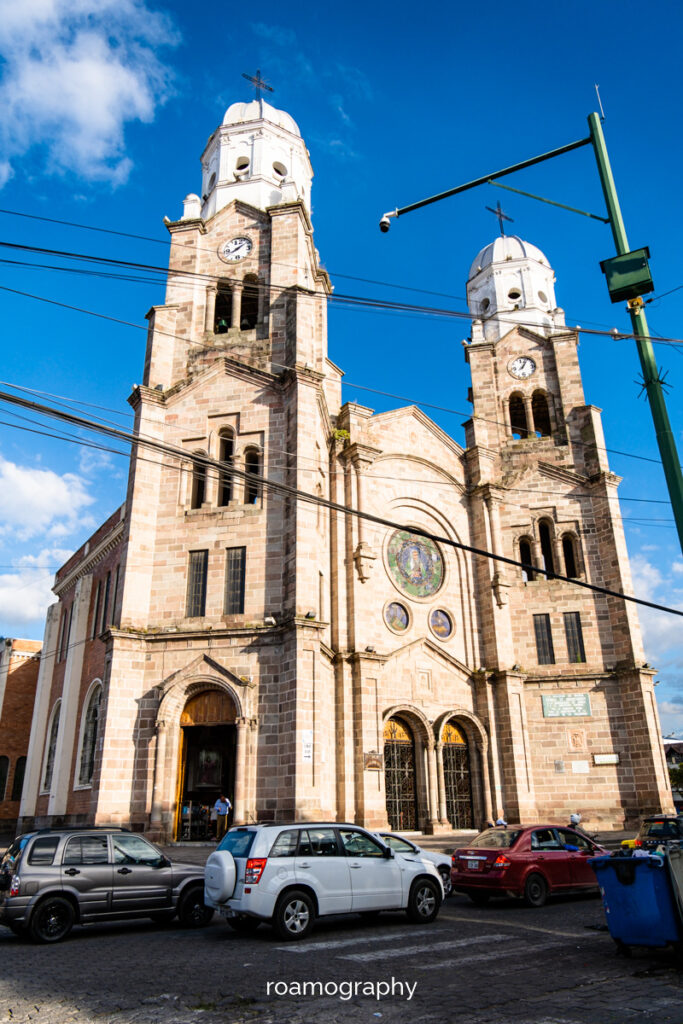
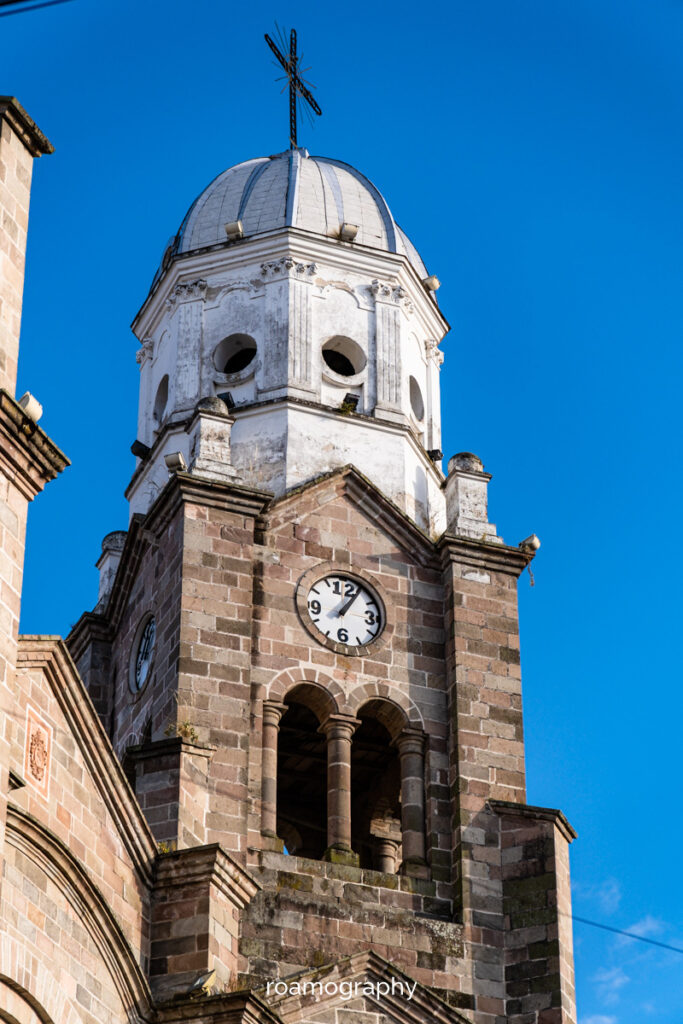
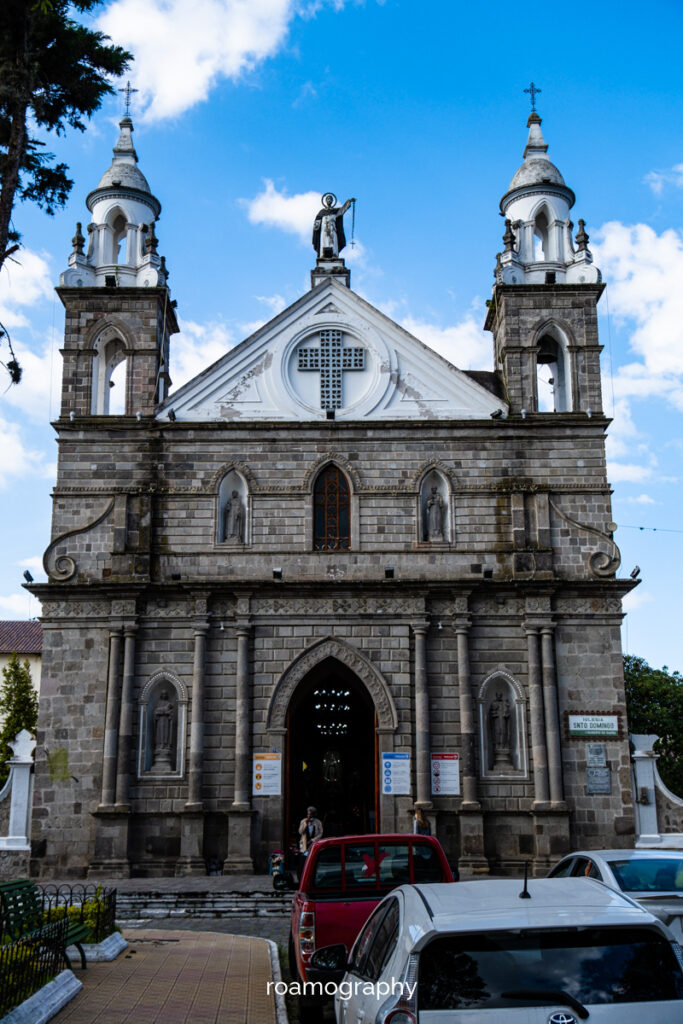
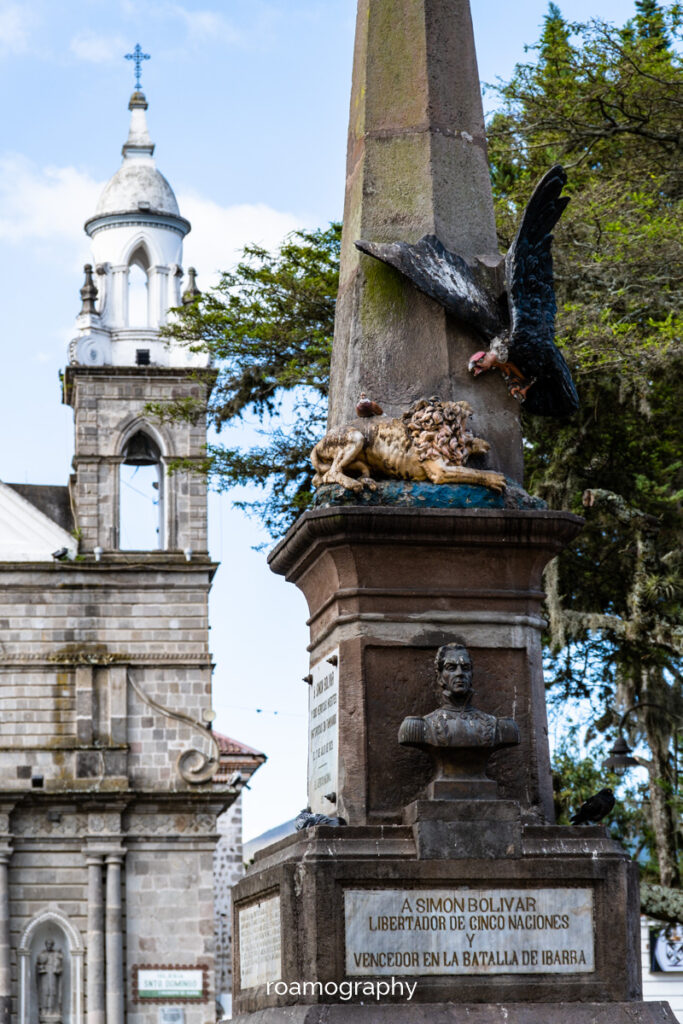
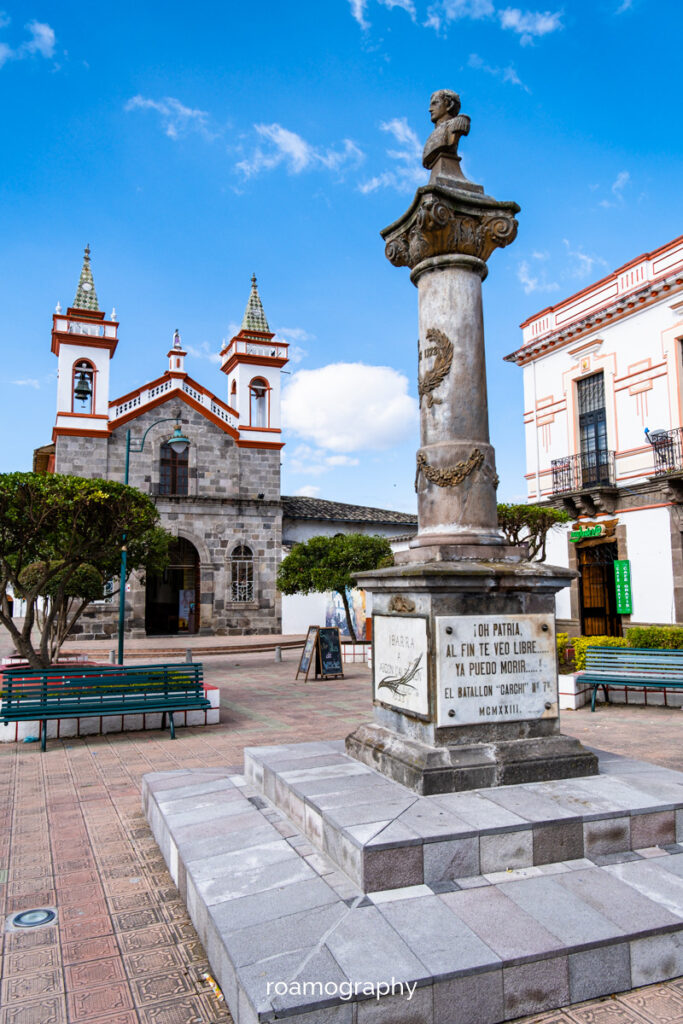

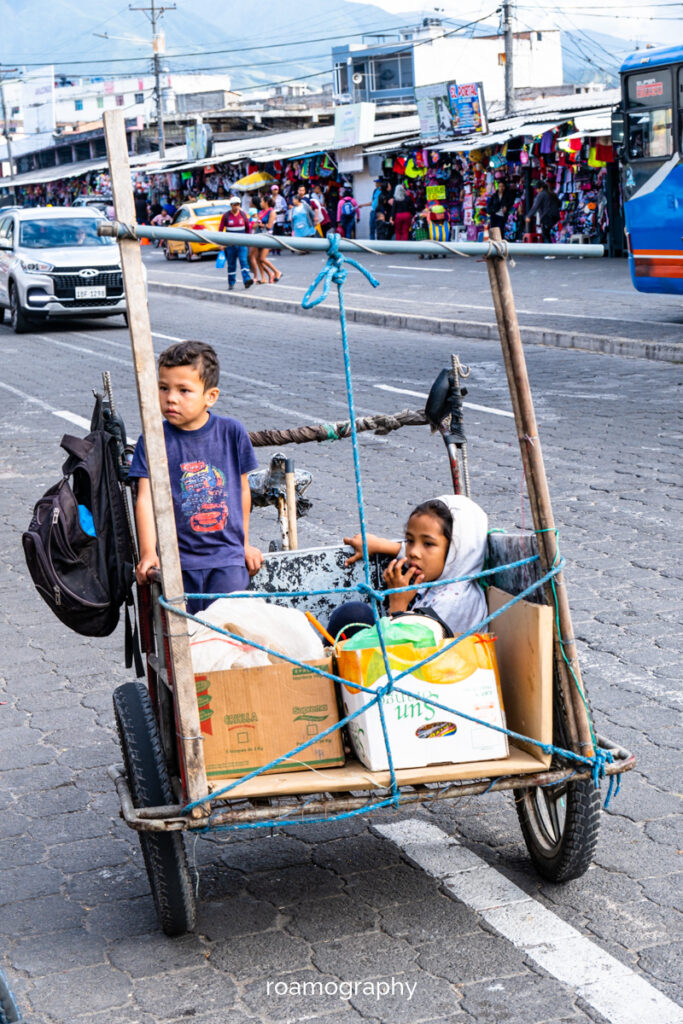
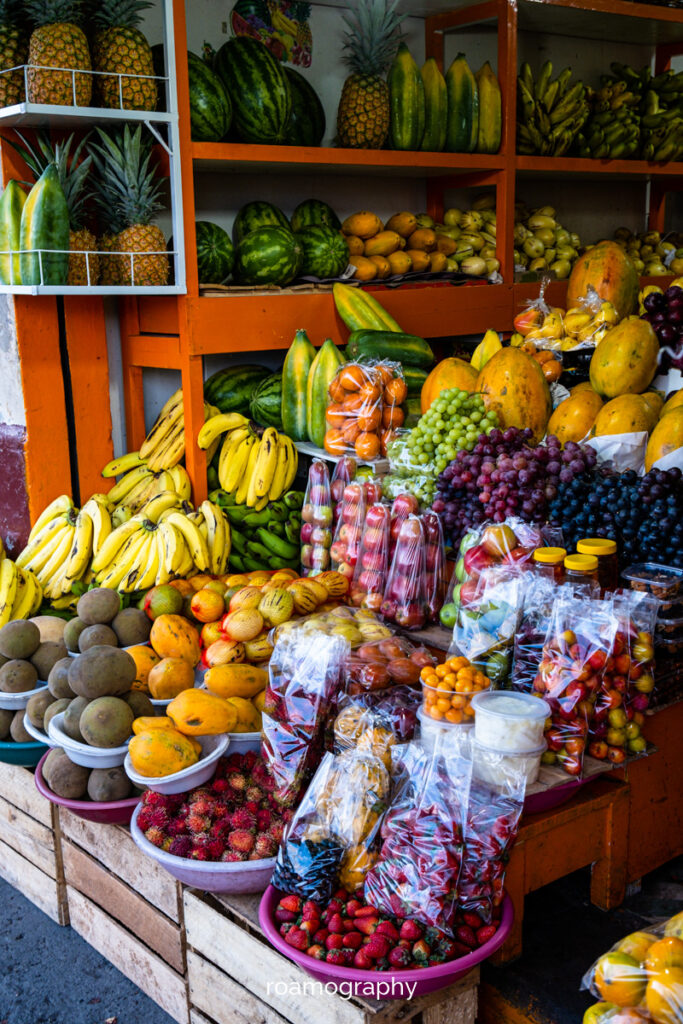

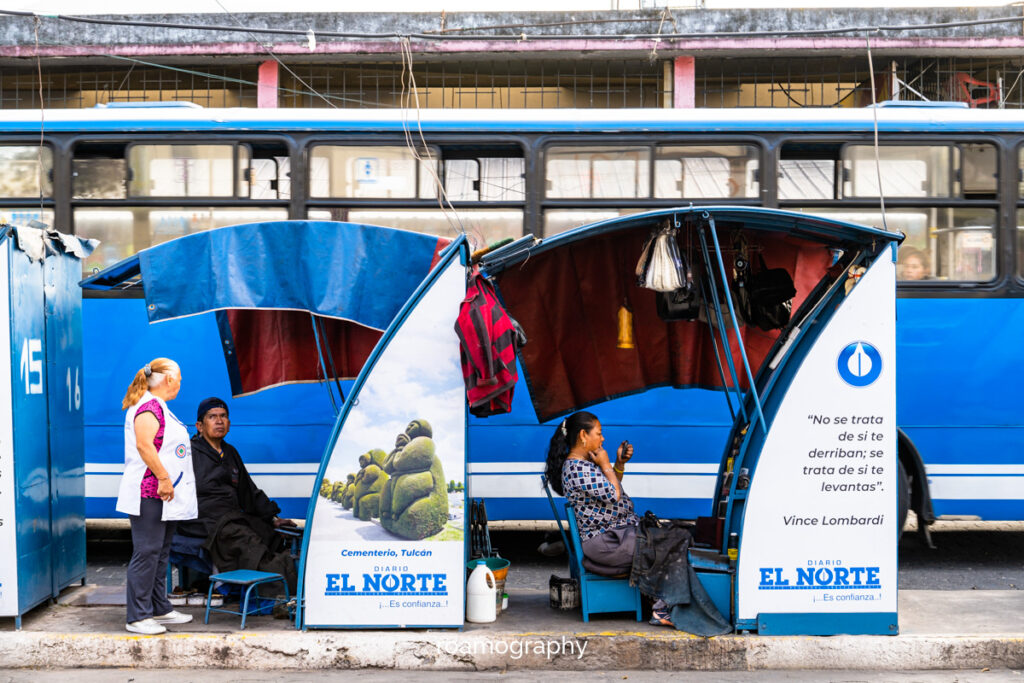
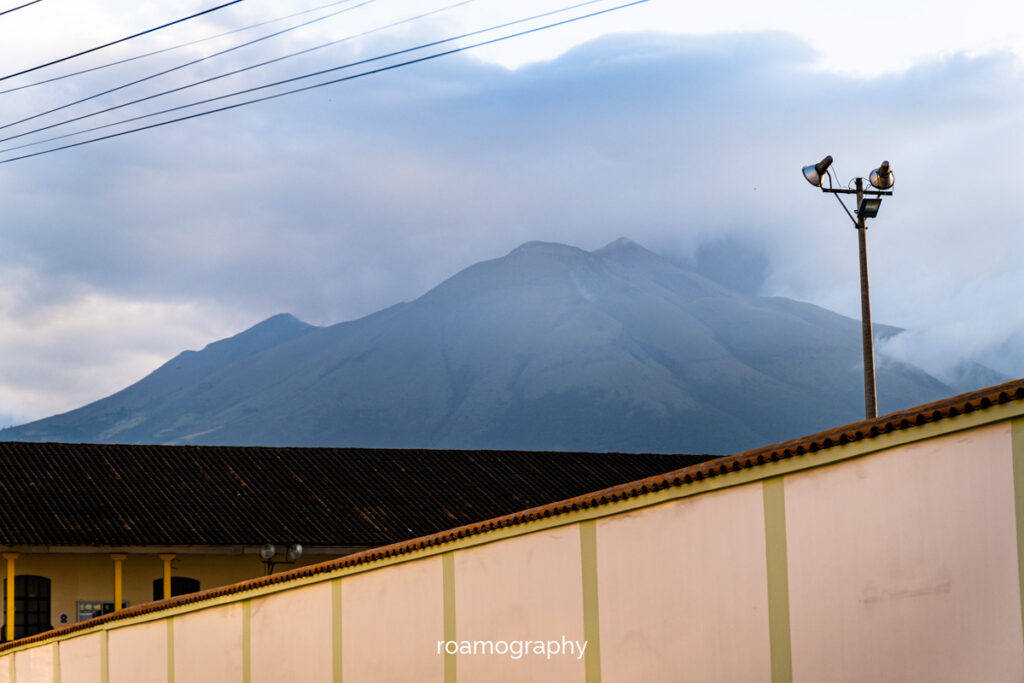
Ibarra
Time for another country! We begin our exploration of Ecuador in Ibarra, a not unsightly but also not overly colourful city, where you can make the rounds of the churches (check out the 45-degree angled towers of the Basilica of La Dolorosa), this is also where you can be accidentally invited into the historic colonial building of the Pedro Moncayo Foundation and learn about the life history of this writer and politician).
Ibarra is also home to a railway station (connecting to Salinas), a rather sad testament to the region’s glorious railway past. In fact, throughout Latin America, this branch of passenger transport has fallen apart and only operates on short routes, being an old-style tourist attraction (for which you have to pay a lot) rather than a competitive method of transport.
In this town, according to the internets, you should get a taste of some Ecuadorian Andeanness. Indeed, there are quite a few Kichwa women here wearing beautiful traditional costumes and the main square is blooming with stalls selling folkloric wares from ponchos to slippers. Juxtaposed to this are the chaotic buildings of the centre, dwarfed by thick blocky shapes of new concrete buildings. We try not to be discouraged and continue looking for the beauty of Otavalo. Maybe it’s hidden in the markets that take over several central streets every week? Or perhaps in the churches, filled with elegantly dressed senior citizens? There is some of it to be found in the cemetery, where music is played, feasts are held and travellers are invited to share in the consumption, and we also find it in the sounds of a street wedding ceremony where aguardiente is drunk straight from a bamboo pole and the bride and groom are presented with mattresses and furniture unloaded from the back of a pick-up truck. We also find some of this beauty in the surrounding paths leading to the waterfall. The hill of El Lechero is beautiful and mysterious, or rather was, because the tree that symbolised the eternal love of two lovers is no longer there. There is San Pablo Lake (not ugly, but we are not overly impressed either) and Parque Condor, which was supposed to be a centre for rehabilitating wild birds, but is more of an ordinary zoo, with bird training shows and cages (admittedly, usually of considerable size) and no prospect of the birds returning to the wild.

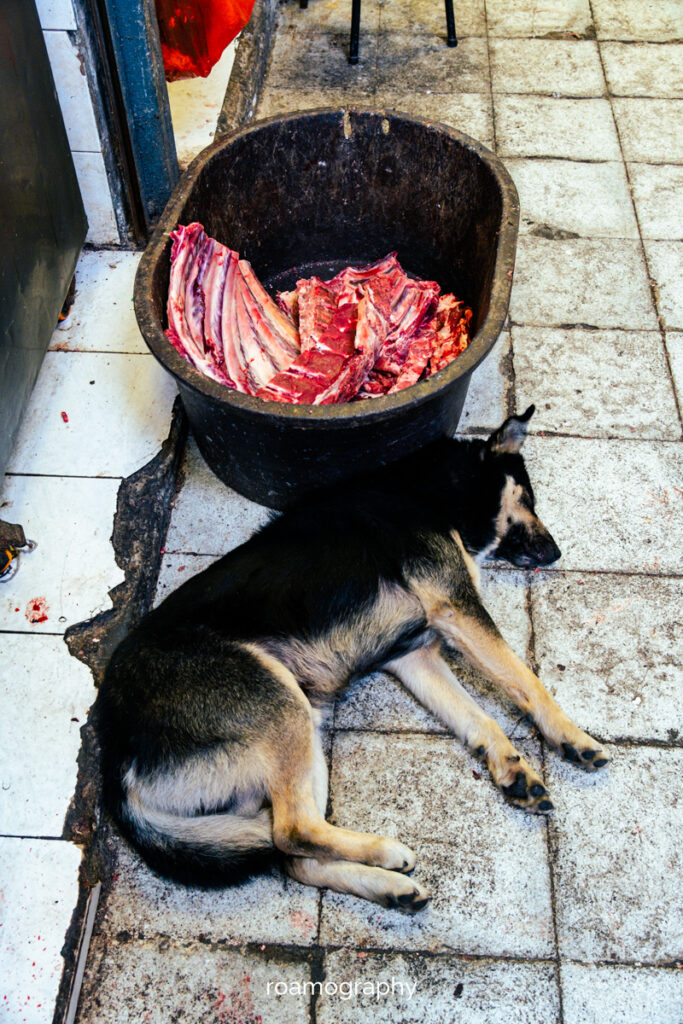
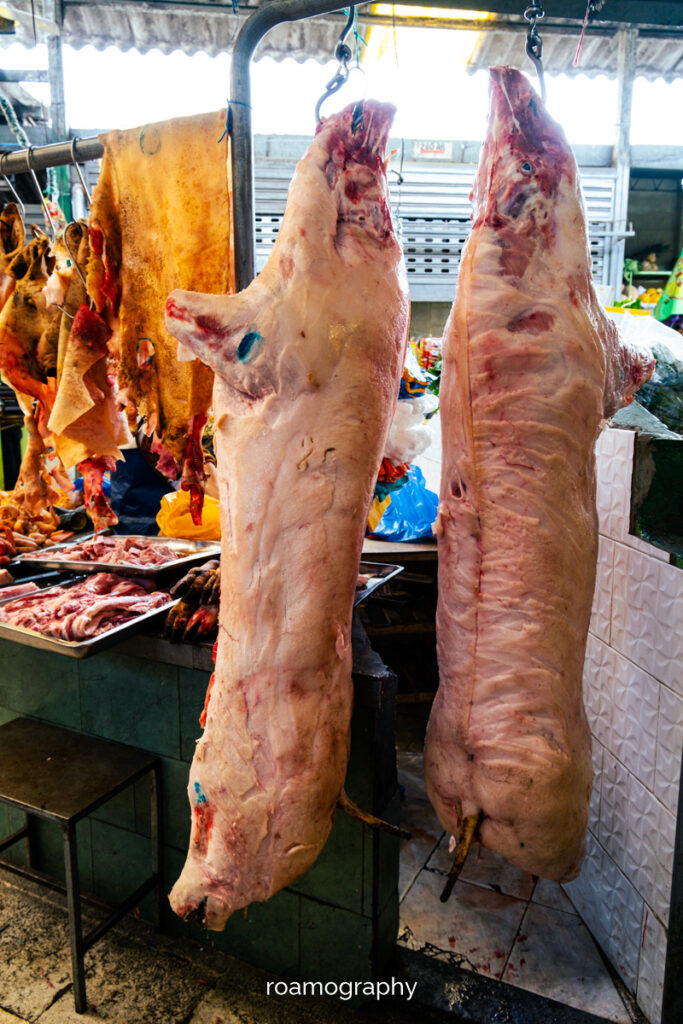
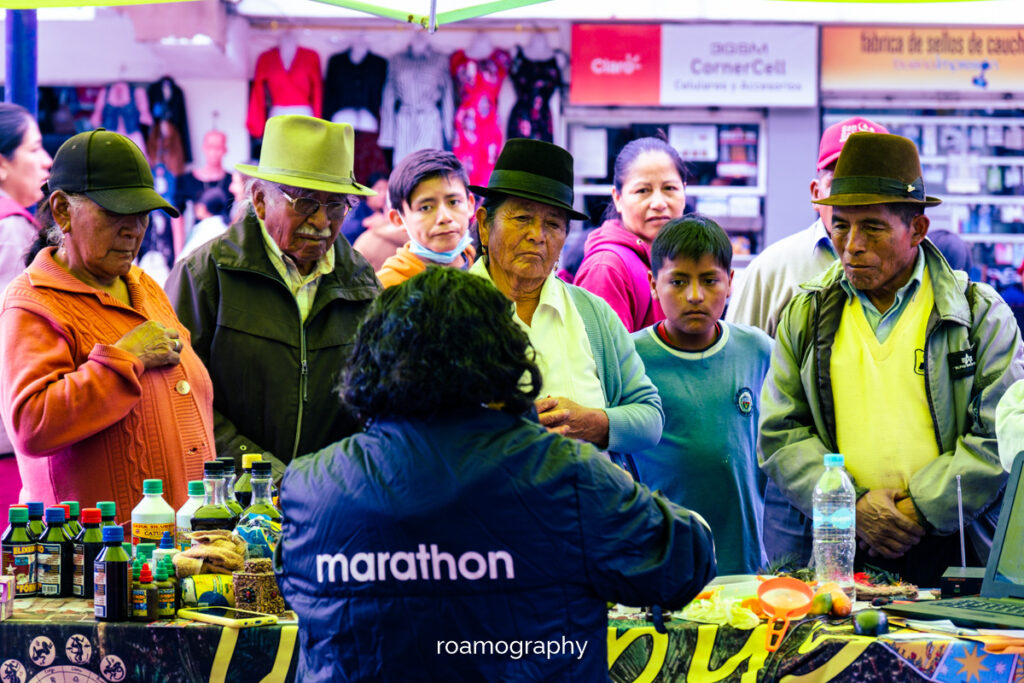
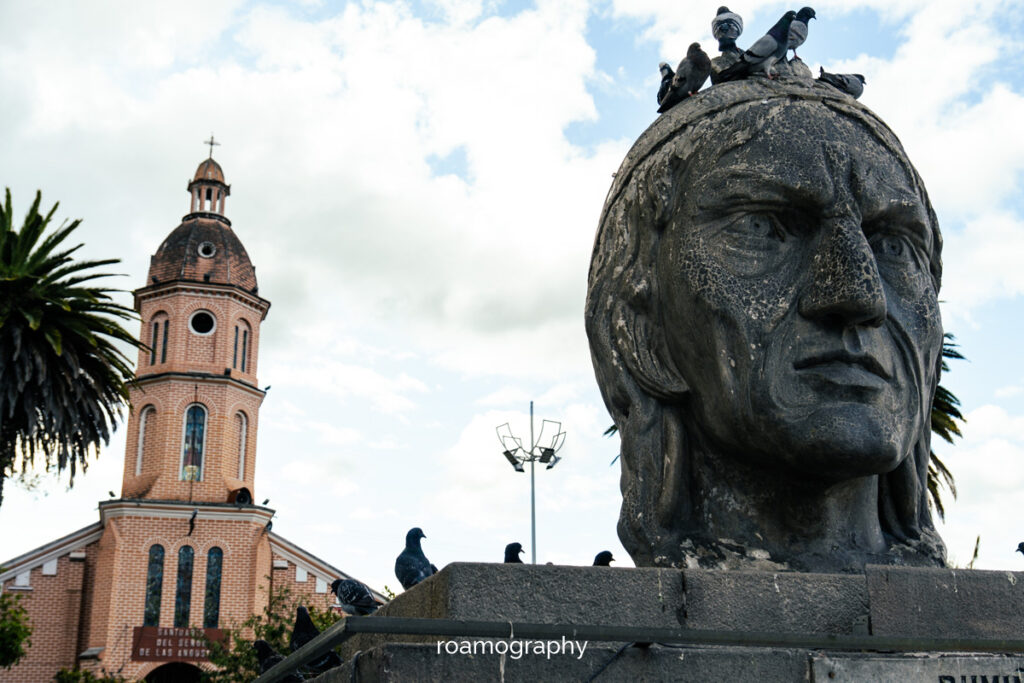
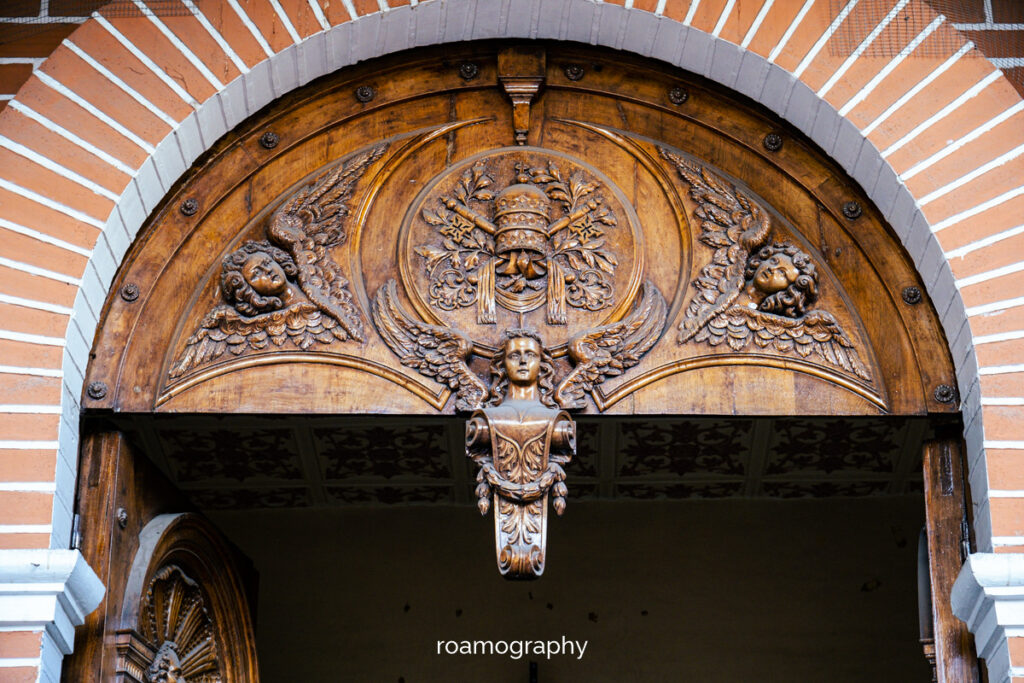
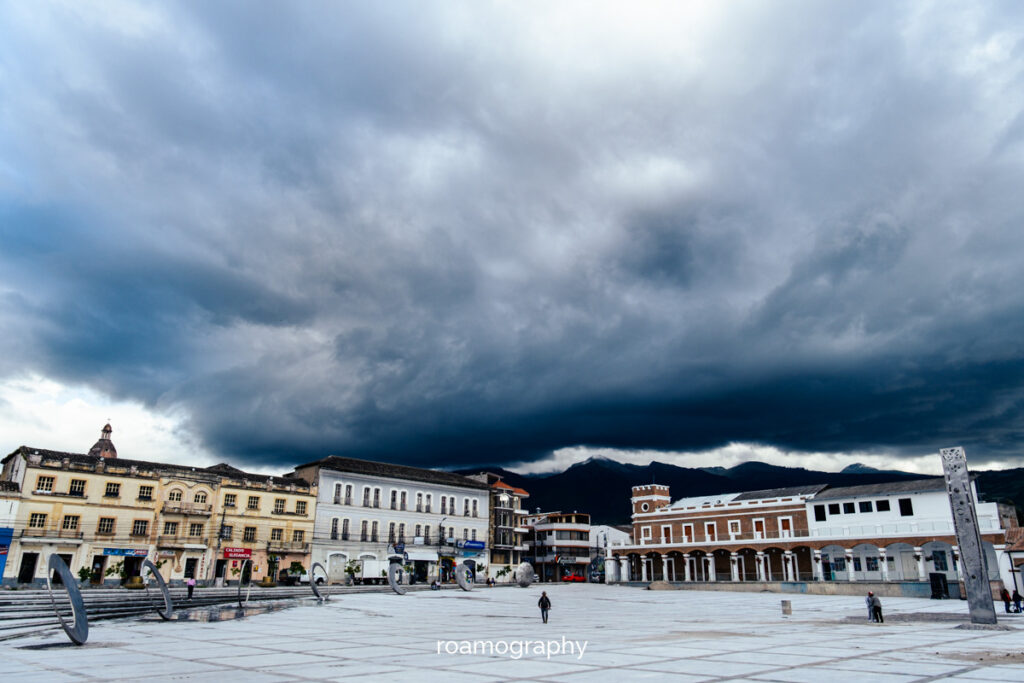
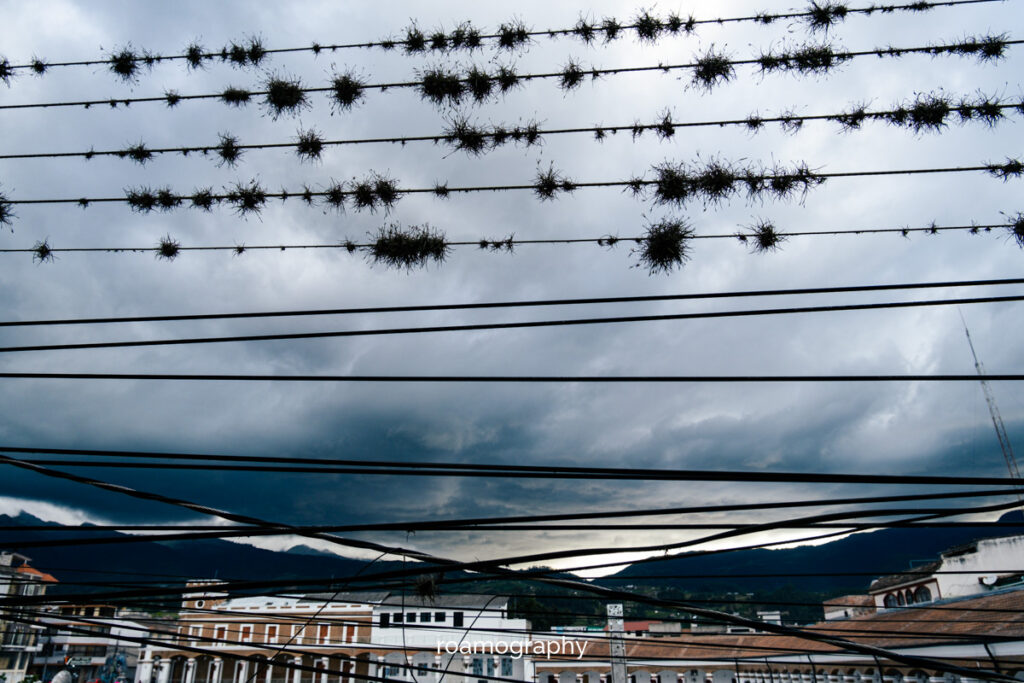
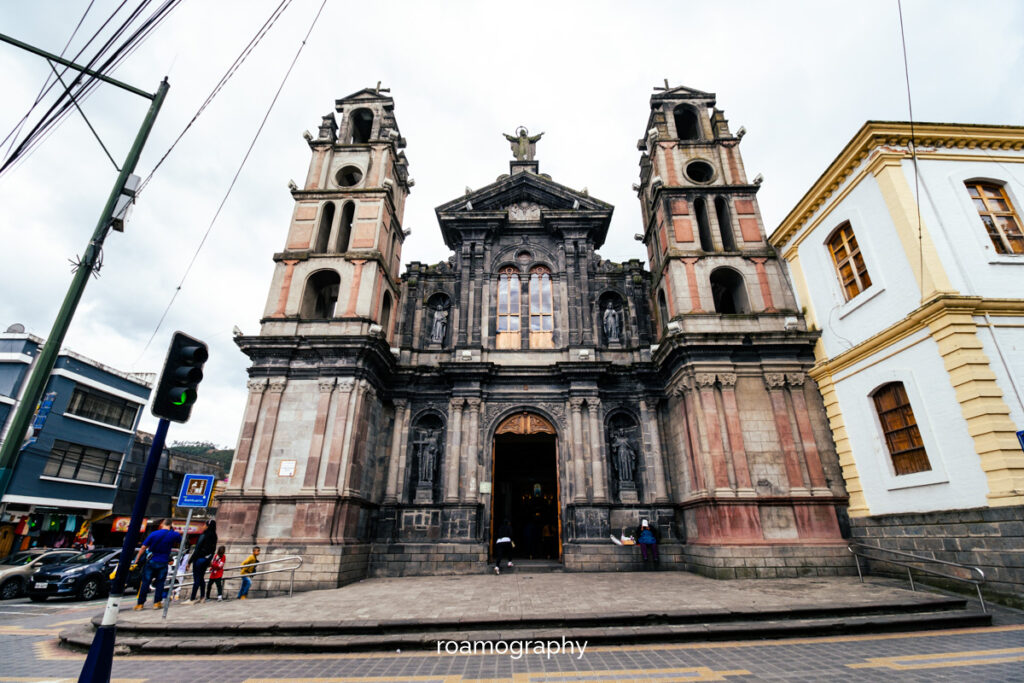
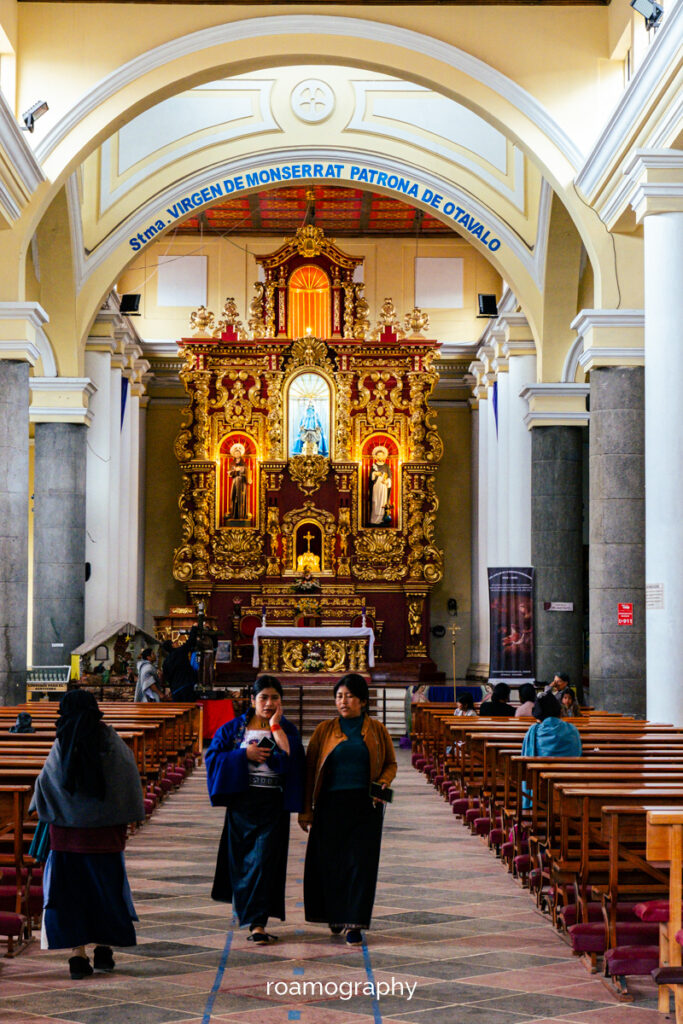
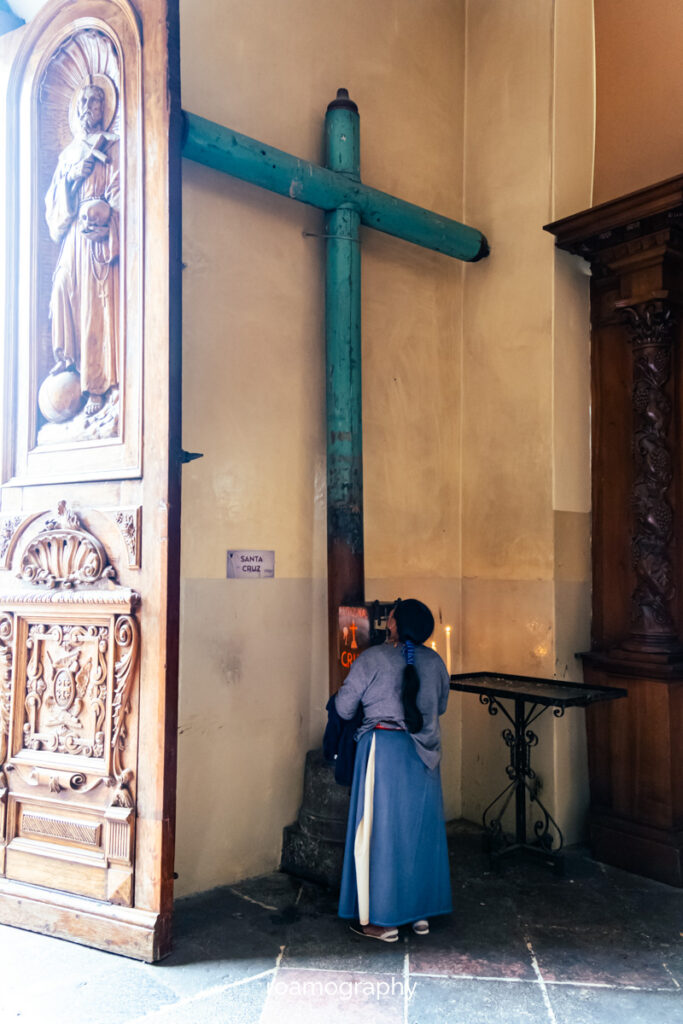
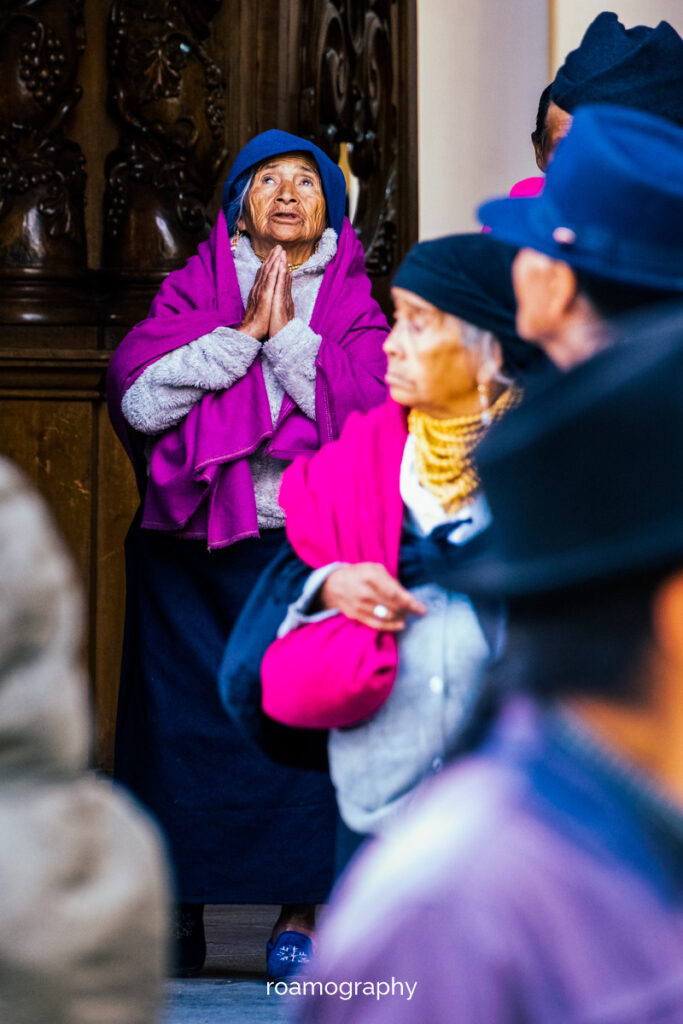

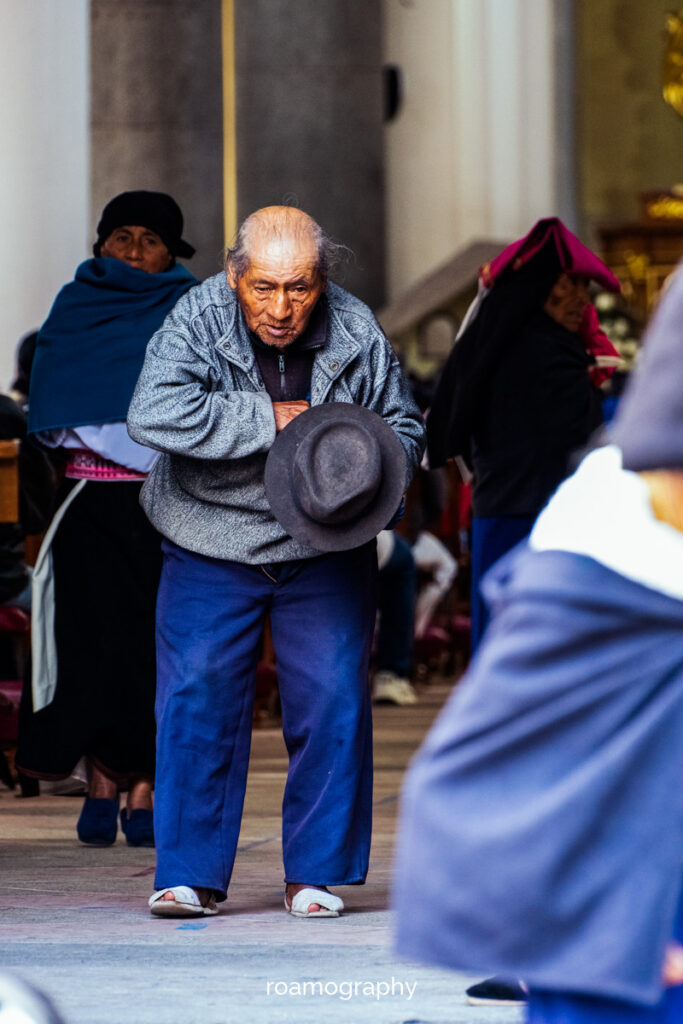
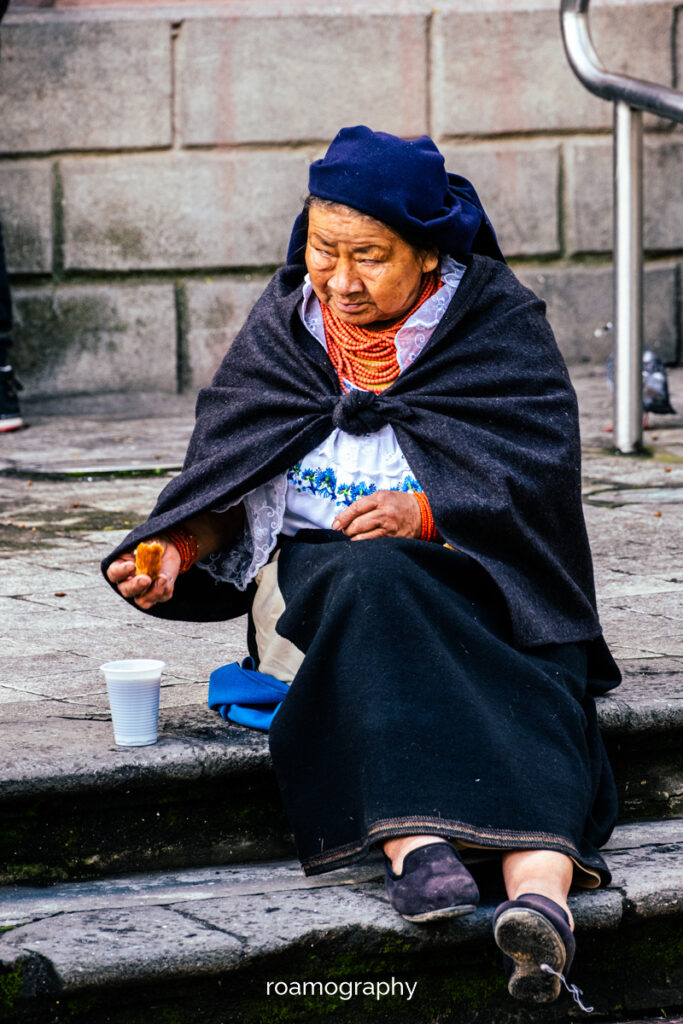
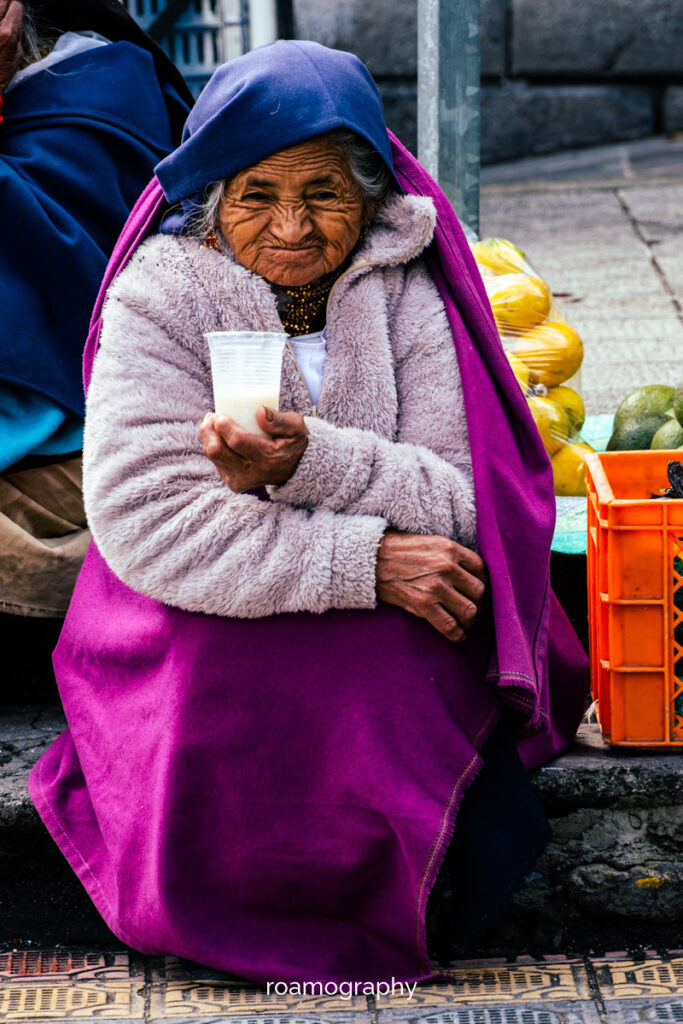
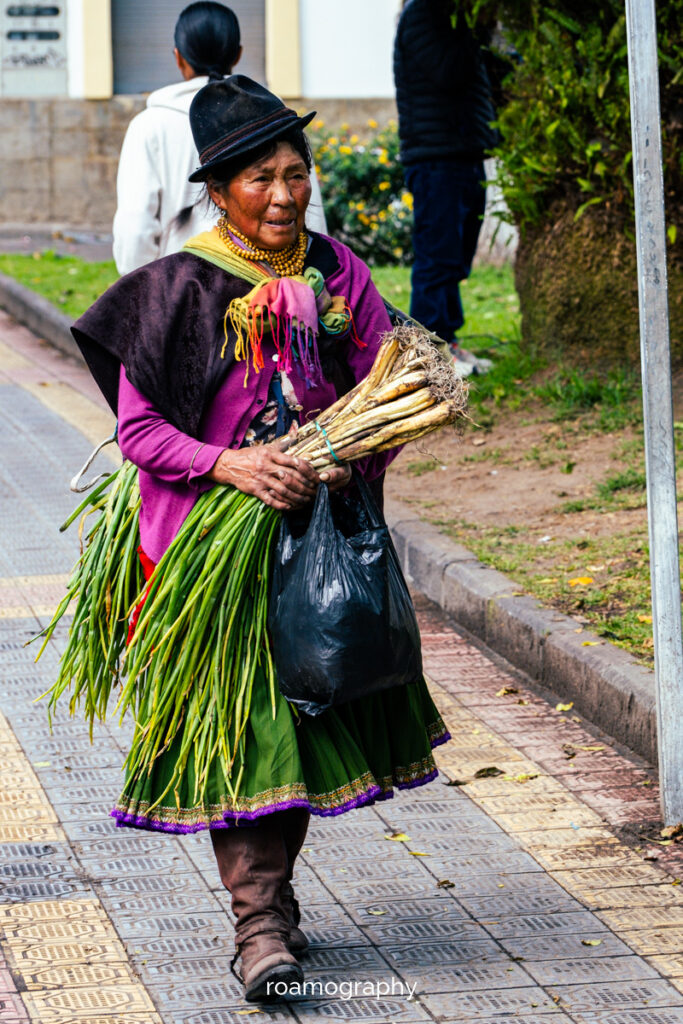
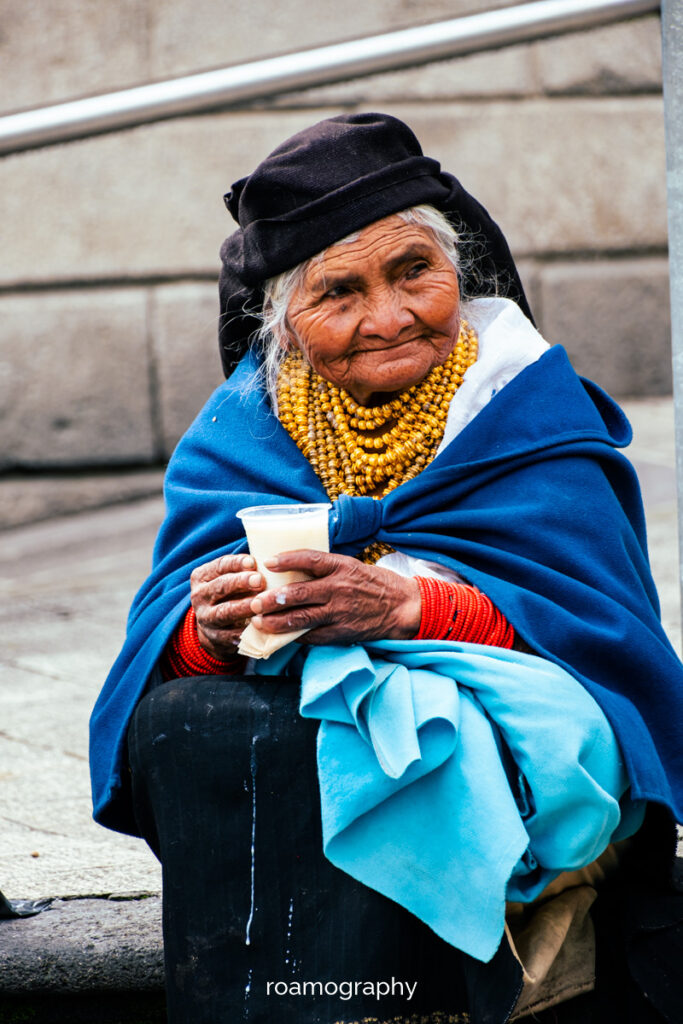
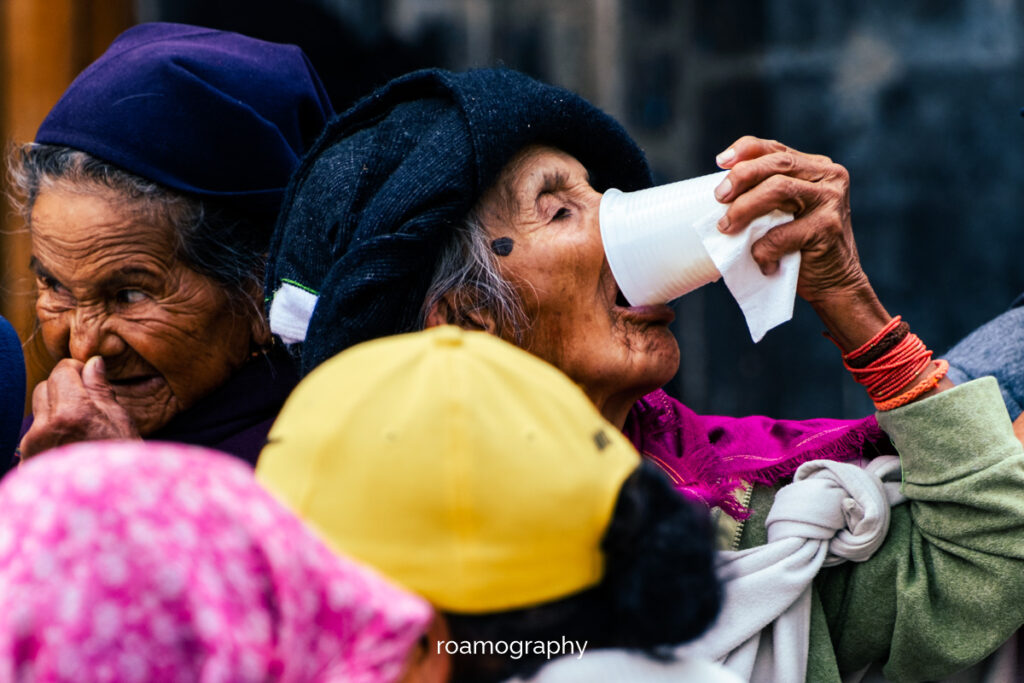
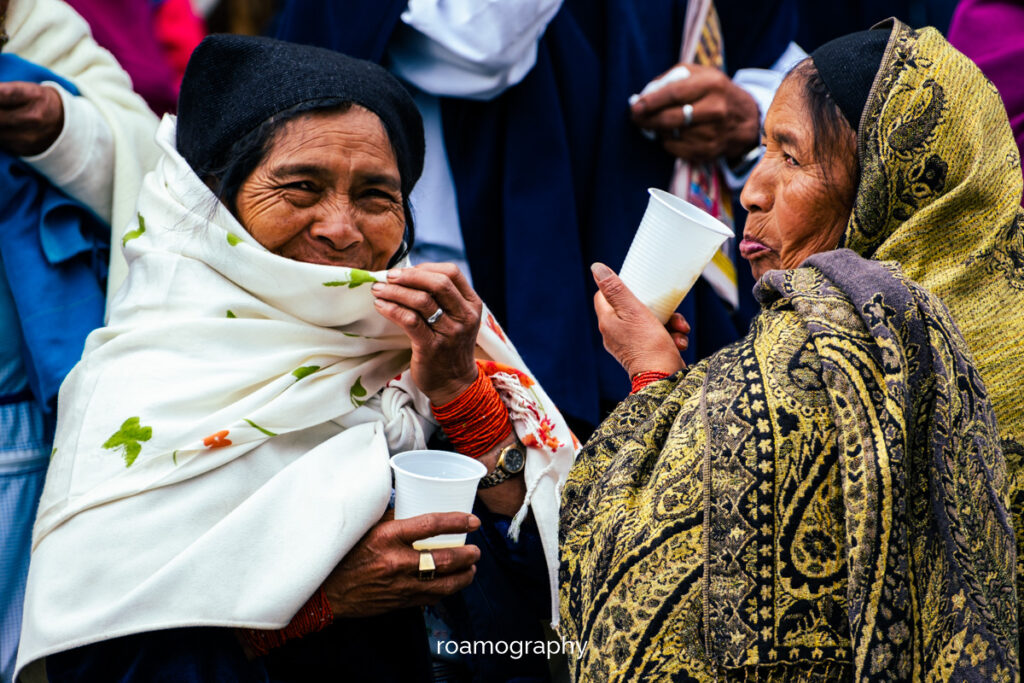
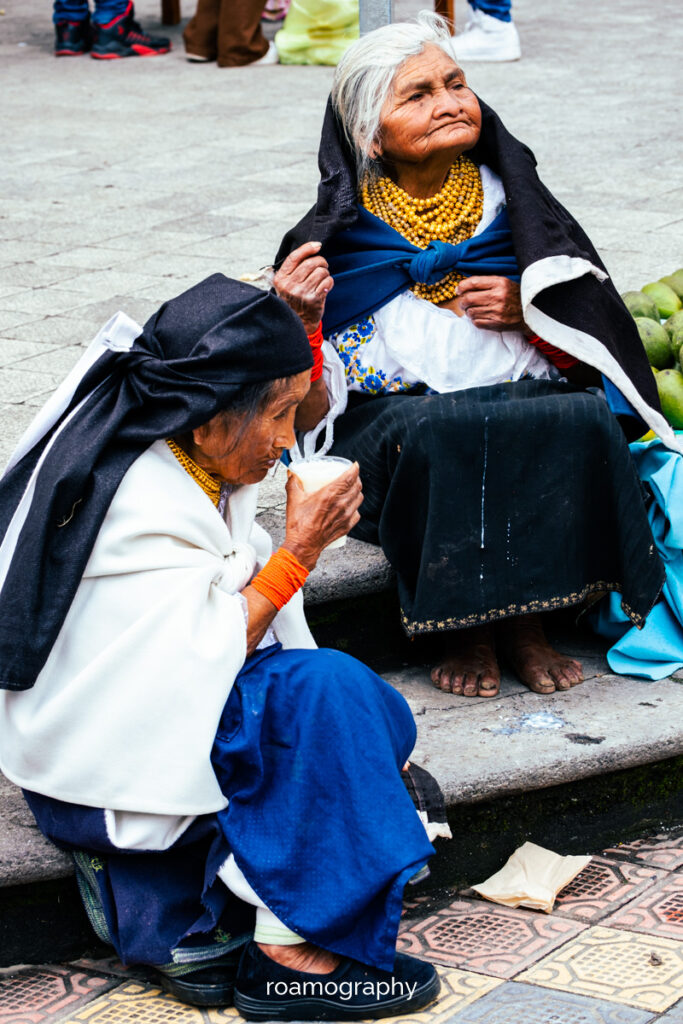



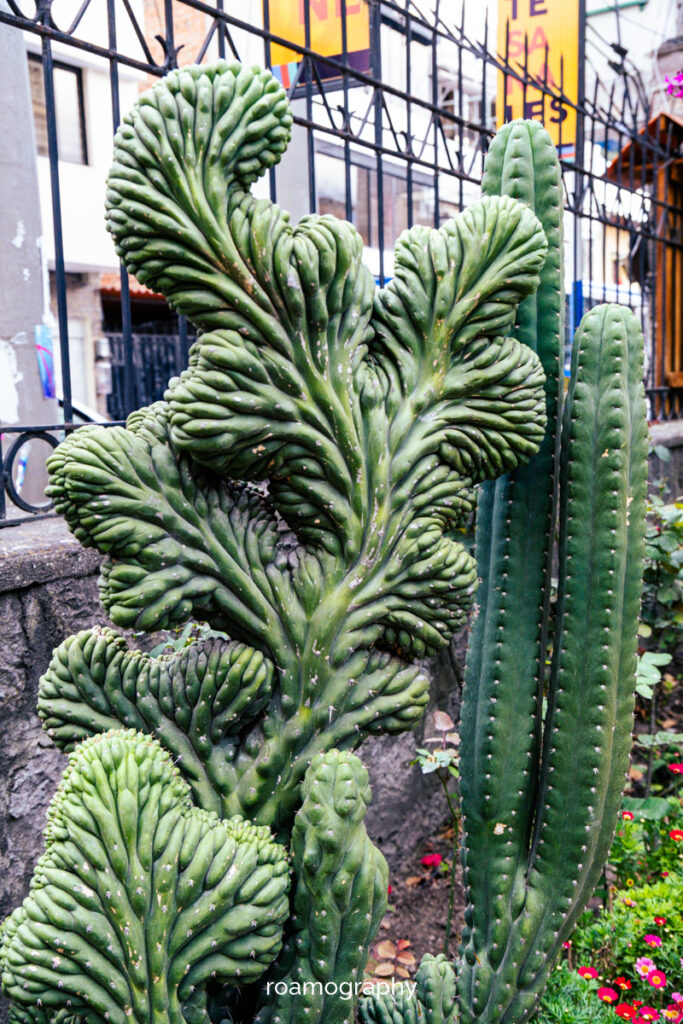
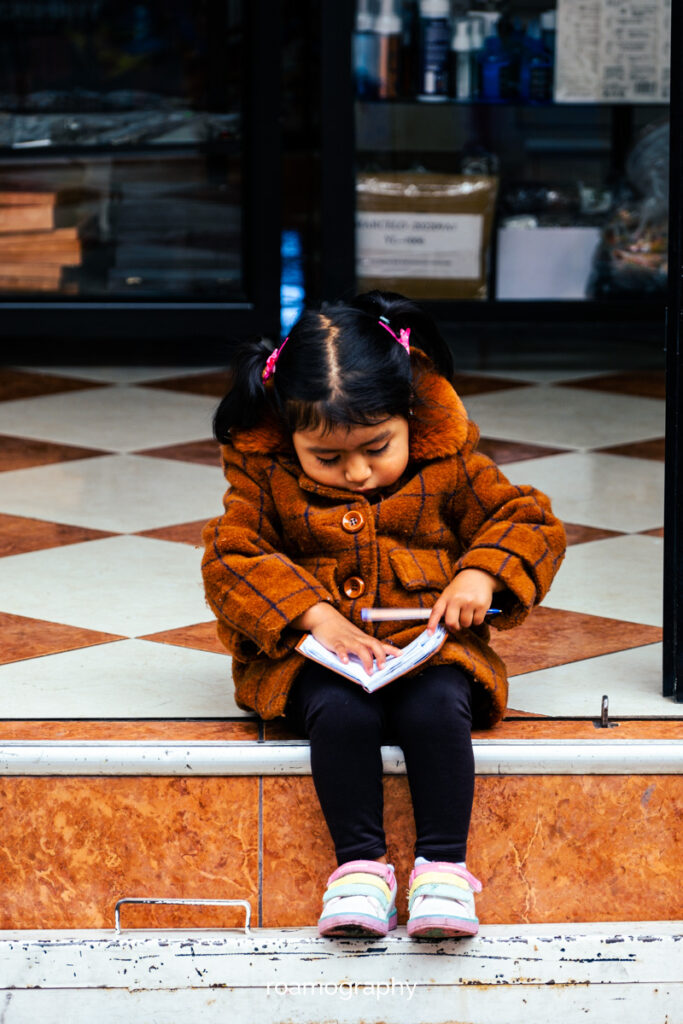
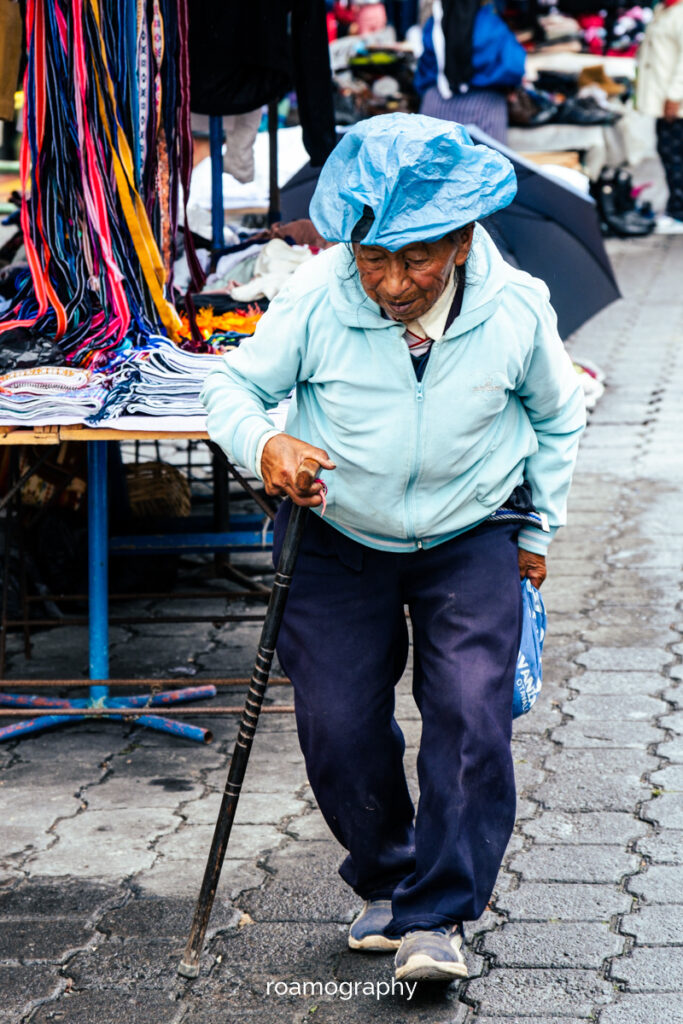
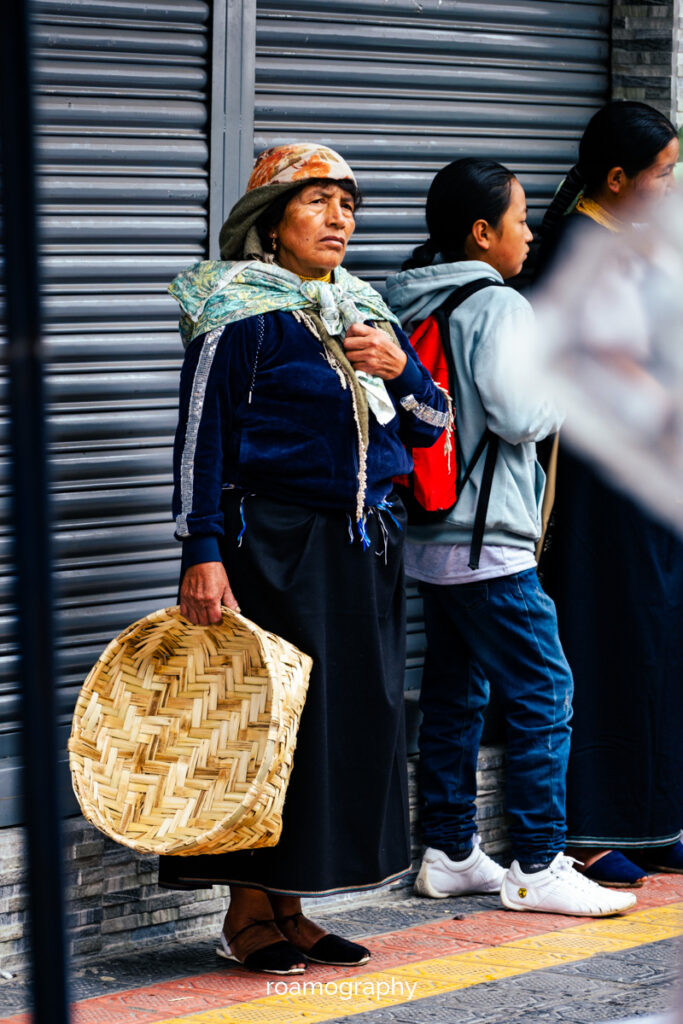
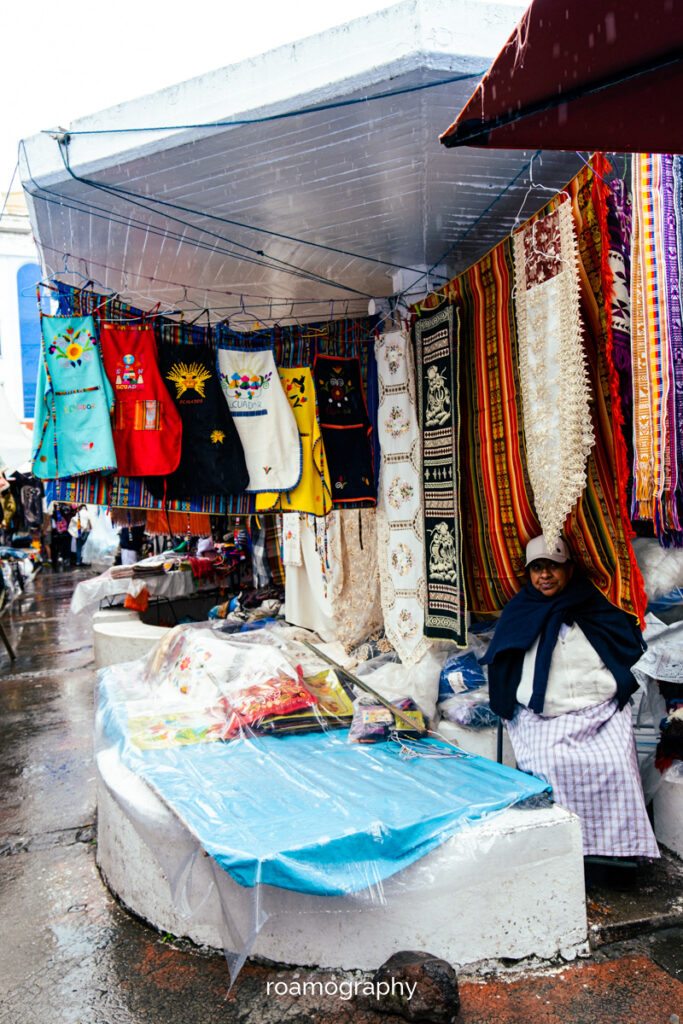
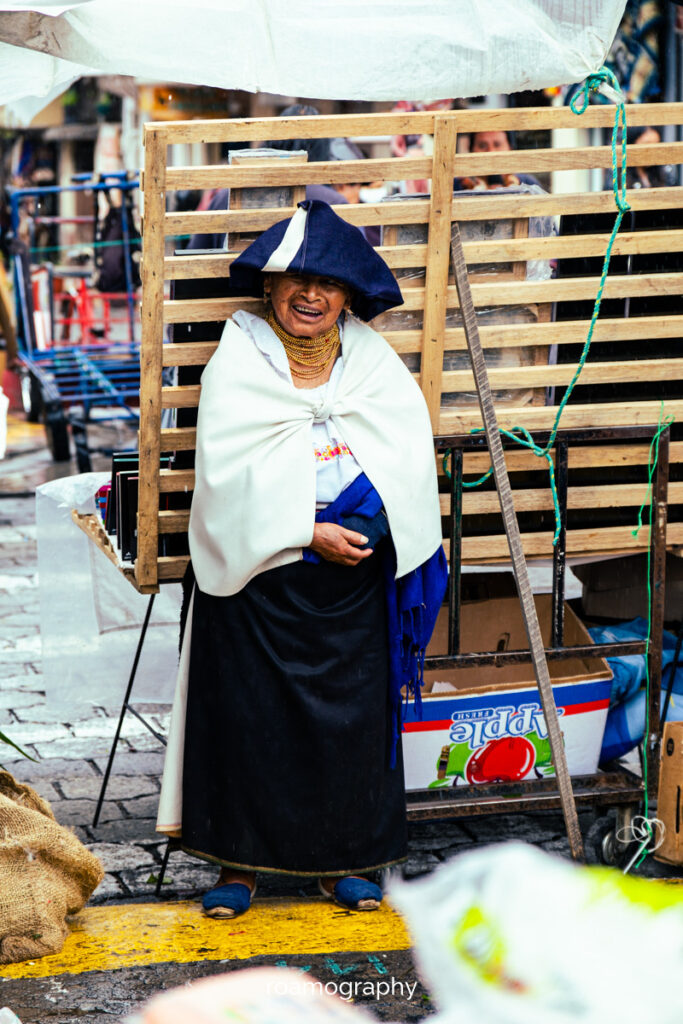
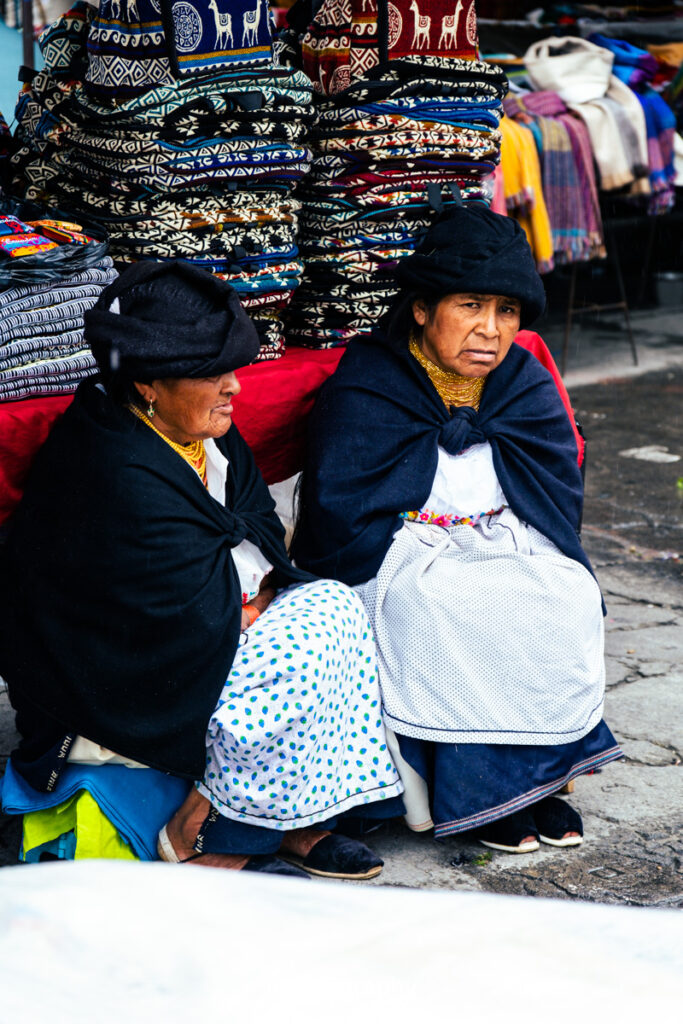
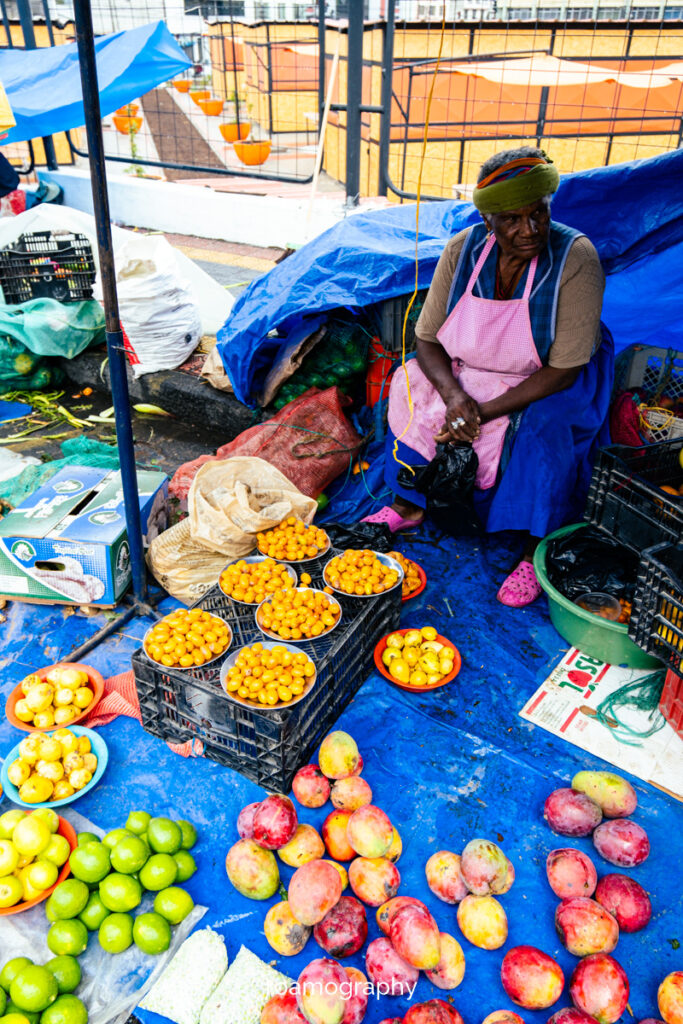
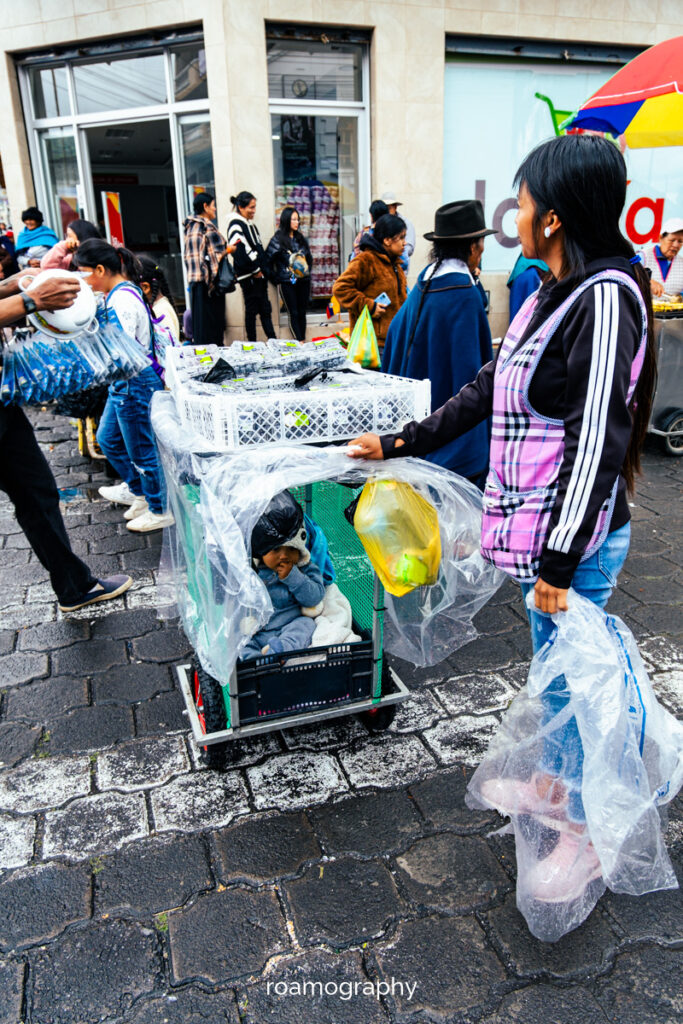
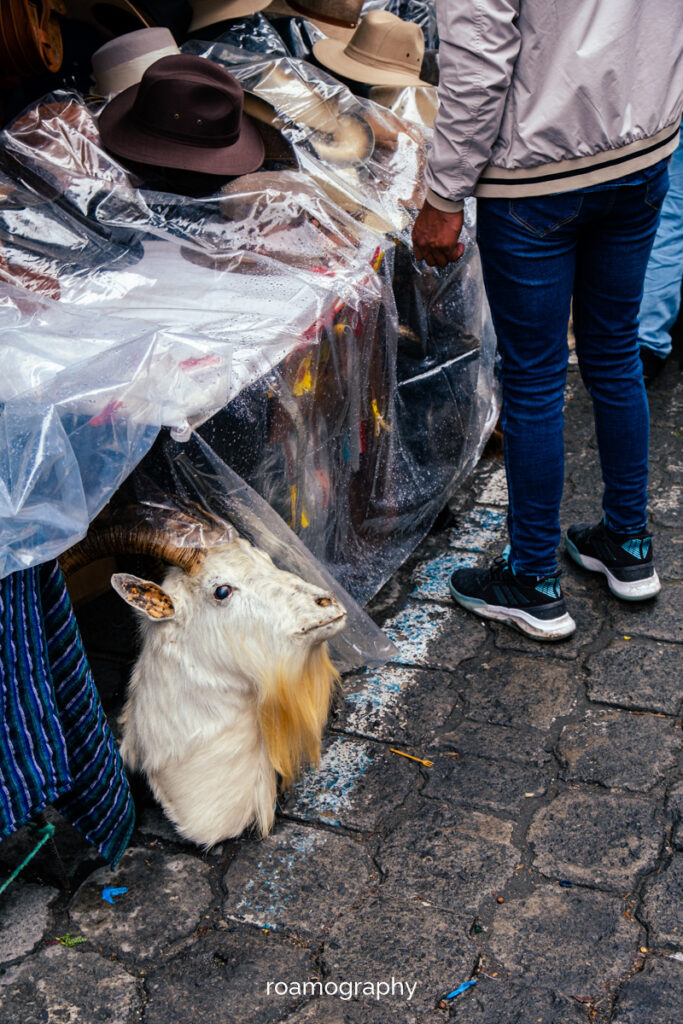
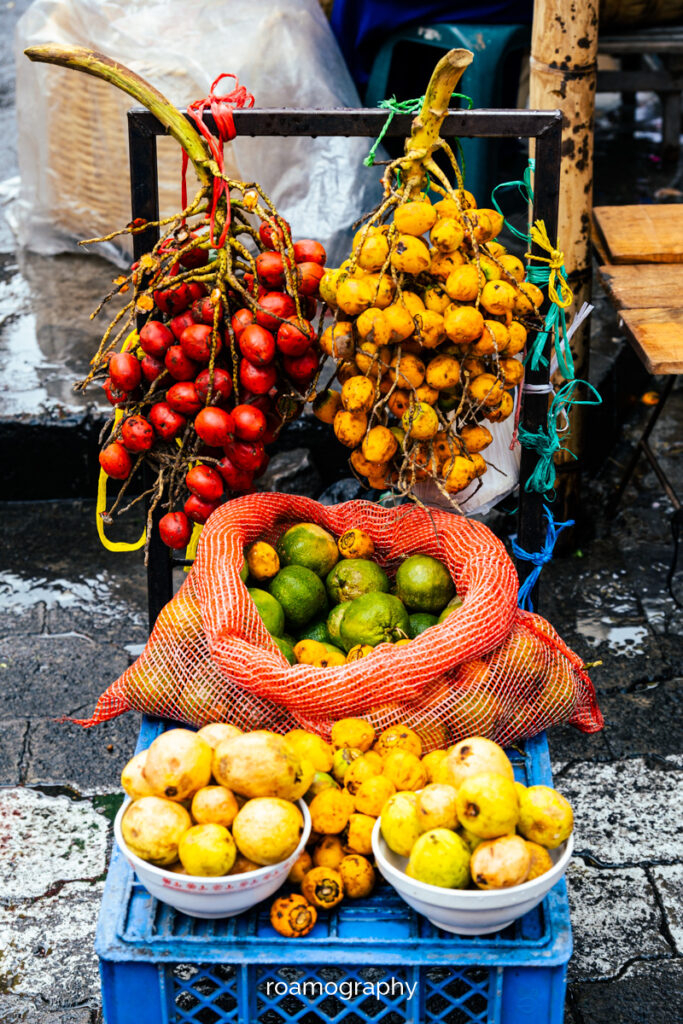
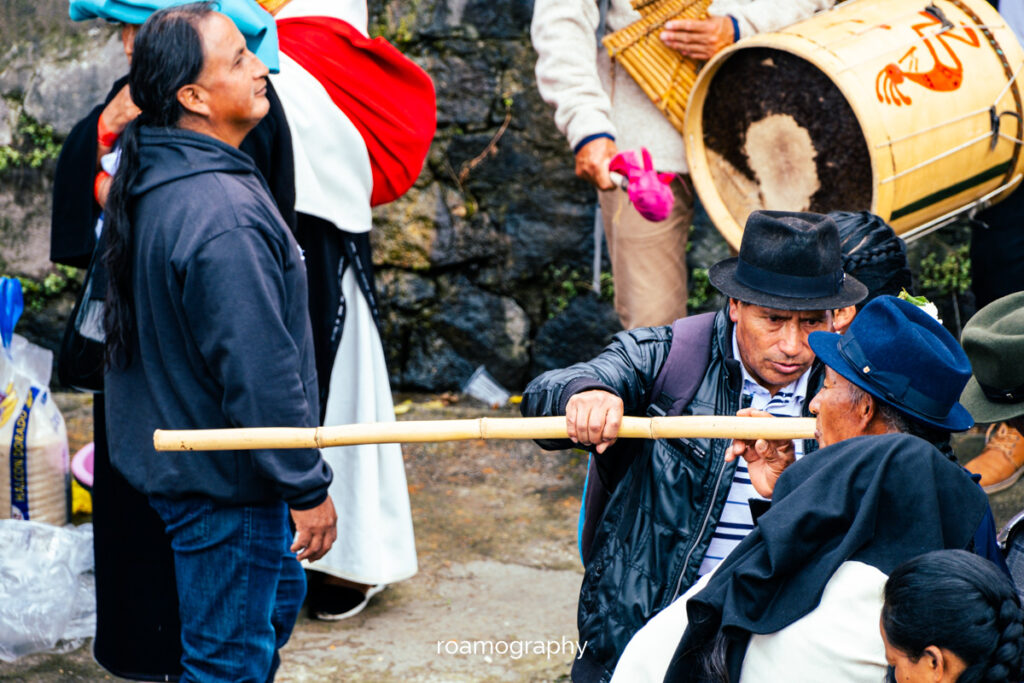
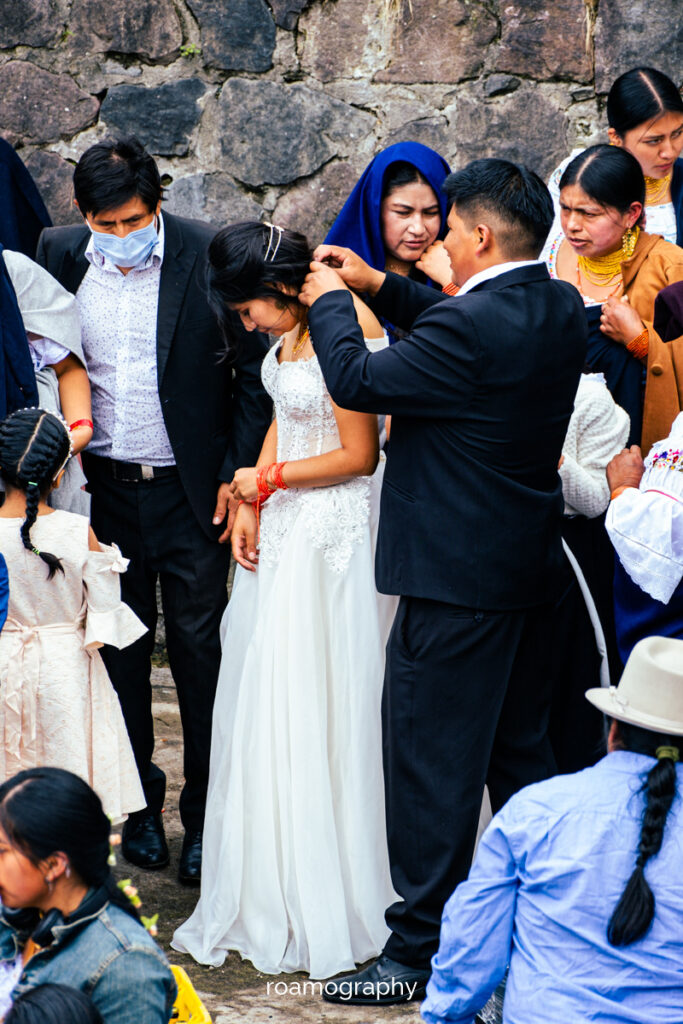
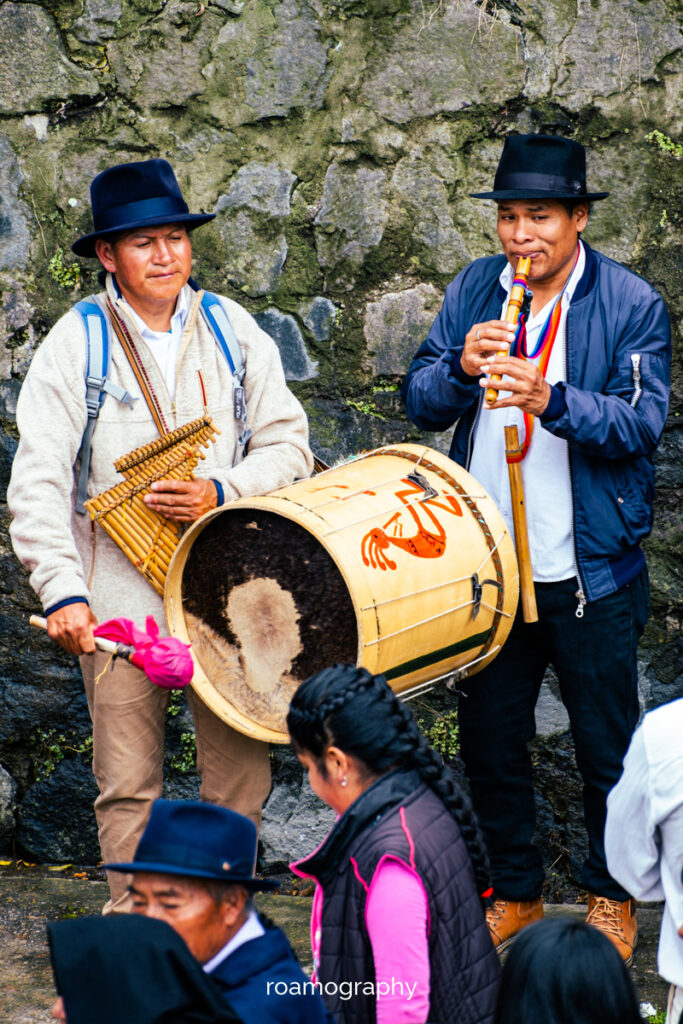

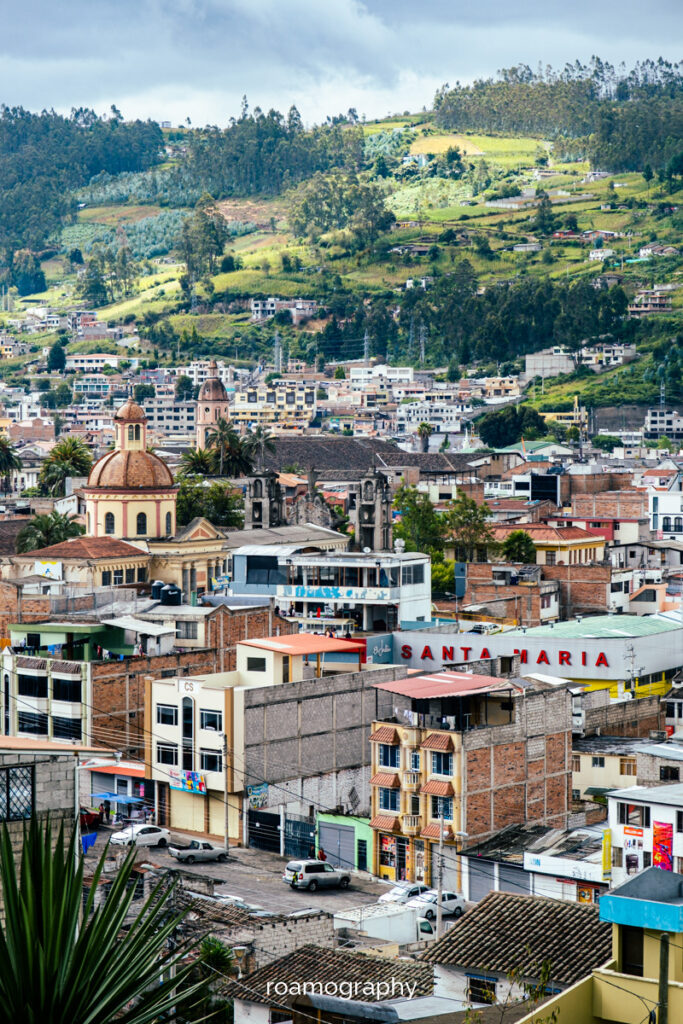
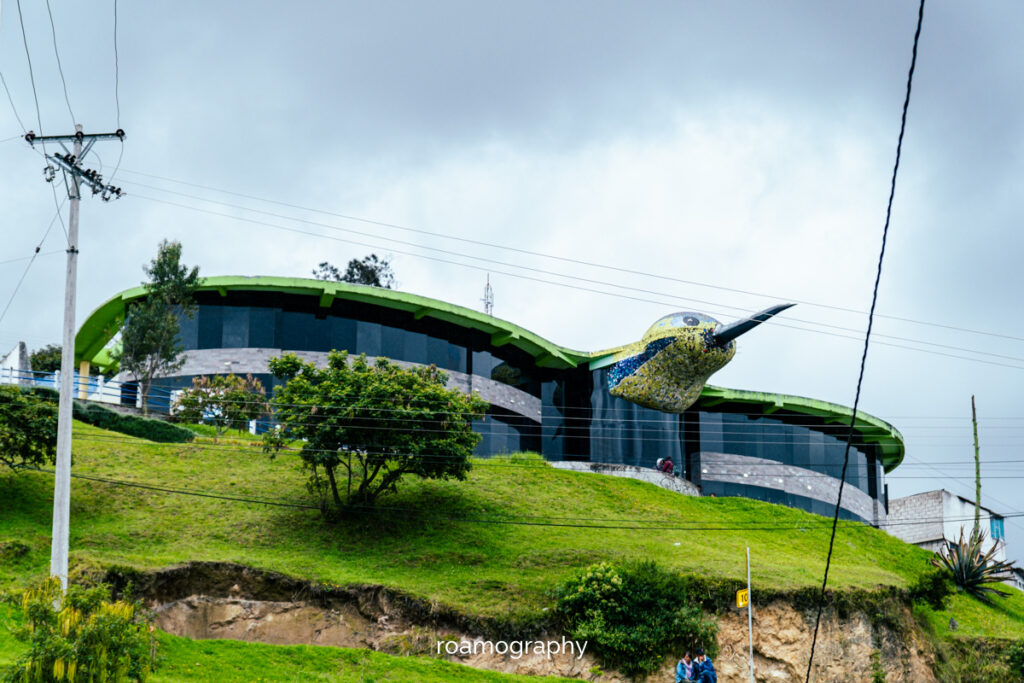
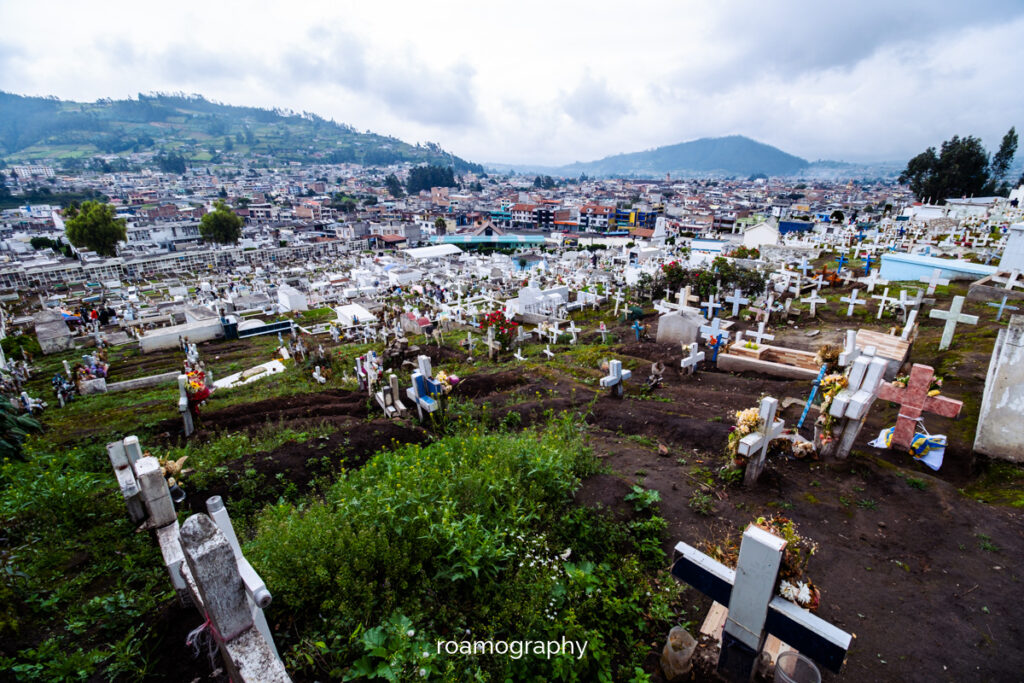
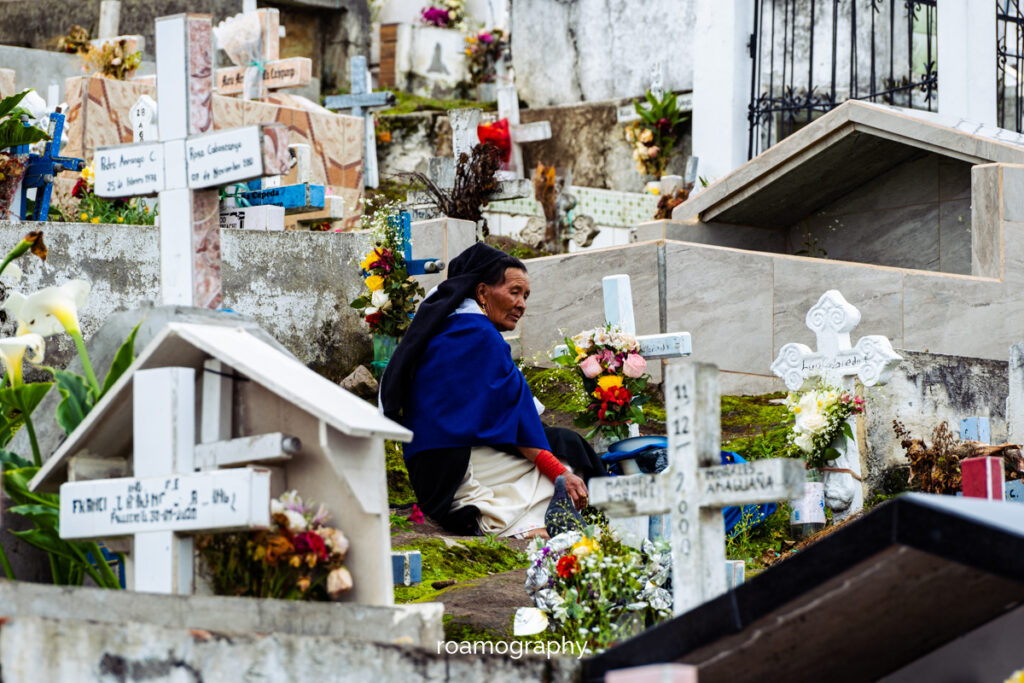

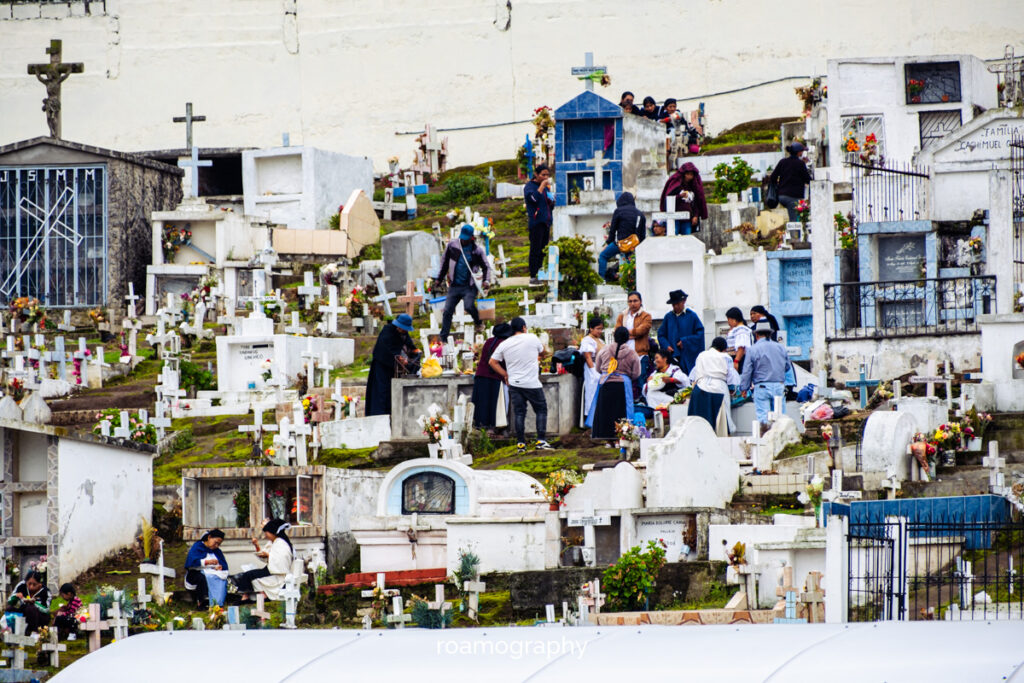
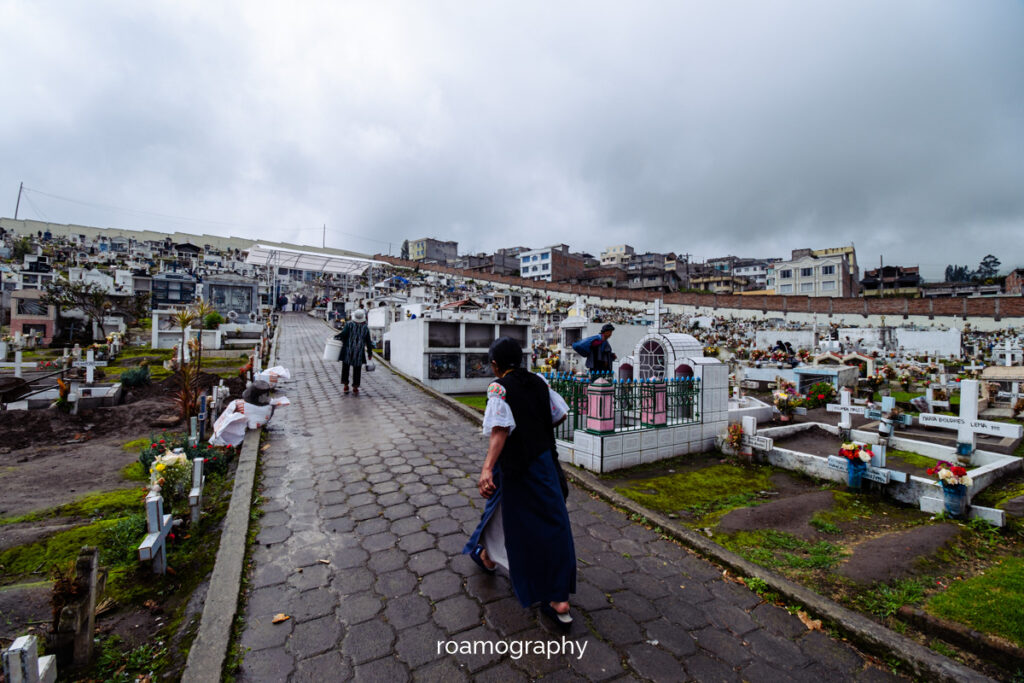
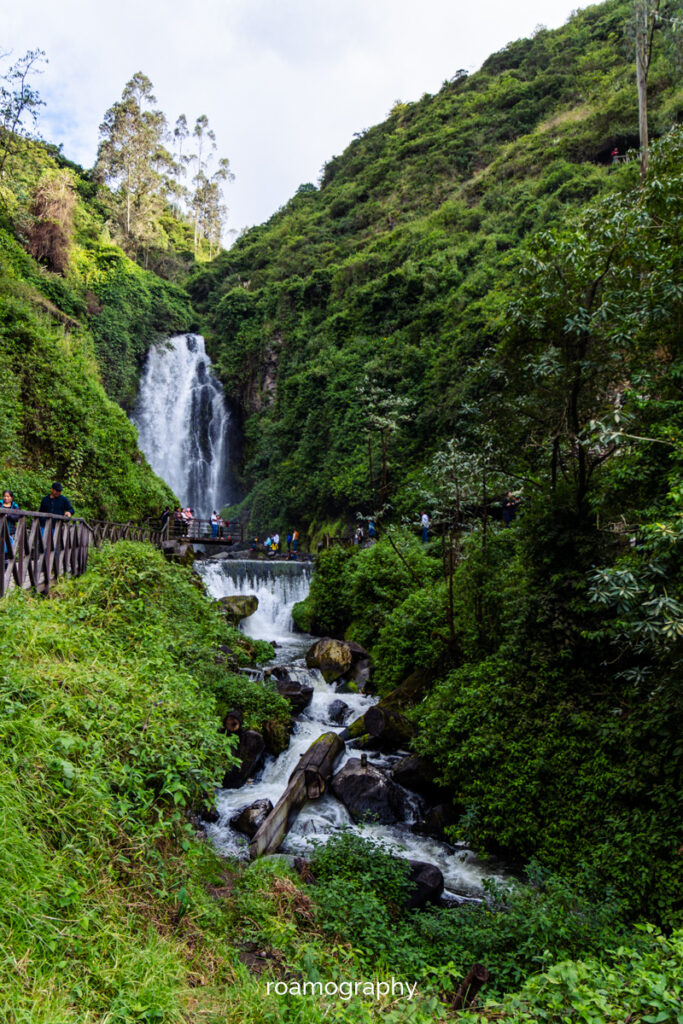
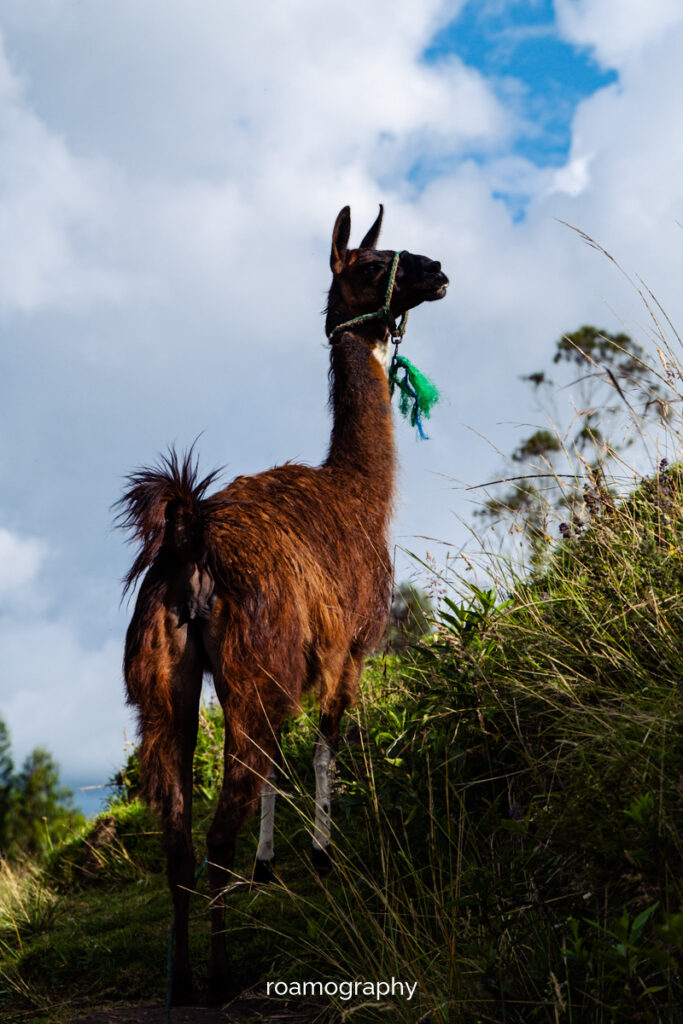
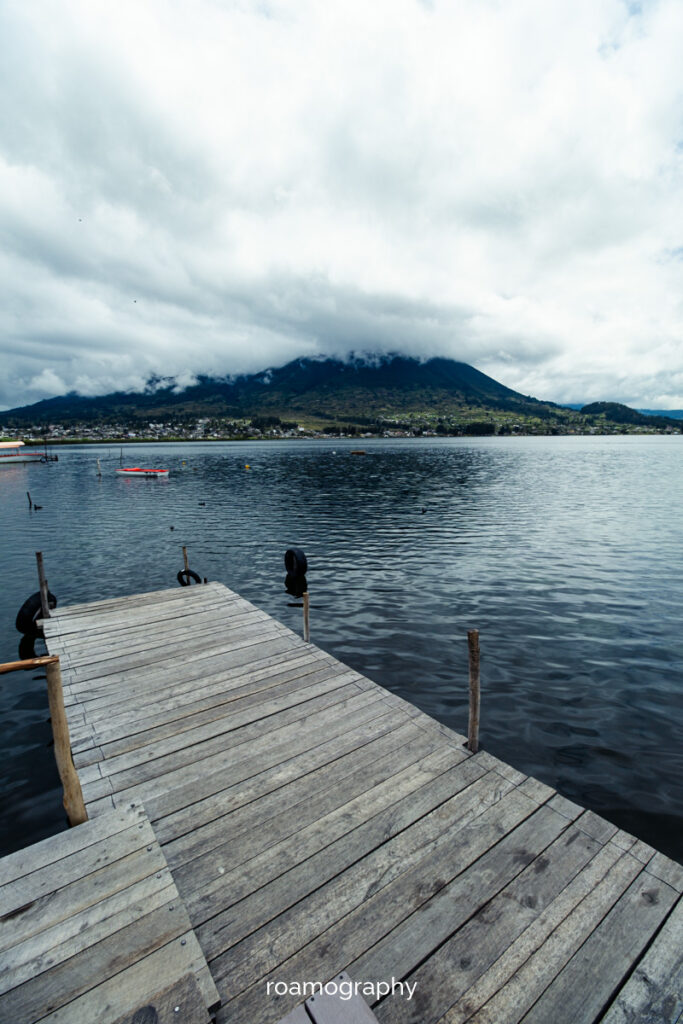
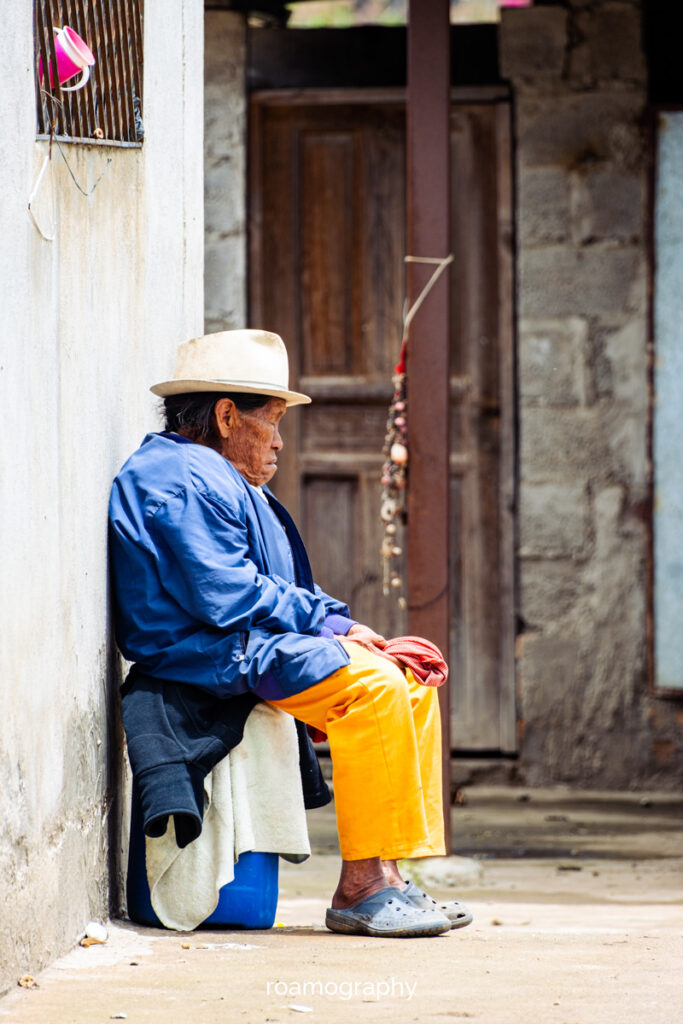
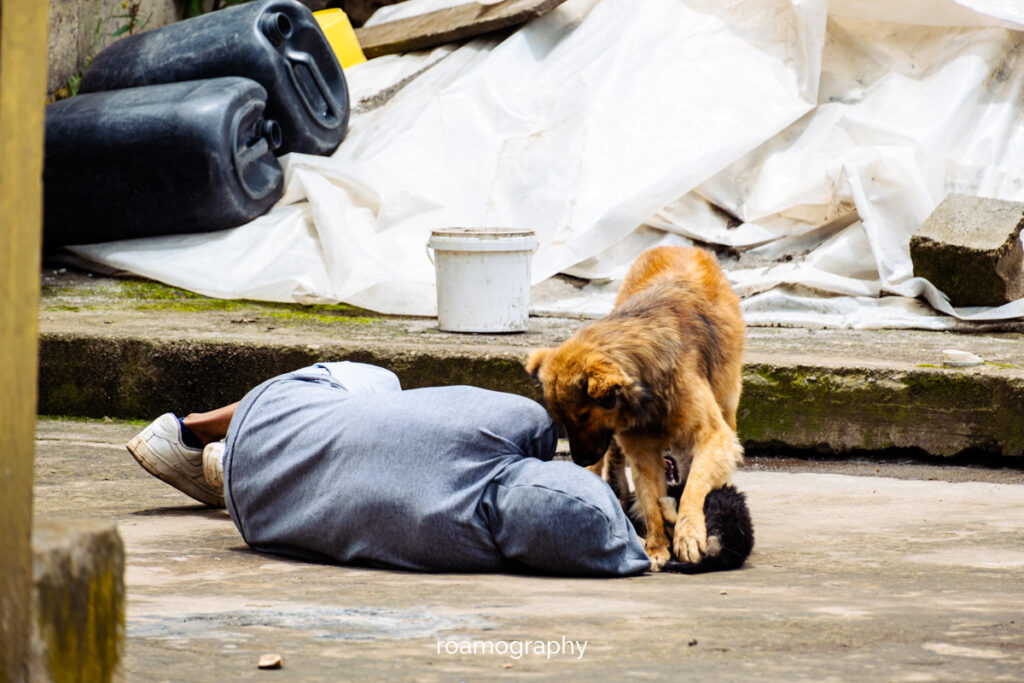
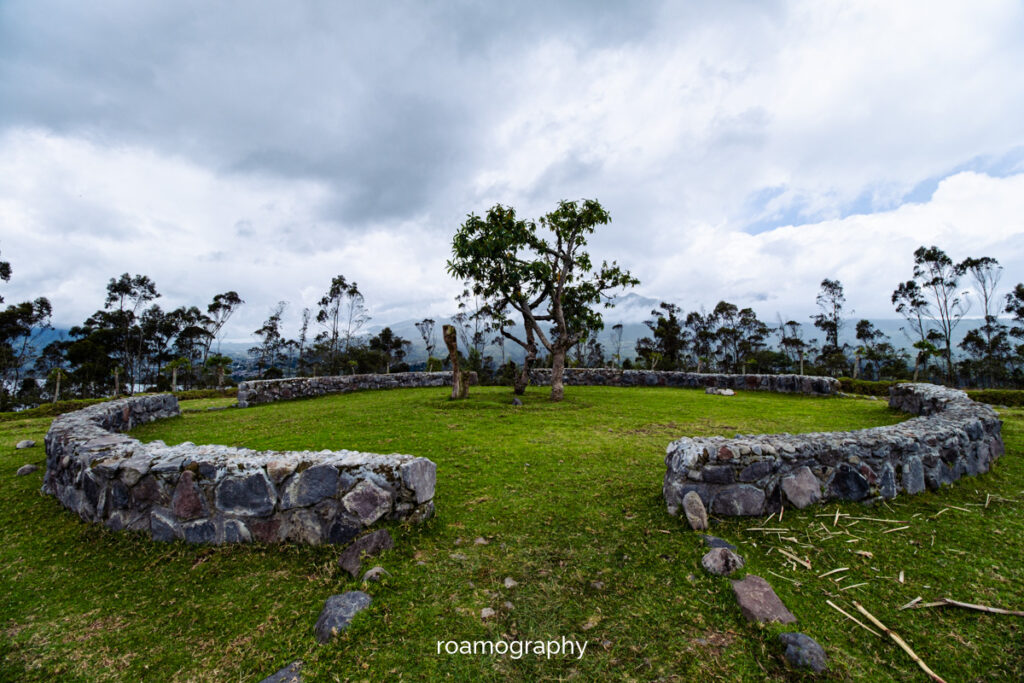
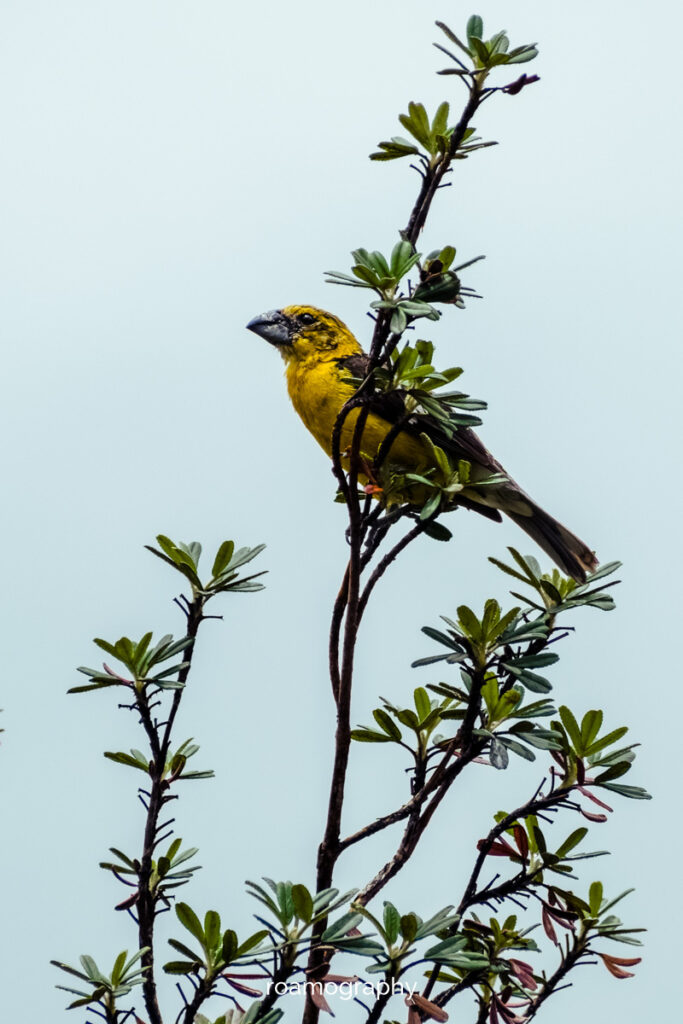
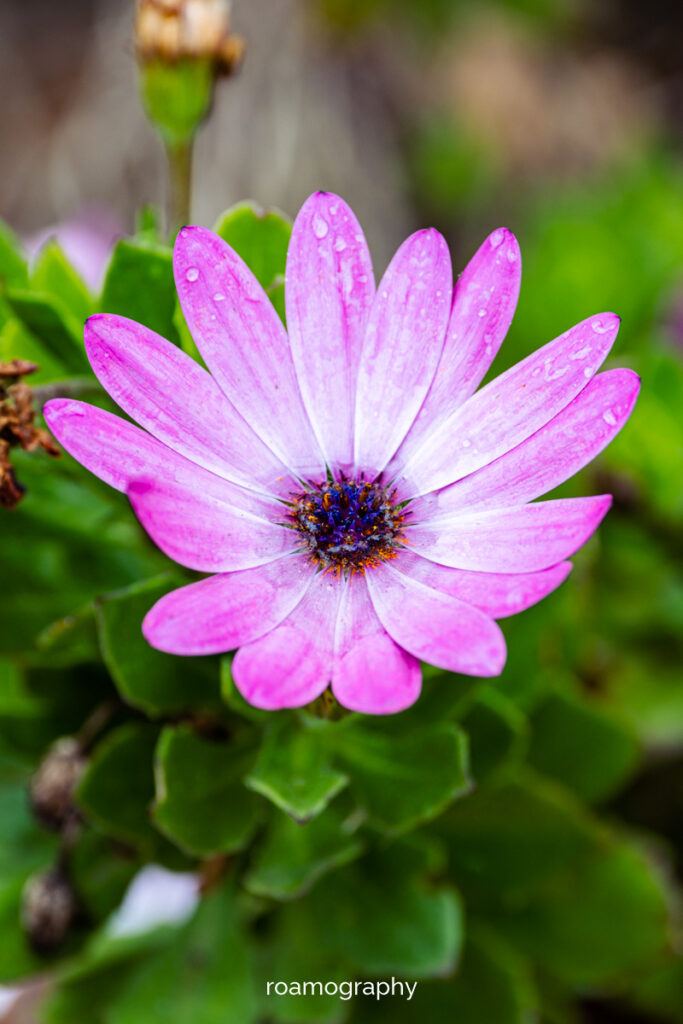
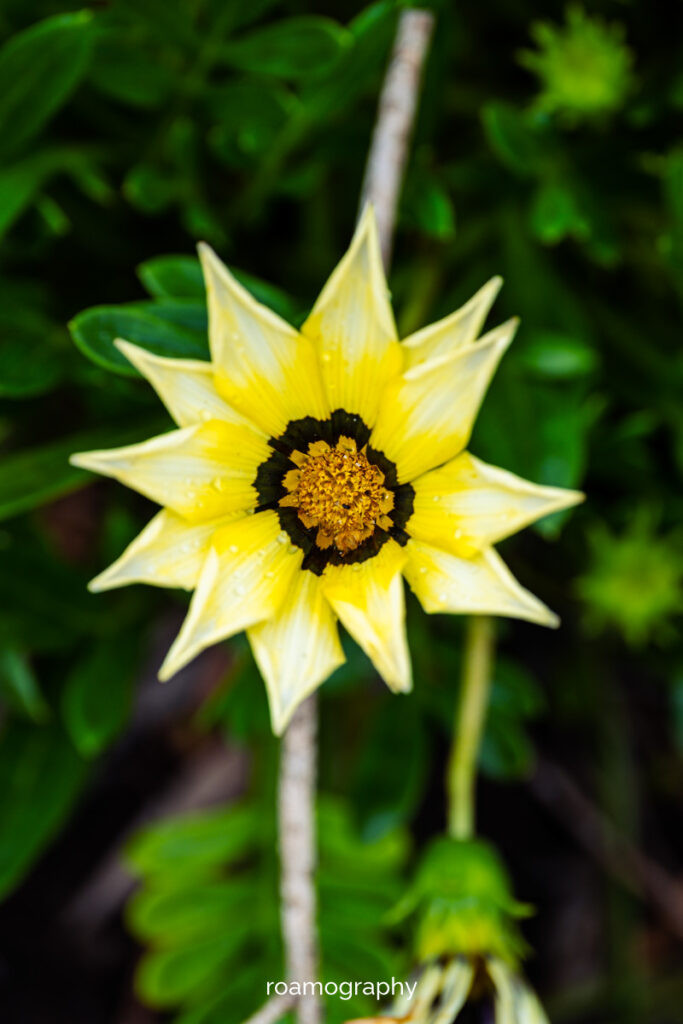
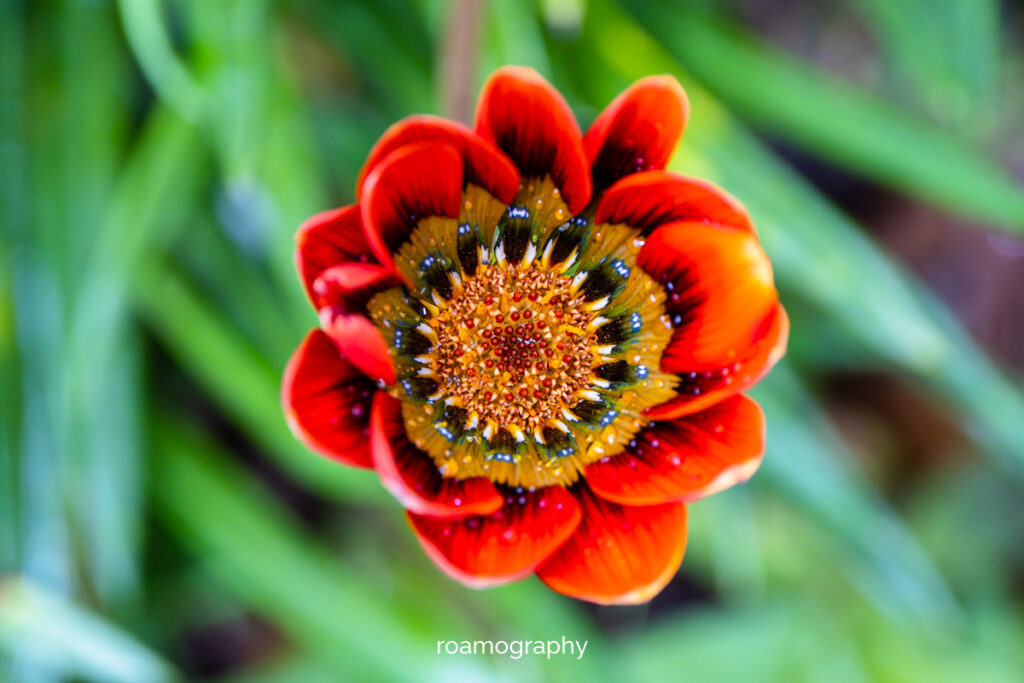
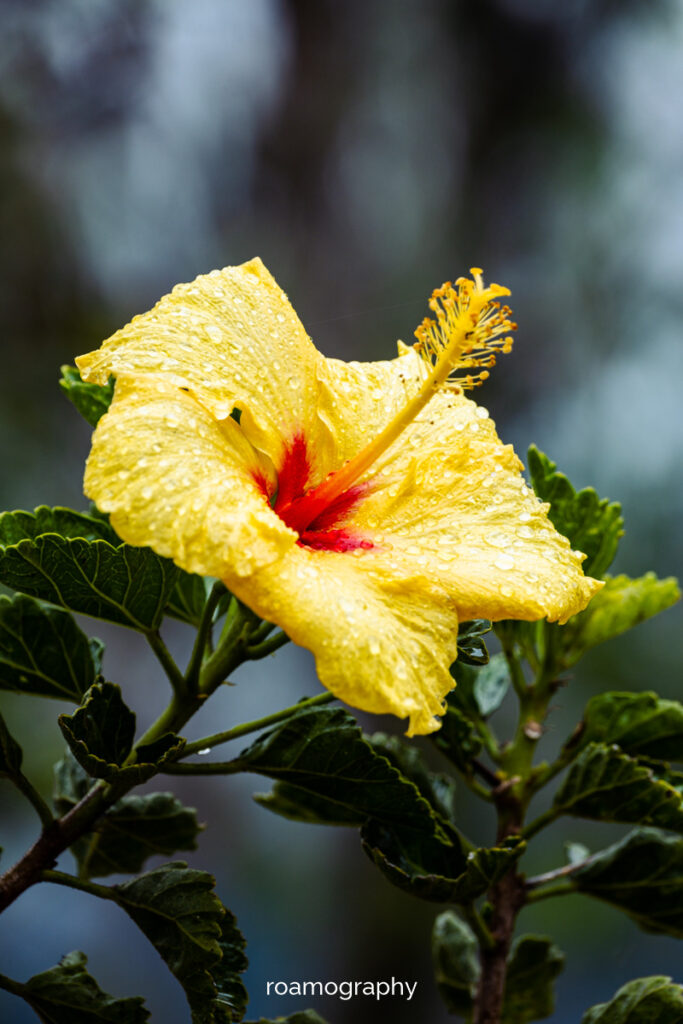

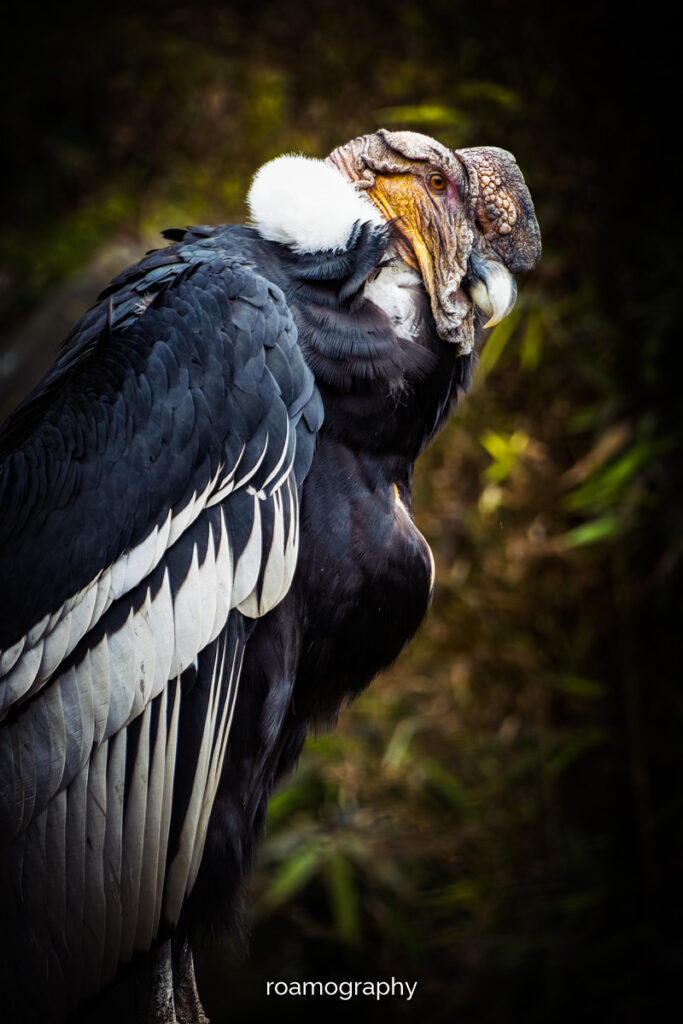
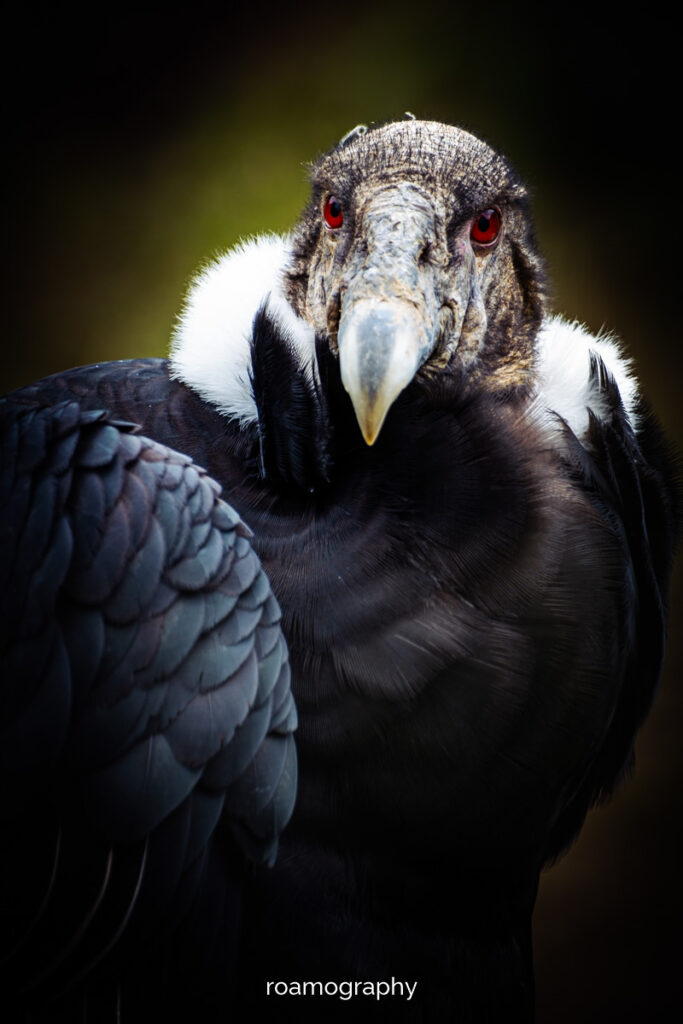
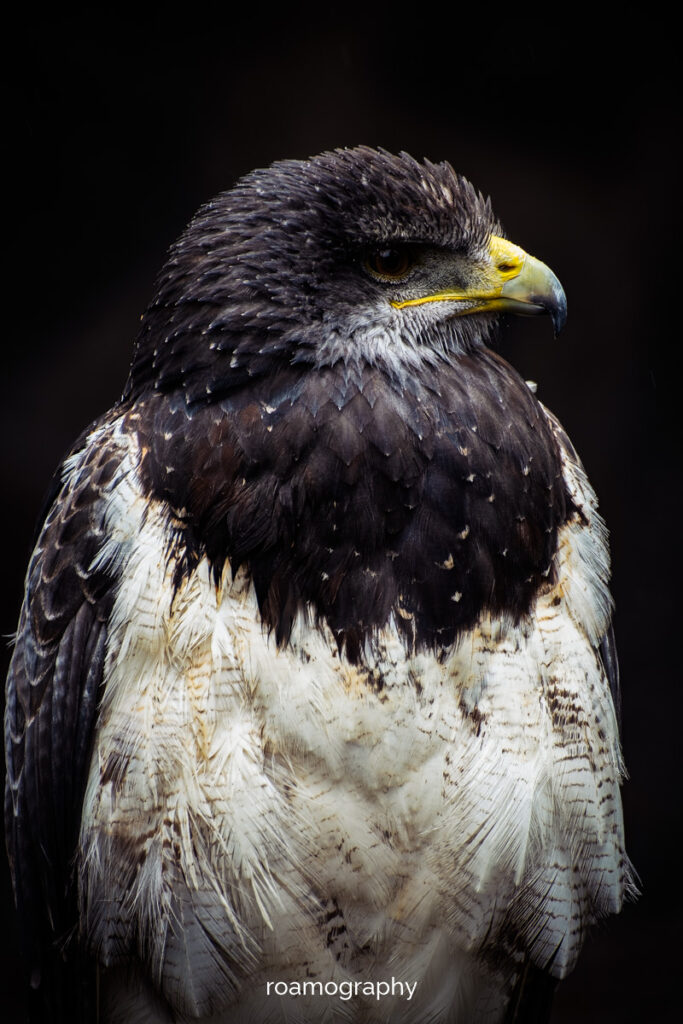
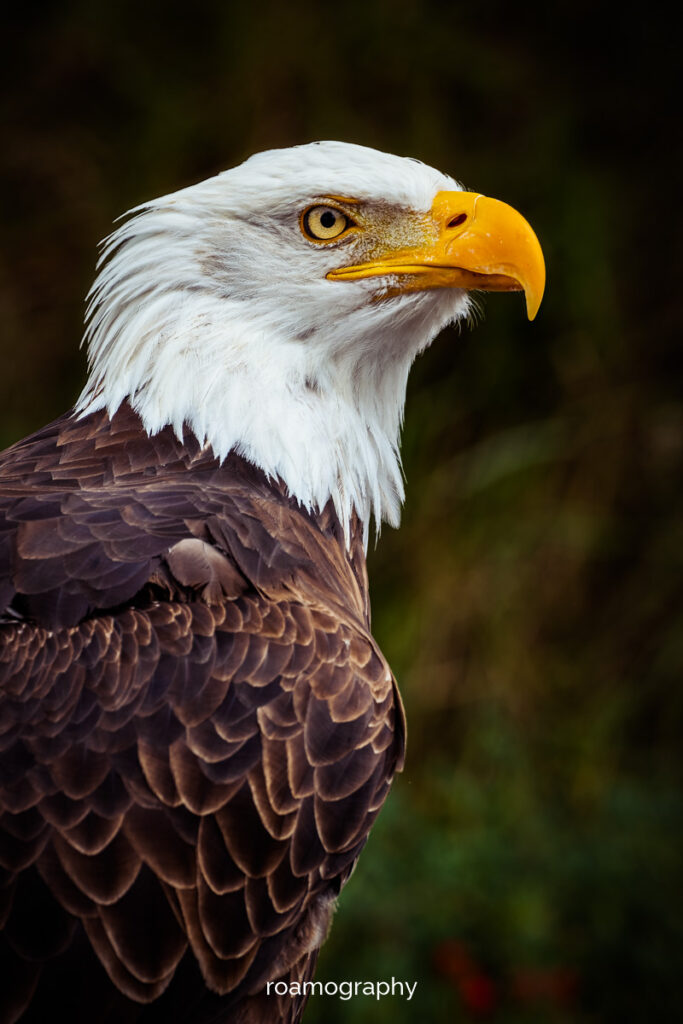
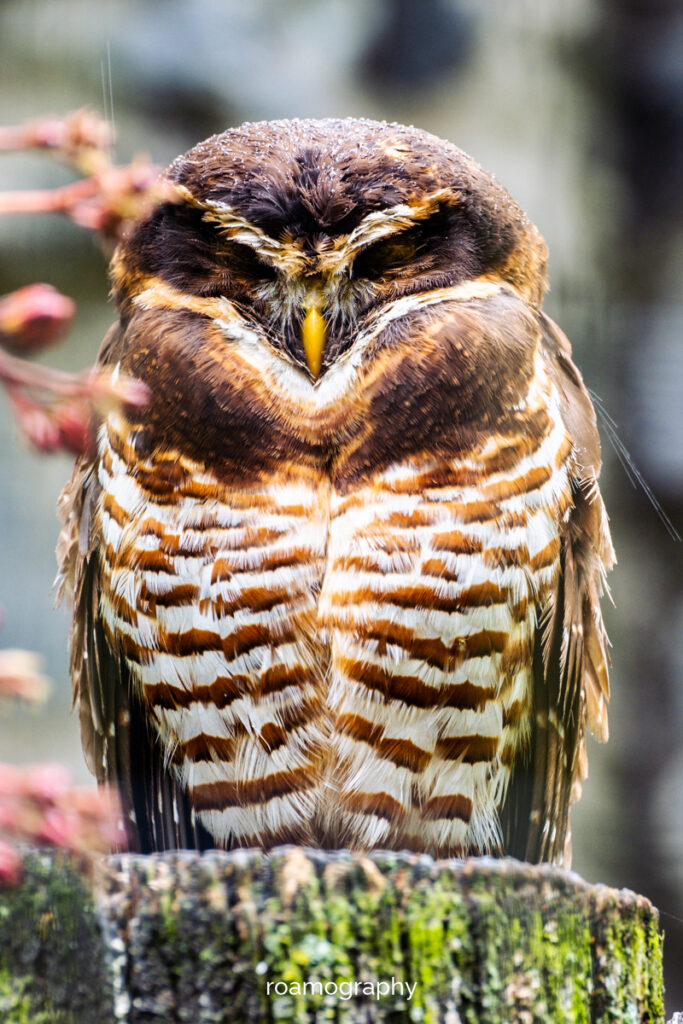
Otavalo
W tym miasteczku, wegług internetów, powinno się dać zasmakować odrobiny ekwadorskiej andyjskości. Rzeczywiście, jest tu sporo kobiet Kichwa w tradycyjnych, pięknych strojach, a na głównym placu rozkwitły stragany z wyrobami folklorystycznymi od poncho po kapcie. Do tego należy dodać, a właściwie odjąć chaotyczną zabudowę centrum, przygniataną przez grubo ciosane kloce nowych betonowych budynków. Staramy się nie zrażać i dalej szukać piękna Otavalo. Może ukryło się w targowisku, które co tydzień zagarnia kilka centralnych ulic? A może w kościołach, wypełnionych elegancko wystrojonymi seniorami? Jest go trochę na cmentarzu, na którym muzykuje się, biesiaduje i zaprasza się podróżników do udziału w konsumpcji, znajdujemy je również w dźwiękach ulicznej ceremonii weselnej, podczas której pije się aguardiente wprost z bambusowego kija i obdarowuje się młodą parę materacami i meblami wyładowywanymi z paki pick-upa. Trochę tego piękna znajdujemy też w okolicznych ścieżkach wiodących do wodospadu. Pięknie i tajemniczo jest na wzgórzu El Lechero, a raczej było, bo drzewa, które symbolizowało wieczną miłość dwojga kochanków, już tu nie ma. Jest za to Jezioro San Pablo (nie pozbawione swojego uroku, ale nie wywołuje w nas zachwytu) i jest też Parque Condor, które miało być centrum pomocy dzikim ptakom, a jest chyba jednak najzwyklejszym w świecie zoo, z pokazami tresury i klatkami (co prawda, zazwyczaj sporych rozmiarów) i bez widoków na powrót ptaków do środowiska naturalnego.
It’s going to be about churches again, but it’s impossible to miss them in Quito… They’re huge, they’re lavishly decorated (and very often you are not allowed to take photos inside) and there’s quite a density of them. The capital impresses not only with its sacred buildings; in fact, wherever you turn your head, you can see an interesting detail – a carved saint here, a dog there, a condor up there… The cityscape is dominated on the one hand by the statue of the Virgin of Panecillo, and on the other by the huge Basílica del Voto Nacional (the construction of which began in 1892 and has still not been formally completed – it is said that the day it is accomplished, the end of the world will come). The basilica towers offer a spectacular view of the city, and on cloudless days the surrounding volcanoes can also be seen.
We organise our trip around Ecuador so as to revisit Quito during Easter, which is celebrated in very colourful ways here – especially on Good Friday, when a procession of mysterious and slightly scary cucuruchos and veronicas sets off from under the Basilica of St Francis.
Quito can be addictive, as we find out when we talk to Marek, a Polish copywriter who has been “stuck” here for months and seems to be enjoying it very much (despite a street mugging episode which resulted in losing his shoes). With my fellow countryman we take a car trip to Latacunga, Ambato and Laguna Colta, home to Ecuador’s oldest church (and a tiny one, too).
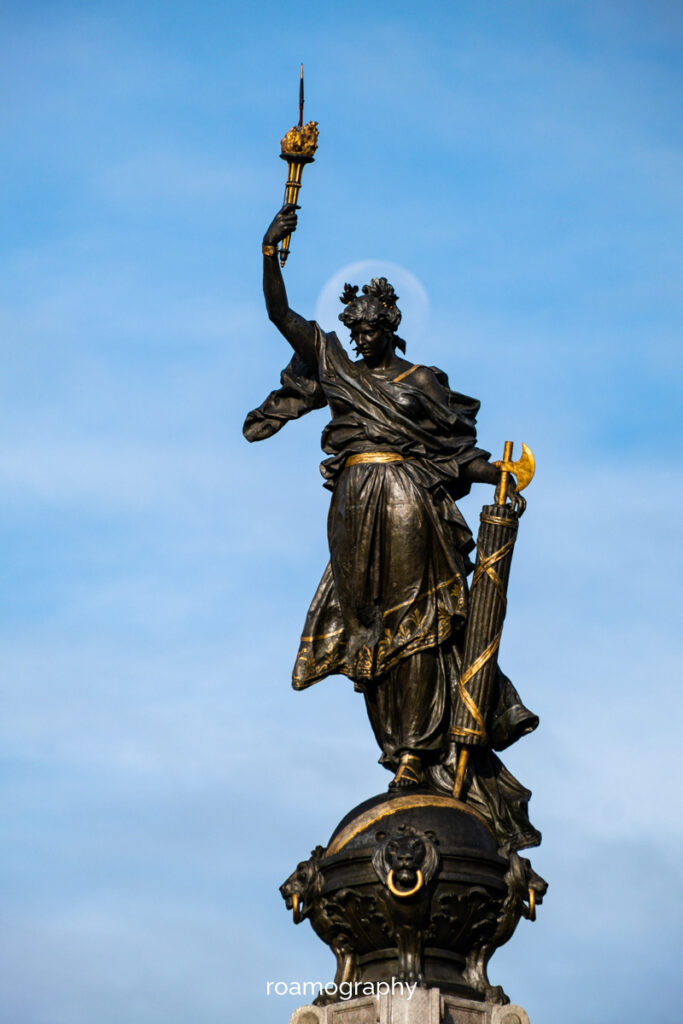
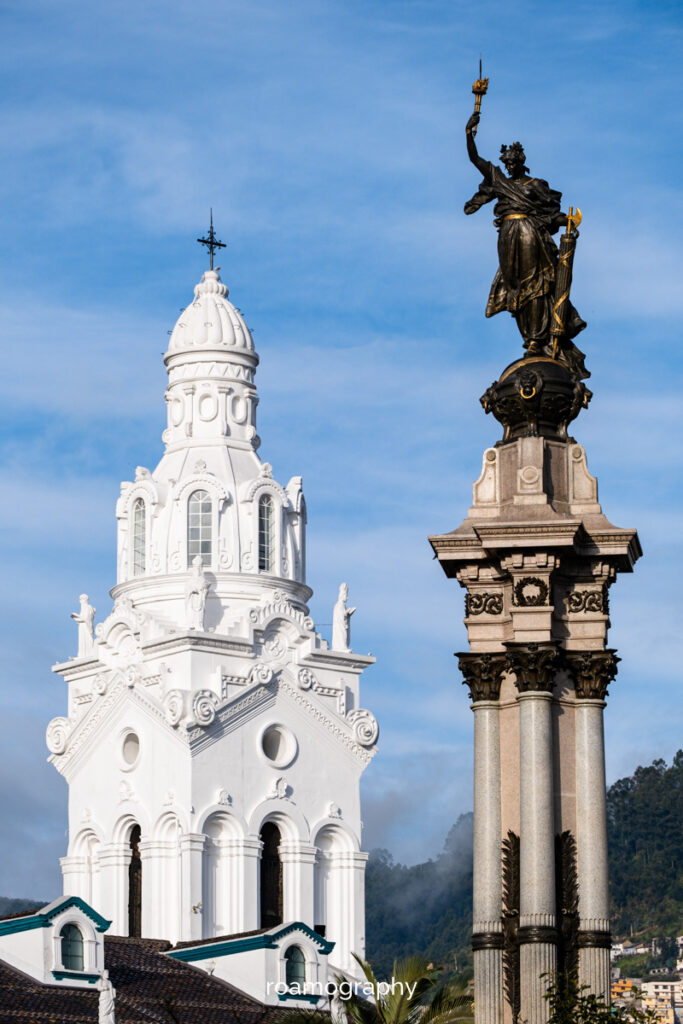
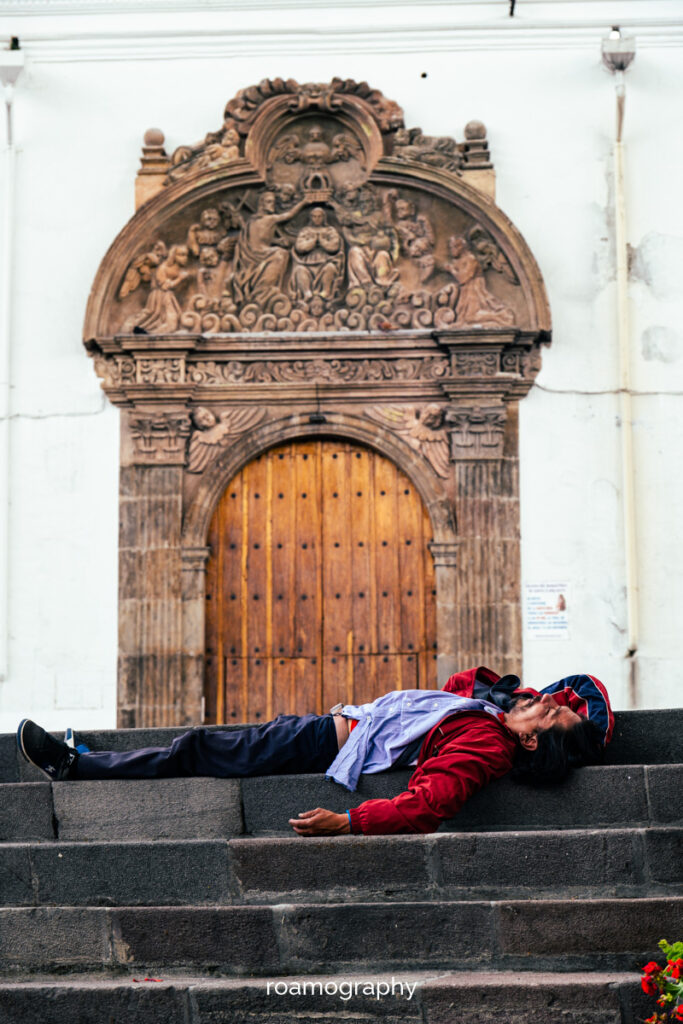
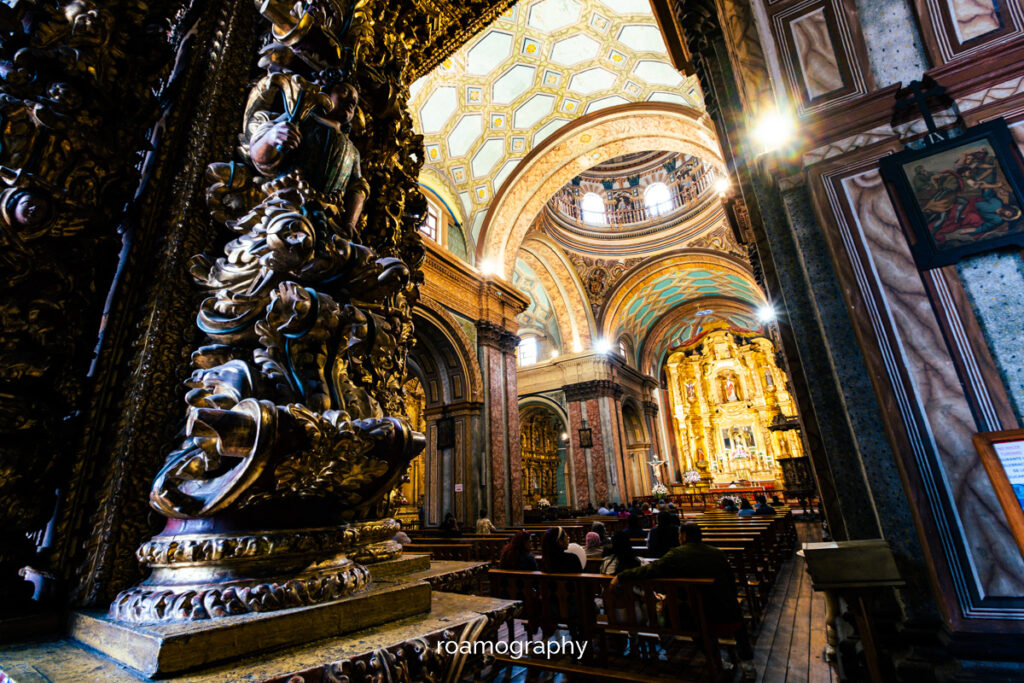
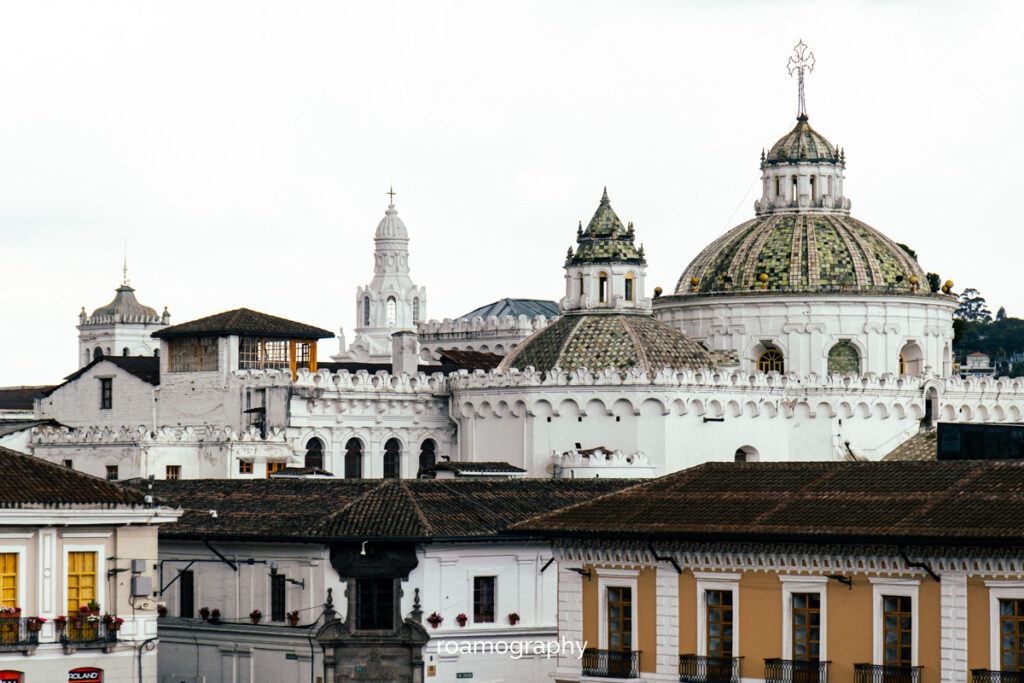
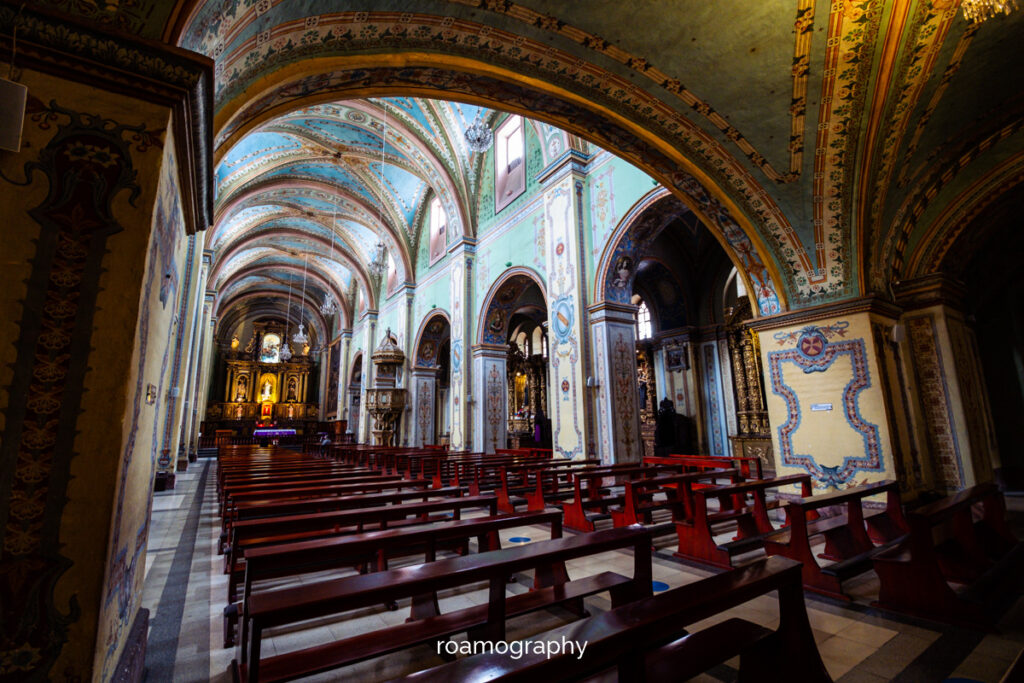
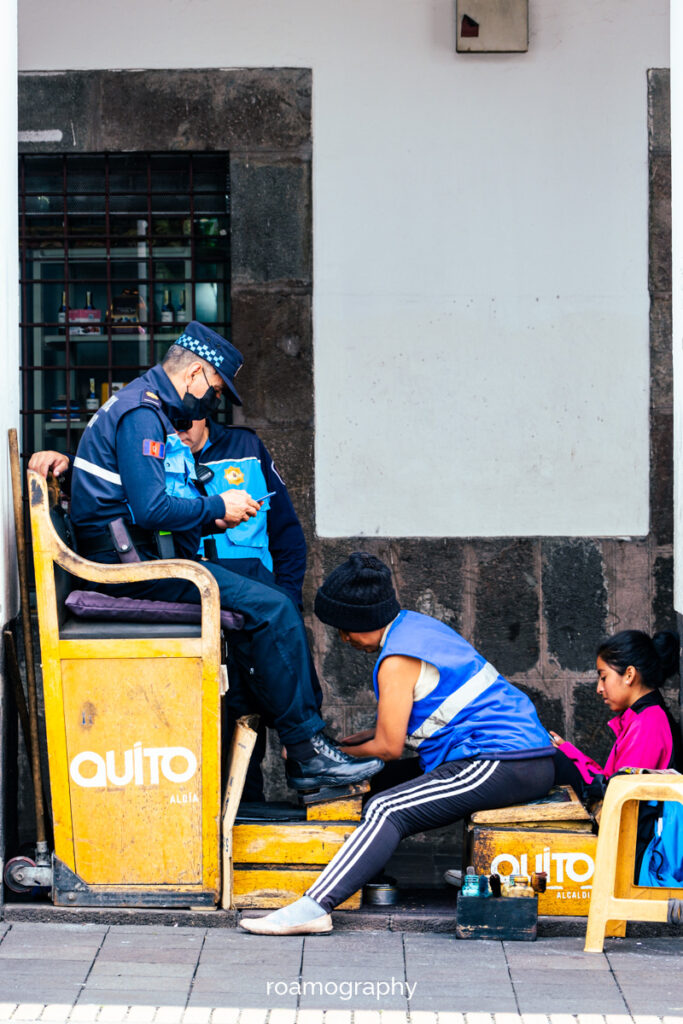
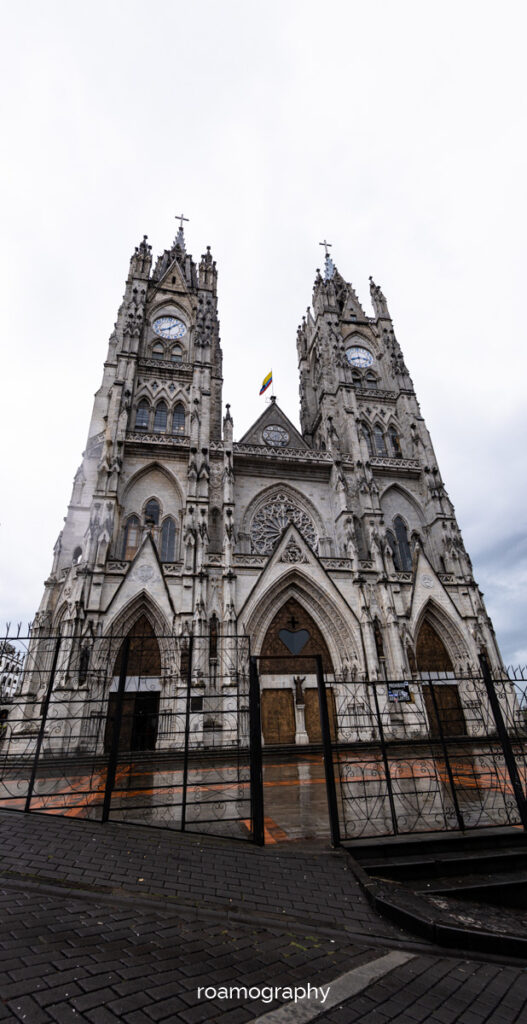
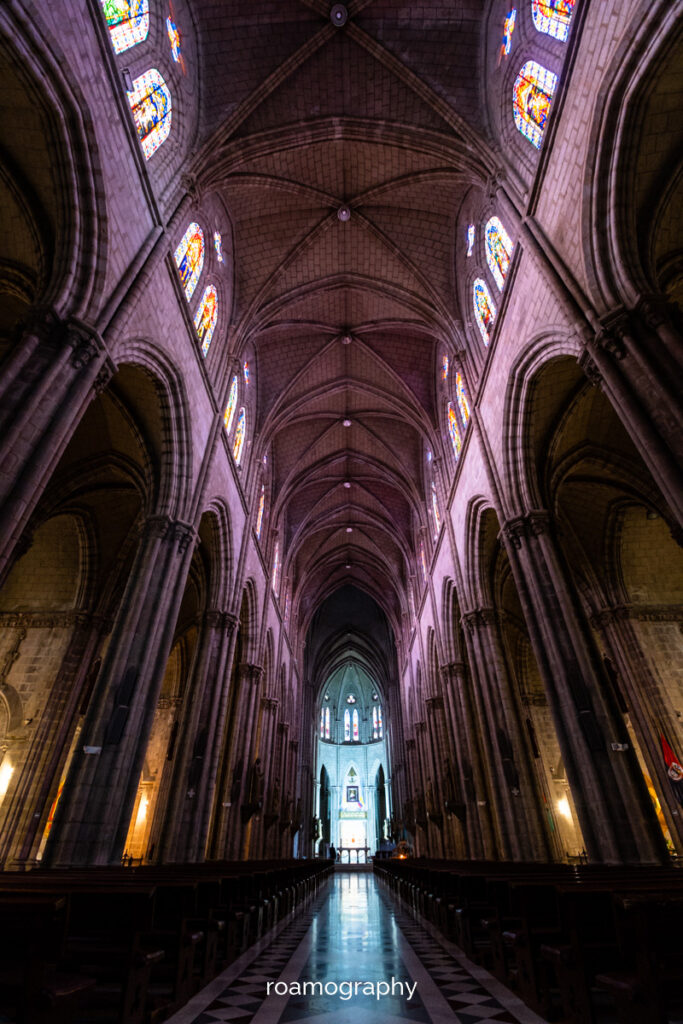

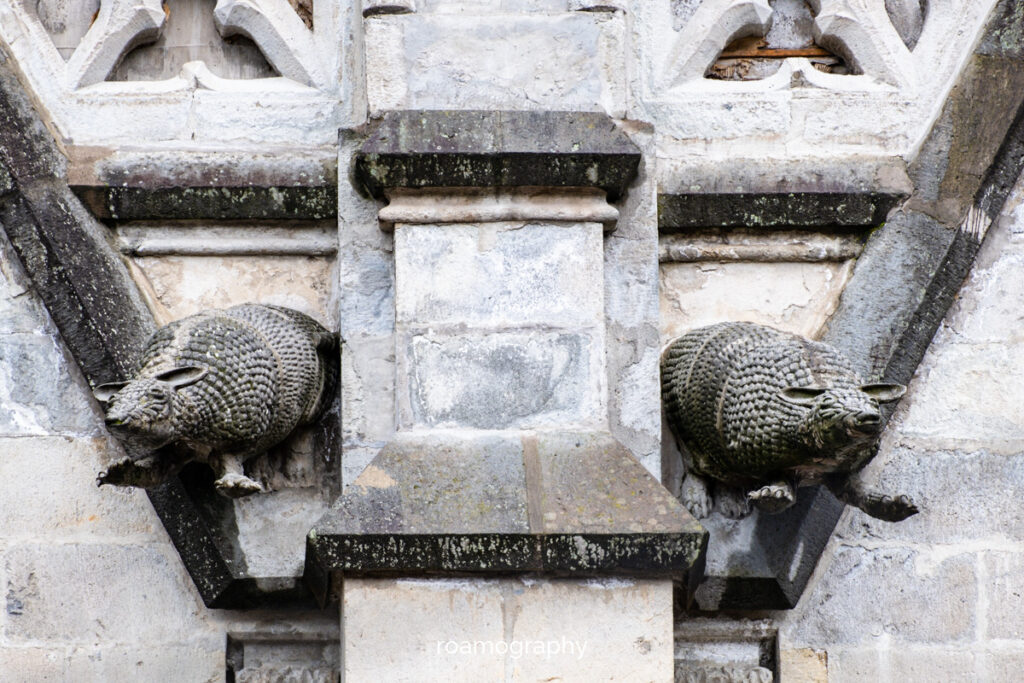

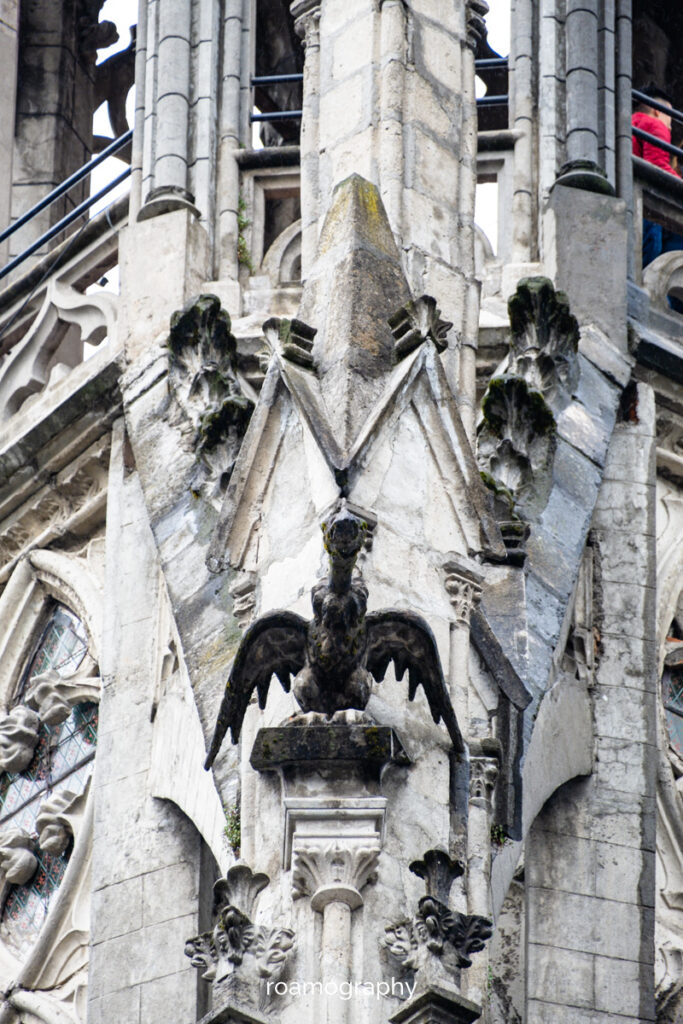

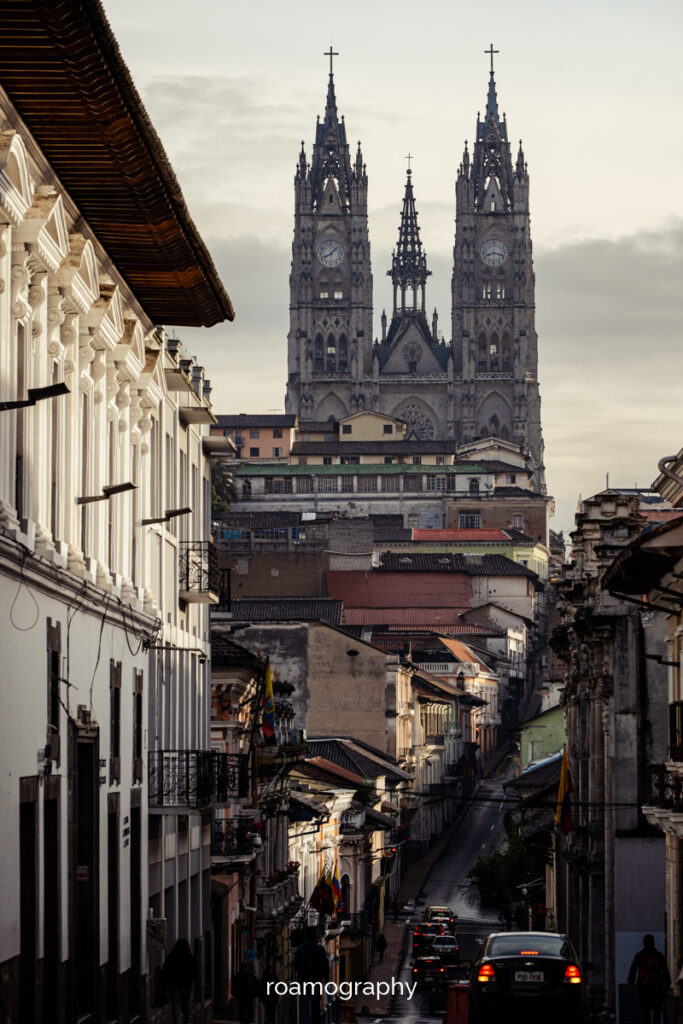
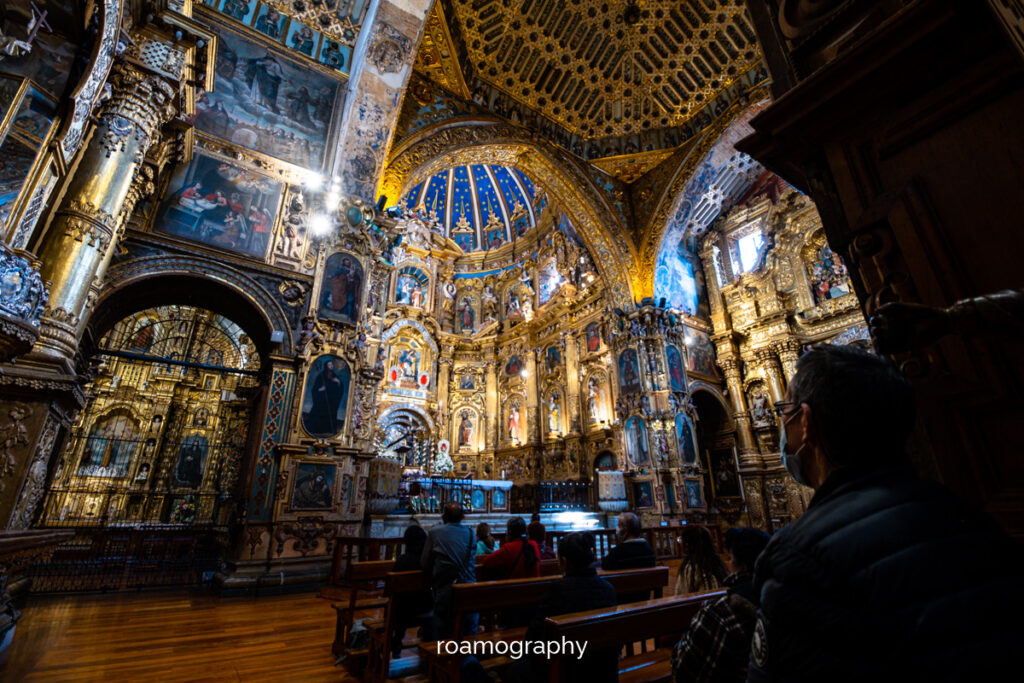
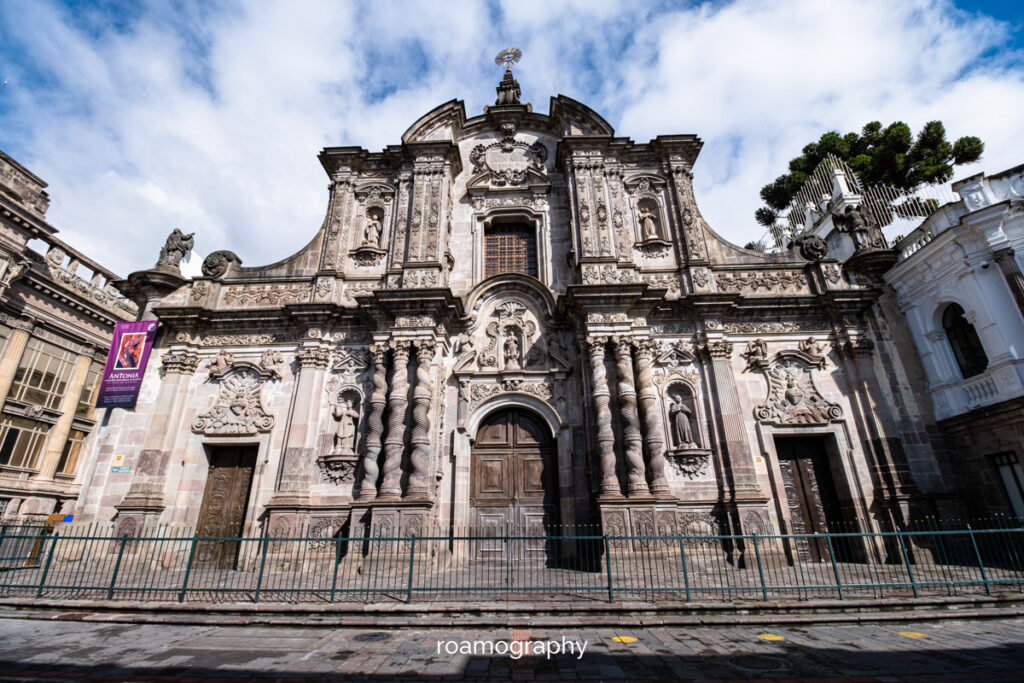
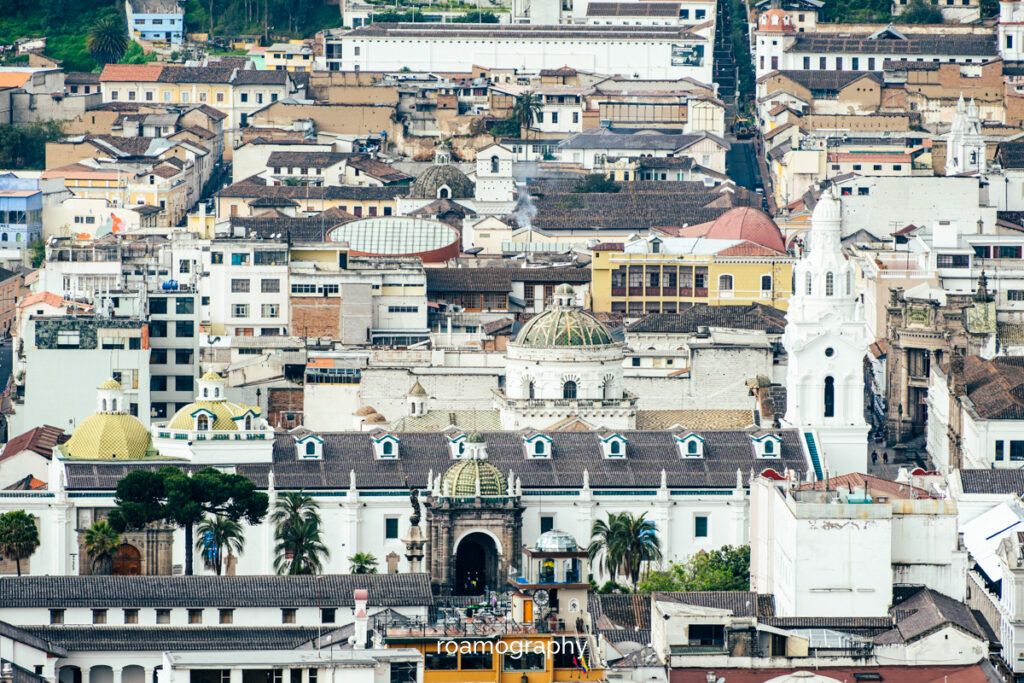
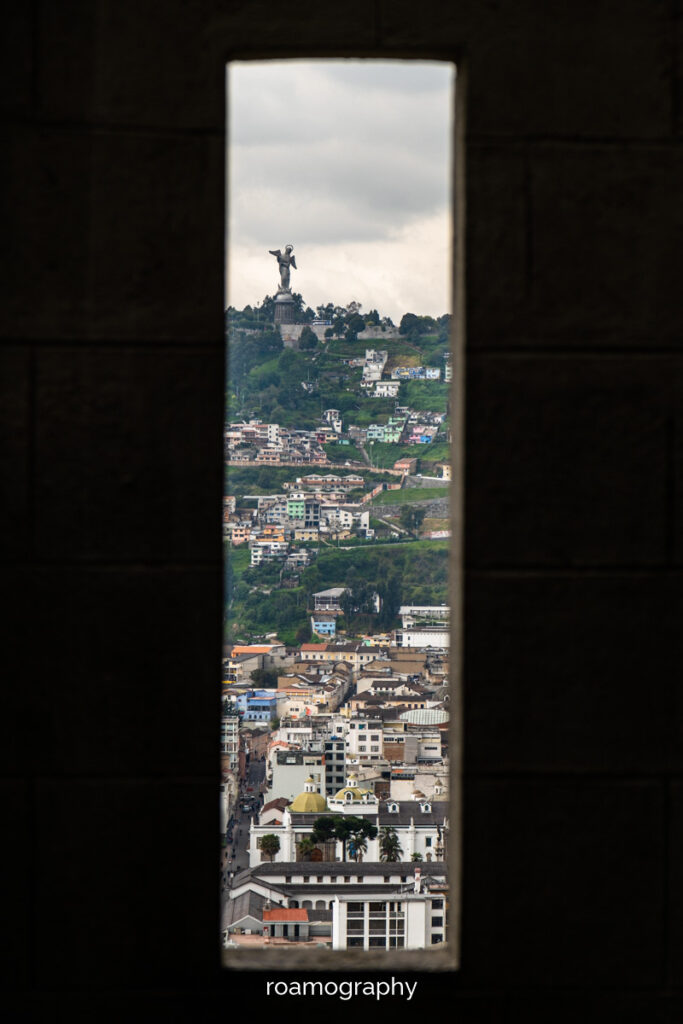
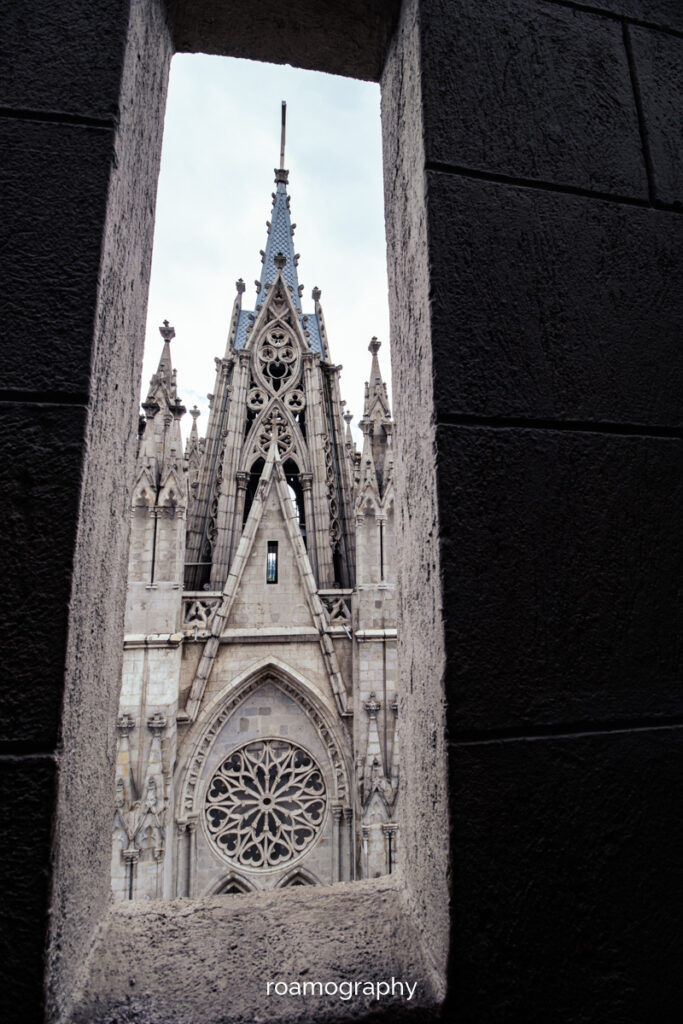
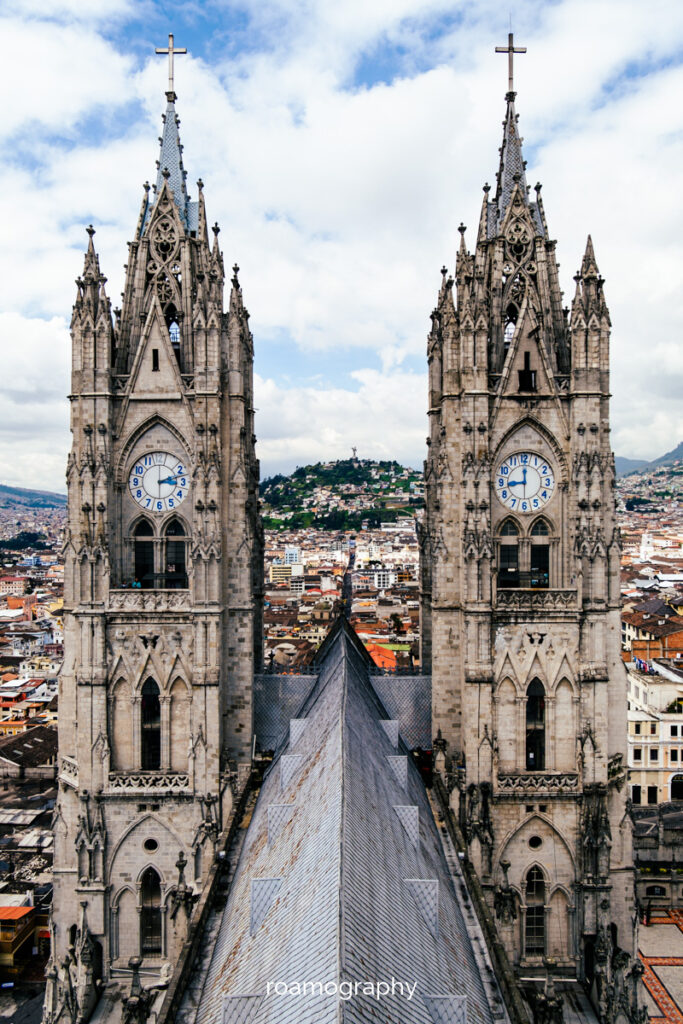

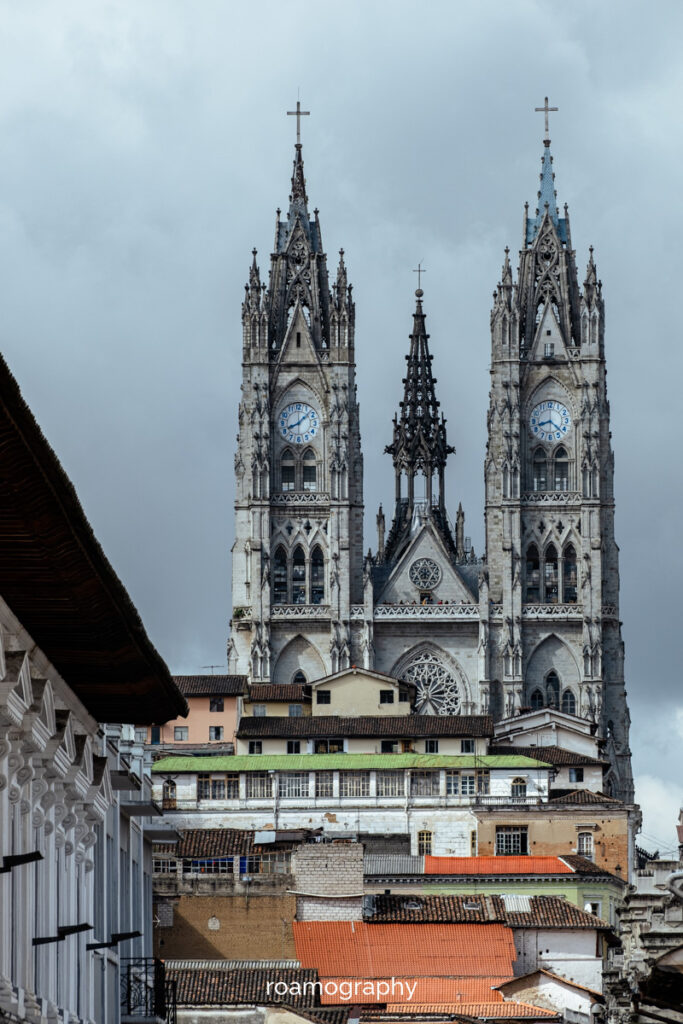

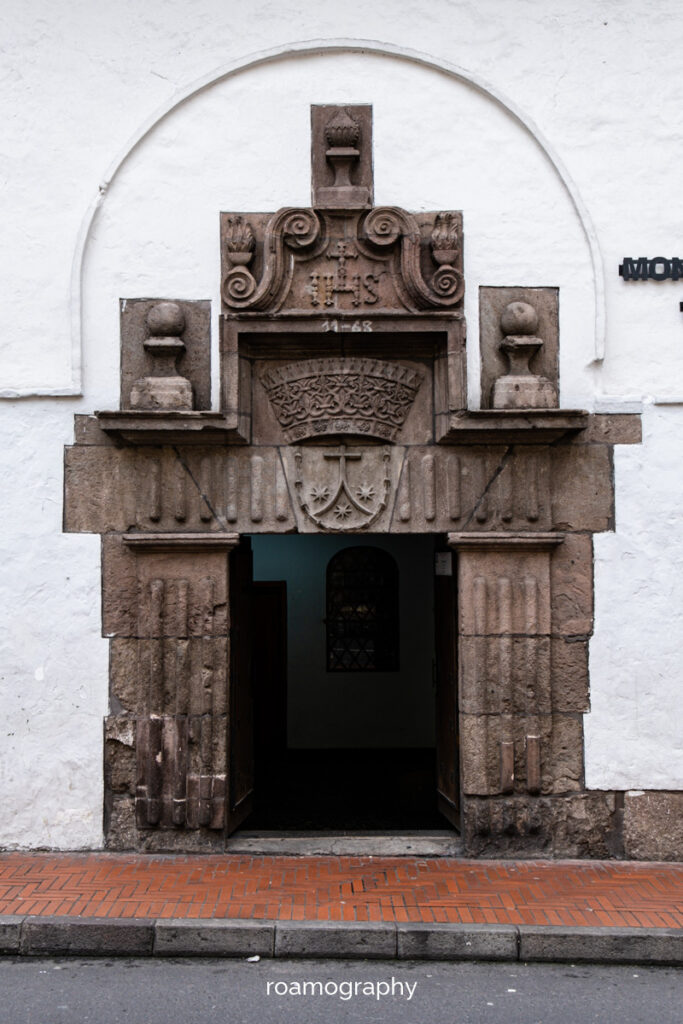
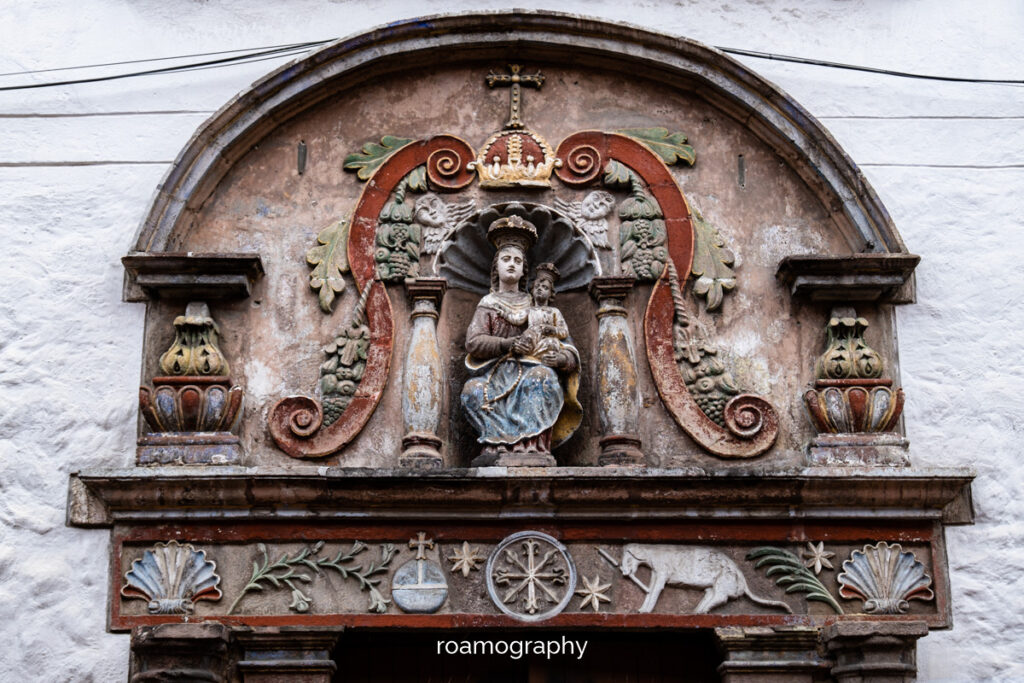
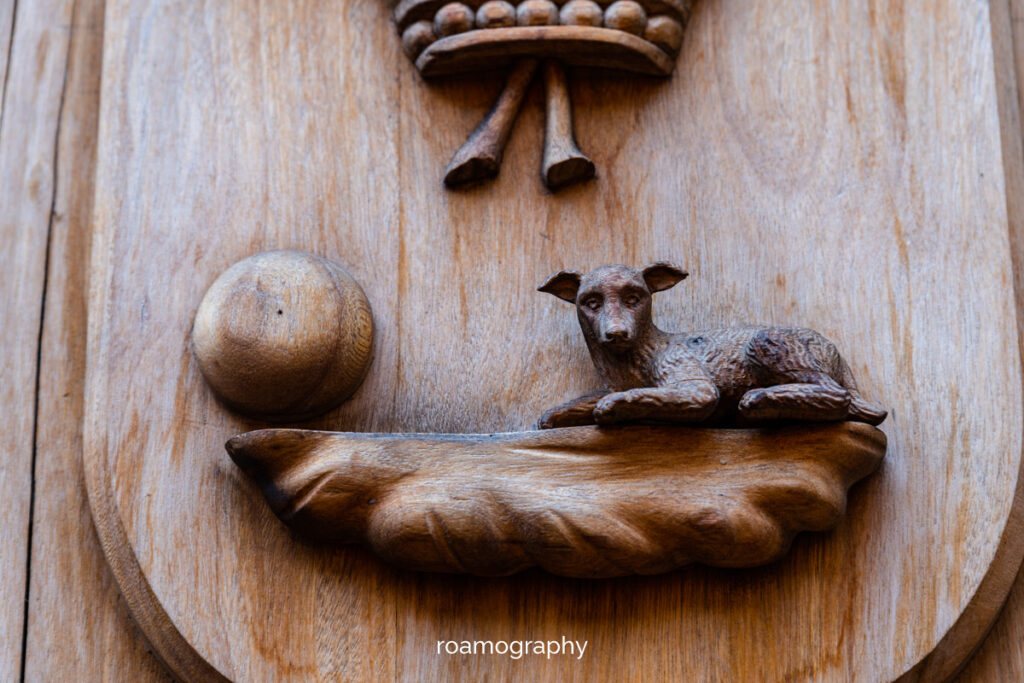
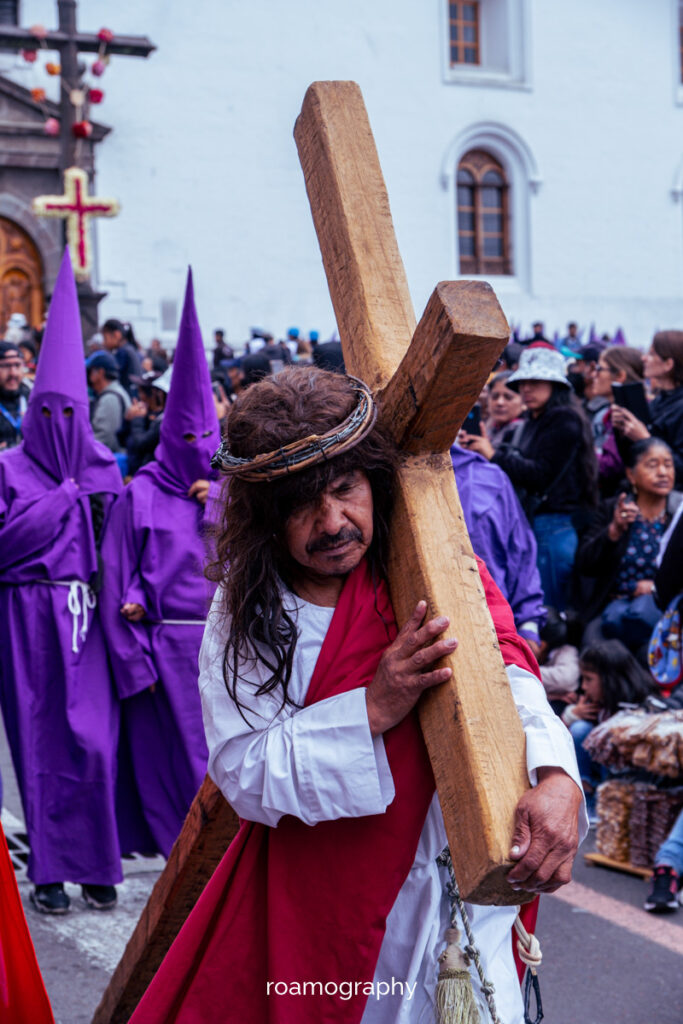


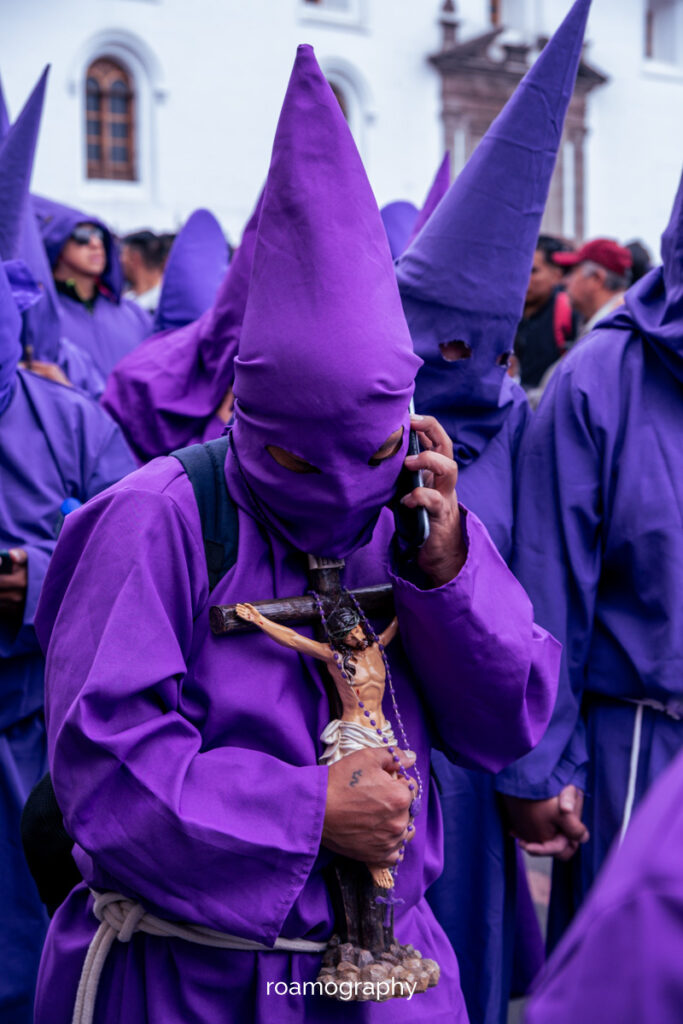
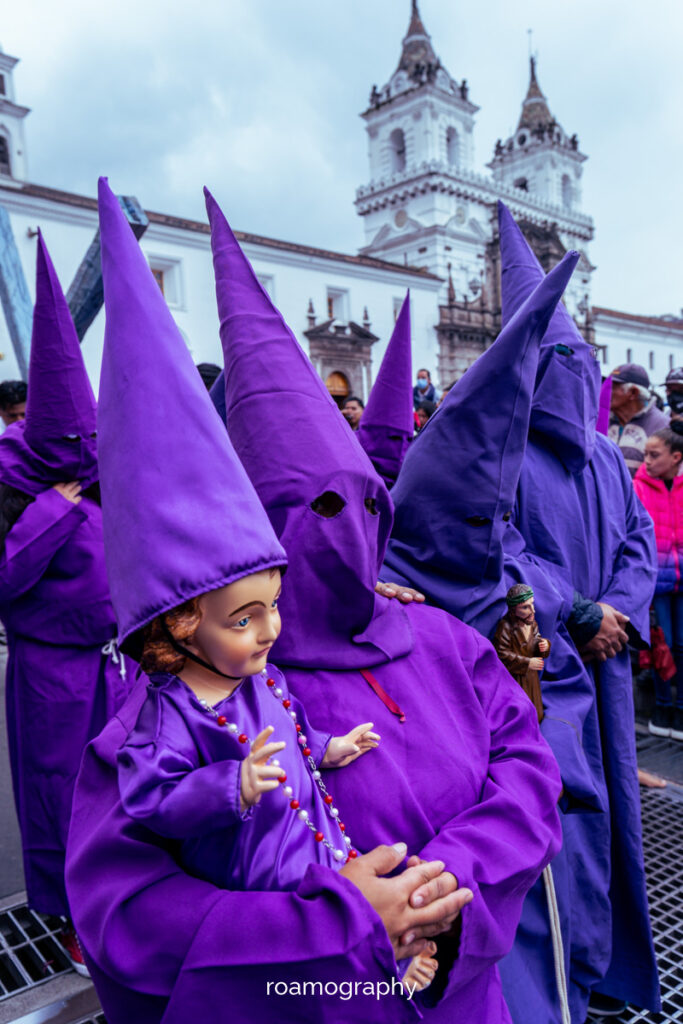
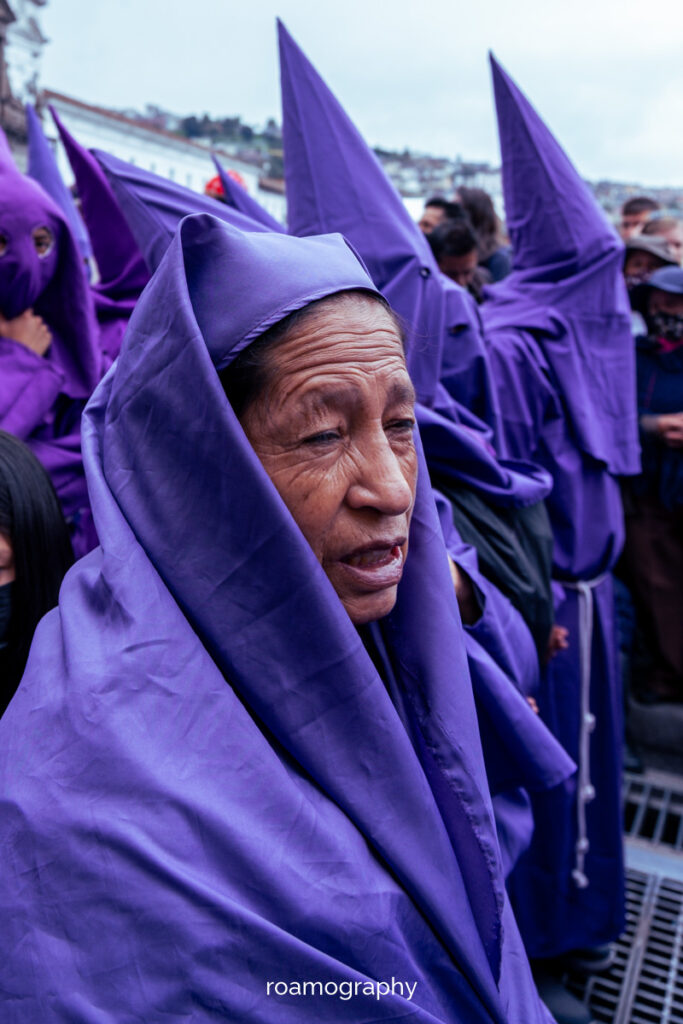
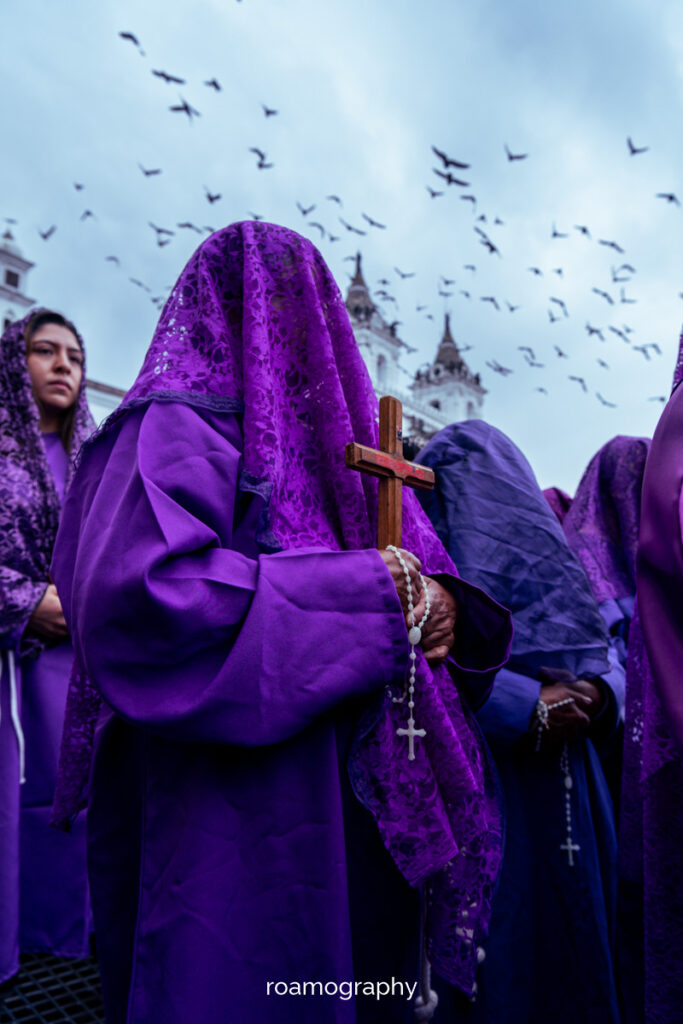

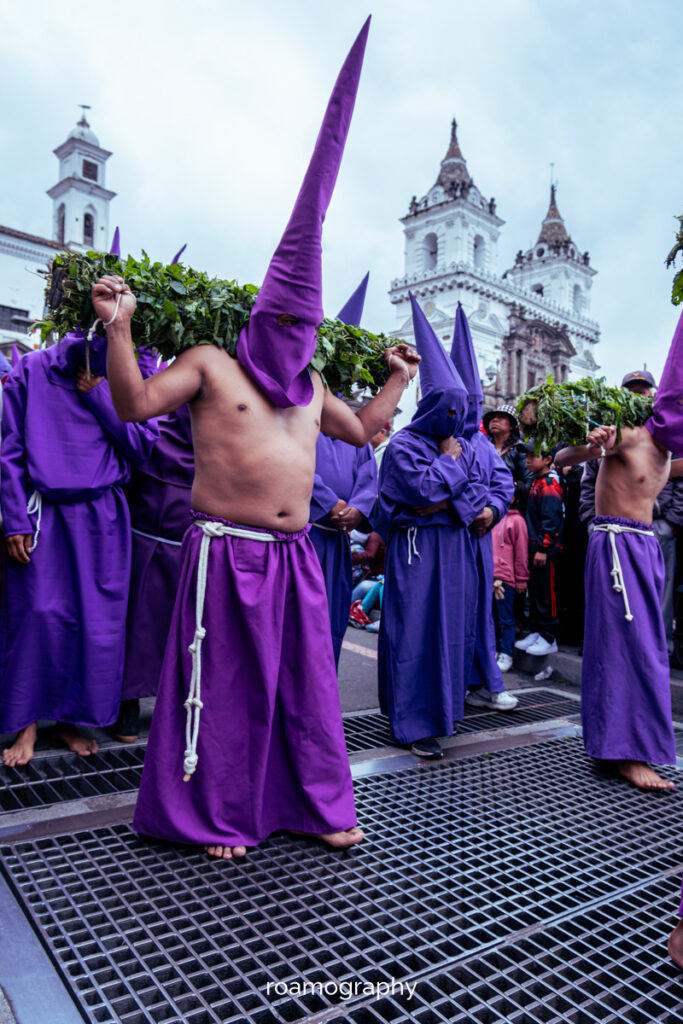
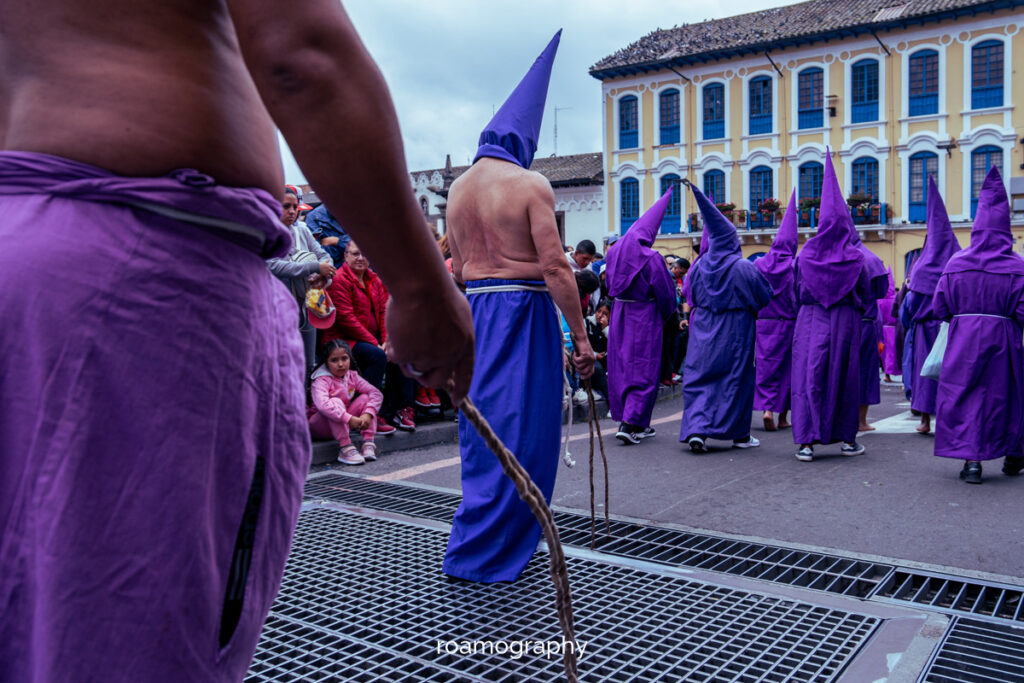
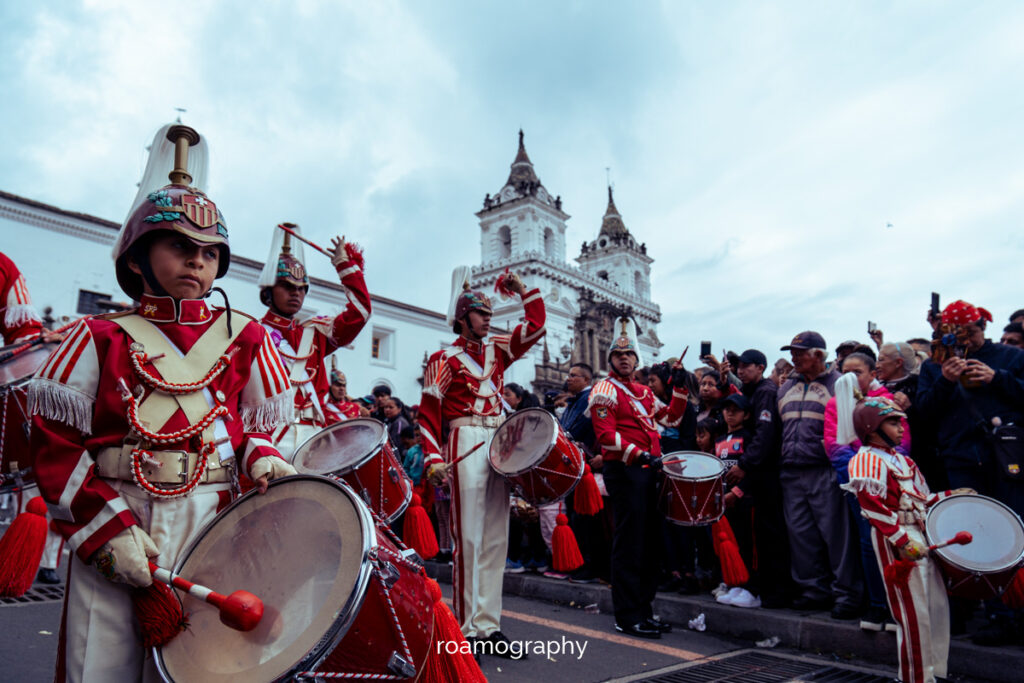
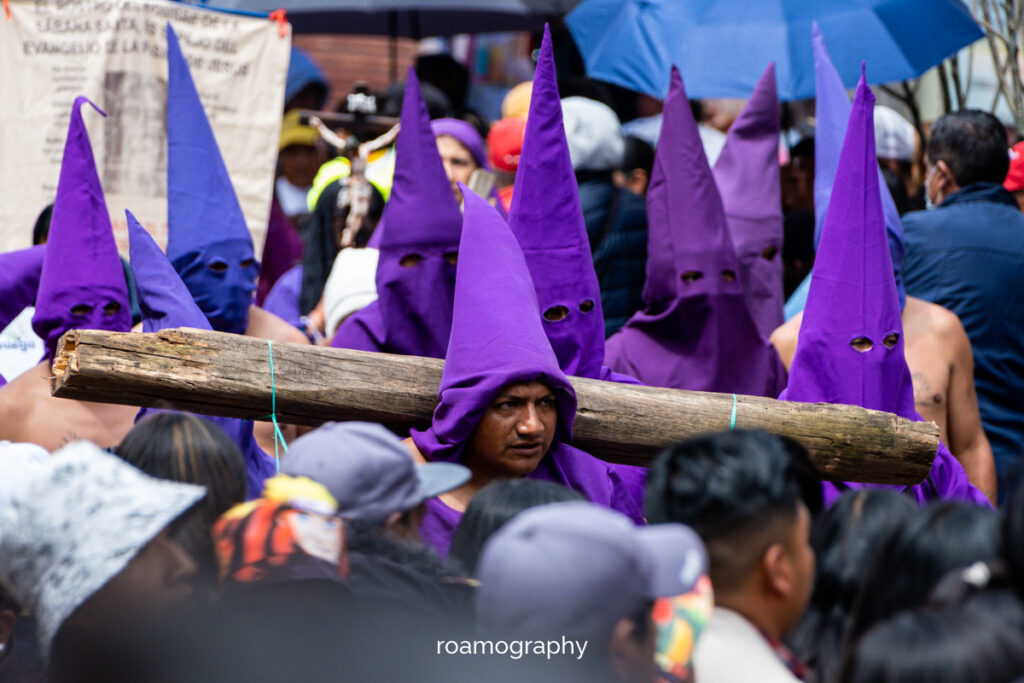

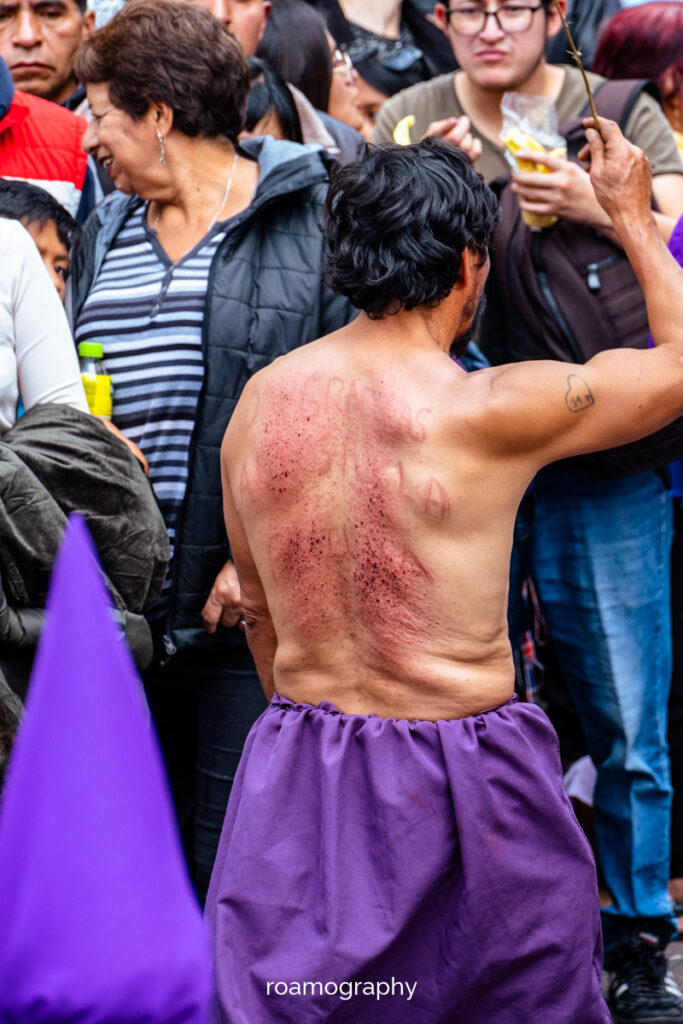
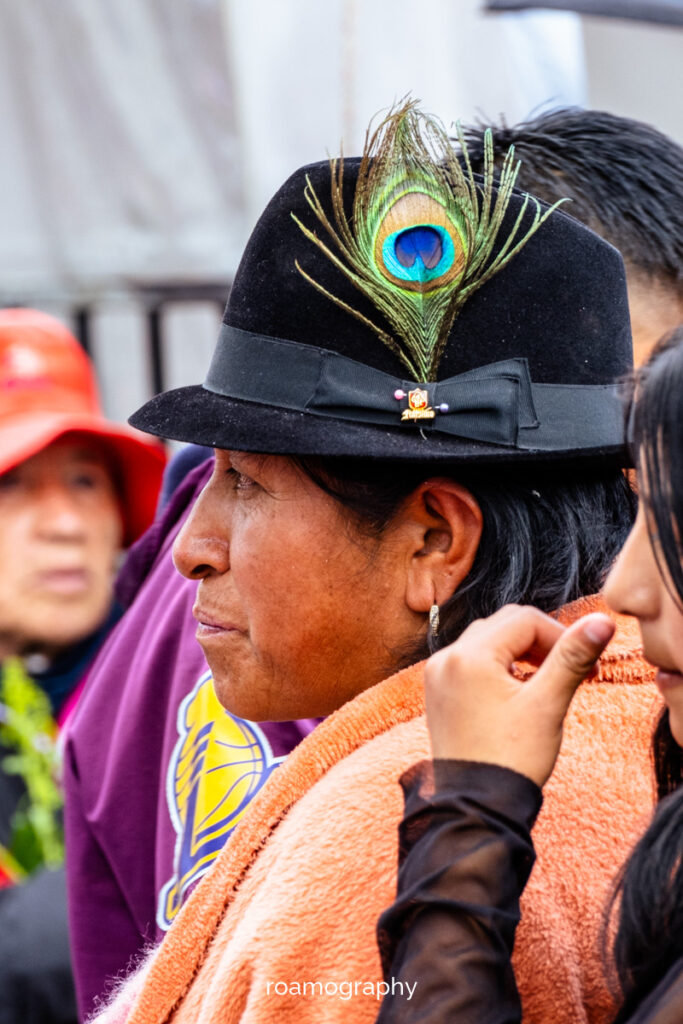
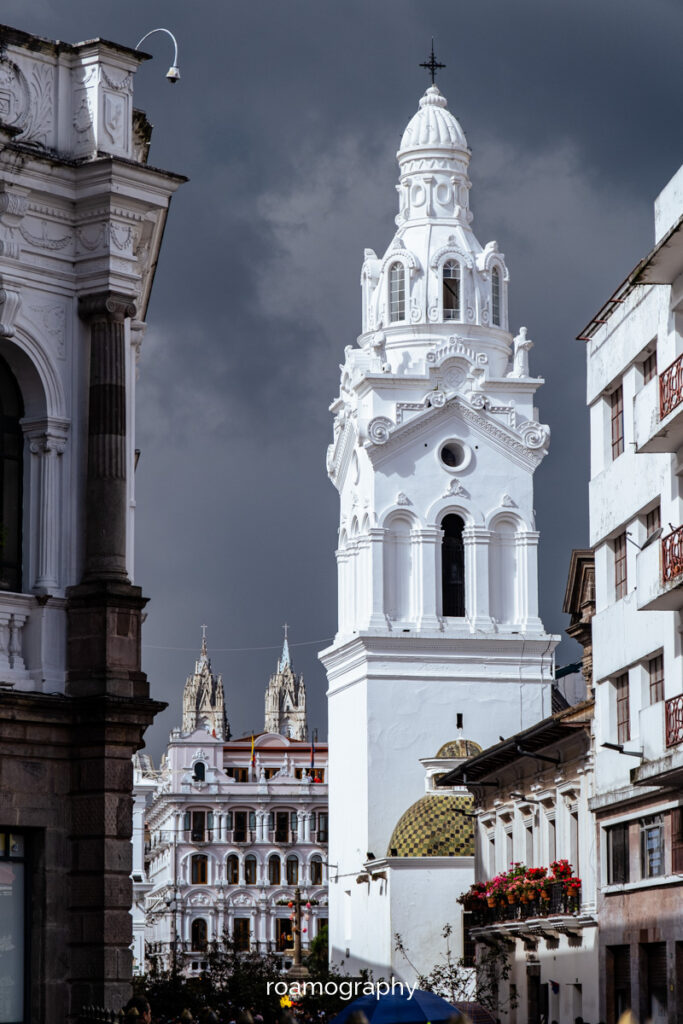
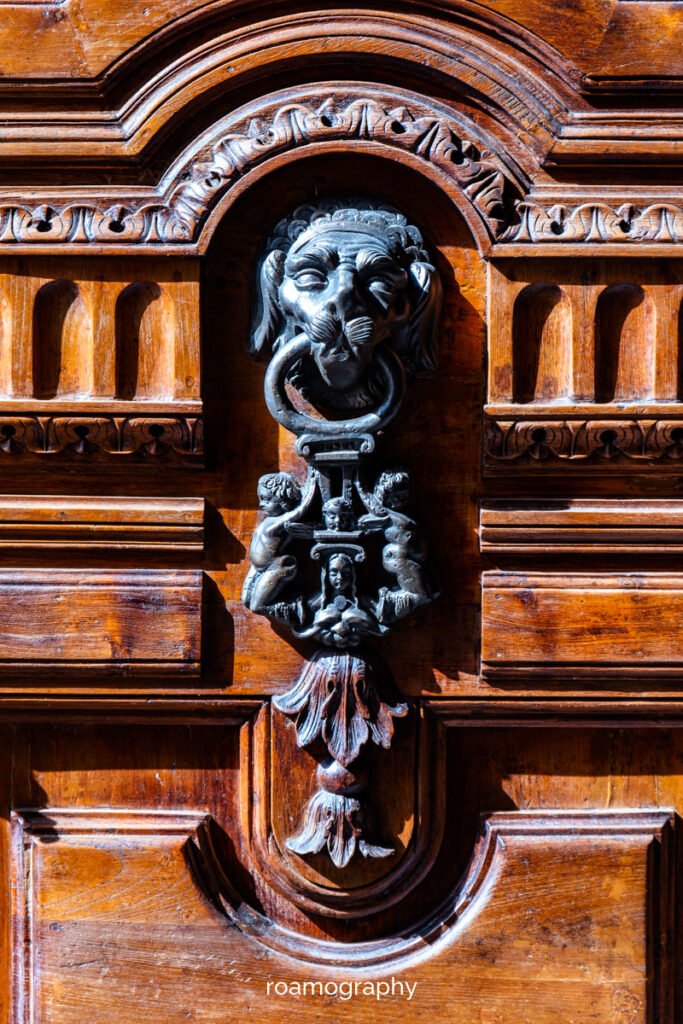
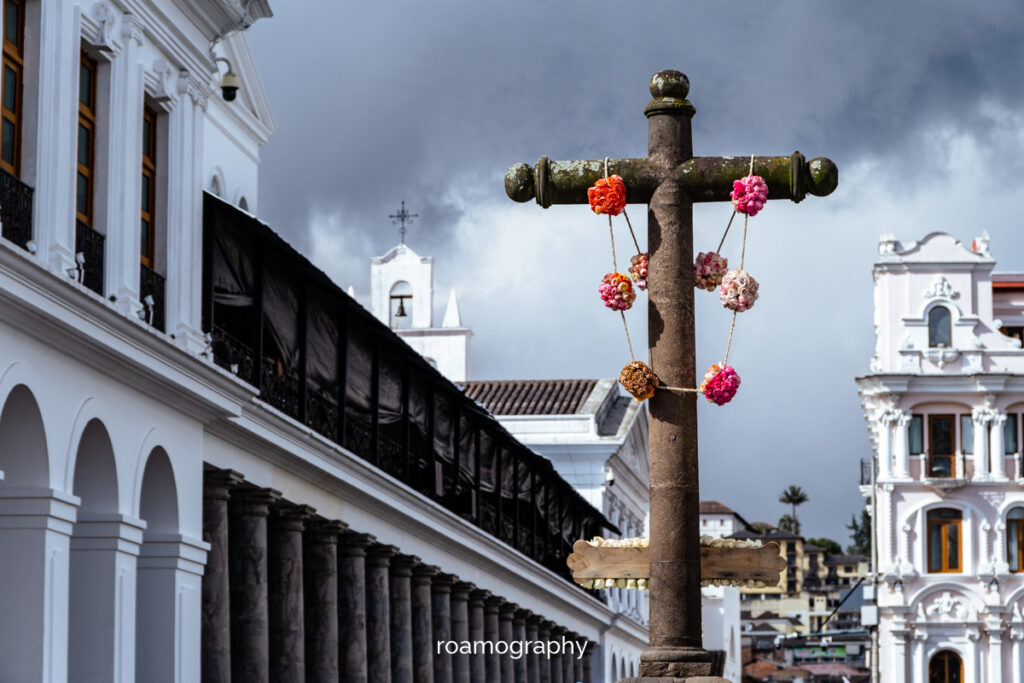
Quito
Znowu będzie o kościołach, ale w Quito nie sposób ich pominąć… Są wielkie, są przebogato zdobione (i często w ich wnętrzach nie wolno robić zdjęć) i jest ich spore zagęszczenie. Stolica imponuje nie tylko budynkami sakralnymi, właściwie gdzie nie zadrzeć głowę, tam dojrzeć można ciekawy detal – tu wyrzeźbiony święty, tam pies, a tam kondor… Nad miastem dominuje z jednej strony figura Dziewicy z Panecillo, a z drugiej olbrzymia Basílica del Voto Nacional (której budowę rozpoczęto w 1892 r. i formalnie do dziś prace budowlane nie zostały ukończone – ponoć w dniu, w którym to nastąpi, nadejdzie koniec świata). Z wież bazyliki rozciąga się spektakularny widok na miasto, w bezchmurne dni widać również okoliczne wulkany.
Naszą podróż po Ekwadorze organizujemy tak, by ponownie odwiedzić Quito podczas Świąt Wielkanocnych, które są tu obchodzone bardzo barwnie – zwłaszcza w Wielki Piątek, kiedy to spod Bazyliki Św. Franciszka wyrusza procesja tajemniczych i trochę strasznych cucuruchos i veronicas.
Quito wciąga, o czym przekonujemy się podczas rozmowy z Markiem, polskim copywriterem, który „utknął” tu na długie miesiące i bardzo mu się tu podoba (mimo zaliczenia ulicznego epizodu z napadem, którego efektem było zabranie Markowi przez napastnika butów). Z moim krajanem wybieramy się na wycieczkę samochodową do miejscowości Latacunga, Ambato i do Laguna Colta, gdzie mieści się najstarszy w Ekwadorze kościół (a właściwie kościółek).
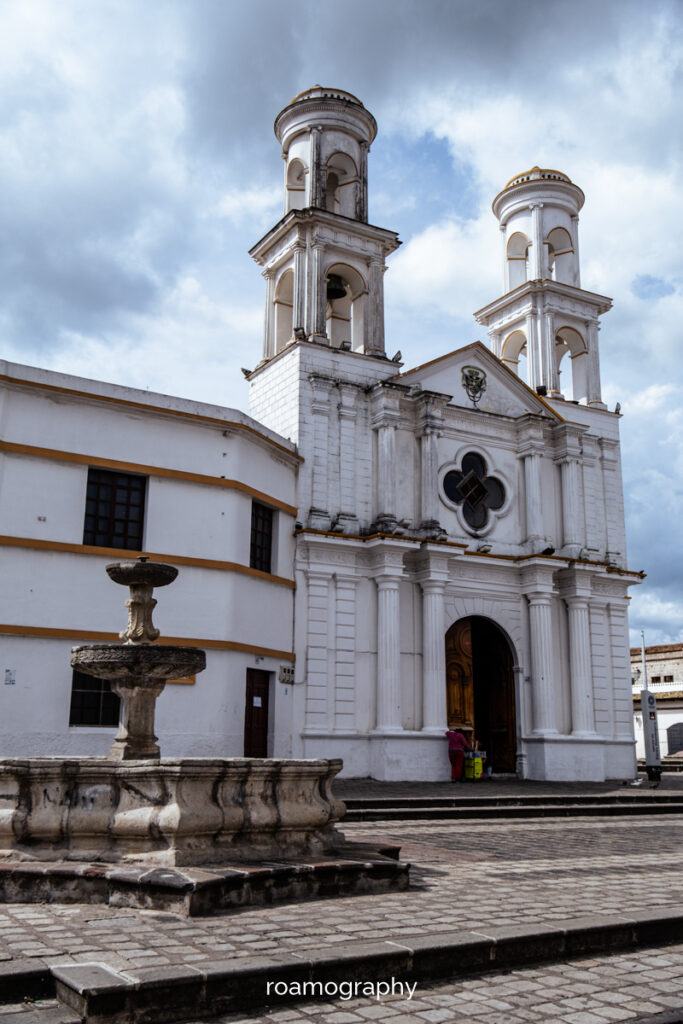
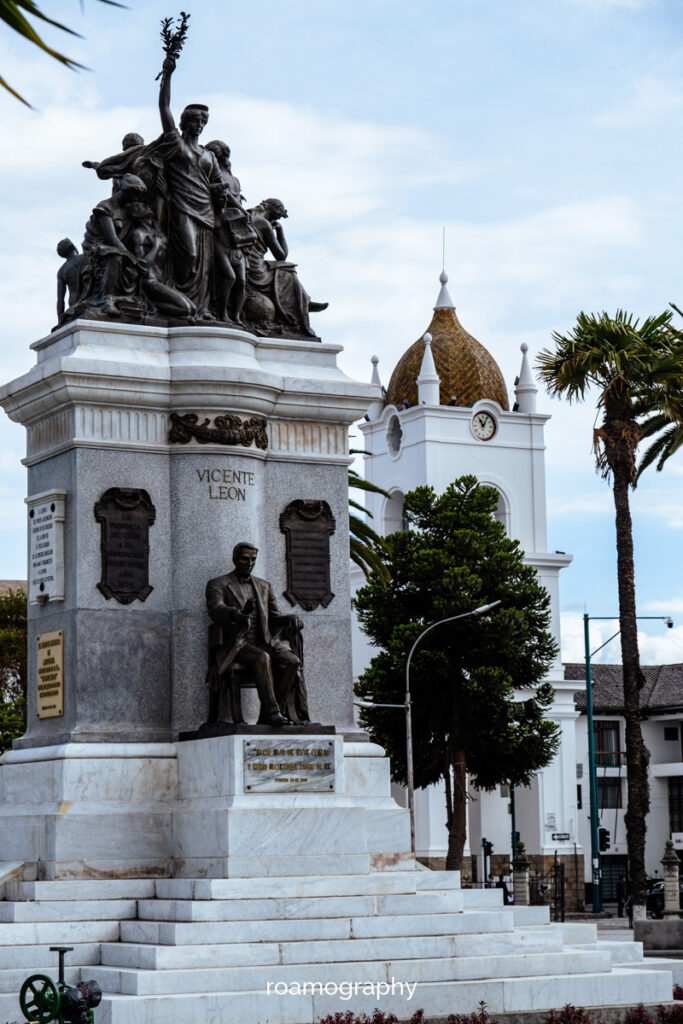
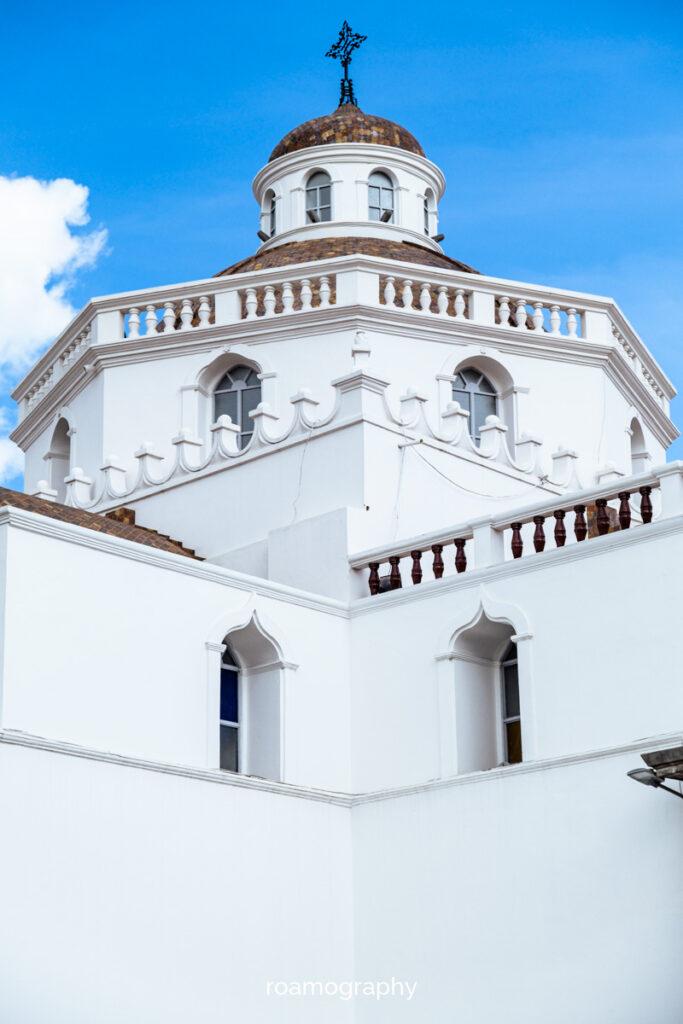

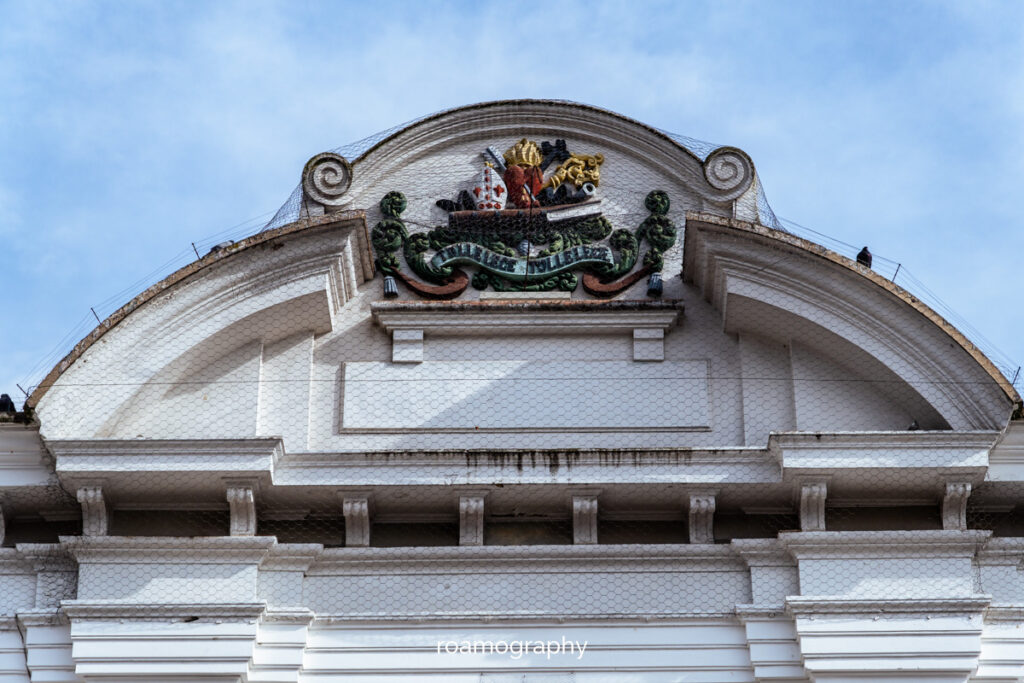
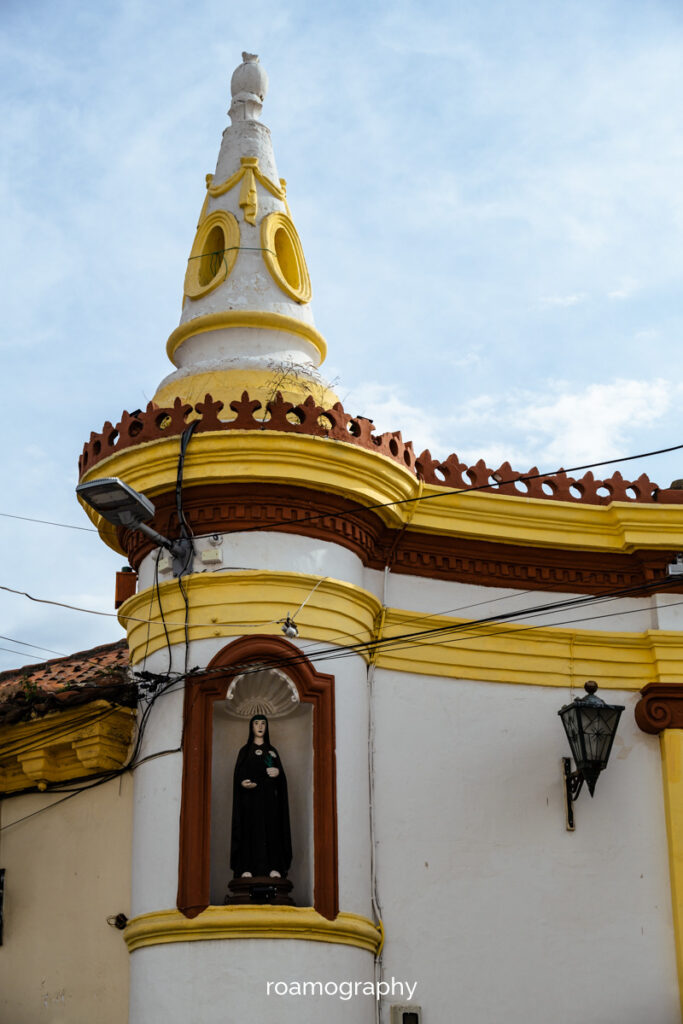

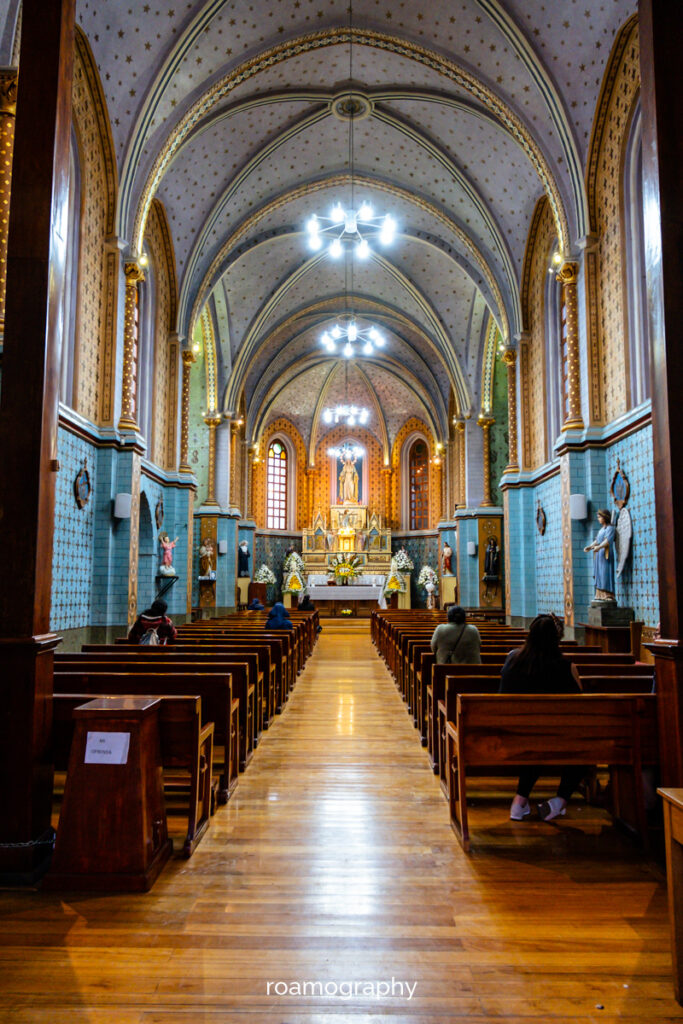

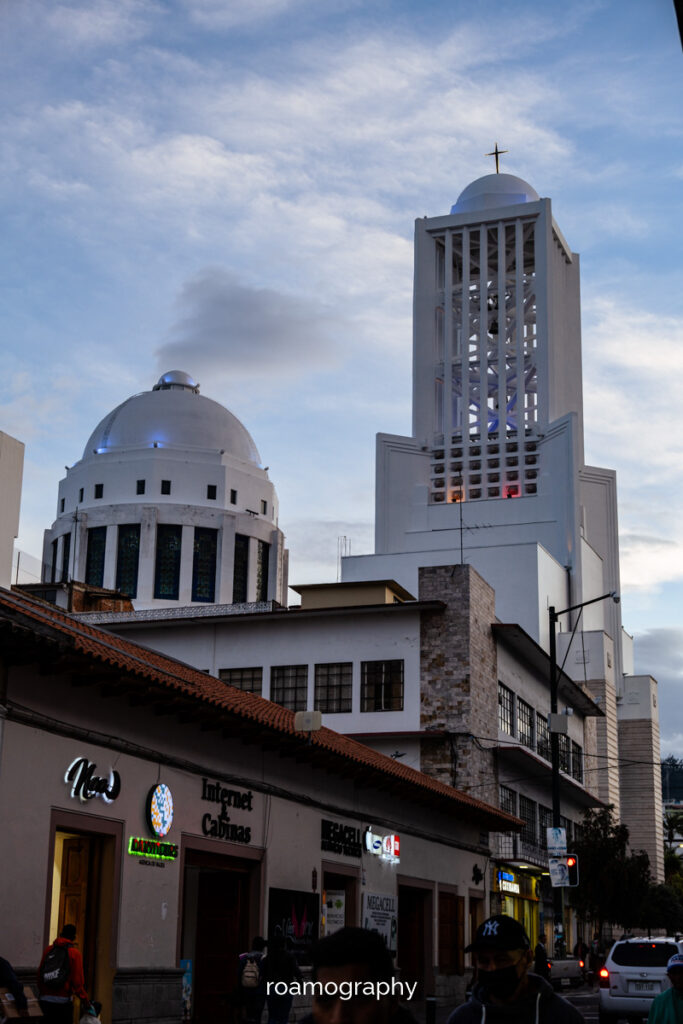
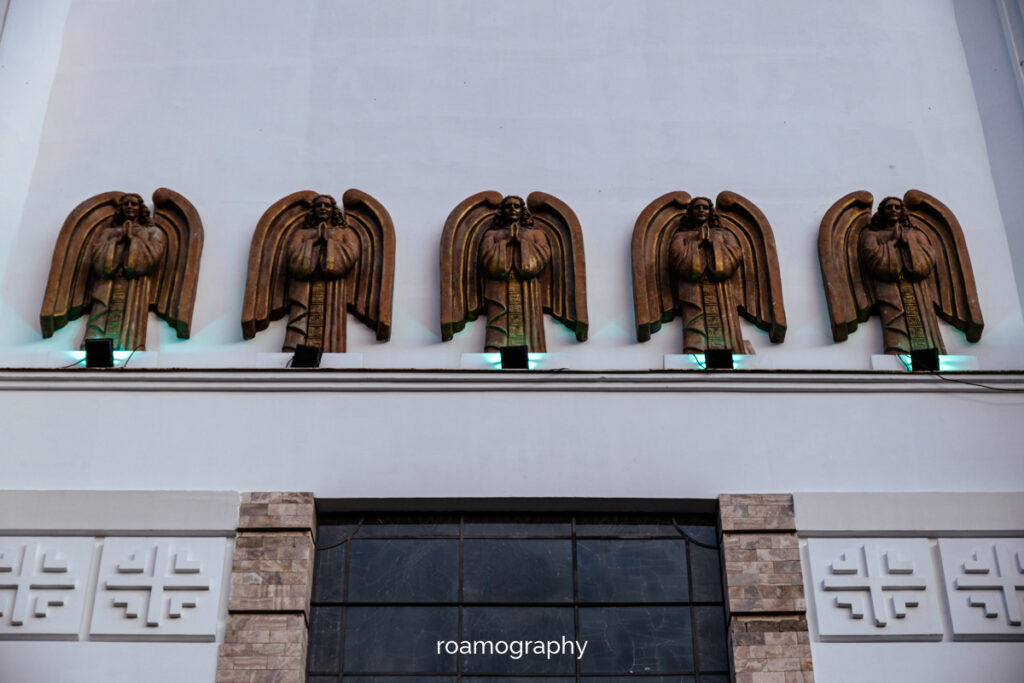
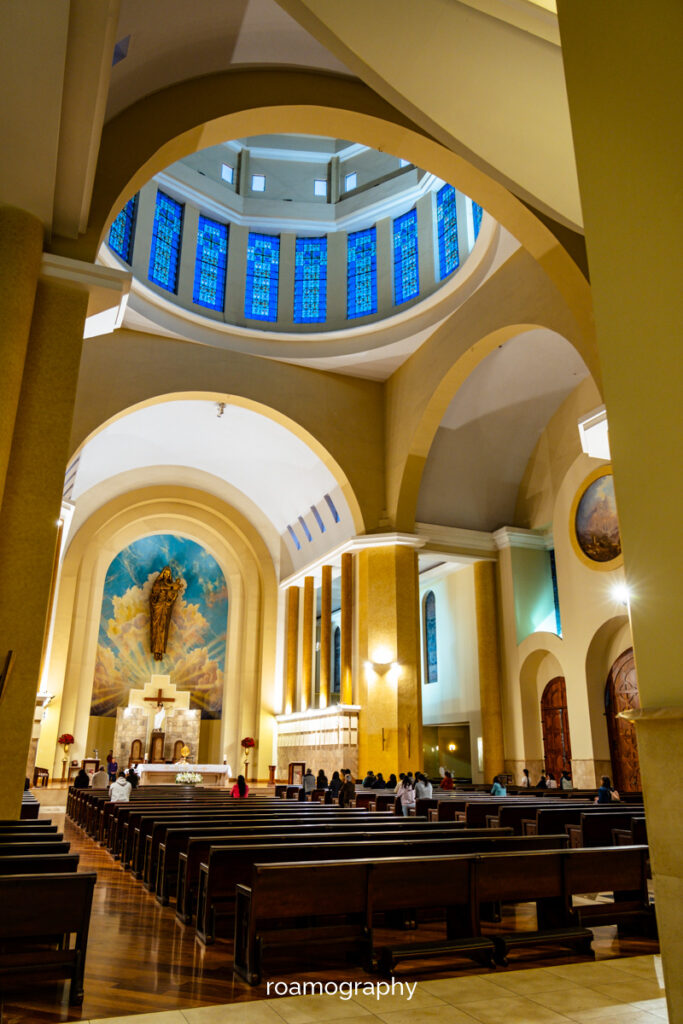
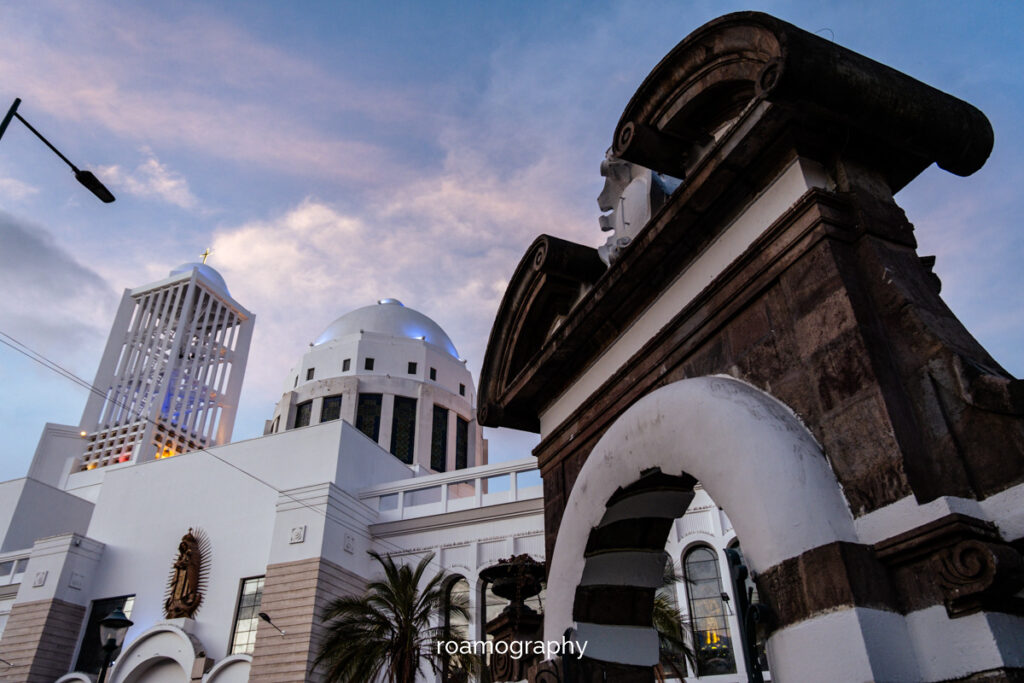
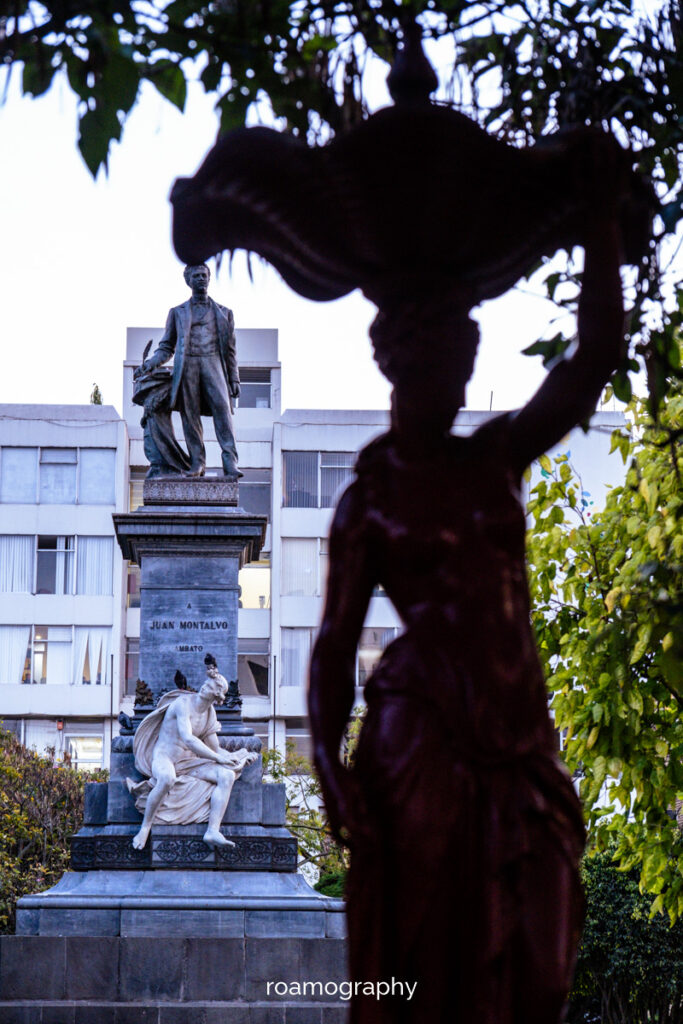
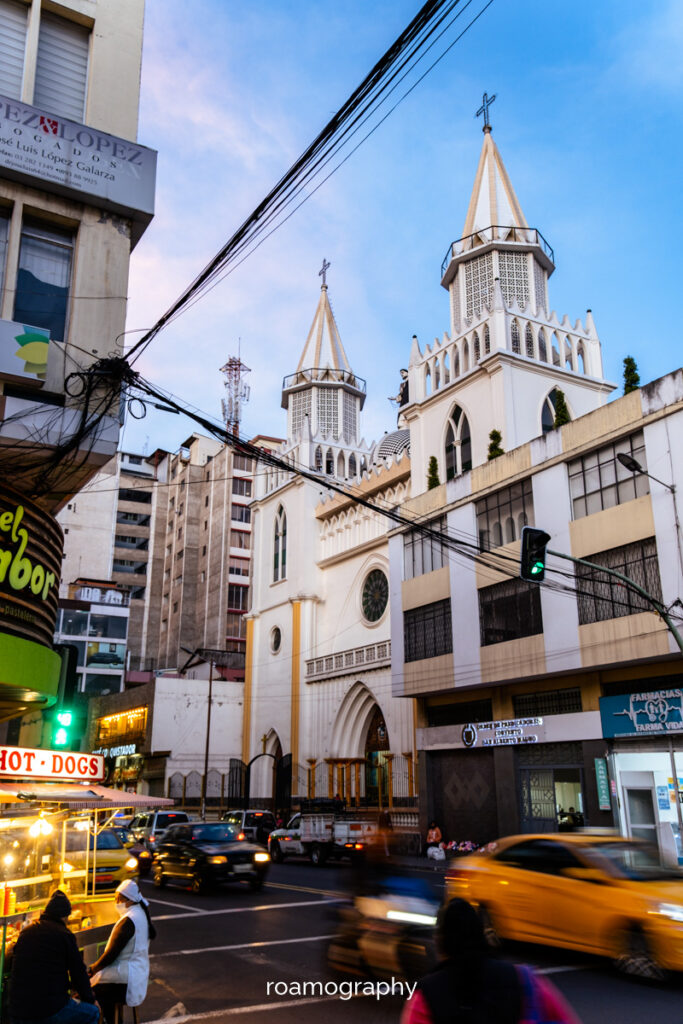
//back to top/do początku
Laguna Colta
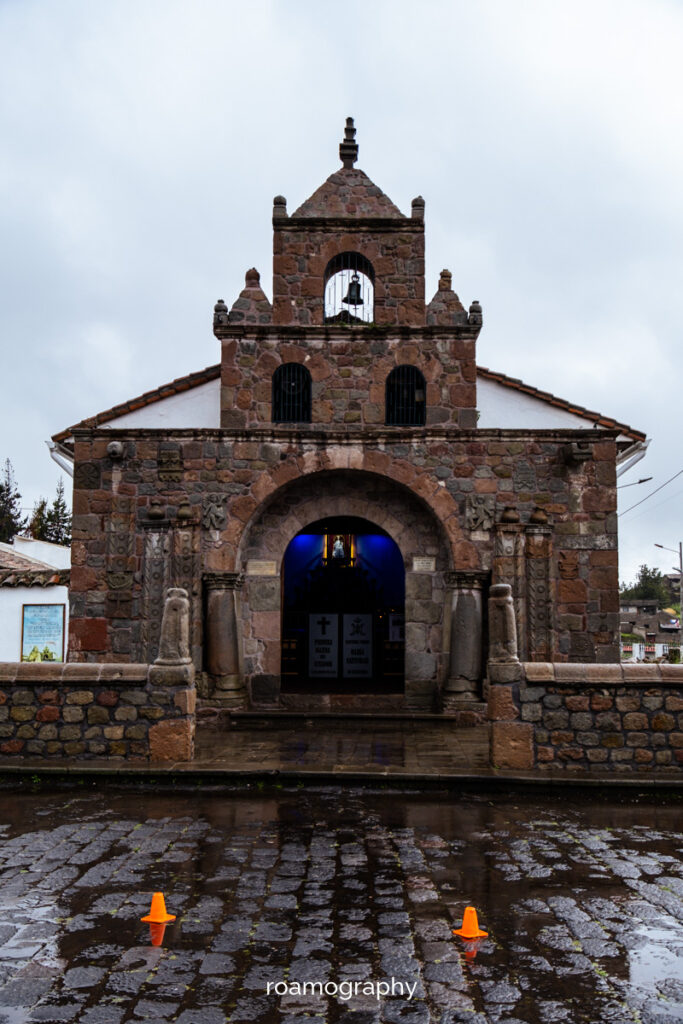
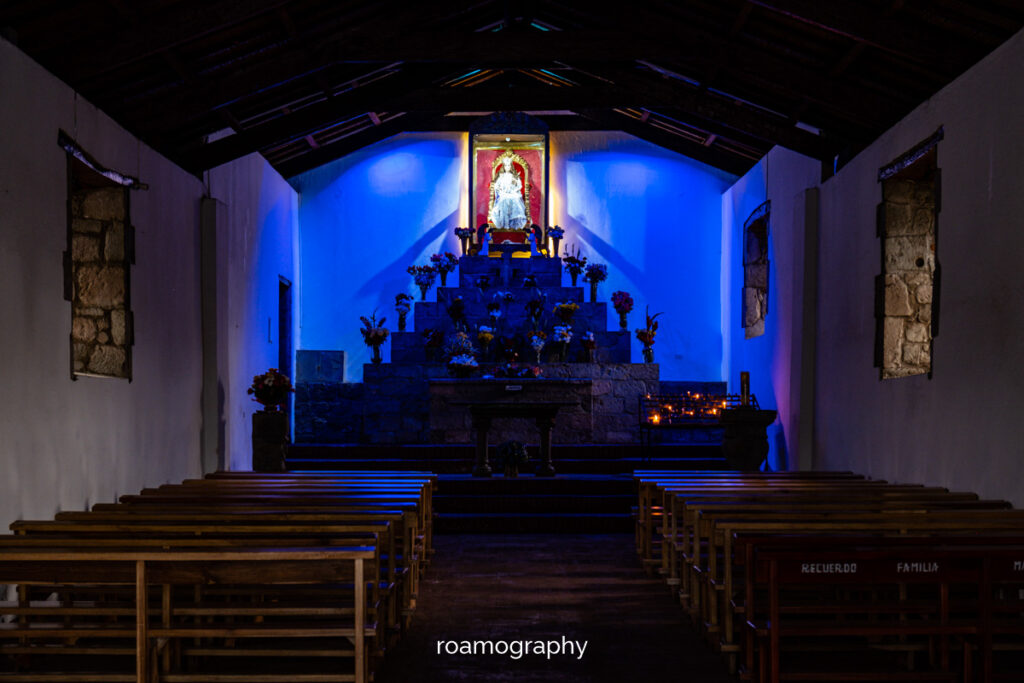
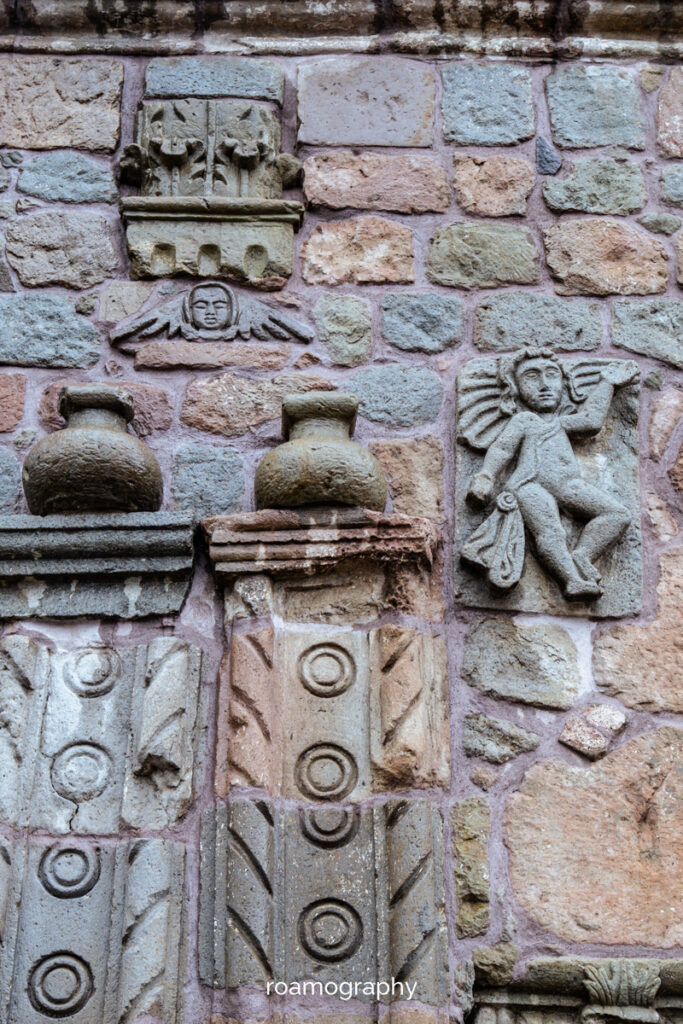
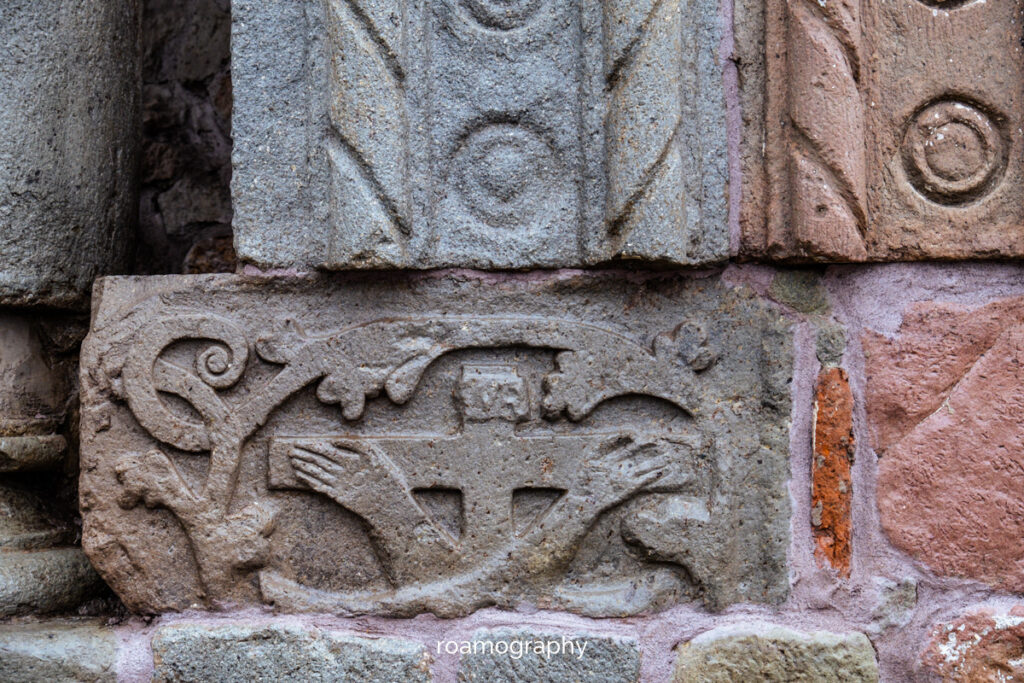
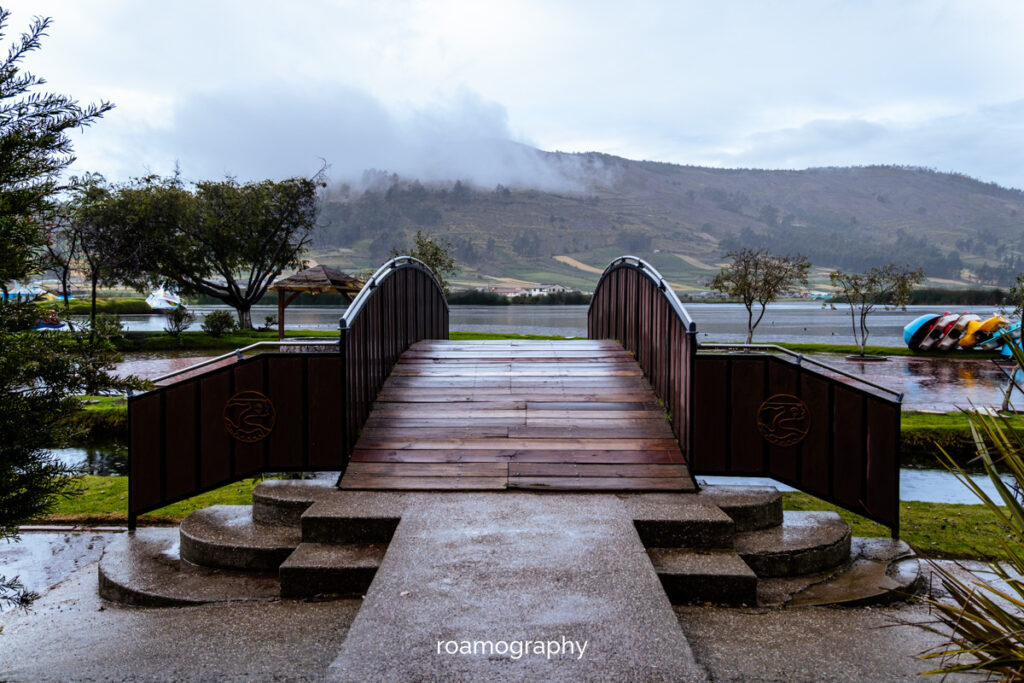
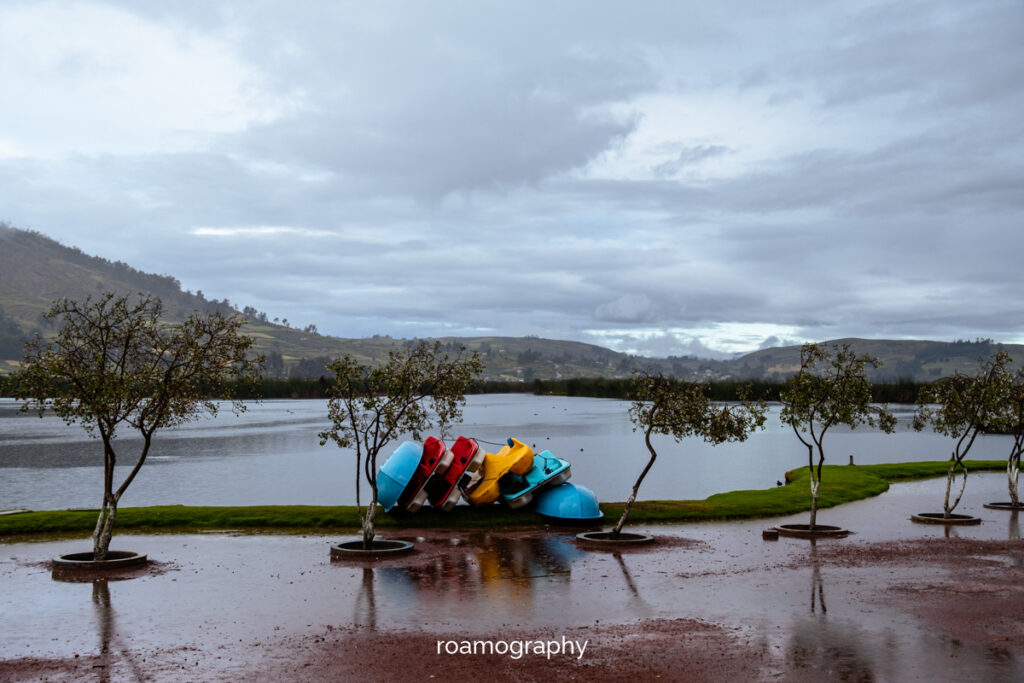

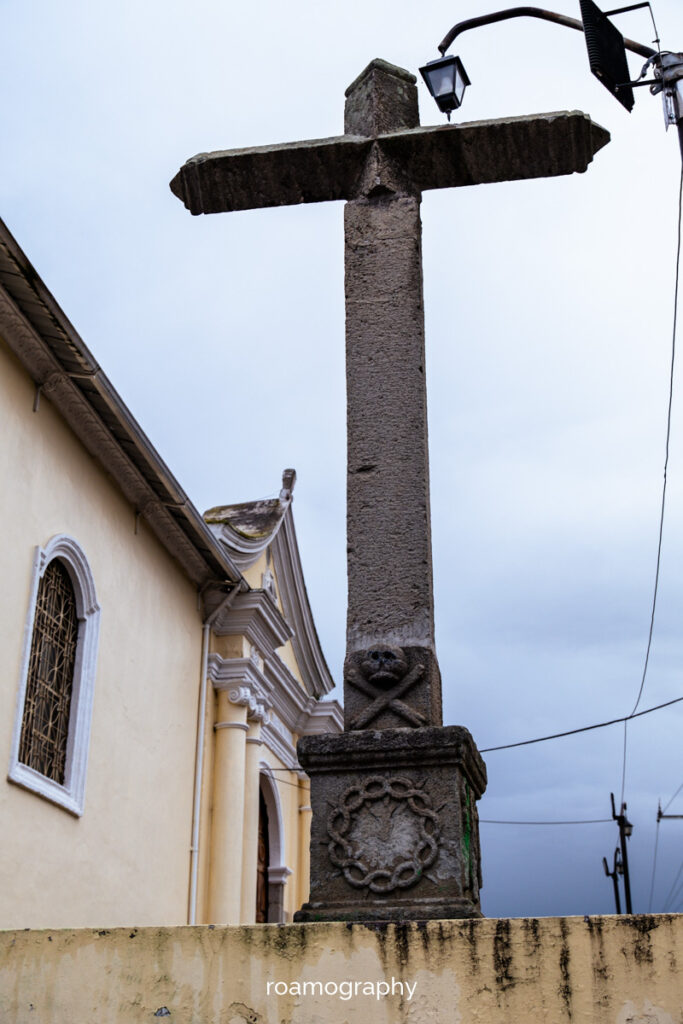
//back to top/do początku
Mindo
A nice break from the big city life is Mindo, a favourite weekend getaway for Quito residents. The town itself offers ample (though not necessarily the cheapest) accommodation, cafes, restaurants. But Mindo’s greatest strength lies in the beautiful nature that surrounds it (and sometimes blends harmoniously with it, such as in the case of our hotel Cabañas Armonía y Jardín de Orquídeas). There’s a river and waterfalls, butterfly gardens, private nature reserves, hummingbirds, toucans (the most fairy-taley ones – the plate-billed toucans – can be admired a fair bit from Mindo, at higher altitudes) as well as all kinds of other colourful birds.
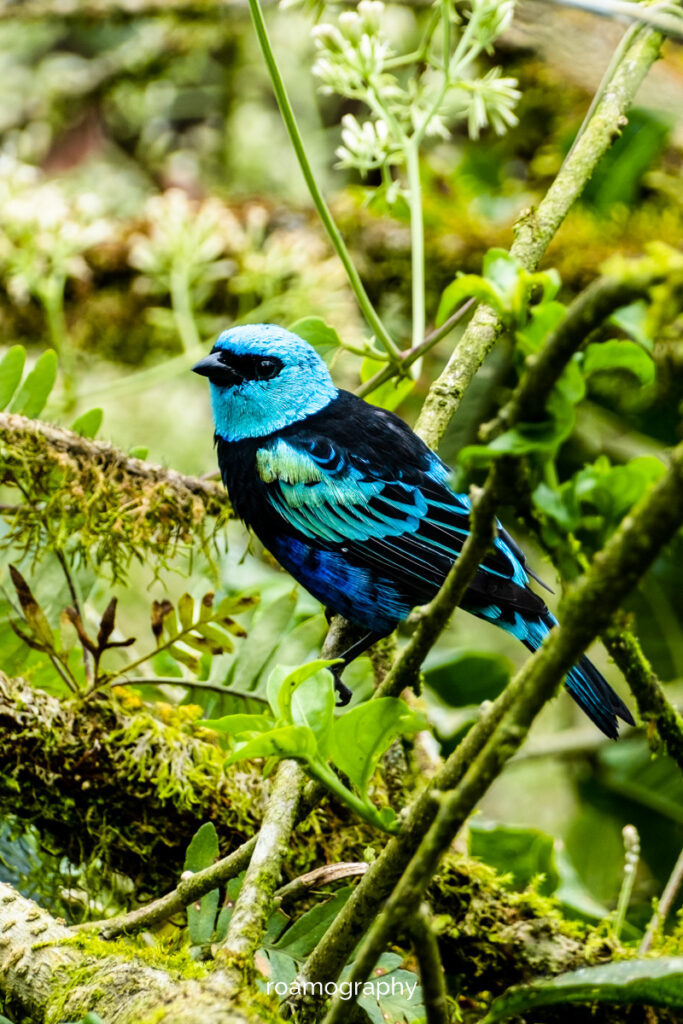
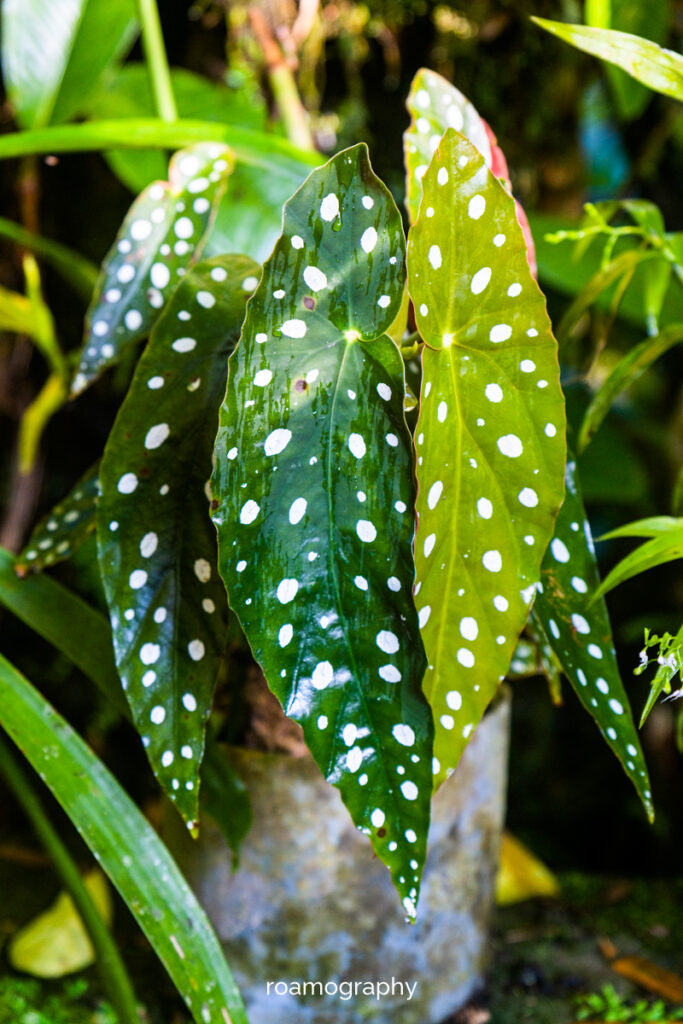
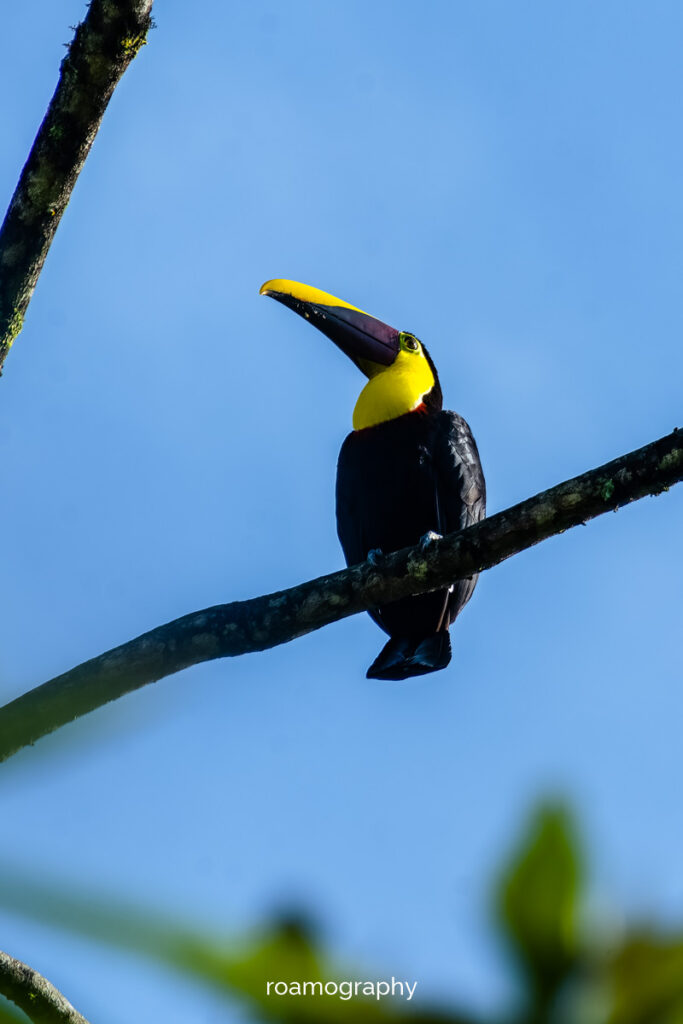
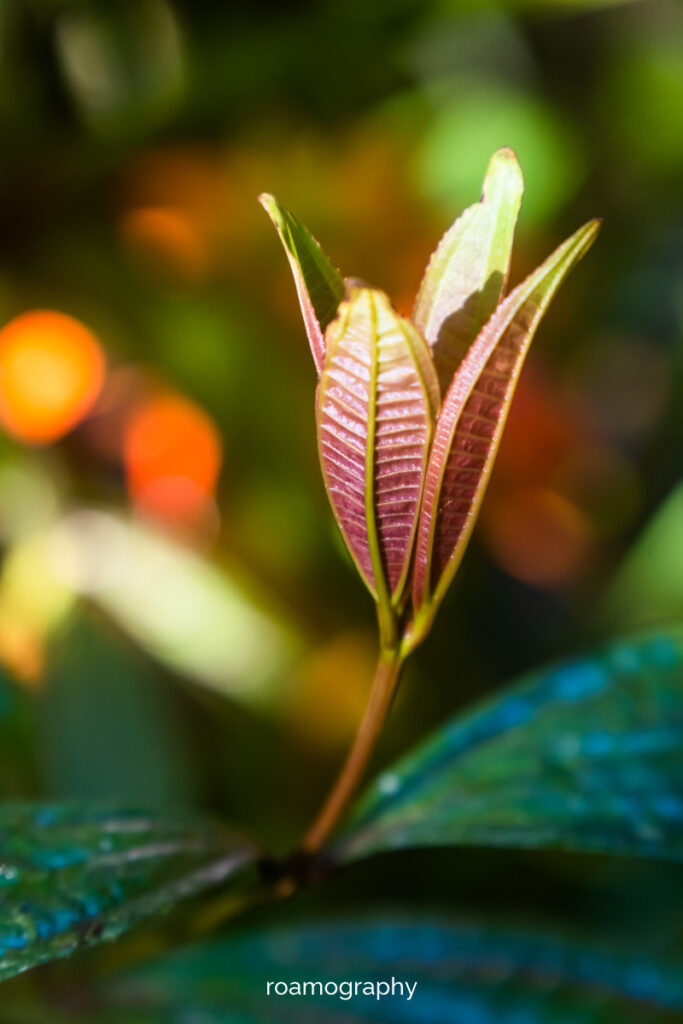
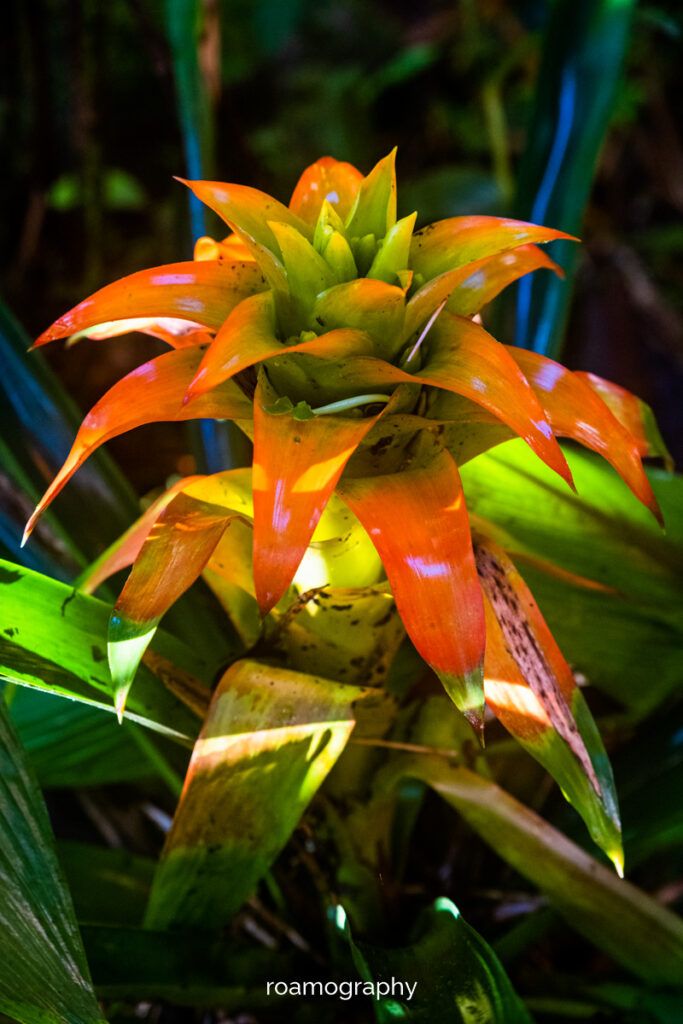
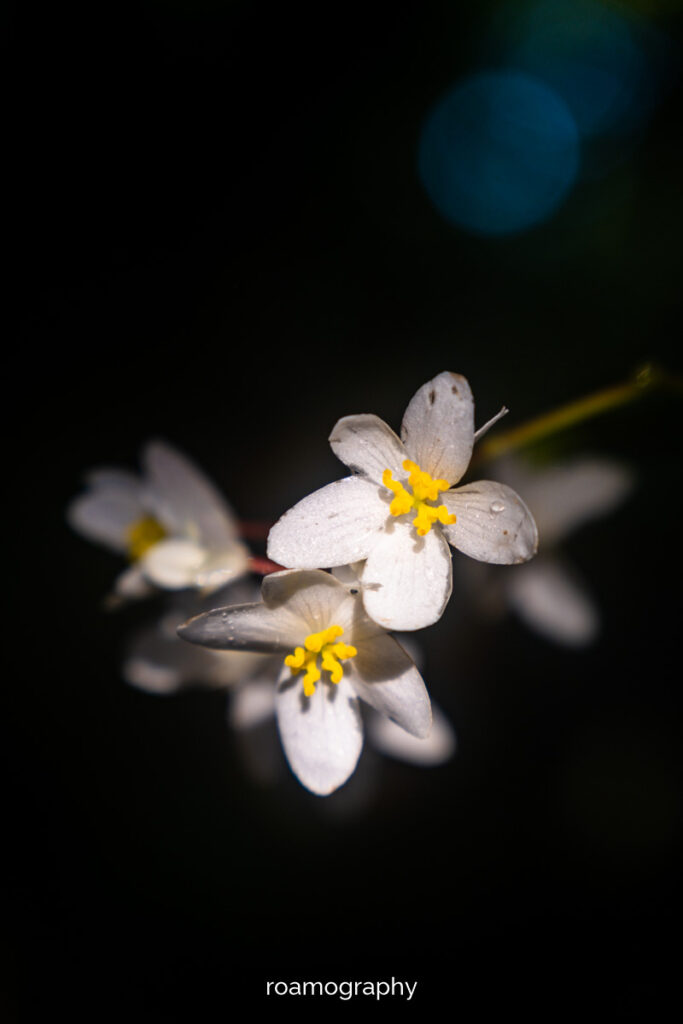
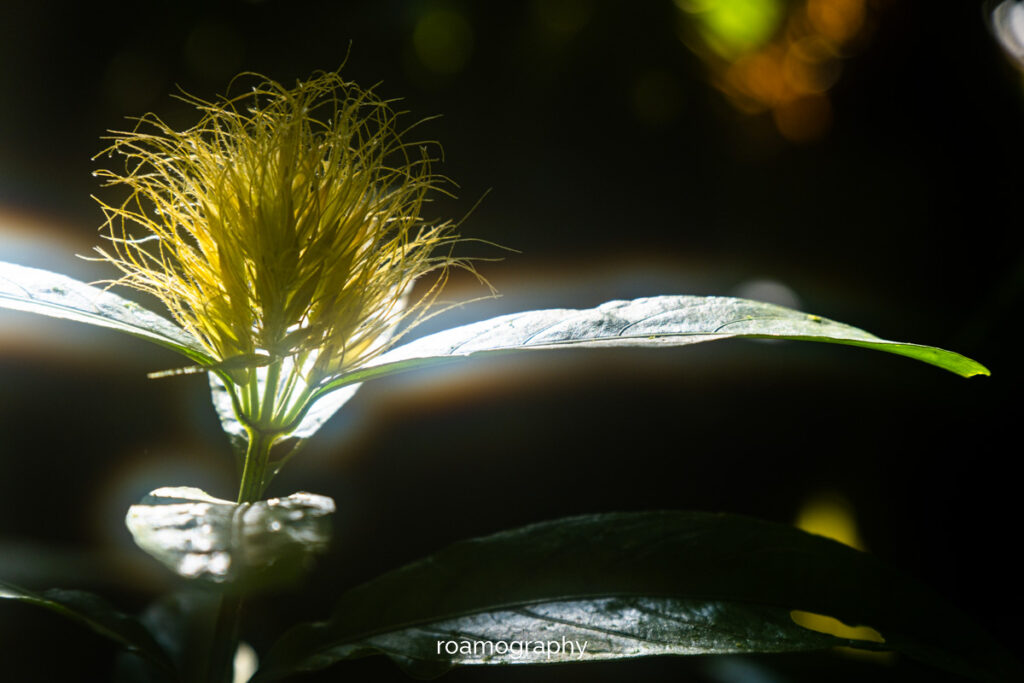
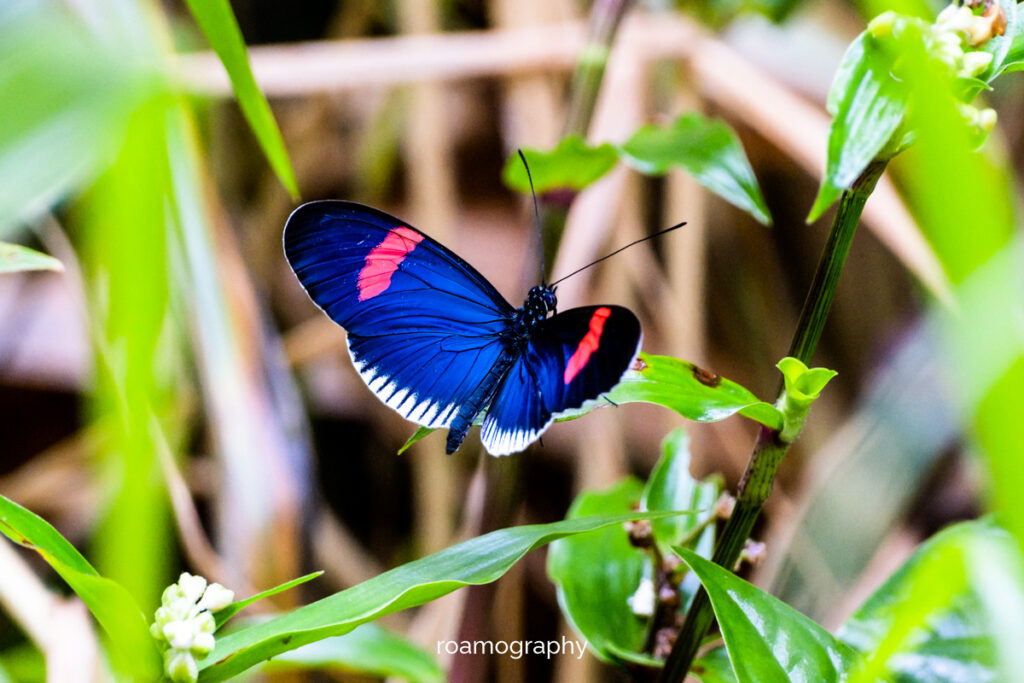
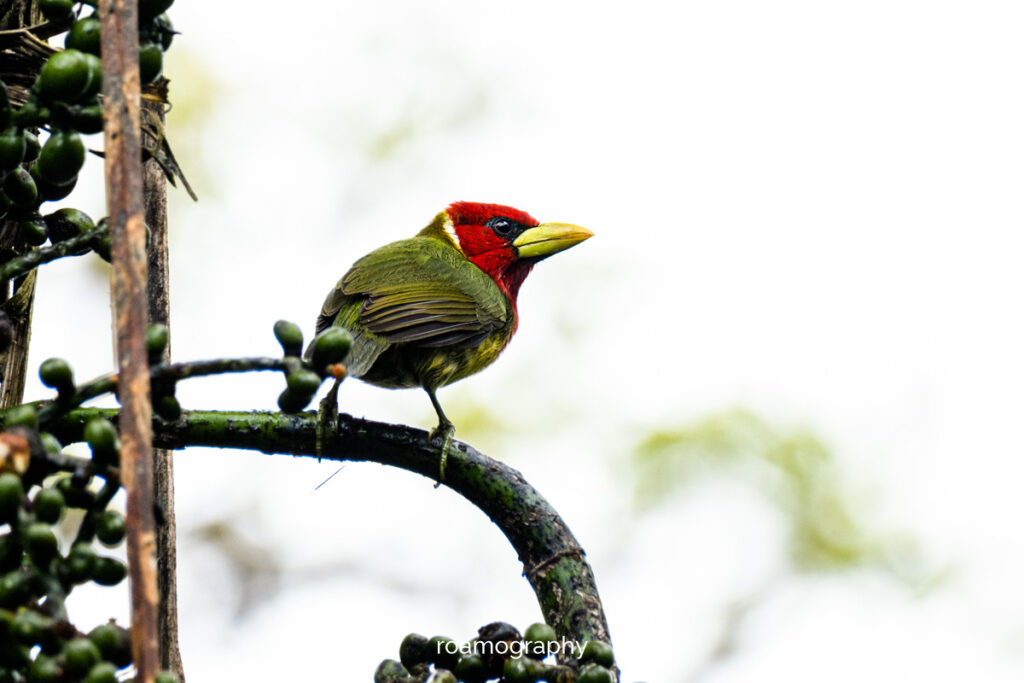
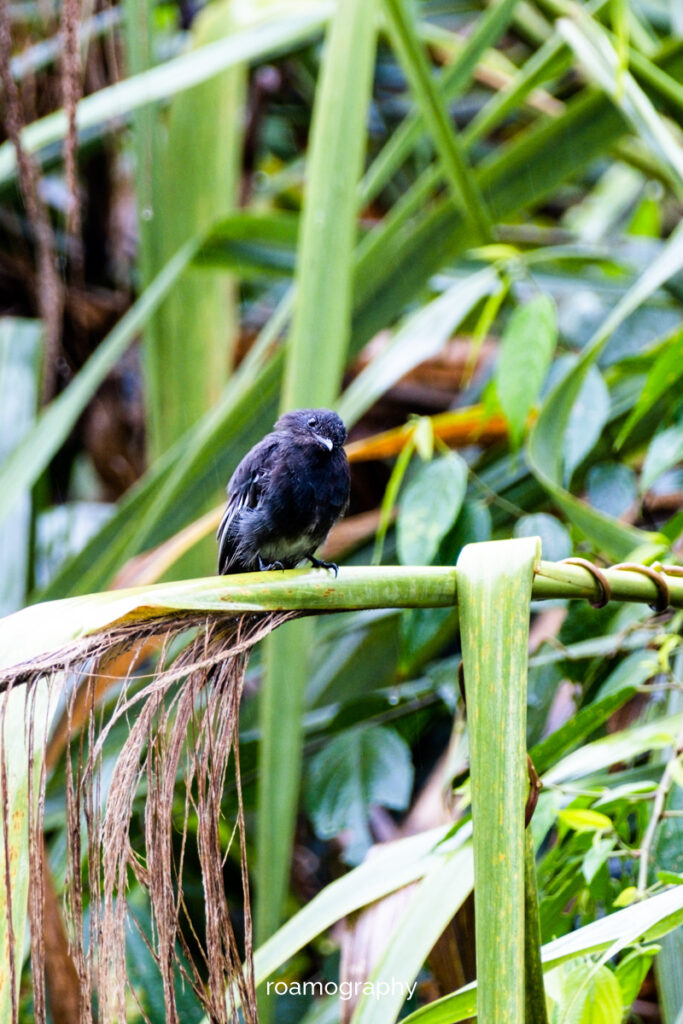
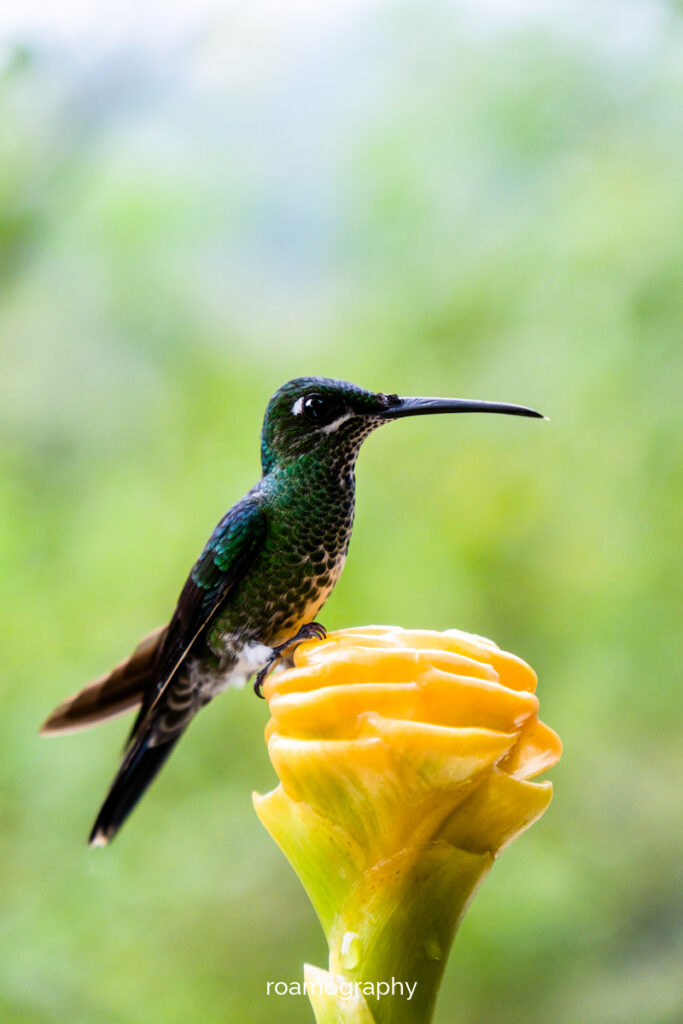
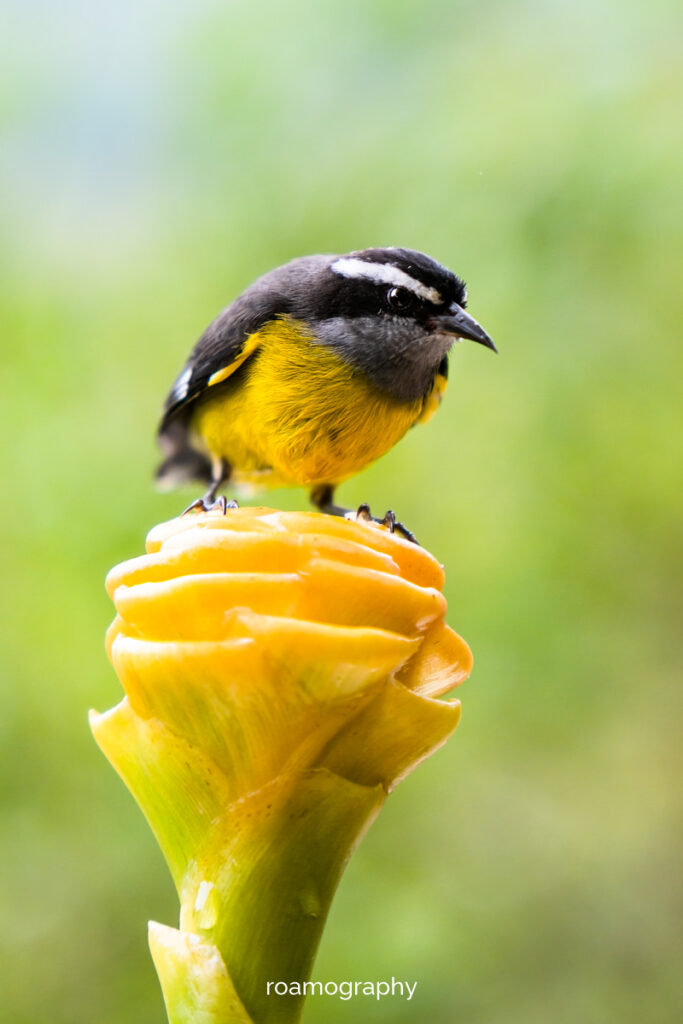
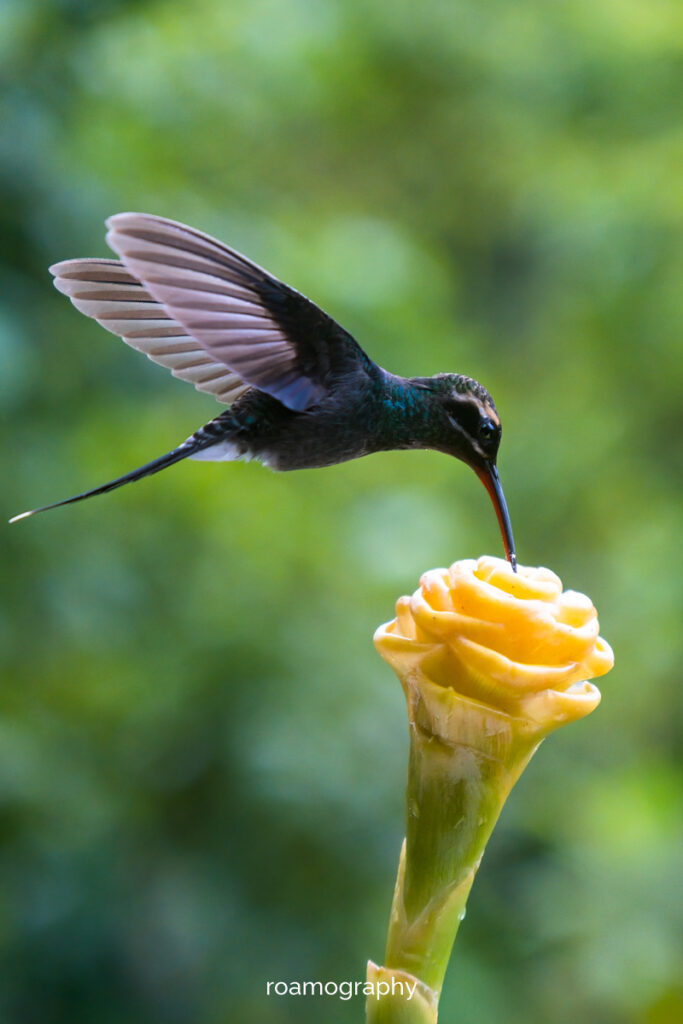
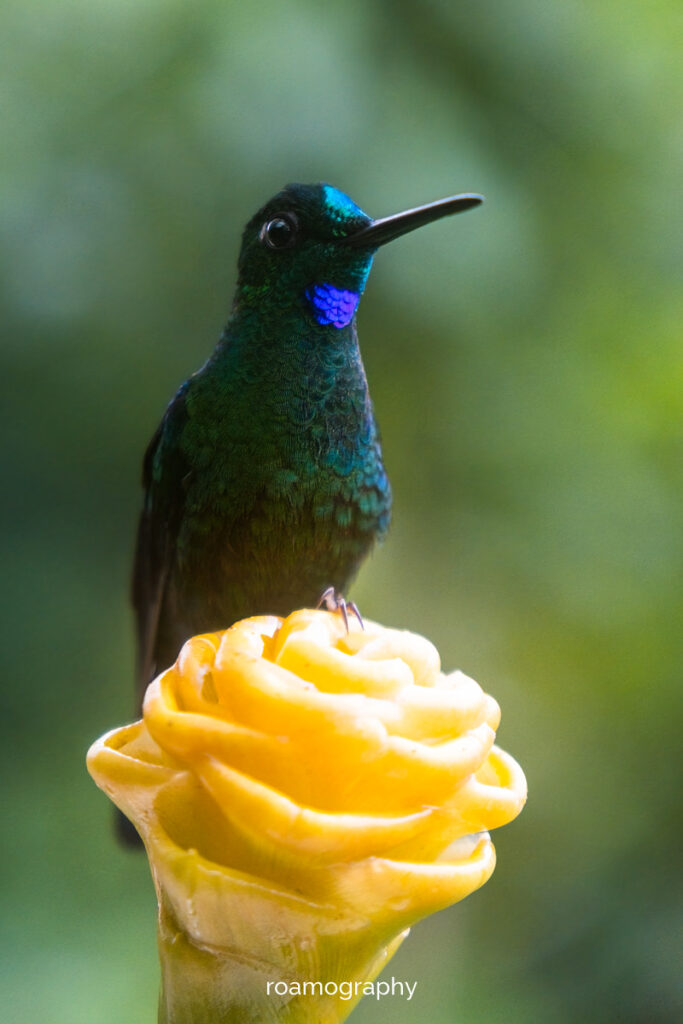

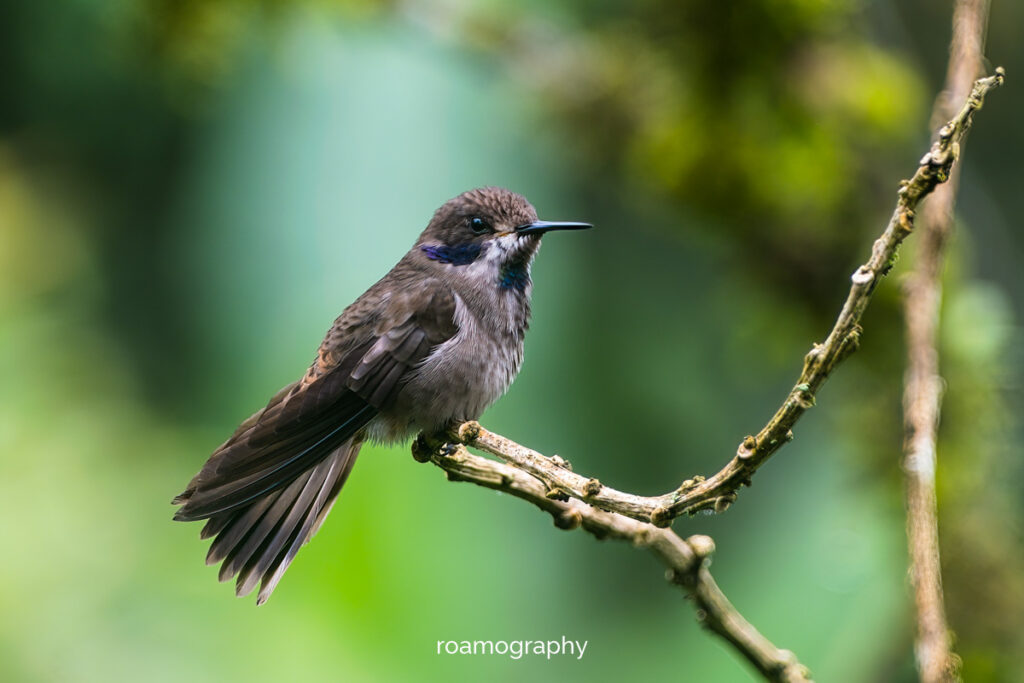
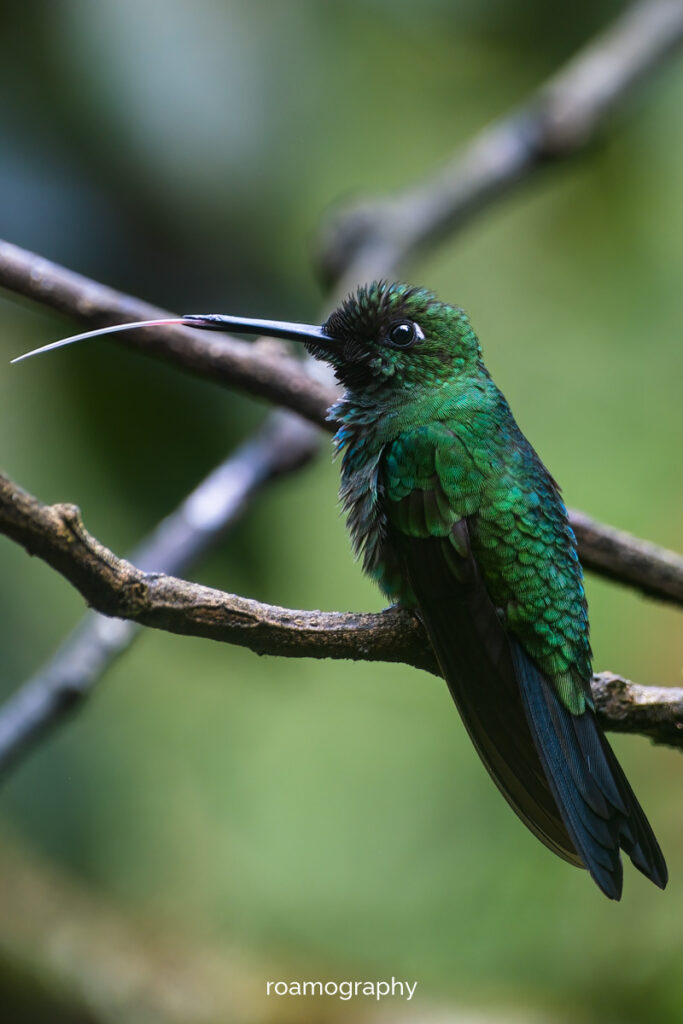
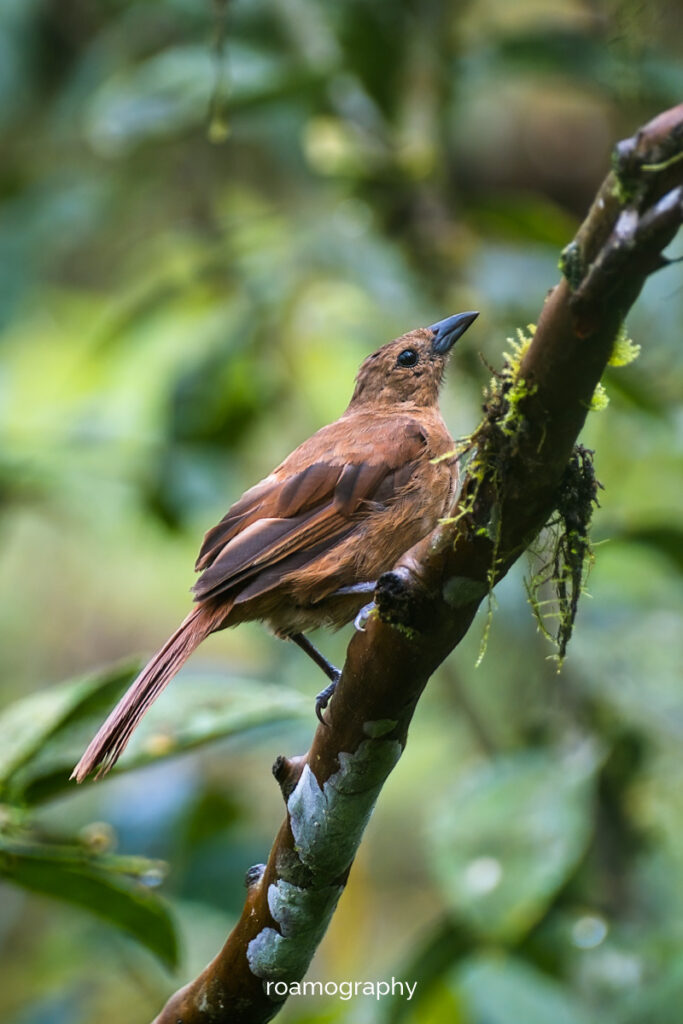
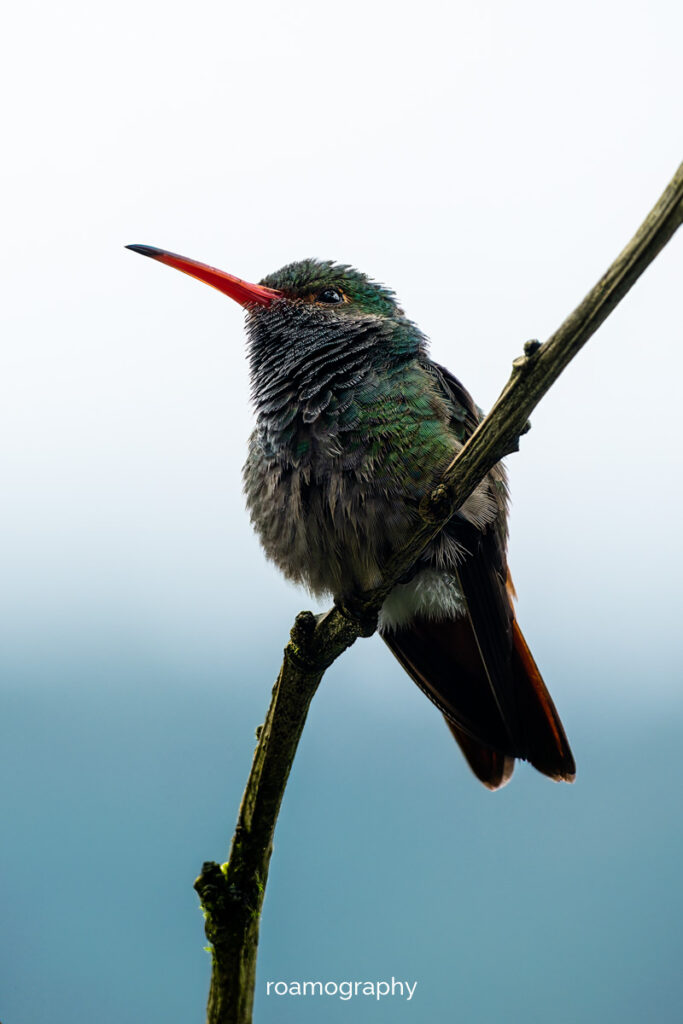
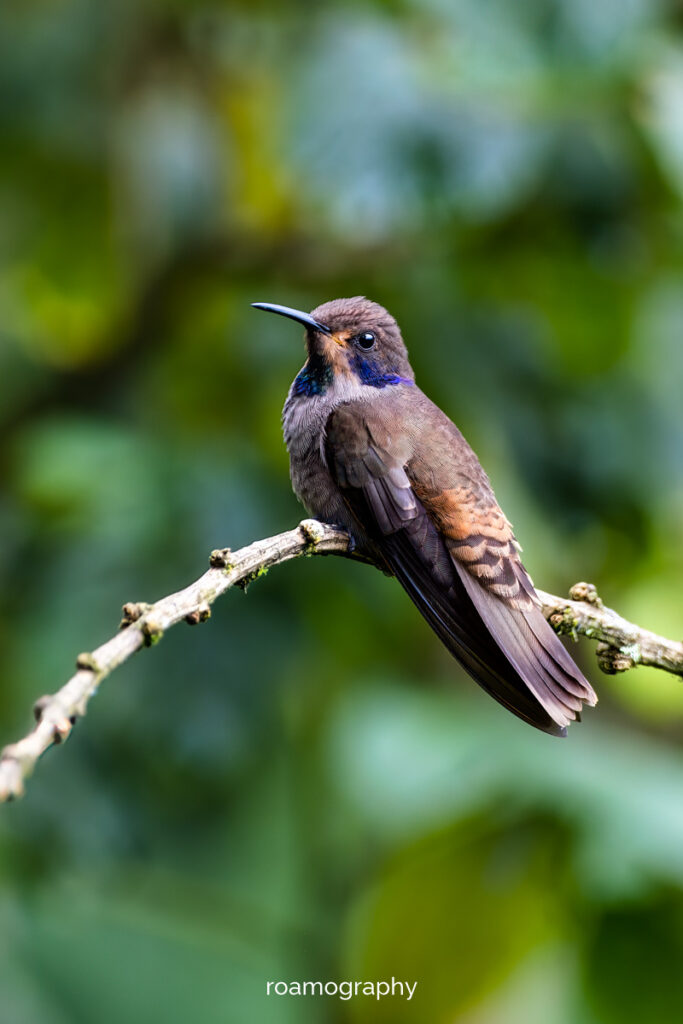
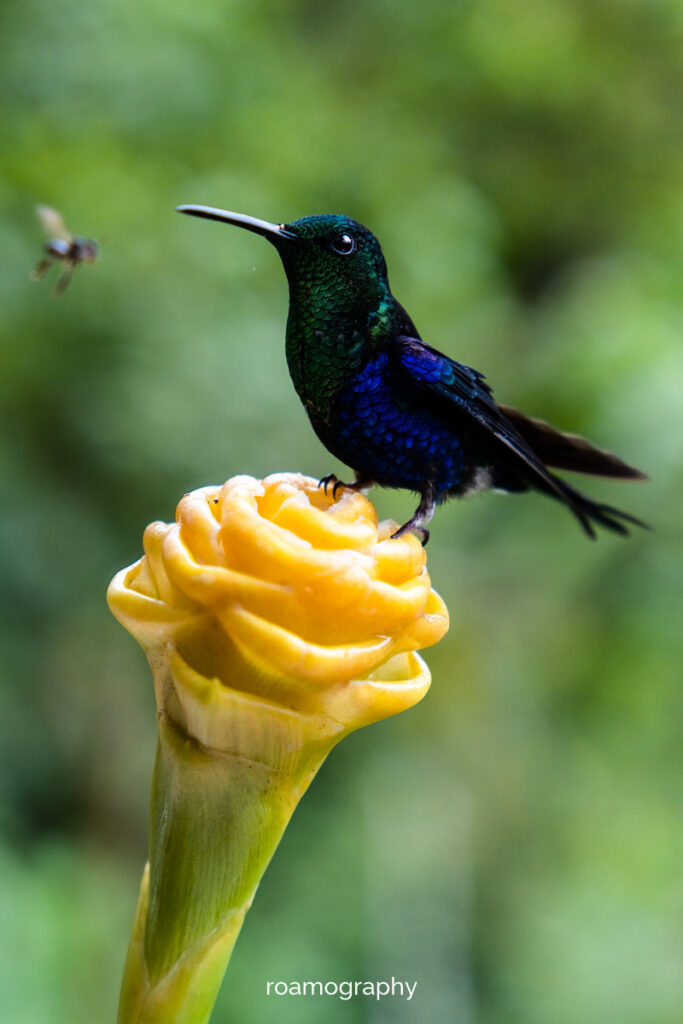

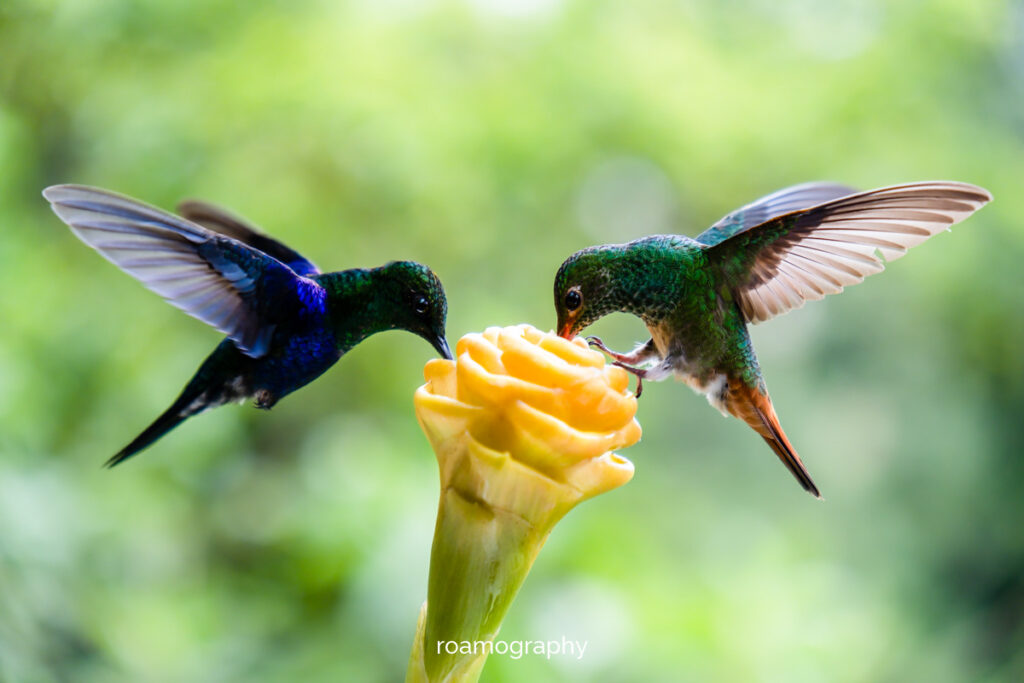
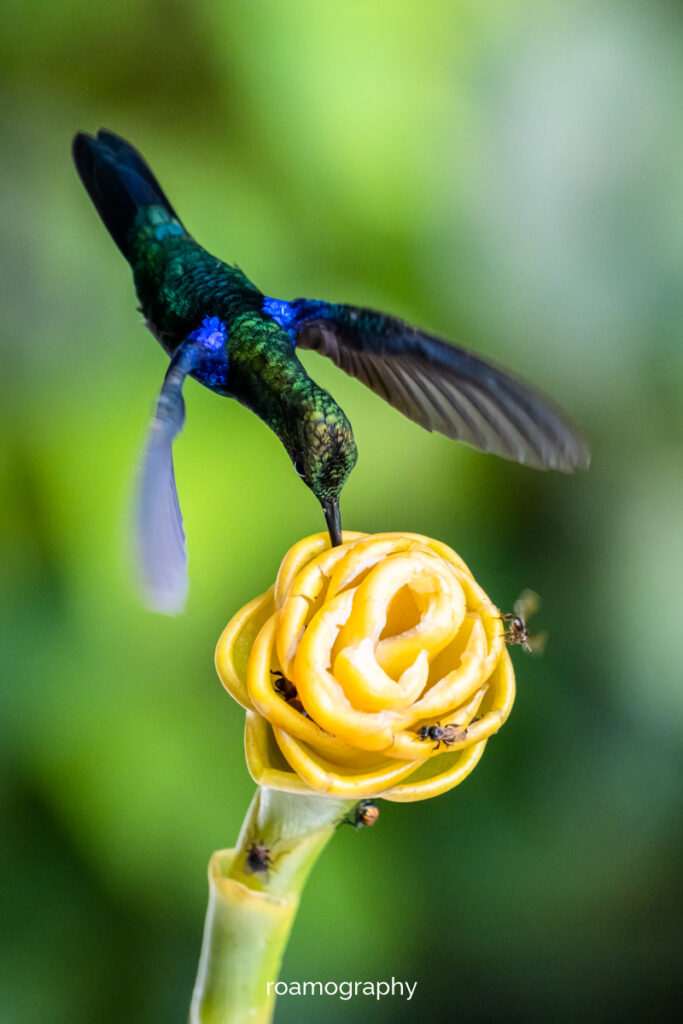
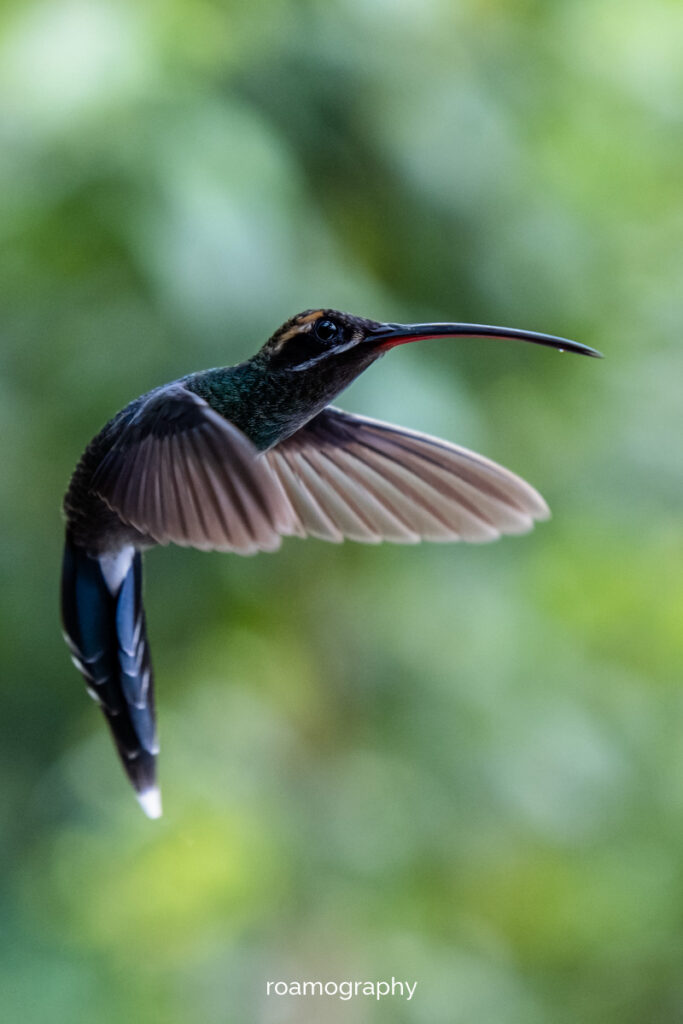
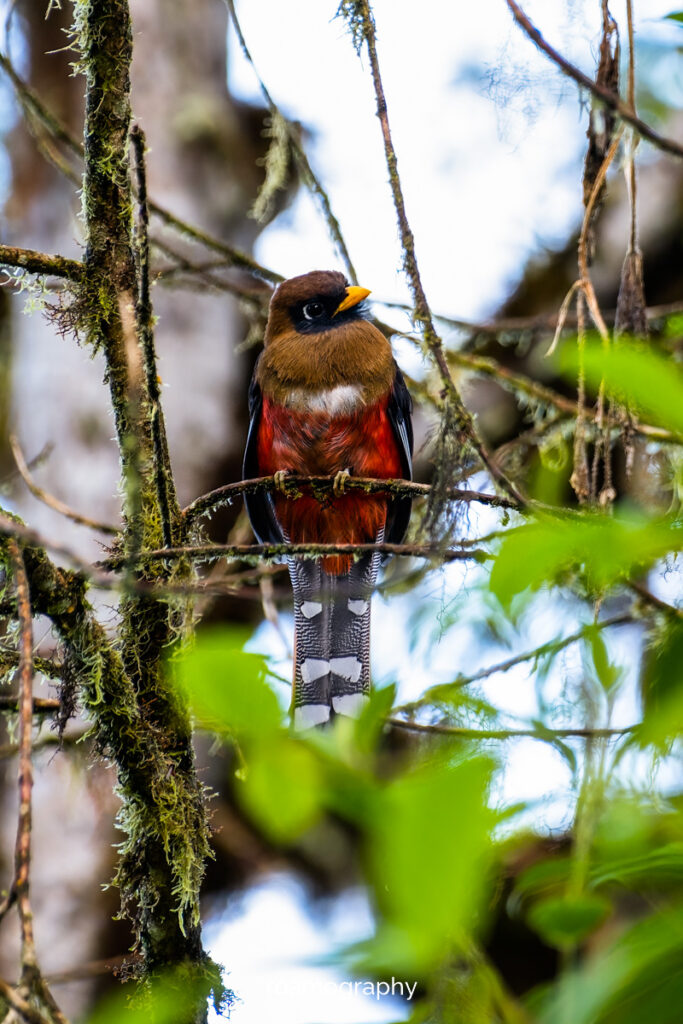
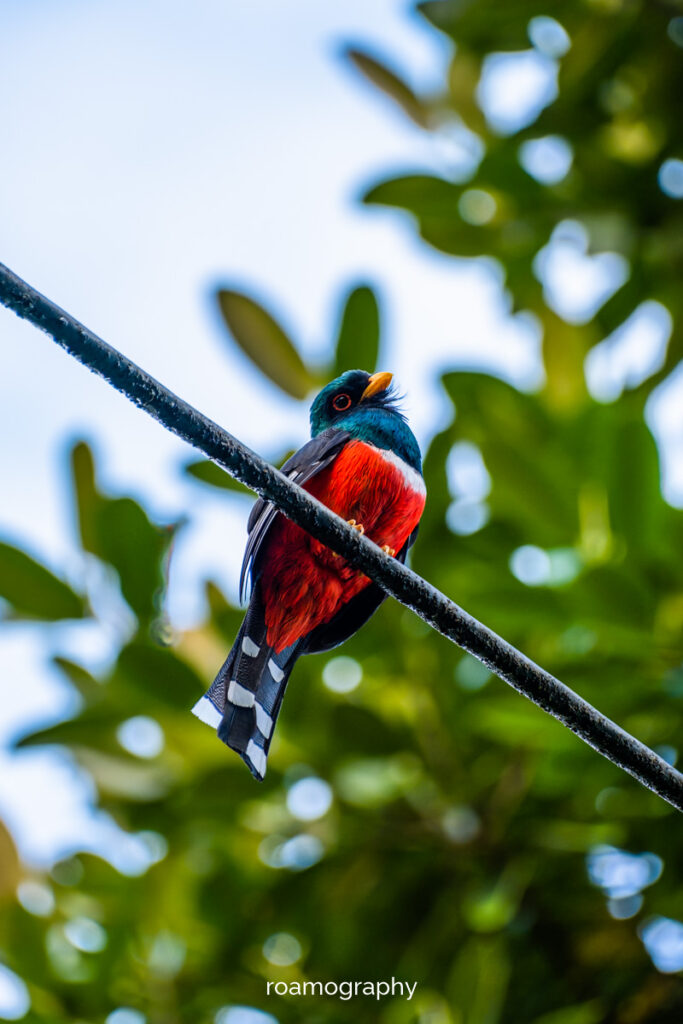
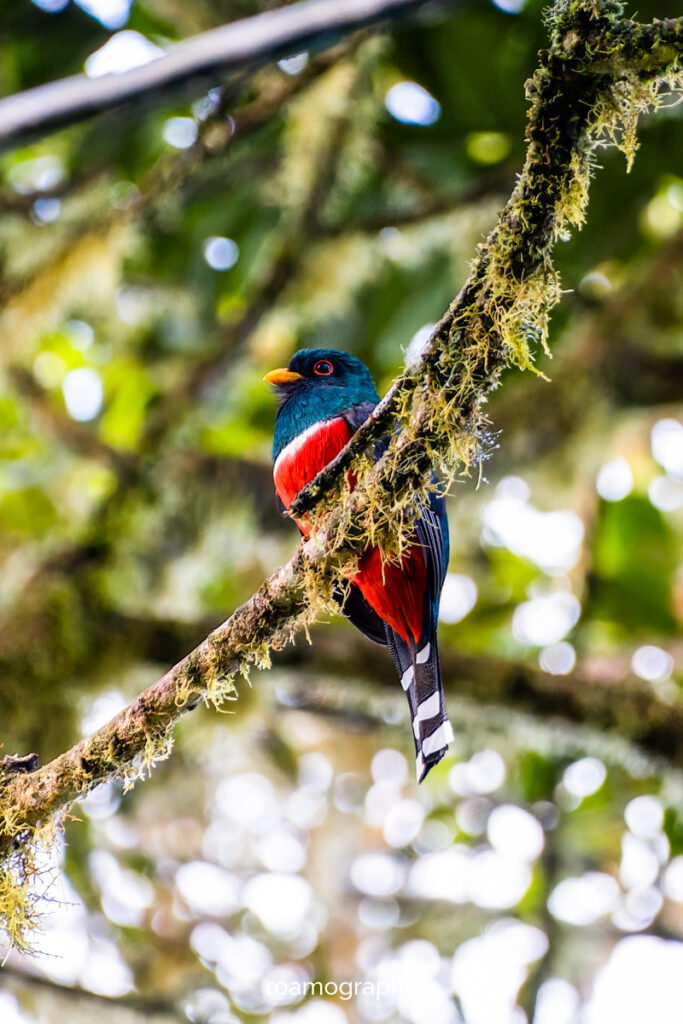
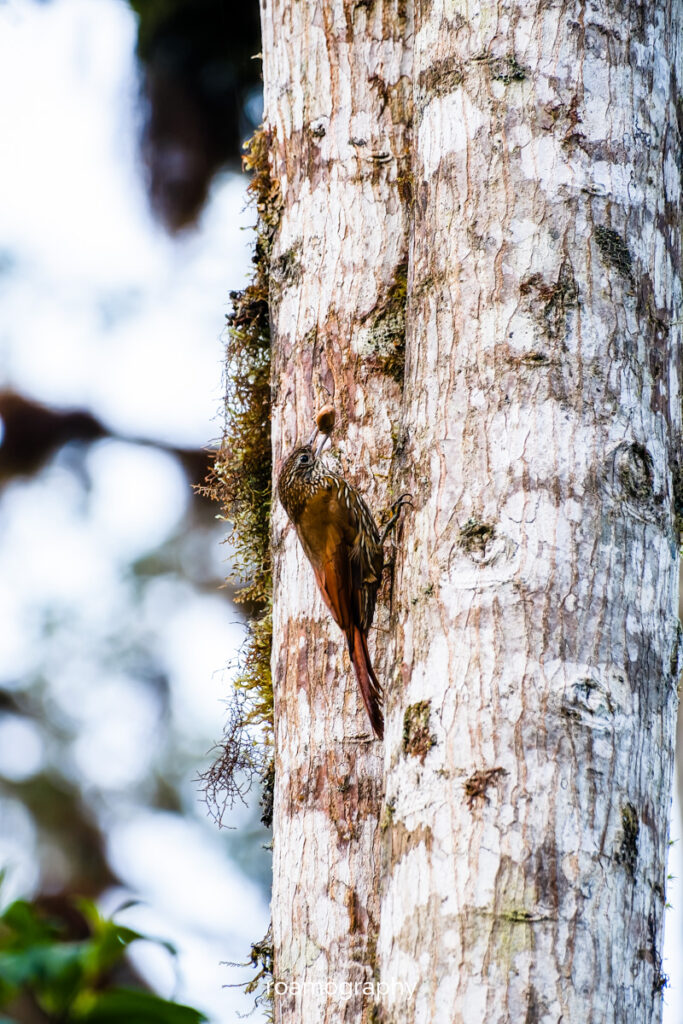
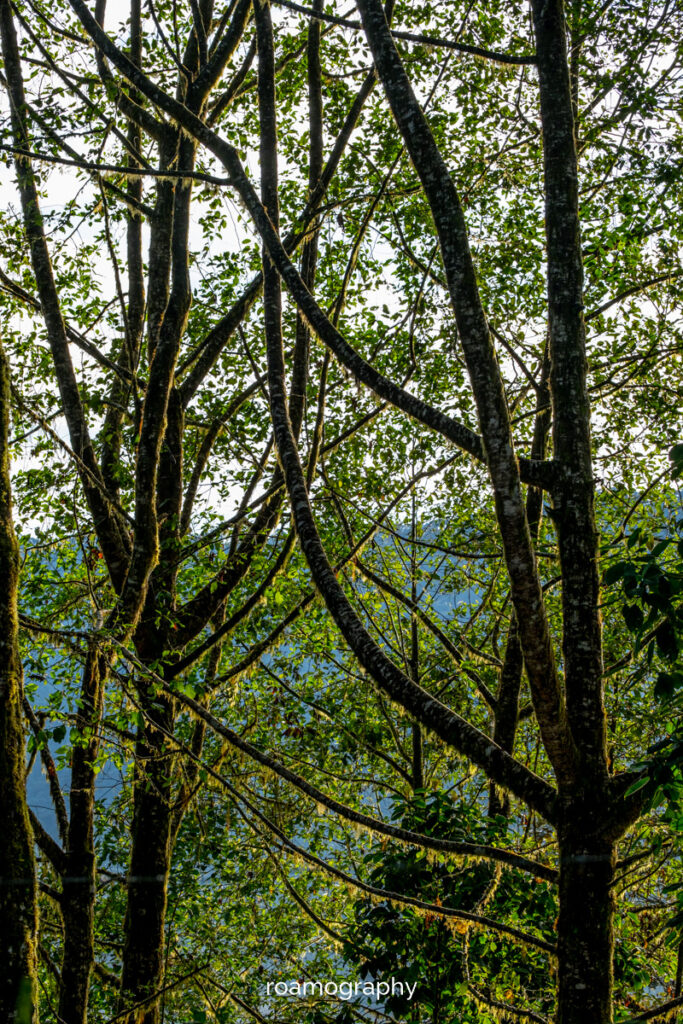
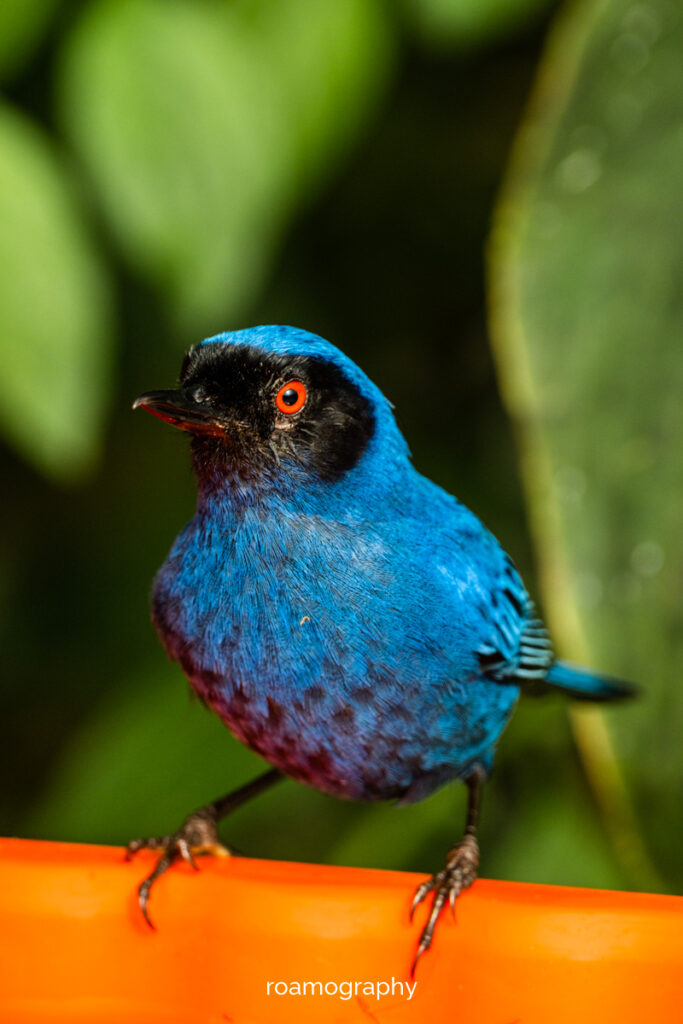
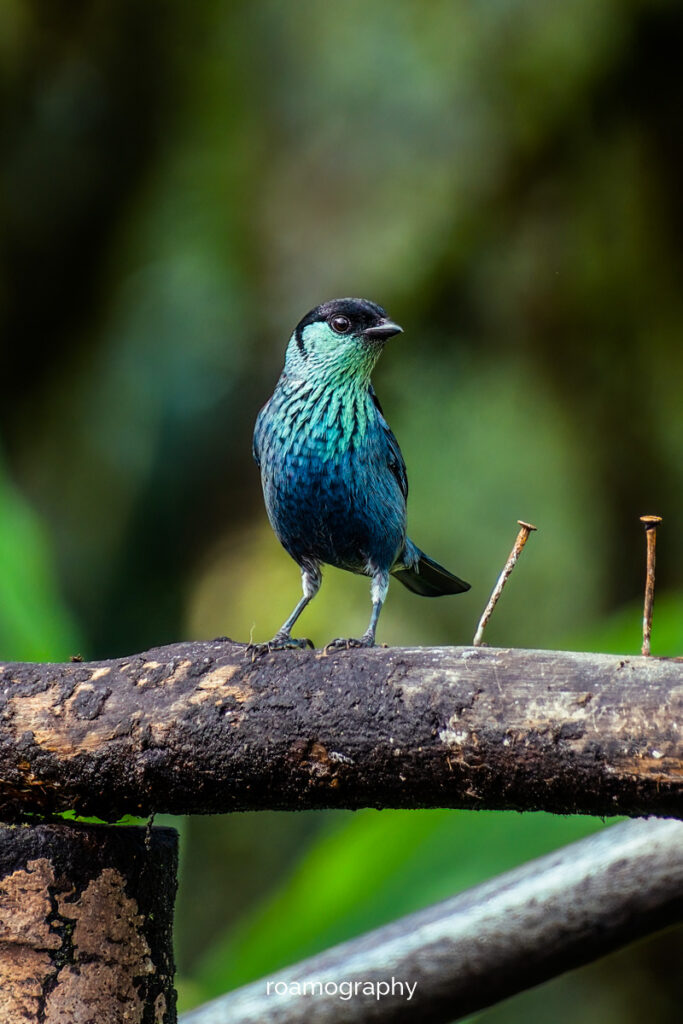
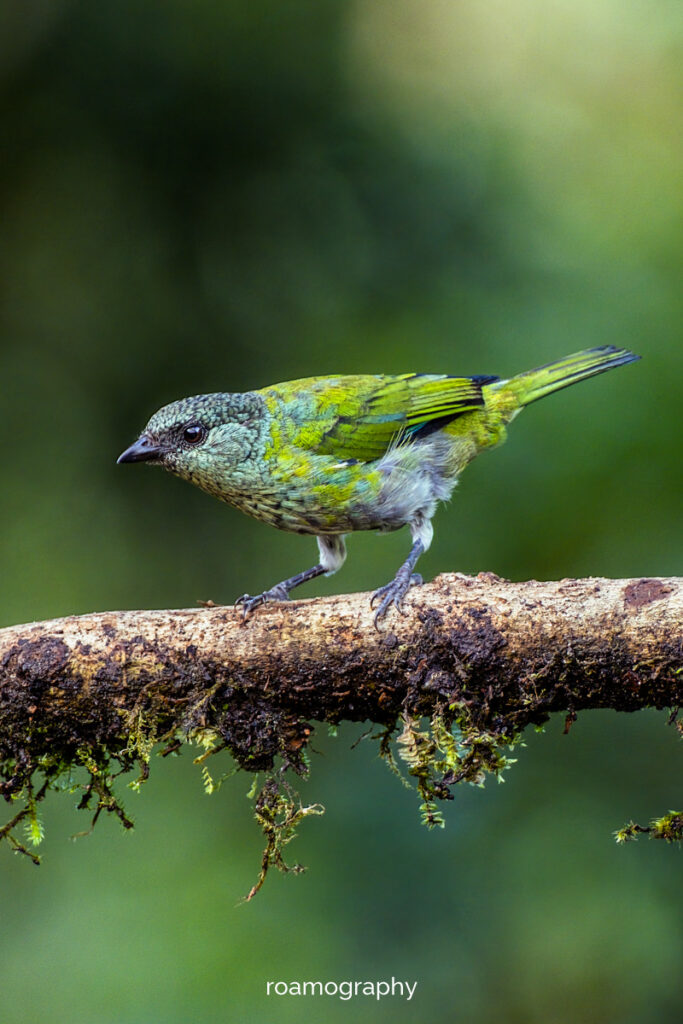
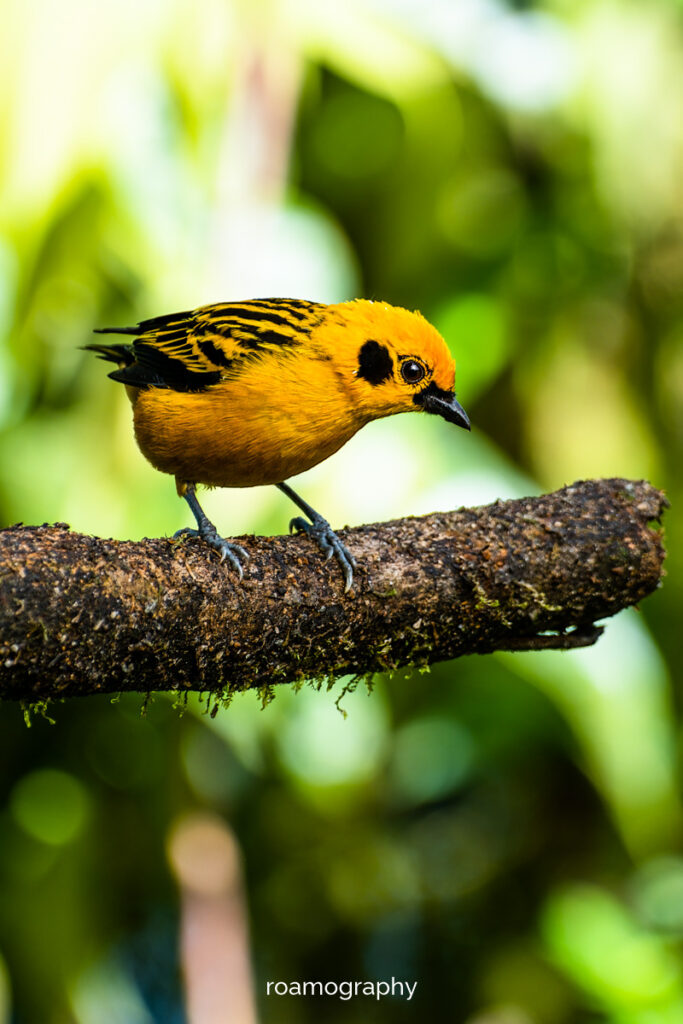
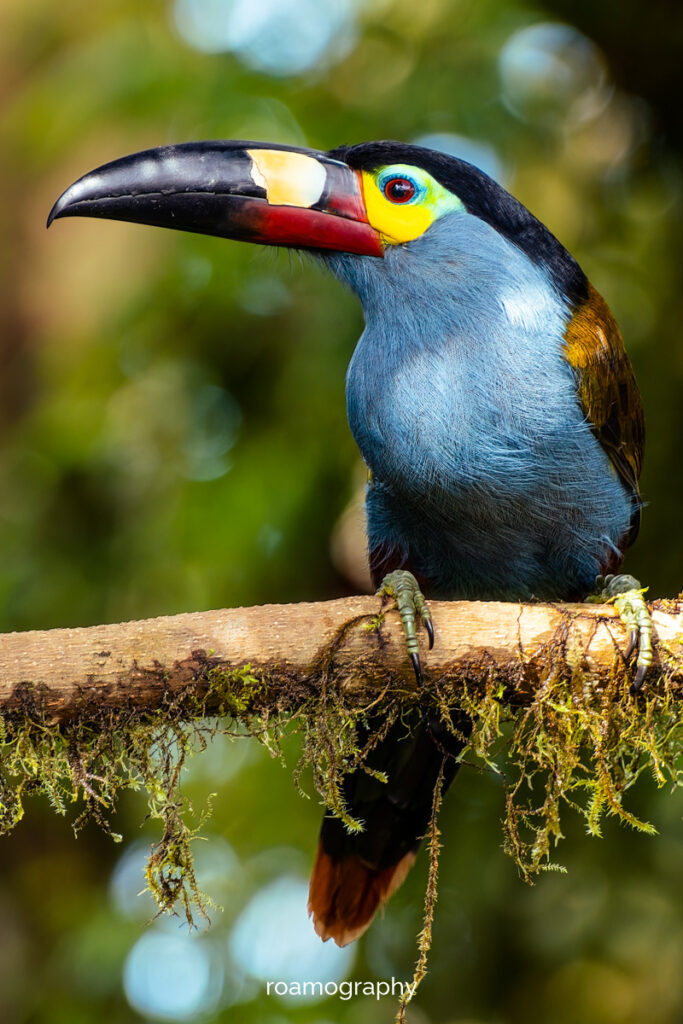
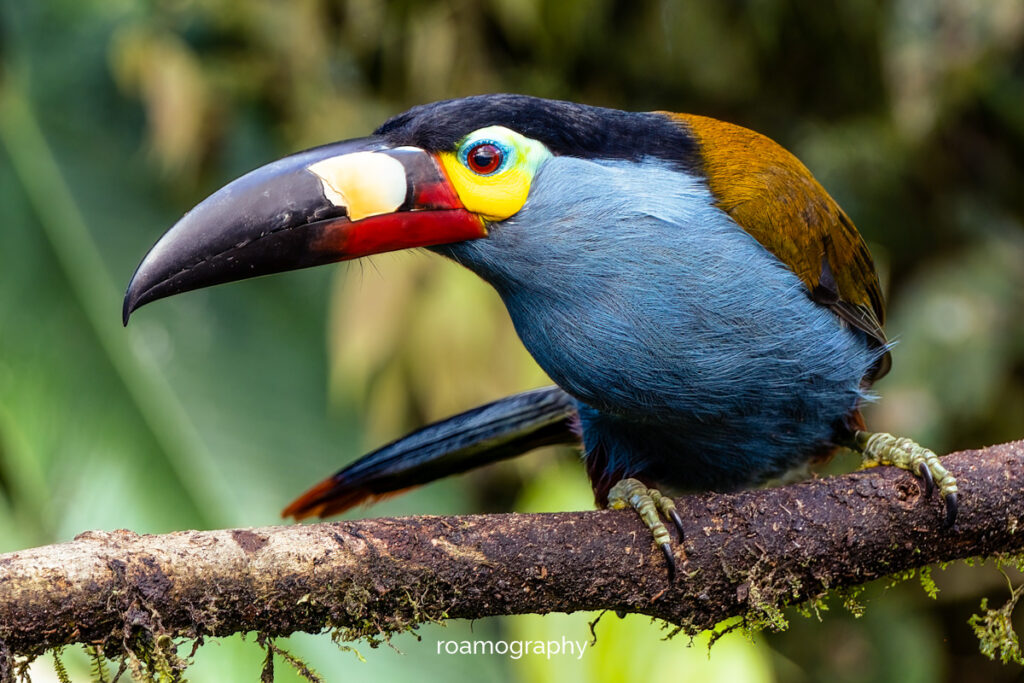
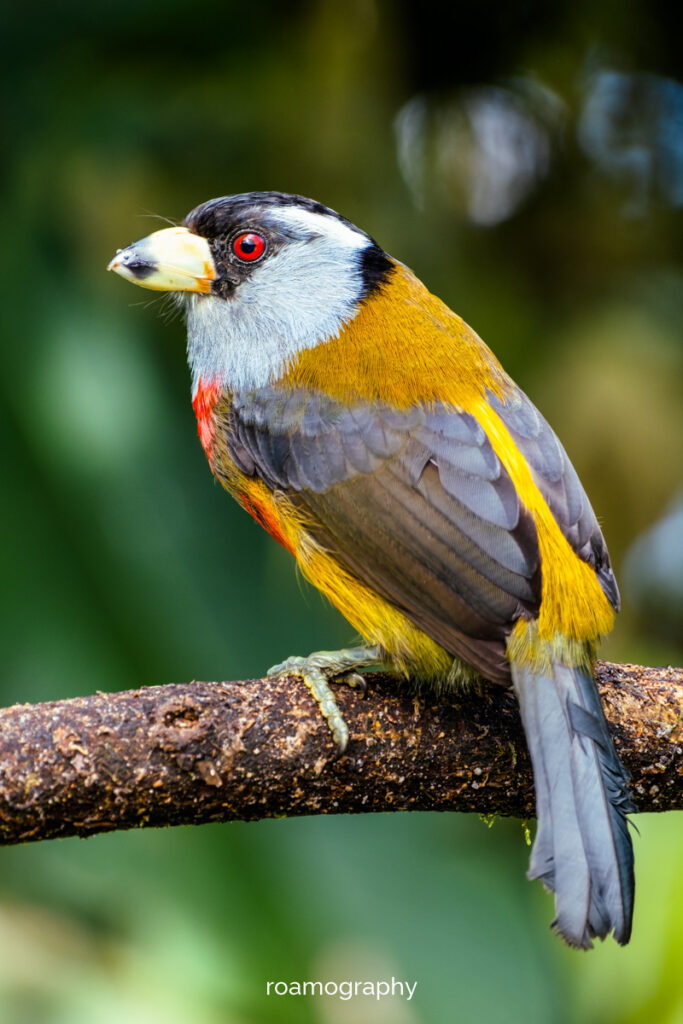
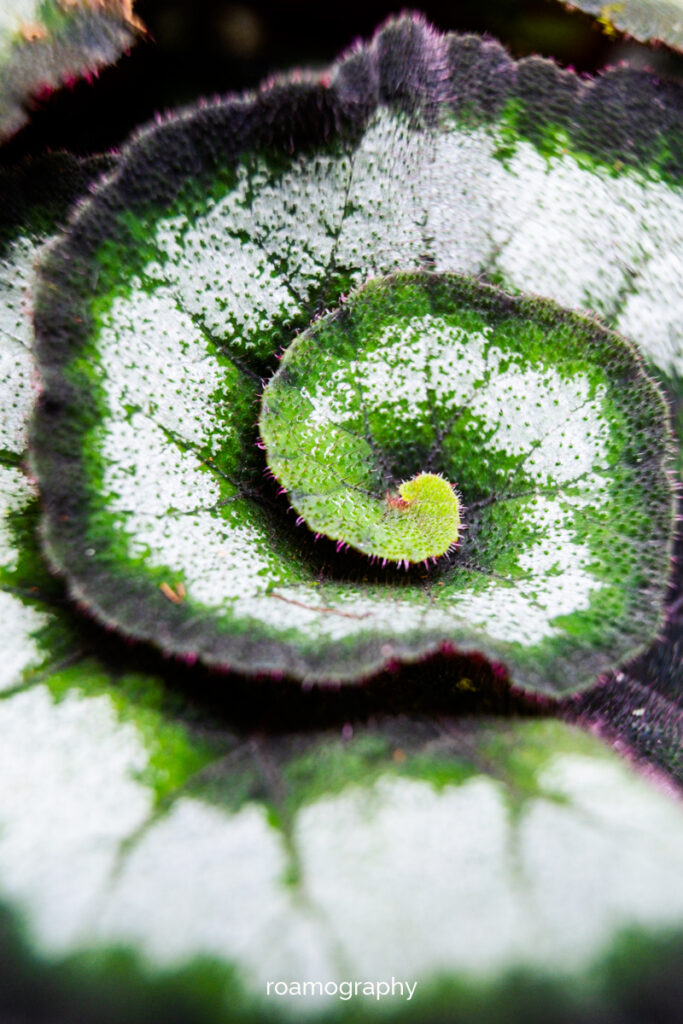

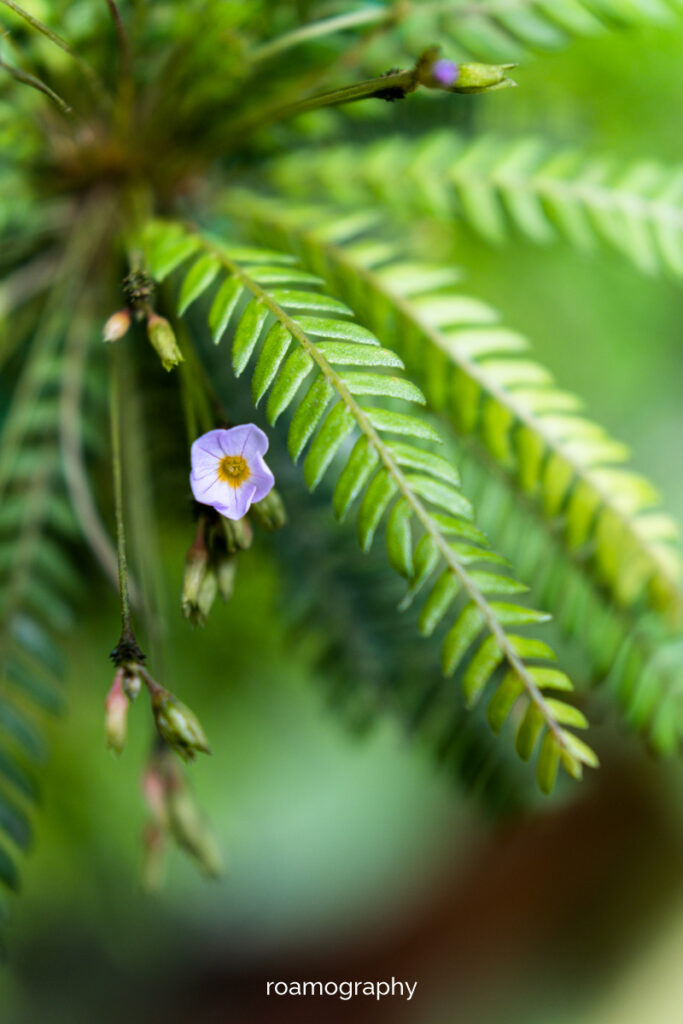
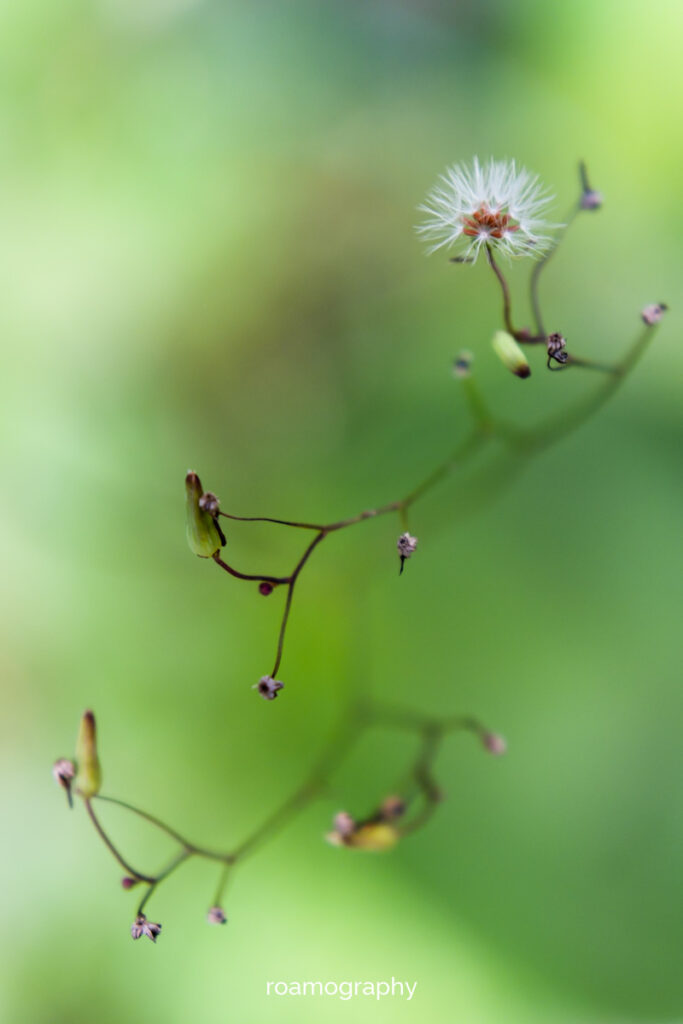
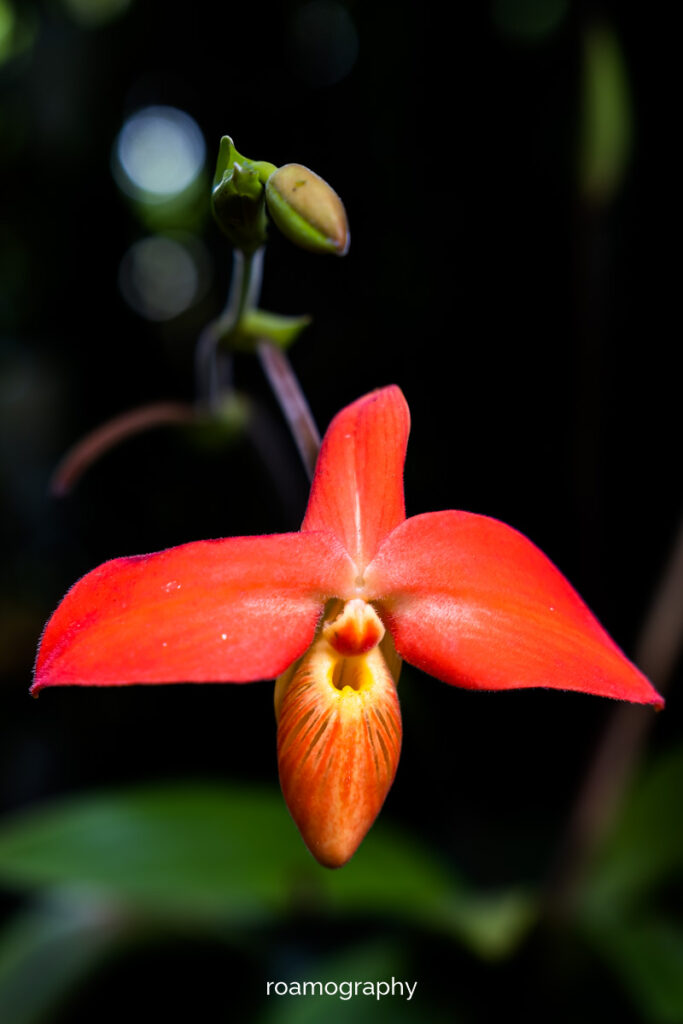
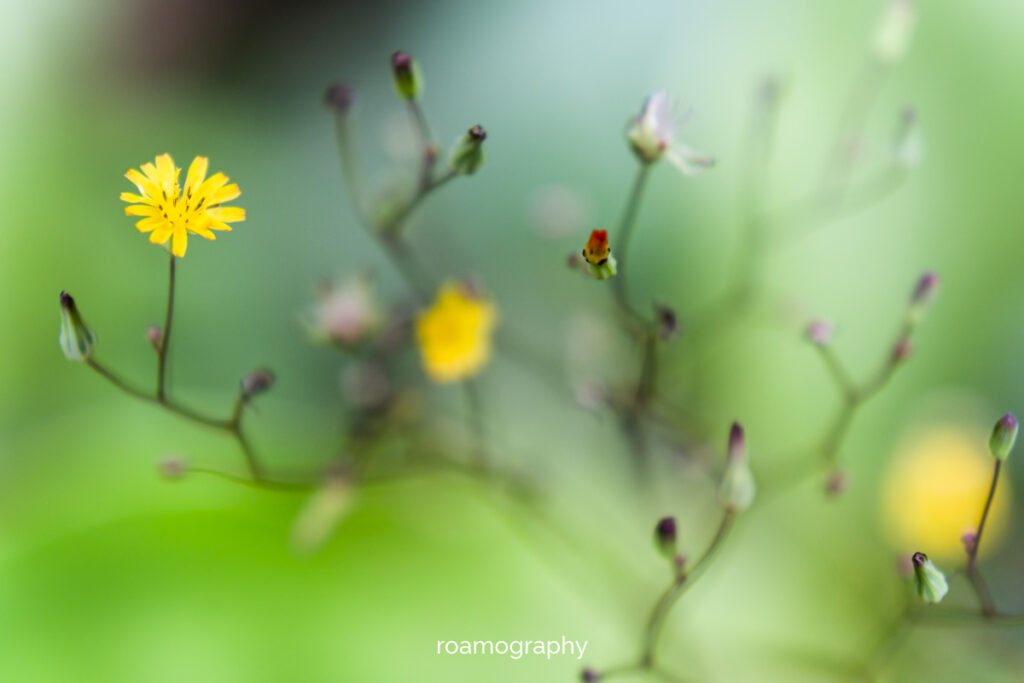
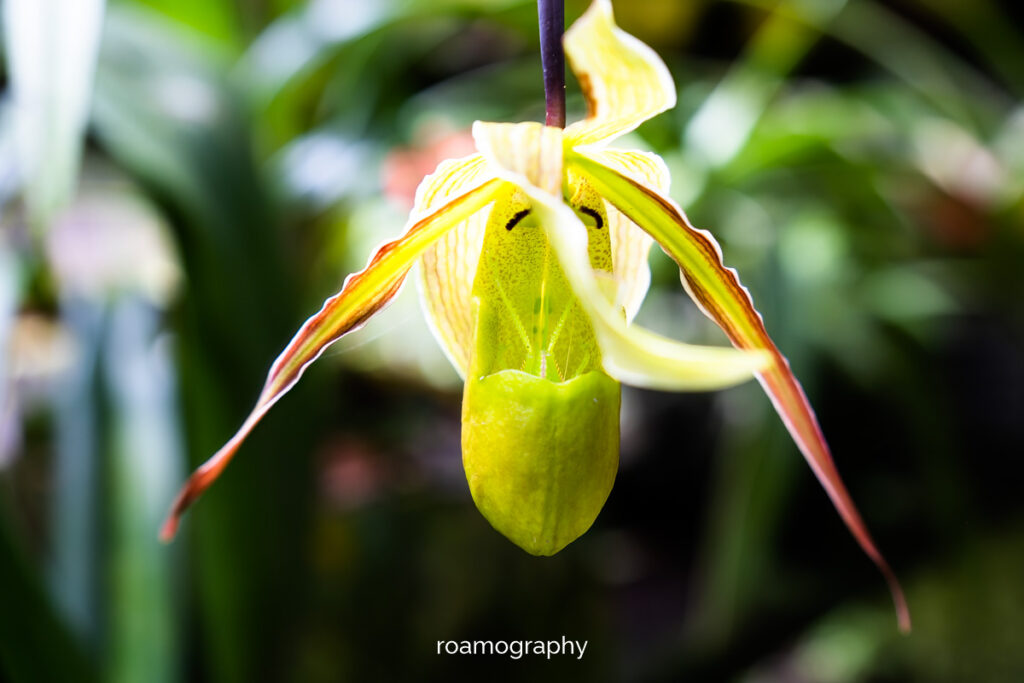
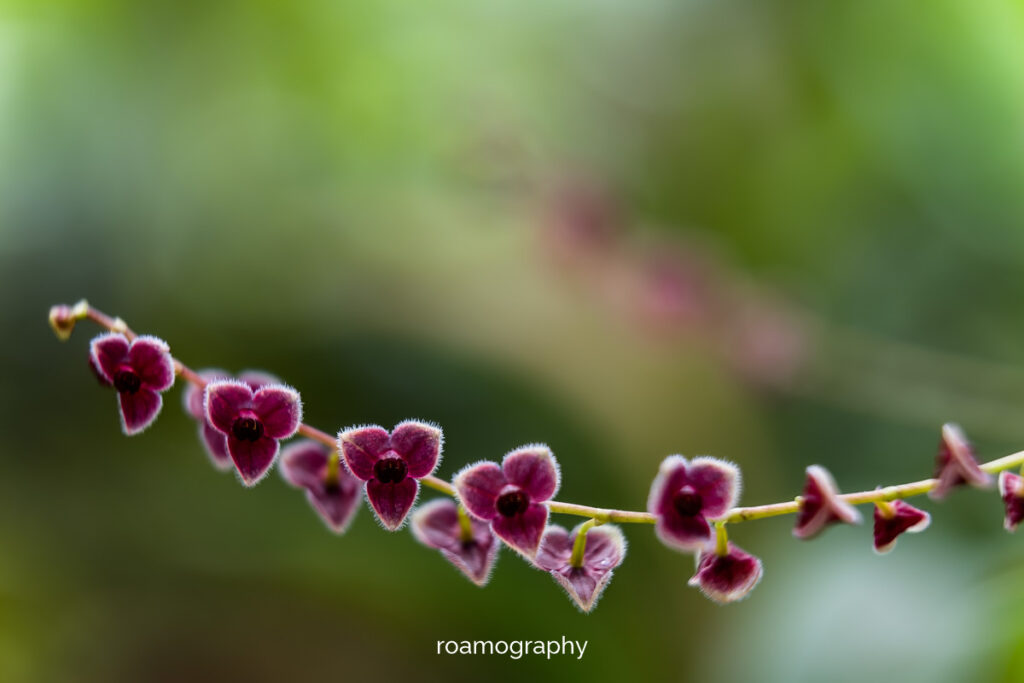
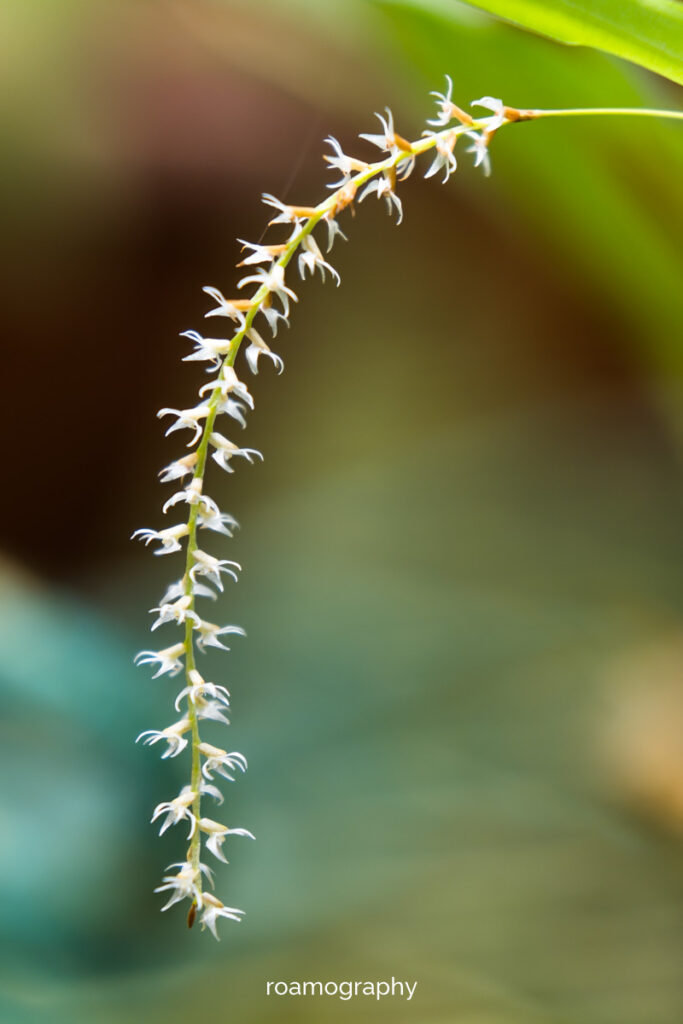
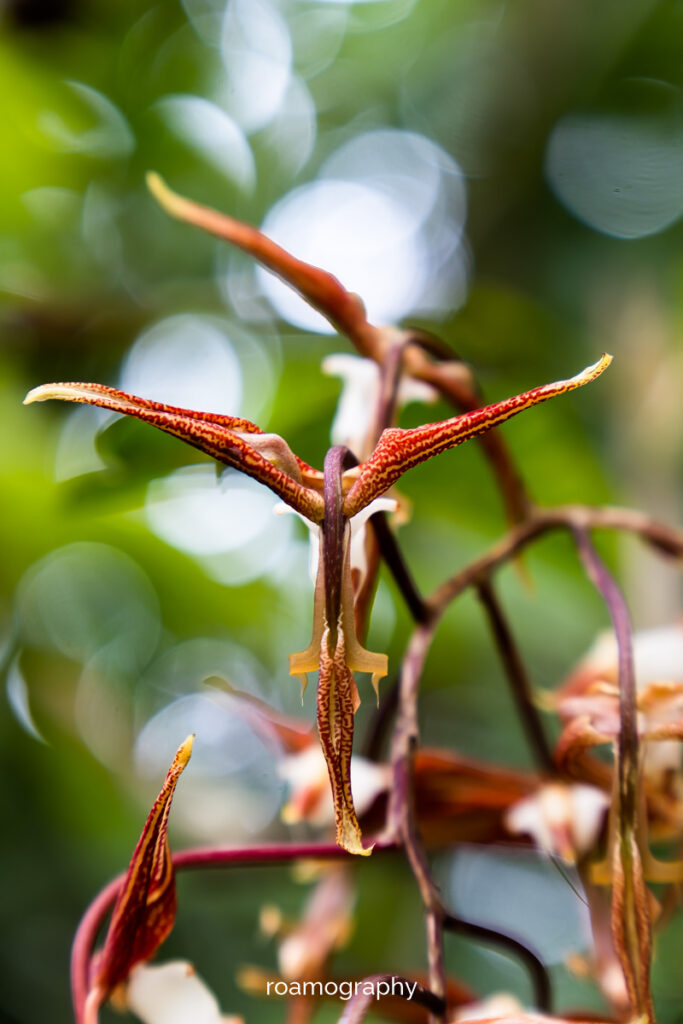
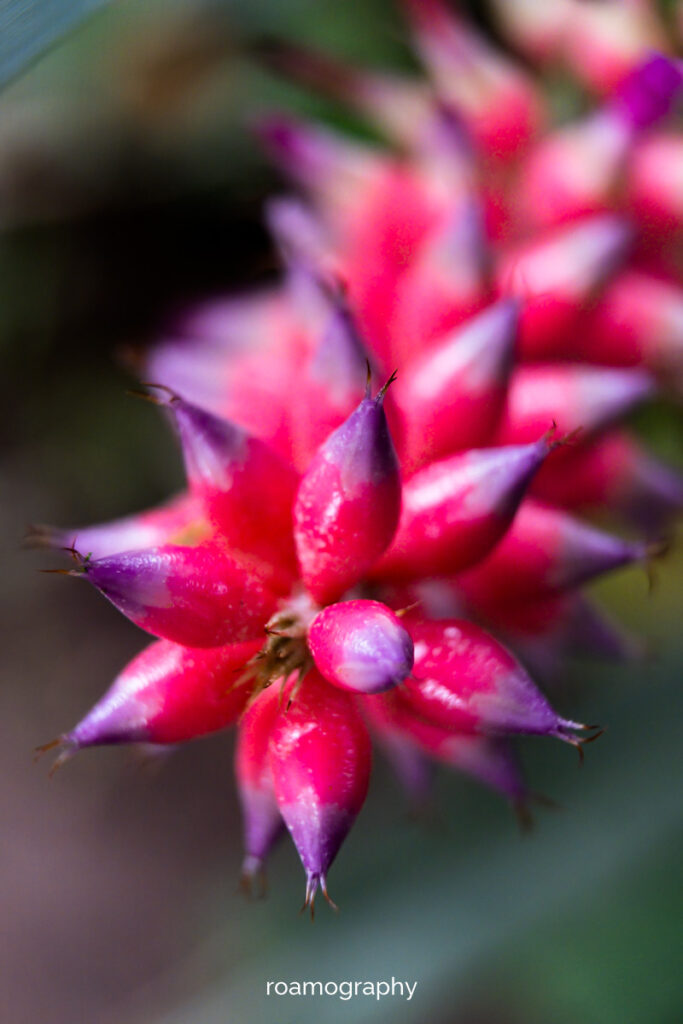
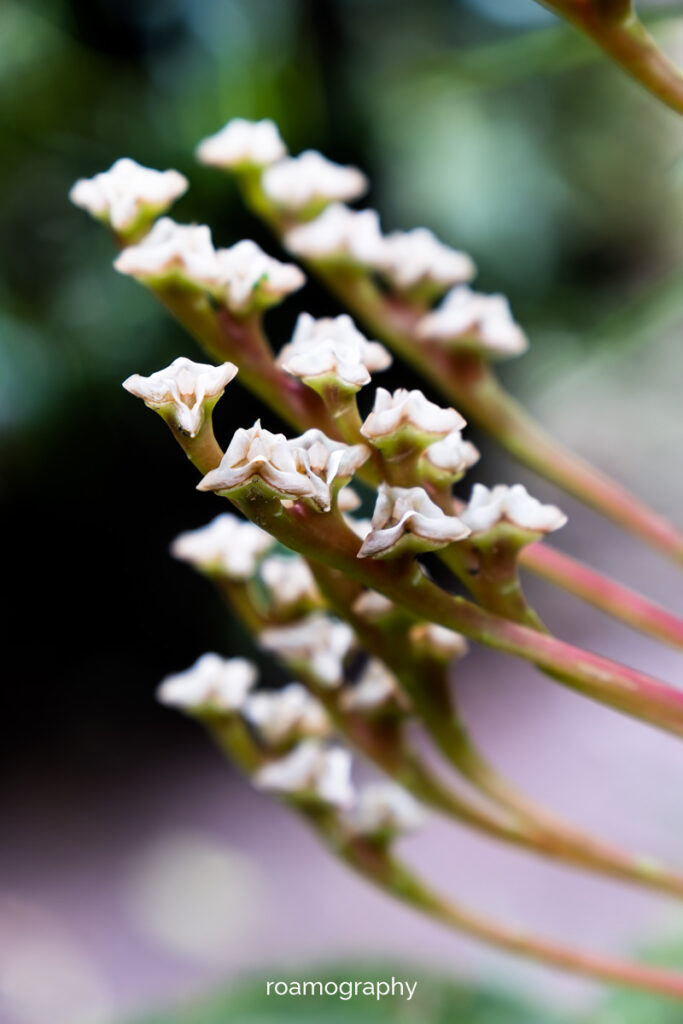
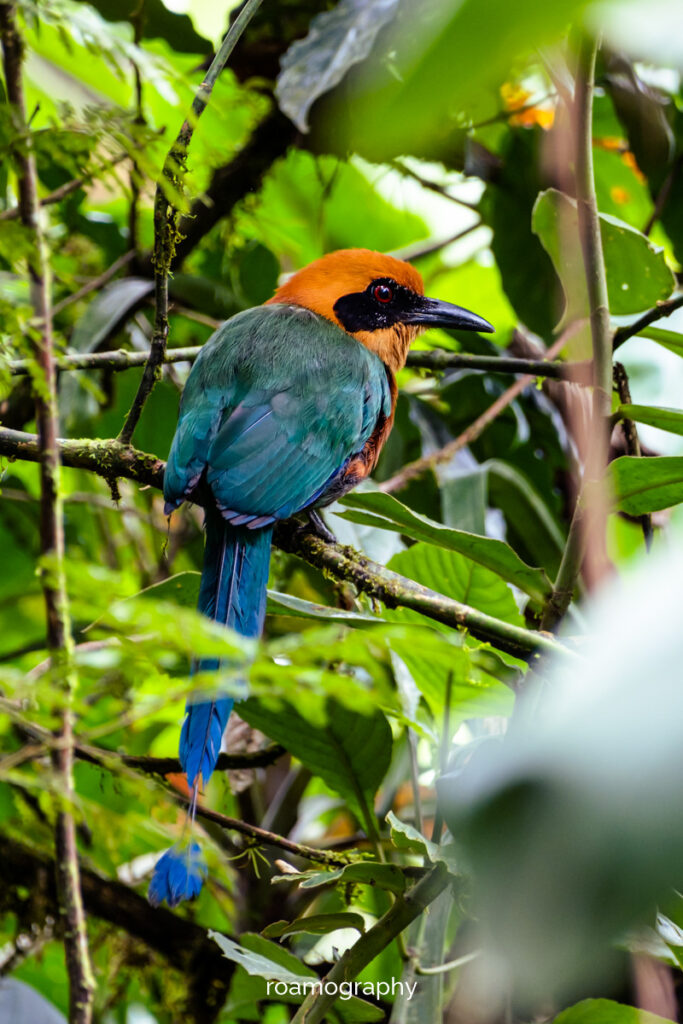

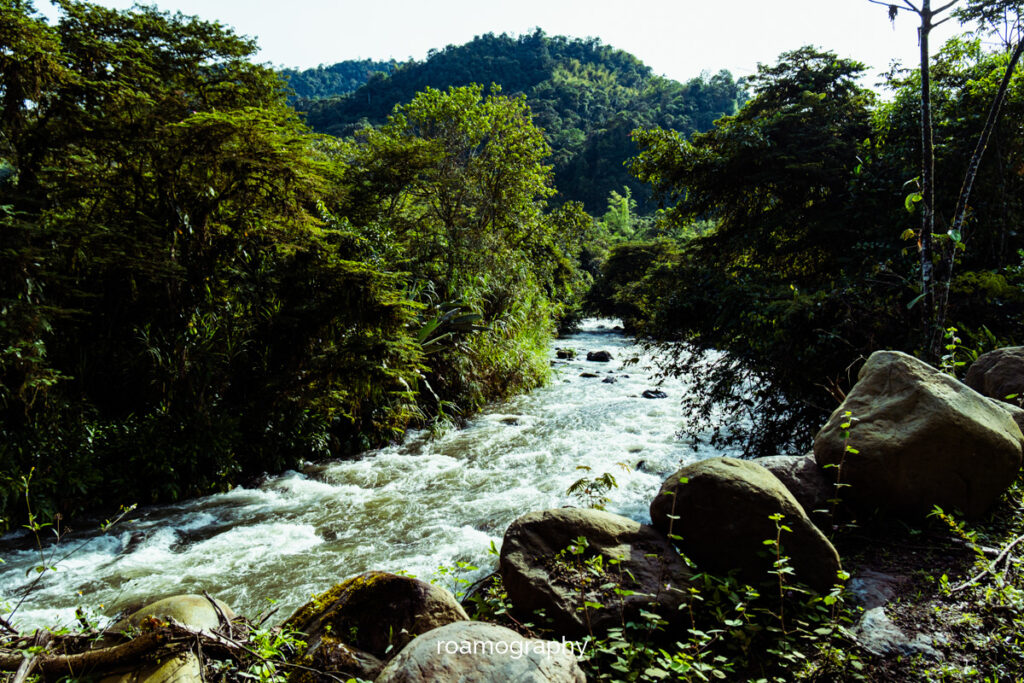
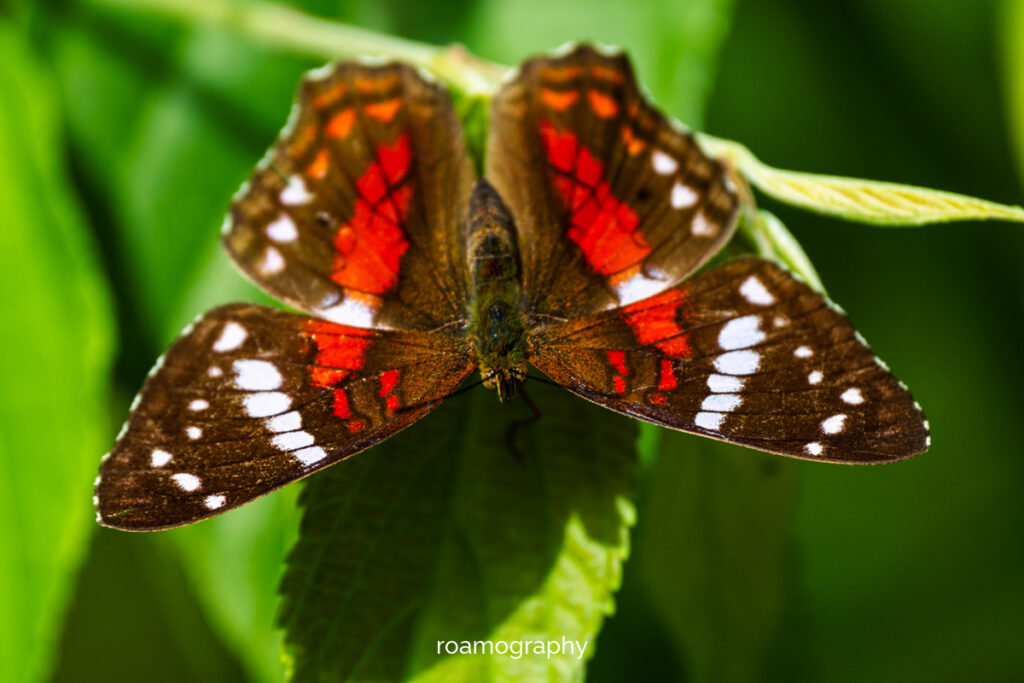
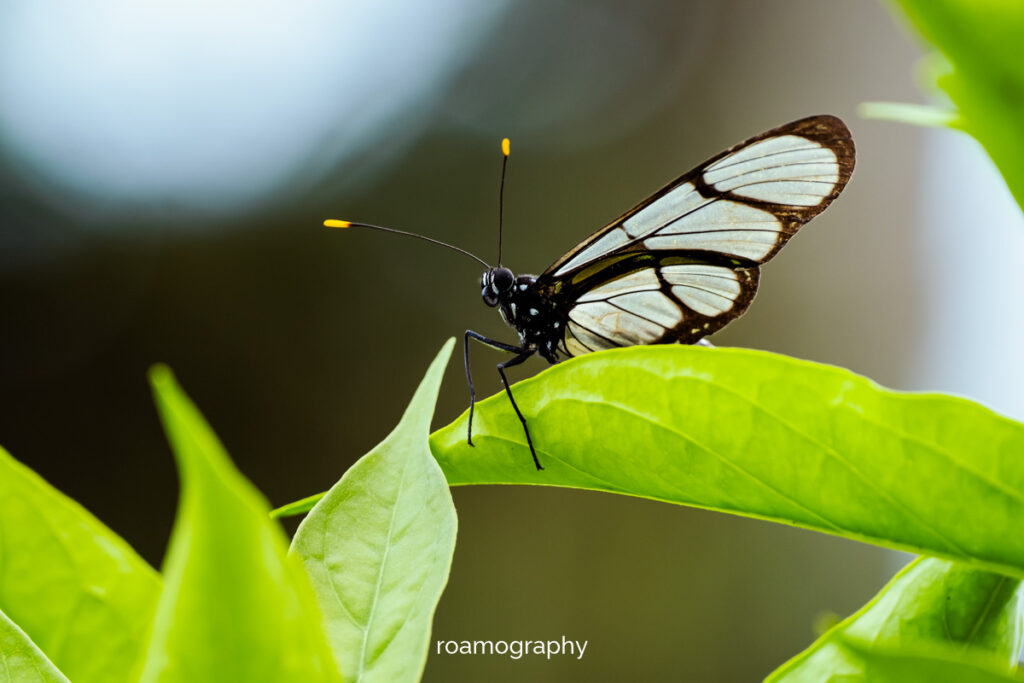
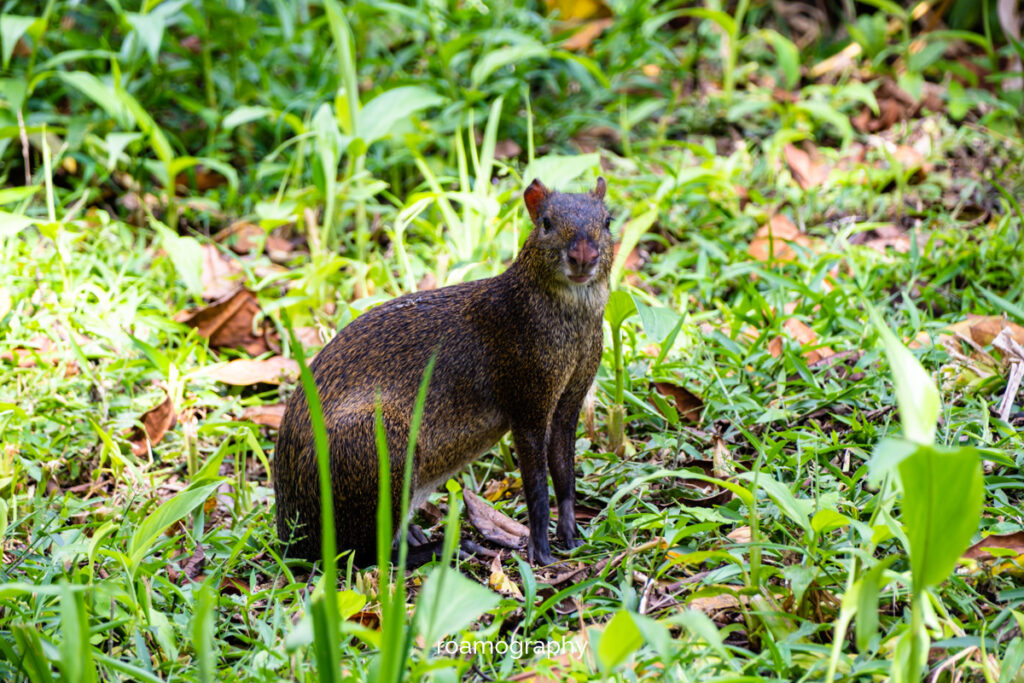

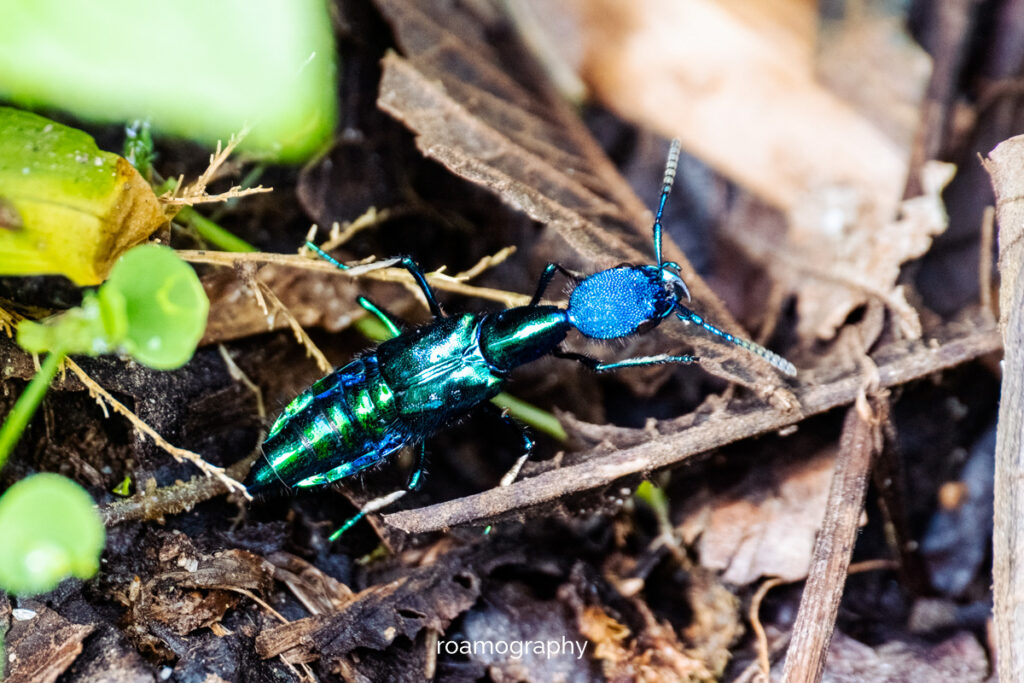

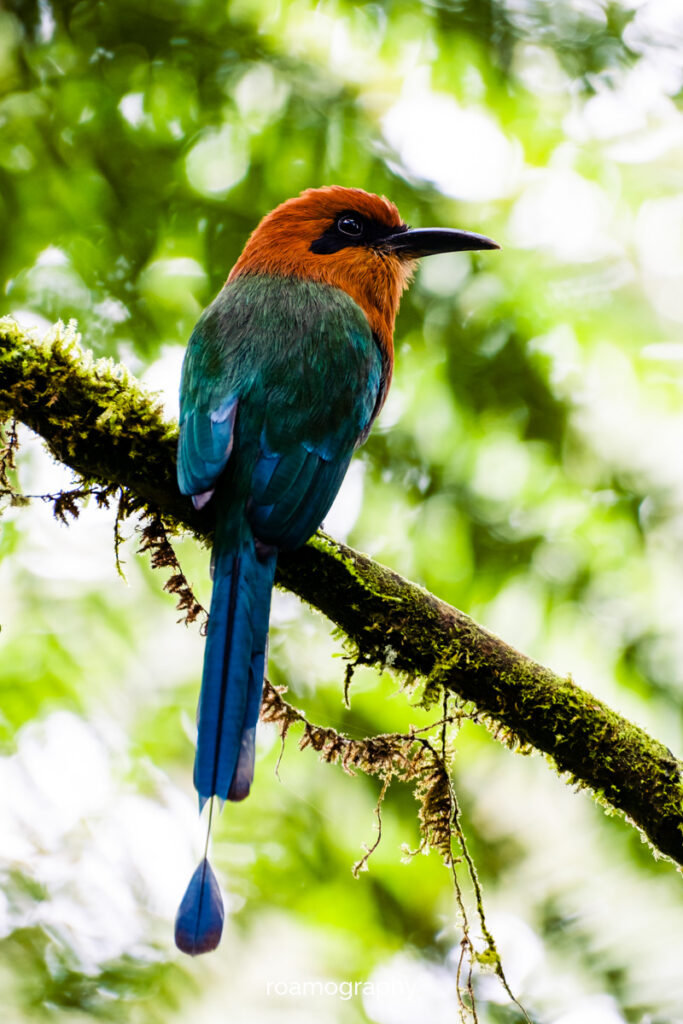


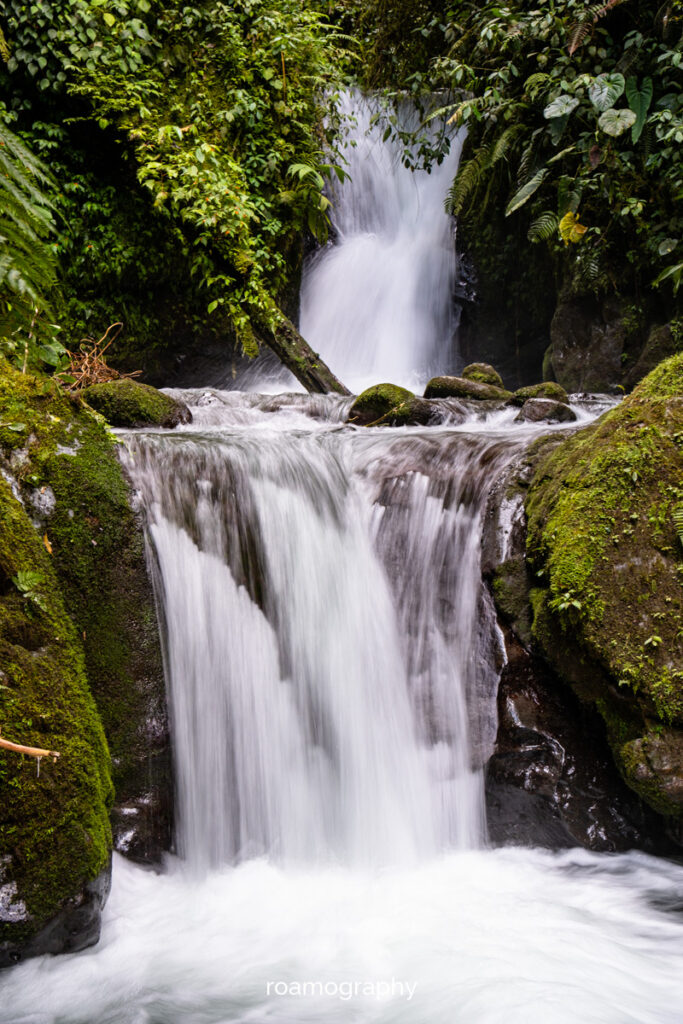
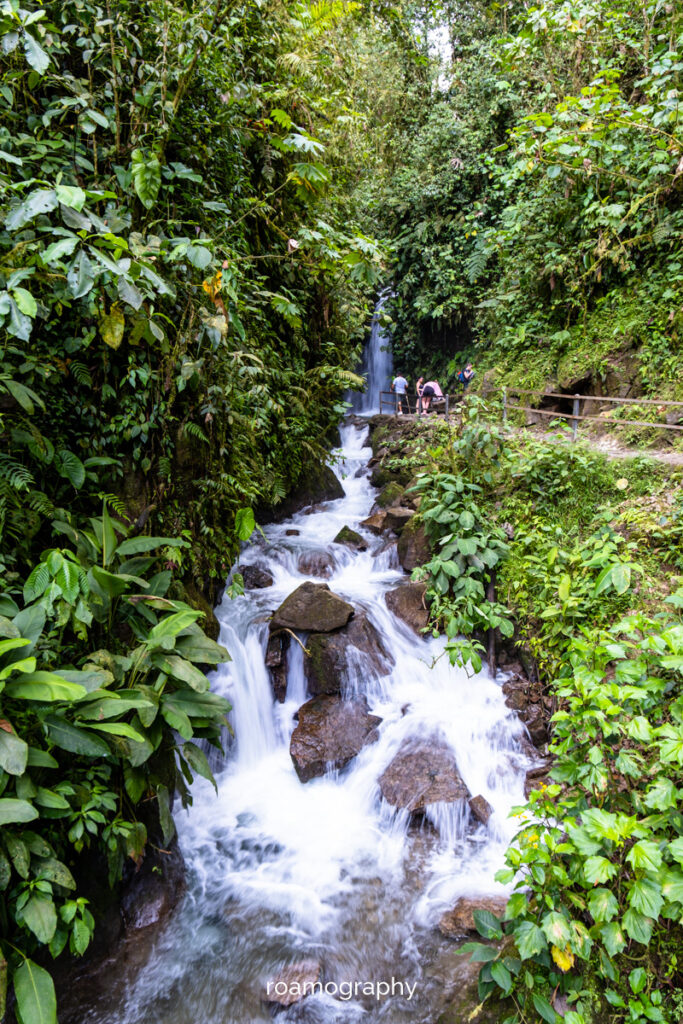
Mindo
Miłą przerwą od wielkiego miasta jest Mindo, ulubiona weekendowa wypoczywalnia mieszkańców Quito. Samo miasteczko oferuje sporą (choć nie najtańszą) bazę noclegową, kawiarenki, restauracje. Ale największa siła Mindo tkwi w pięknej przyrodzie, która je otacza (a czasem harmonijnie się z nim łączy, jak w np. w przypadku naszego hoteliku Cabañas Armonía y Jardín de Orquídeas). Jest tu i rzeka, i wodospady, motyle ogrody, prywatne rezerwaty przyrody, kolibry, tukany (te najbardziej fantazyjne – pstrodziobe, można podziwiać spory kawałek od Mindo, na większych wysokościach) i inne kolorowe ptaki.
Together with the aforementioned Marek, we also reach the town of Riobamba, from where we hope to hike to Chimborazo, Ecuador’s highest mountain (whose summit is also the furthest point from the earth’s core, due to the non-ideal sphericity of our planet). Unfortunately, the weather is not our ally and we only glance longingly at the snow monster, which mocks us by periodically showing us a fragment of its huge body from behind the clouds (the best view is probably from the 21 April Park, which, incidentally, also houses a sizable bust of Bolivar; great views from the rooftop of San Carlos hostel in front of the bus terminal, too). Well, at least we explored the town that has some pretty decent churches and squares.


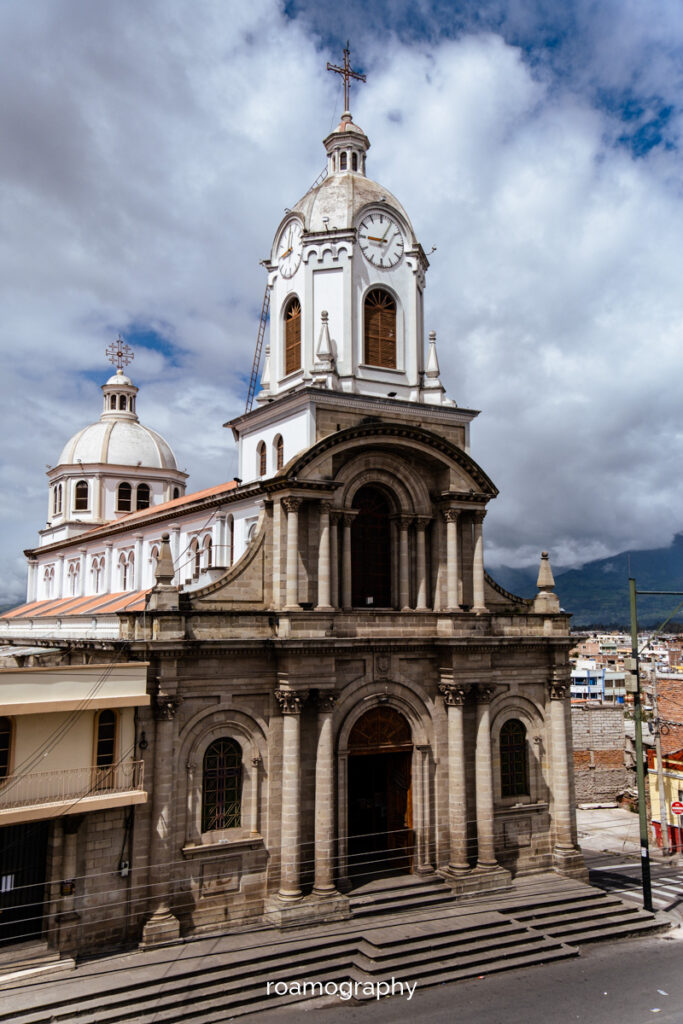
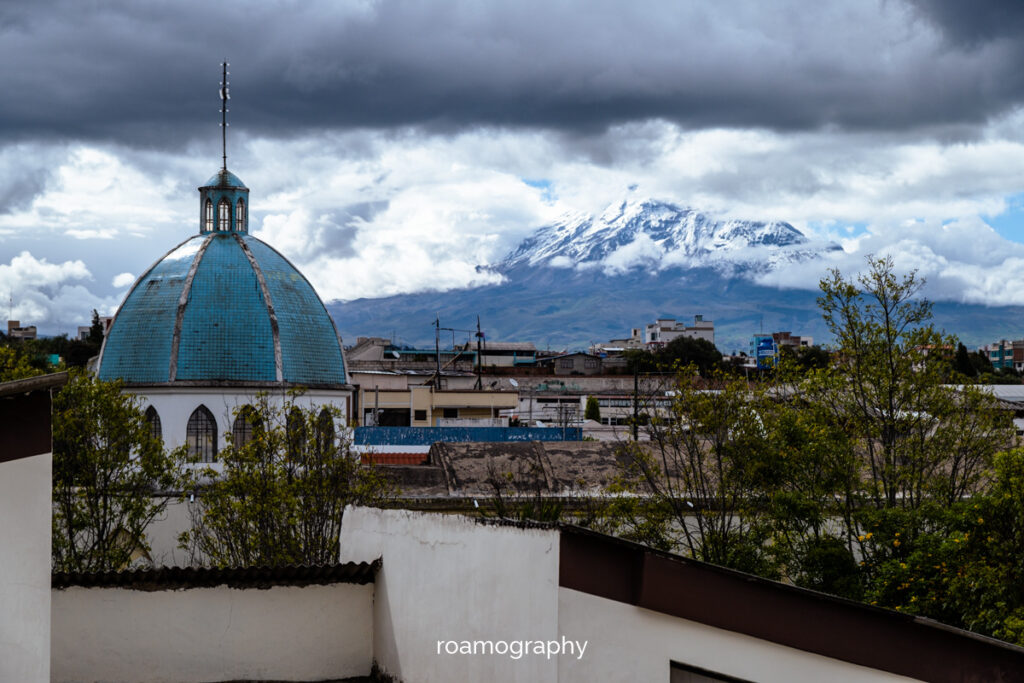

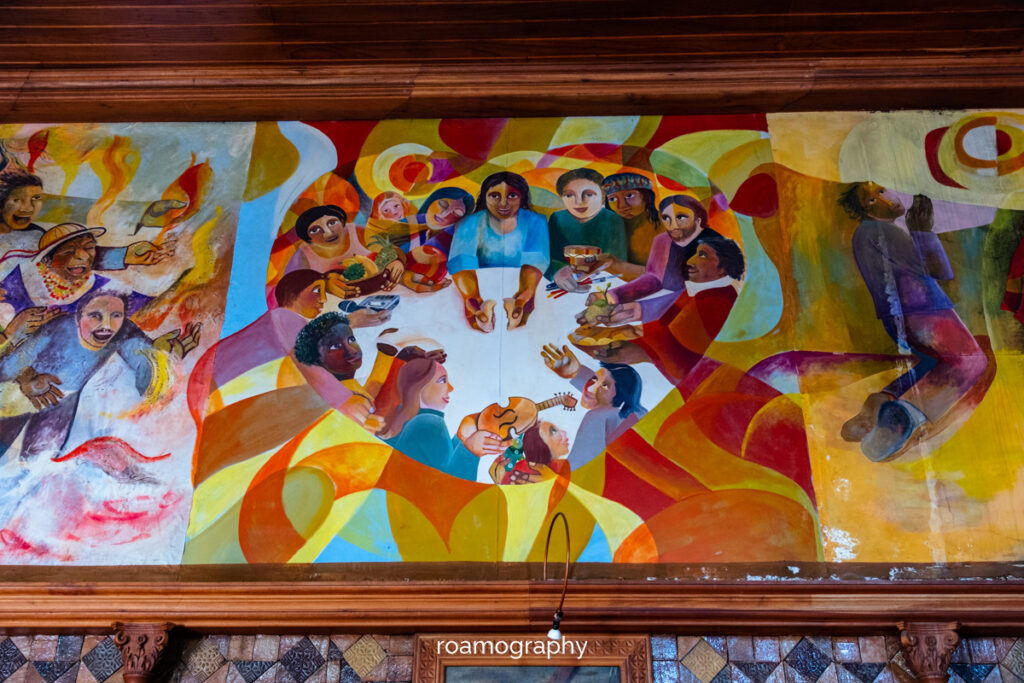
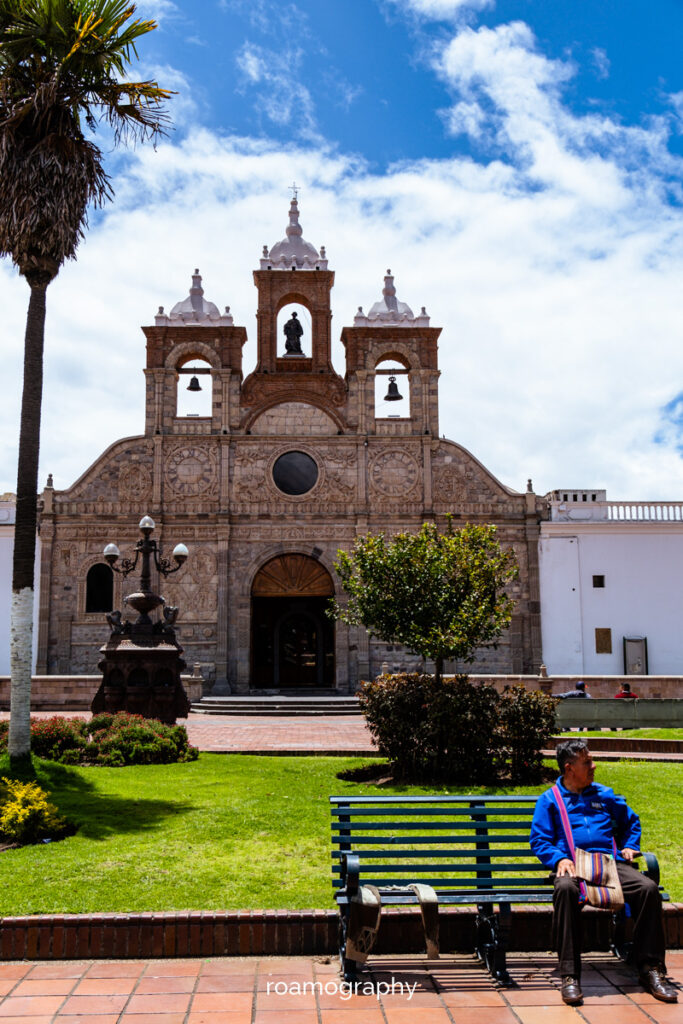
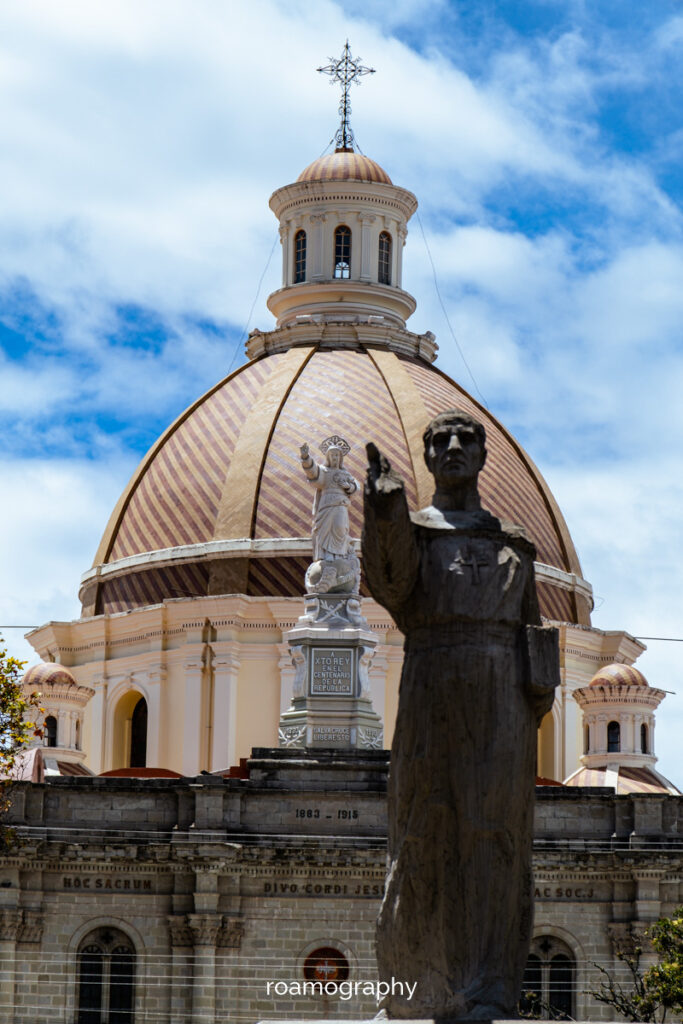
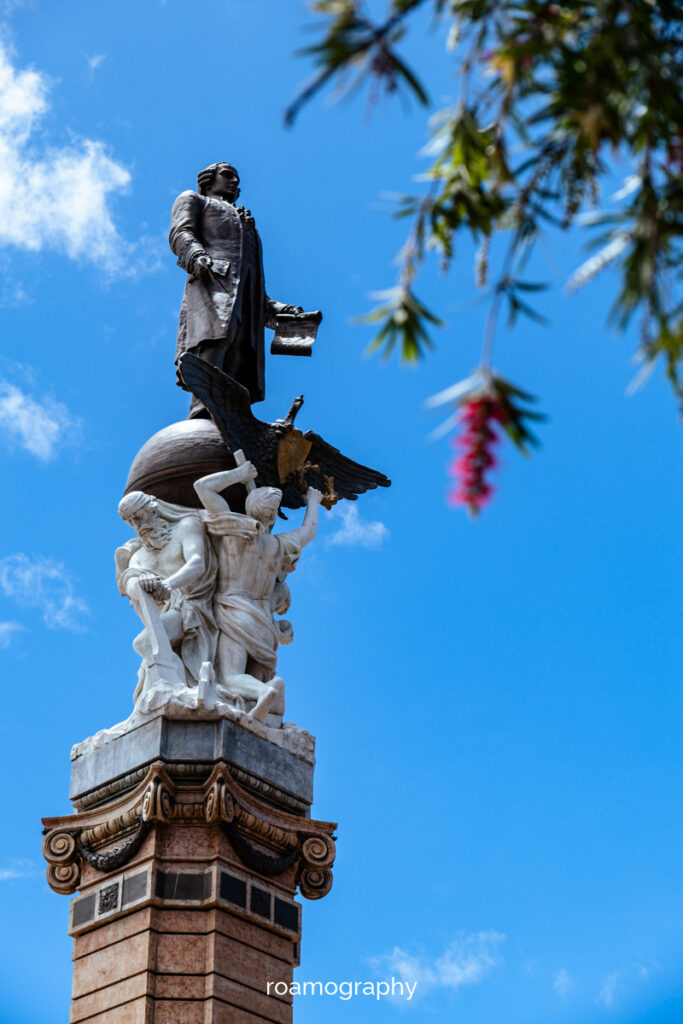
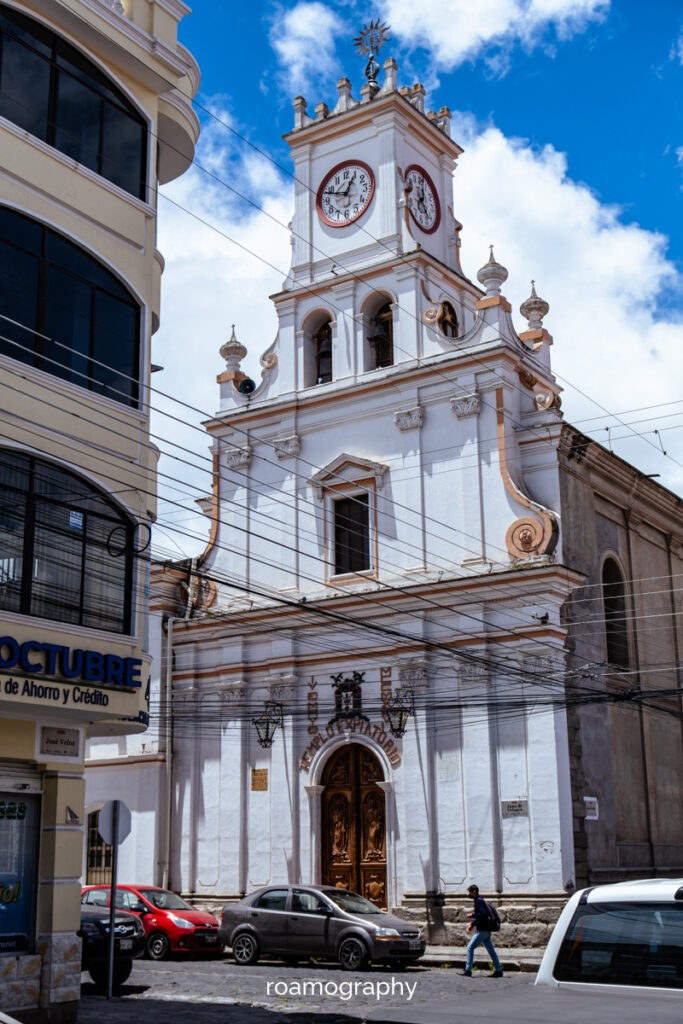
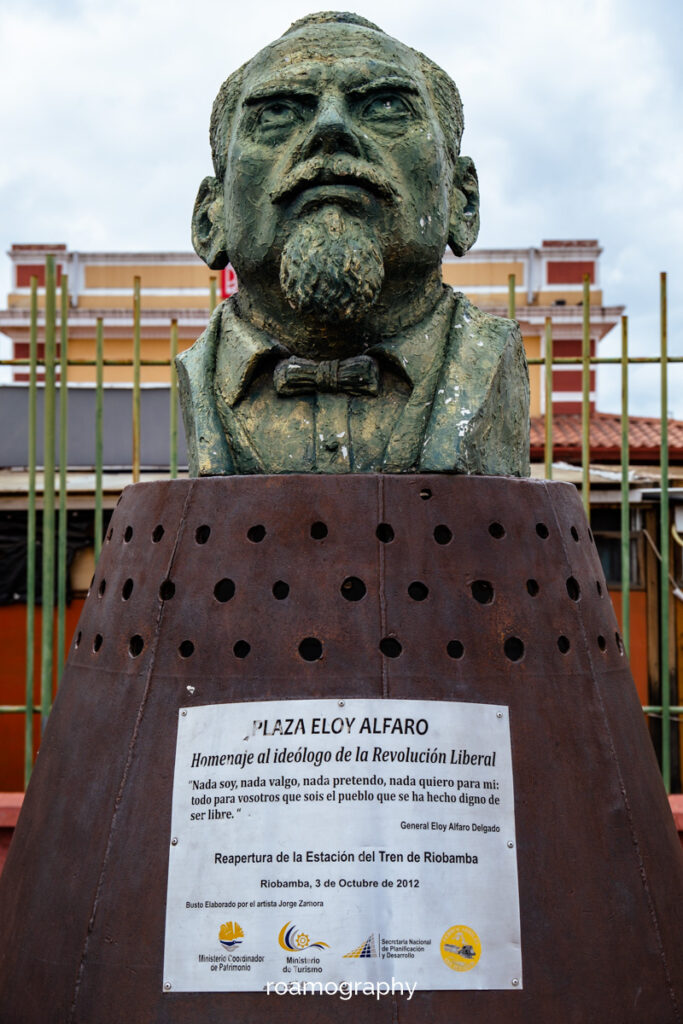
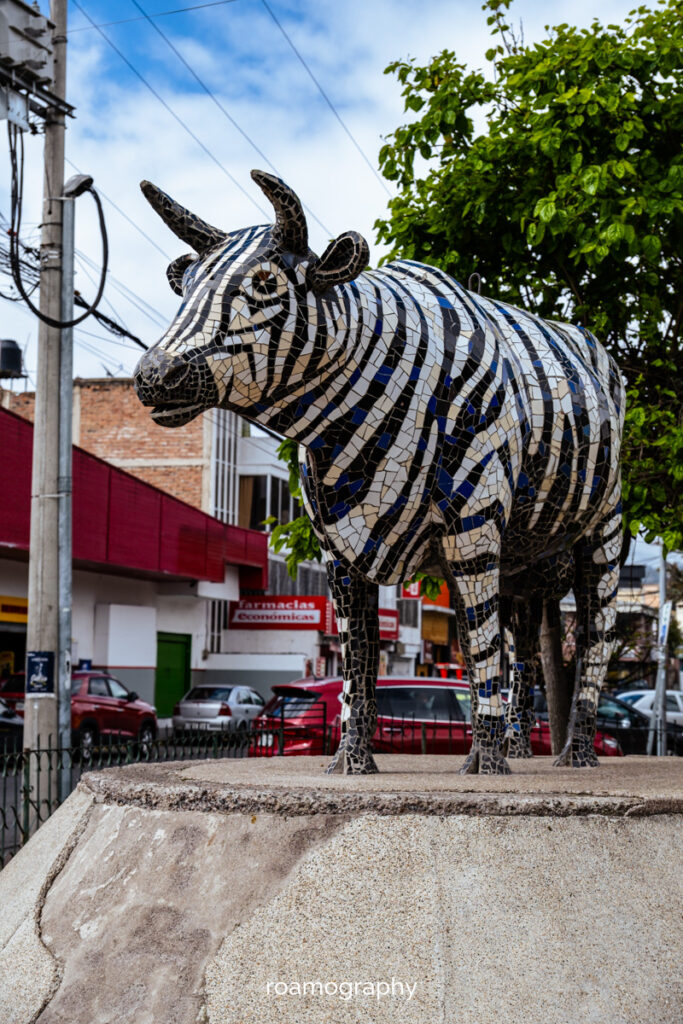
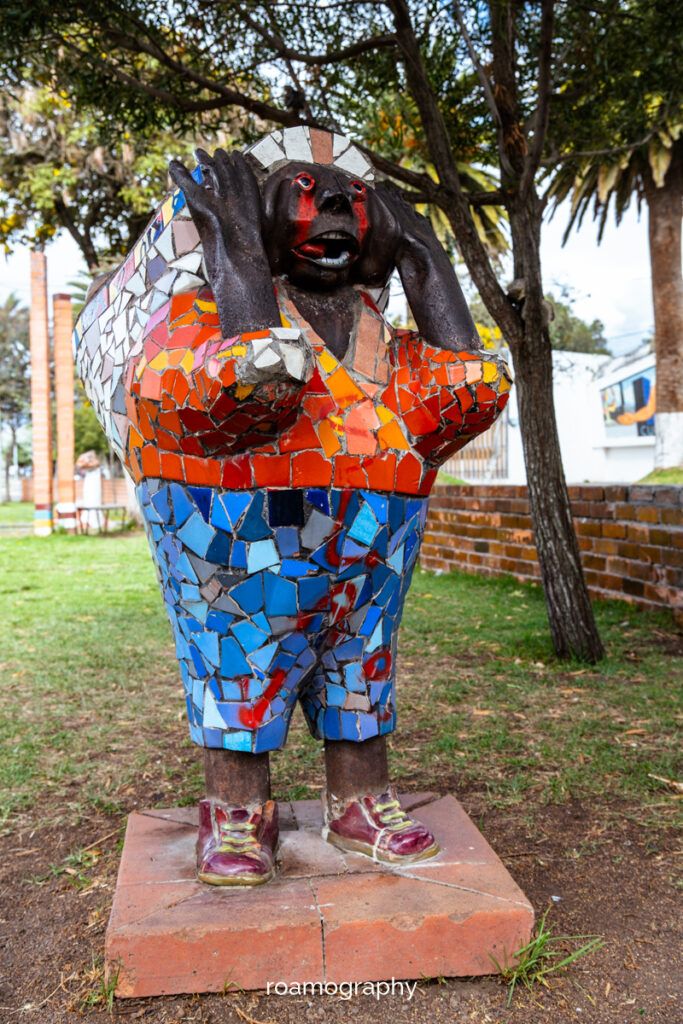
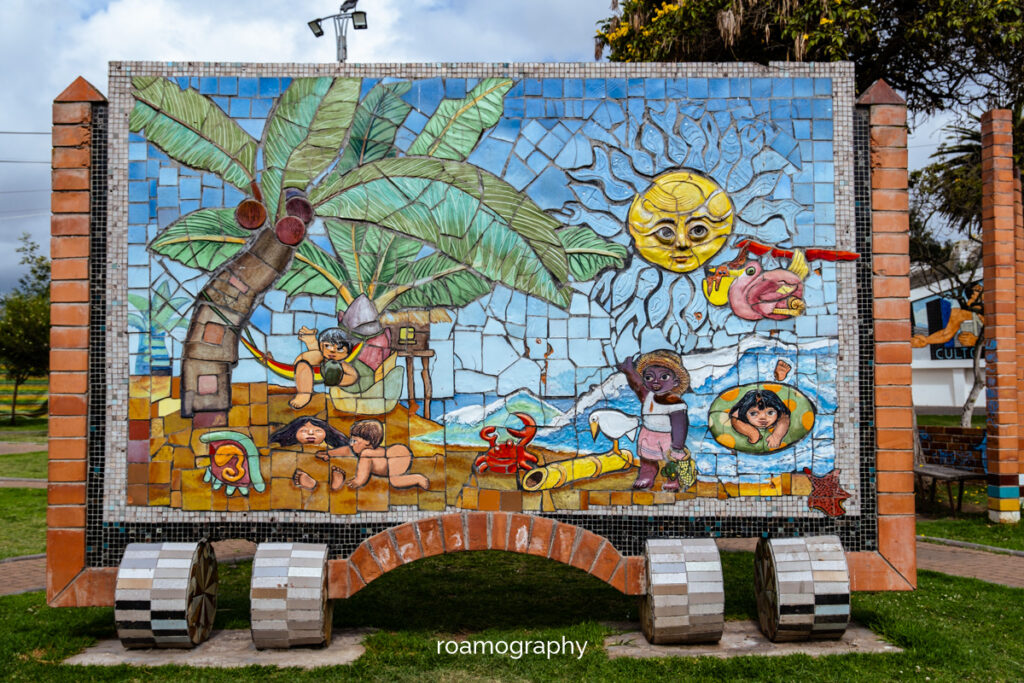
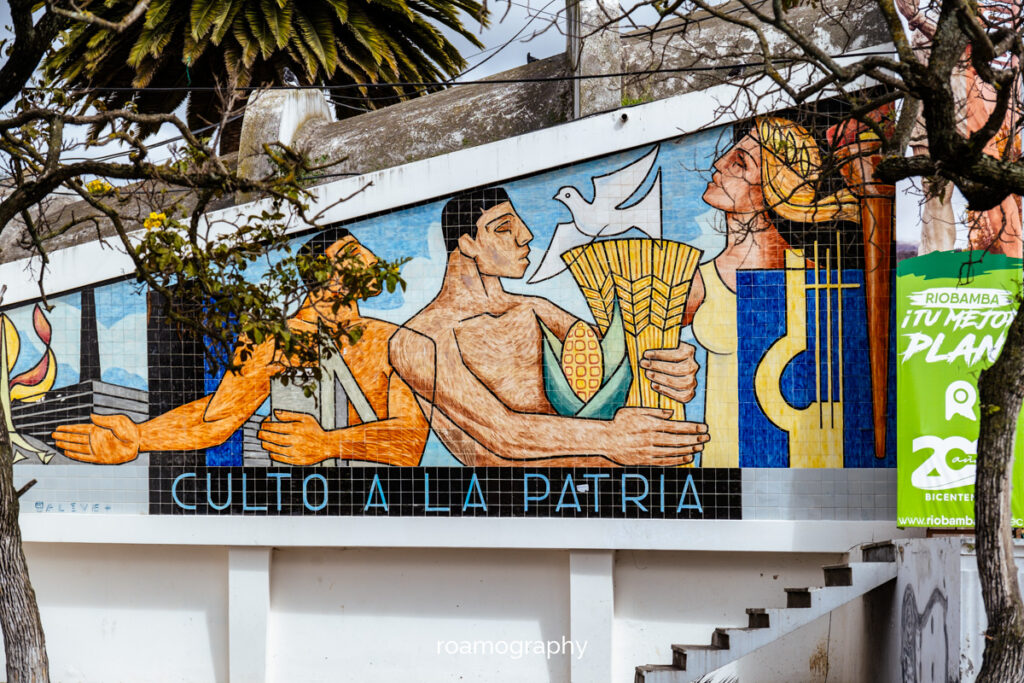


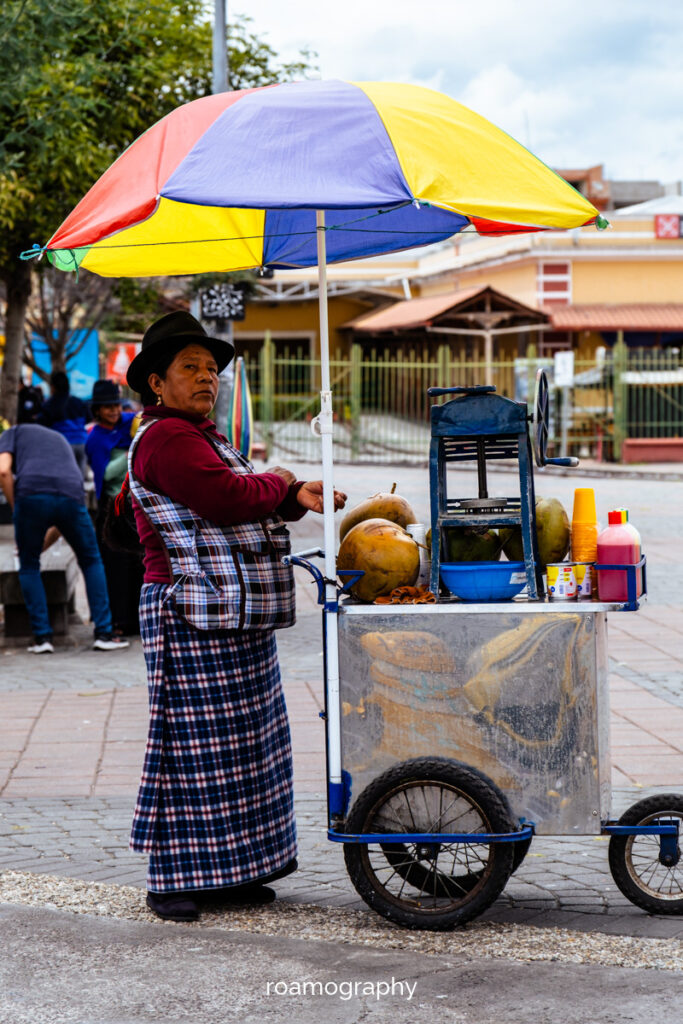
Riobamba
Wraz z wspomnianym wcześniej Markiem docieramy również do miasta Riobamba, z którego mamy nadzieję wybrać się na Chimborazo, najwyższą górę Ekwadoru (której szczyt stanowi również najbardziej odległy od jądra ziemi punkt, ze względu na nieidealną kulistość naszej planety). Niestety, pogoda nie jest naszym sprzymierzeńcem i tylko tęsknym wzrokiem zerkamy na śnieżnego potwora, który z nas szydzi, co jakiś czas pokazując nam zza chmur fragment swojego cielska (najlepszy widok jest chyba z Parku 21 kwietnia, w którym zresztą znajduje się też sporych rozmiarów popiersie Bolivara; nie gorsza panorama z tarasu hostelu San Carlos, u przy dworcu autobusowym). Nic to, przynajmniej zwiedziliśmy miasto, z kilkoma całkiem sensownymi kościołami i placami.
What doesn’t work out with Chimborazo, does with Cotopaxi. I find a perfect weather window of a few days and, after lodging in the Casa del Montañero in Machachi, I set off first thing in the morning towards the volcano. Transport is organised by the hotel and, as there are four willing participants (including two Frenchmen who arrived at night from the seaside and are not at all worried about the difference in altitude), the price of transport manages to be reduced to an acceptable level.
By the time our jeep reaches the foot of the mountain (and even climbs that foot just a little bit), we have passed several other picturesque peaks along the way, a few wild horses run across the meadow and the sun pleasantly illuminates the landscape. Cotopaxi wheezes its cloudy pretensions hard into the sky and I begin my ascent – first towards the hut at 4800m and then higher up, enquiring beforehand about the trail and the legality of traversing it without a guide – as no one is able to give me trustful information, I simply try to keep out of sight by stepping on the soft volcanic slope. Eventually, I stop at 5304m, having decided that I’ve had enough of panting and looking at the snow and ice landscapes and the surrounding panorama. Besides, the time for clouds to descend is approaching, and I wouldn’t want the jeep driver and the other travellers to start worrying about me. On the way back we still stop at Lake Limpiopungo, around which we walk a bit. It’s picturesque, there are some wild horses, the birds are there too. And Cotopaxi, for the last time, puts on its hat of clouds and poses for photos.
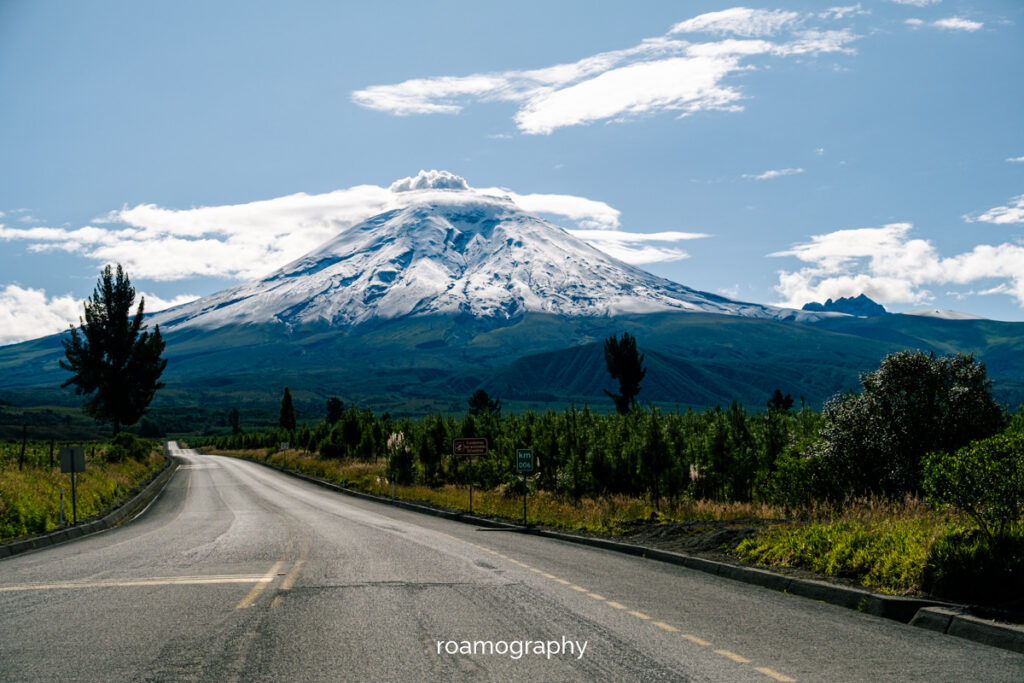
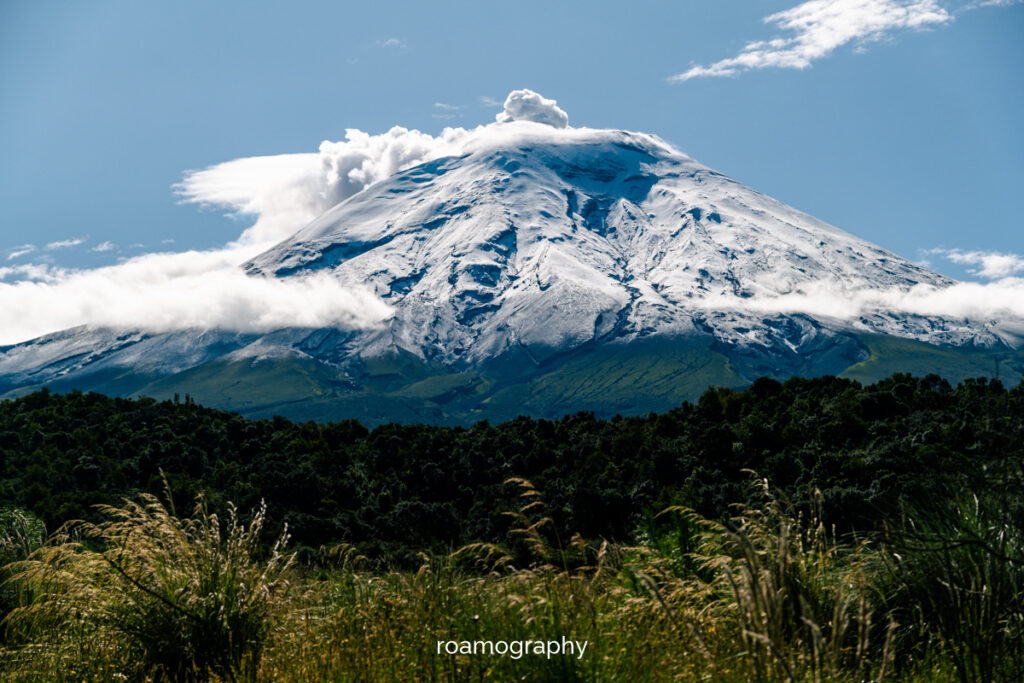

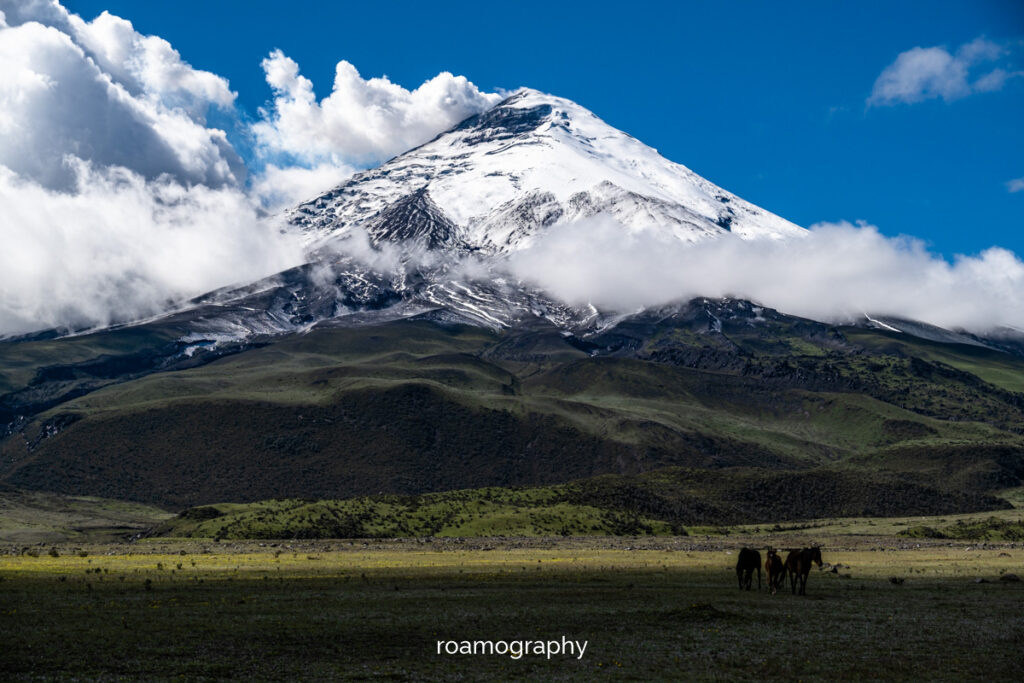
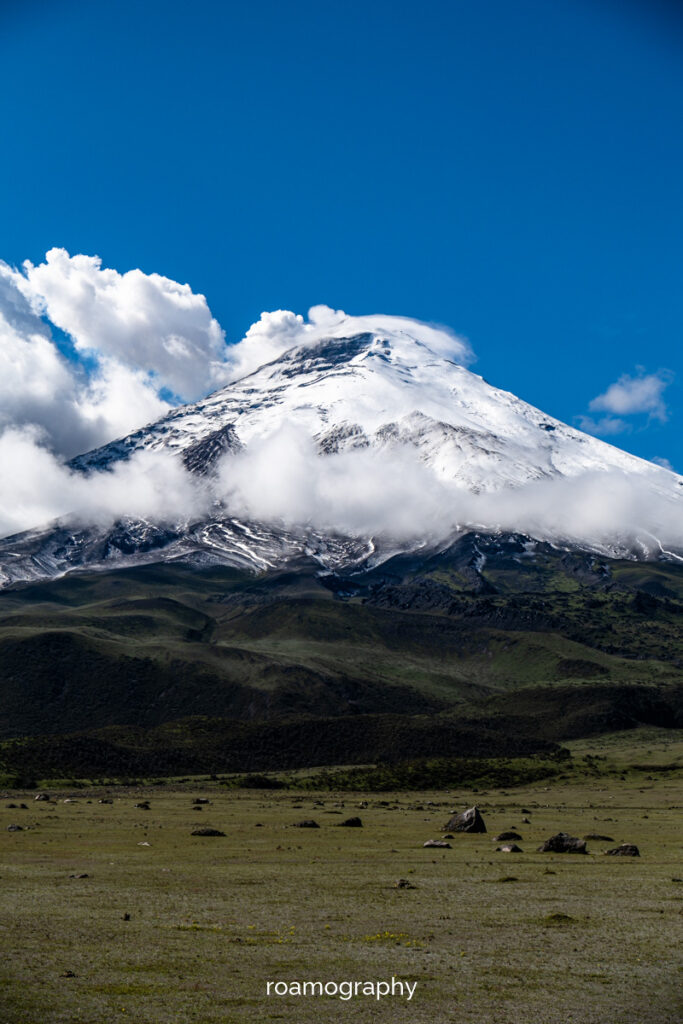
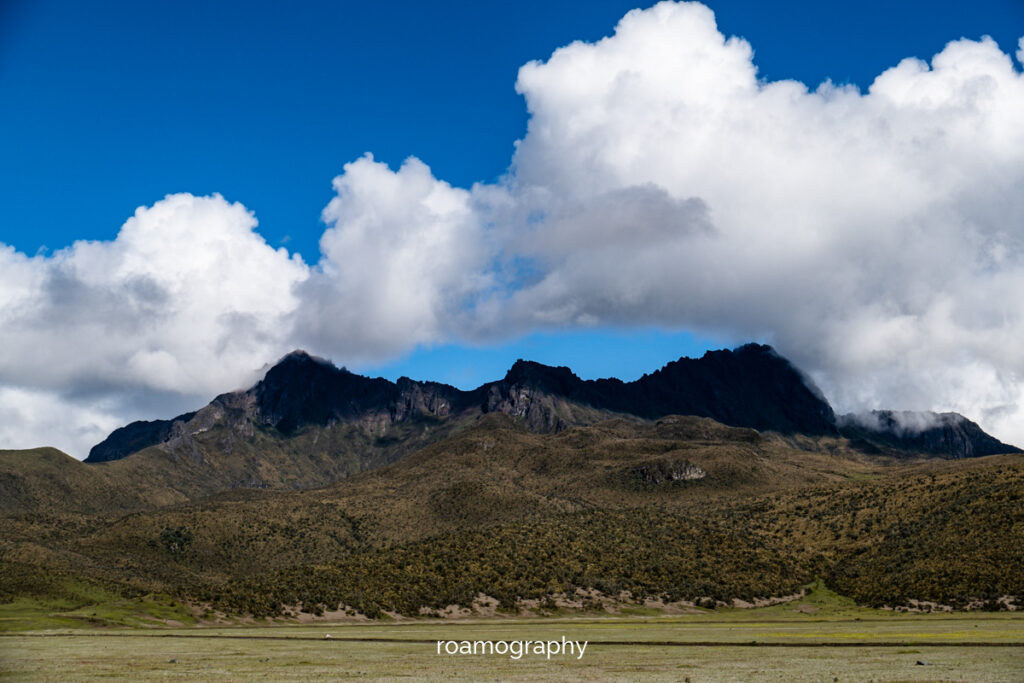
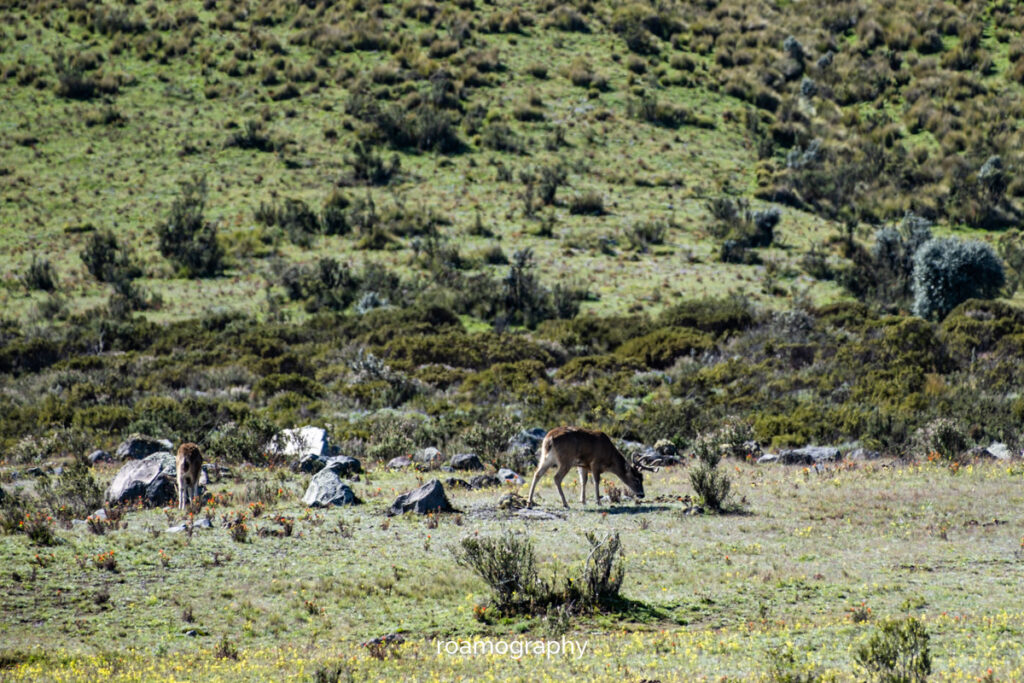
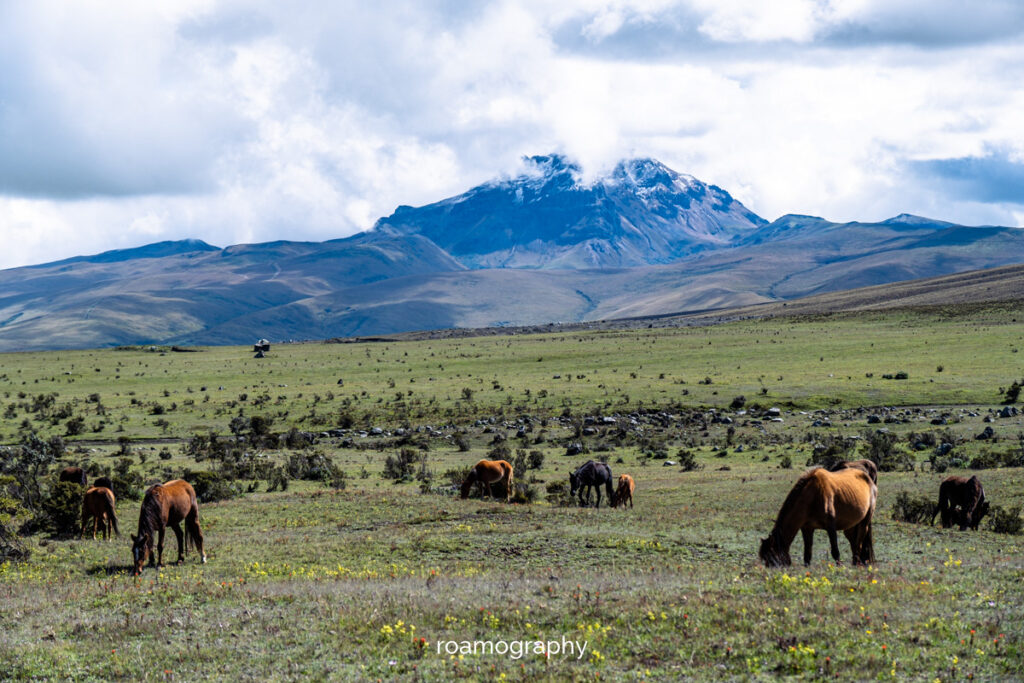
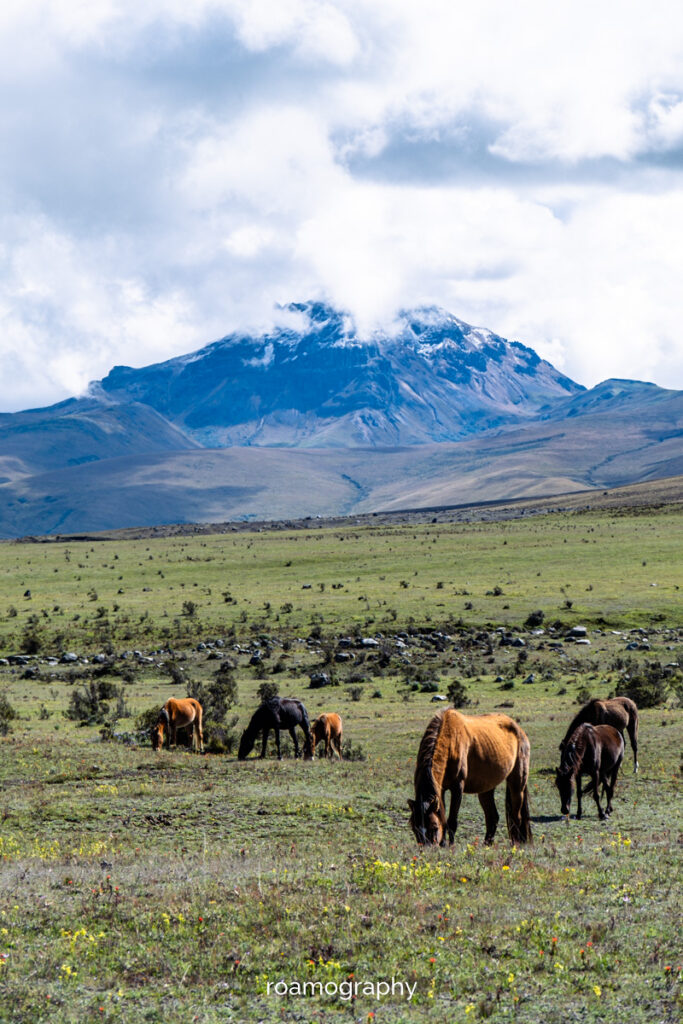
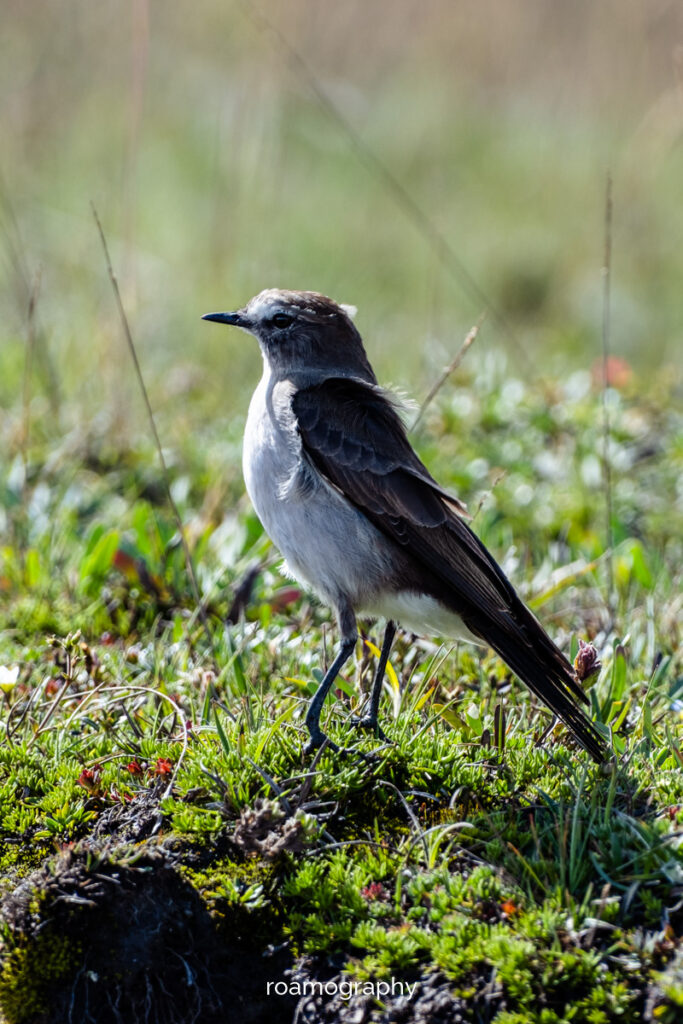

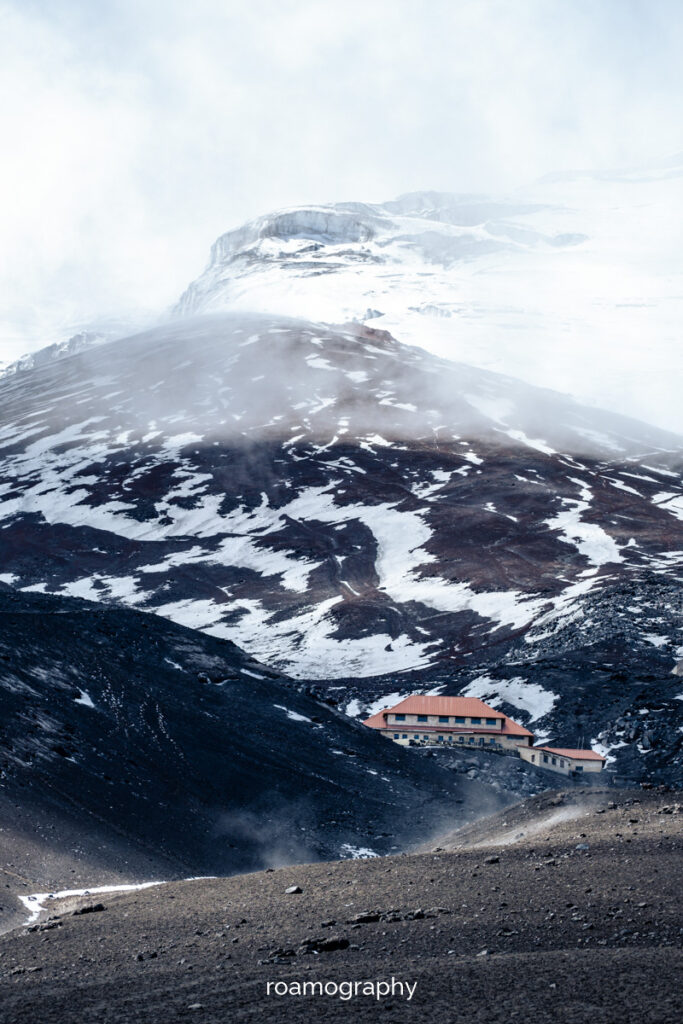
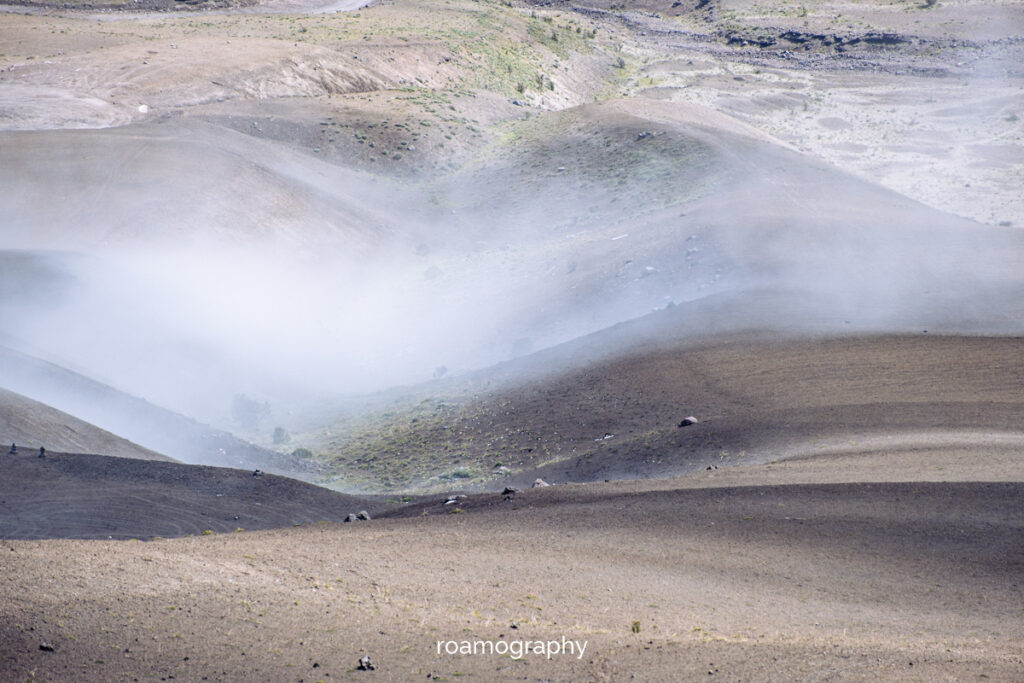
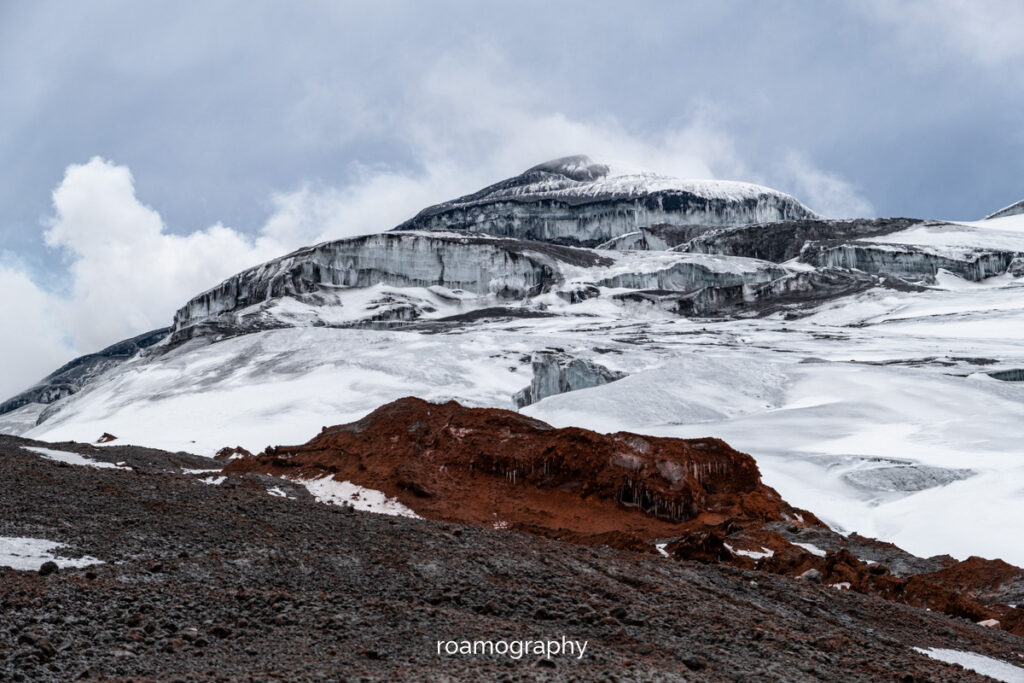

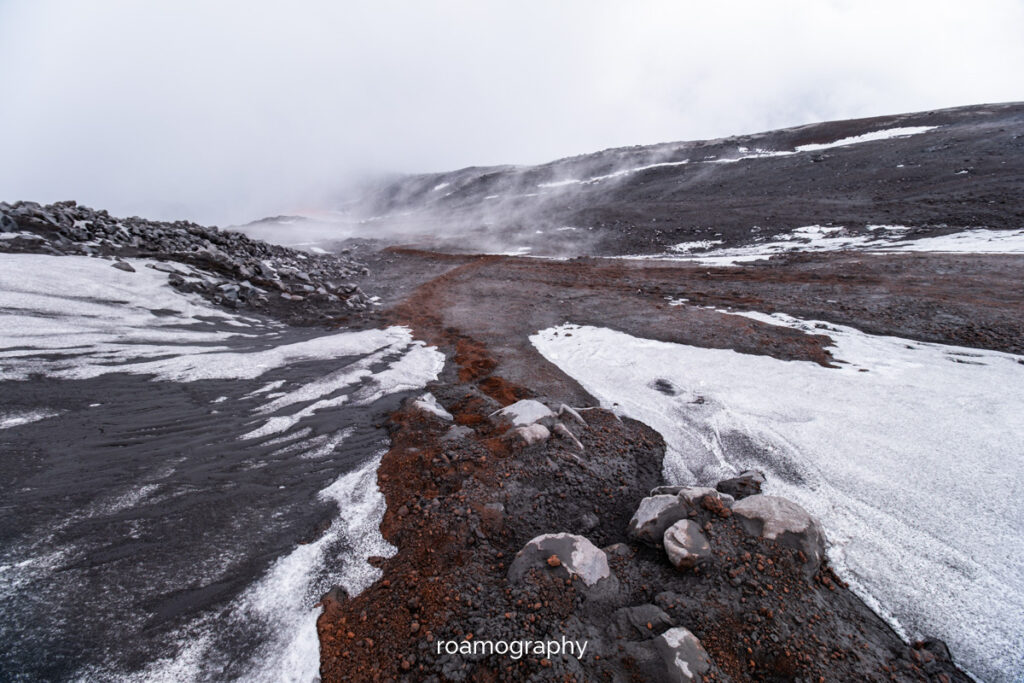
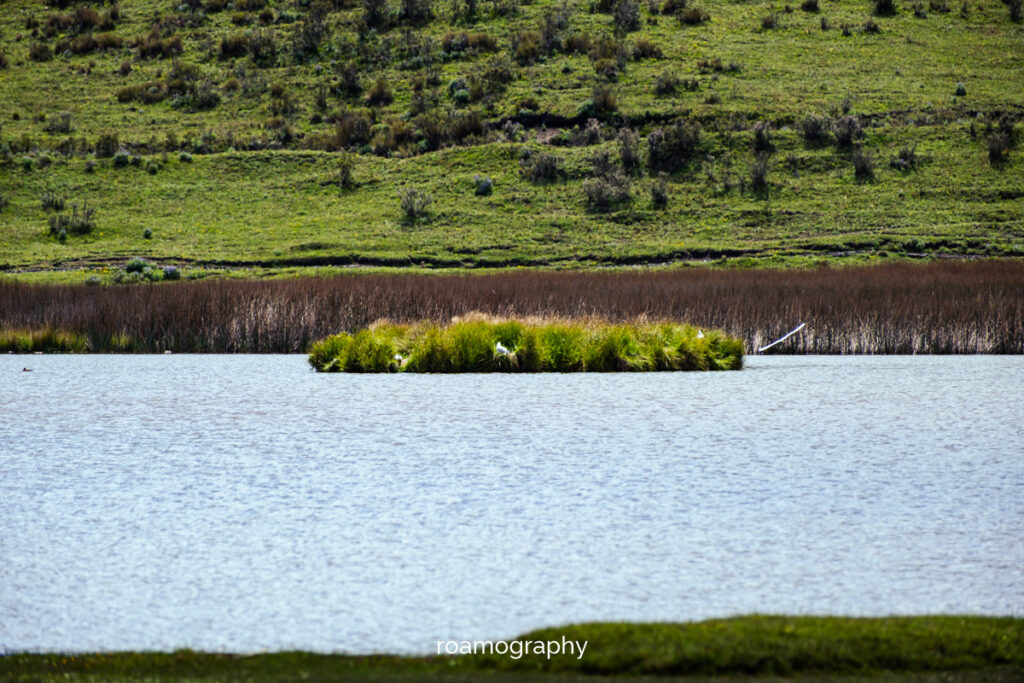
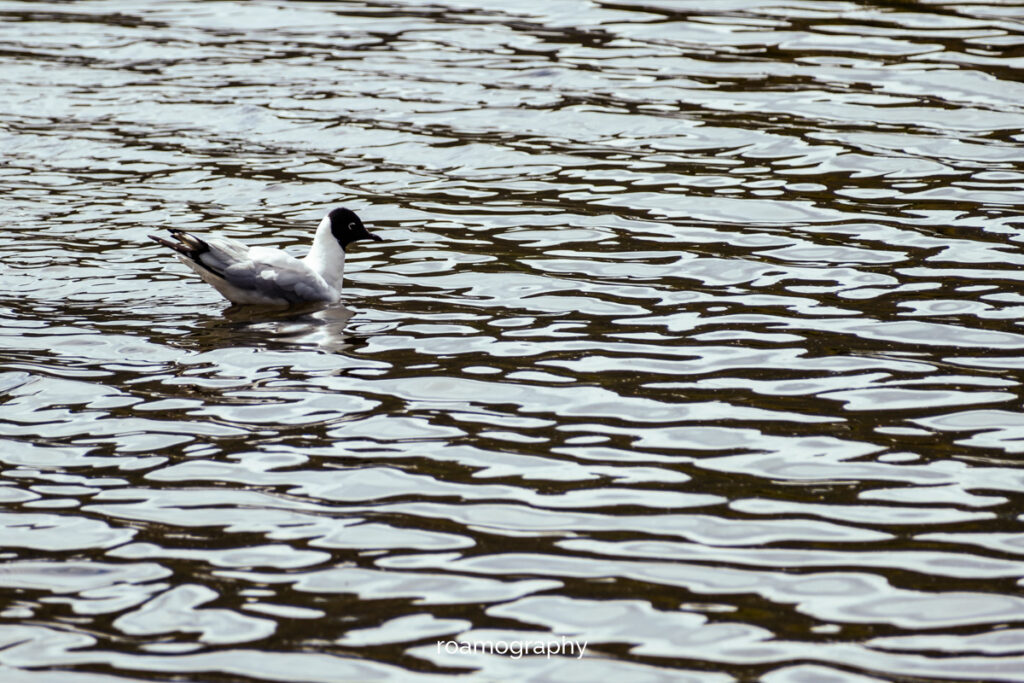
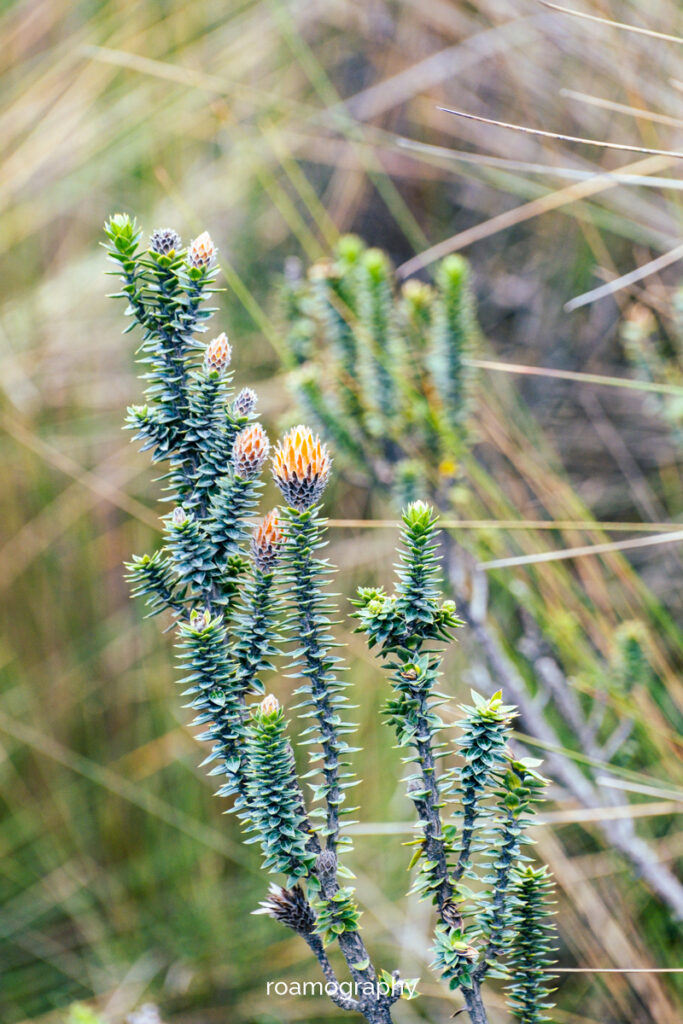
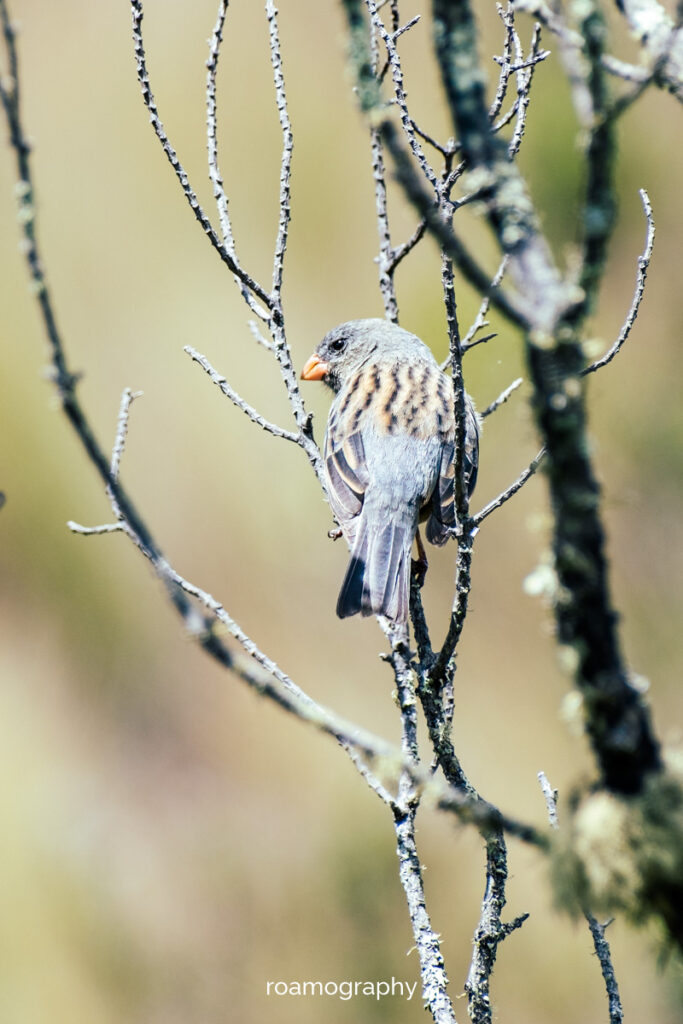
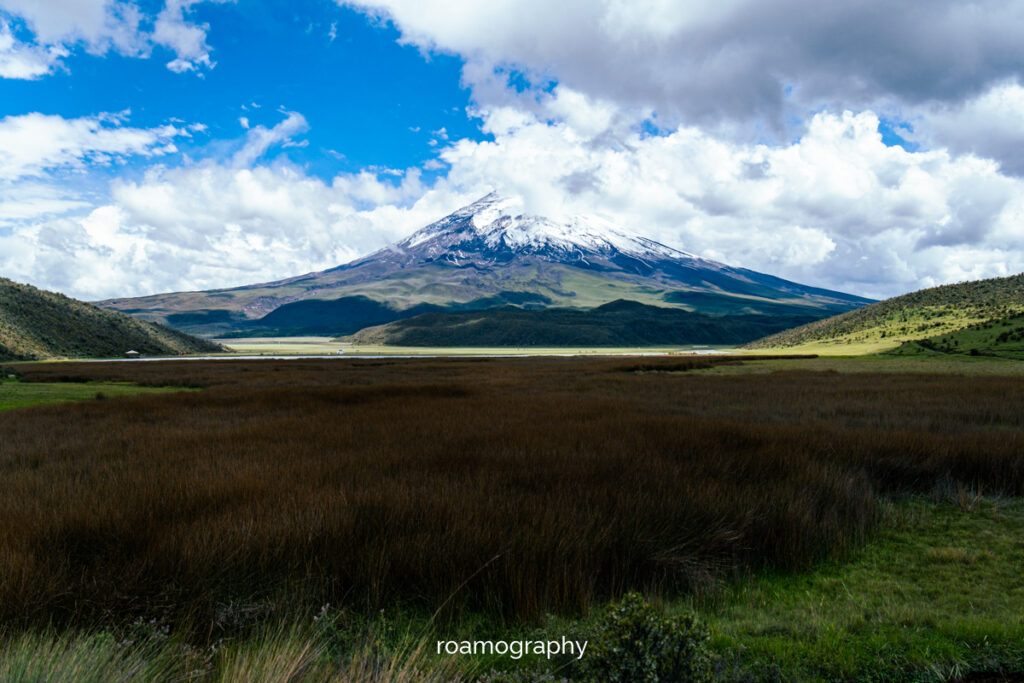
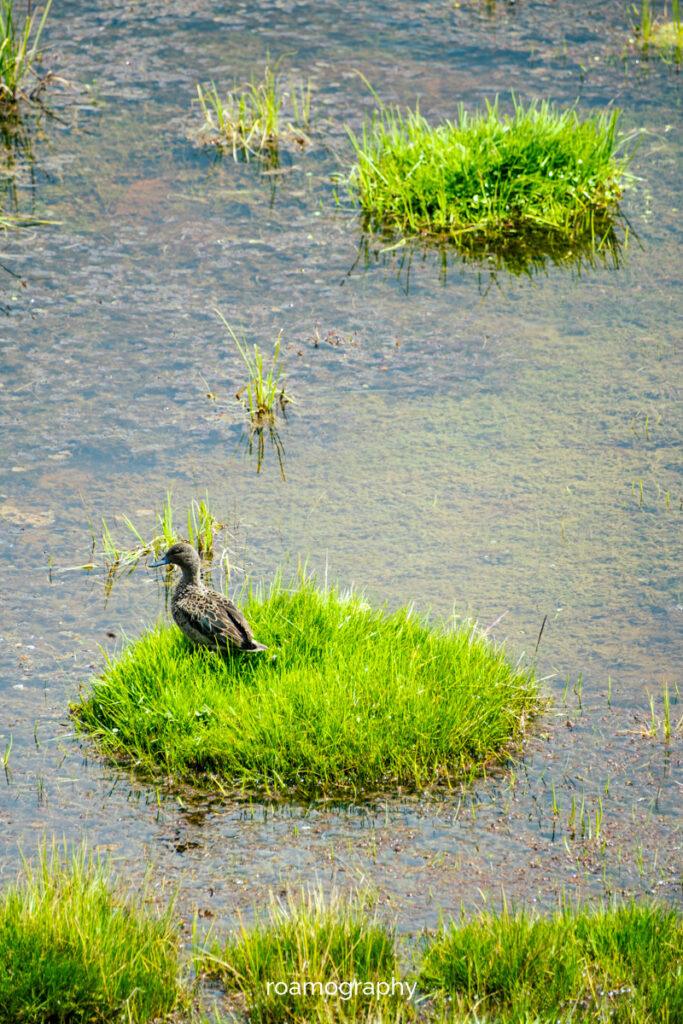
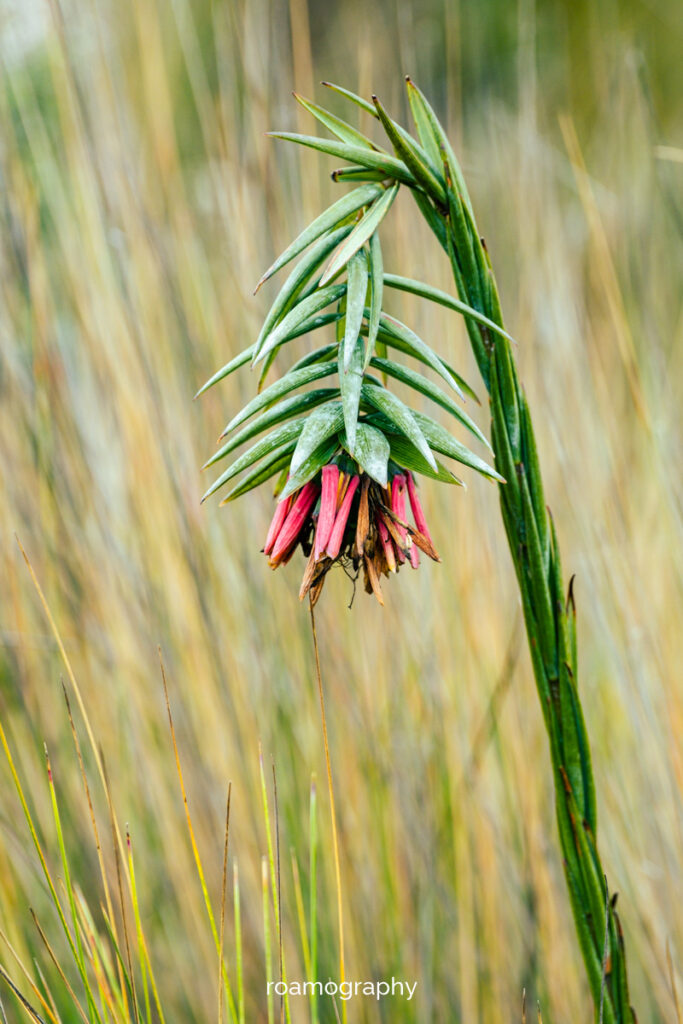
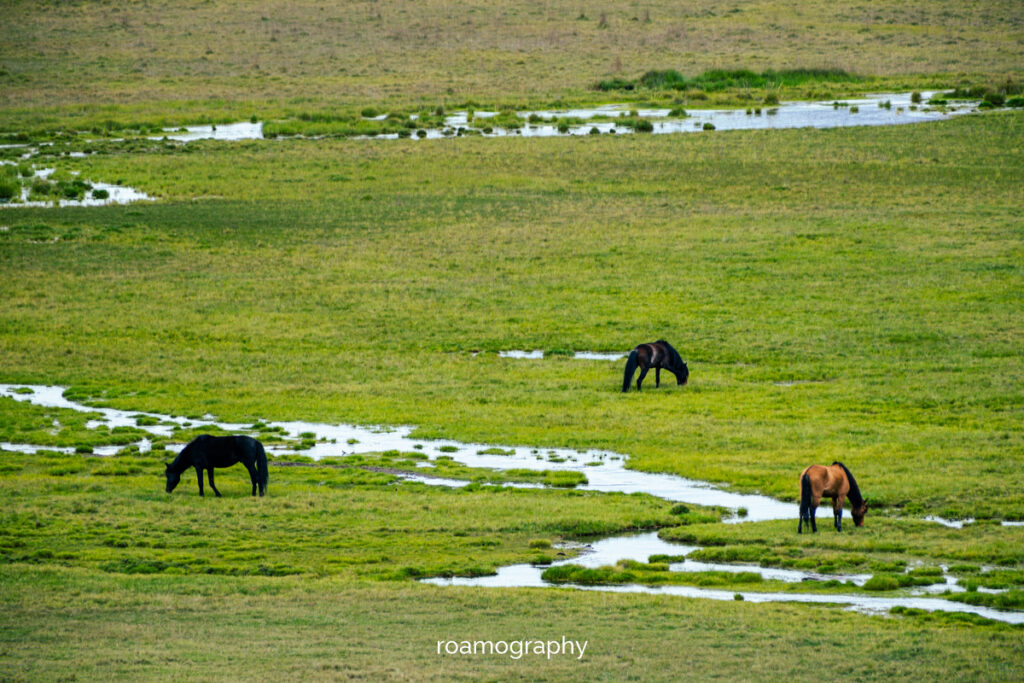
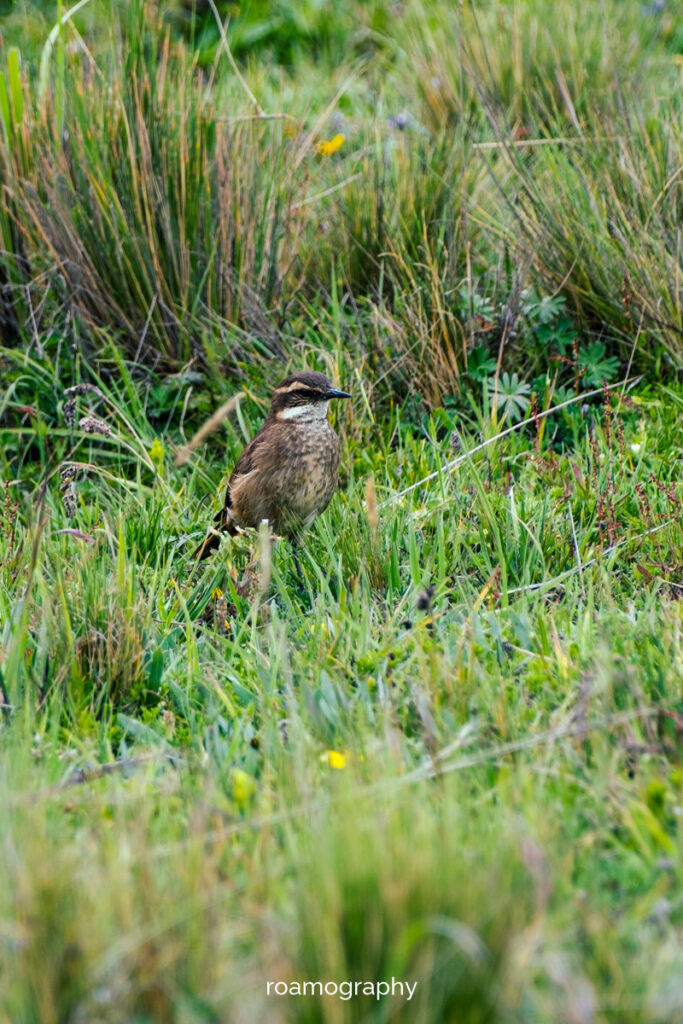
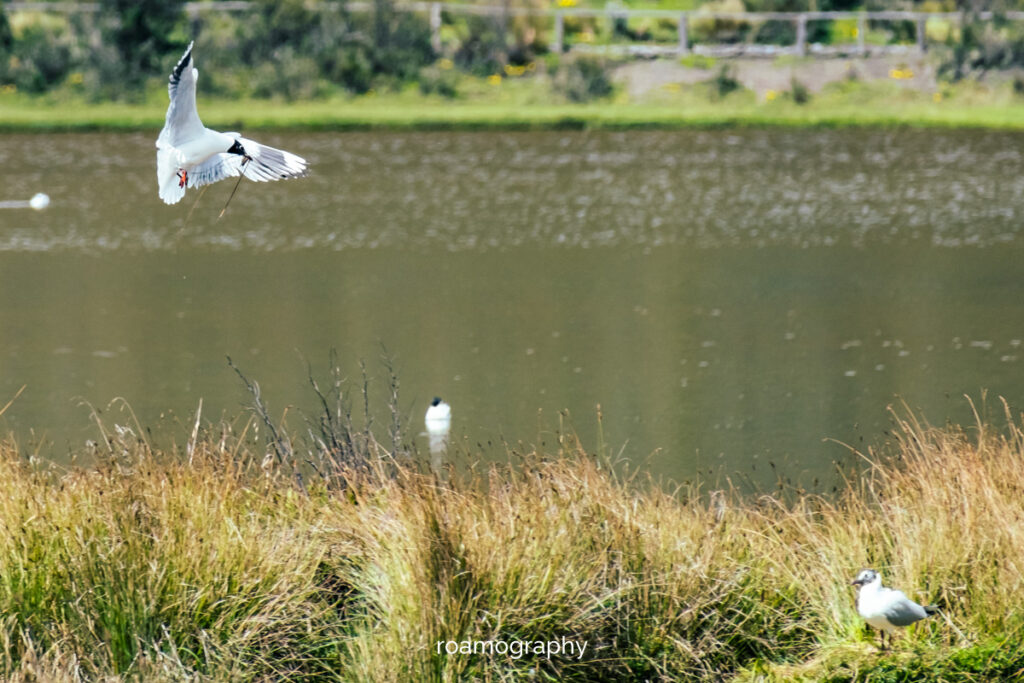
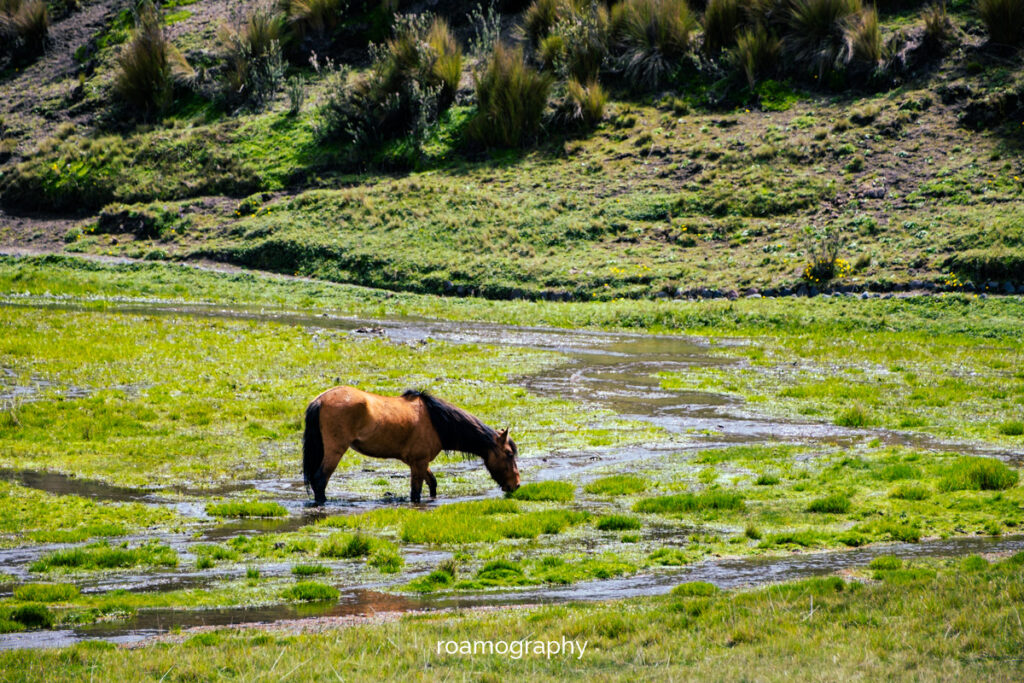

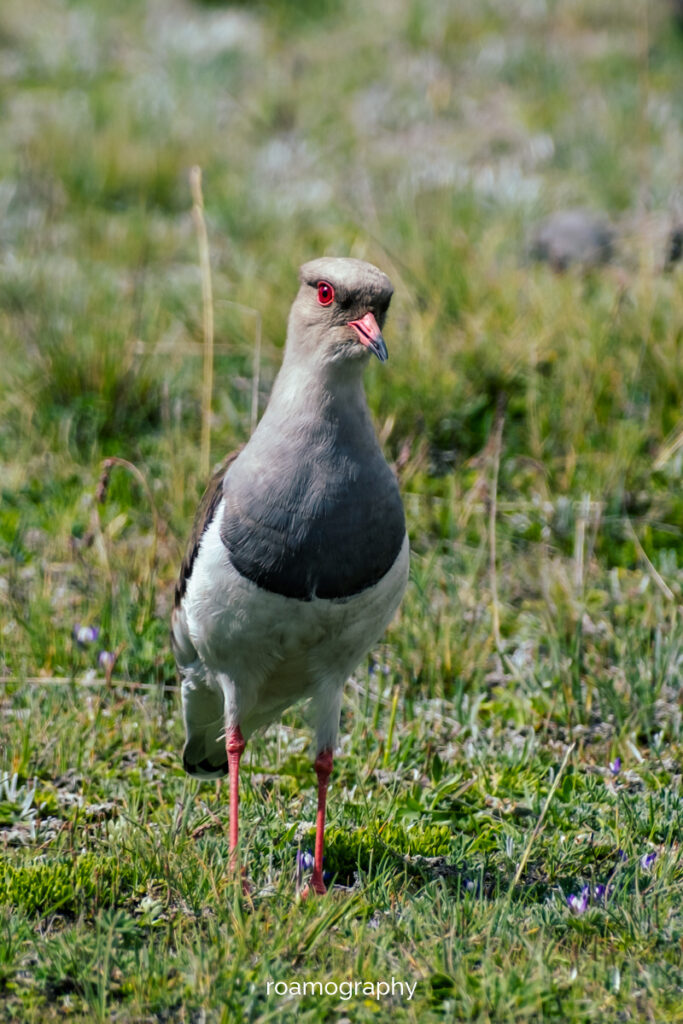
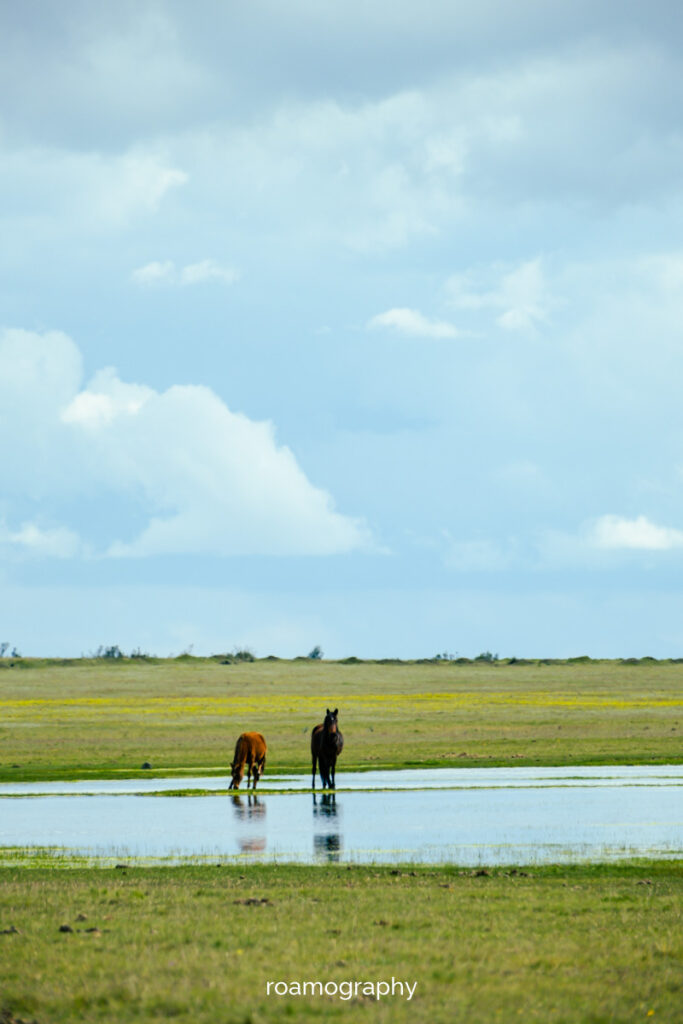
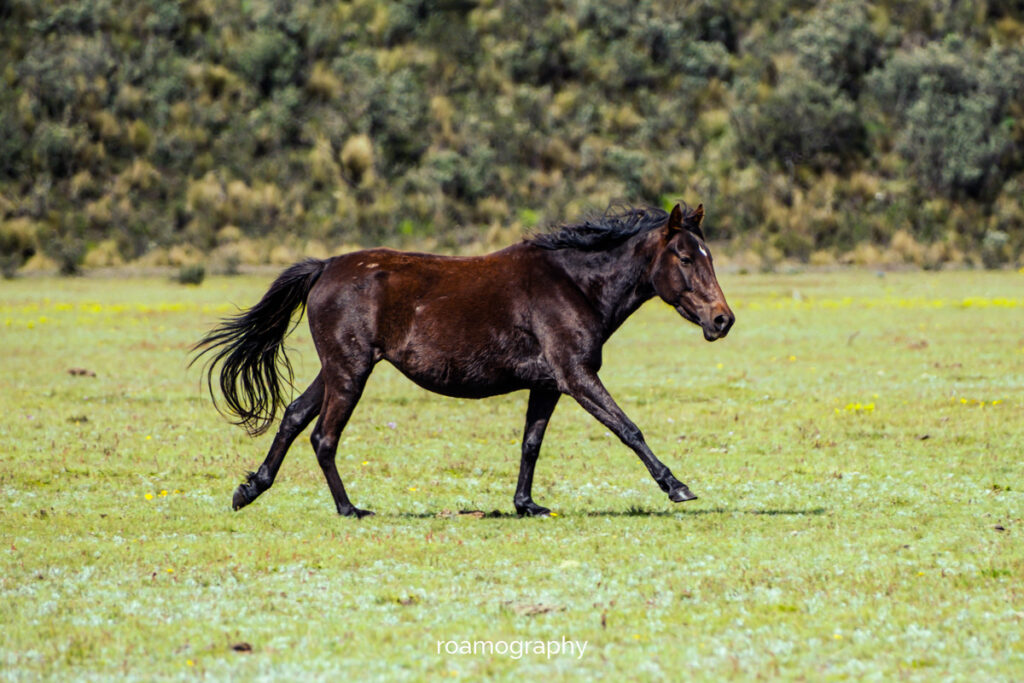
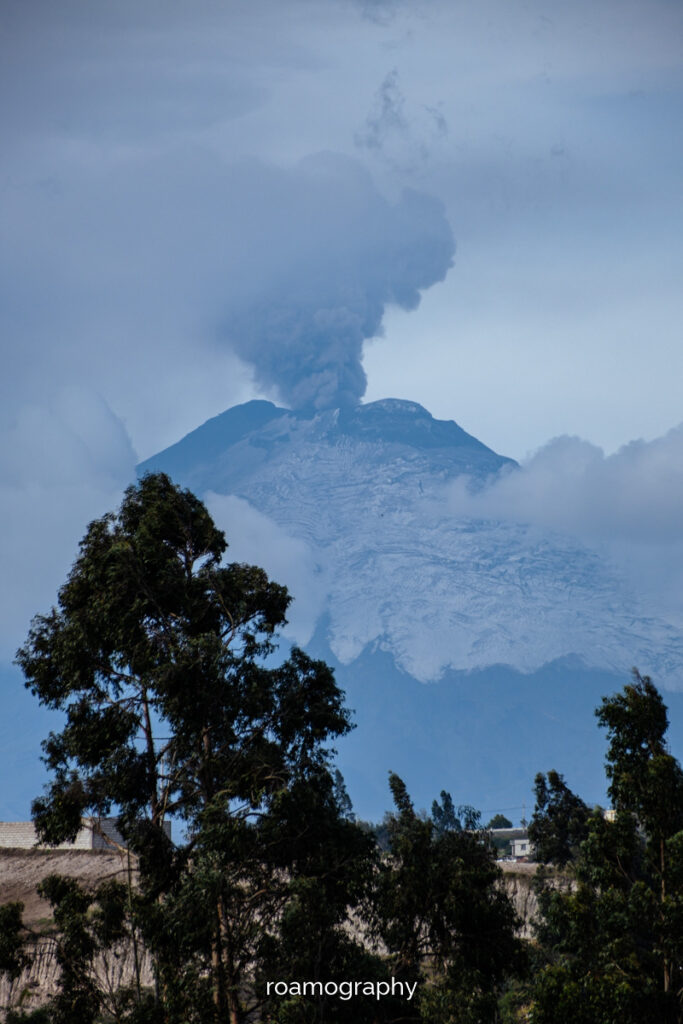
Cotopaxi
Co nie wychodzi z Chimborazo, to udaje się z Cotopaxi. Trafiam na idealne kilkudniowe okienko pogodowe i, ulokowawszy się w Casa del Montañero w Machachi, ruszam z rana w kierunku wulkanu. Transport organizuje hotel, a ponieważ jest czworo chętnych (w tym dwójka Francuzów, którzy przyjechali w nocy znad morze i w ogóle nie martwią się różnicą wysokości), to cenę za transport udaje się zbić do akceptowalnego poziomu. Zanim nasz jeep dotarabani się do podnóża góry (a nawet trochę to podnóże napocznie), miniemy po drodze kilka innych, malowniczych szczytów, po łące przebiegnie kilka dzikich koni, a słońce przyjemnie rozświetli krajobraz. Cotopaxi ciężko wysapuje w niebo swoje chmurne pretensje a ja rozpoczynam marsz – najpierw ku schronisku na wysokości 4800 m a potem wyżej, uprzednio dopytując o szlak i legalność przemierzania go bez przewodnika – nikt nie jest w stanie udzielić mi wiążącej informacji, więc staram się nie rzucać w oczy wdeptując się w miękkie wulkaniczne zbocze. Ostatecznie zatrzymuję się na wysokości 5304 m, uznawszy że dość się nadyszałem i napatrzyłem na śniegowo-lodowe krajobrazy i na panoramę wokół. Poza tym zbliża się pora zstępowania chmur, a nie chciałbym, żeby kierowca jeepa i pozostali podróżnicy zaczęli się o mnie martwić. W drodze powrotnej zatrzymujemy się jeszcze przy jeziorze Limpiopungo, wokół którego robimy sobie rundkę. Jest malowniczo, jest parę dzikich koni, ptaki też są. I Cotopaxi, po raz ostatni, poprawia swój kapelusz z chmur i pozuje do zdjęć.
Alausi is where I finally find a female posse capable of rivaling the style of the señores from the Colombian town of Jericó – the fancy dresses and the way they are worn are second to none!
But before we can admire all these colours and patterns, we have to walk a few kilometres into the town from where the bus stops. The last section of the winding road leading to Alausi has been destroyed by a landslide and is not likely to be repaired any time soon. Near the centre, too, one can see the effects of the forces of nature, disturbed by irresponsible human activity (deforestation = weakening of mountain slopes, leading to landslides).
Apart from such sad images, Alausi offers quite a pleasant atmosphere, atmospheric buildings, a colourful hilltop market with a large statue of Saint Peter and a memory of the glory days of railways in the form of a train running back and forth for a short distance.
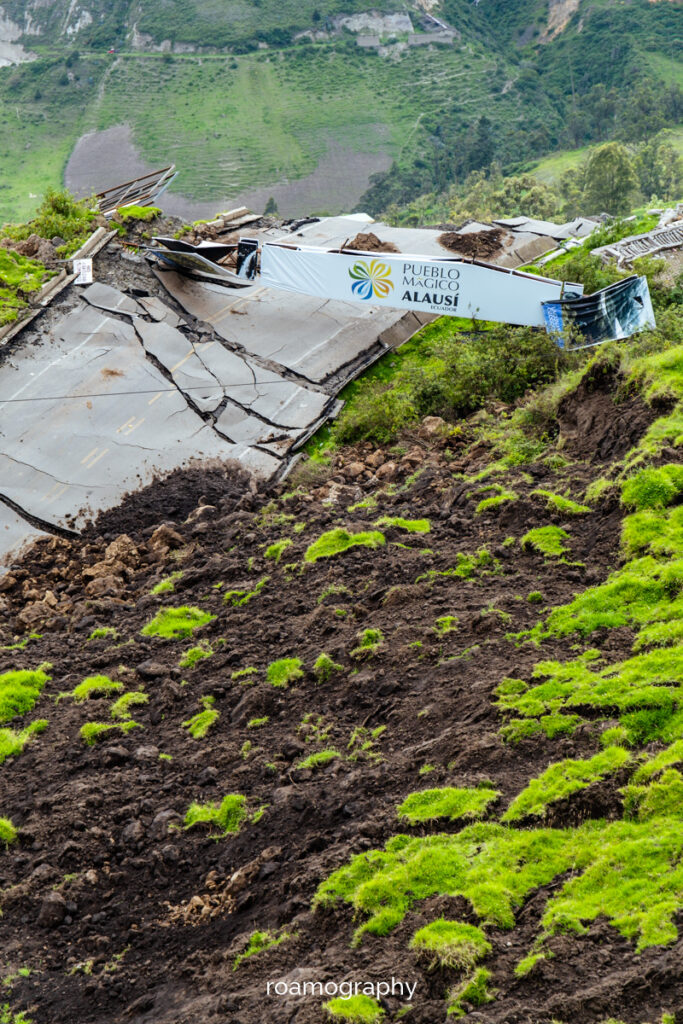
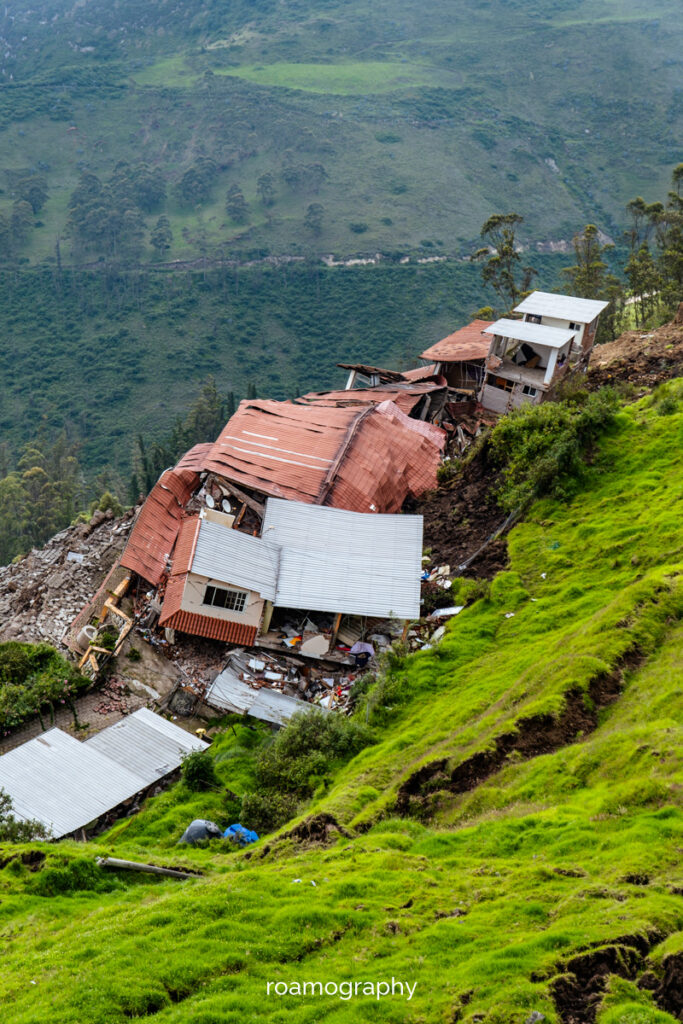
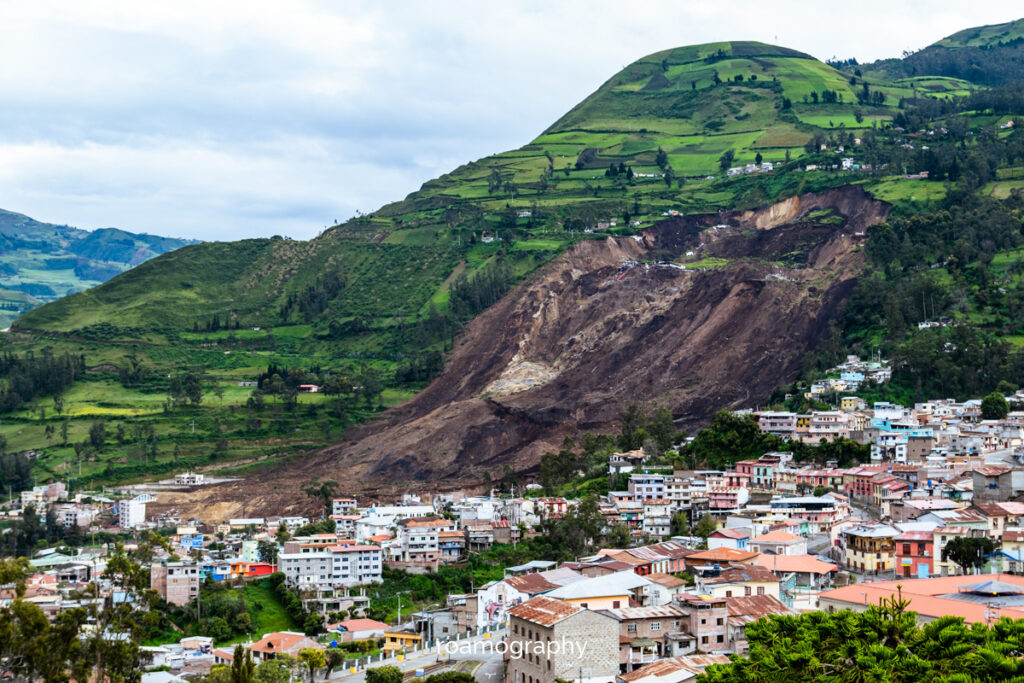
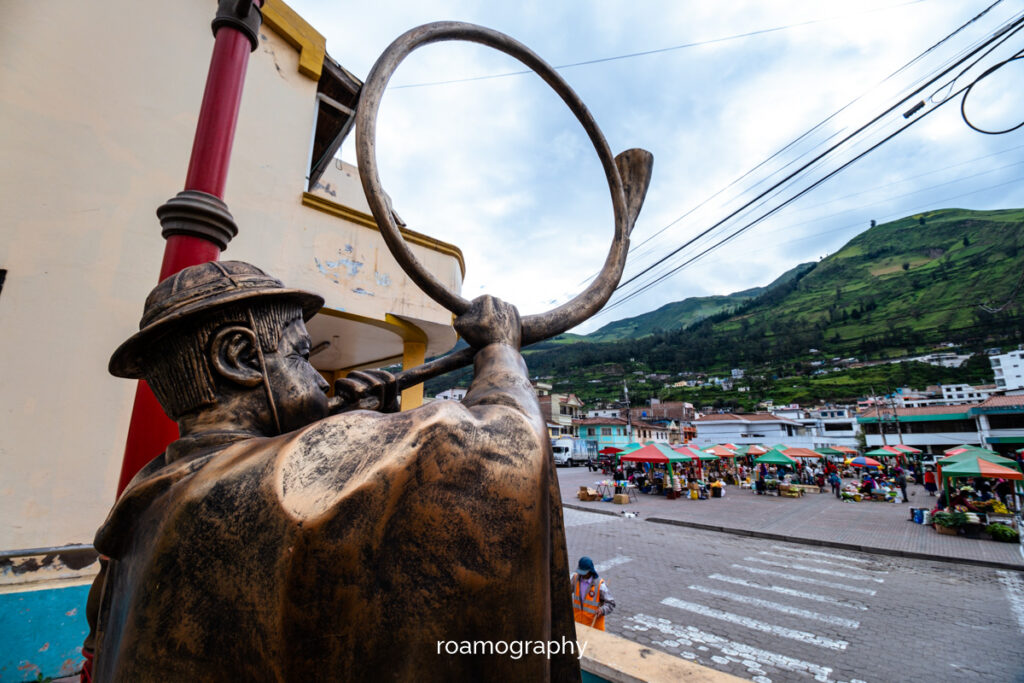
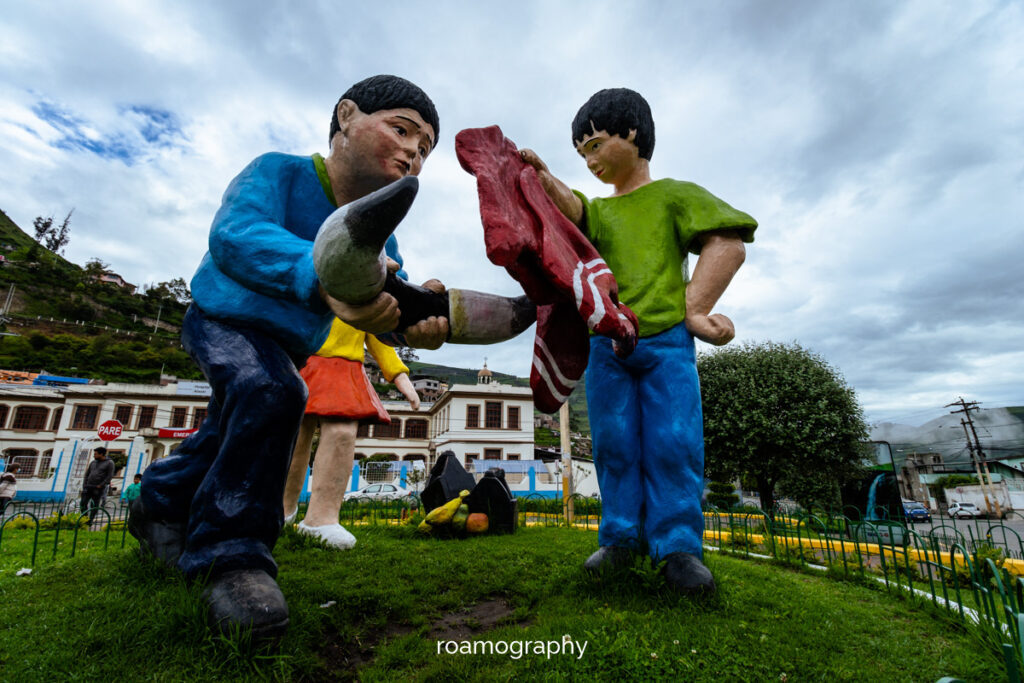
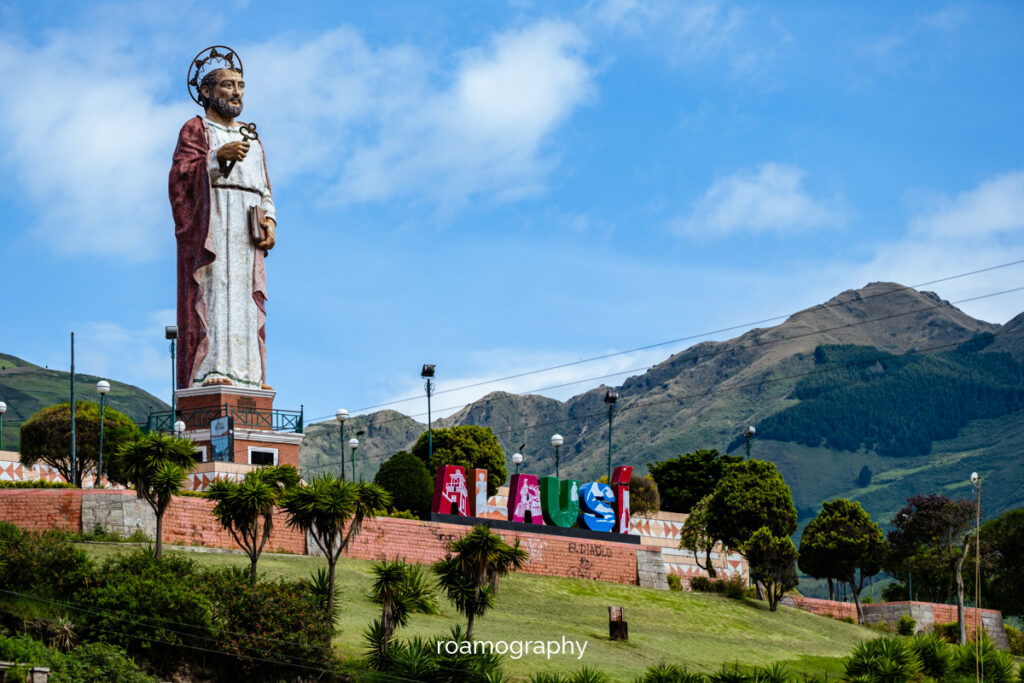
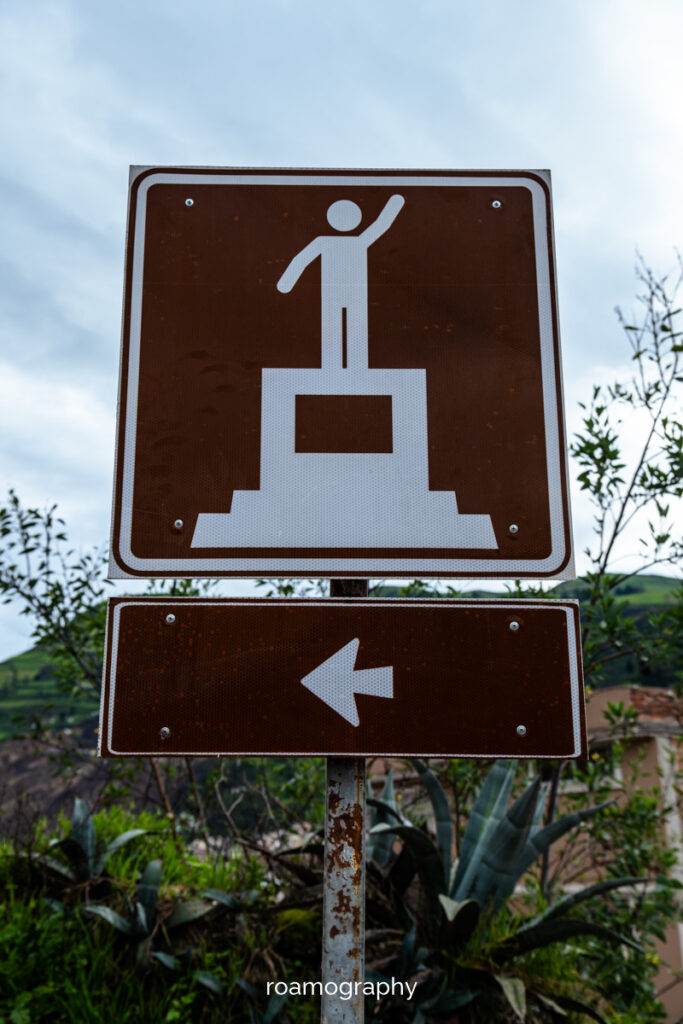
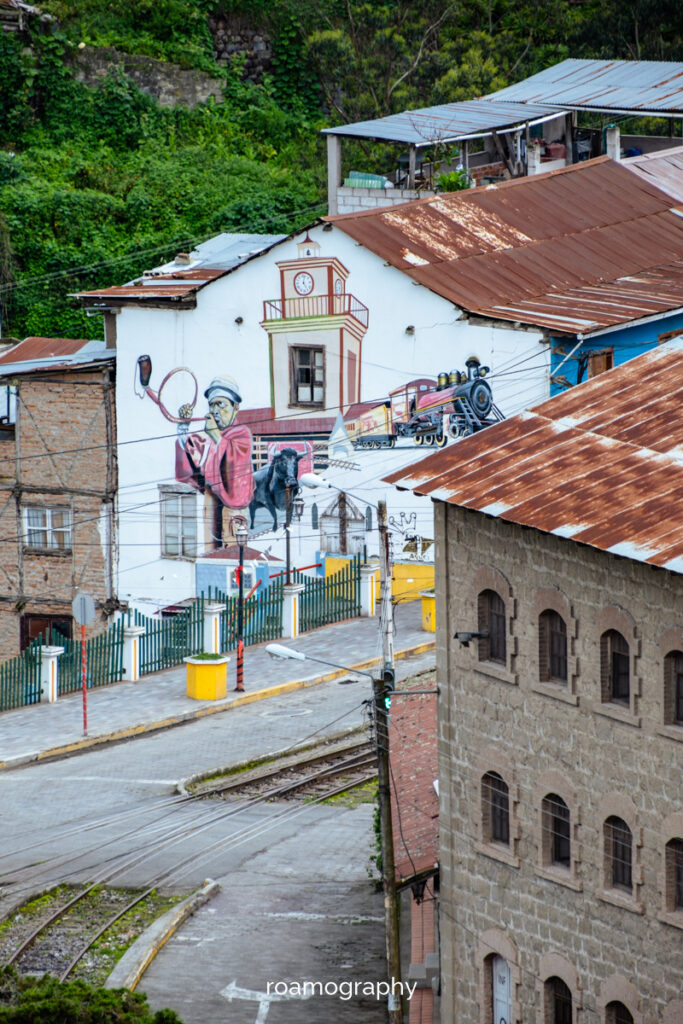
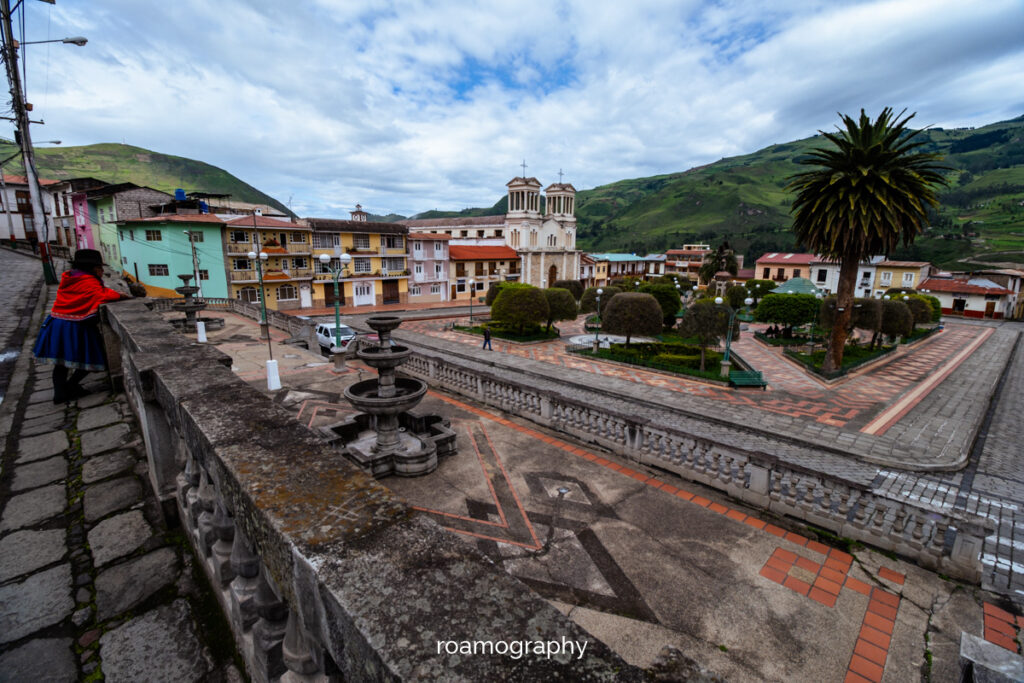
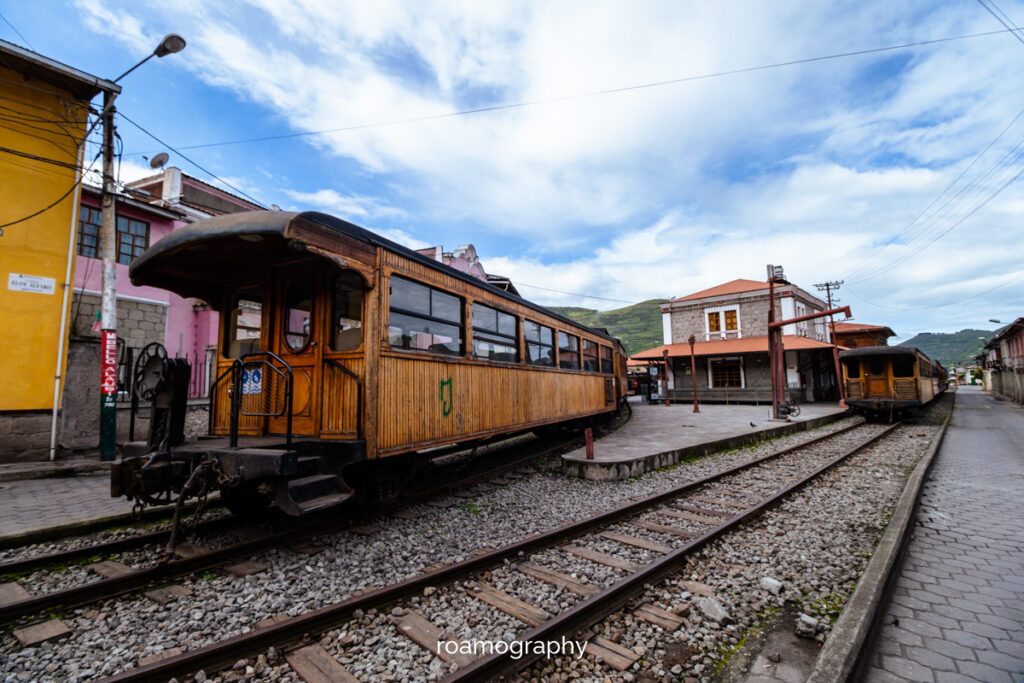
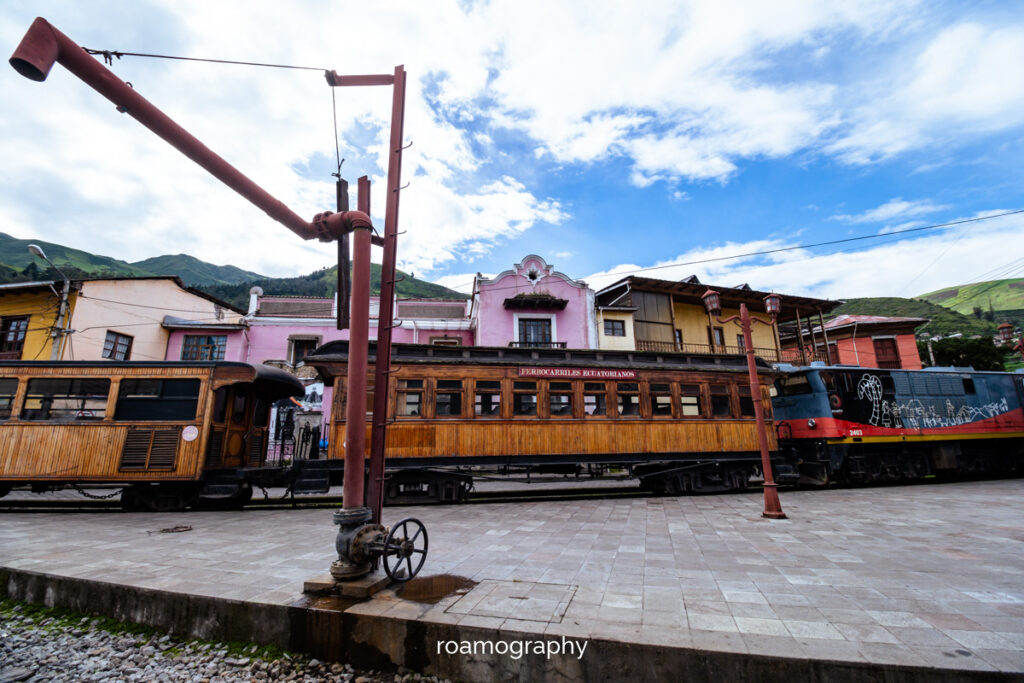
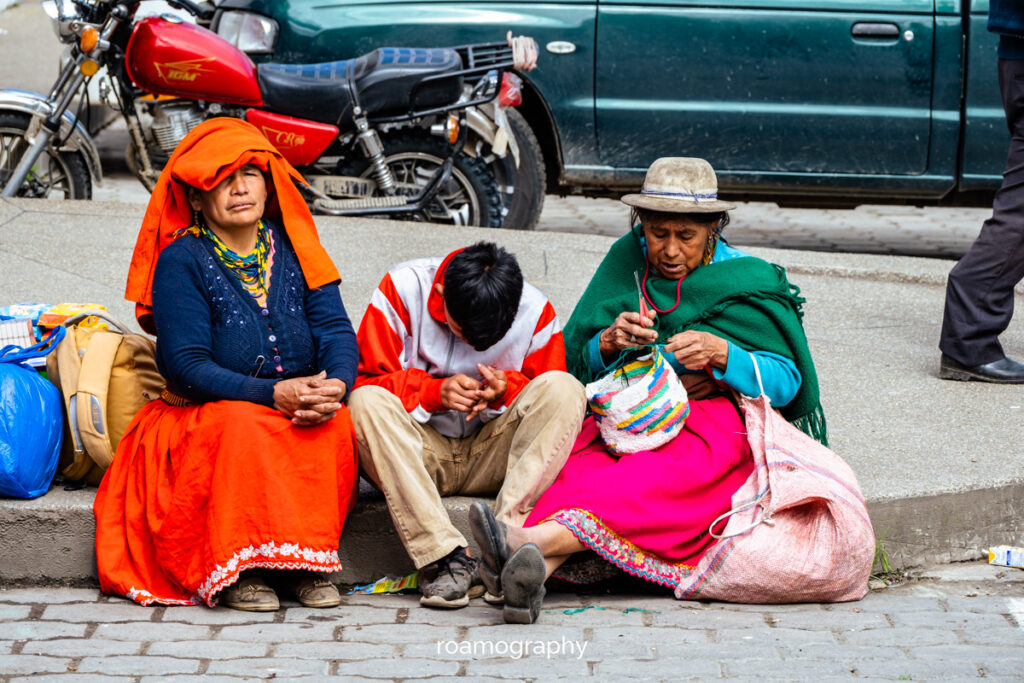
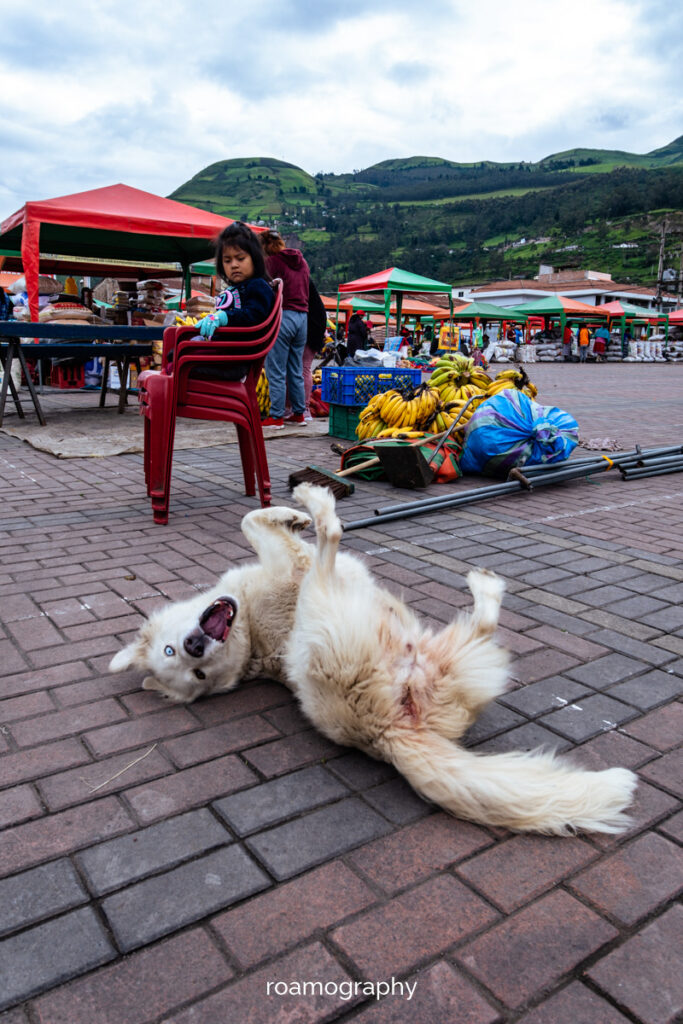
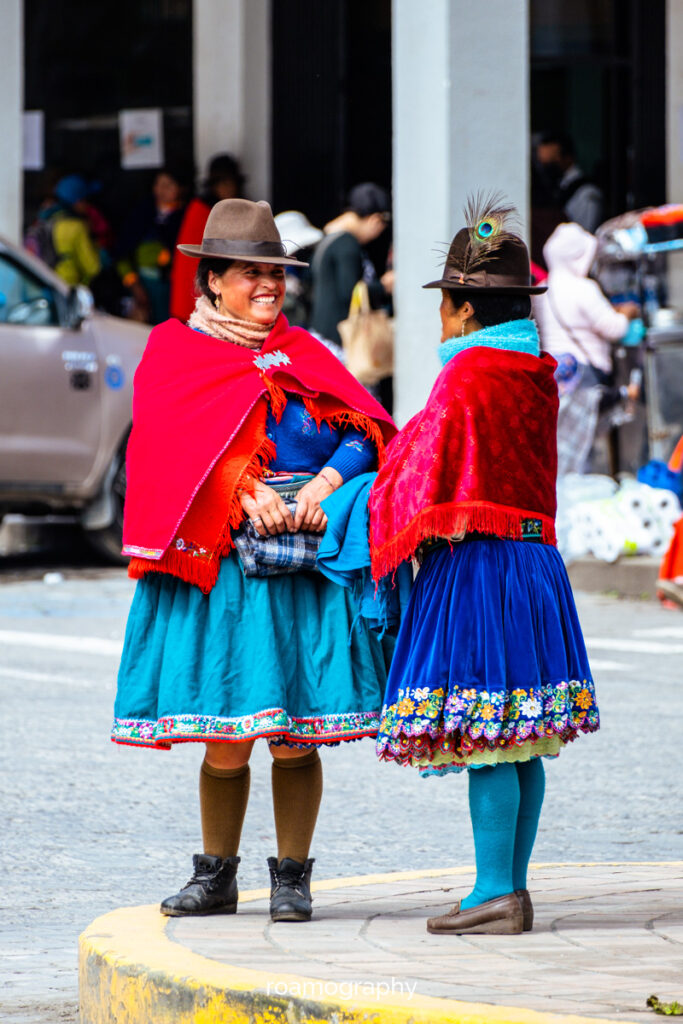
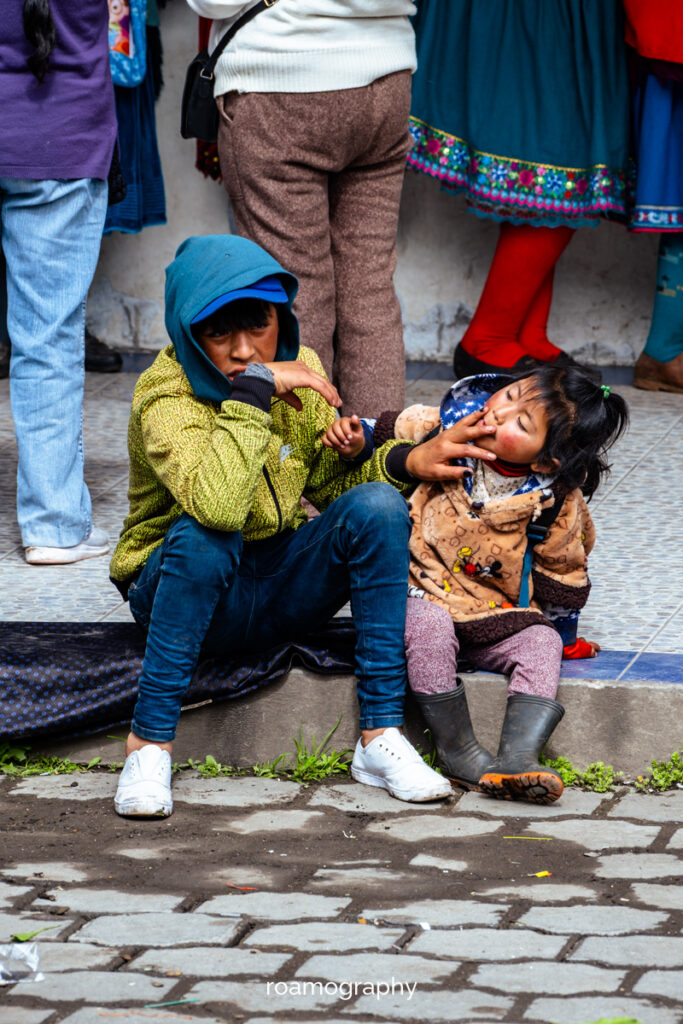
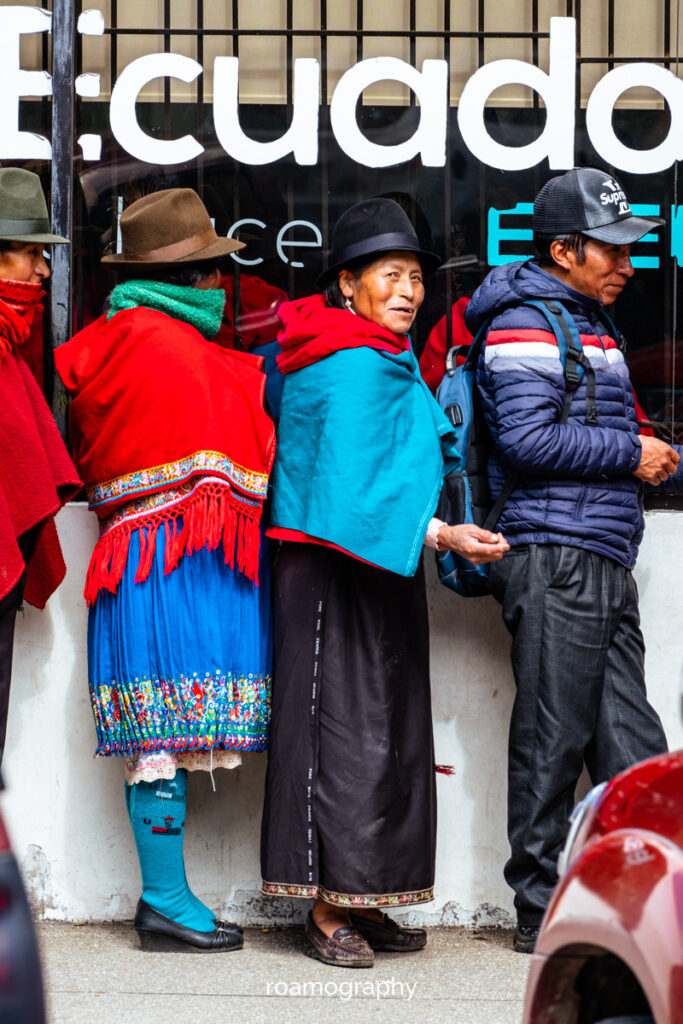
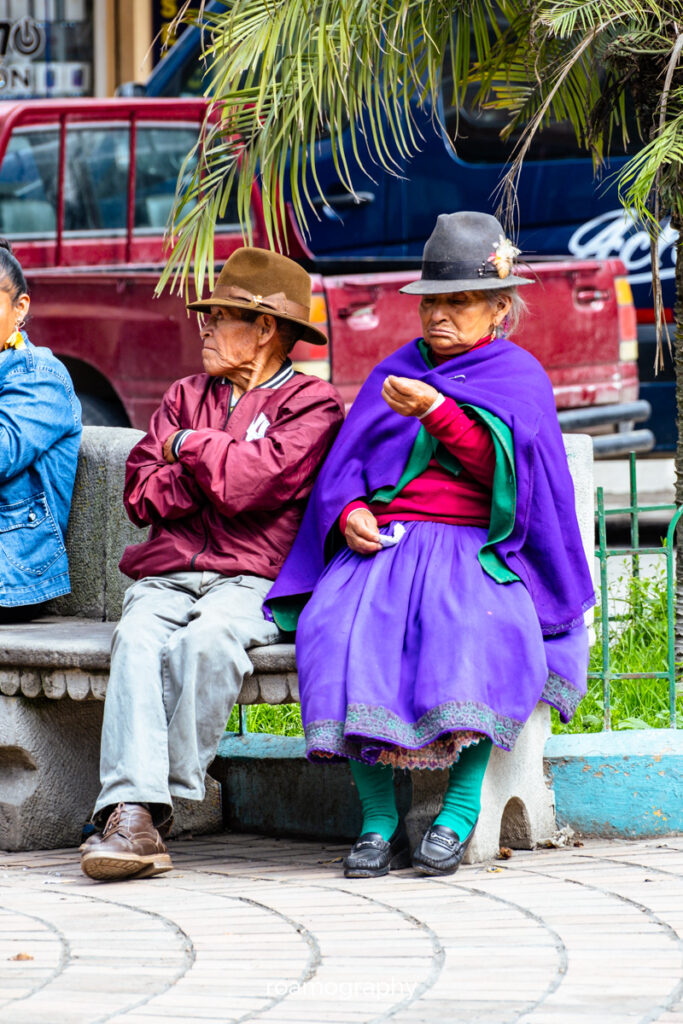

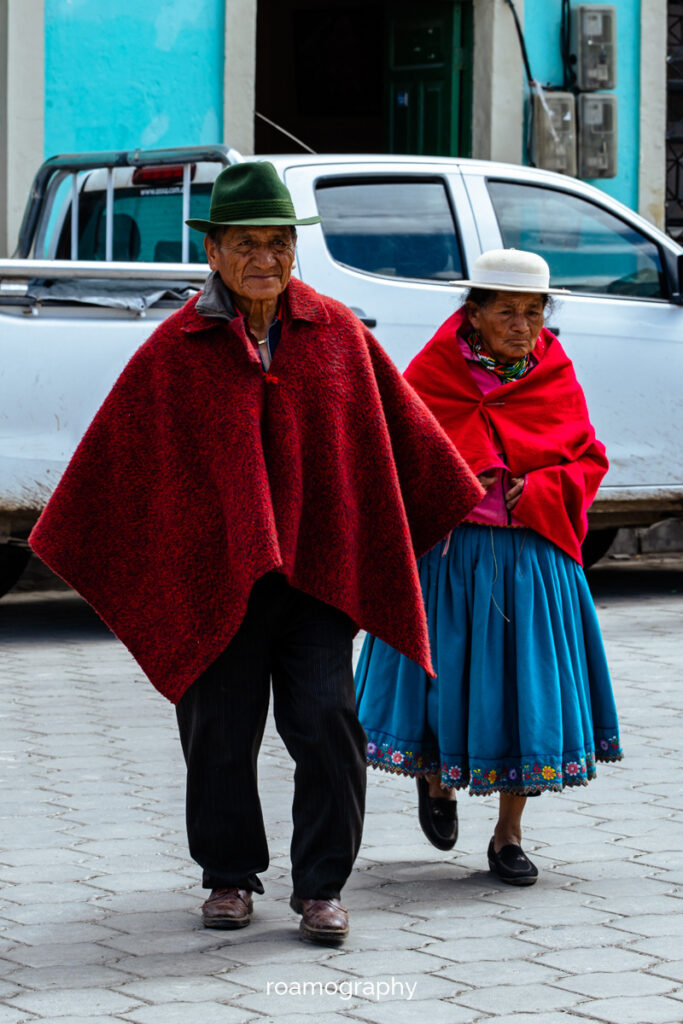
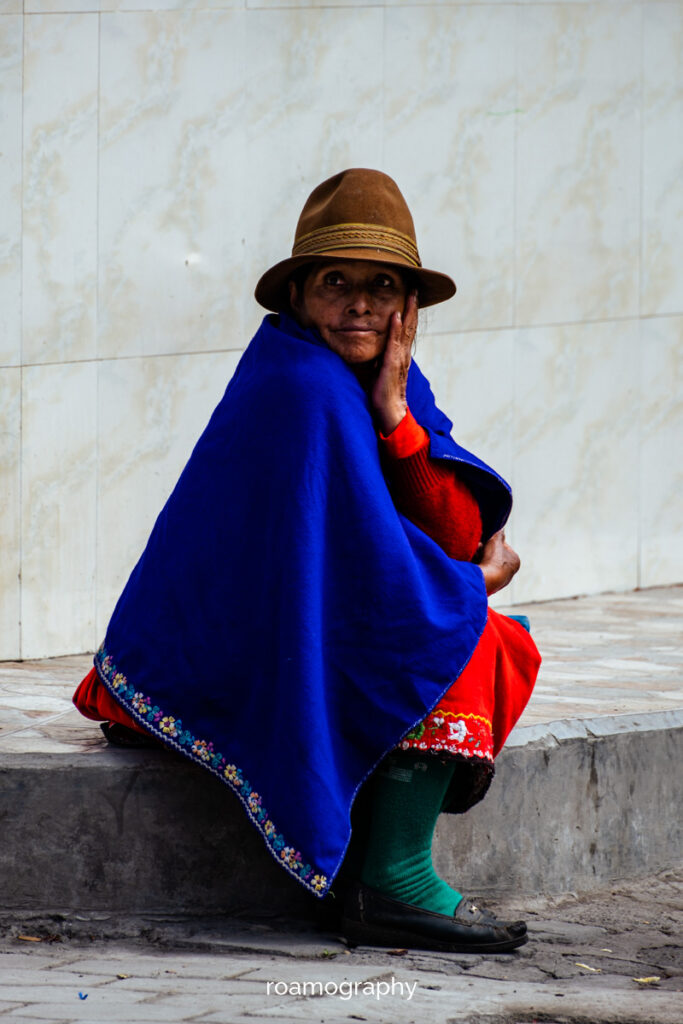
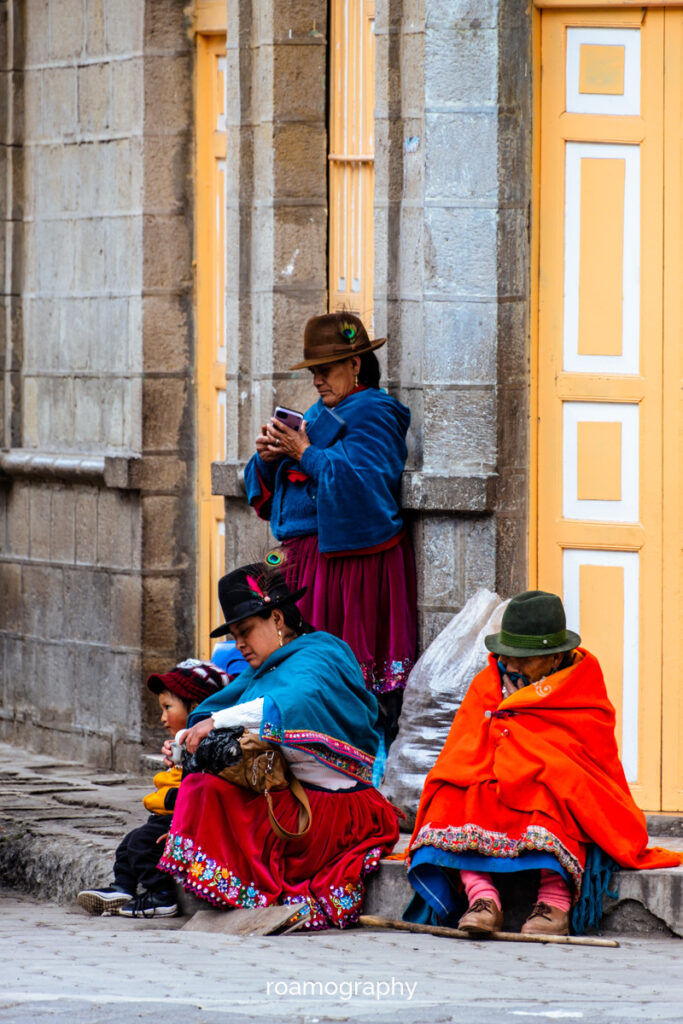
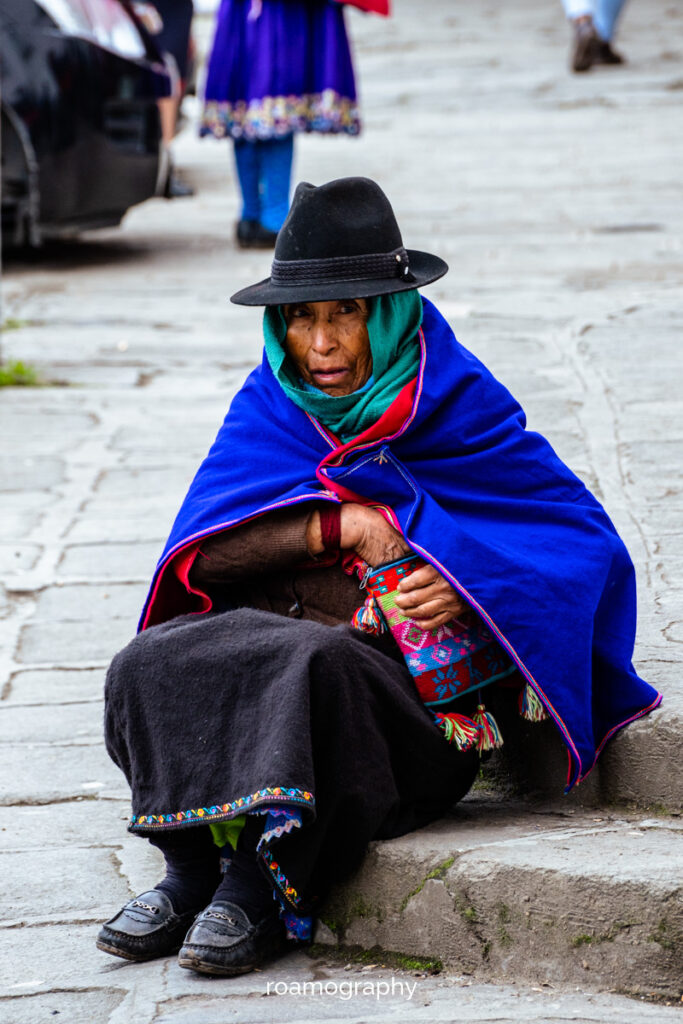
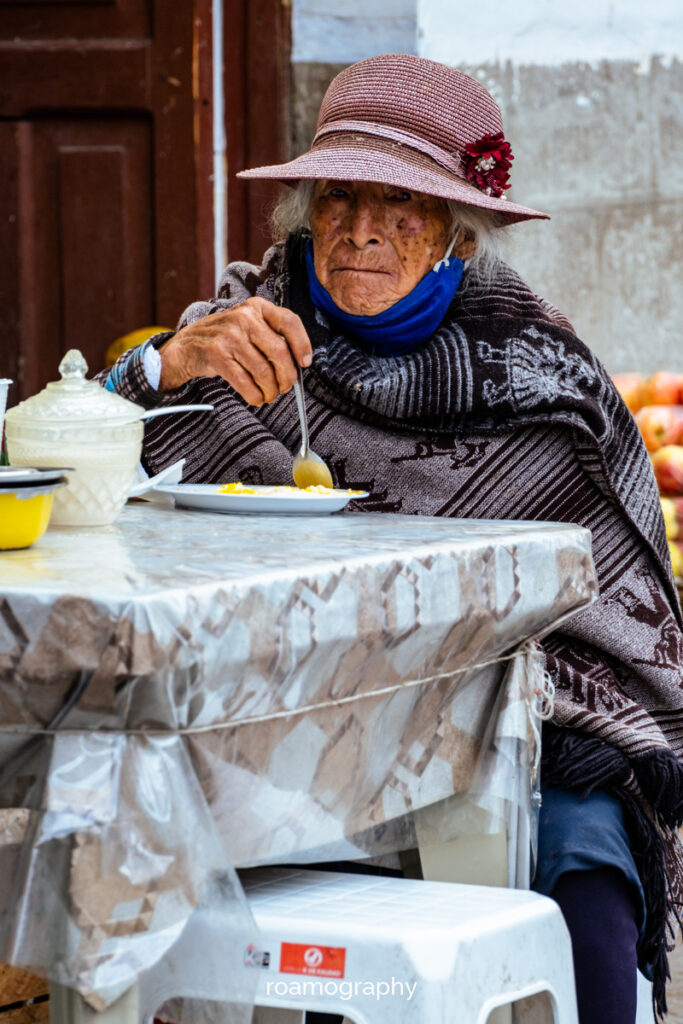
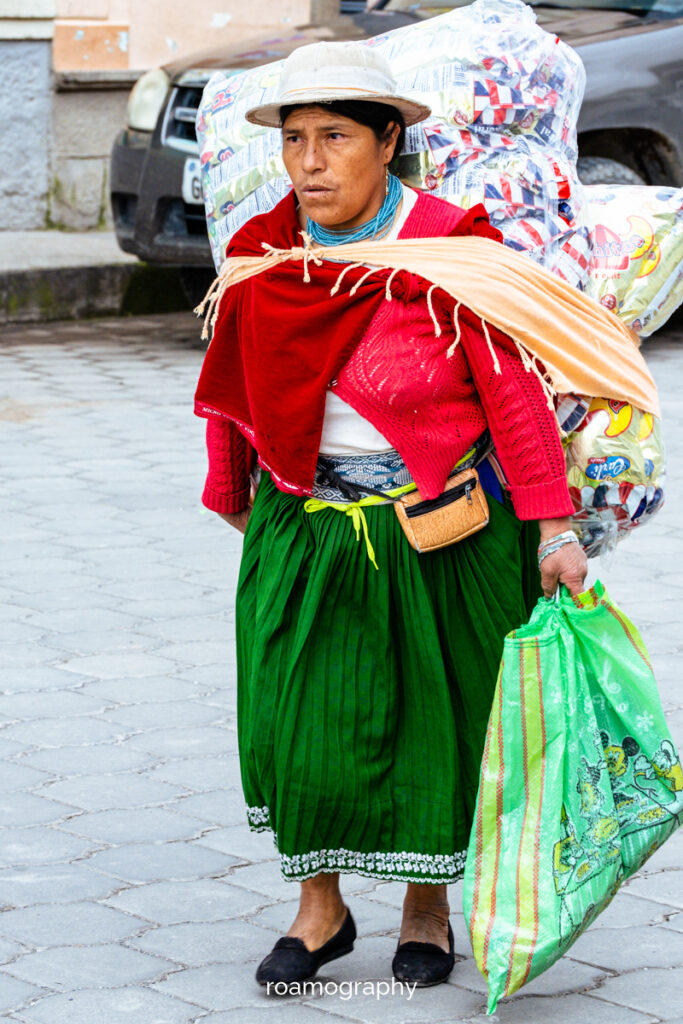

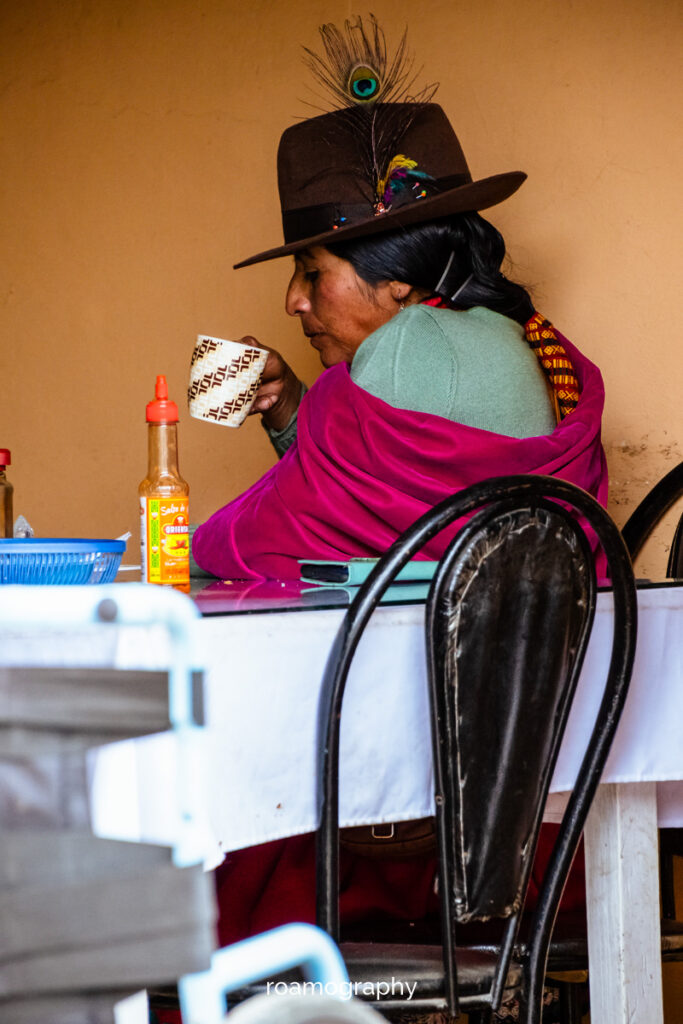

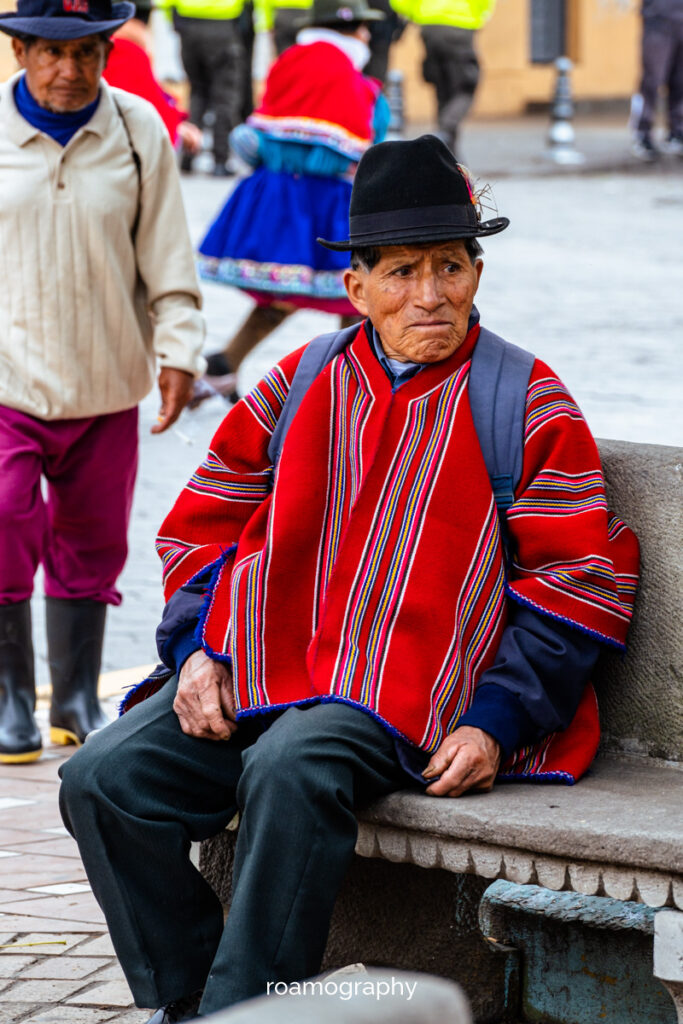
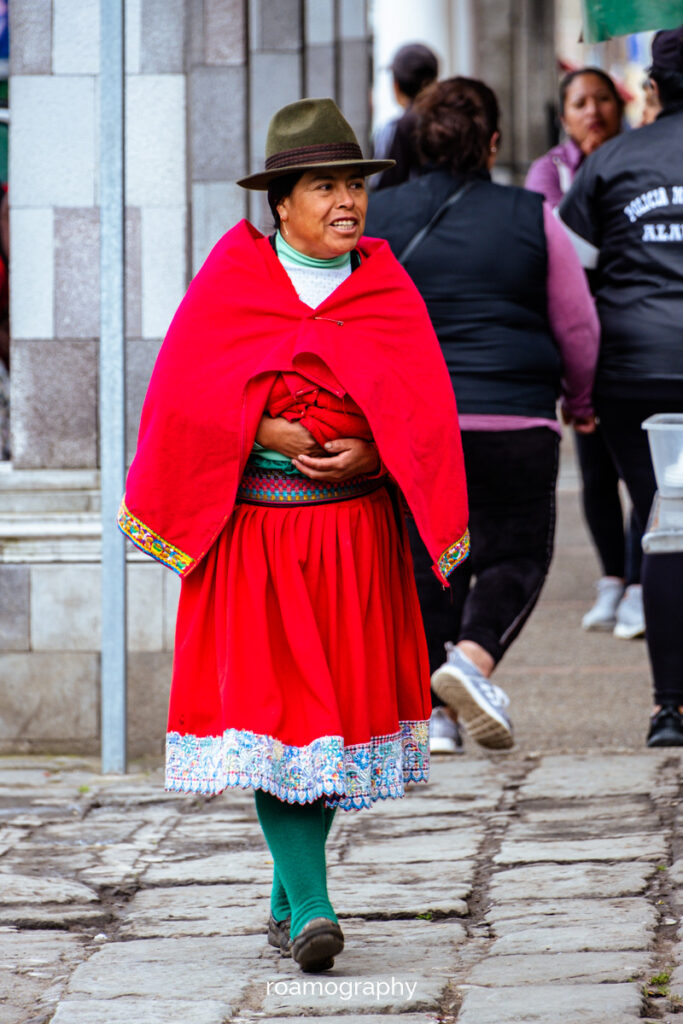
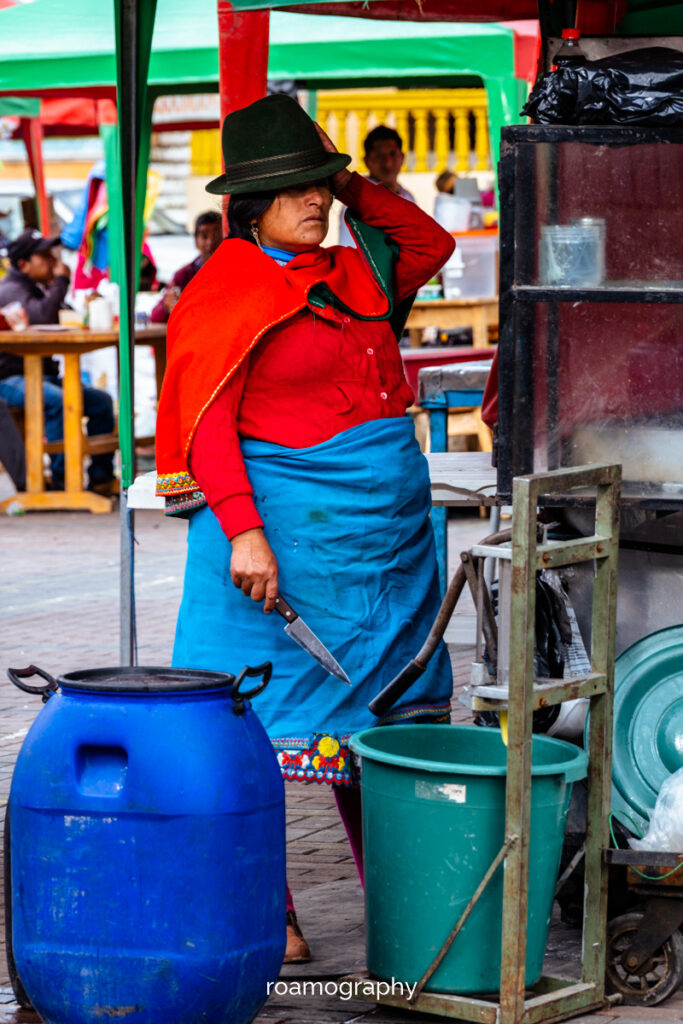
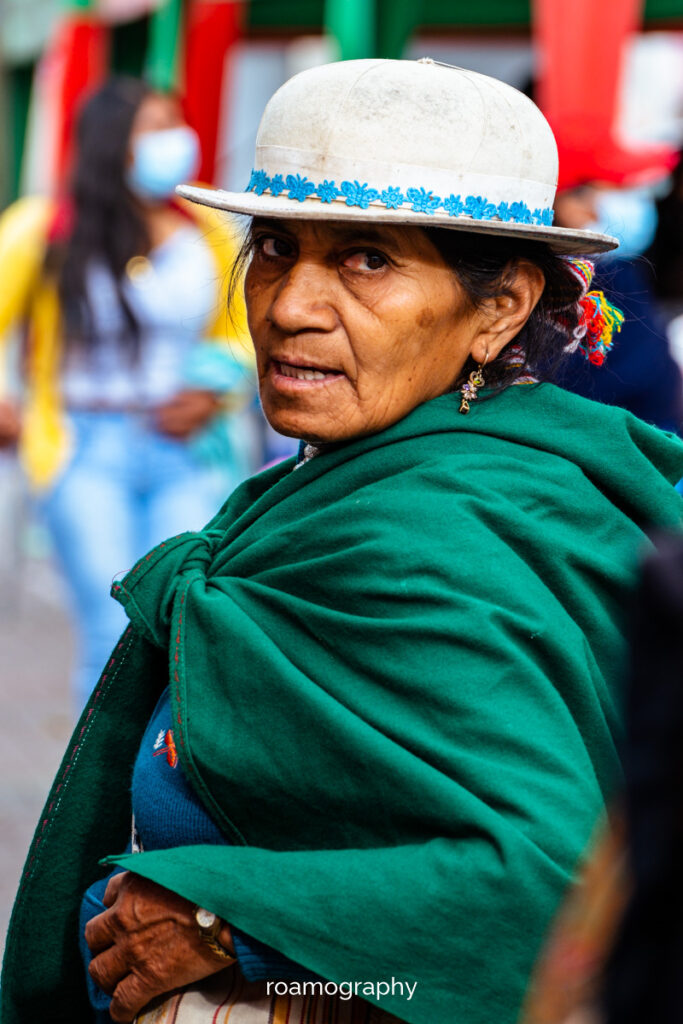
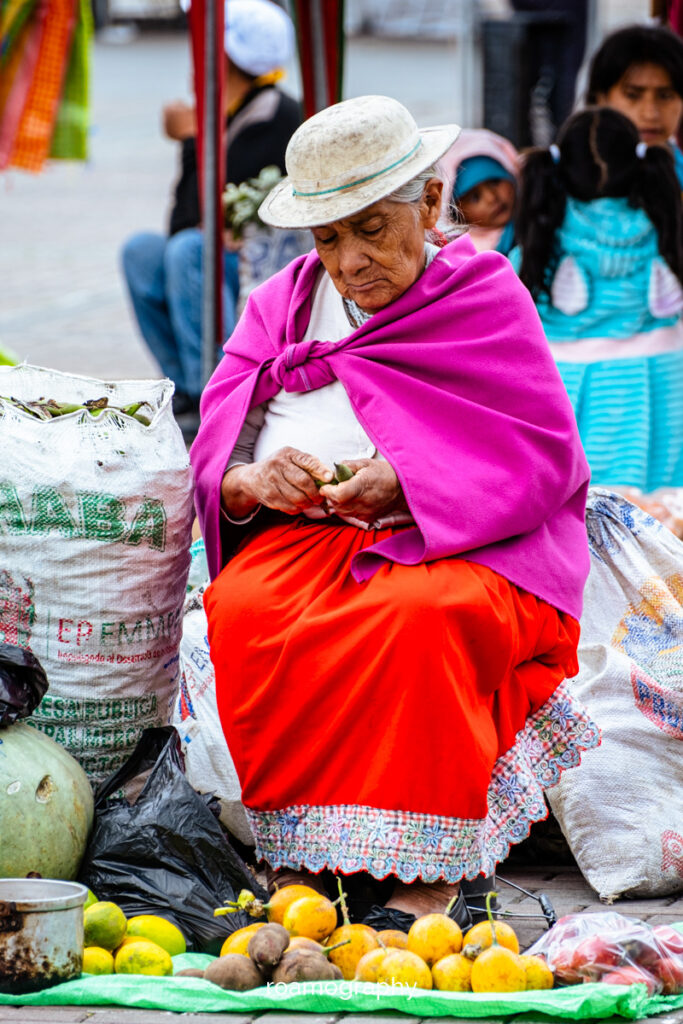

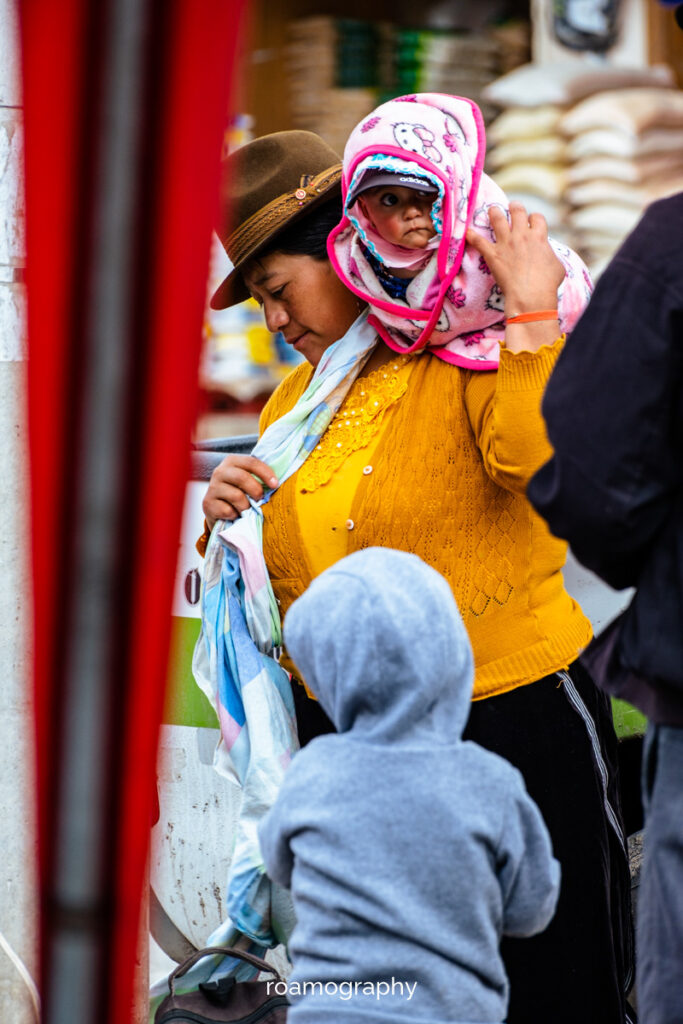
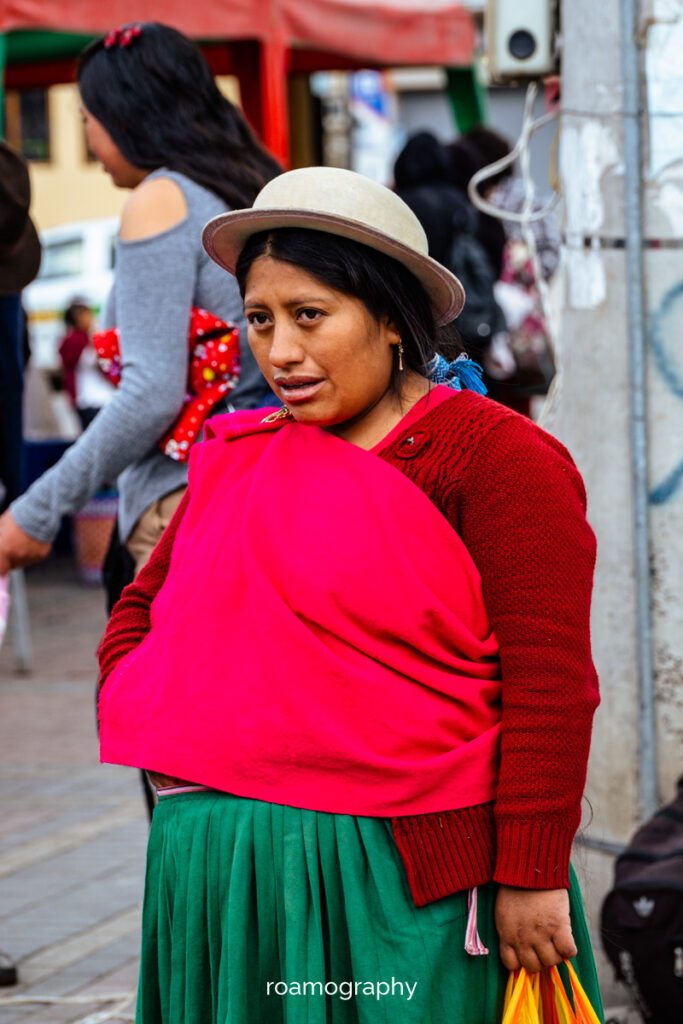
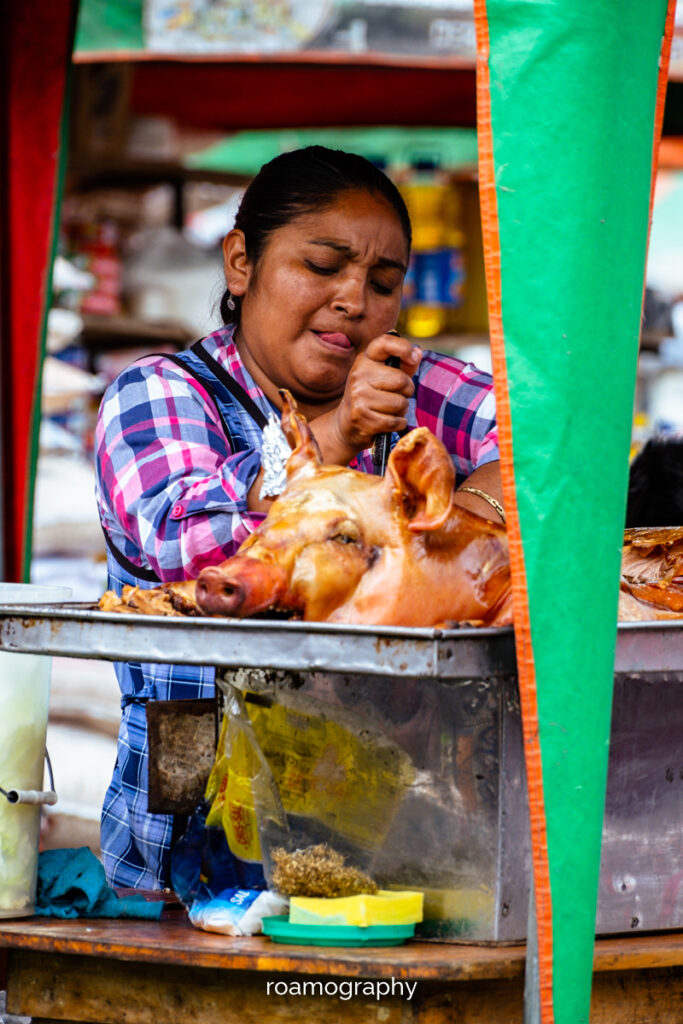
Alausi
Alausi to miejsce, w którym w końcu znajduję kobiecą drużynę zdolną rywalizować z mocą stylu señores z Jericó w Kolumbii – tutejsze kreacje i sposób ich noszenia nie mają sobie równych!
Zanim jednak będzie nam dane podziwiać wszystkie te barwy i wzory, musimy przejść parę kilometrów do miasteczka od miejsca, w którym zatrzymuje się autobus. Ostatni fragment krętej drogi prowadzącej do Alausi został zniszczony przez osuwisko skalne i nie zanosi się, żeby miał szybko zostać naprawiony. W pobliżu centrum również widać skutki działania sił natury, wzburzonej nieodpowiedzialną działalnością człowieka (wycinka lasów = osłabianie zboczy górskich, co prowadzi do powstawania osuwisk).
Oprócz takich smutnych obrazków, Alausi oferuje całkiem sympatyczną atmosferę, klimatyczną zabudowę, kolorowe targowisko wzgórze z wielką figurą Świętego Piotra i wspomnienie dni chwały kolejnictwa w postaci pociągu jeżdżącego w te i we wte na krótkim odcinku.
Cuenca is a must-see on a trip through Ecuador. The old town and its churches gracefully pose for photos, numerous museums, half-museums and quarter-museums invite you to stop by…. A little bit away from the very centre, there are also less obvious places like Centro Cultural Prohibido (with interesting works of satanic-gothic-horrible art) or Museo Pumapungo, where you can take a run through the history of the region’s cultures (and also see the legendary miniaturised heads of the Shuar minority; btw, such heads can still be purchased as souvenirs in Ecuador, except that they are not human heads, but decapitated heads of misfortunate sloths), there is also the Museum de la Tierra and las Artes de Fuego and its surroundings with cool eateries; in front of this museum we also have the opportunity to watch the chacana ceremony, a tribute to Pachamama.
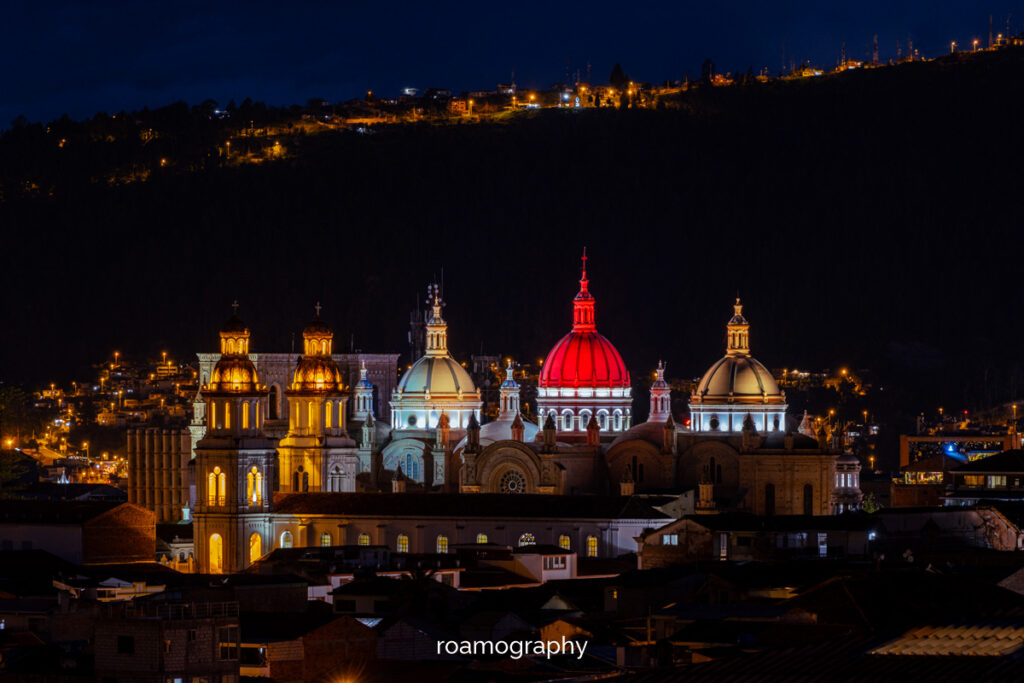
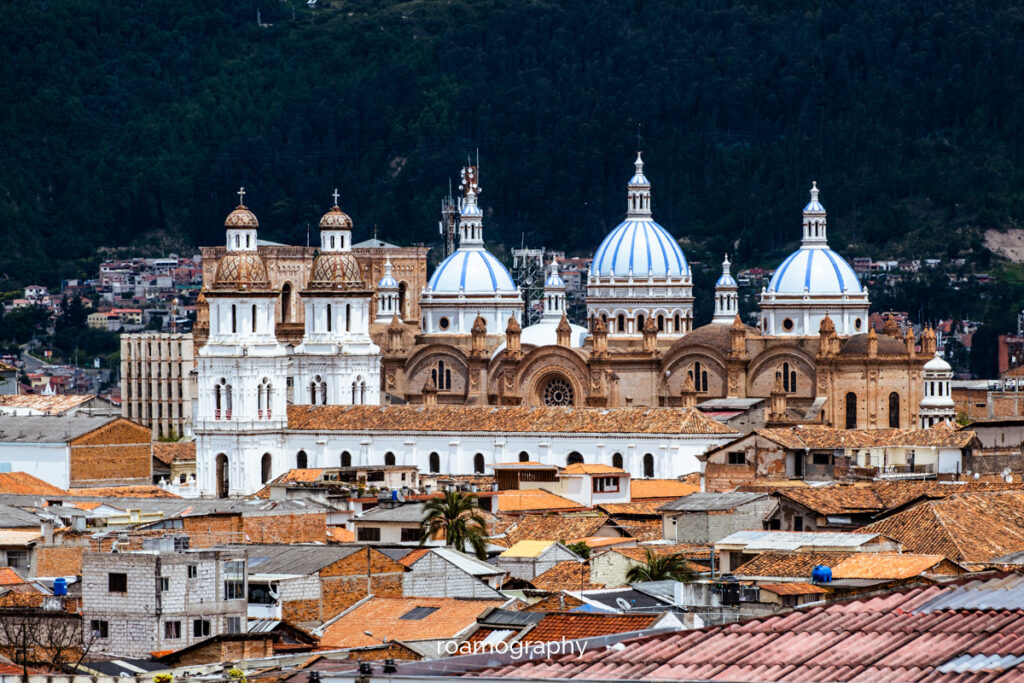
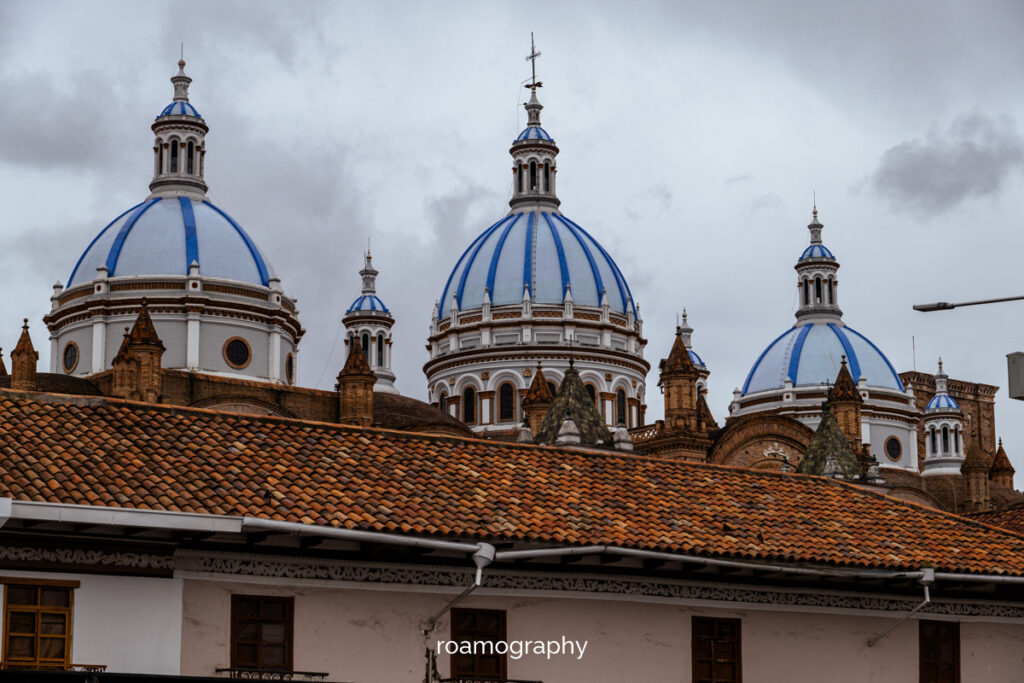
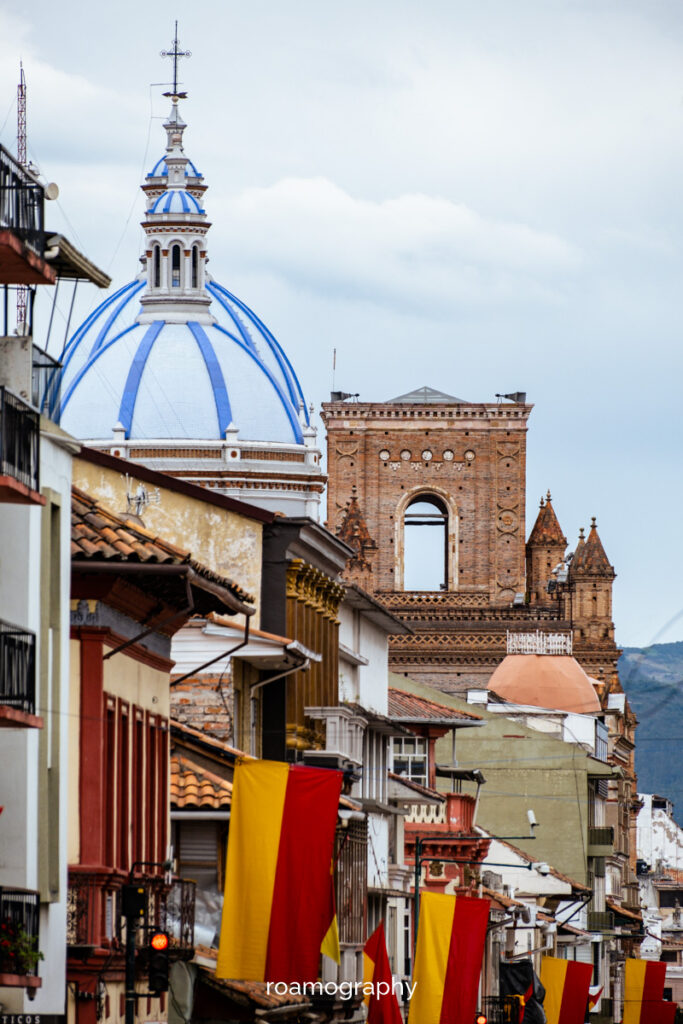
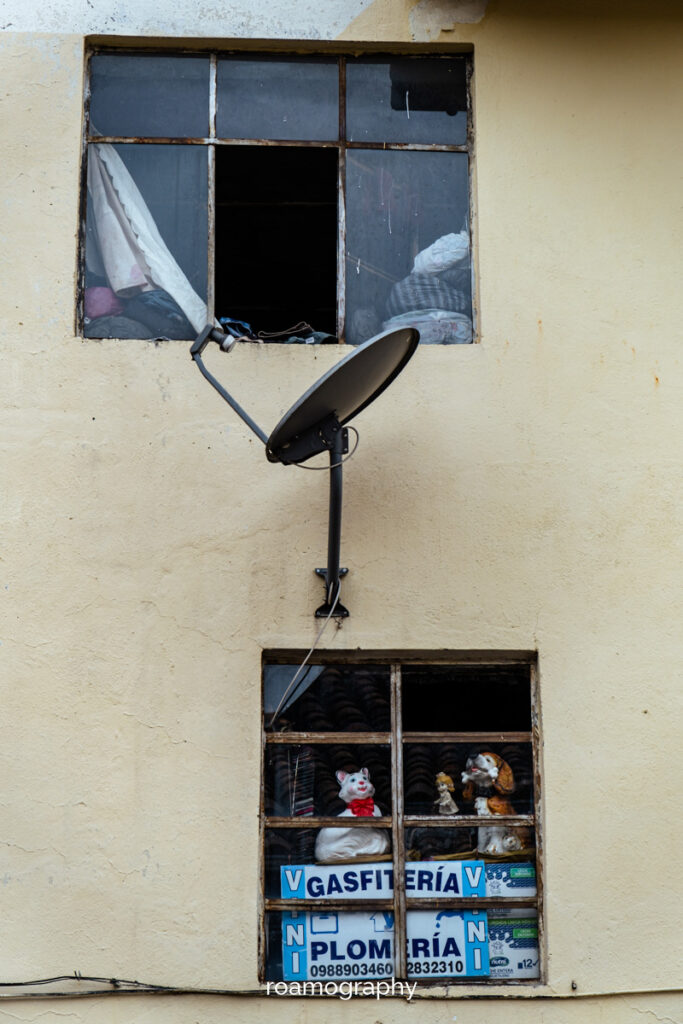
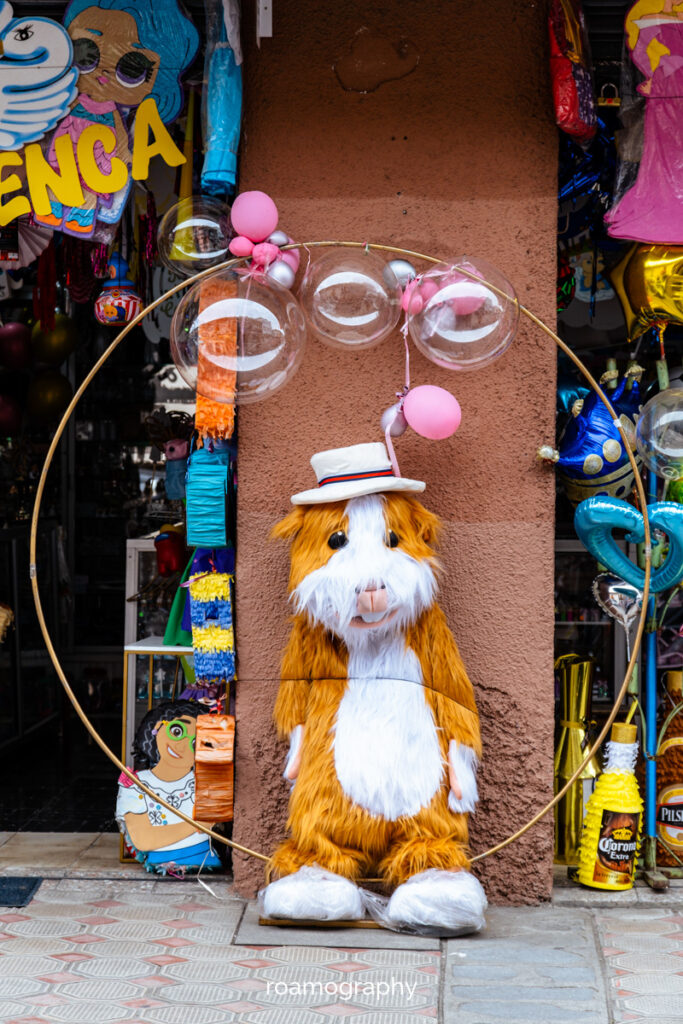
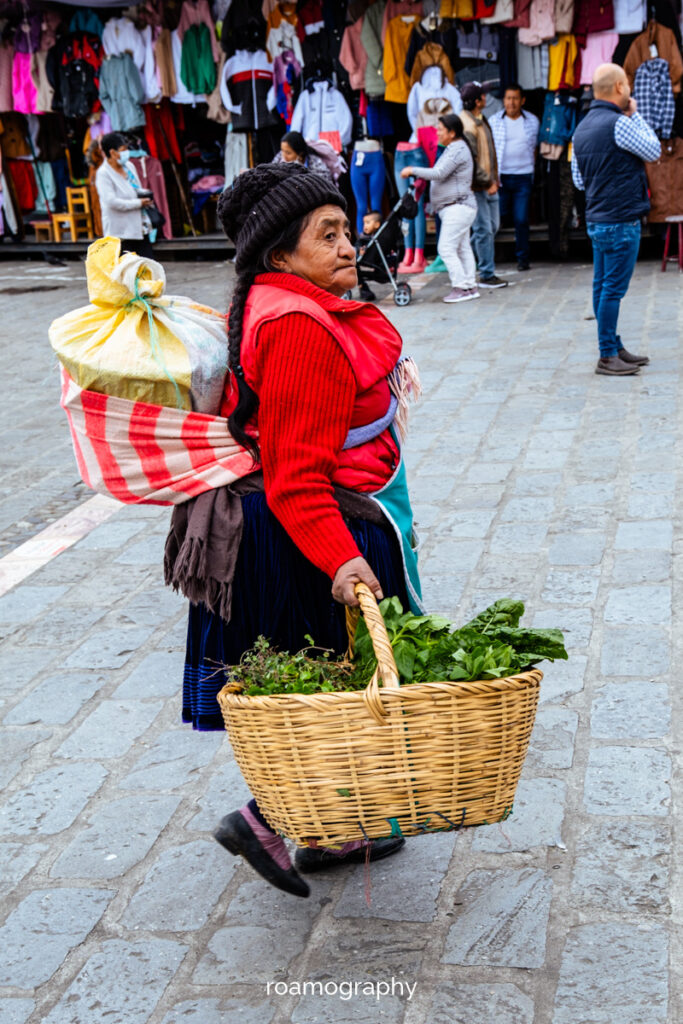
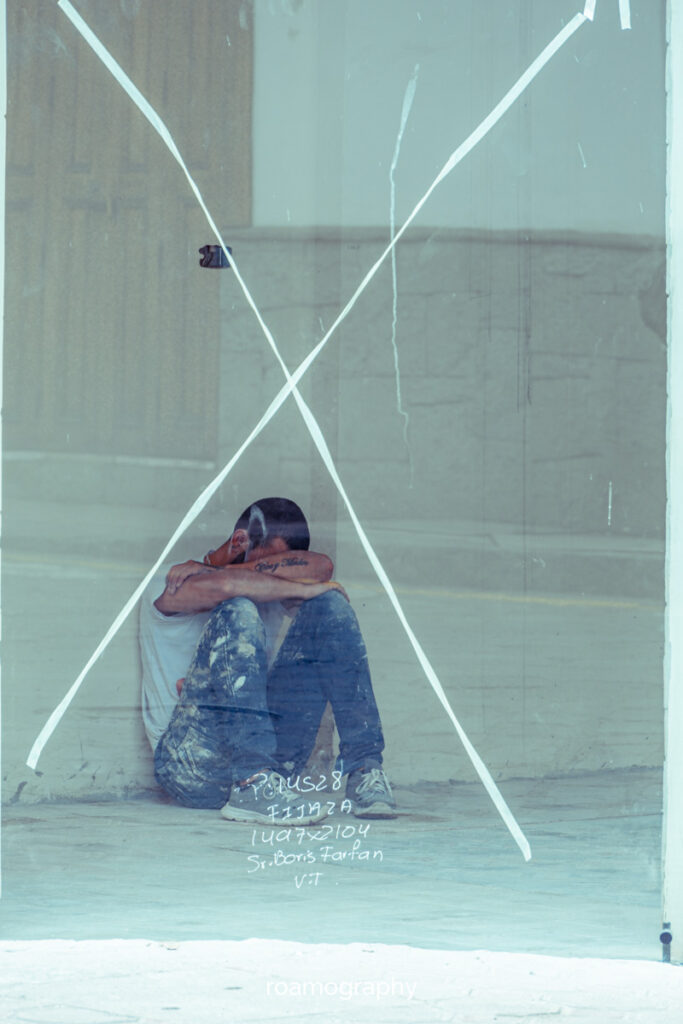
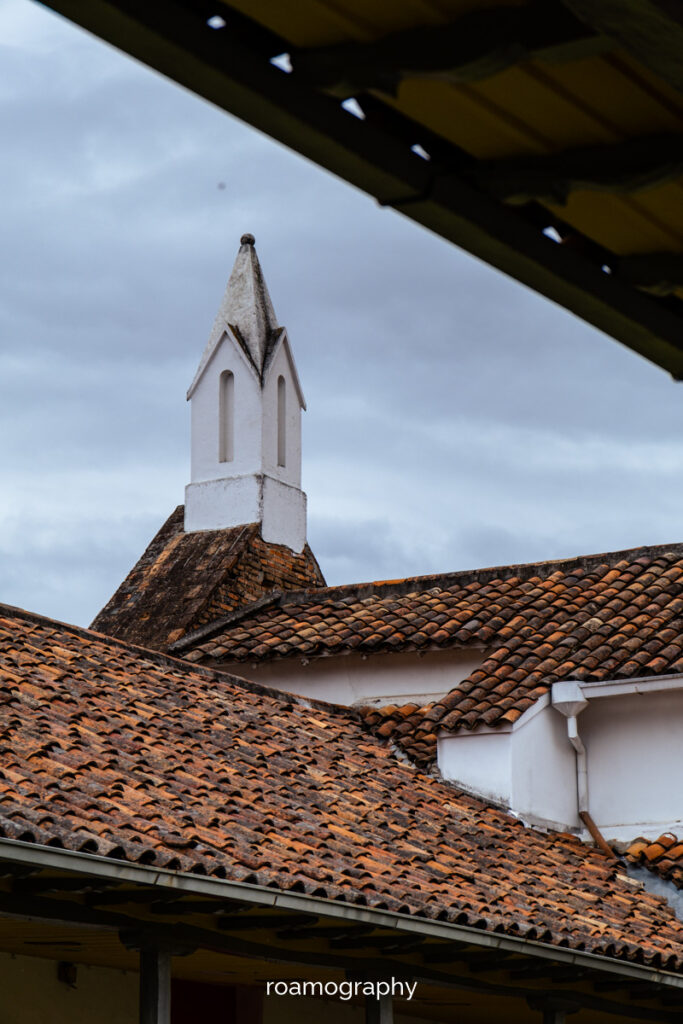
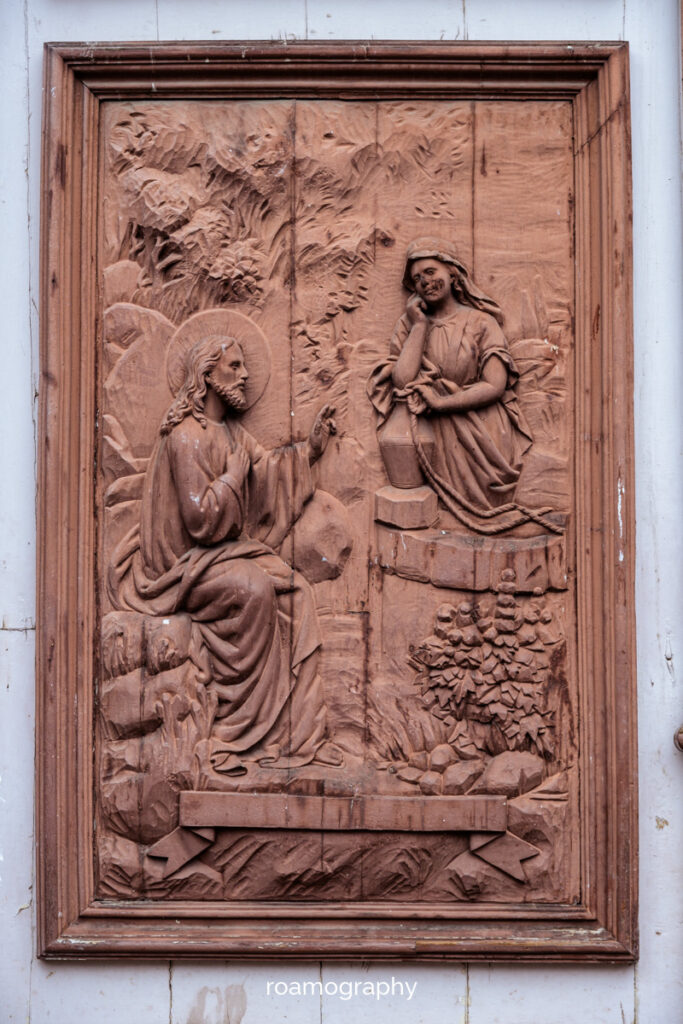
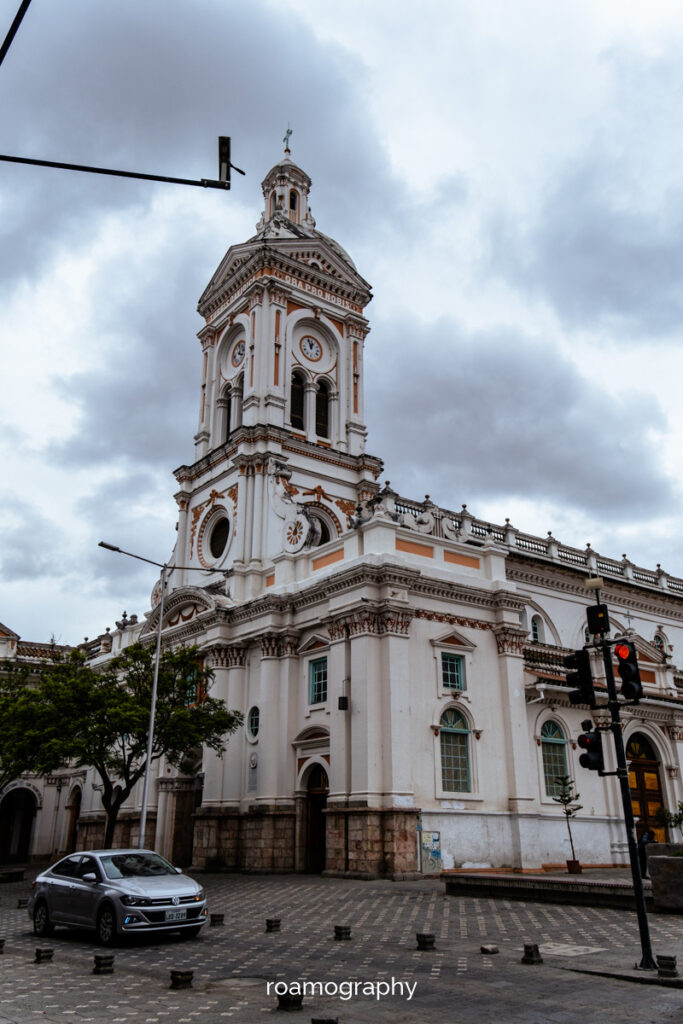
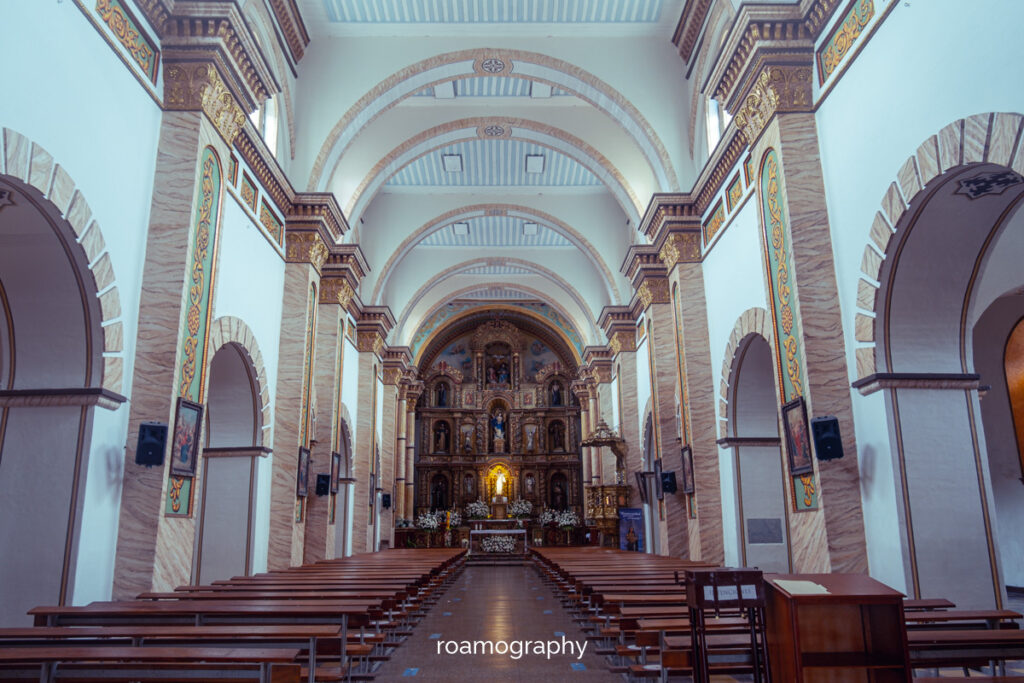
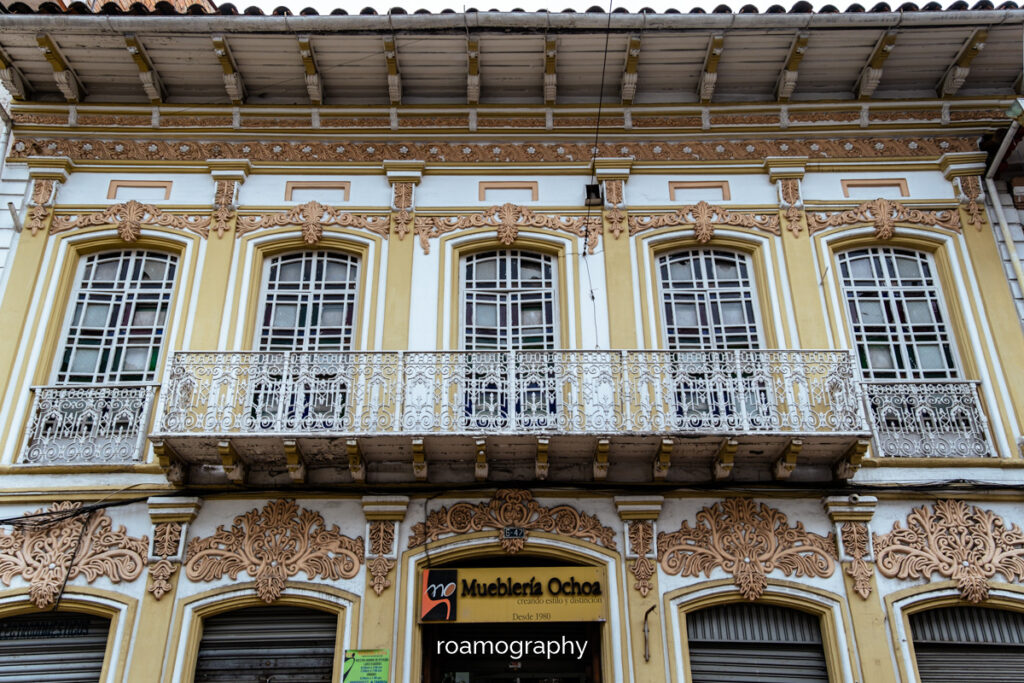
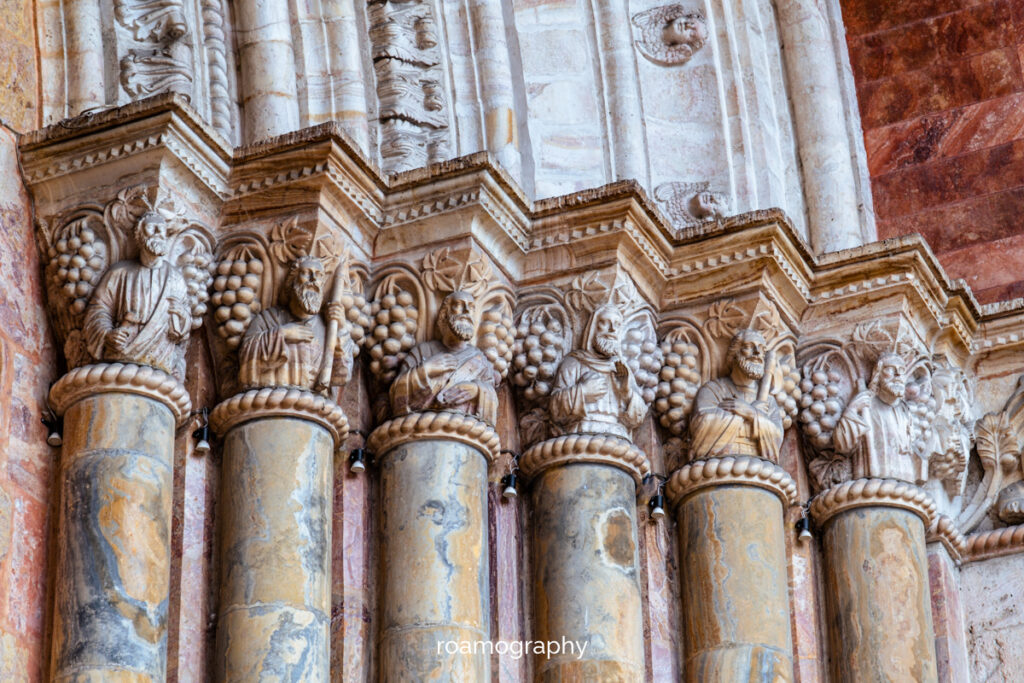
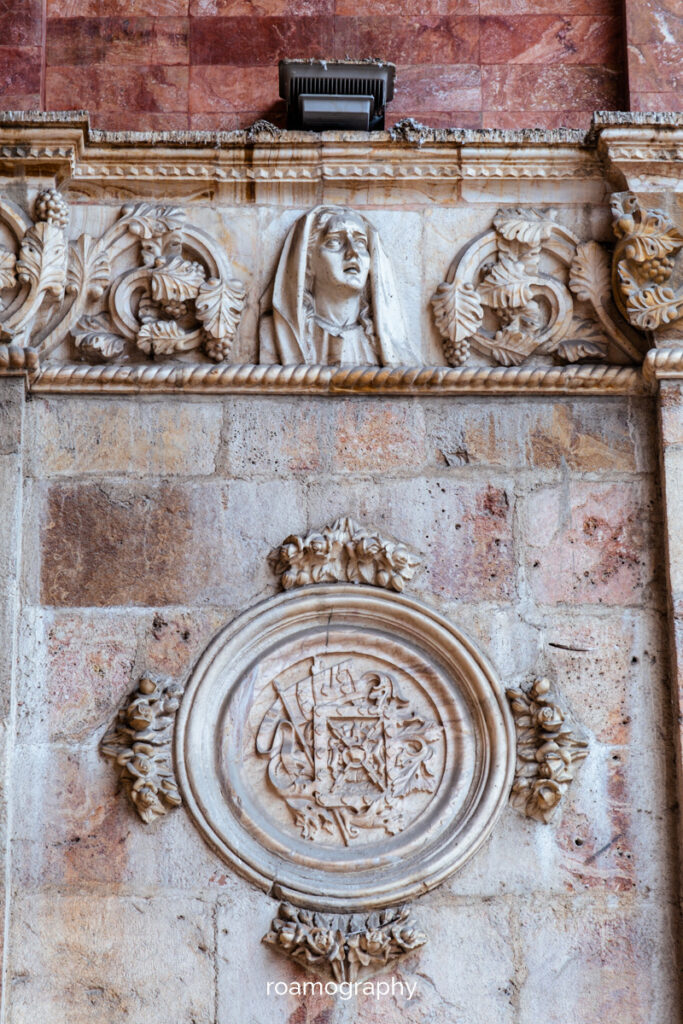
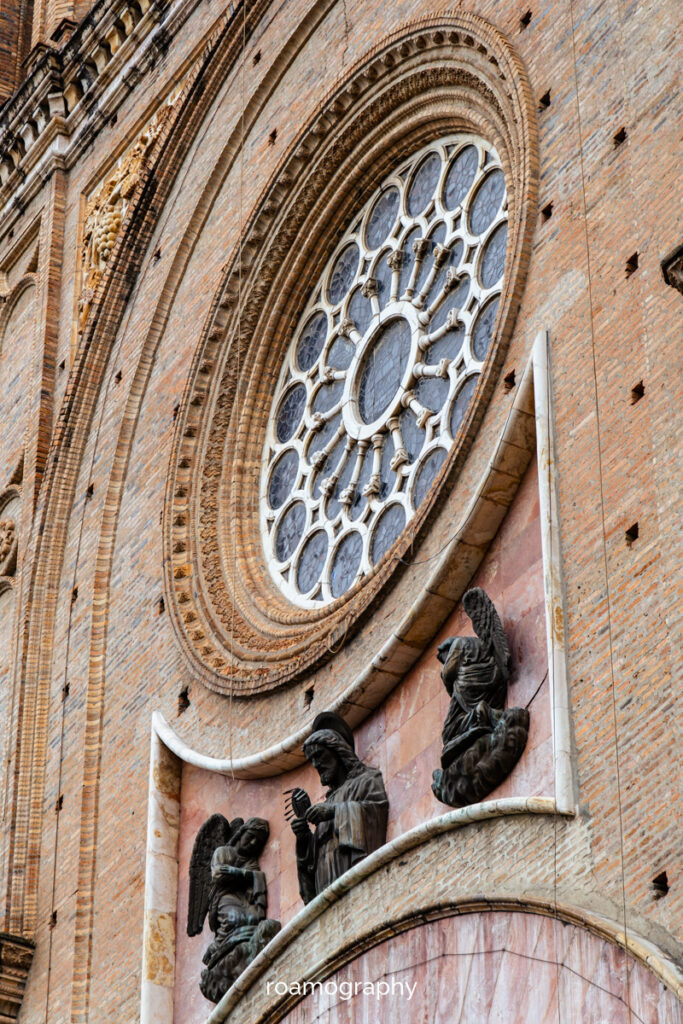
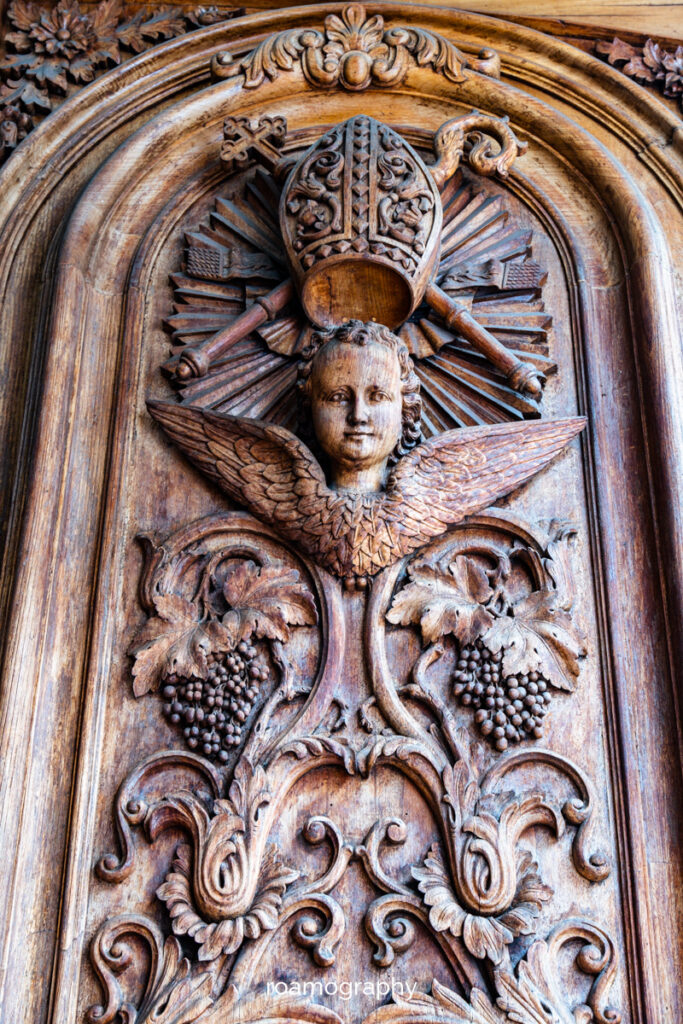
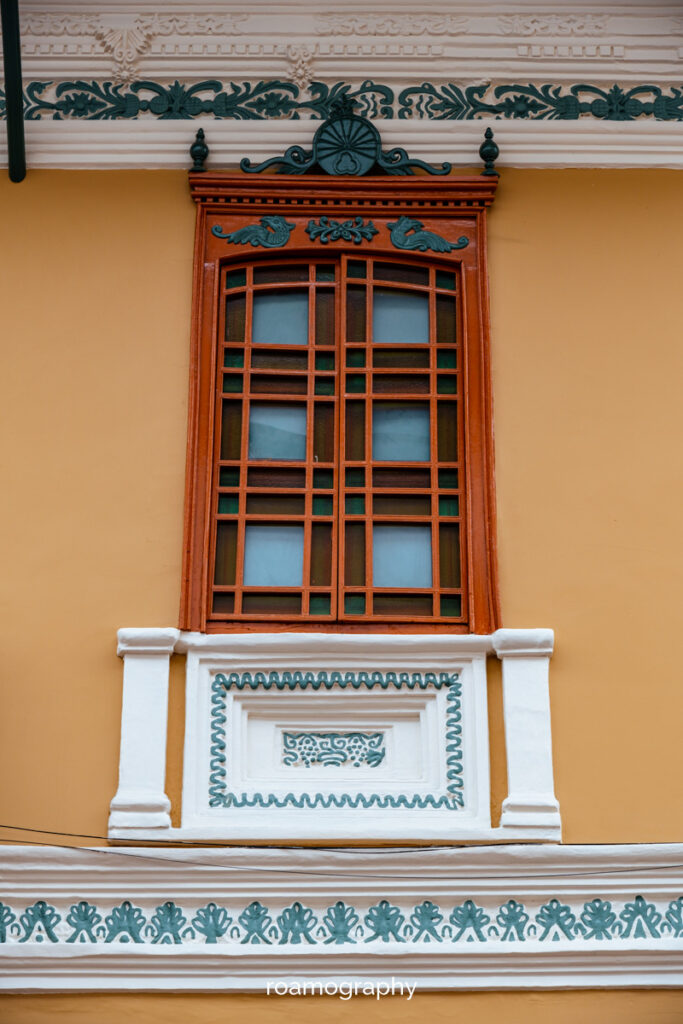
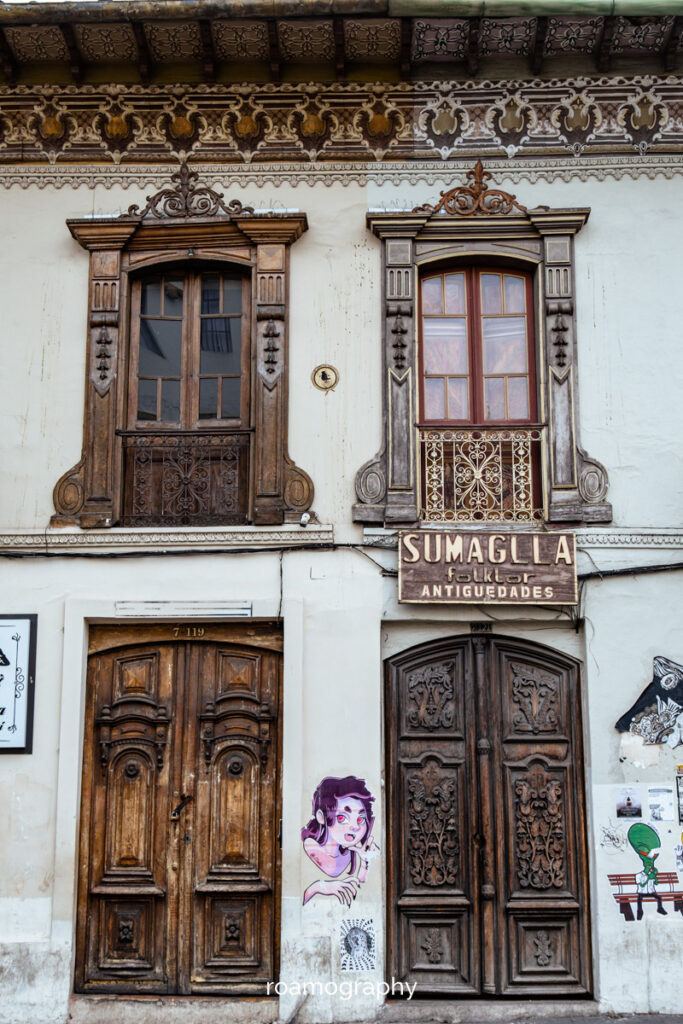

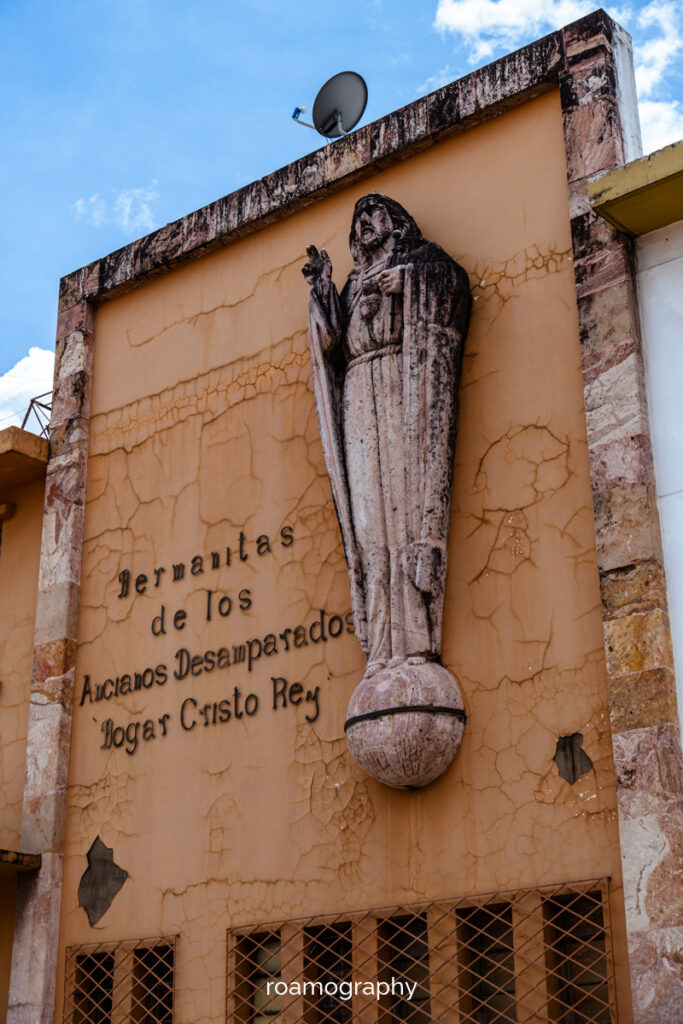
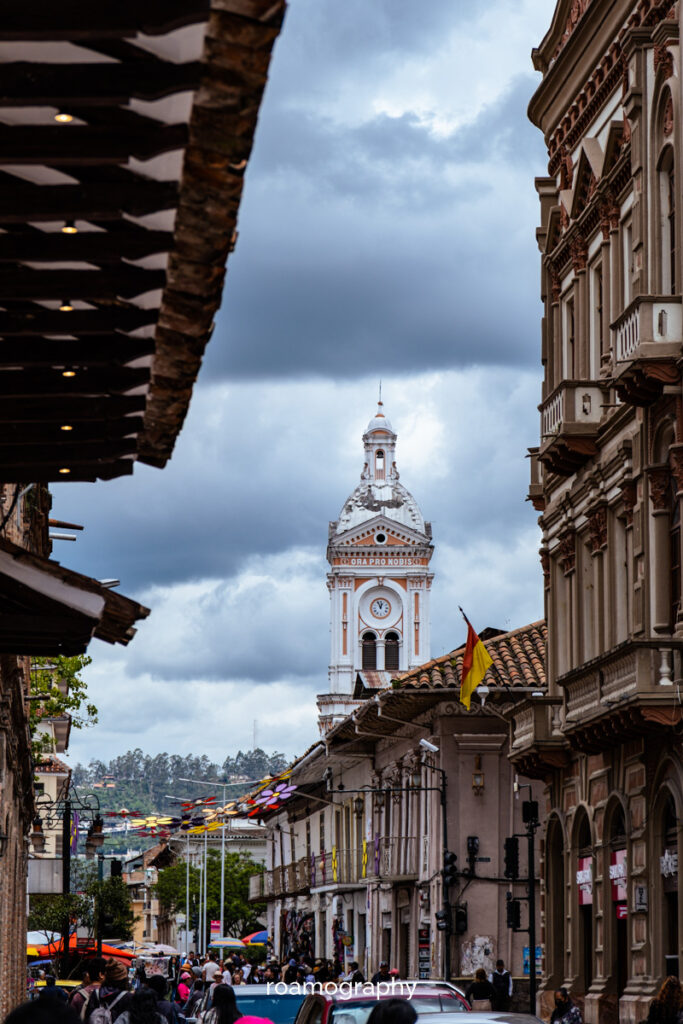
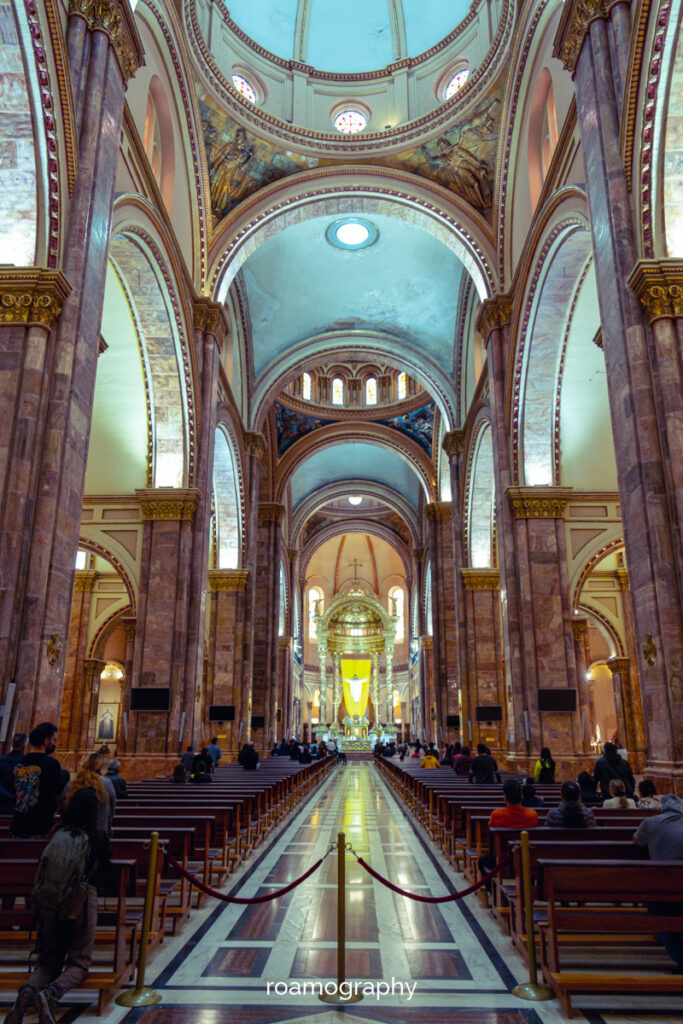
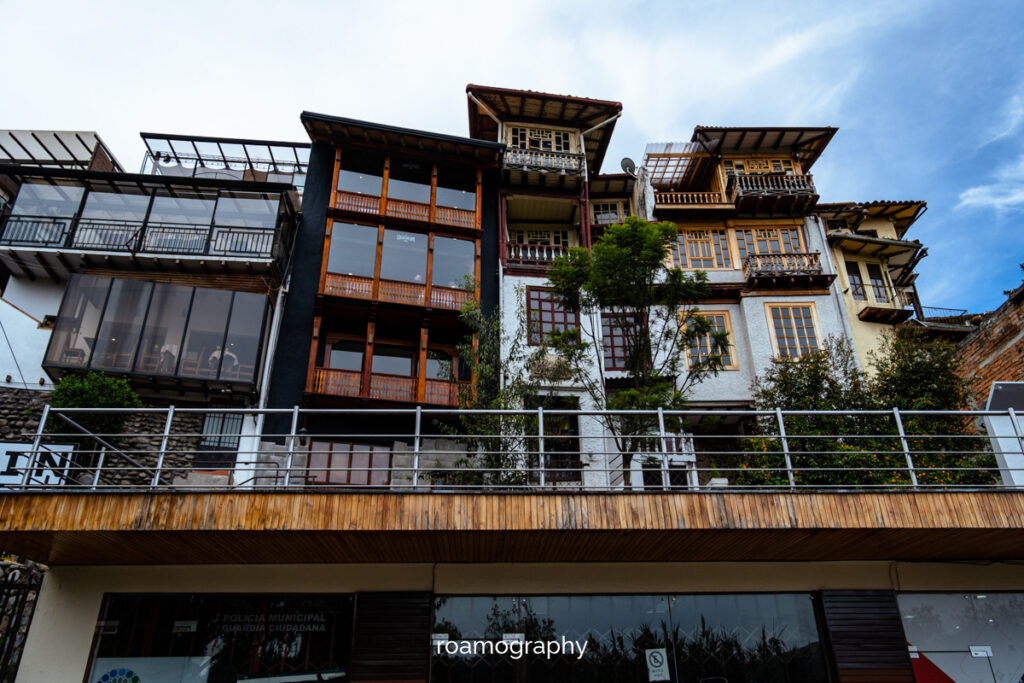
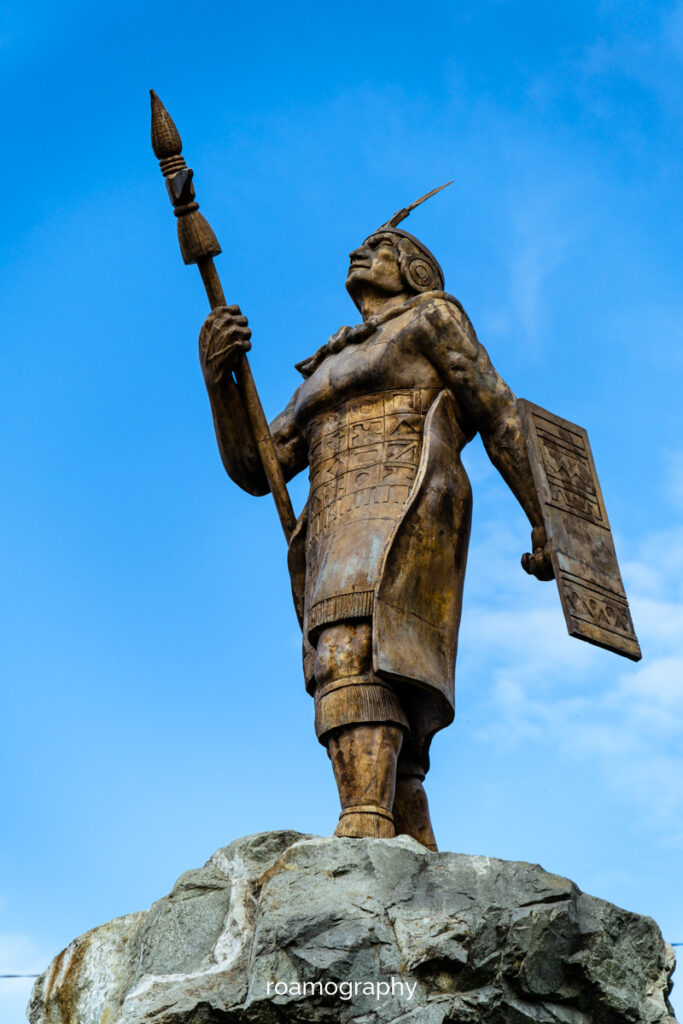

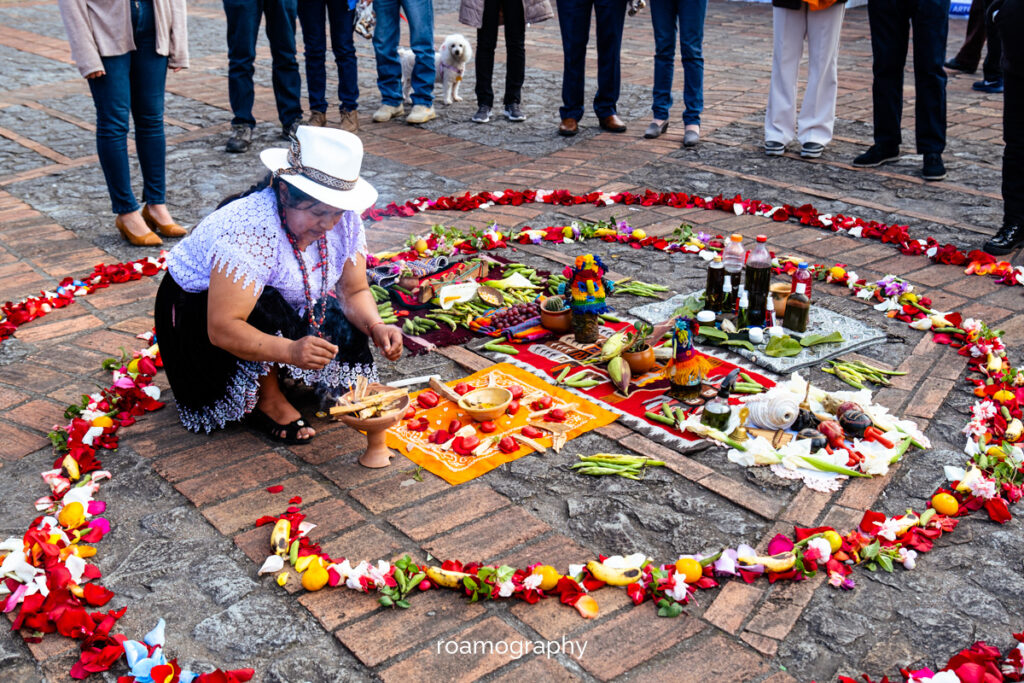
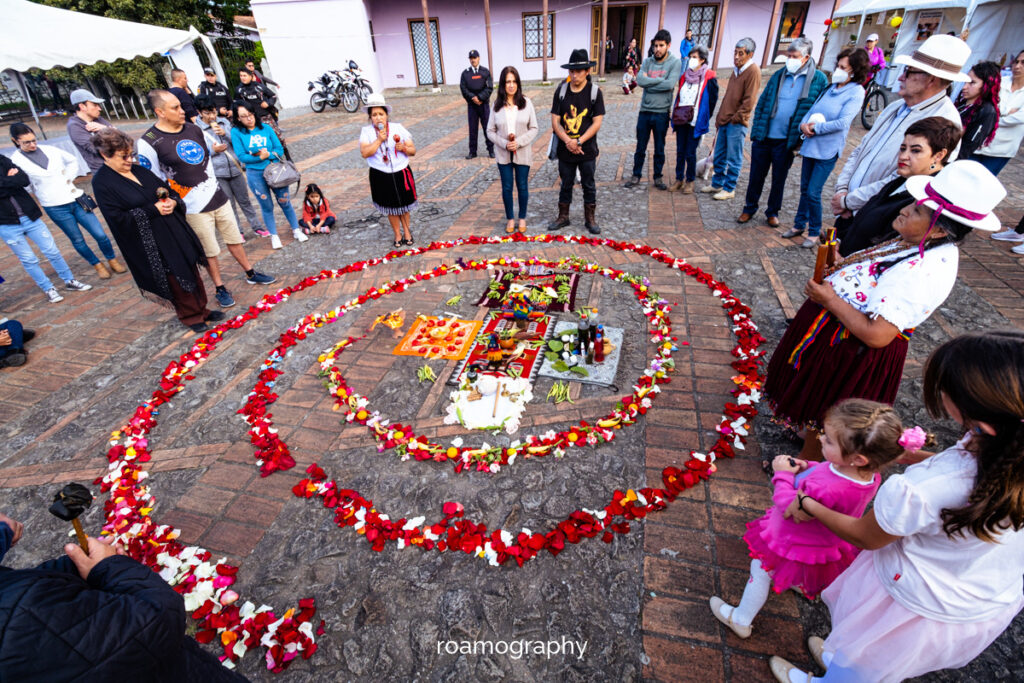



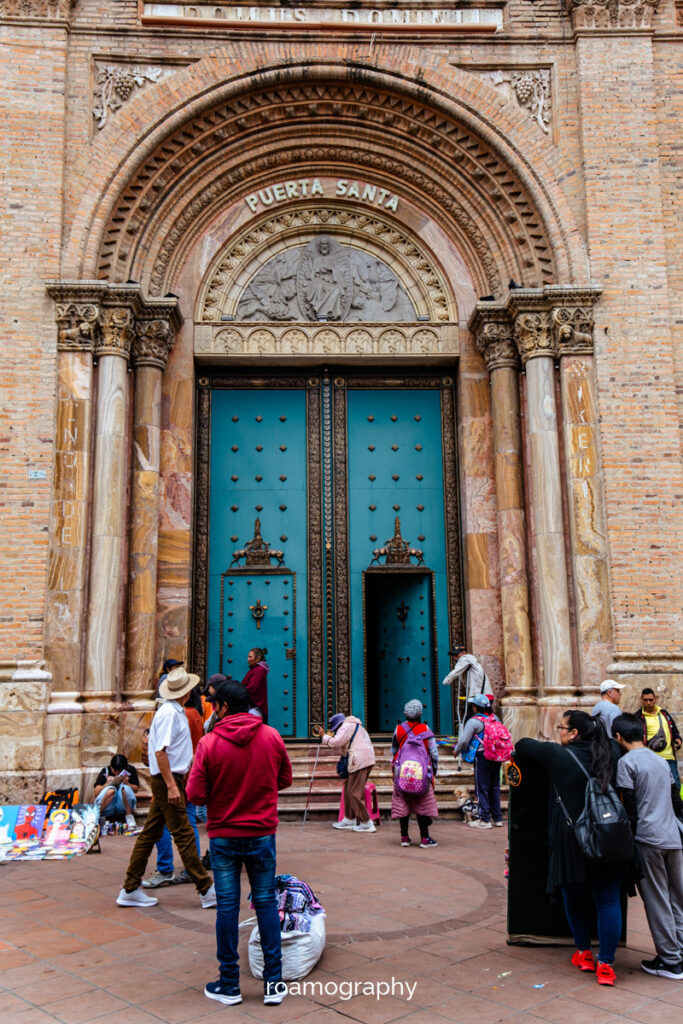
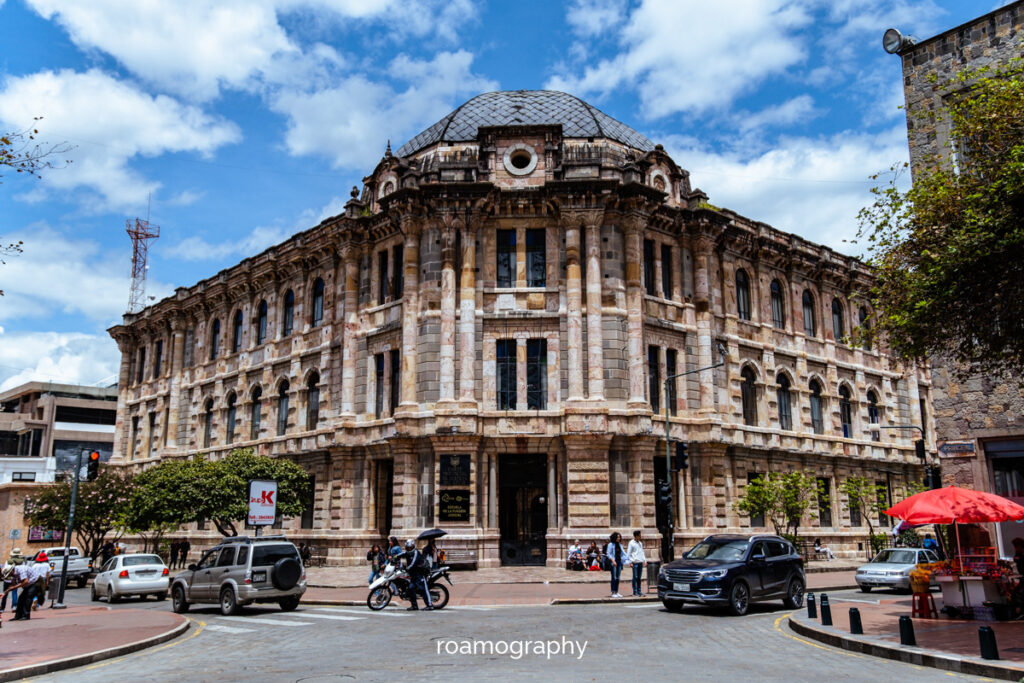
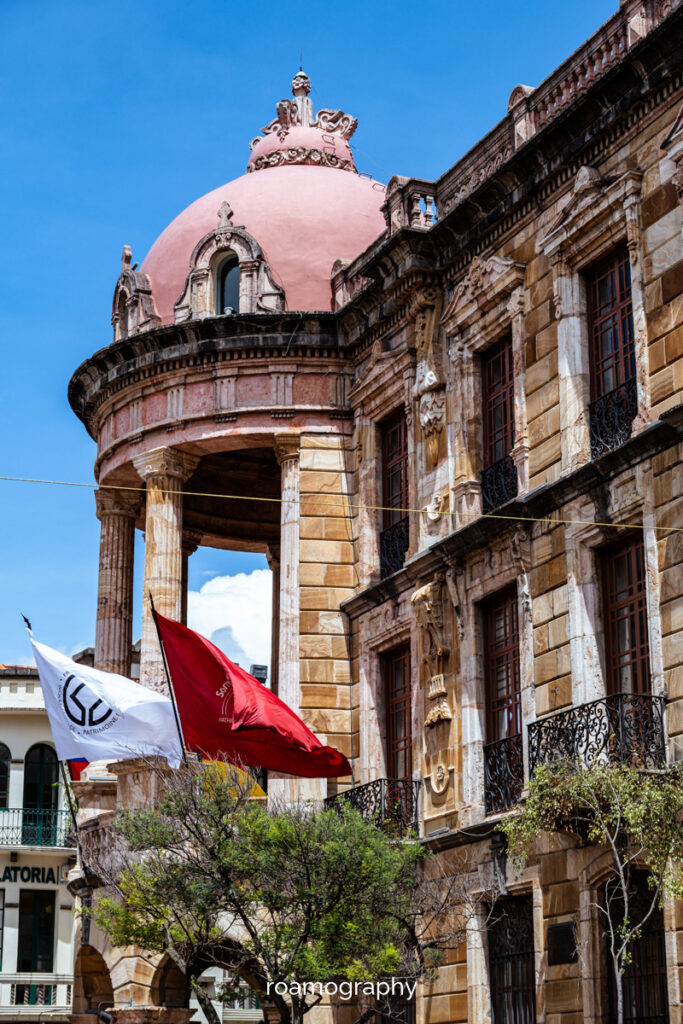

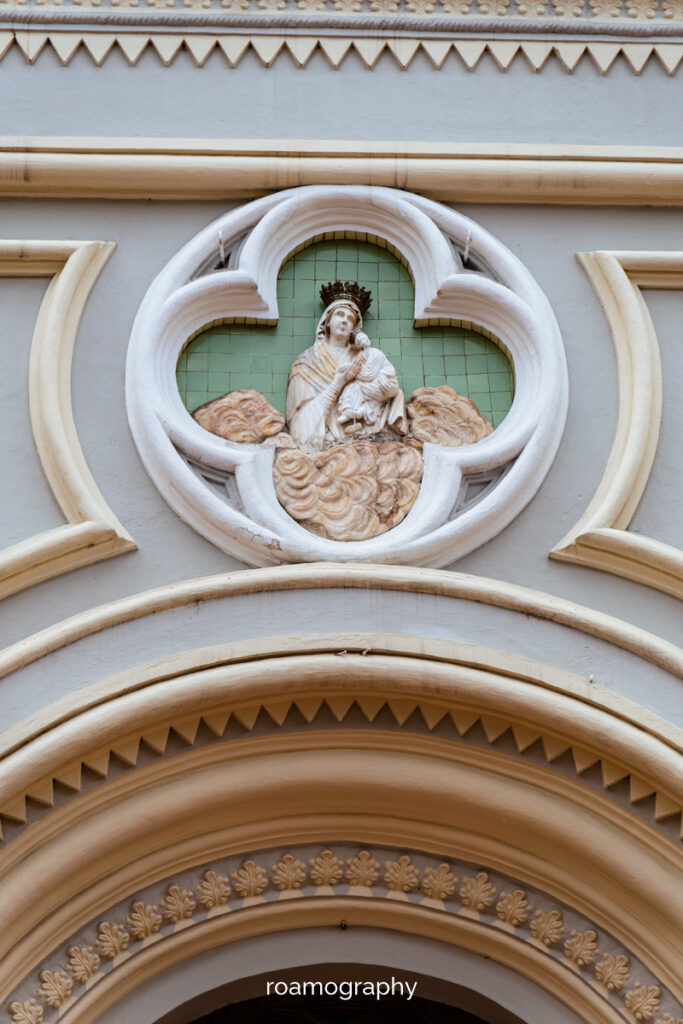
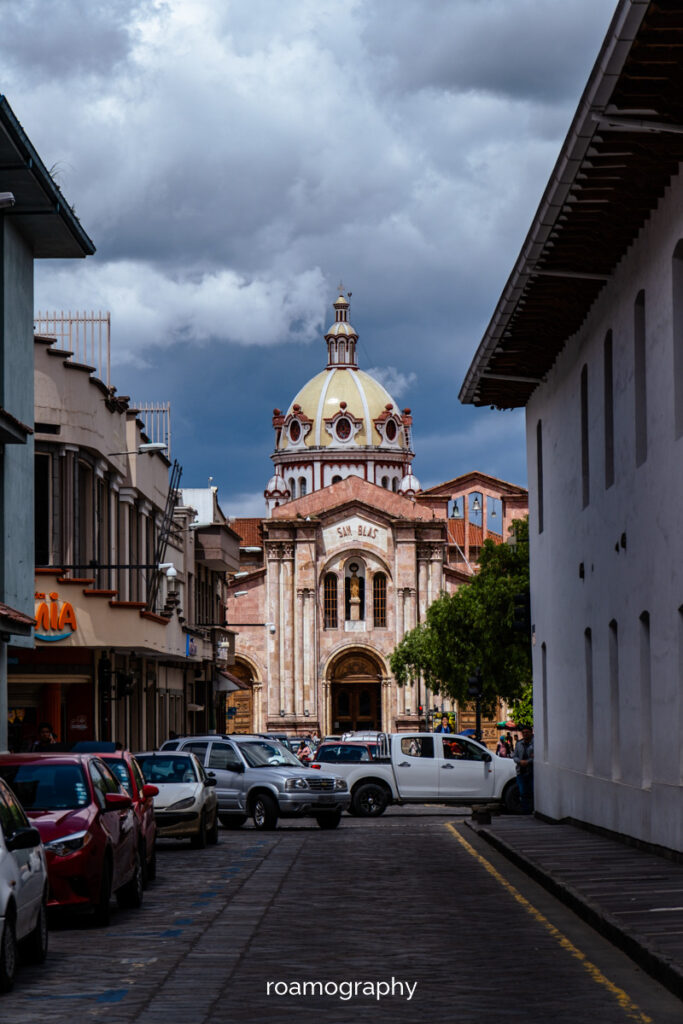
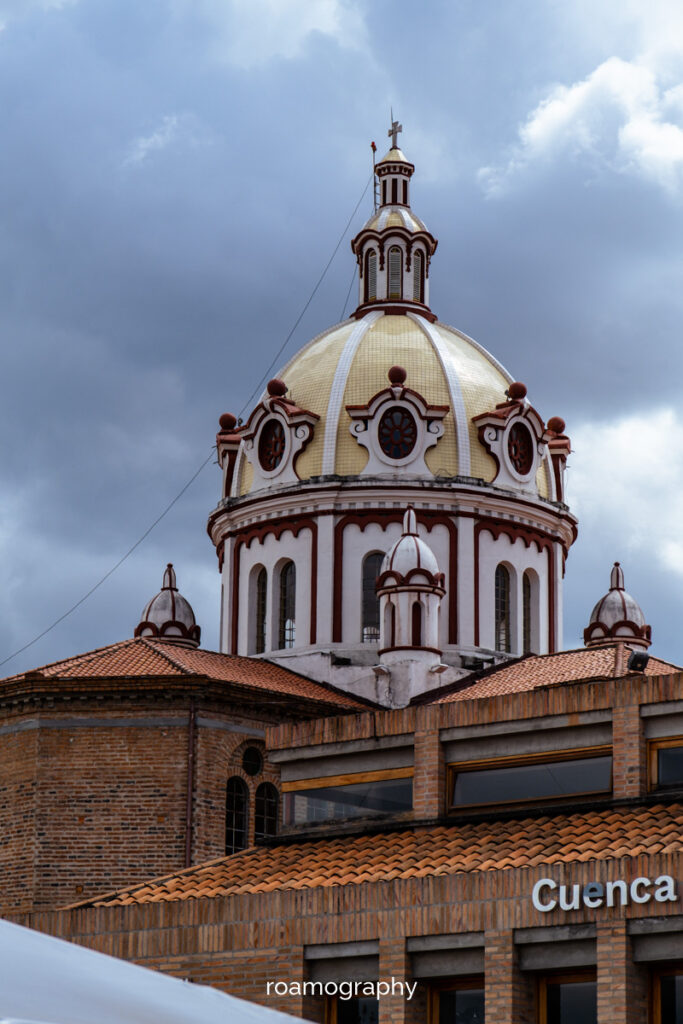

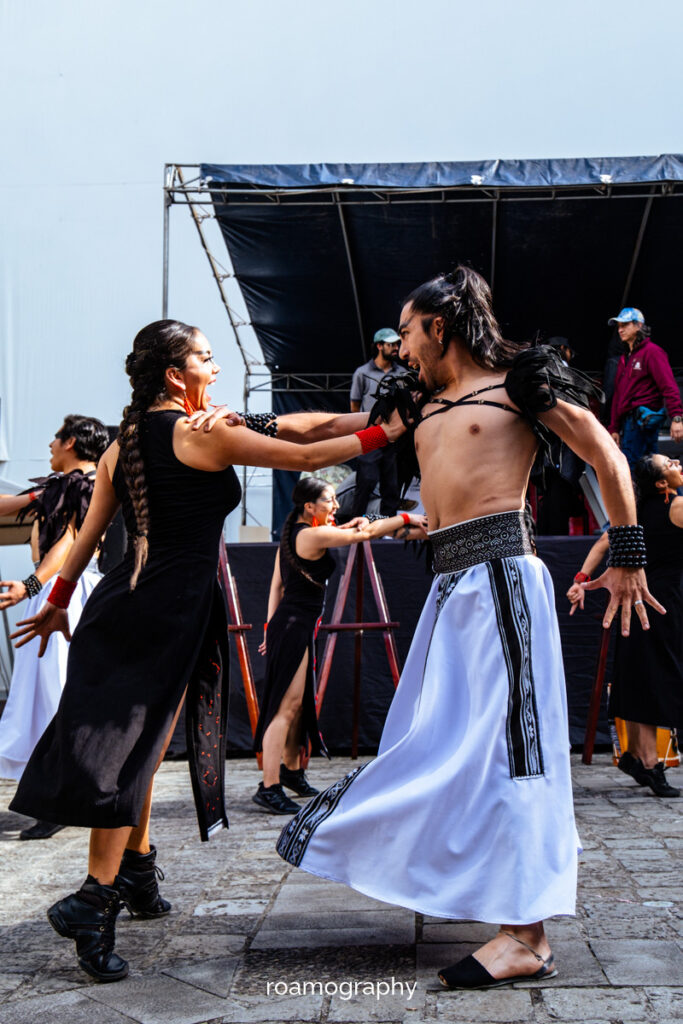
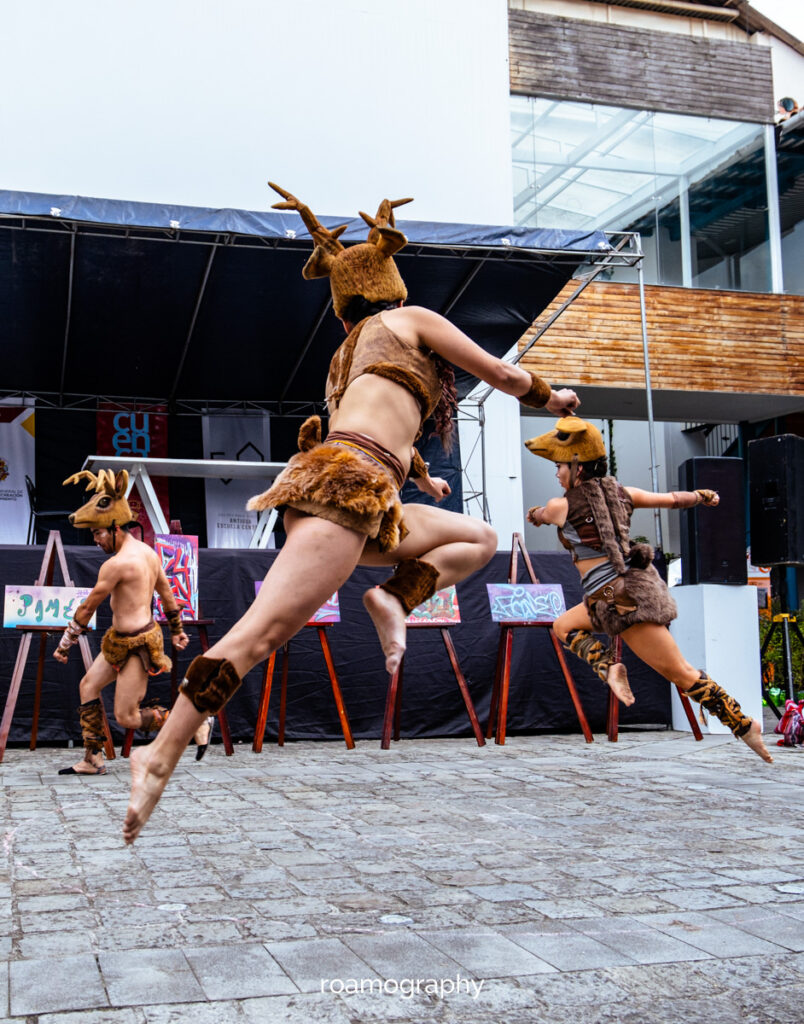
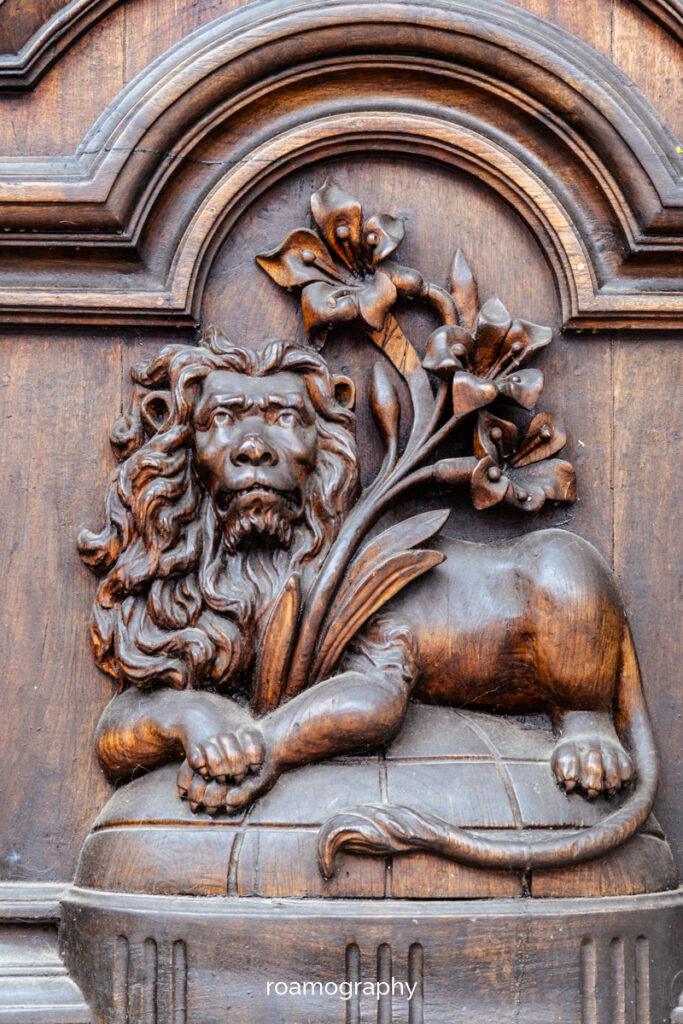
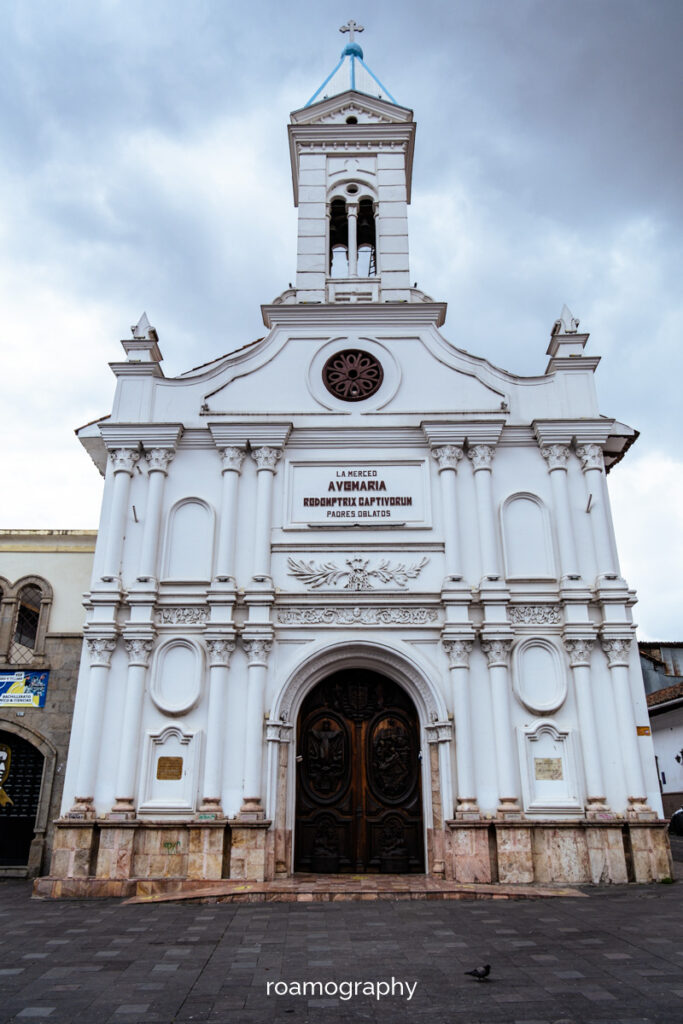
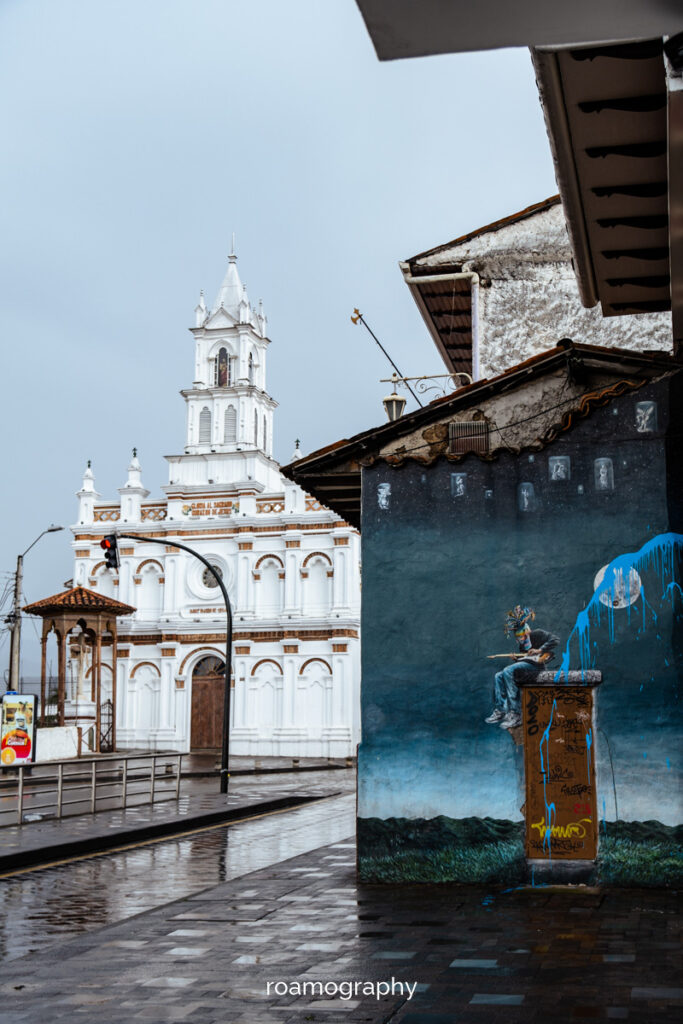
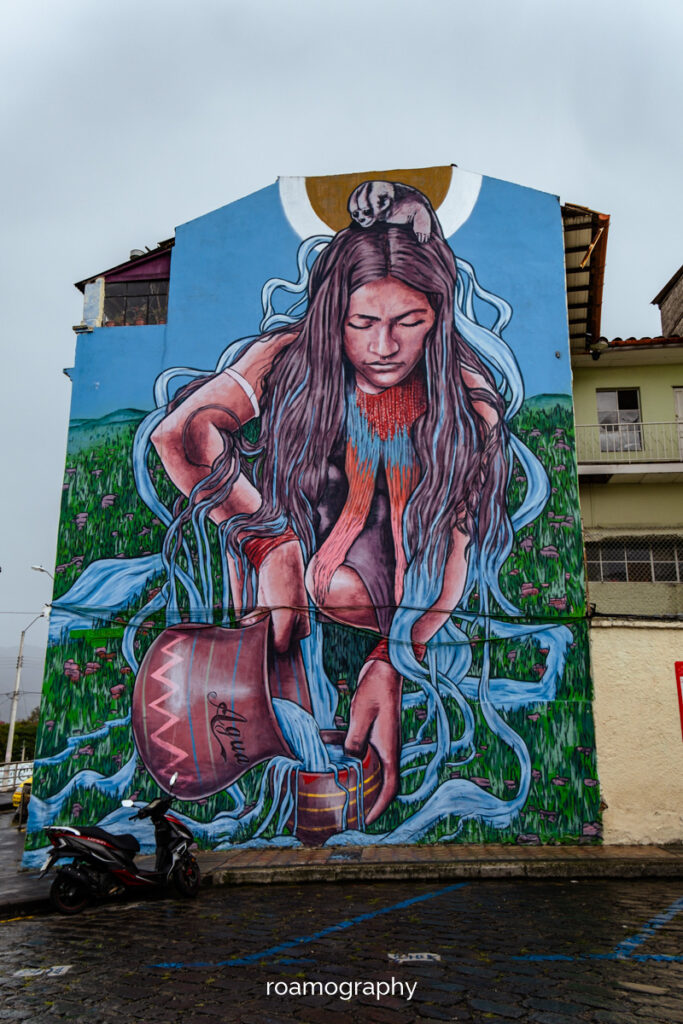
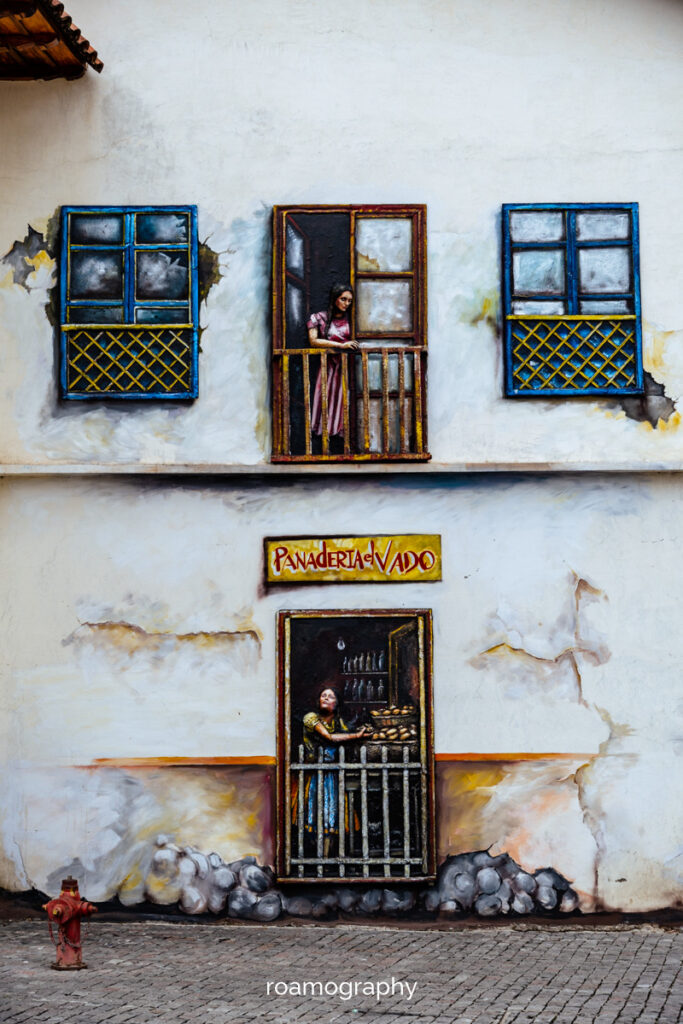
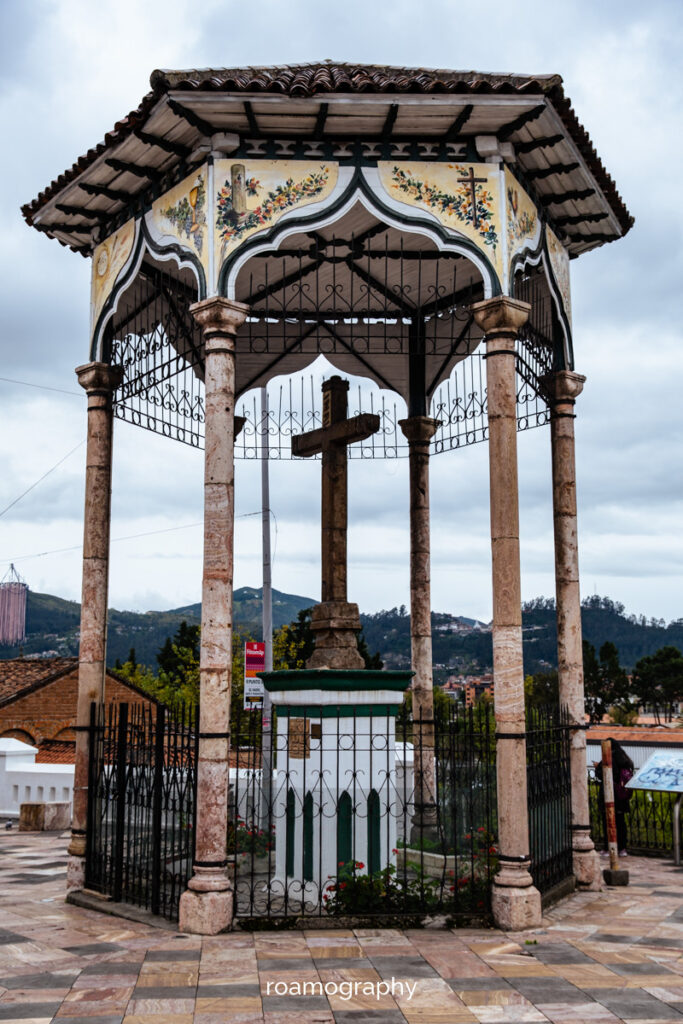
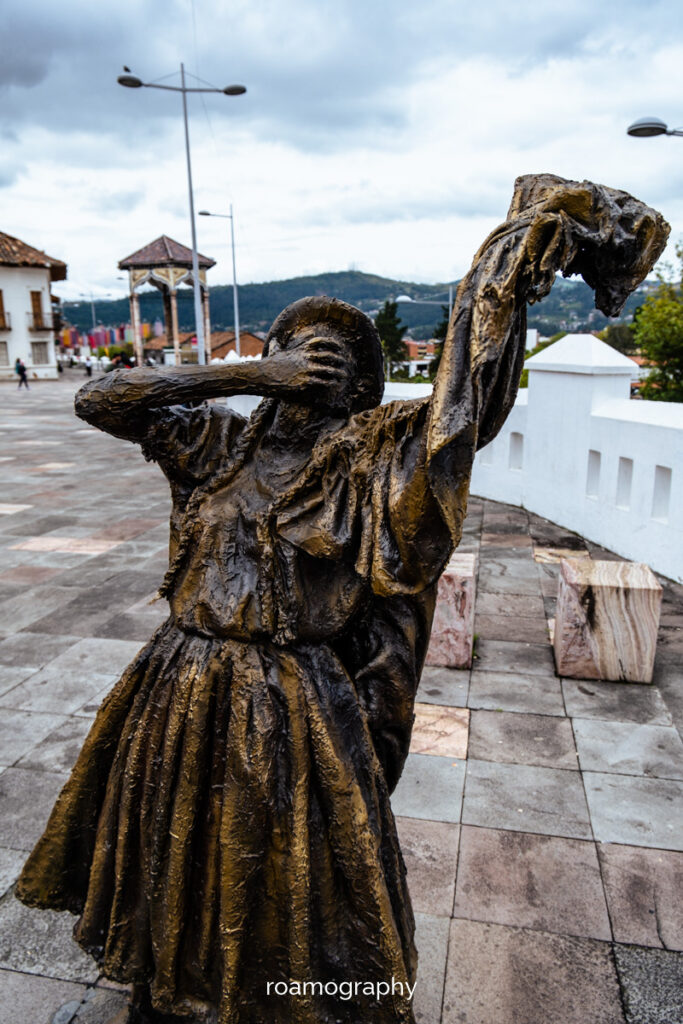

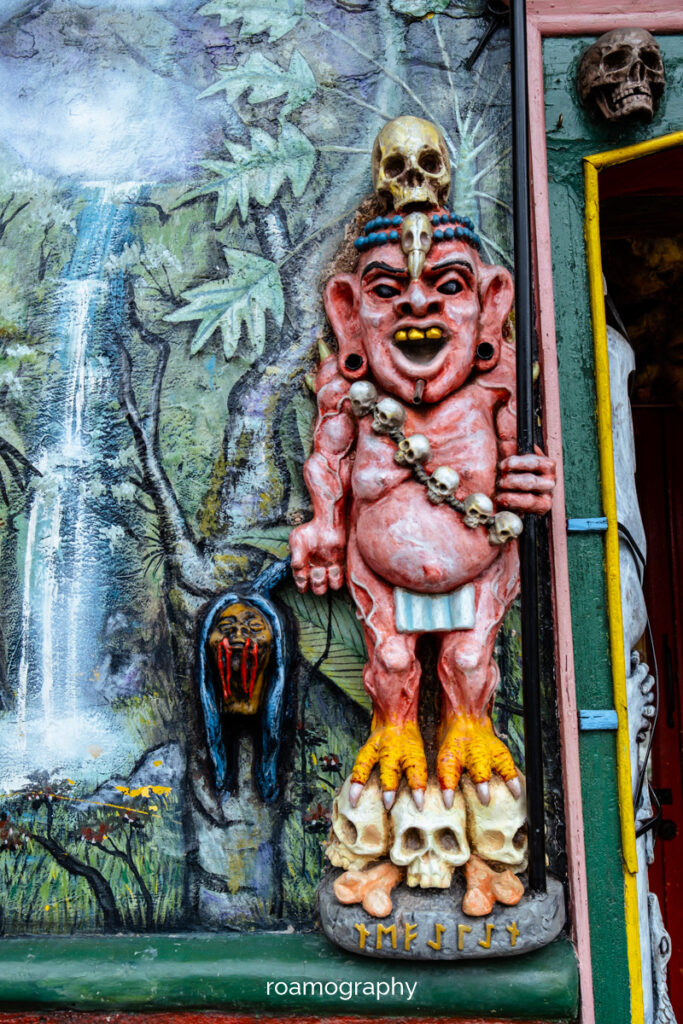
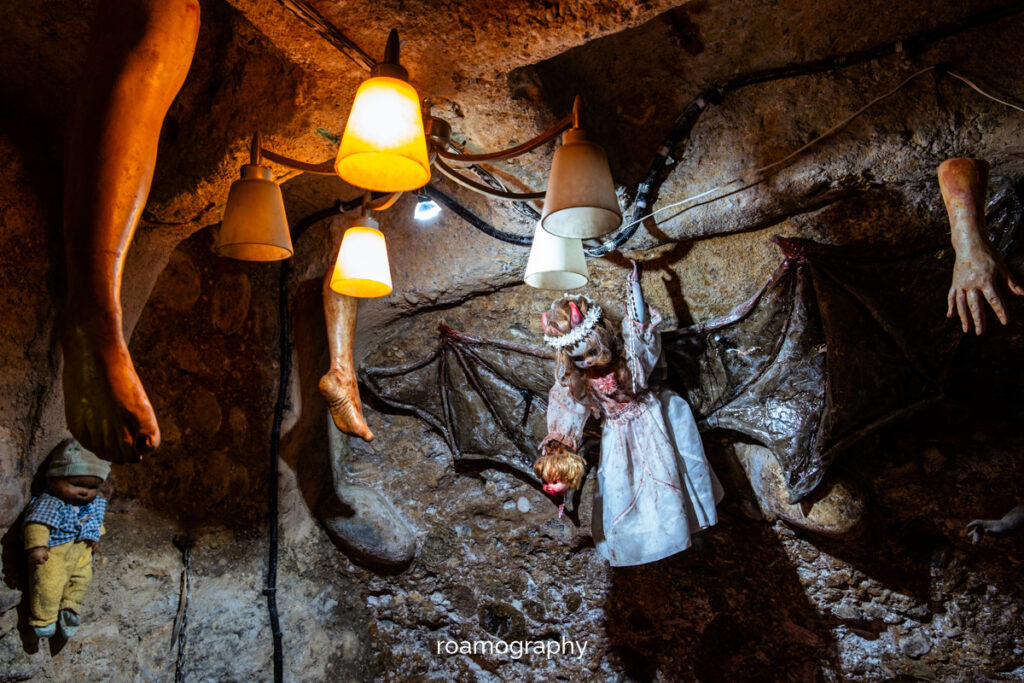
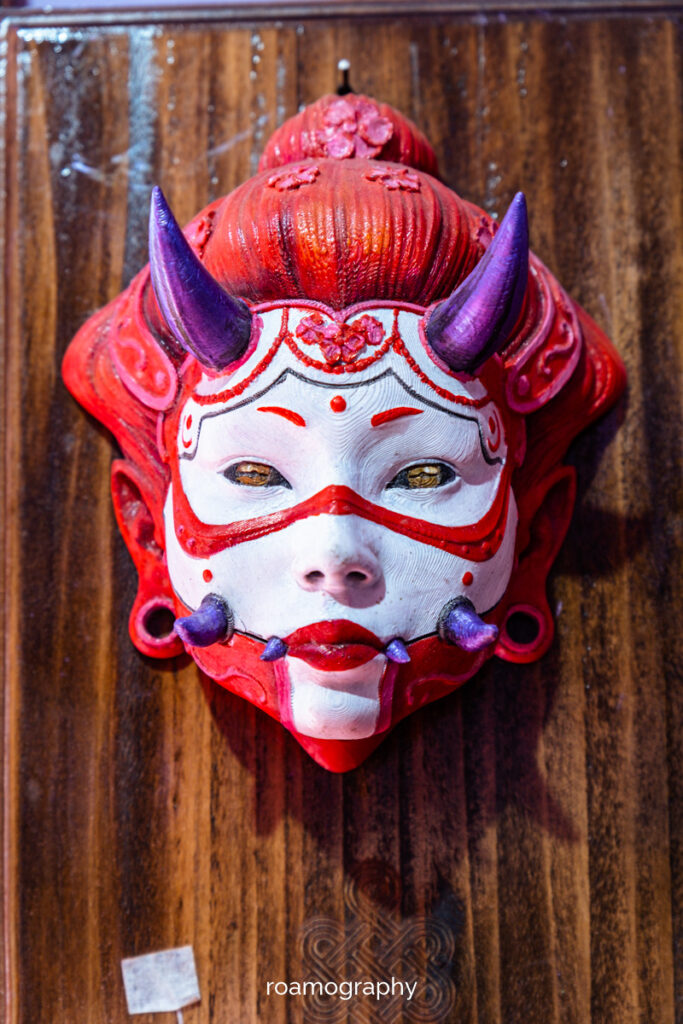
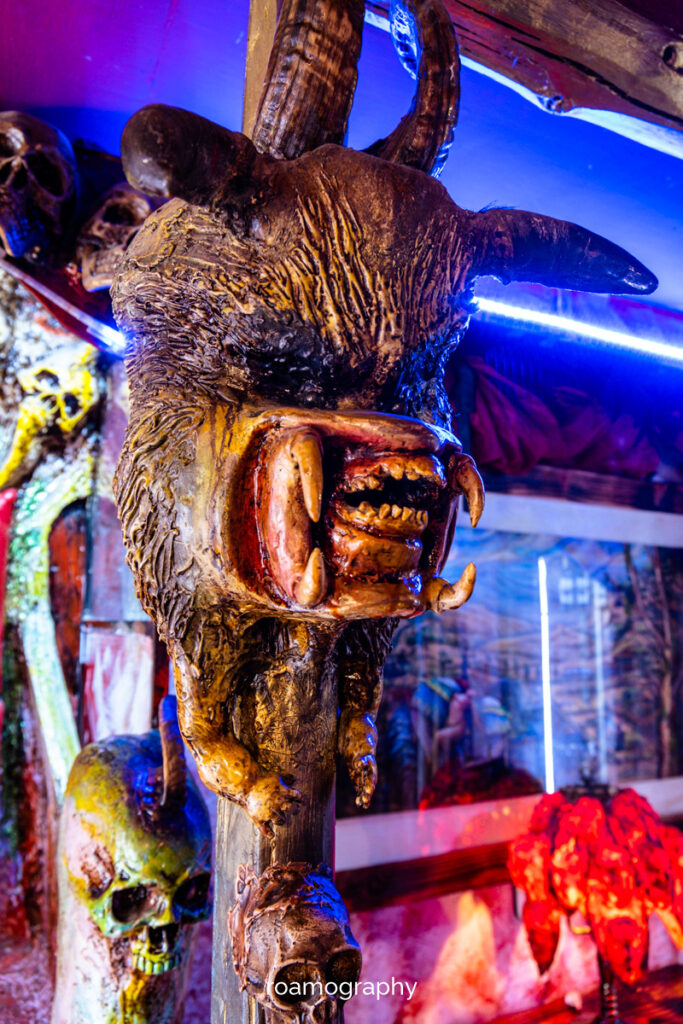
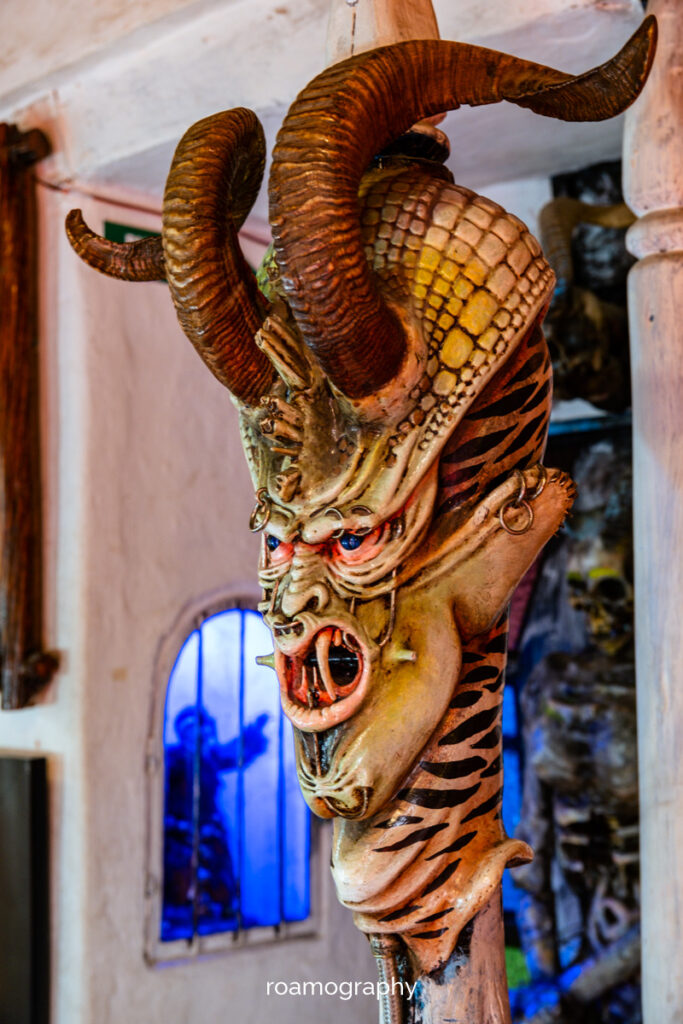
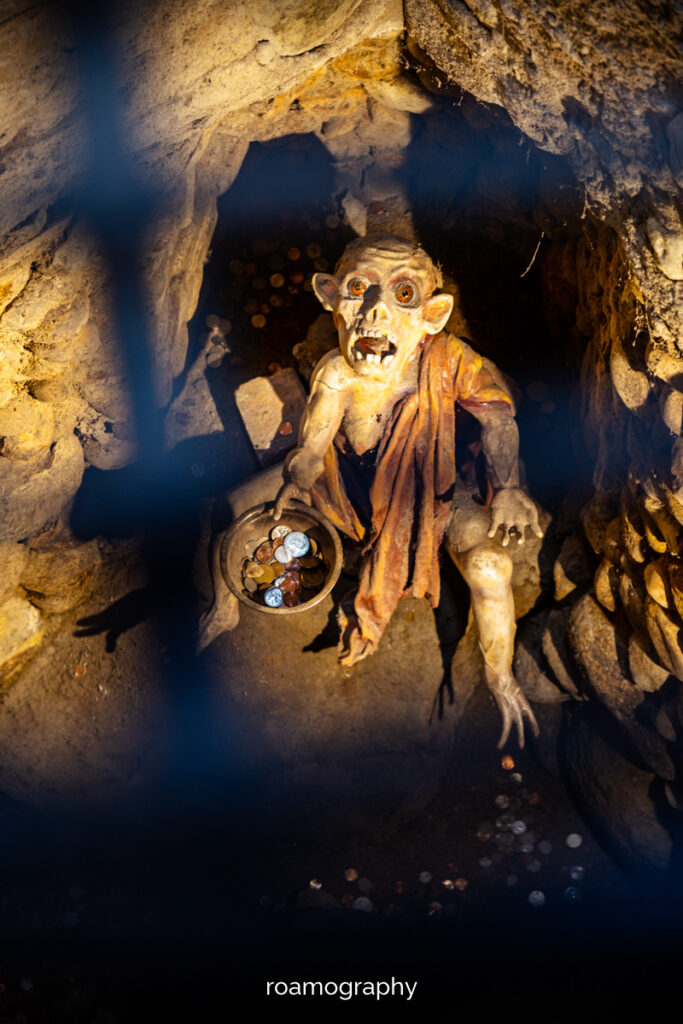
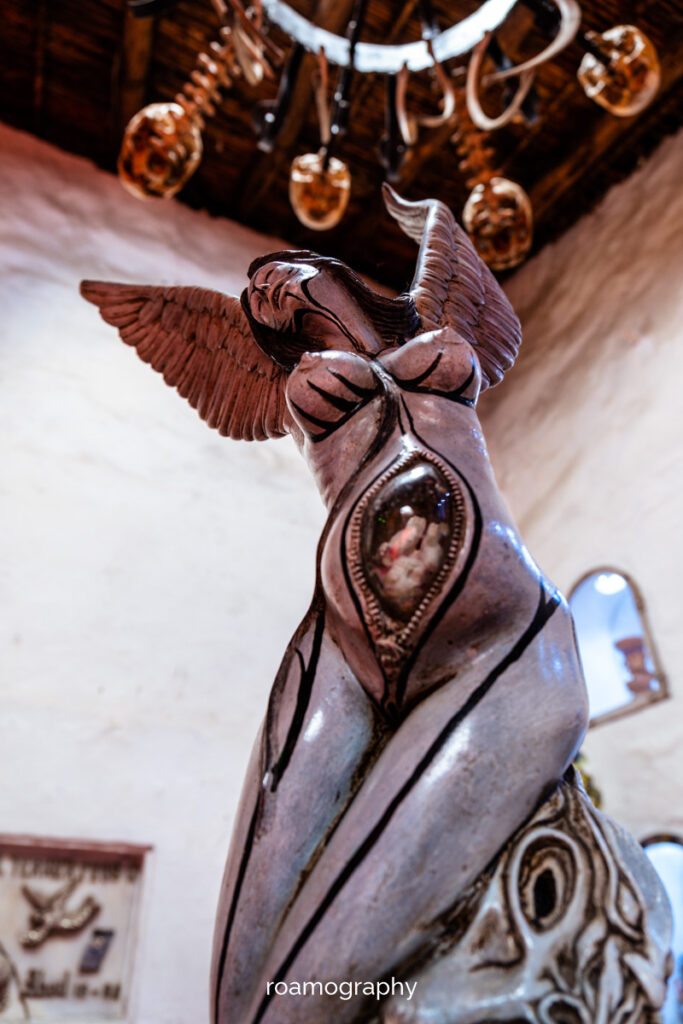
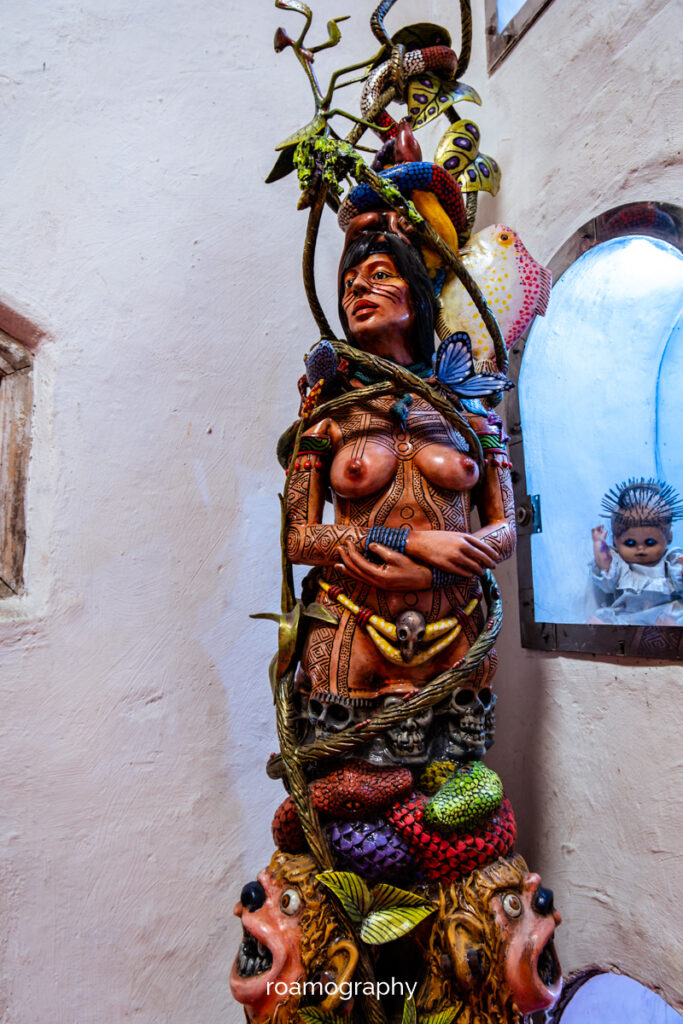

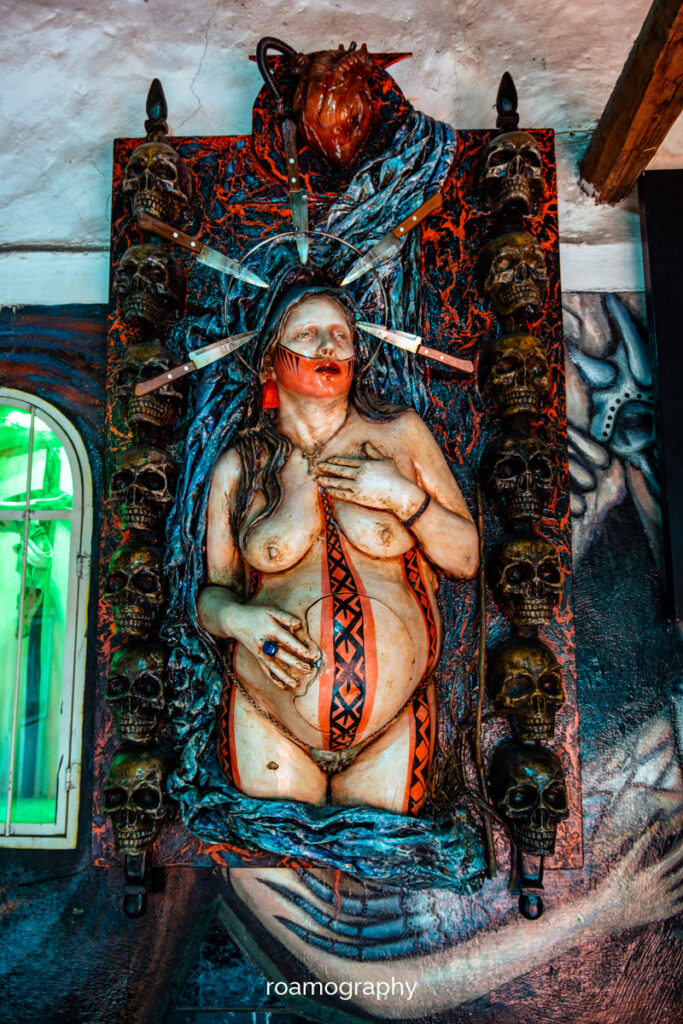
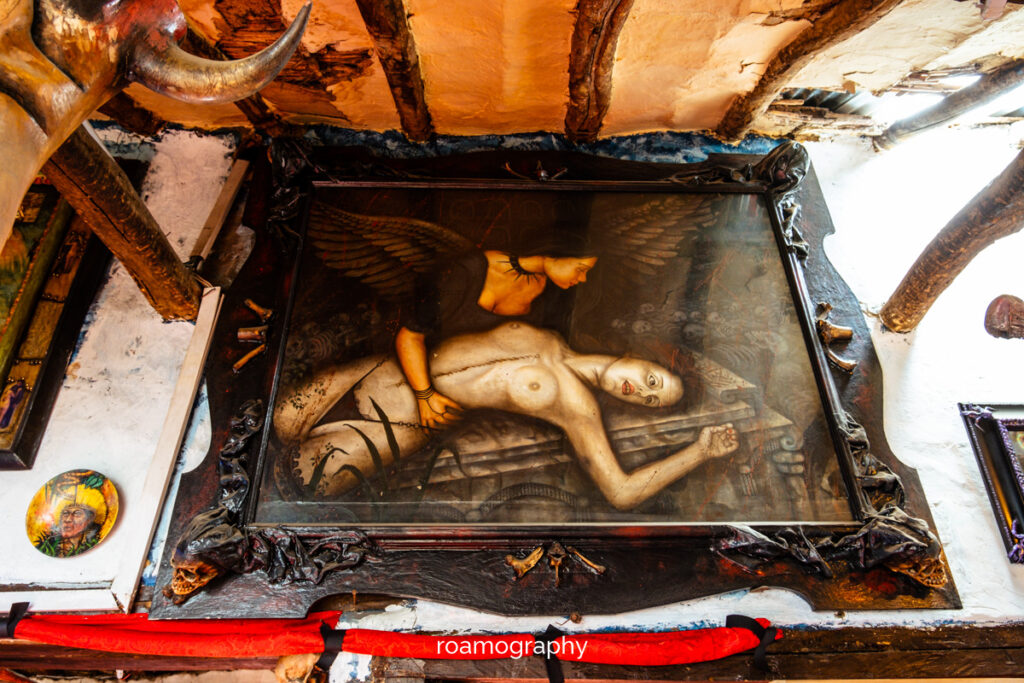
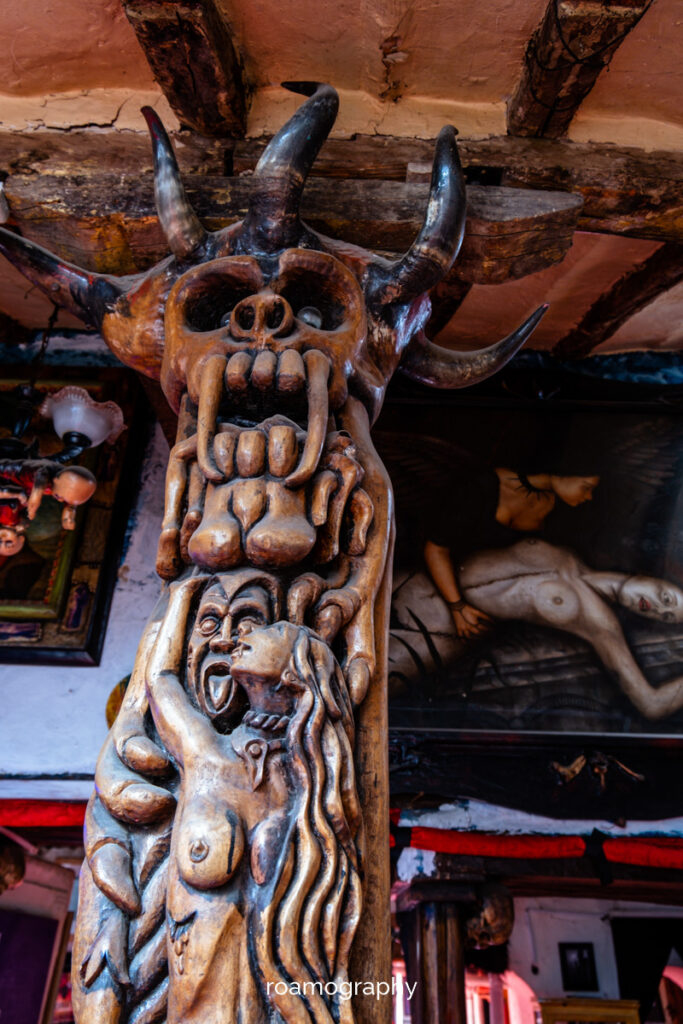
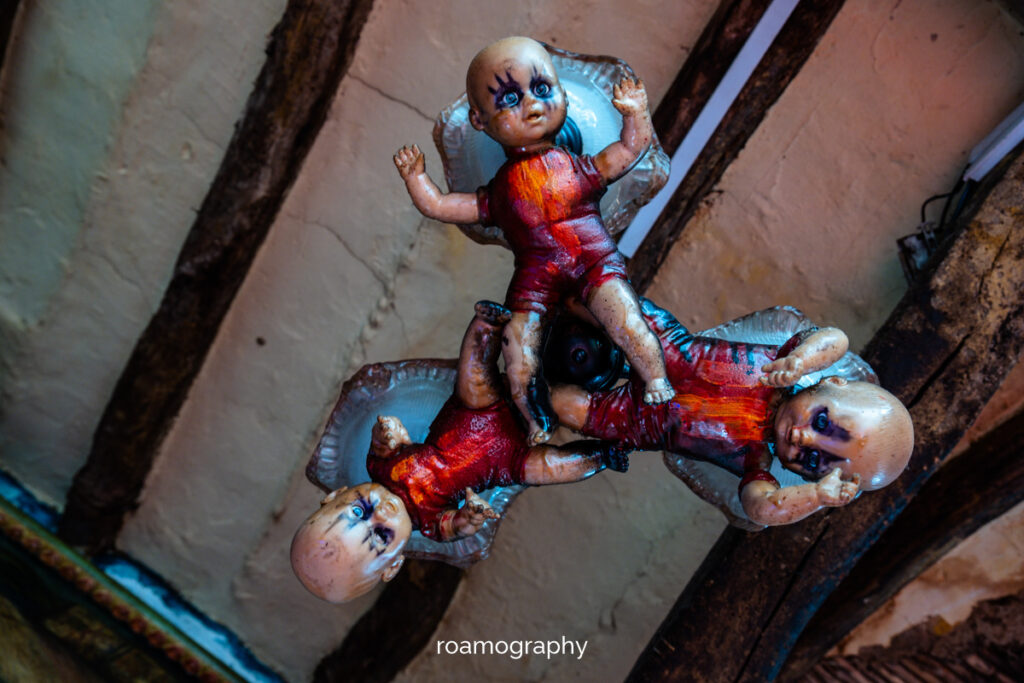
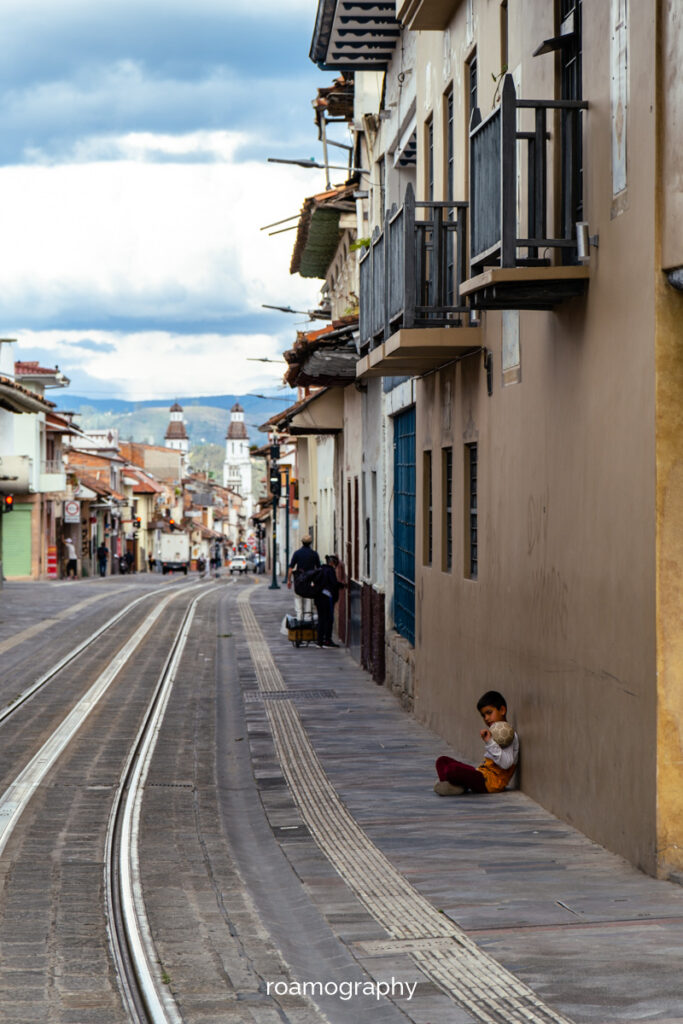
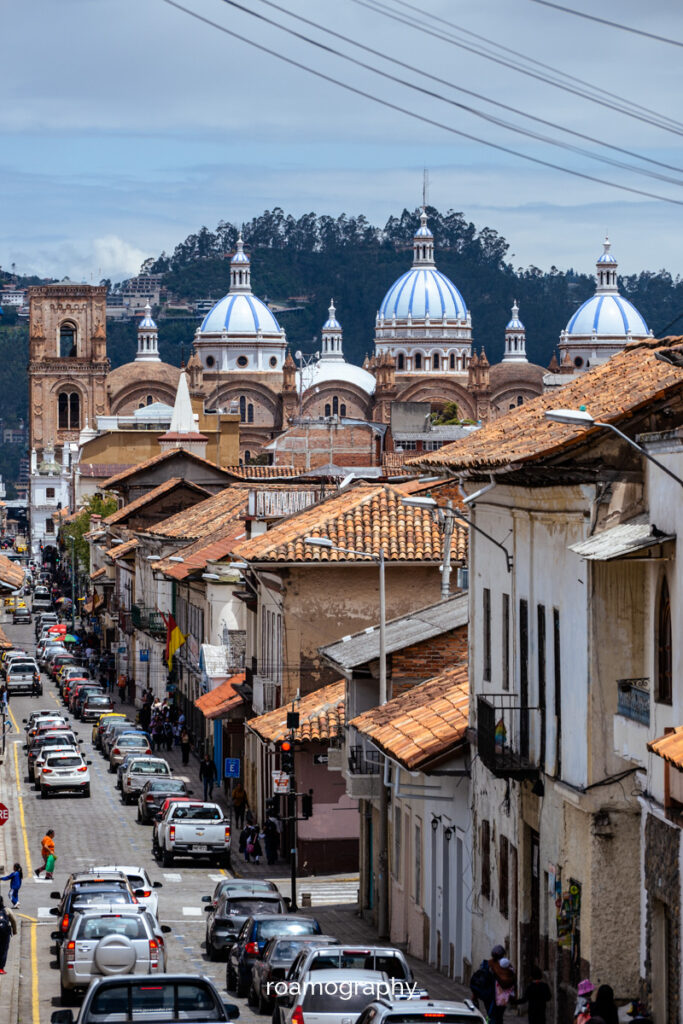


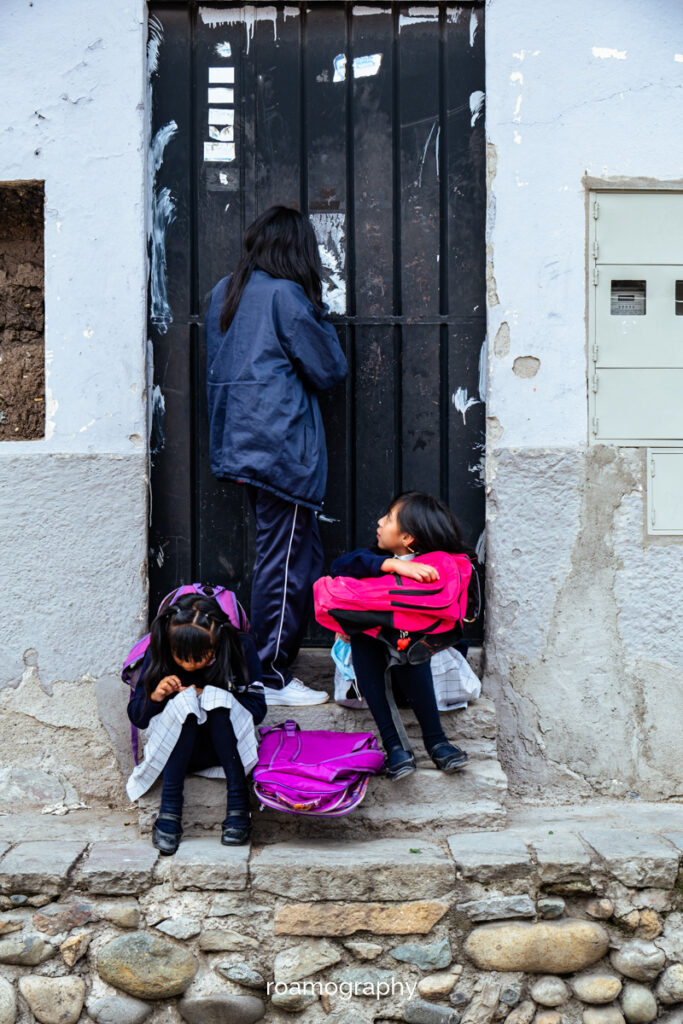
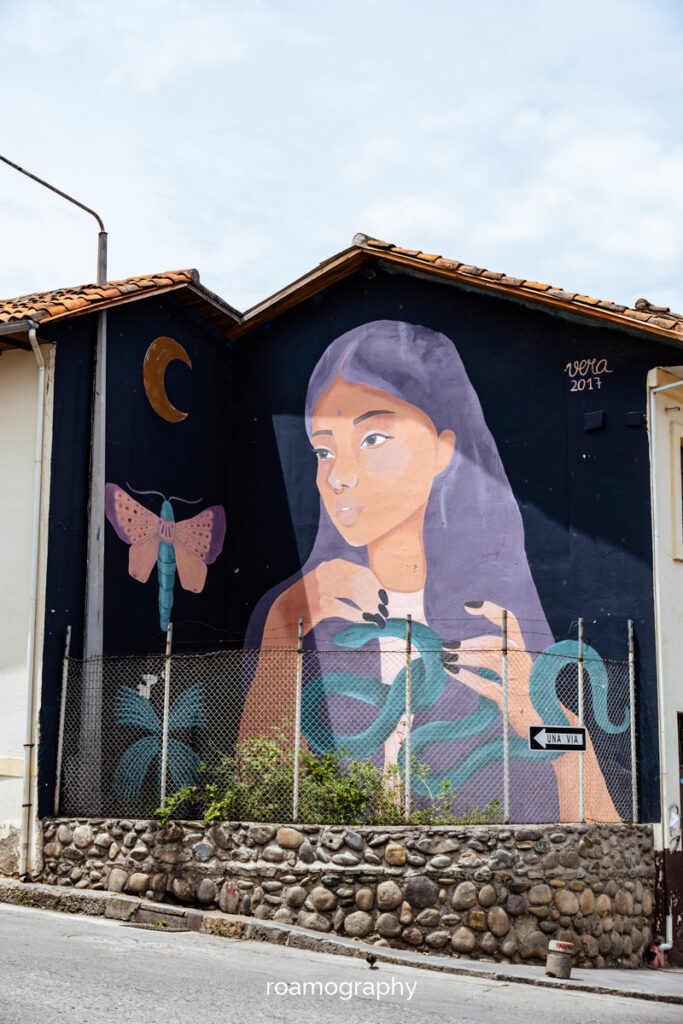
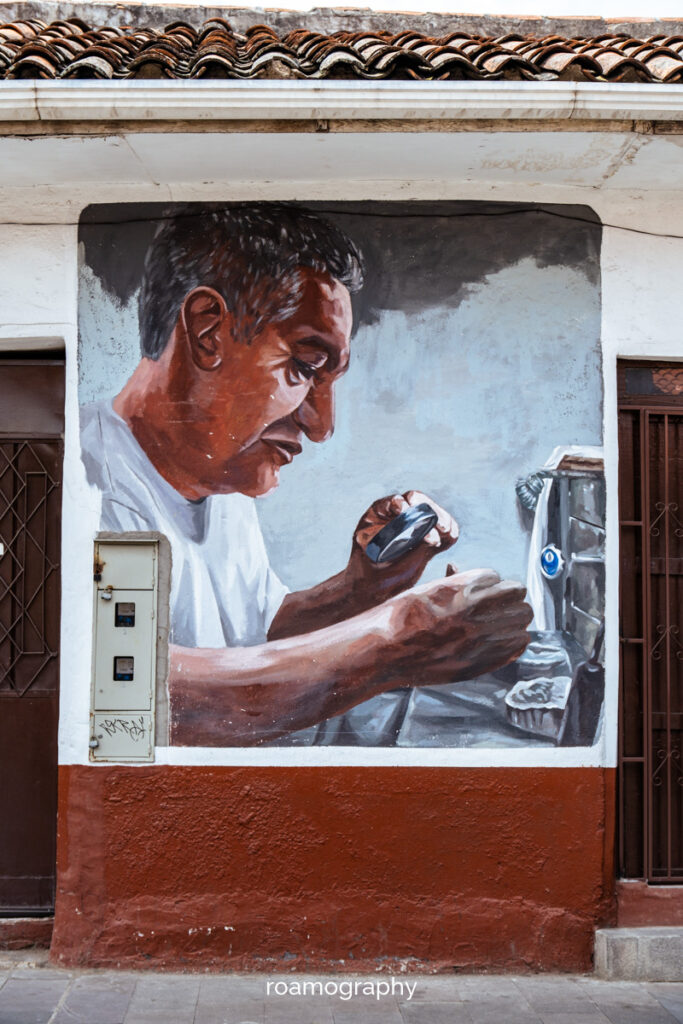
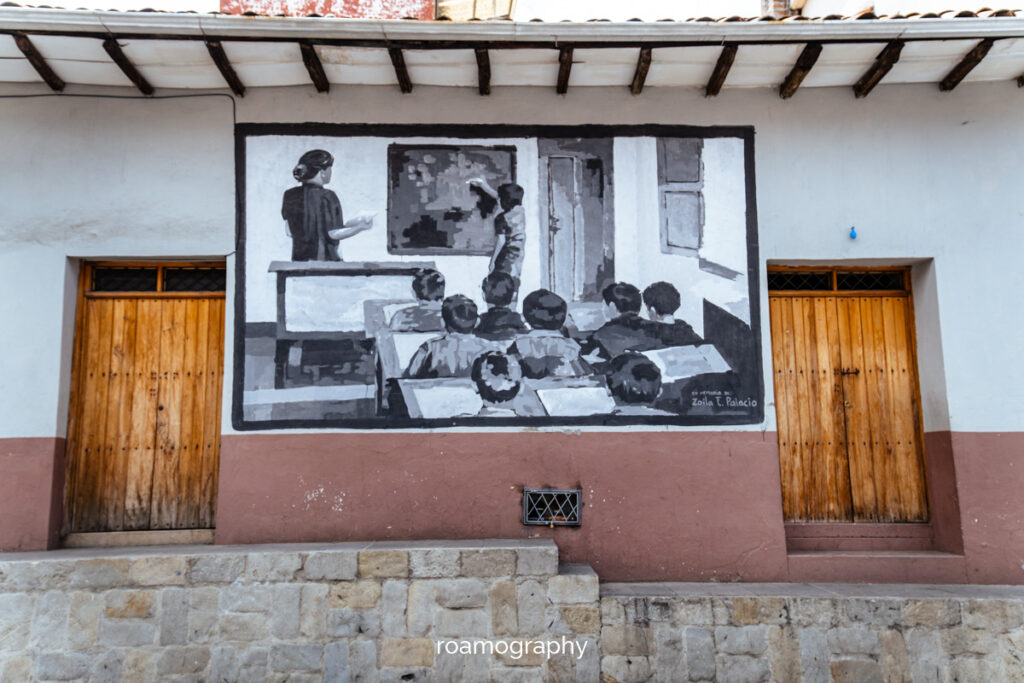
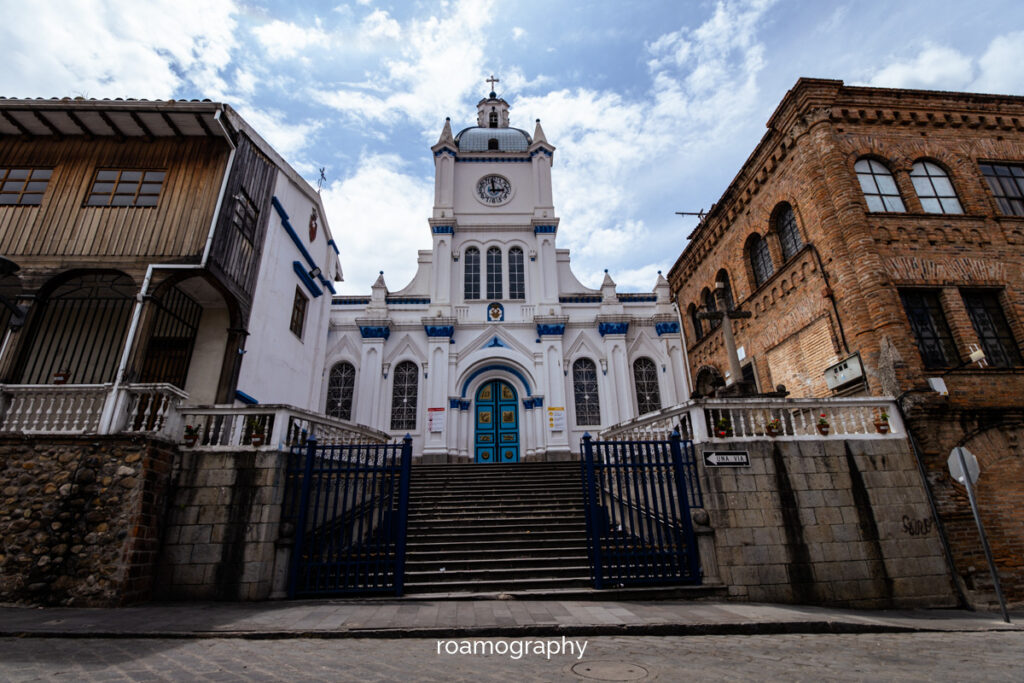
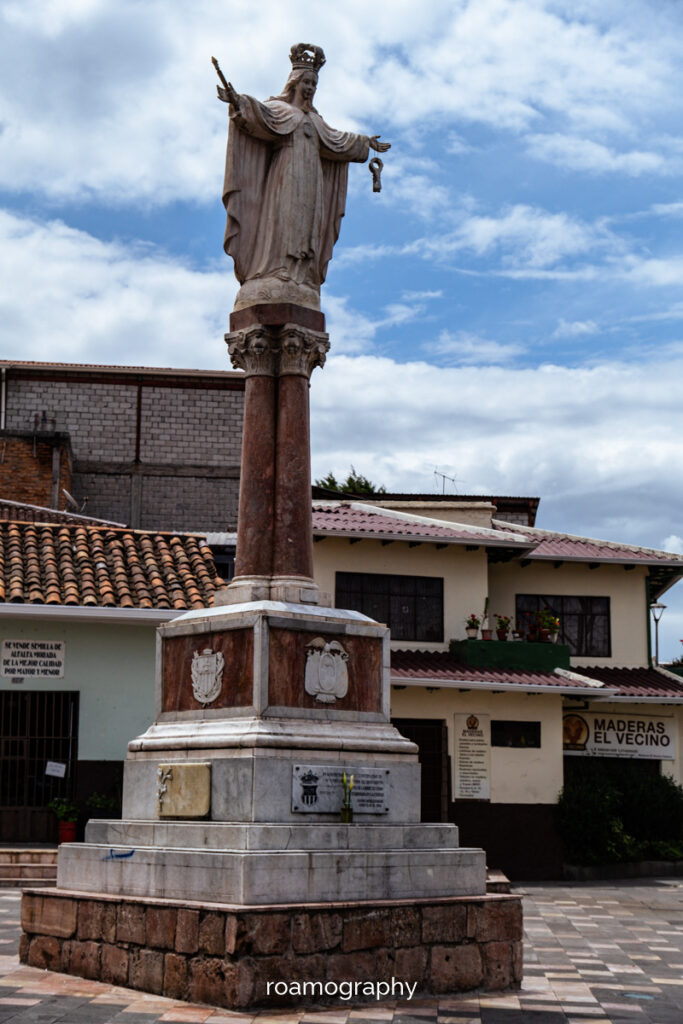
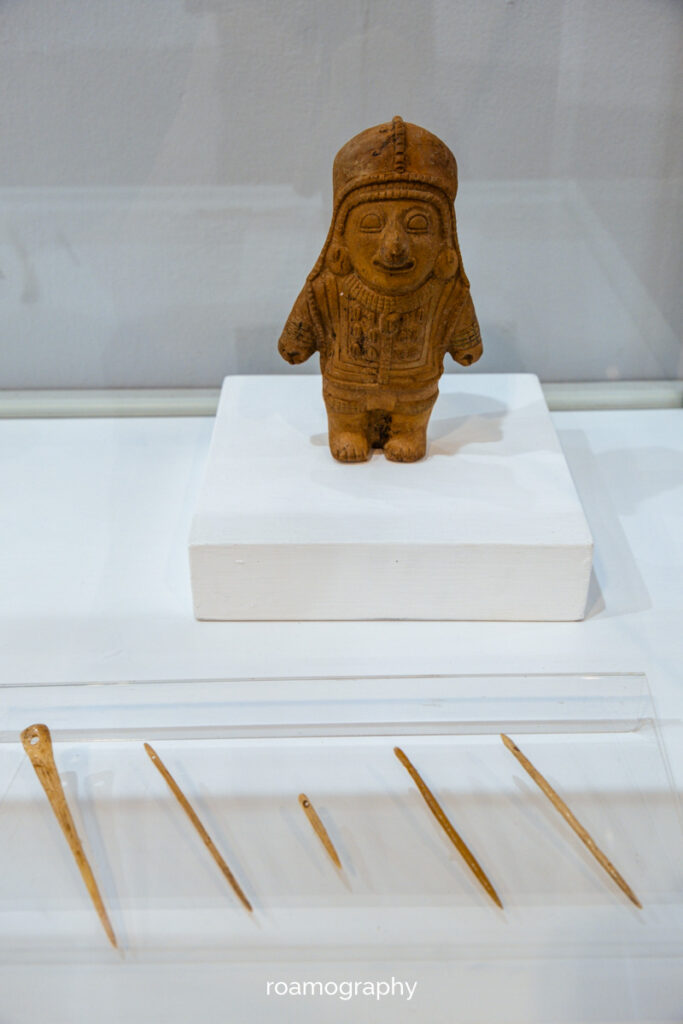
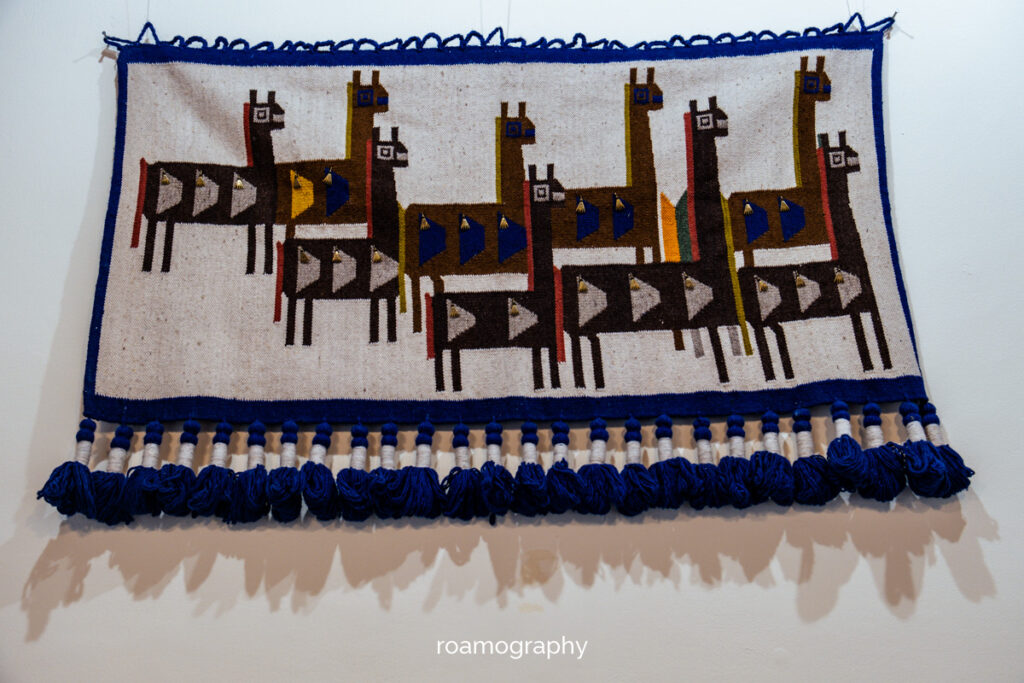
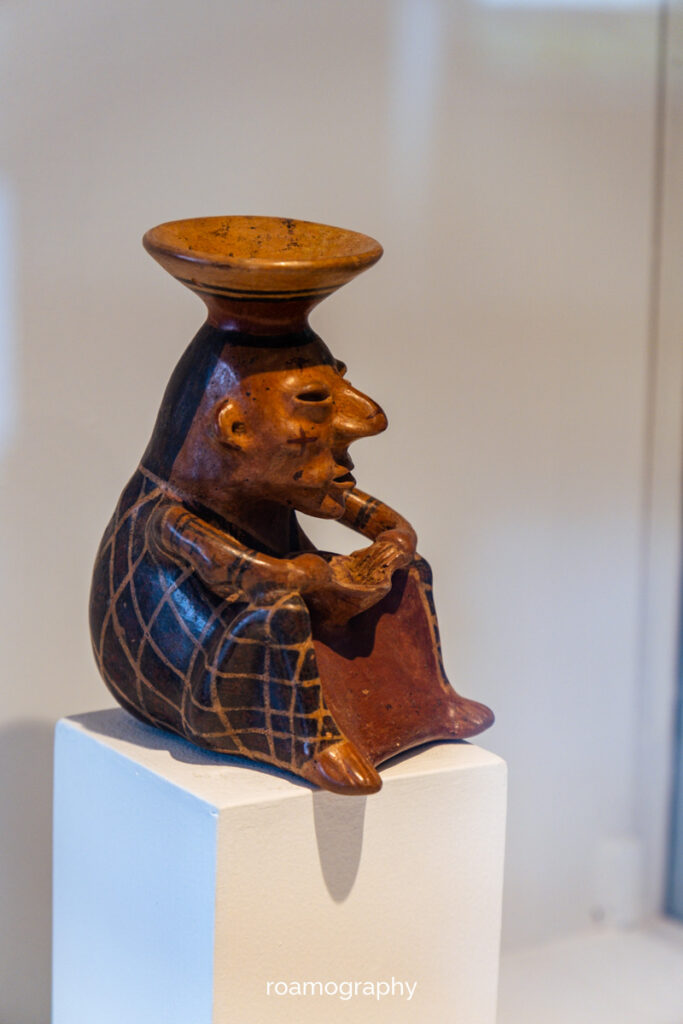
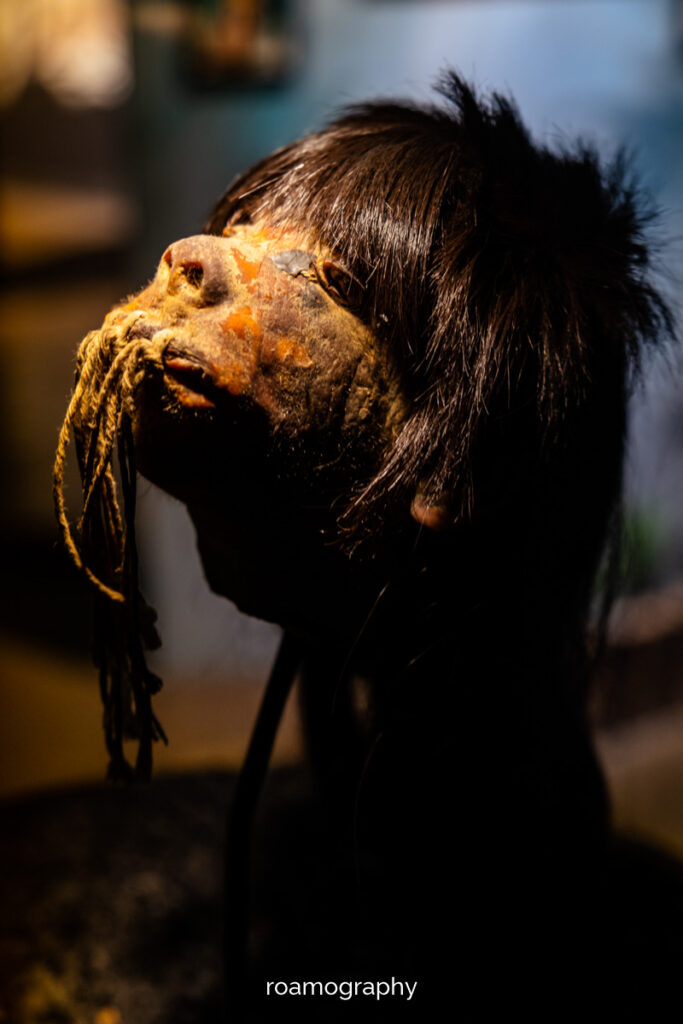


Cuenca
Cuenca stanowi obowiązkowy punkt do odhaczenia podczas podróży po Ekwadorze.Stare miasto i jego kościoły z gracją pozują do zdjęć, do wstąpienia zachęcają liczne muzea, pół- i ćwierć-muzea… Trochę z dala od ścisłego centrum znajdują się też mniej oczywiste miejsca jak Centro Cultural Prohibido (z ciekawymi dziełami sztuki satanistyczno-gotycko-wstrętno-strasznej) czy Museo Pumapungo, w którym można odbyć przebieżkę po historii kultur regionu (a także obejrzeć legendarne zminiaturyzowane główki mniejszości Shuar; btw, główki takie wciąż można w Ekwadorze zakupić jako pamiątkę, z tym że nie są to głowy ludzkie, lecz ucięte nieszczęsnym leniwcom), jest też Museum de la Tierra and las Artes de Fuego i jego okolice z fajnymi jadłodajniami; przed tymże muzeum mamy również okazję obejrzeć ceremonię chacana, czyli oddanie hołdu Pachamamie.
Leaving Cuenca, it is worth stopping at the green-brown Cajas National Park, where the mountains bulge pleasantly, the streams murmur gently, the trees dance, the lakes glisten lazily with the reflection of the sun peeking out from time to time from behind the clouds.
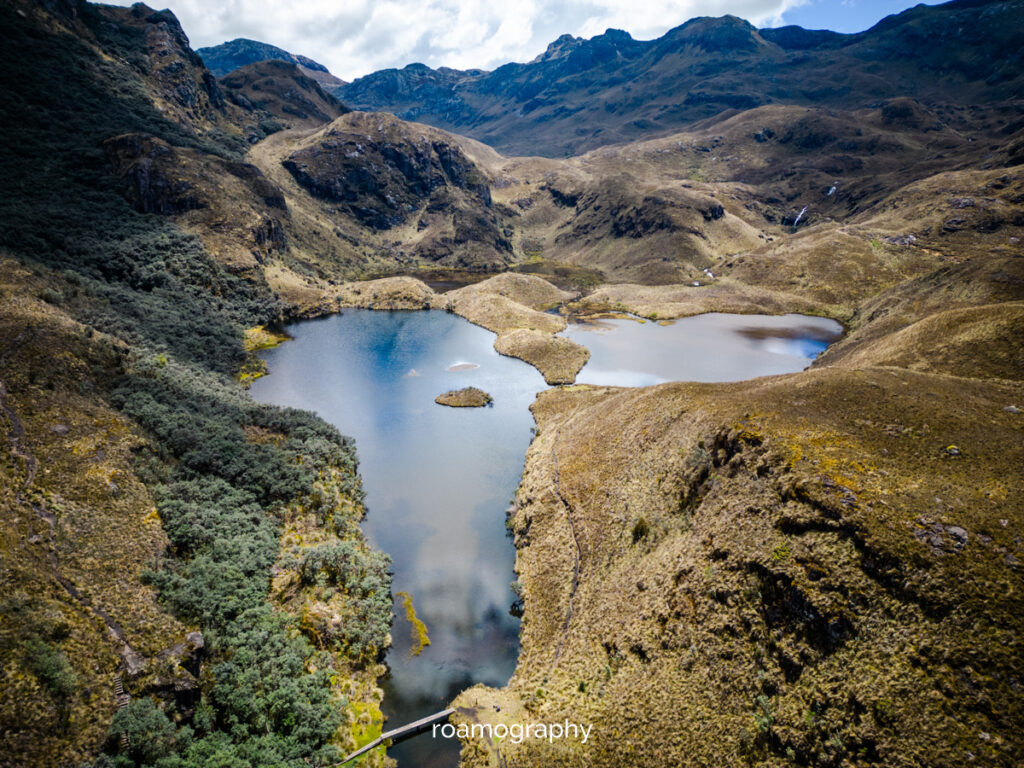

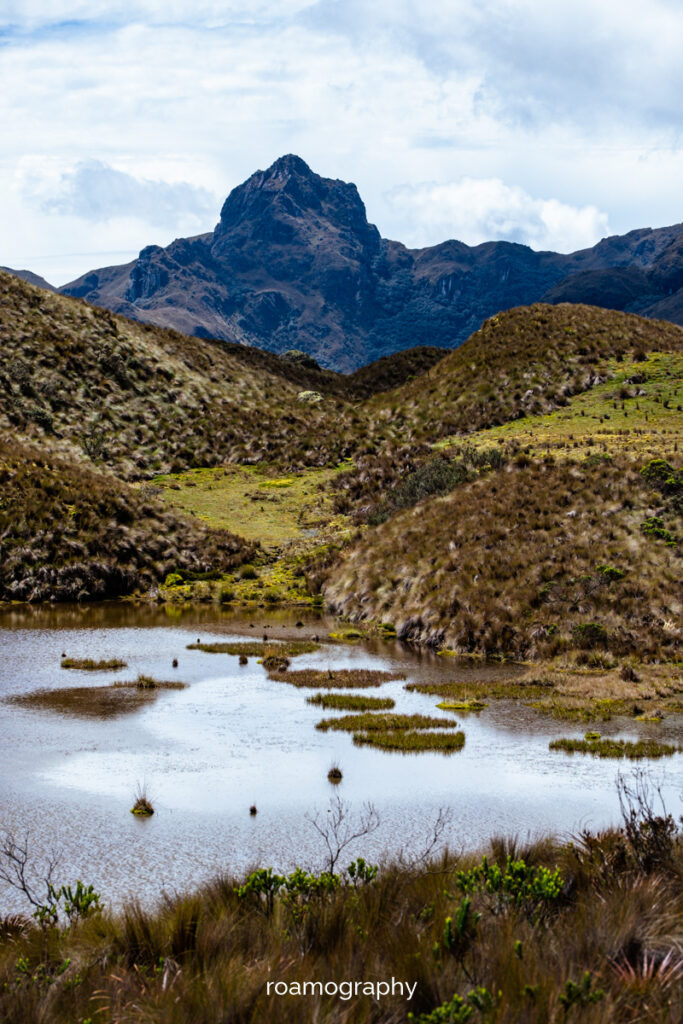
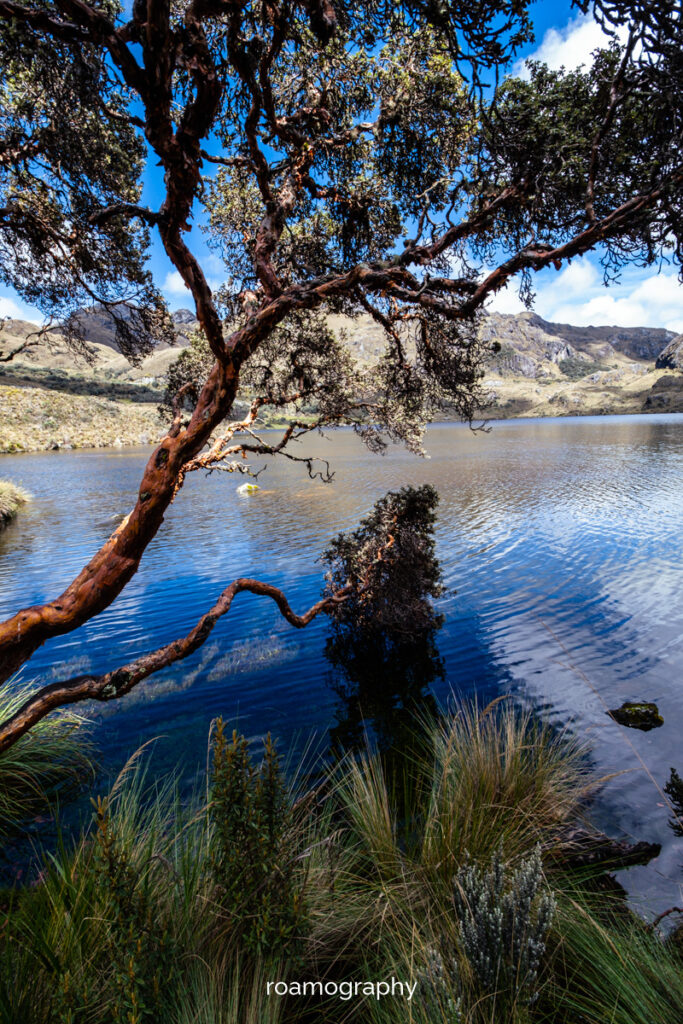

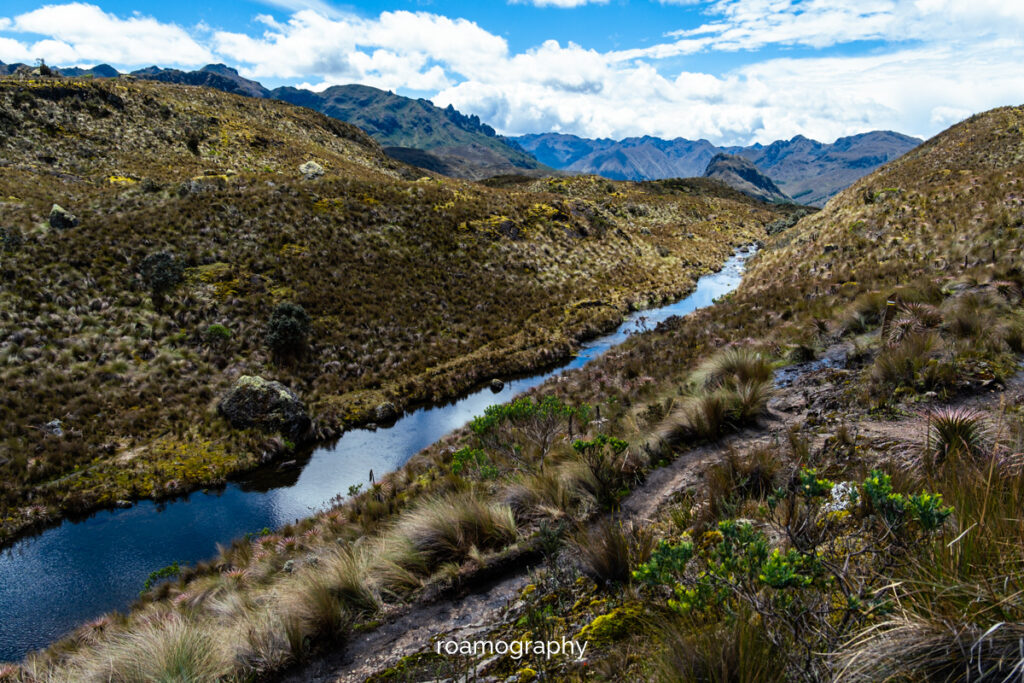
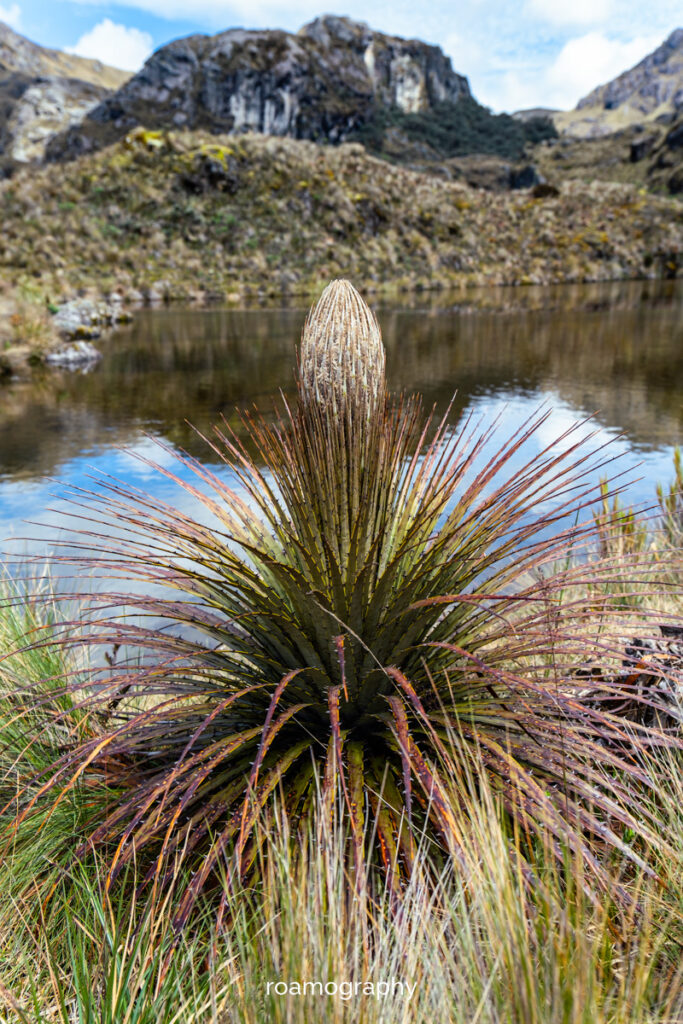
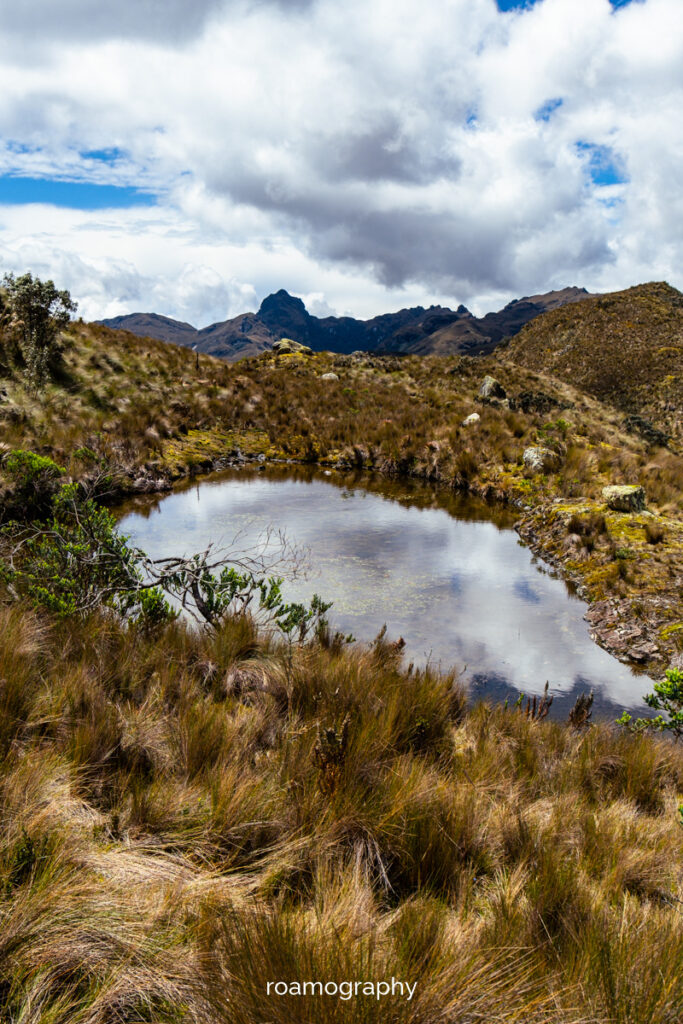
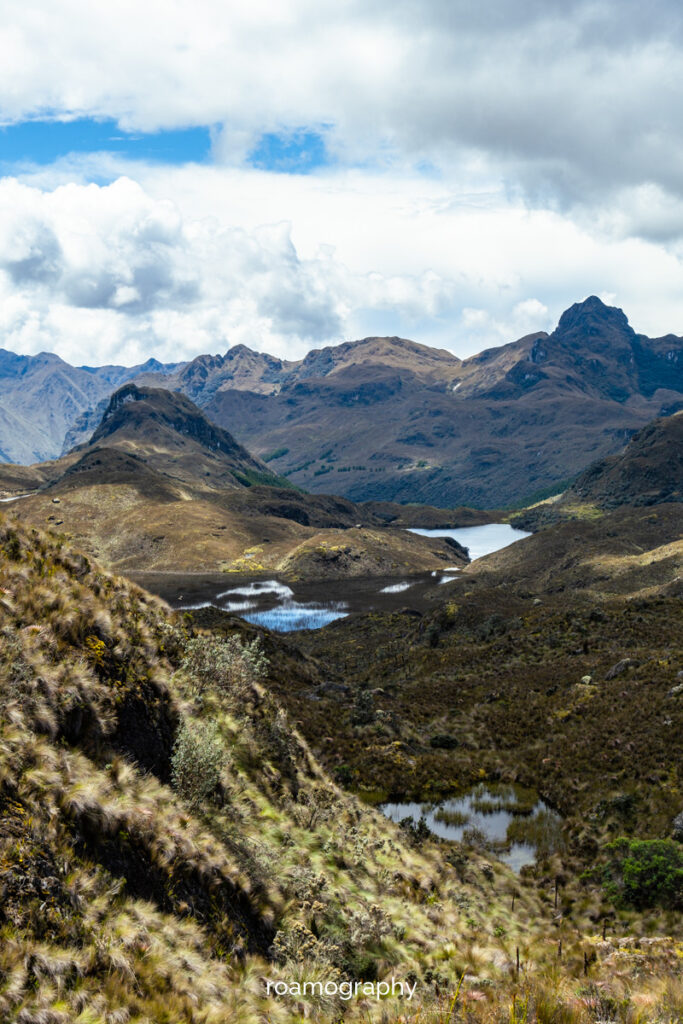
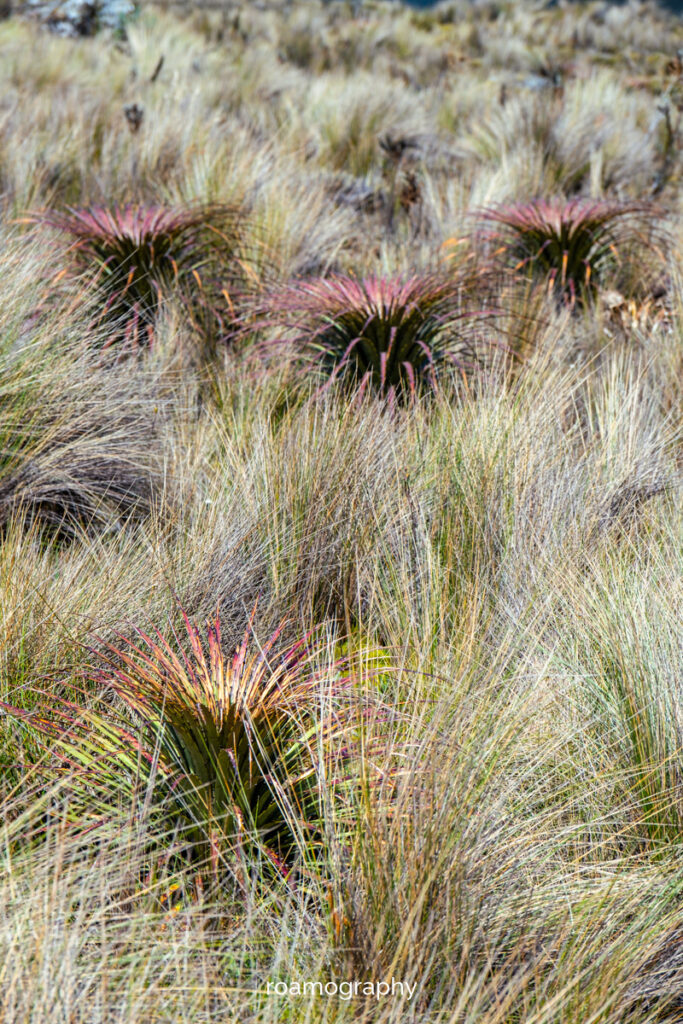

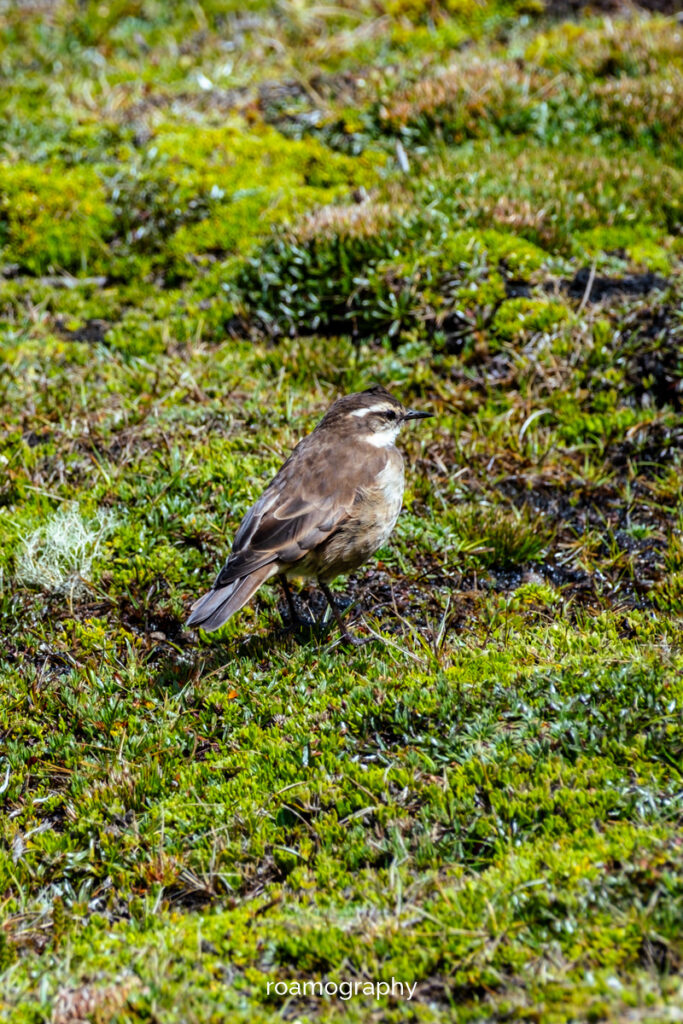
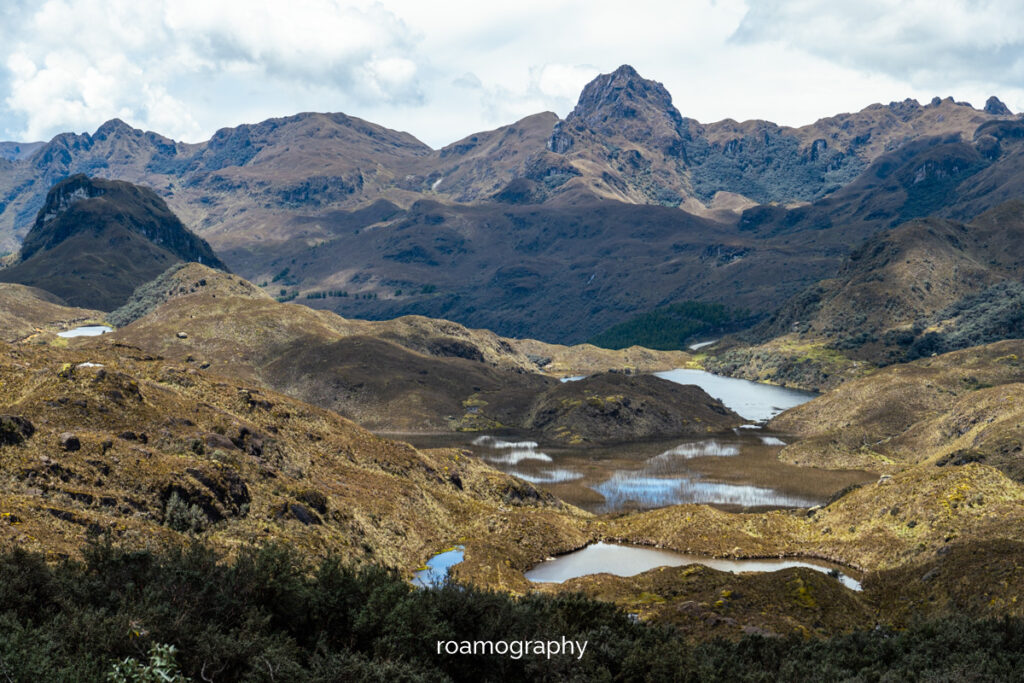

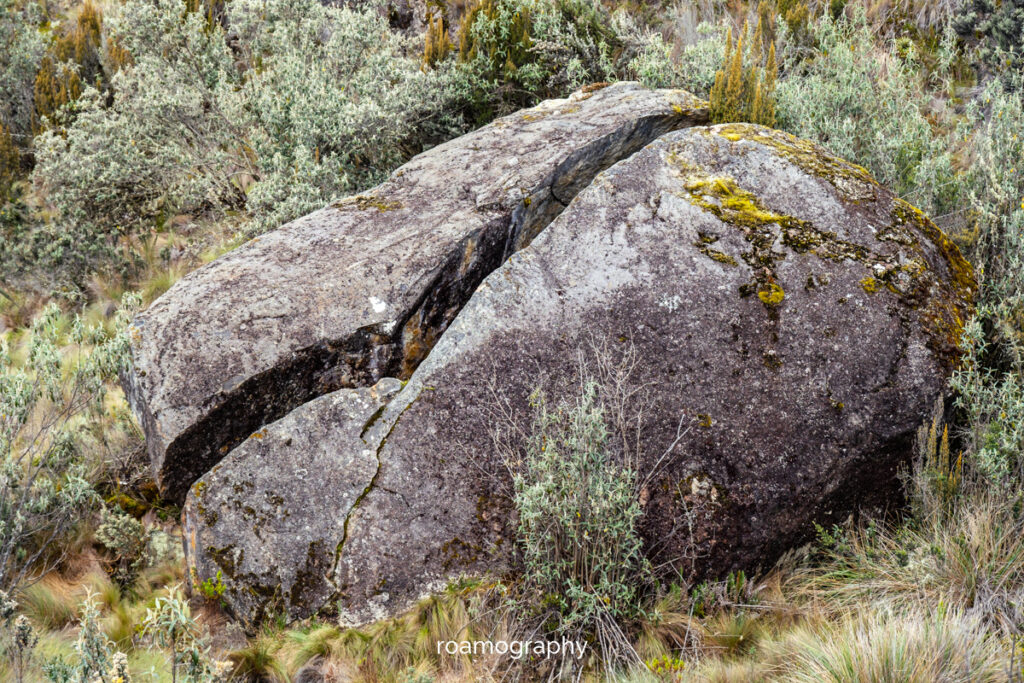
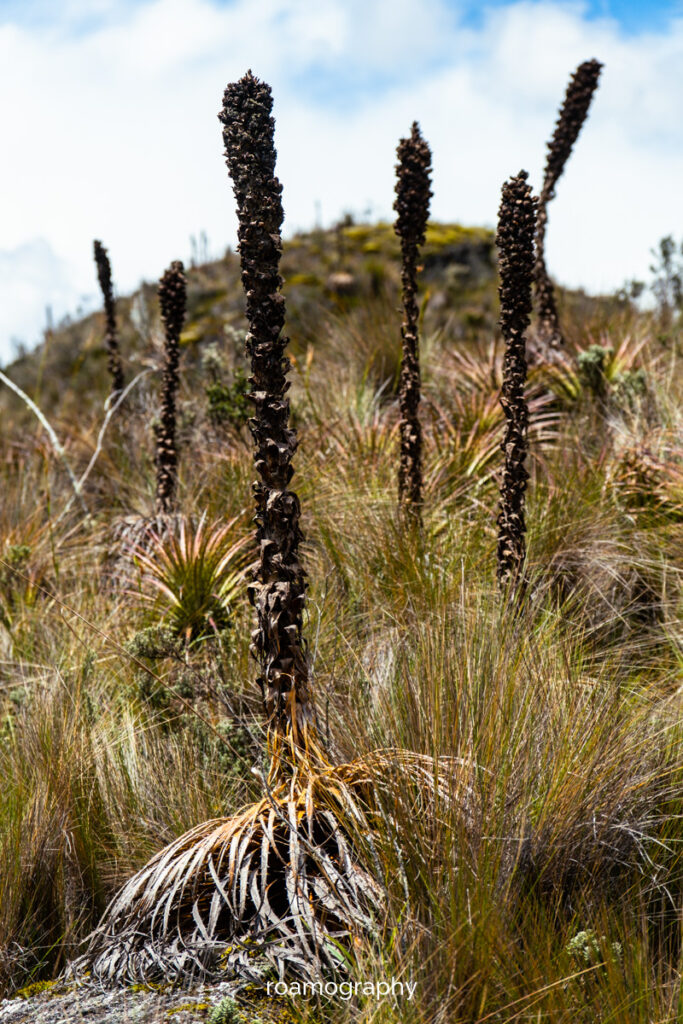
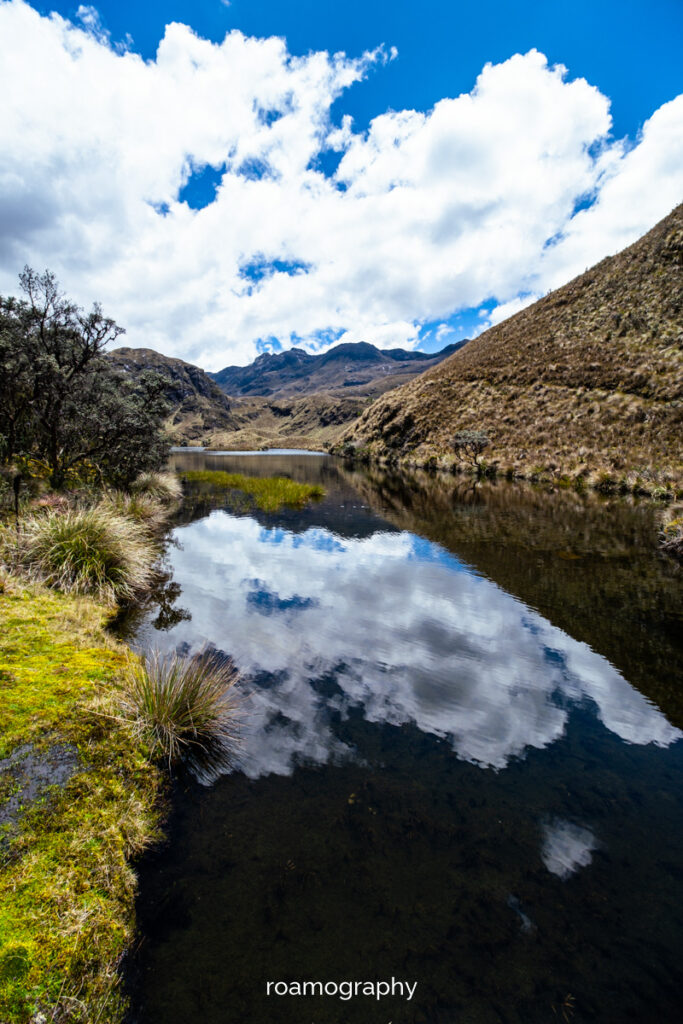
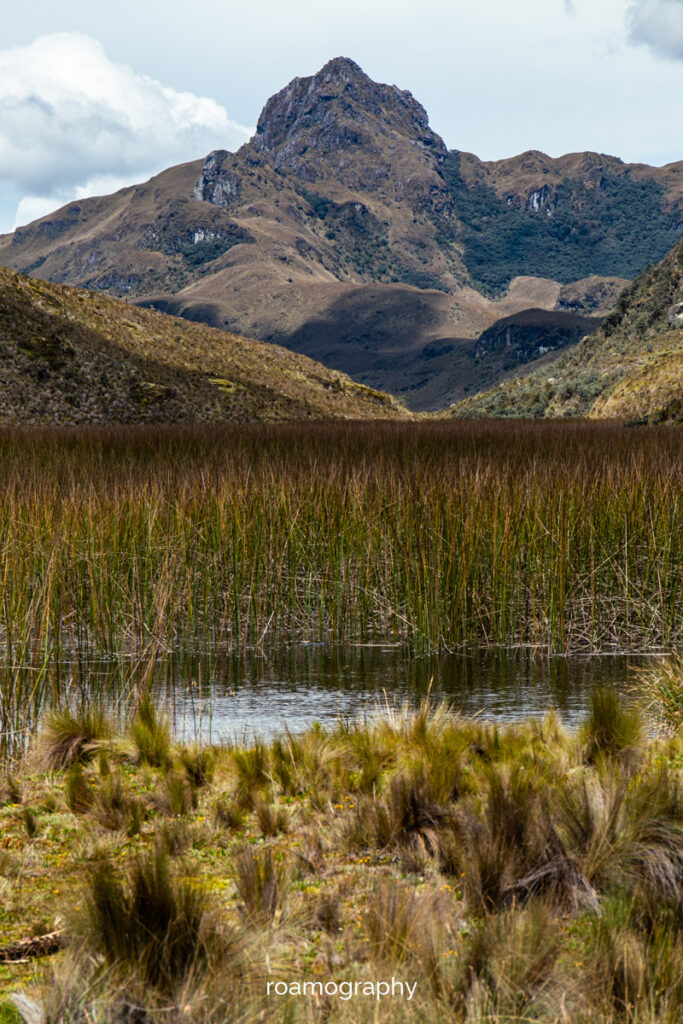

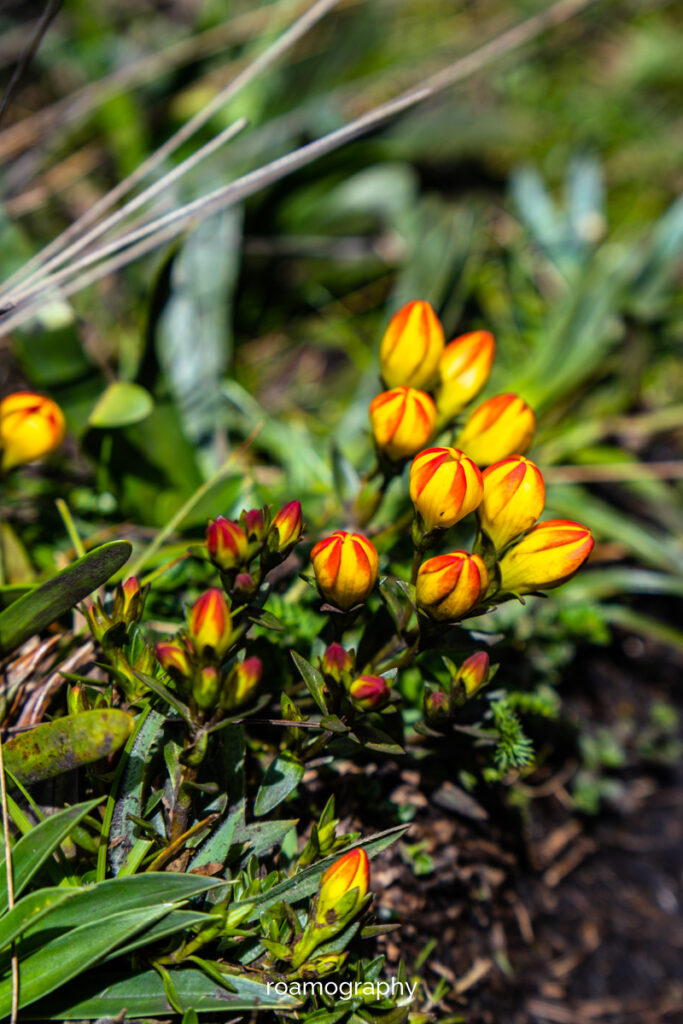
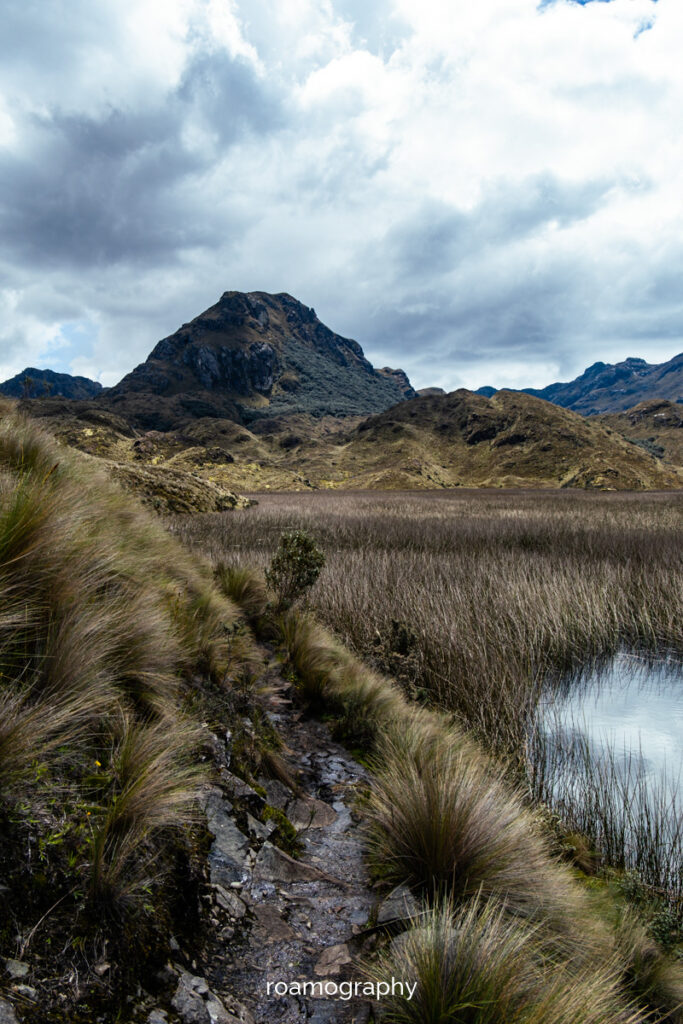
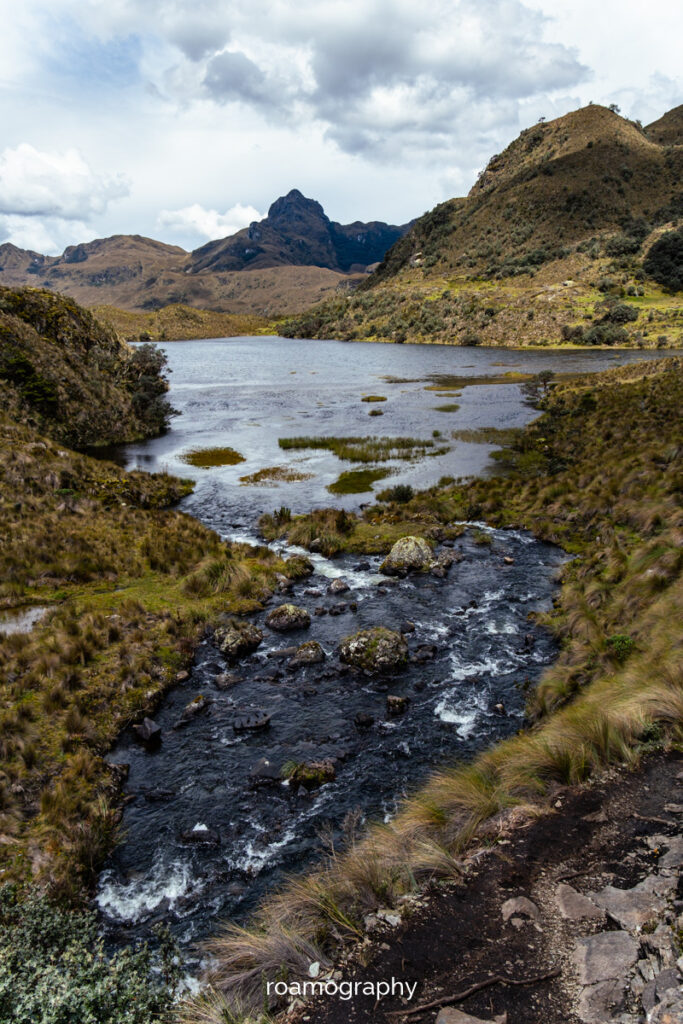
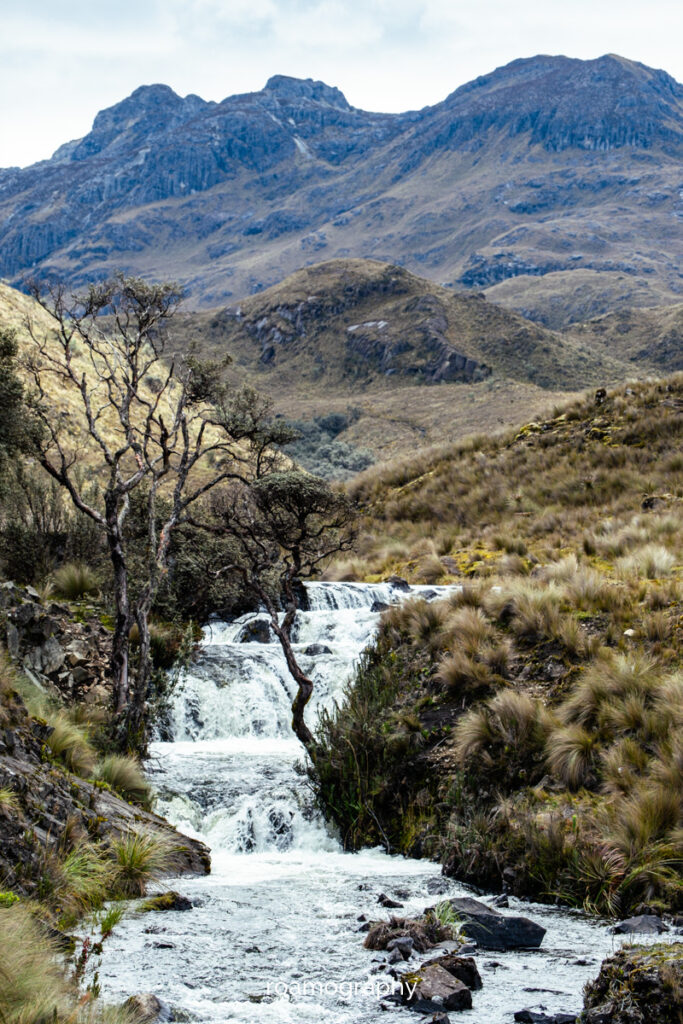
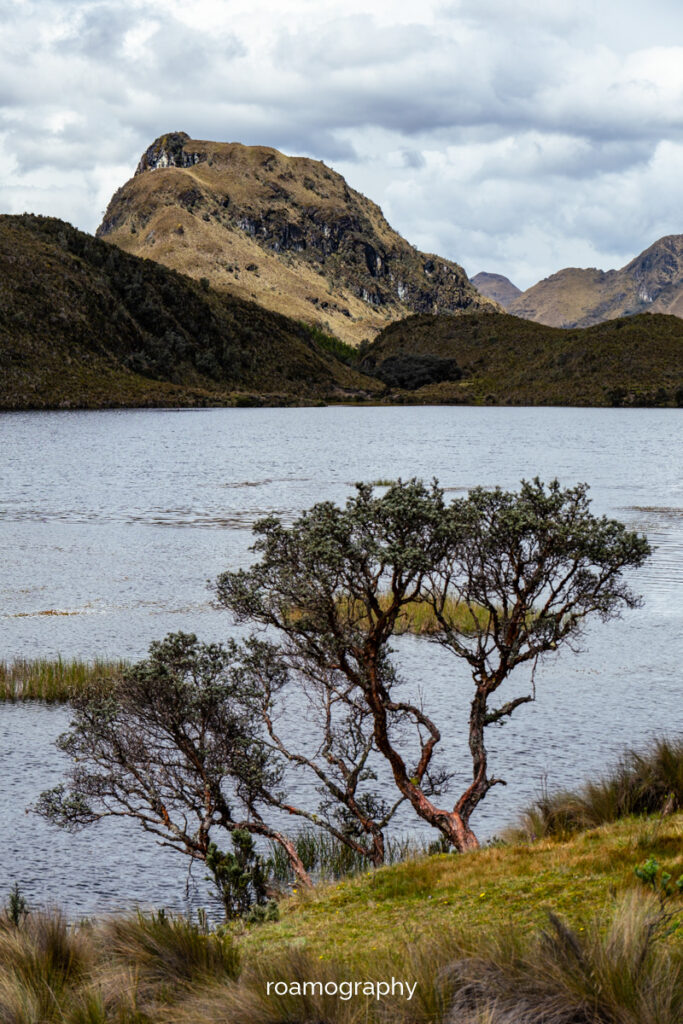
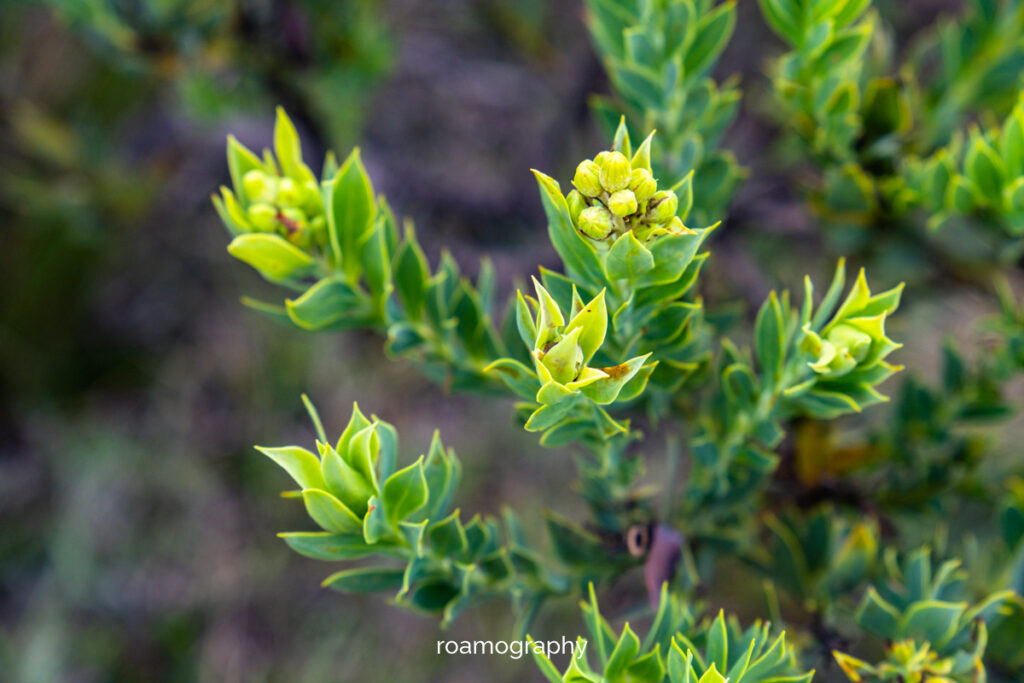
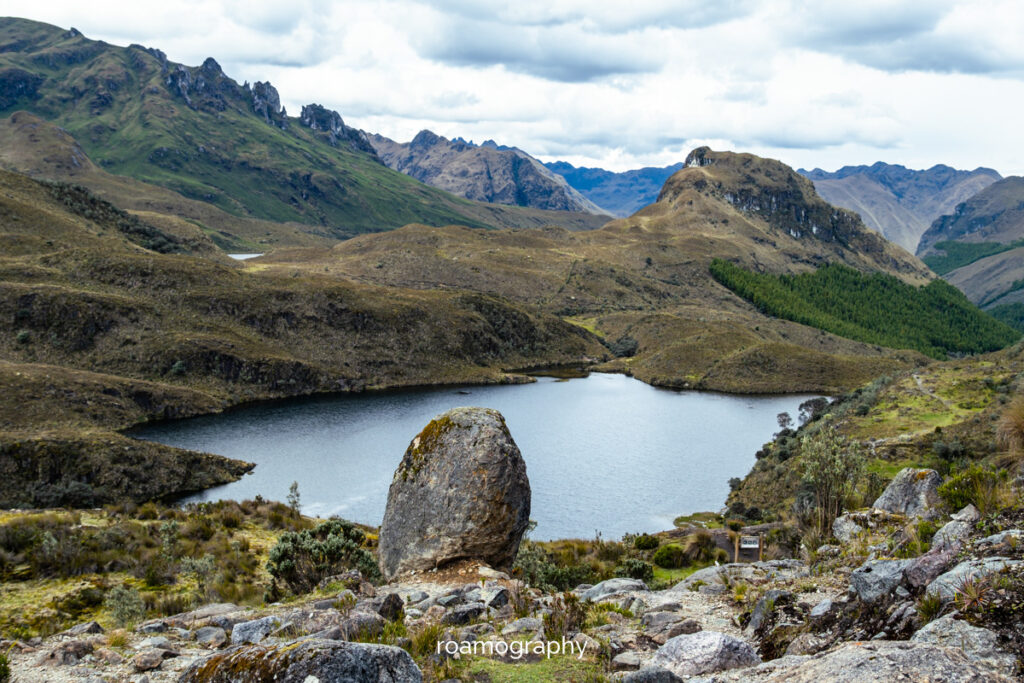
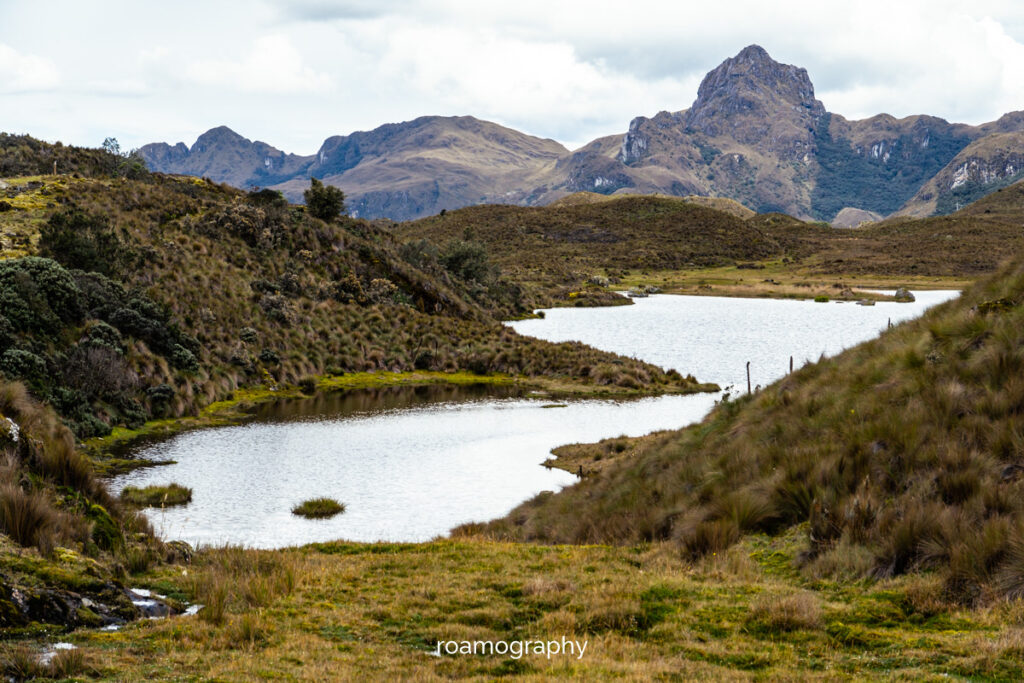
Park Cajas
Wyjeżdżając z Cuenki, warto zatrzymać się w zielono-brunatnym Parku Narodowym Cajas, gdzie góry przyjemnie się wybrzuszają, strumyki delikatnie szemrzą, drzewa tańczą, jeziora leniwie łypią odbiciem słońca, co jakiś czas wychylającego się zza chmur.
Having changed at the Guayaquil train station, we arrive in the coastal town of Salinas and lodge in the very discreetly (read: not at all) advertised yet friendly Bay House Hostel.
The beaches in Salinas itself don’t knock you out, they just are and that’s it. You can find other attractions here instead: The Whale Museum (with the amiable Ben, owner of the collection and a real enthusiast exploring the world of whales for many, many years), you can have a trip to the sandy-rocky tip outside the town (under army management, so there are some restrictions on visiting this corner), which houses long, empty stretches of beach and the waves form very surf-like shapes. But the most important places here are certainly: La Lobería, a piece of rock with sea lions rolling around lazily, and, on the other side of the headland, a colony of blue-footed boobies that periodically hang out here – you don’t have to fly to the expensive Galapagos to admire these delightfully flapping, silly-looking birds! Some of them also perch on the rocks above the sea lions, although there we can observe them from a much greater distance.
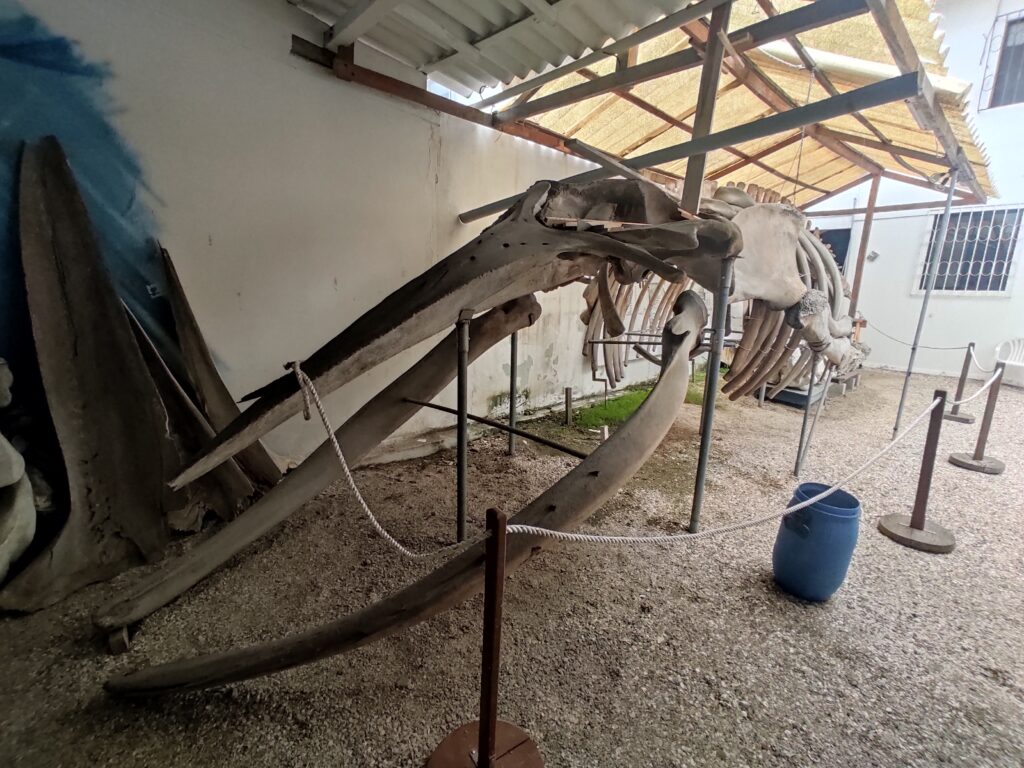
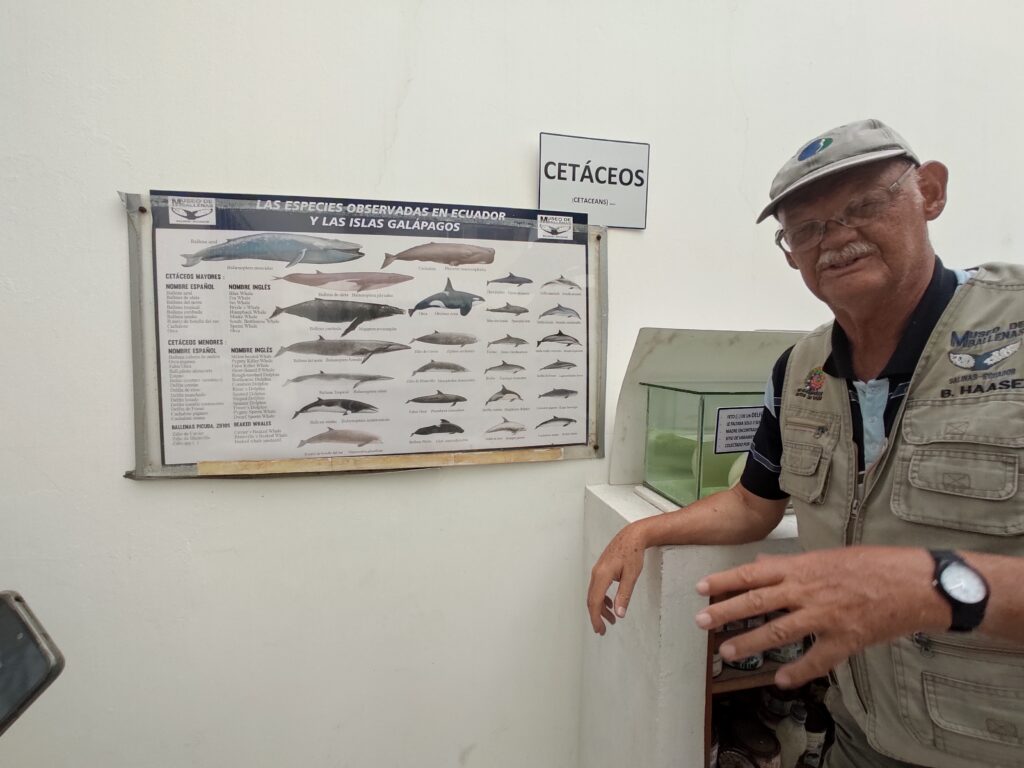
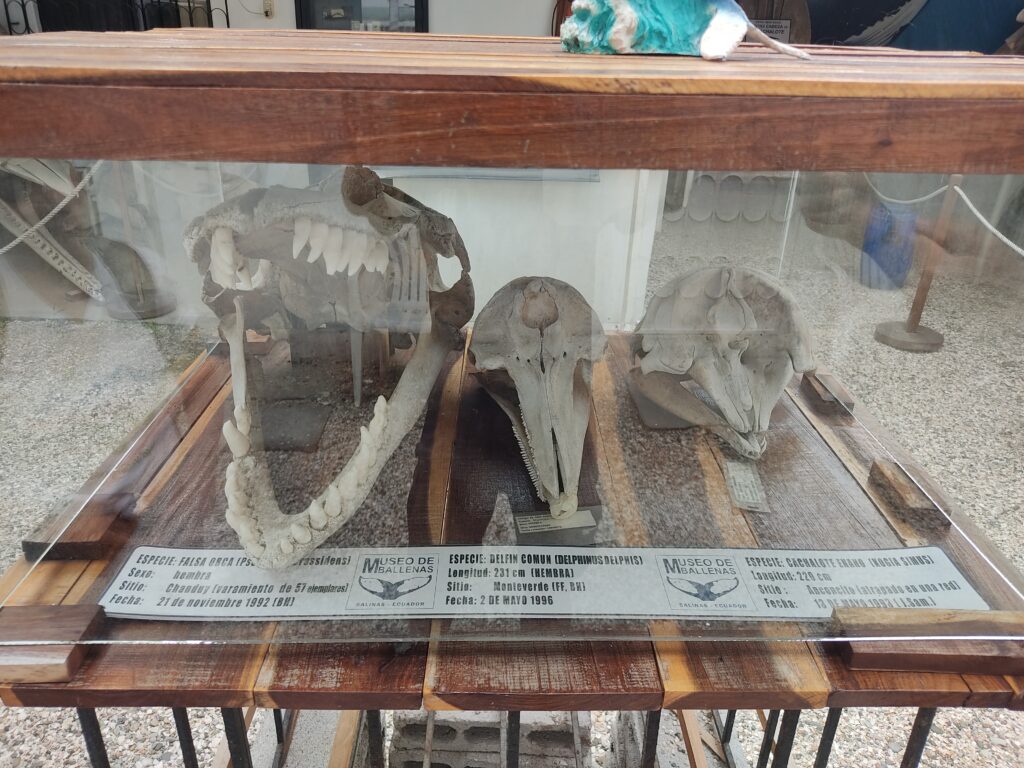
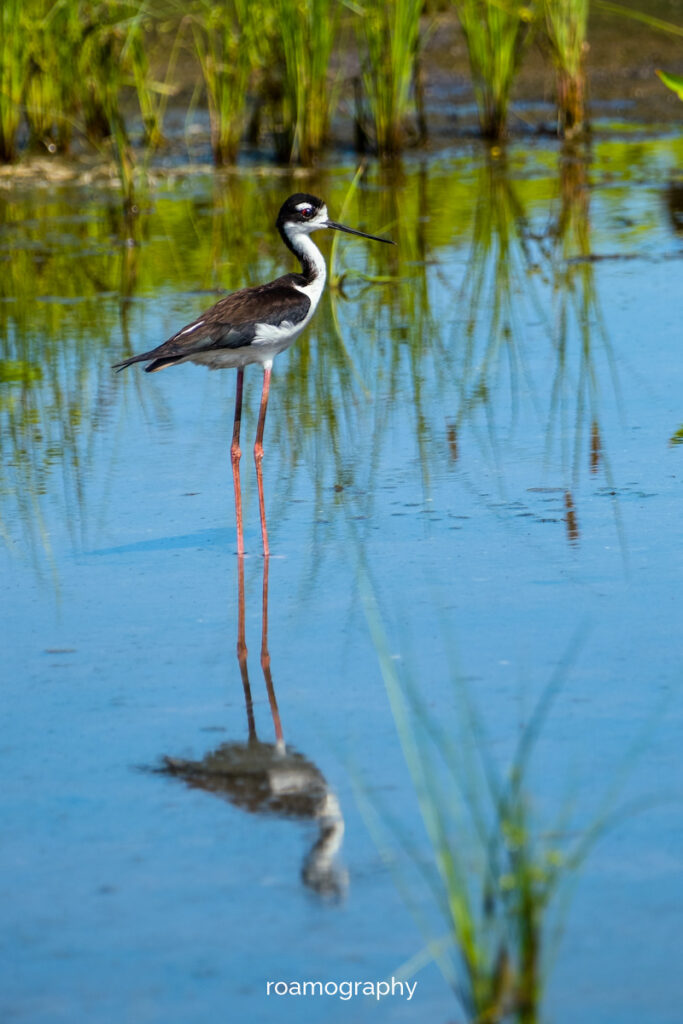
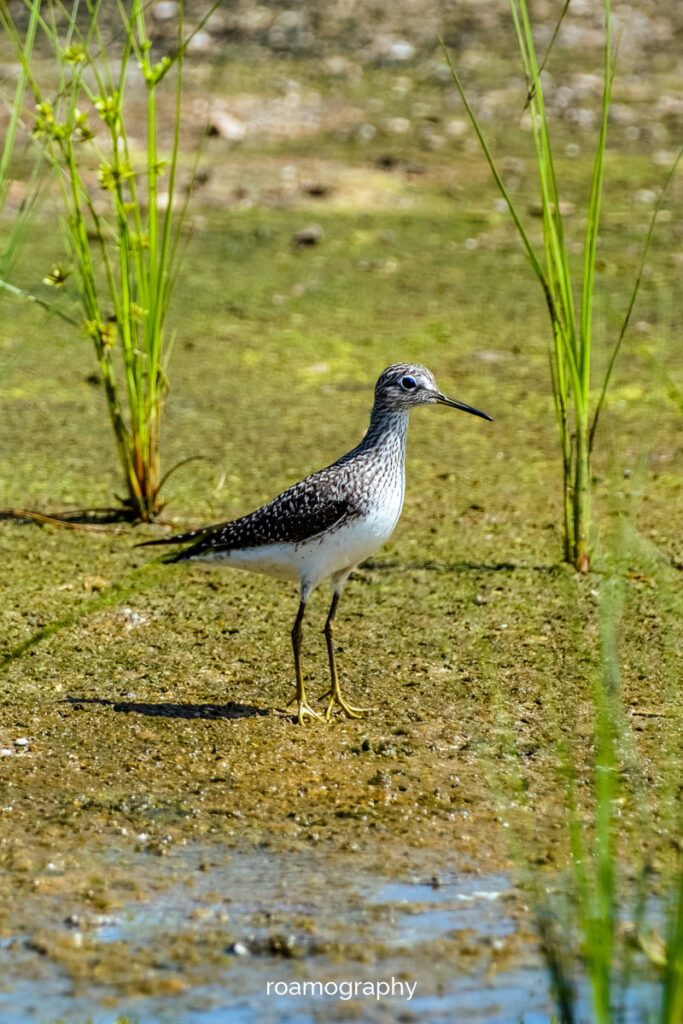
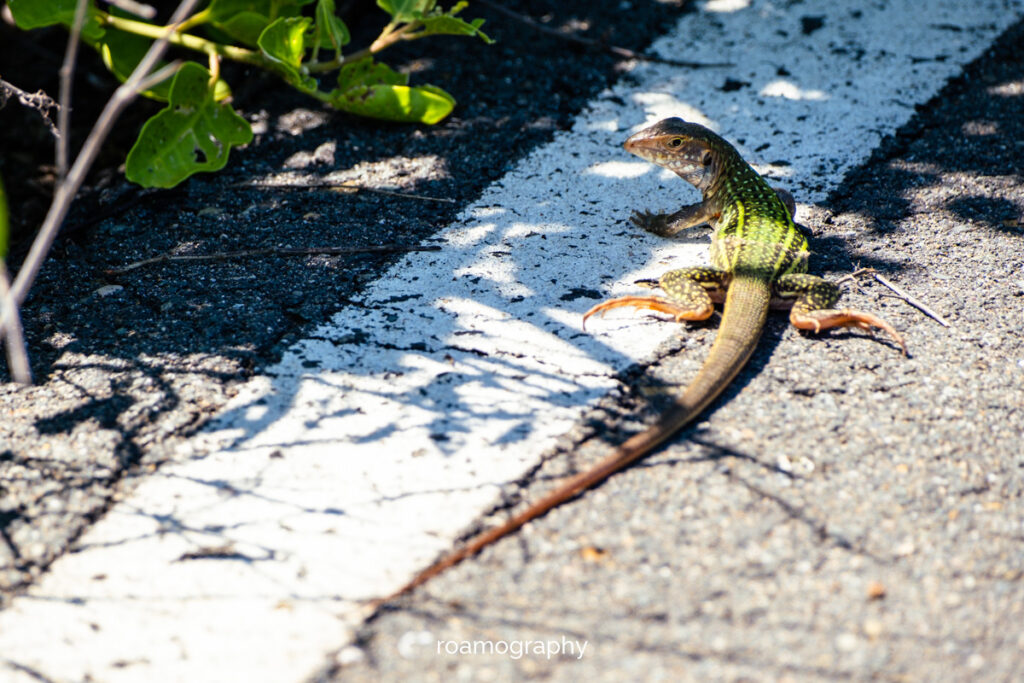
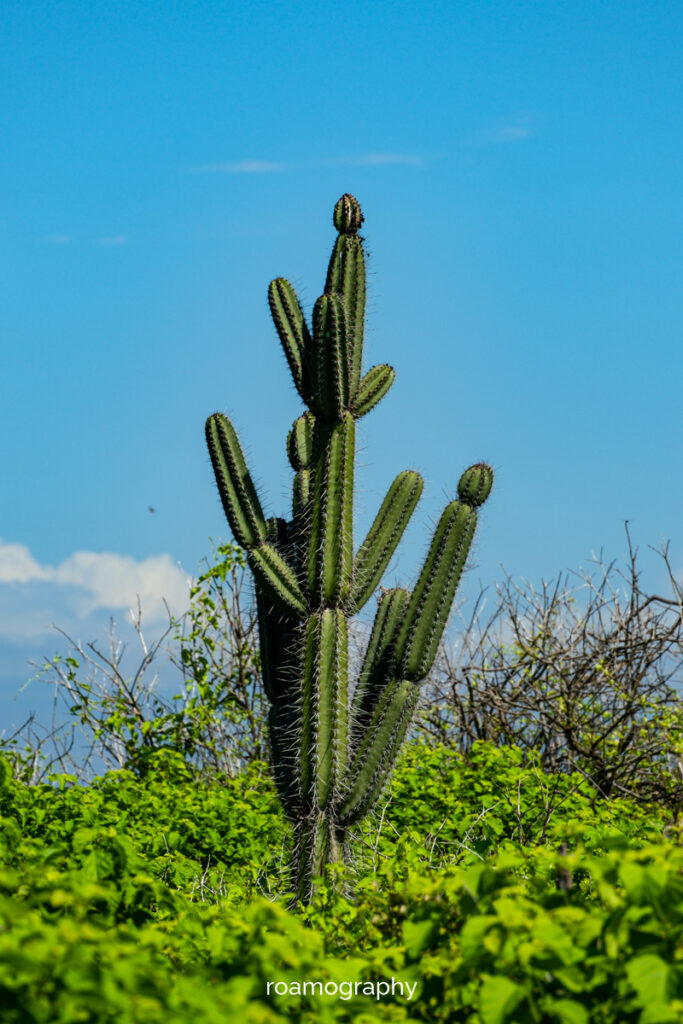


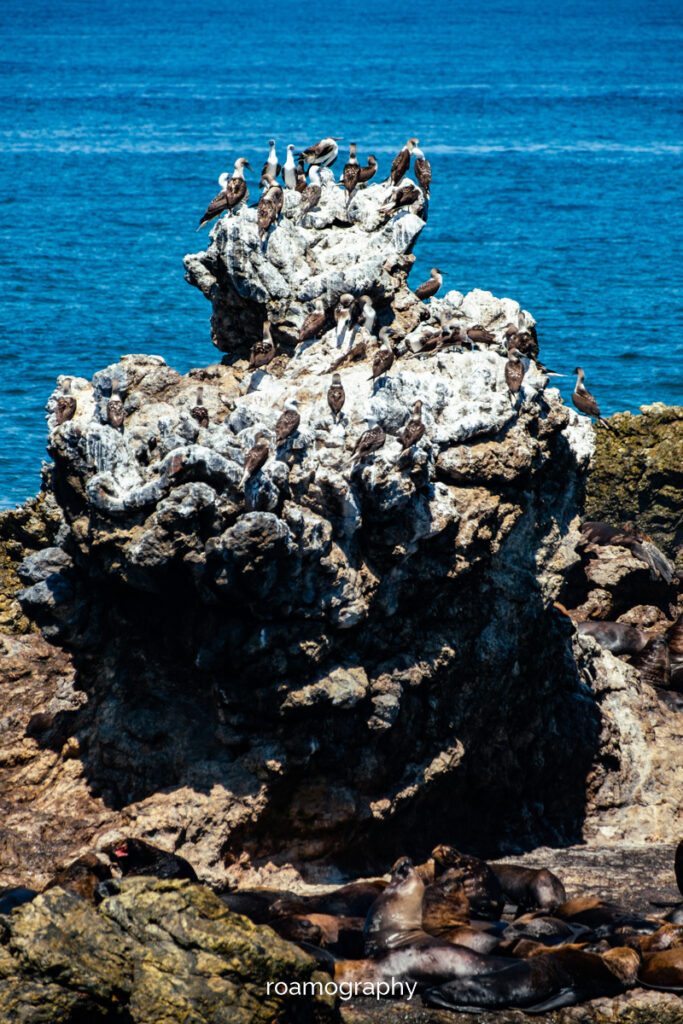
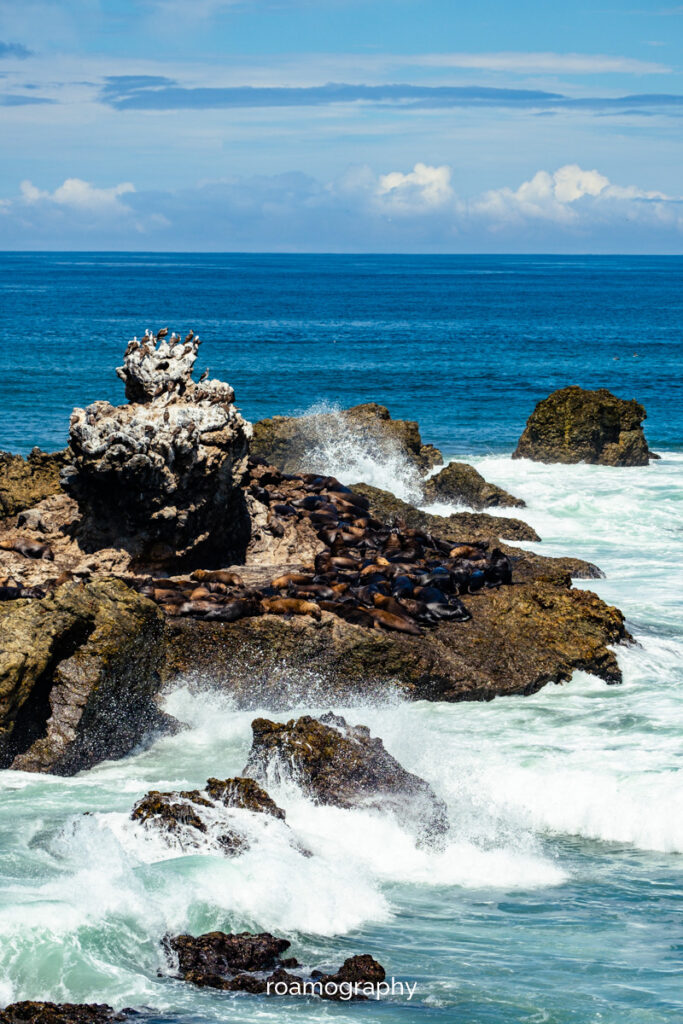
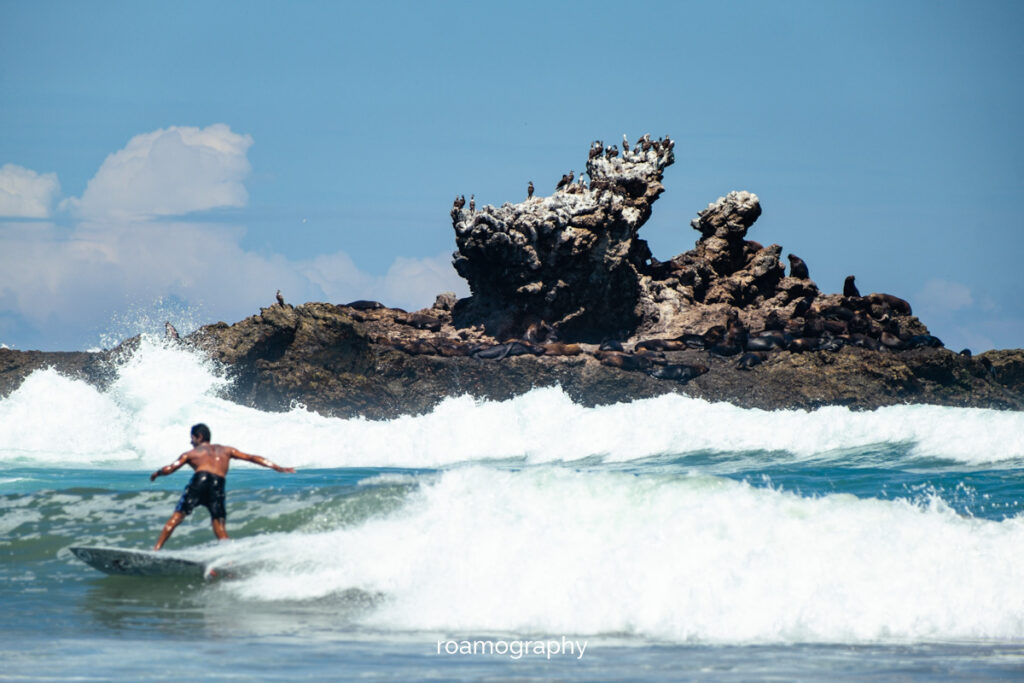
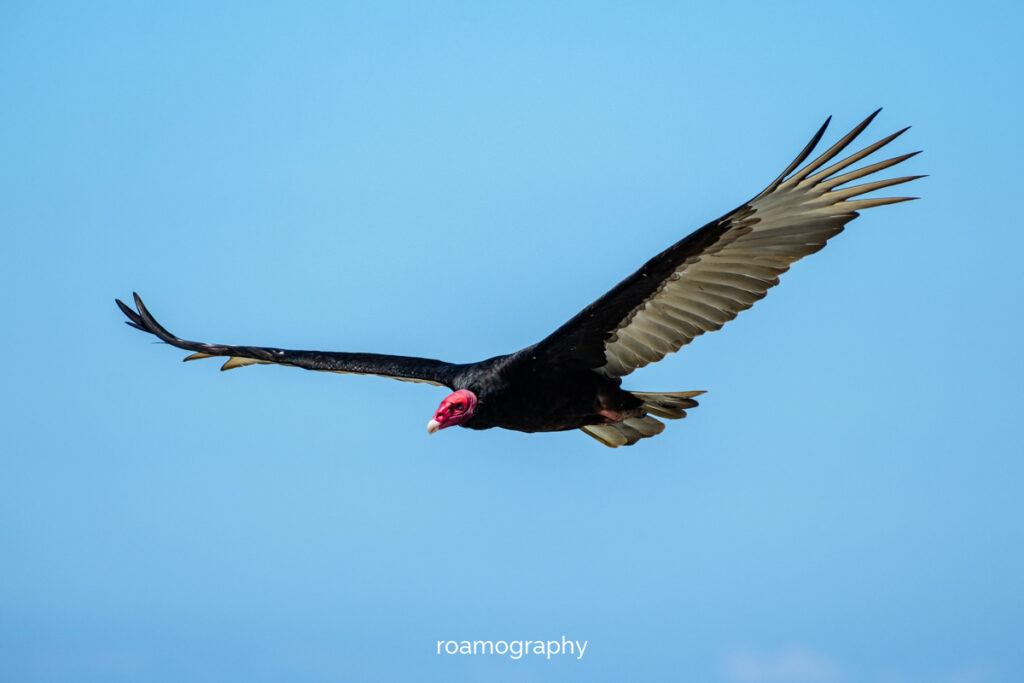

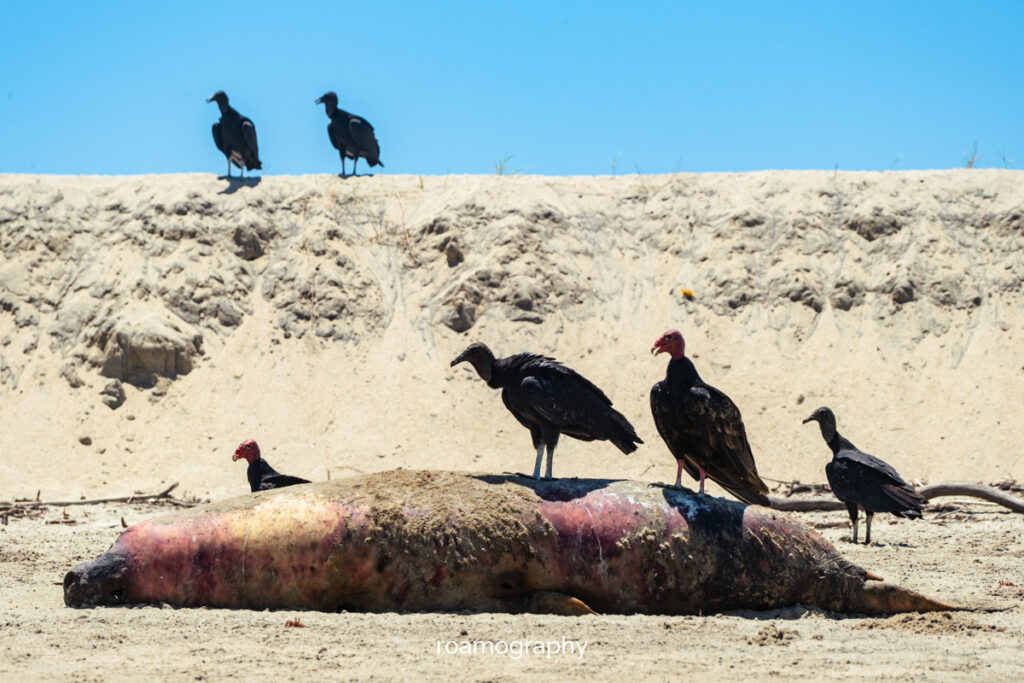
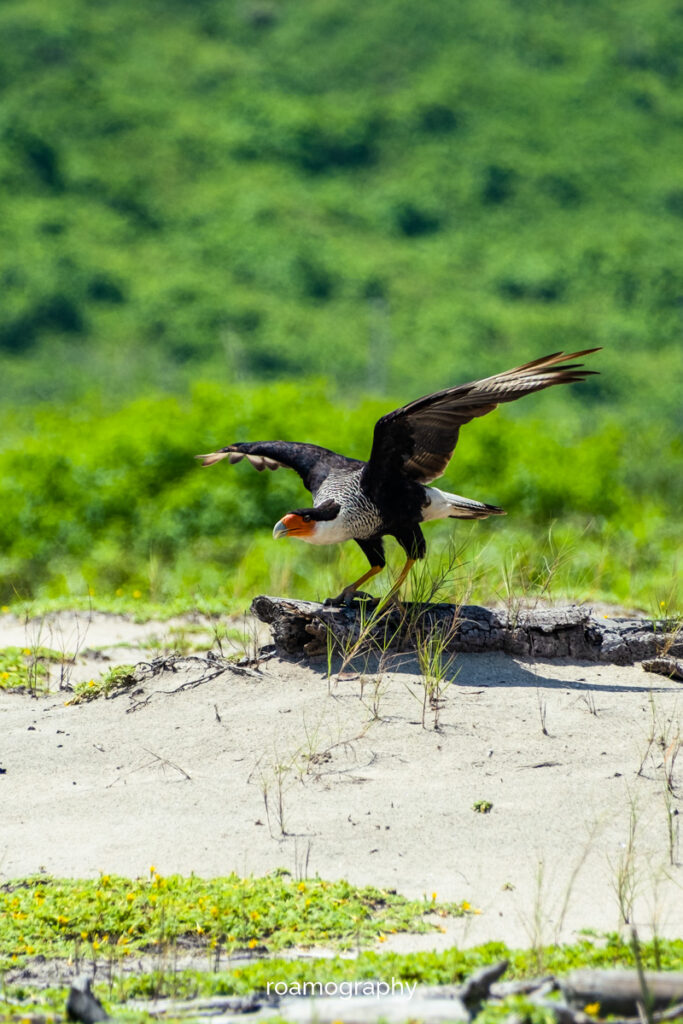

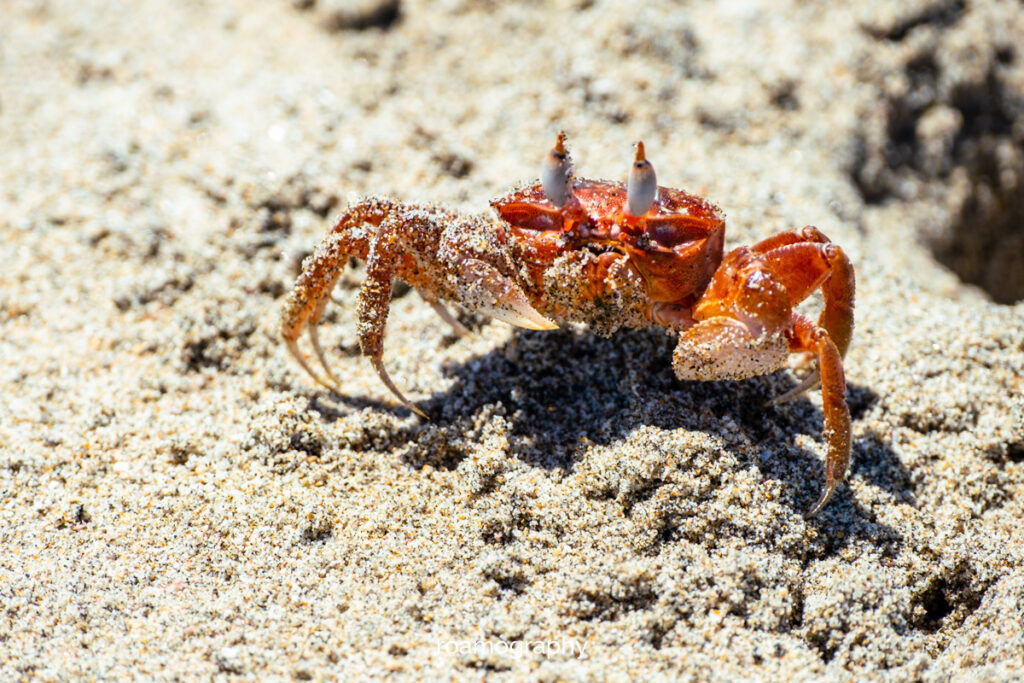
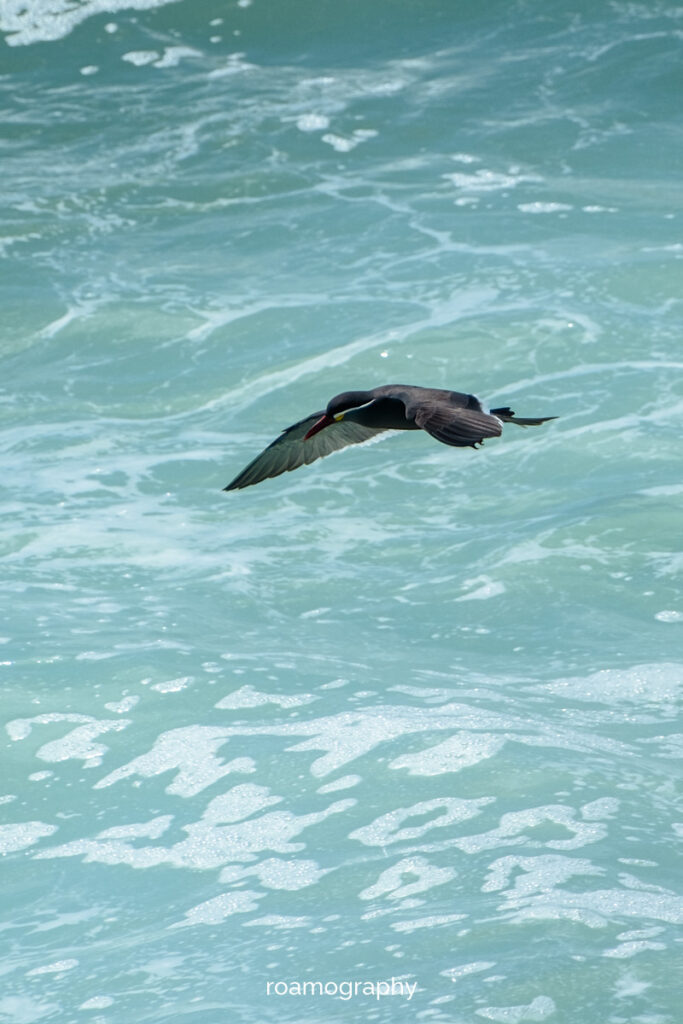
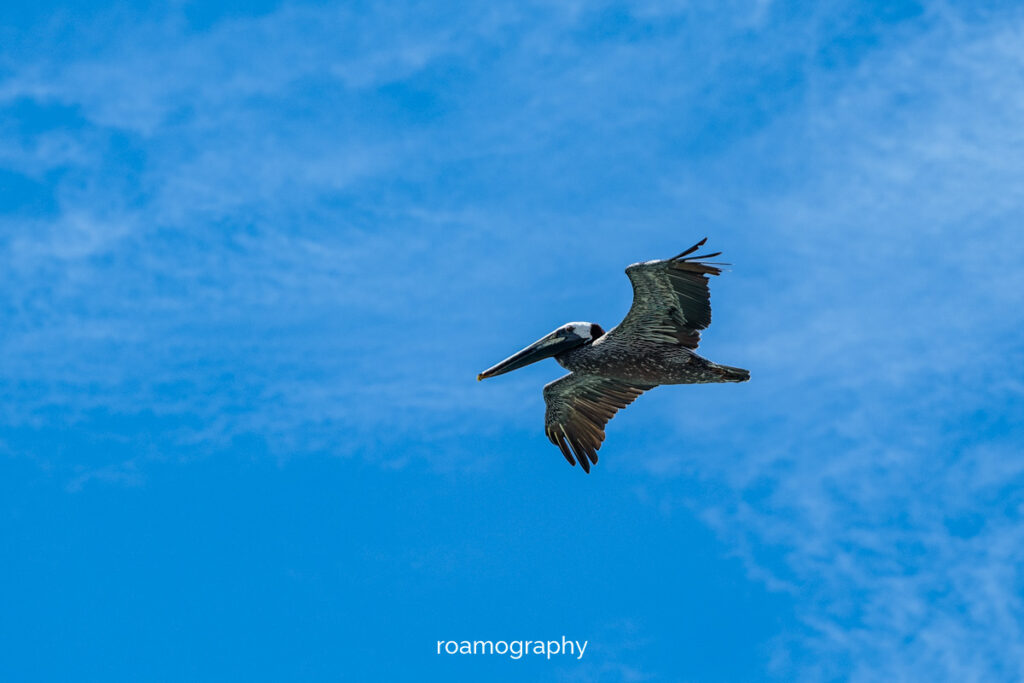
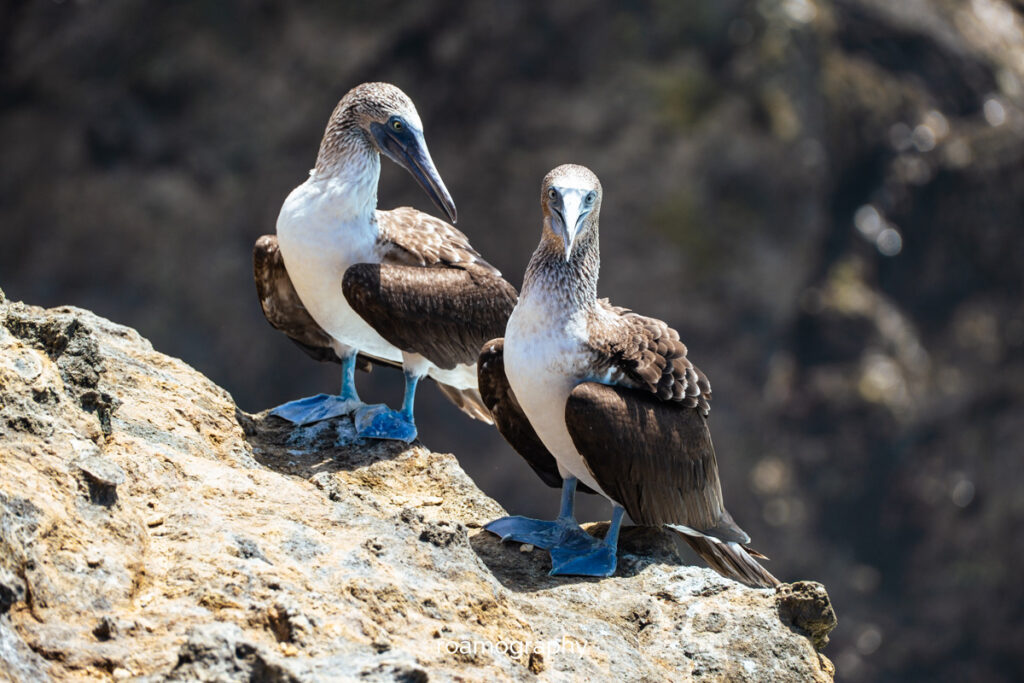
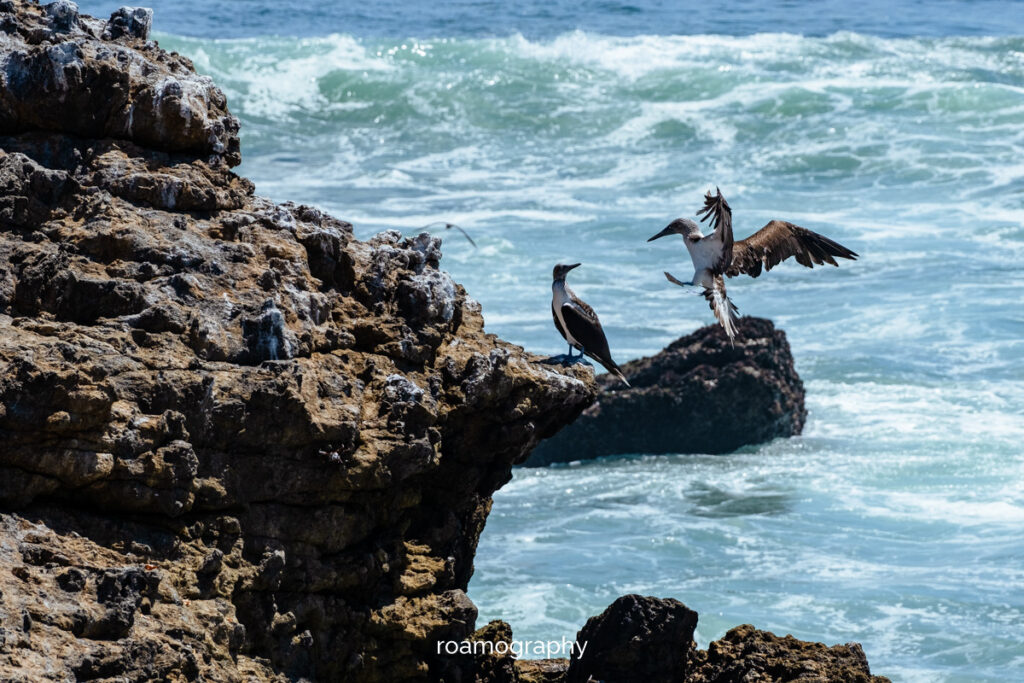
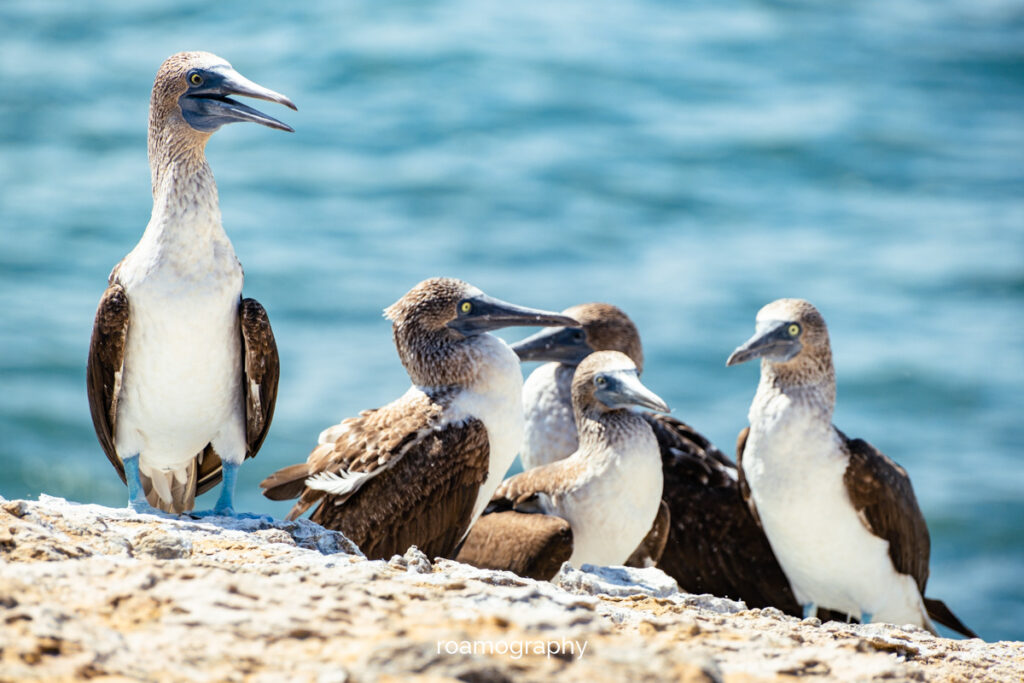
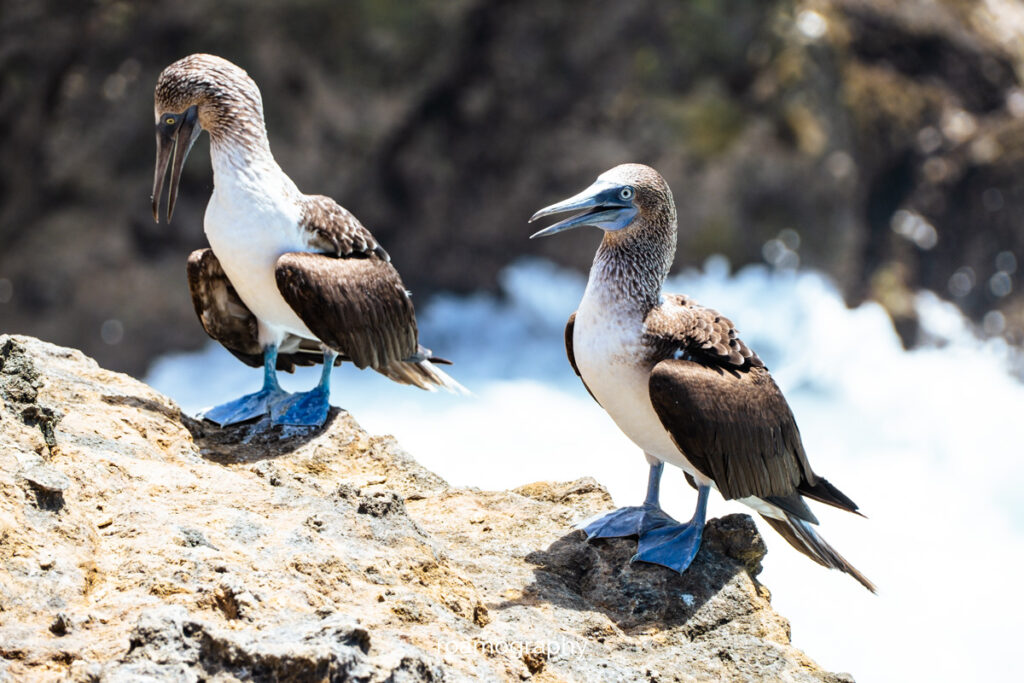
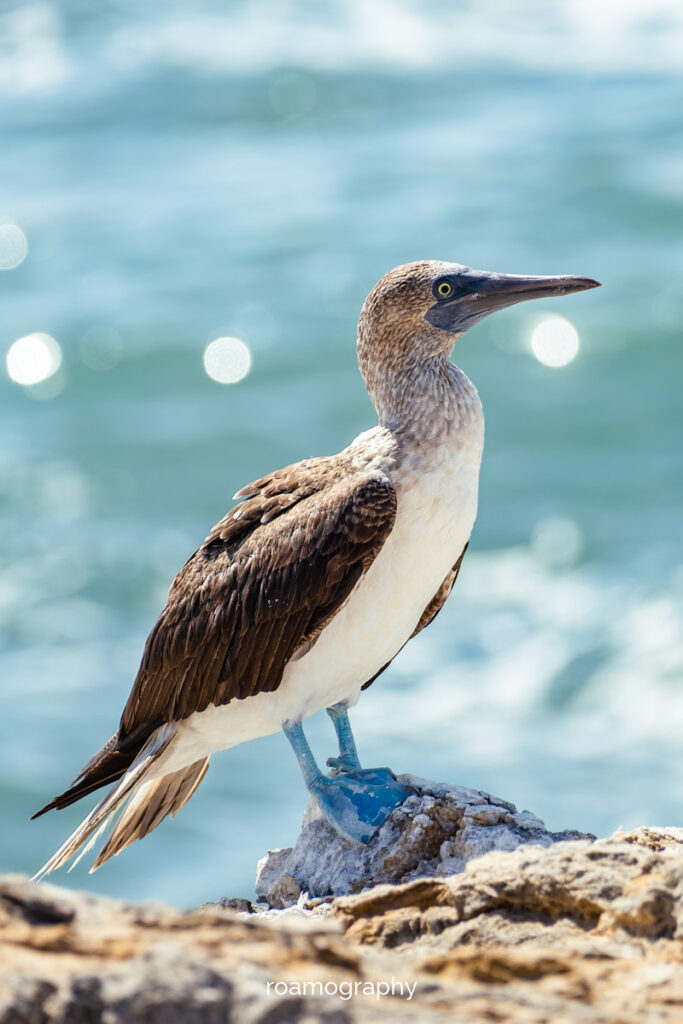

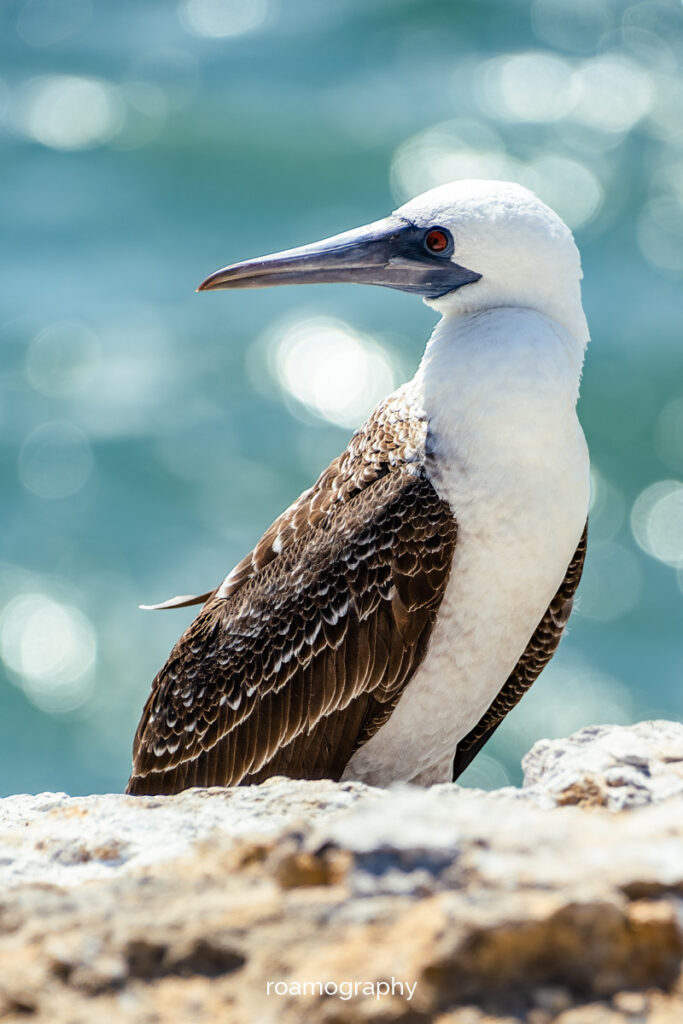
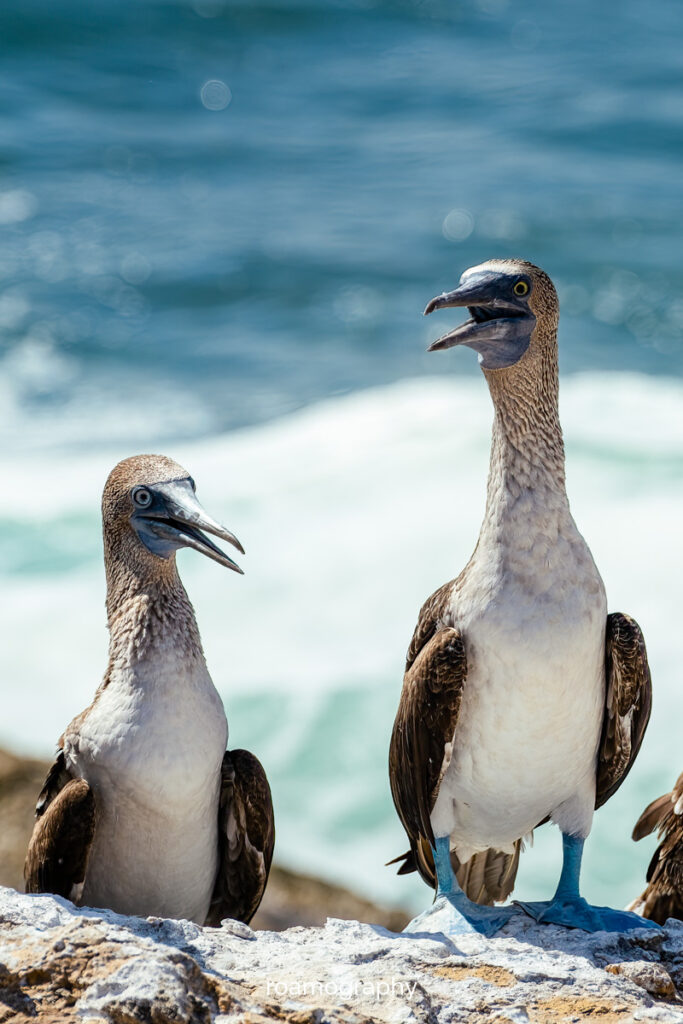
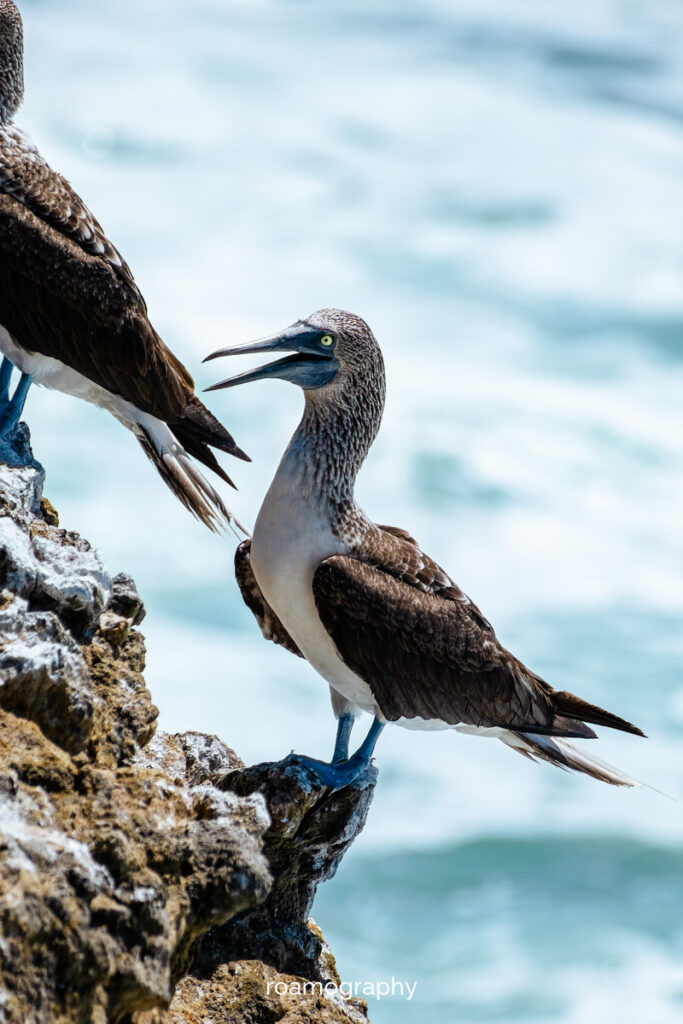
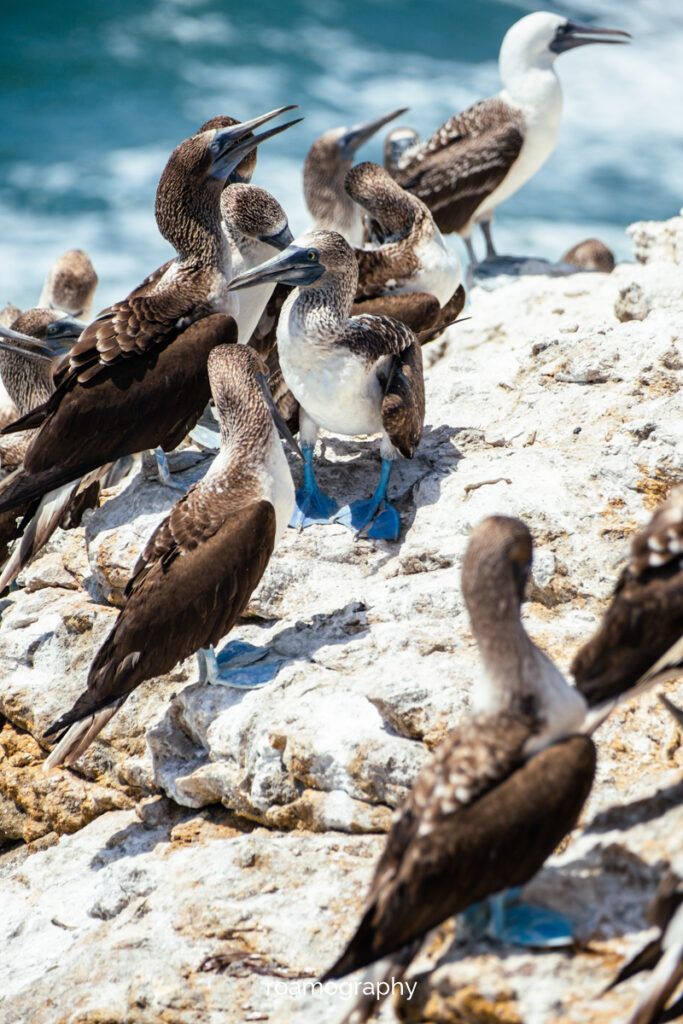
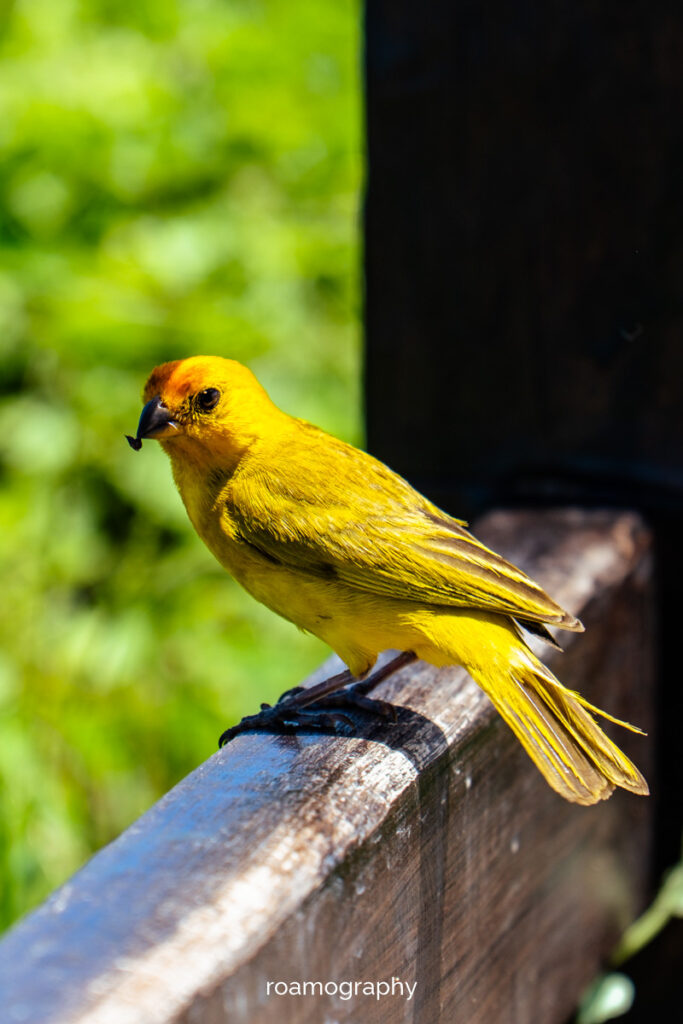
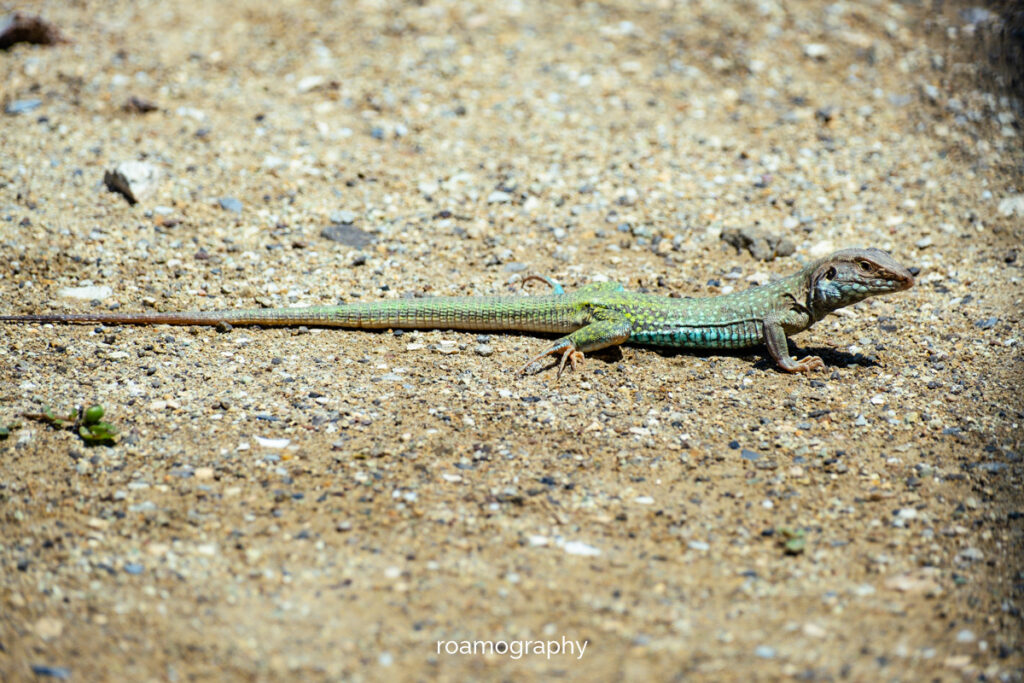
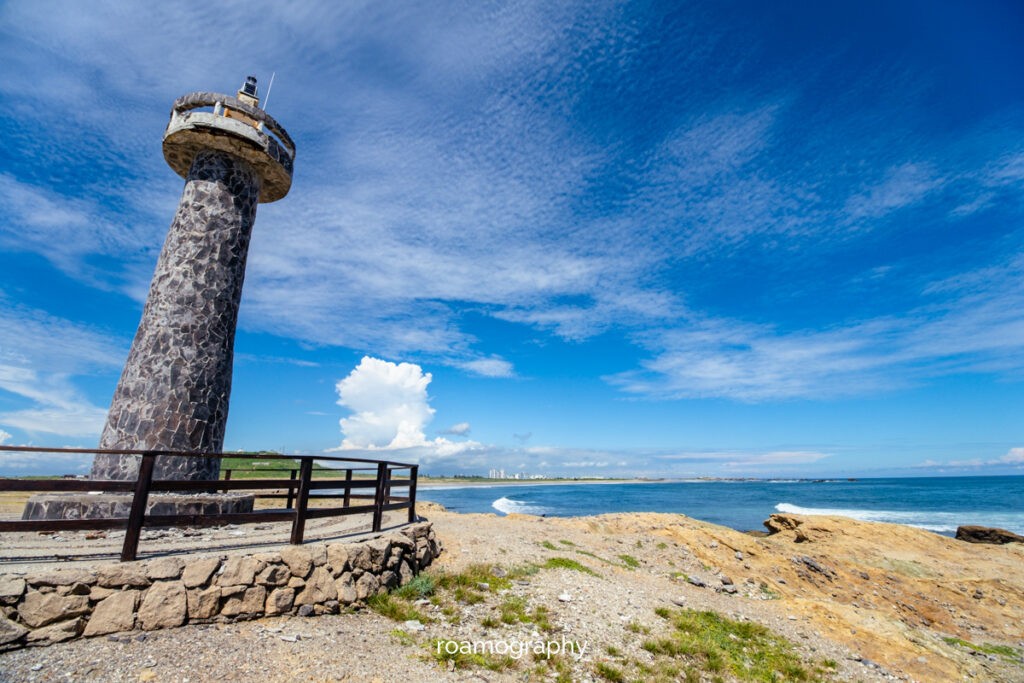
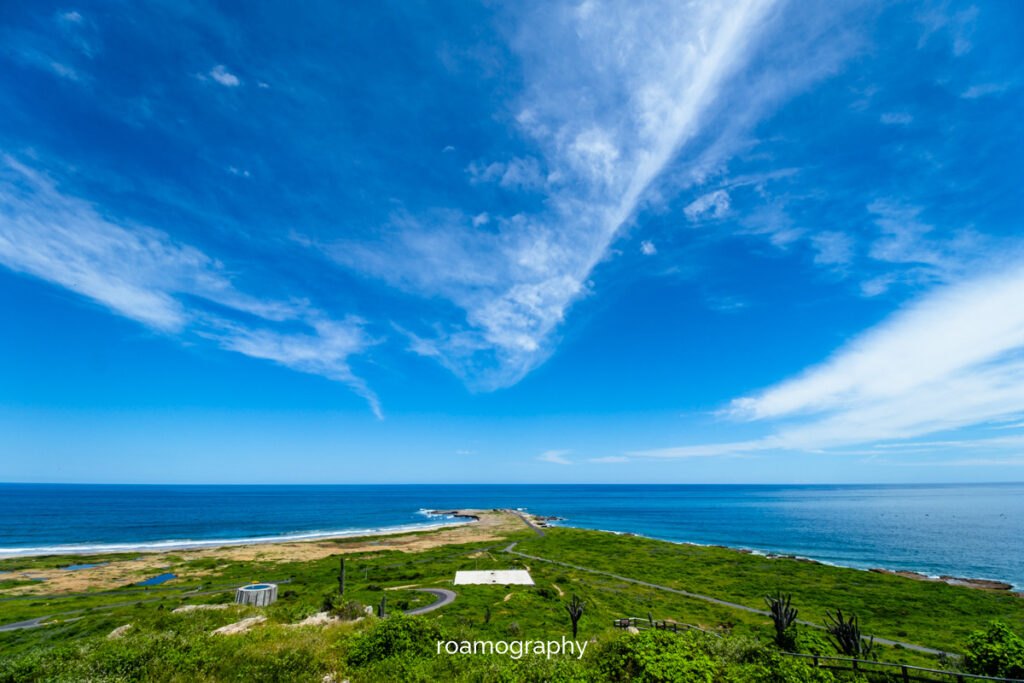
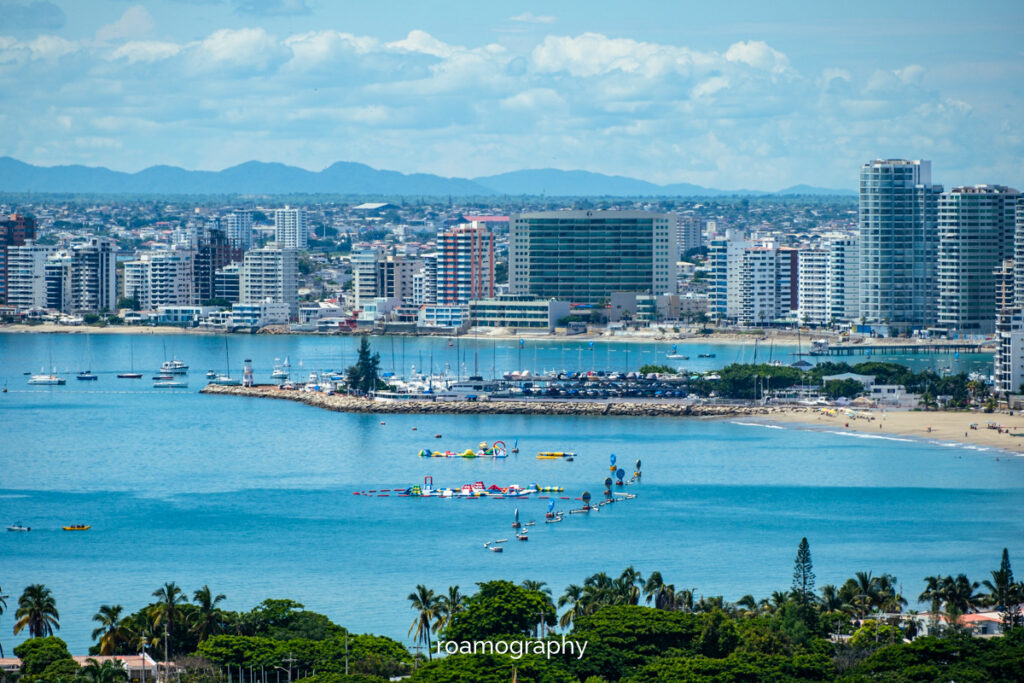
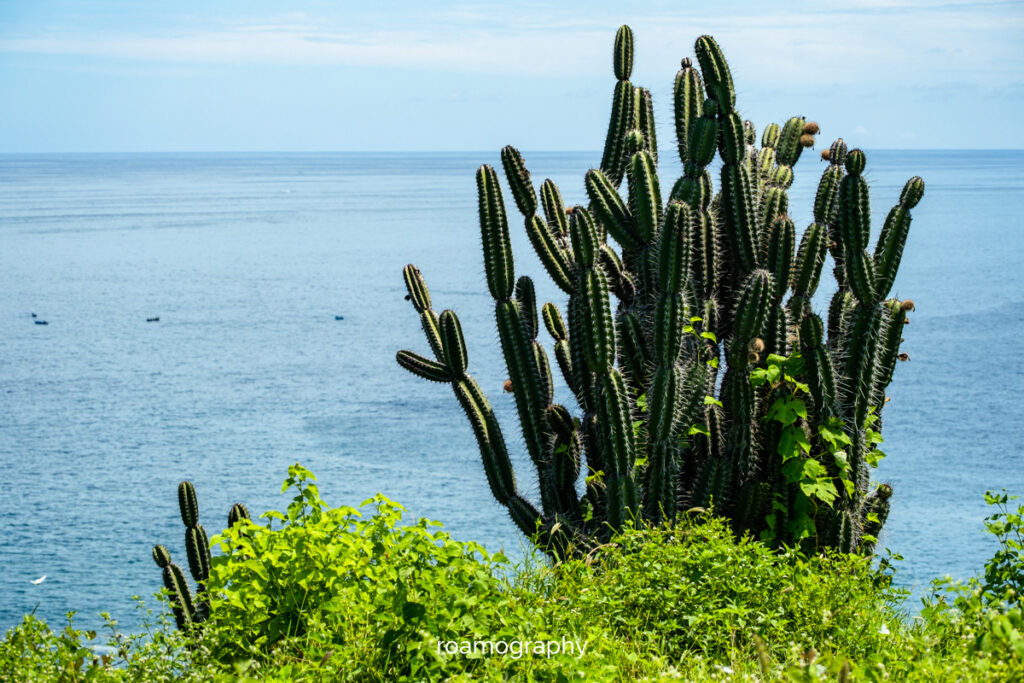
Salinas
Przesiadłszy się na dworcu w Guayaquil, docieramy do nadmorskiego miasteczka Salinas i lokujemy się w bardzo dyskretnie (czyt. wcale) afiszującym się zgrzebnym acz przyjaznym Bay House Hostel.
Plaże w samym Salinas nie powalają, po prostu są i tyle. Można tu za to znaleźć inne atrakcje: Muzeum Wielorybów (z sympatycznym Benem, właścicielem kolekcji i prawdziwym pasjonatem eksplorującym świat wielorybów od wielu, wielu lat), można wybrać się na cypel za miastem (w zarządzie armii, więc obowiązują pewne obostrzenia w odwiedzaniu tego zakątka), na którym mieszczą się długie, puste pasy piasku, a fale układają się w bardzo surfingowe kształty. Ale przenajważnieszymi miejscami są tu z całą pewnością: La Lobería, kawałek skały z rozkosznie przewalającymi się lwami morskimi, a także, z drugiej strony cypla, okresowo przesiadująca tu kolonia głuptaków – wcale nie trzeba lecieć na drogie Galapagos, żeby podziwiać te przeuroczo człapiące niebieskostope ptaszyska! Niektóre z nich przesiadują również na skale powyżej lwów morskich, choć tam akurat możemy je obserwować z o wiele większej odległości.
We move further north, scoring an amazing couchsurfing overnight stay at Puerto Rico: the owner is not there (we only communicate with him remotely) and the entire house overlooking the ocean is at our disposal!
It is no worse in Puerto Lopez: we meet a Ukrainian-USan couple who provide us with a very neat apartment where we freshen up and set off to explore this seaside town. The best time to go to the beach here is during the golden hour of fishing boats’ return to the shore – armies of birds, including frigate birds and pelicans, flock here during unloading, all hoping to steal a tasty fishy bit. A very interesting show indeed.
From Puerto Lopez we also make a foray to Frailes beach (which is part of the reserve), a beautiful stone and sand arch with relatively calm waves for this part of the world and a very reasonable number of beachgoers. On the way to Frailes we pass a couple of other picturesque beaches where we encounter a very impressive iguana, a couple of vultures and an injured booby, which we inform the park rangers about and pray that they will be willing to pass the information on.


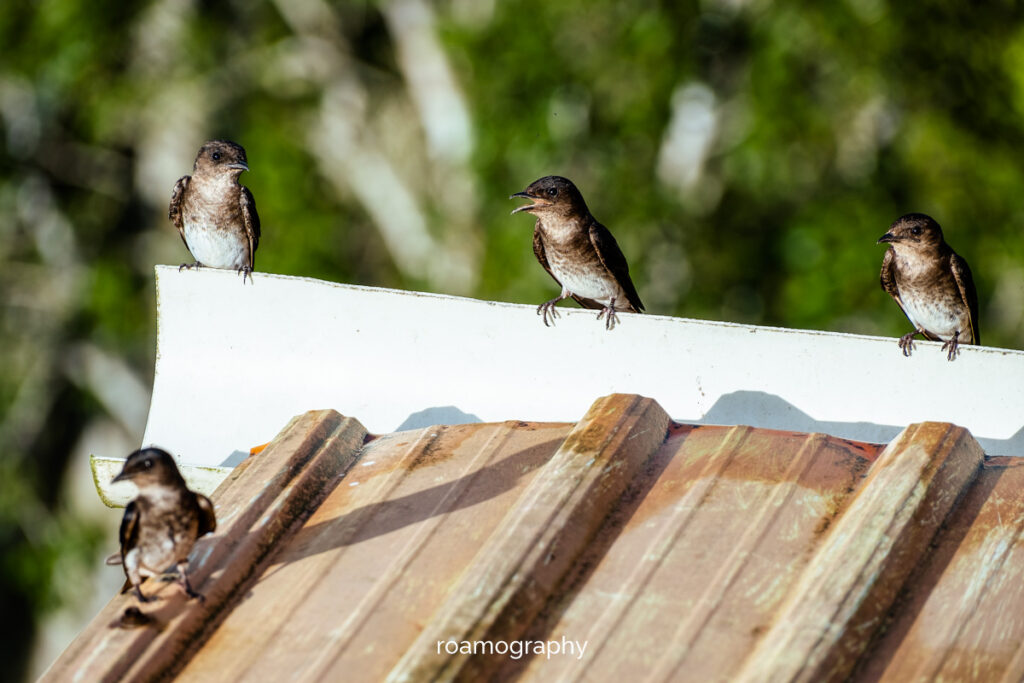
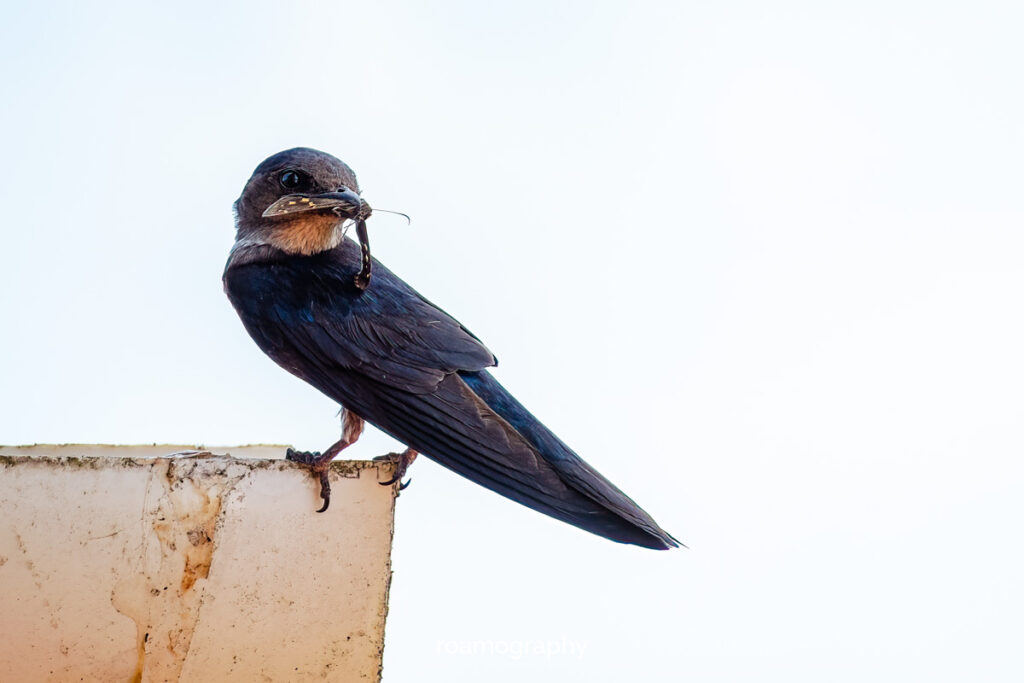
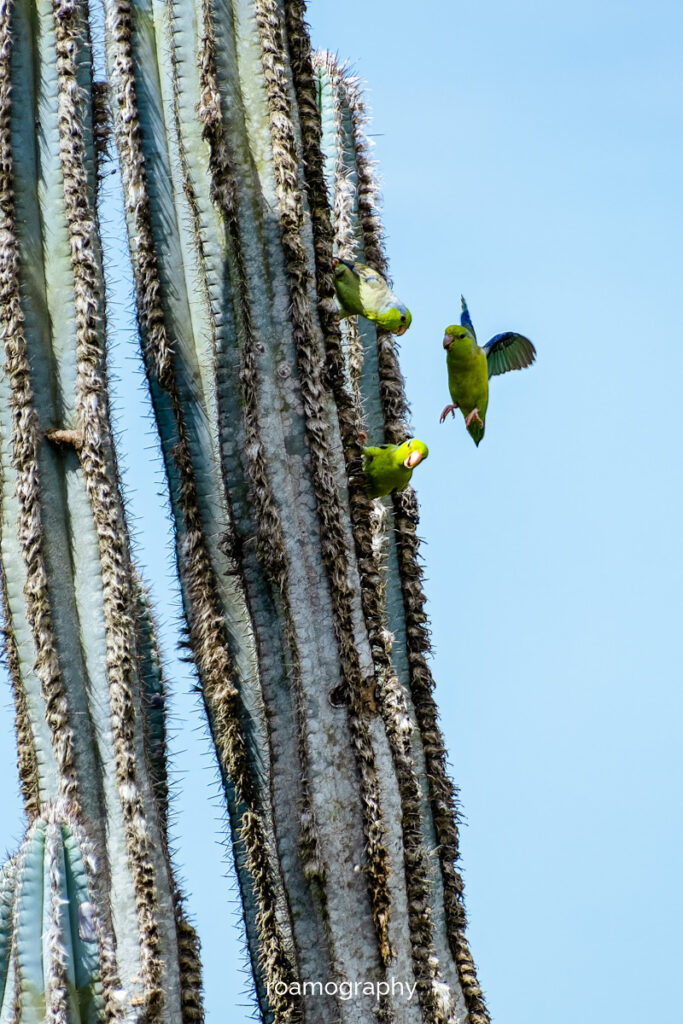
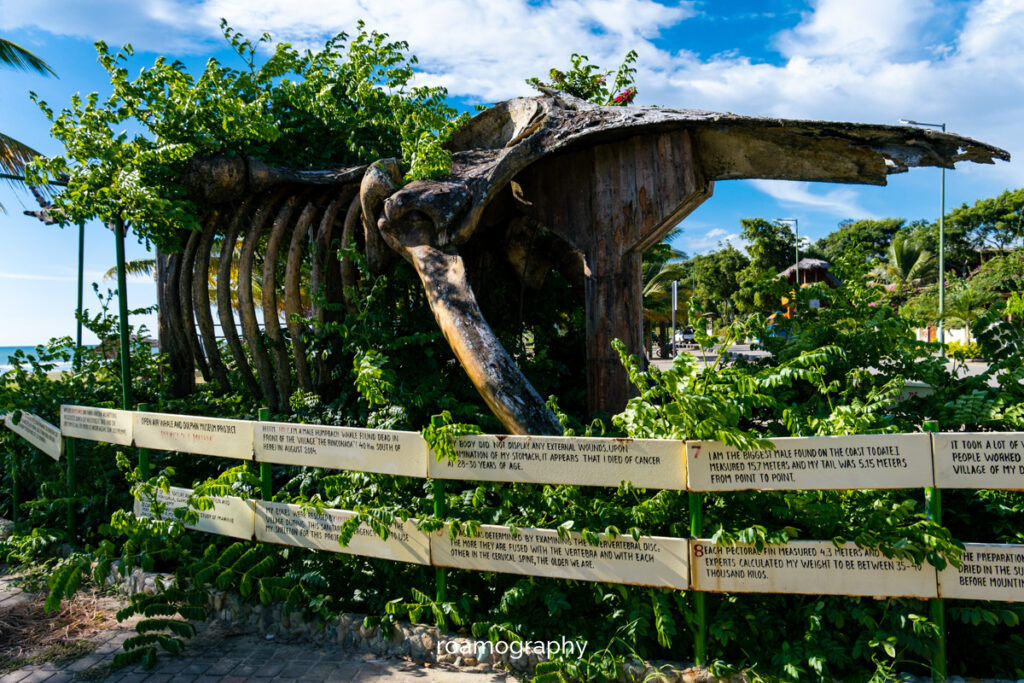
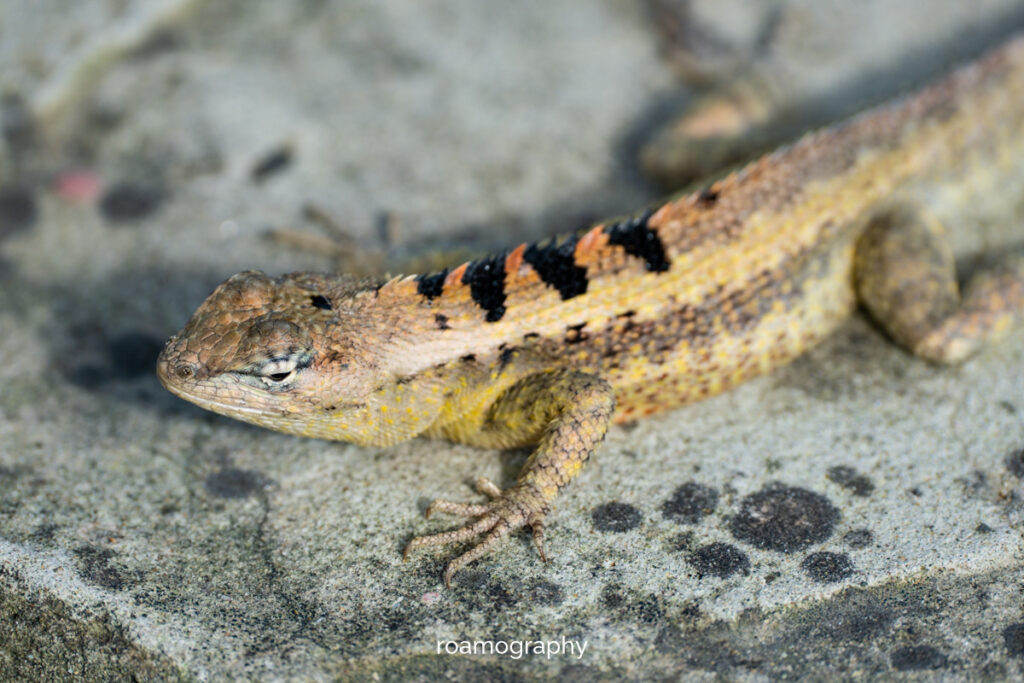
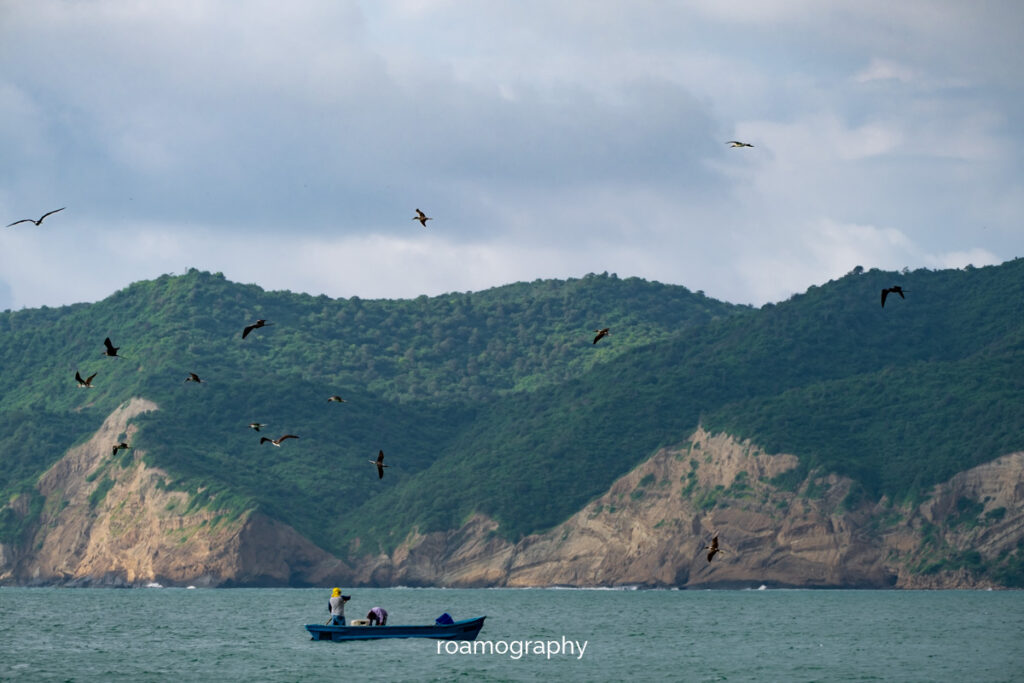
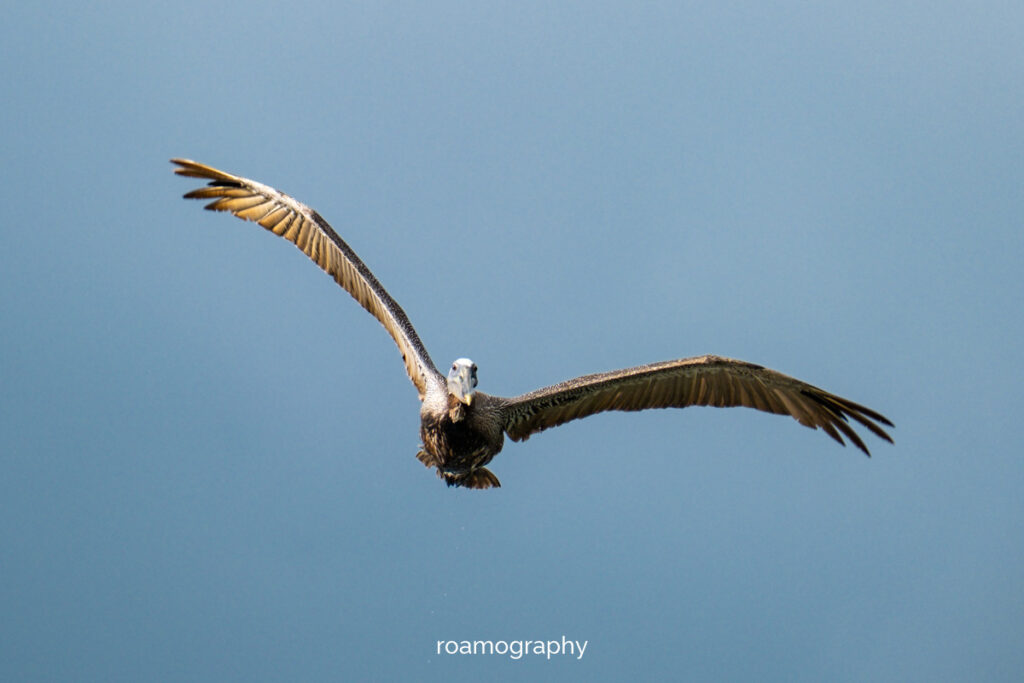
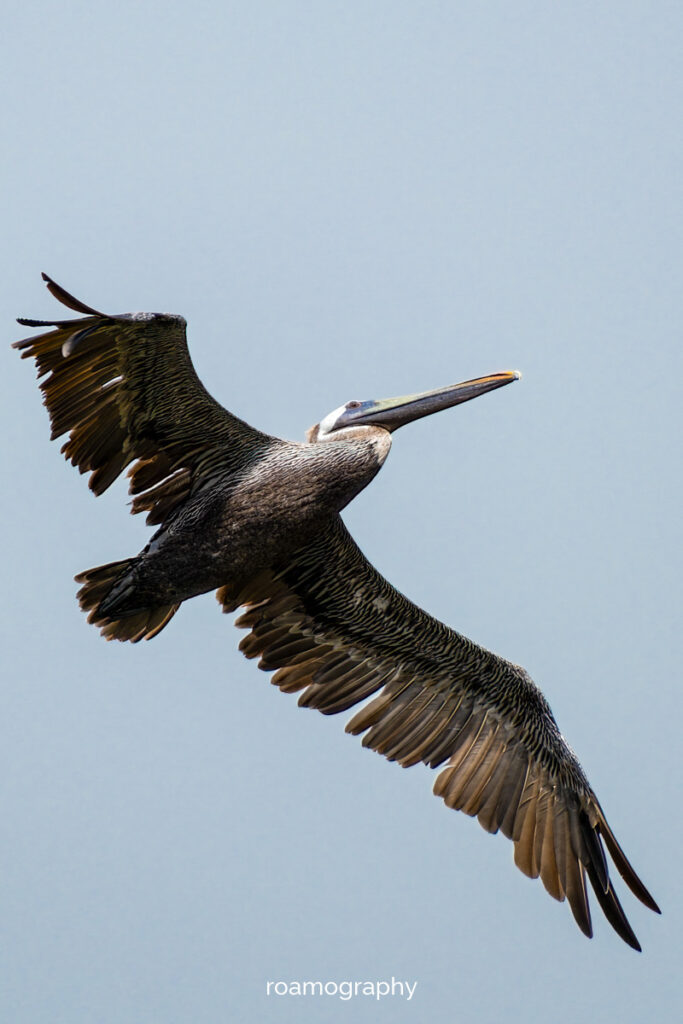
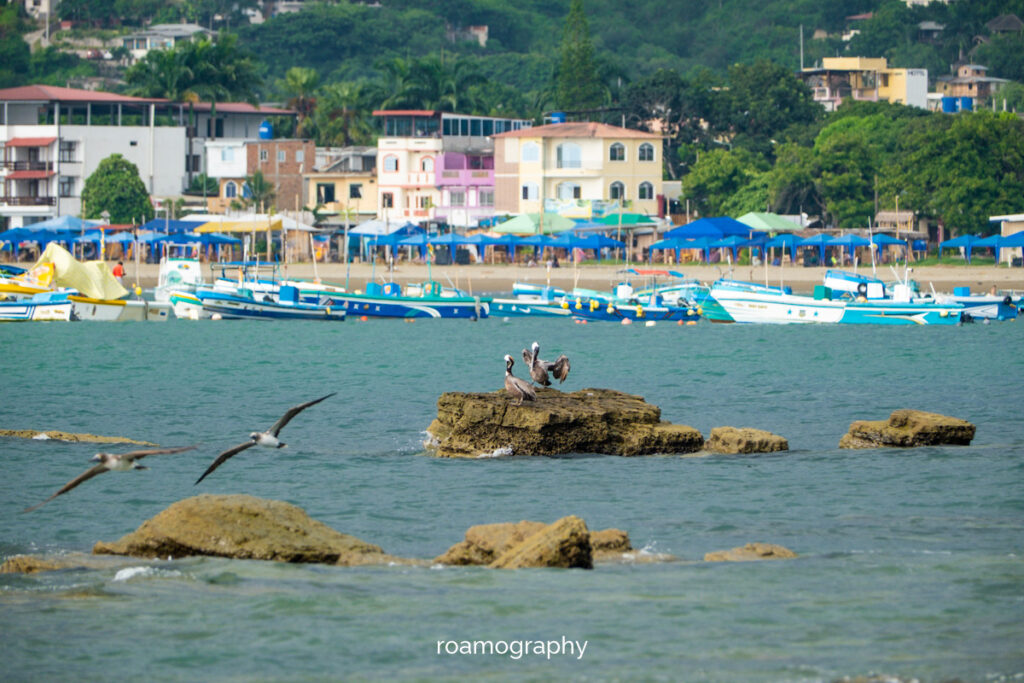

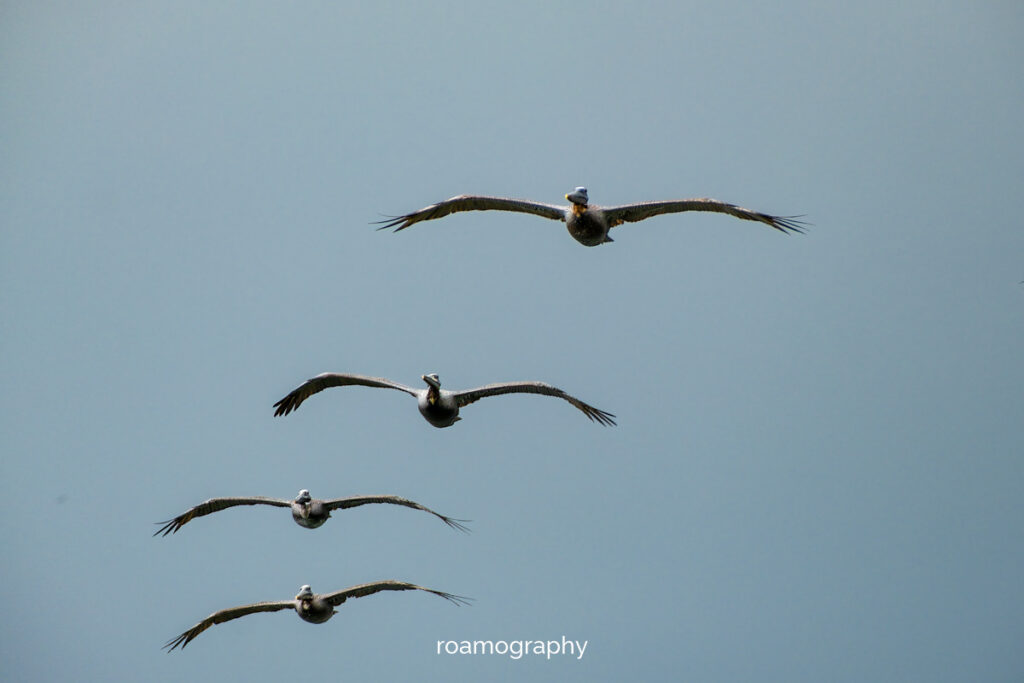
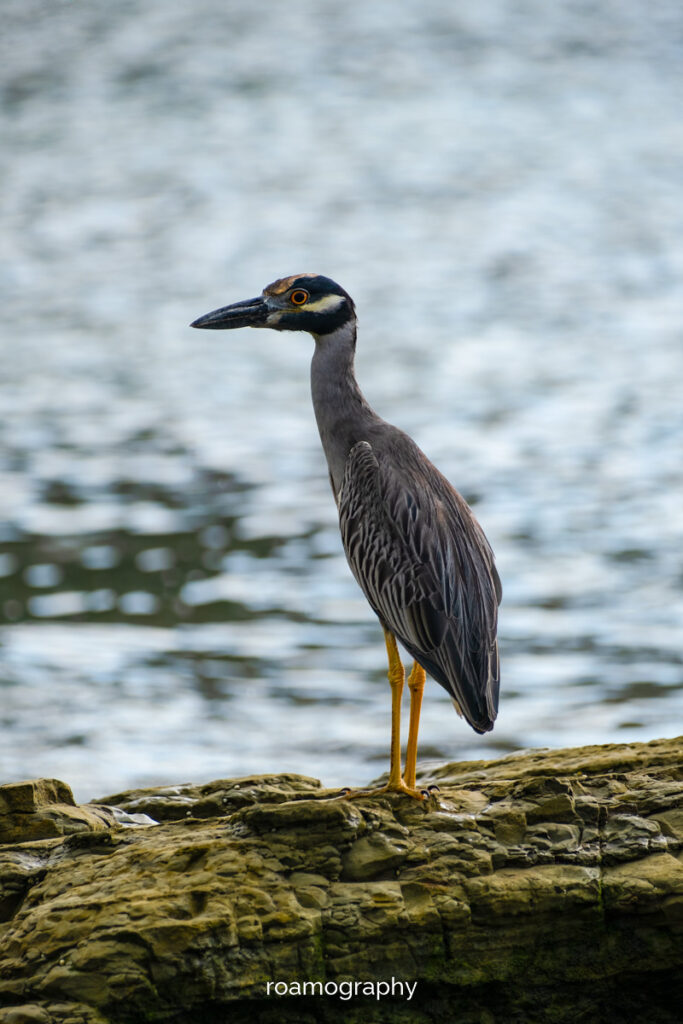
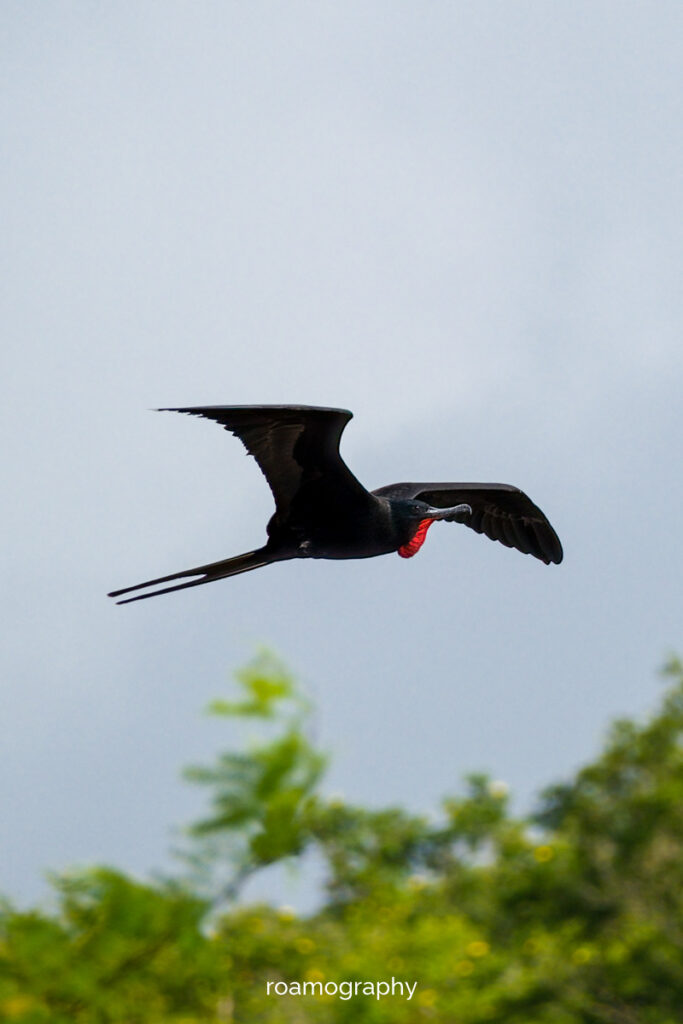

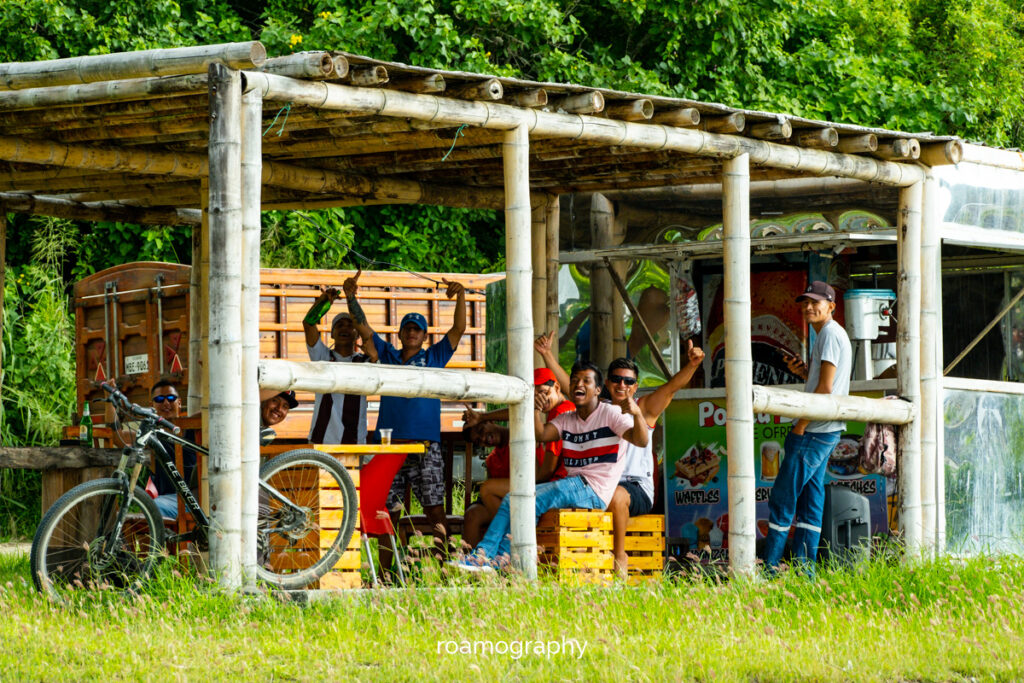

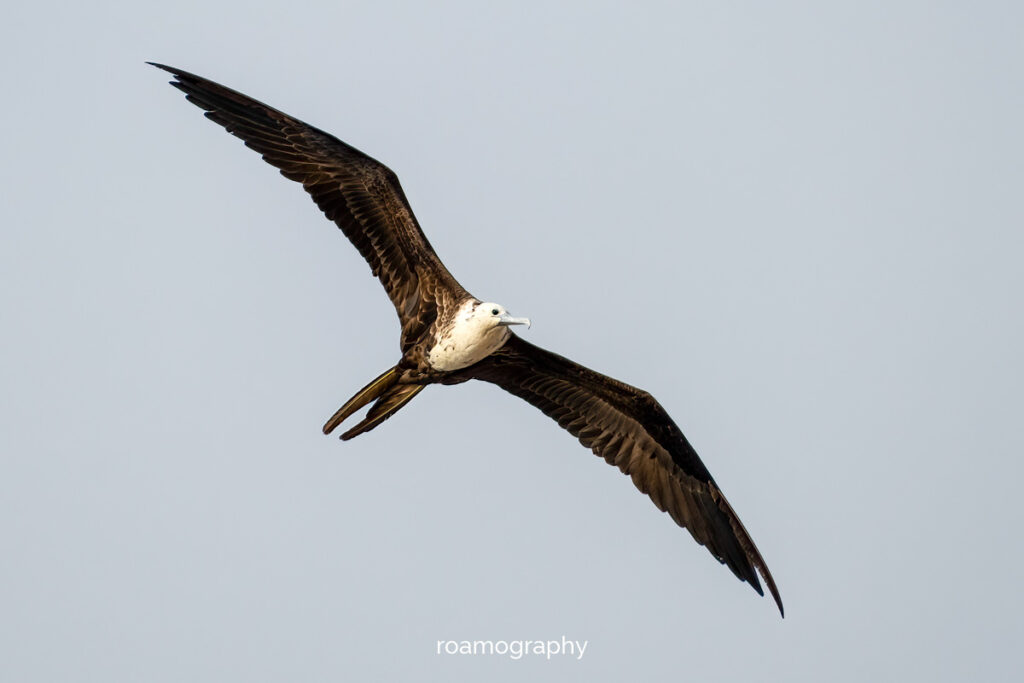
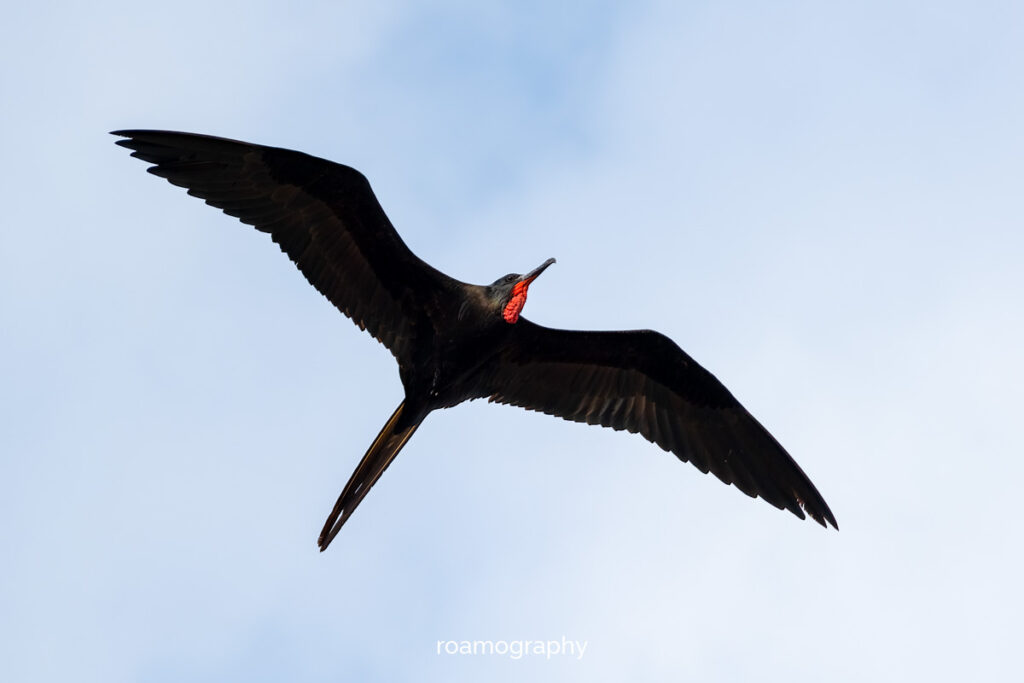
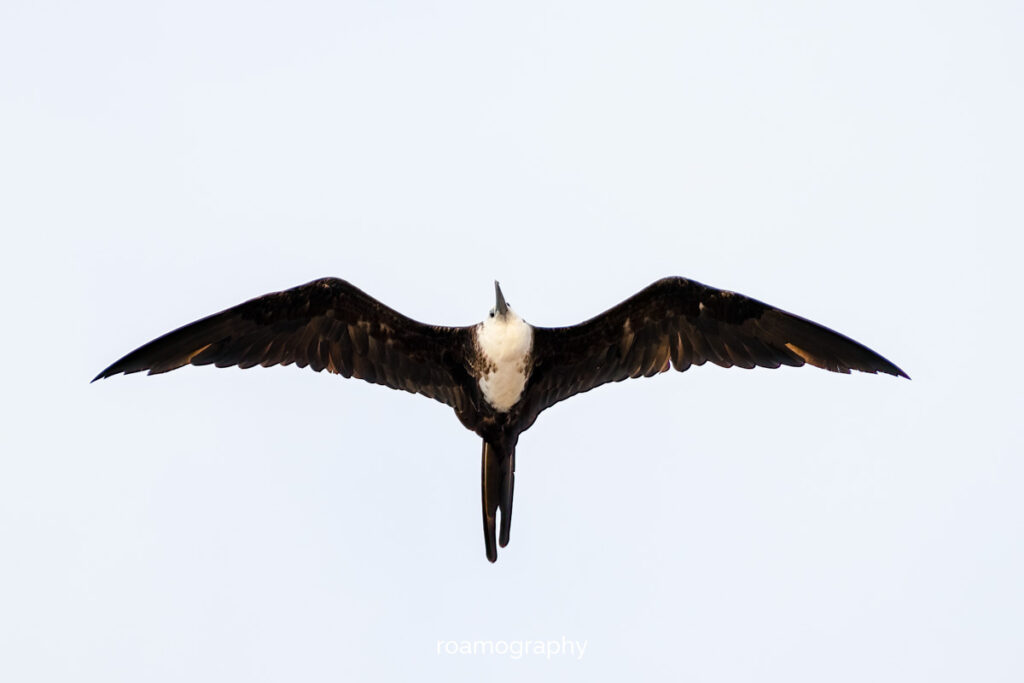
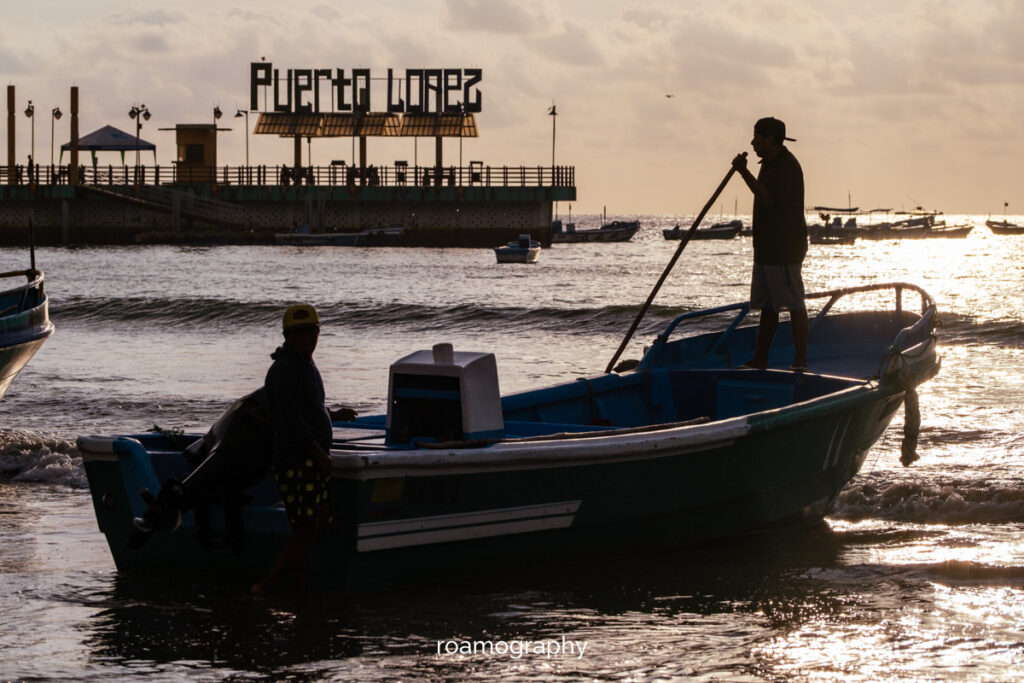
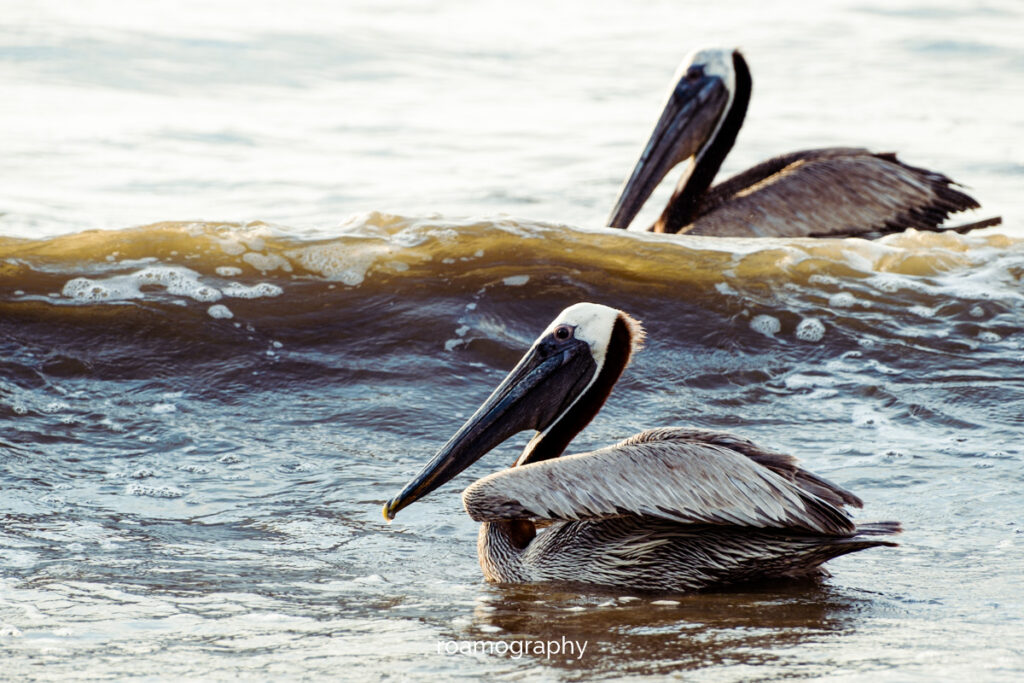

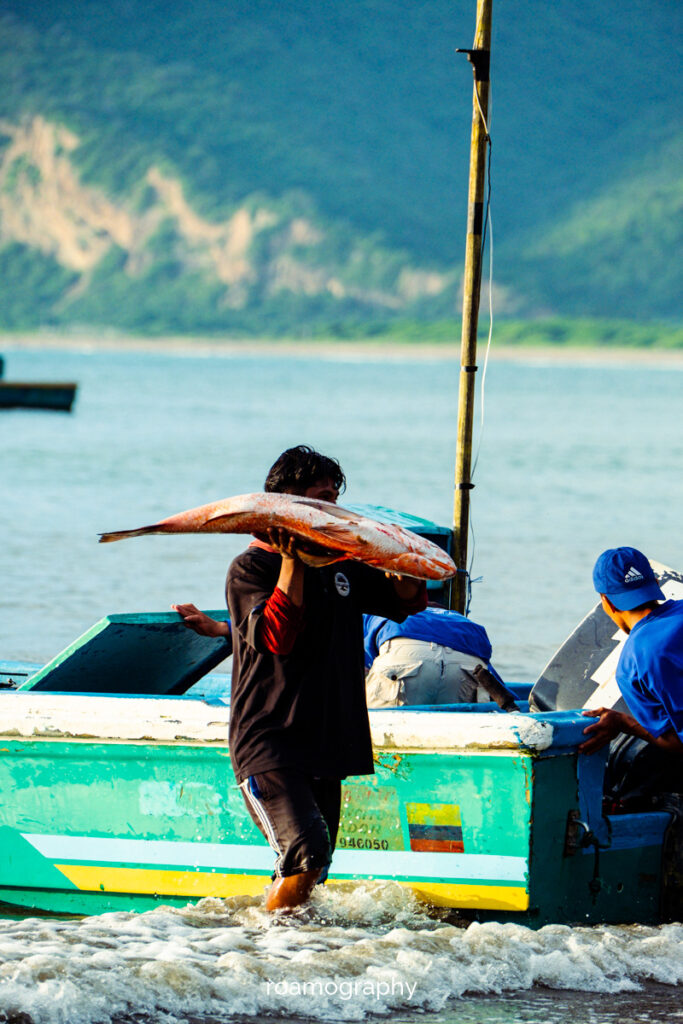


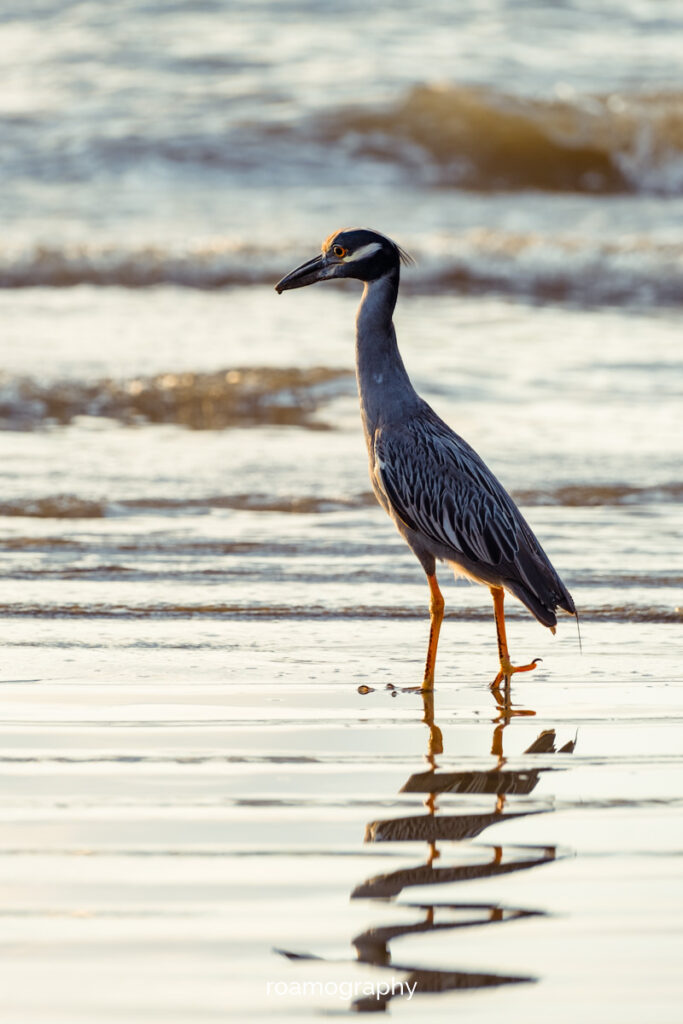
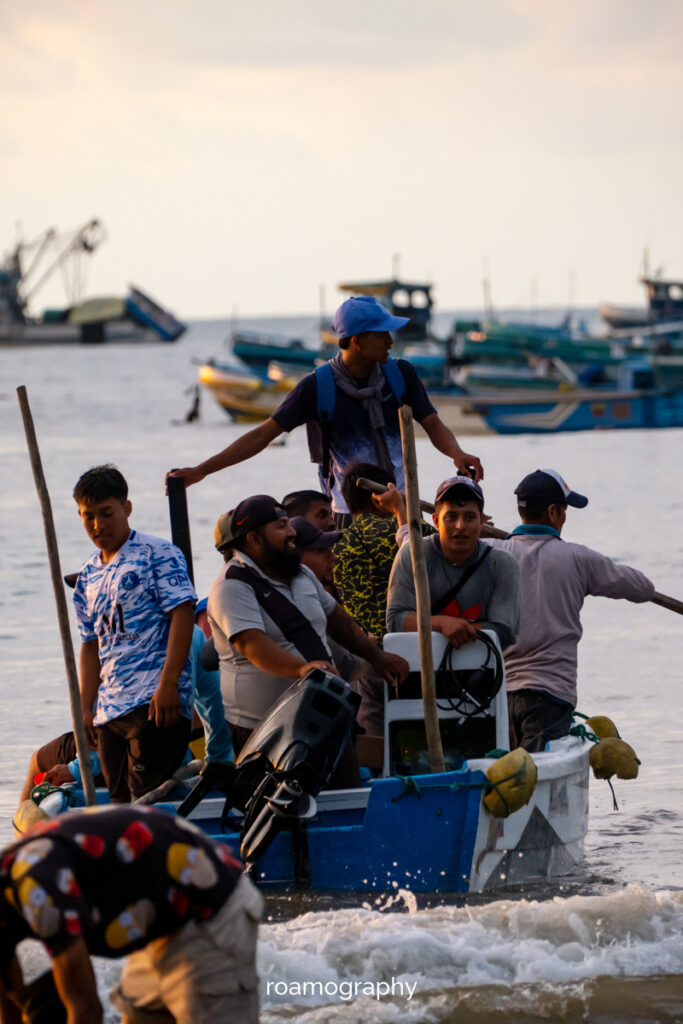

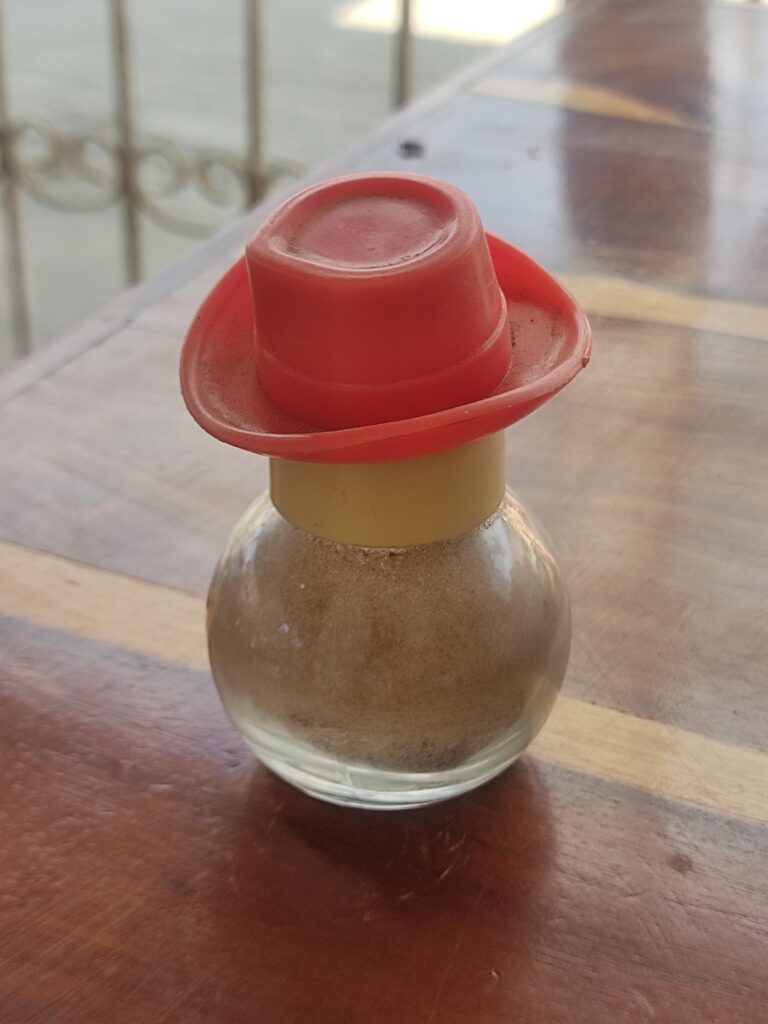


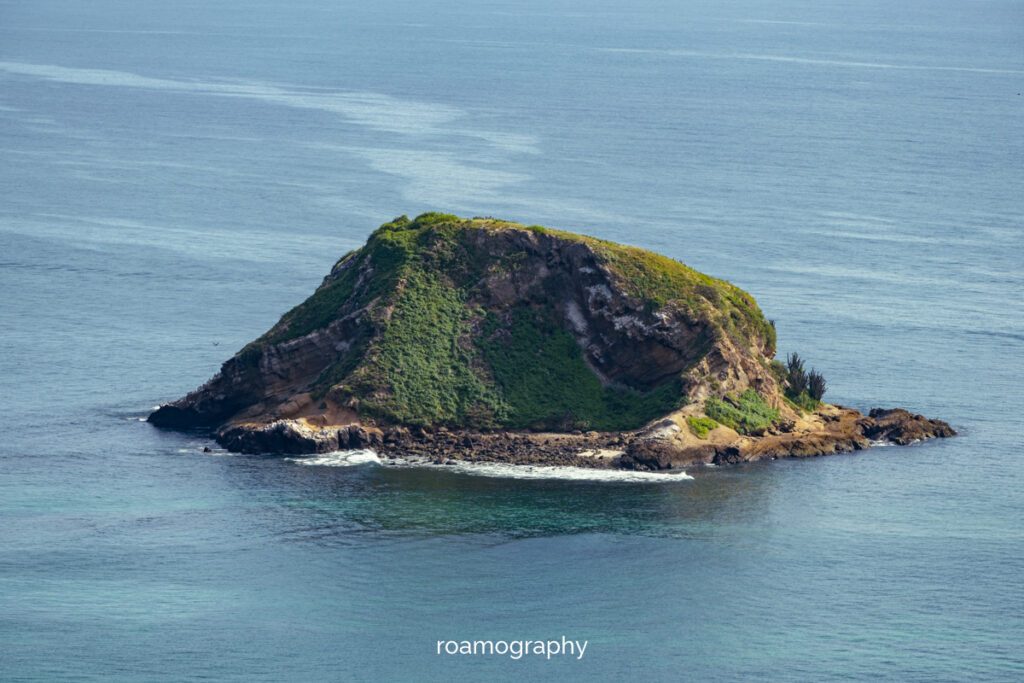
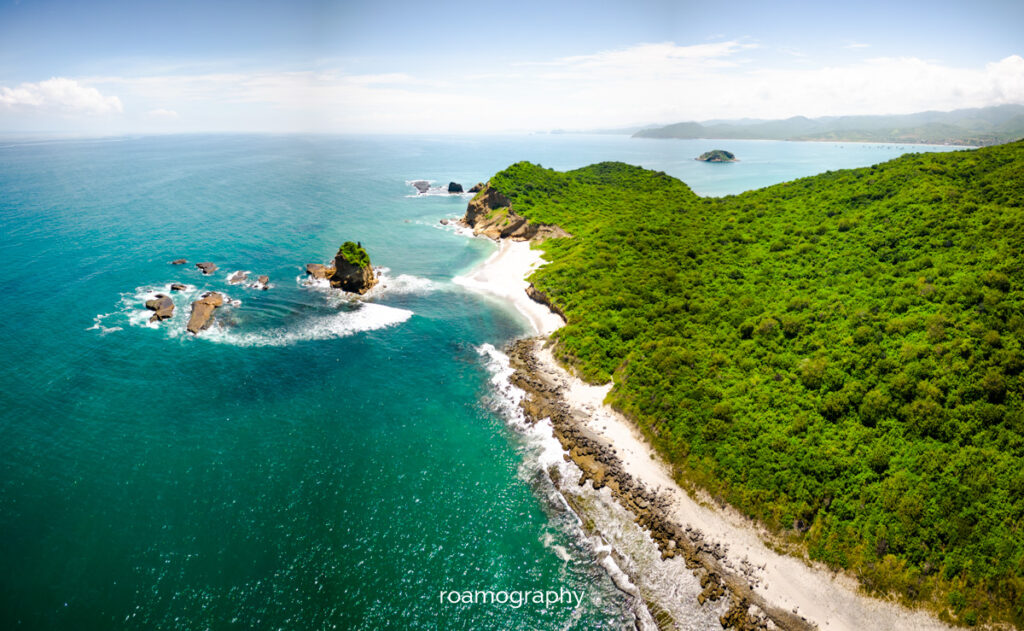
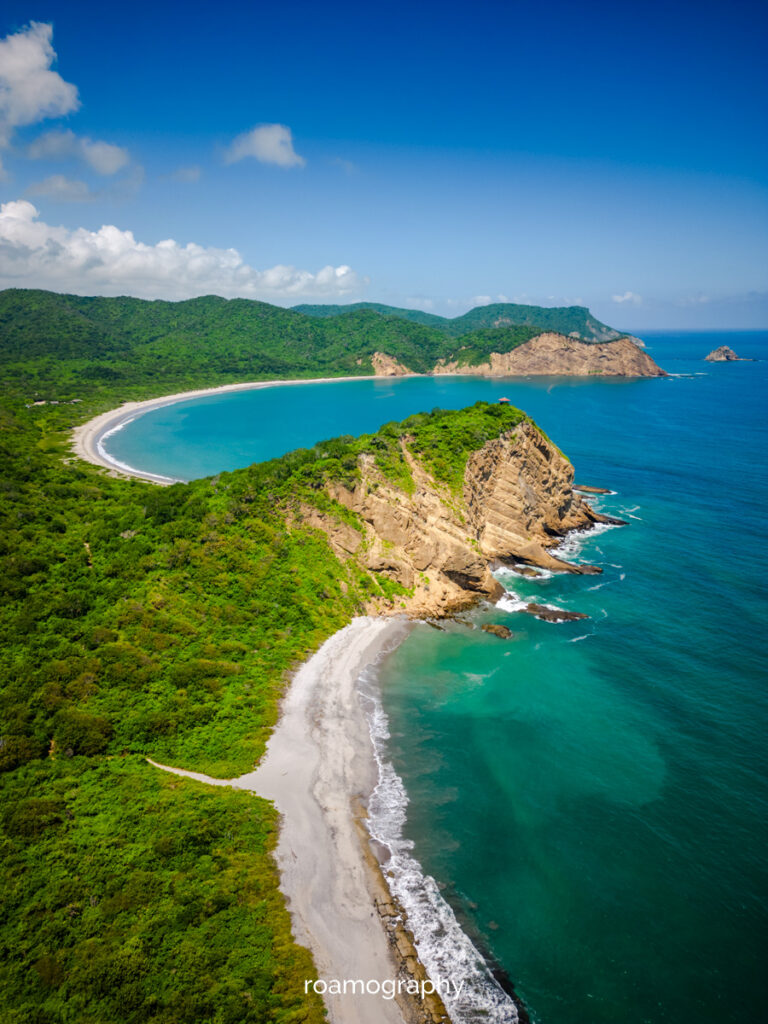
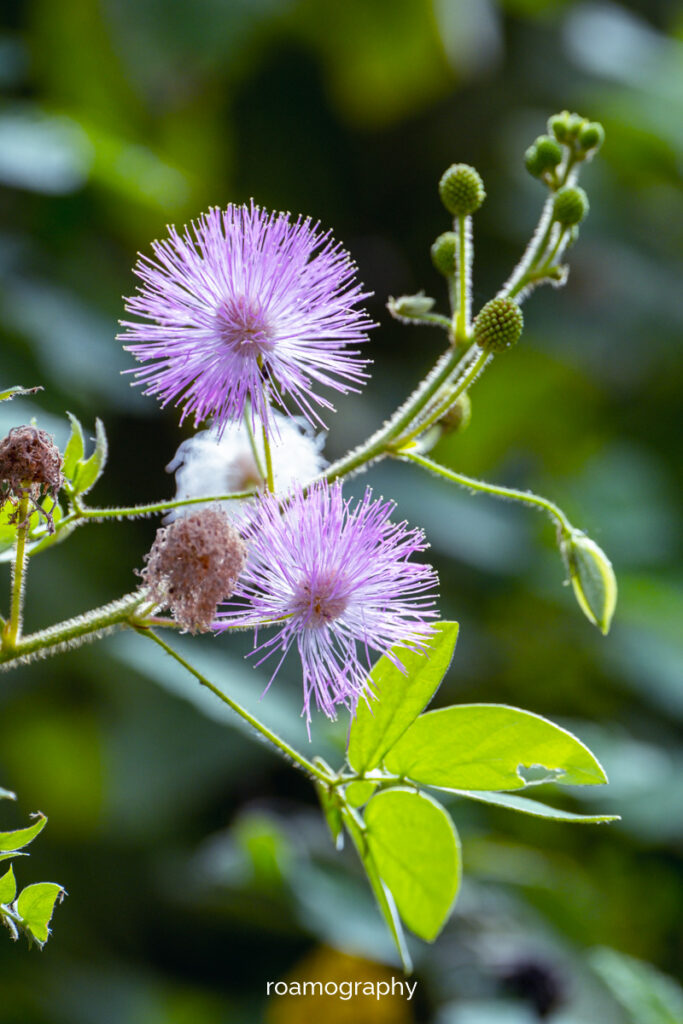
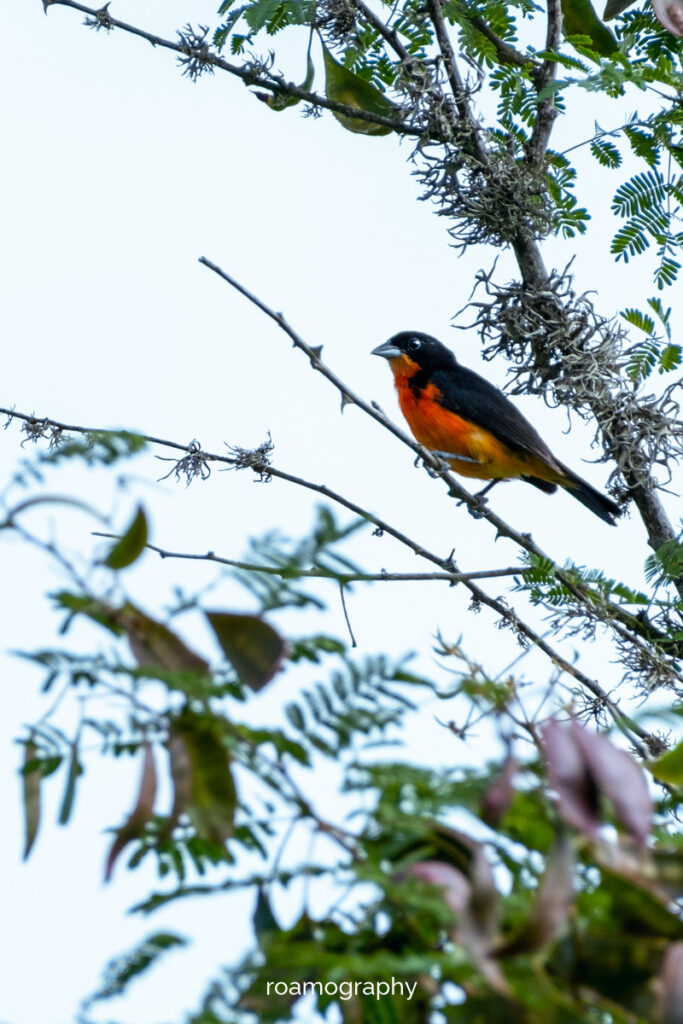
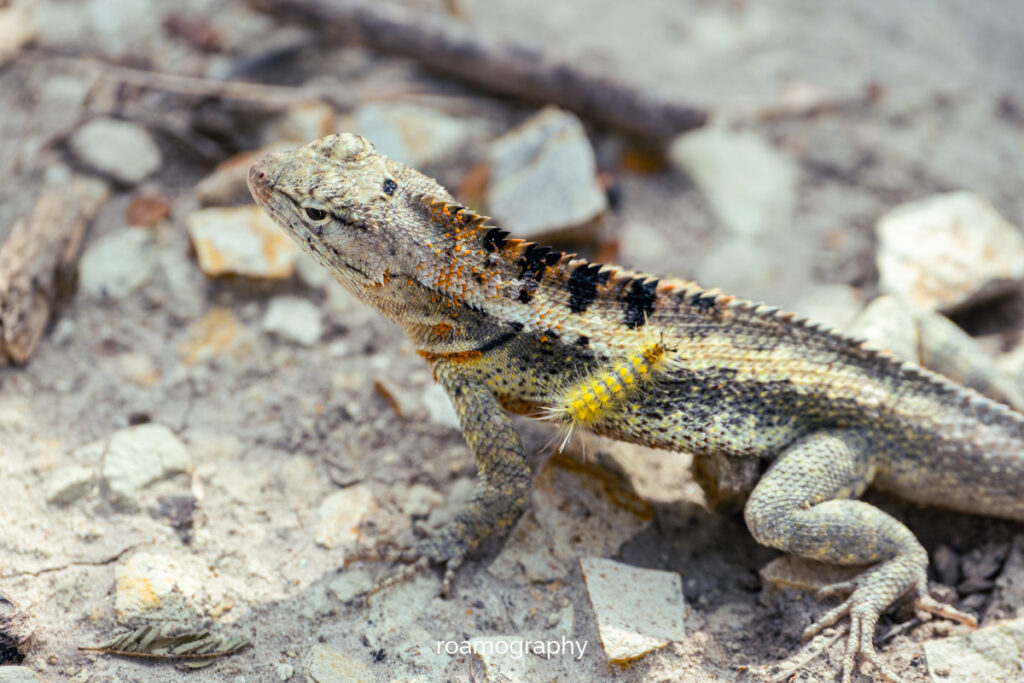


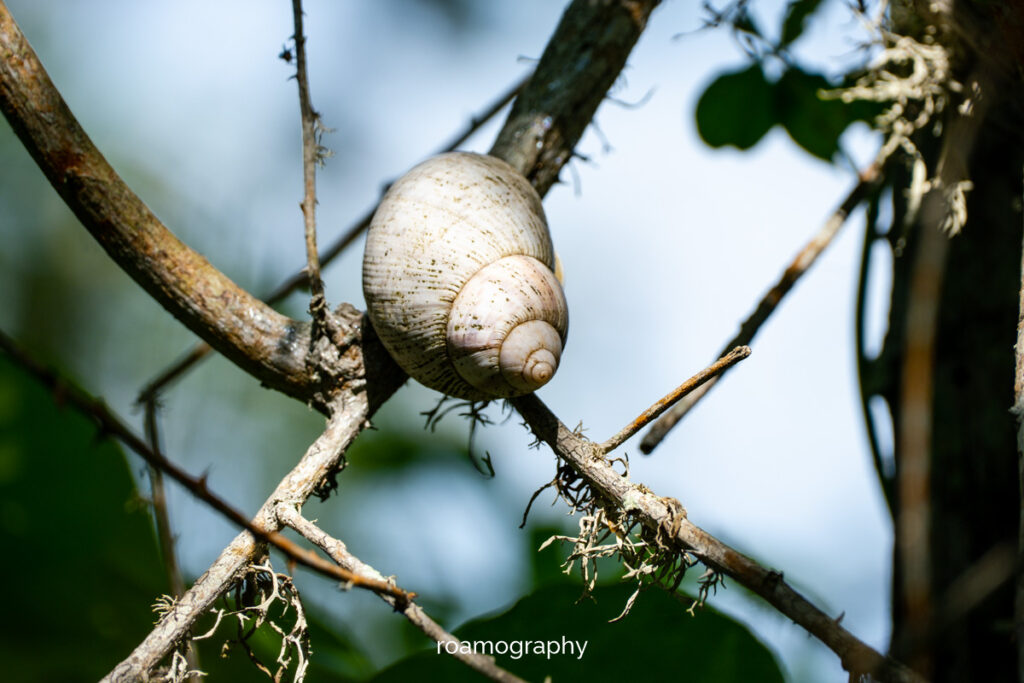
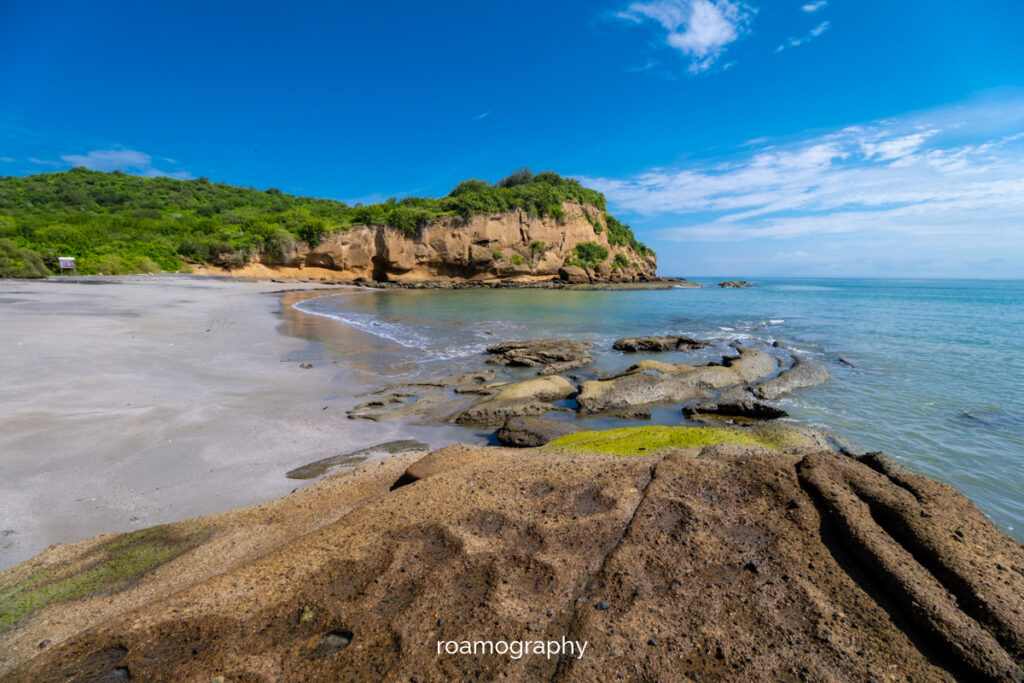

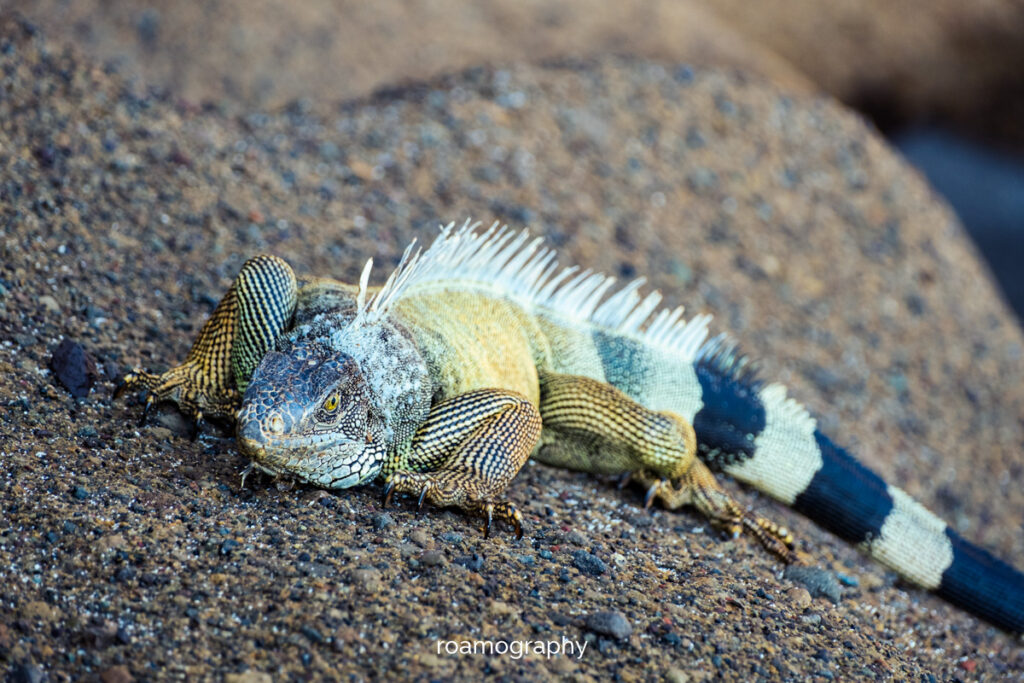
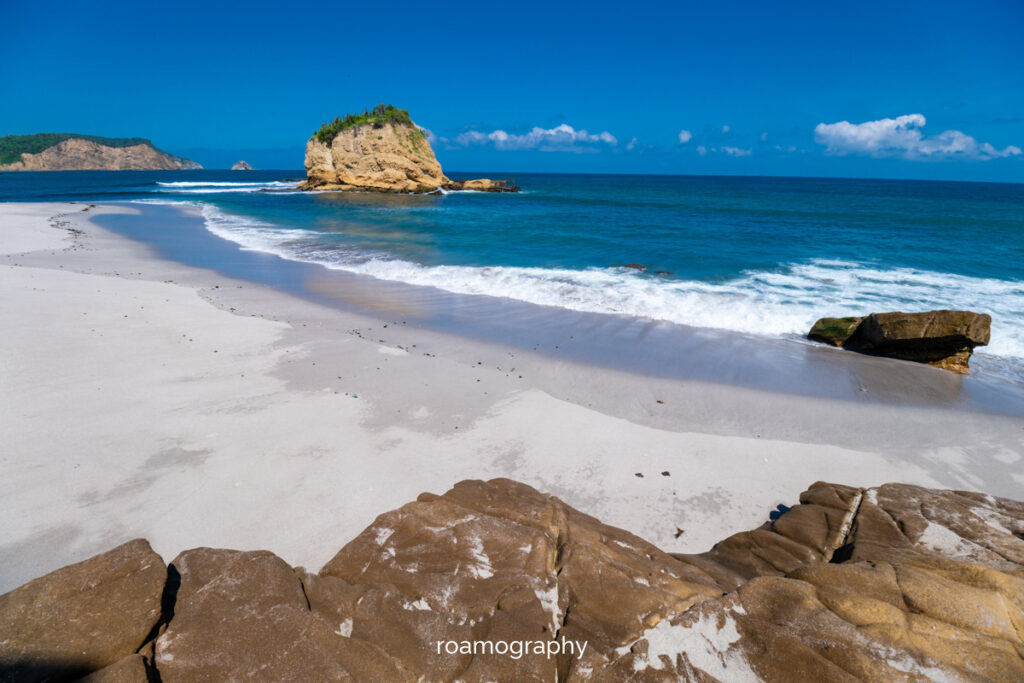
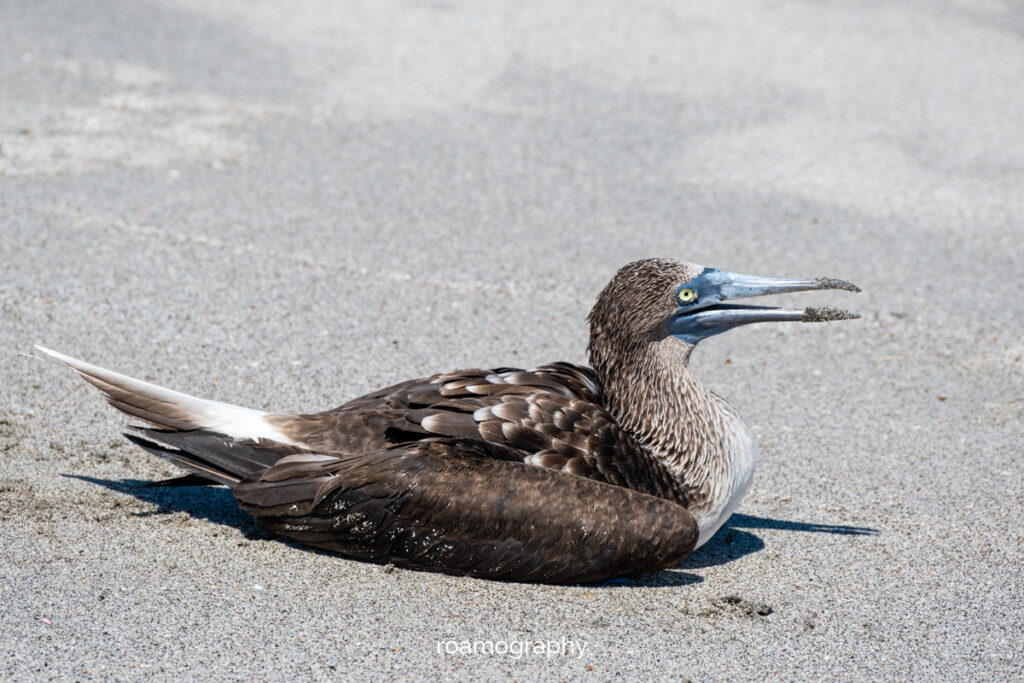
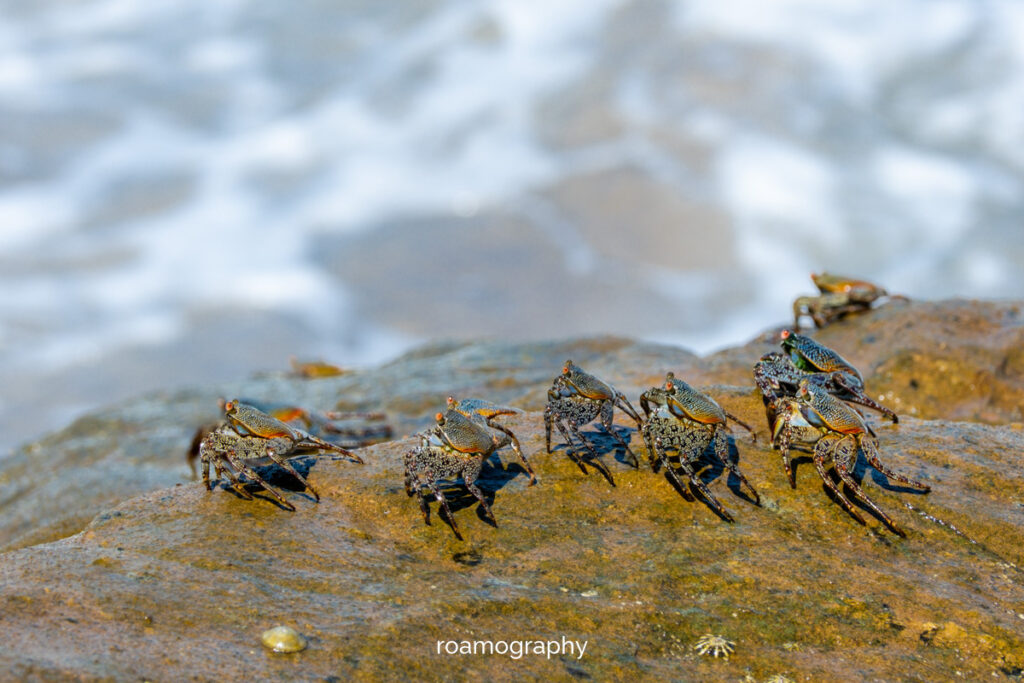
Puerto Lopez, Frailes
Ruszamy dalej na północ, zaliczając niesamowity nocleg couchsurfingowy przy Puerto Rico: właściciela nie ma na miejscu (porozumiewamy się z nim tylko zdalnie) i cały oryginalnie zaprojektowany dom z widokiem na ocean jest do naszej dyspozycji!
Nie gorzej jest w Puerto Lopez: spotykamy ukraińsko-północnoamerykańską parę, która udostępnia nam bardzo zadbane mieszkanko, w którym odświeżamy się i ruszamy na eksplorację tej nadmorskiej miejscowości. Najlepiej wybrać się tu na plażę w złocistej porze powrotu łodzi rybackich – podczas rozładunku zlatują się tu całe chmary ptactwa, m.in. fregaty i pelikany, całe w nadziei podkradnięcia smacznego rybiego kąska. Bardzo ciekawy spektakl.
Z Puerto Lopez również robimy wypad na plażę Frailes (stanowiącą część rezerwatu), piękny kamienno-piaszczysty łuk z w miarę spokojnymi jak na tę część świata falami i bardzo rozsądną liczbą plażowiczów. Po drodze do Frailes przechodzimy przez kilka innych malowniczych plaż, na których napotykamy bardzo konkretnych rozmiarów iguanę, kilka sępów oraz kontuzjowanego głuptaka, o którym informujemy strażników parkowych i modlimy się, aby zechciało im się przekazać tę informację dalej.
Moving further along the coast, we arrive in Manta, a large town that we use as our provisions source, acquiring, among other things, handmade net hammocks that will come in handy later in the trip. There are also beaches here, there are surfing options, a large promenade is being built, but the town somehow fails to captivate us with its personality. Our fondest memory of Manta is the Venezia Hostel, where we are staying and where two over-sympathetic dogs are wandering around. Painting a mural in the staircase, depicting those two fun gals, takes care of our accommodation:)
From Manta we make a foray into a nearby town – Montecristi.
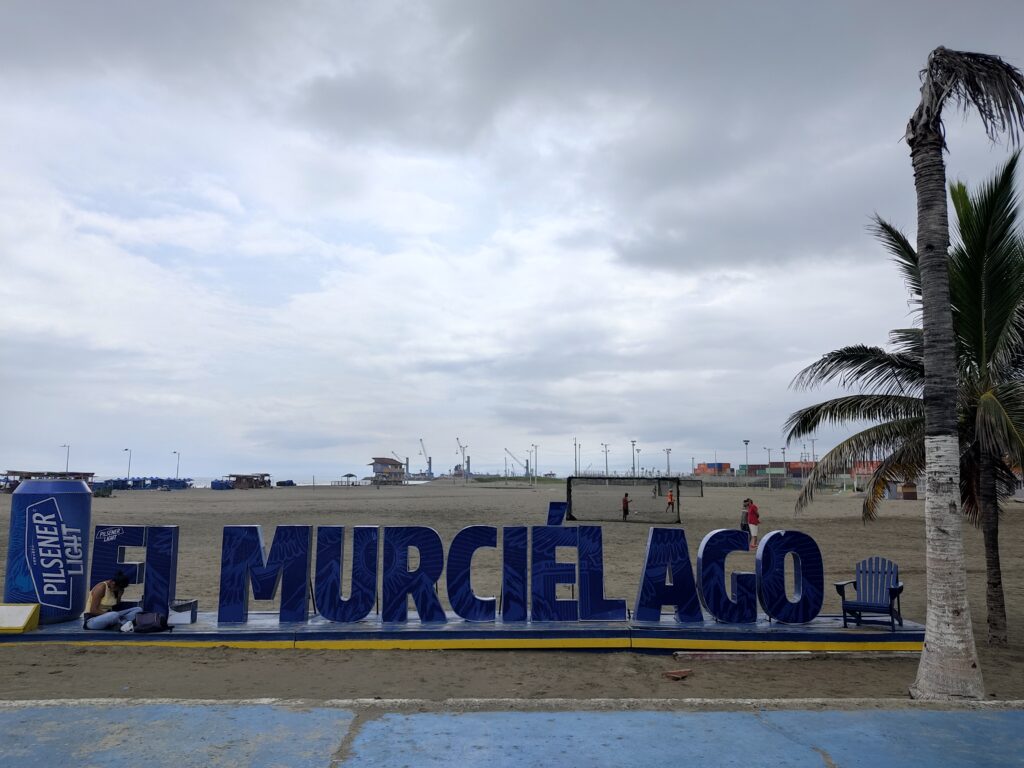
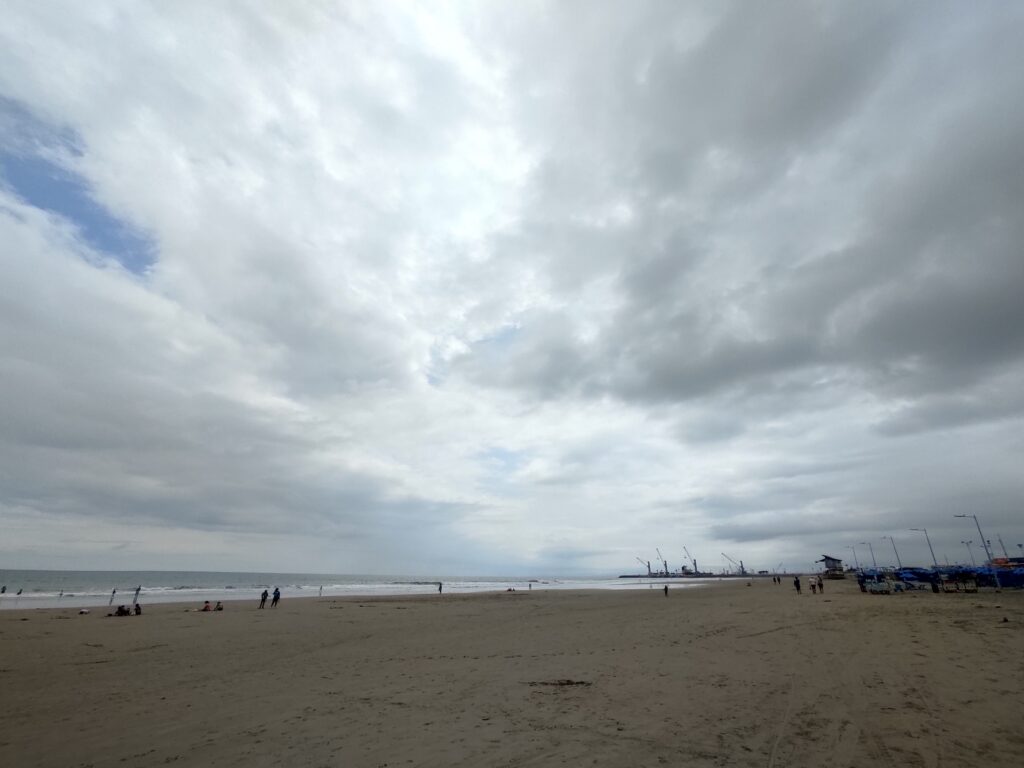
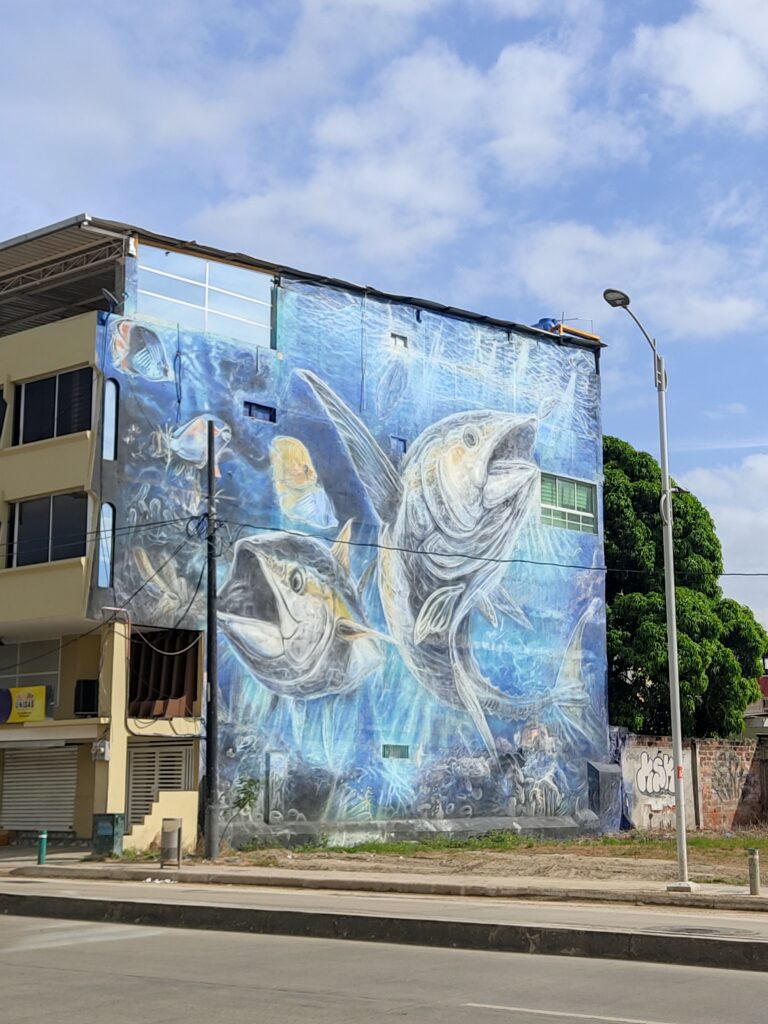

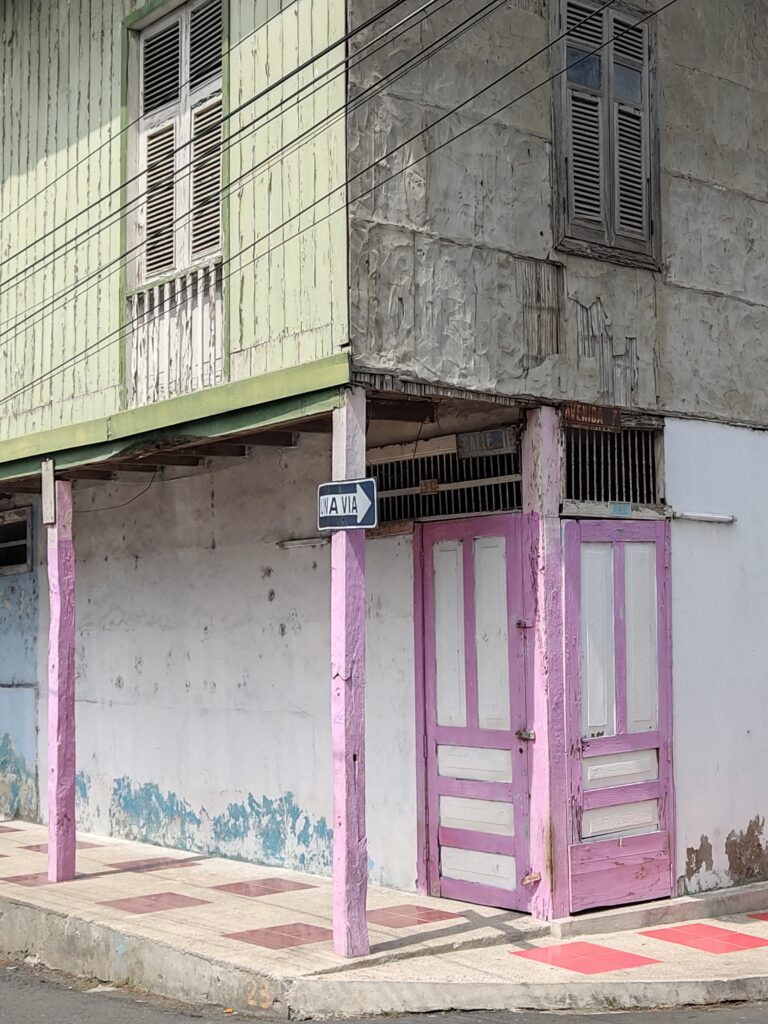
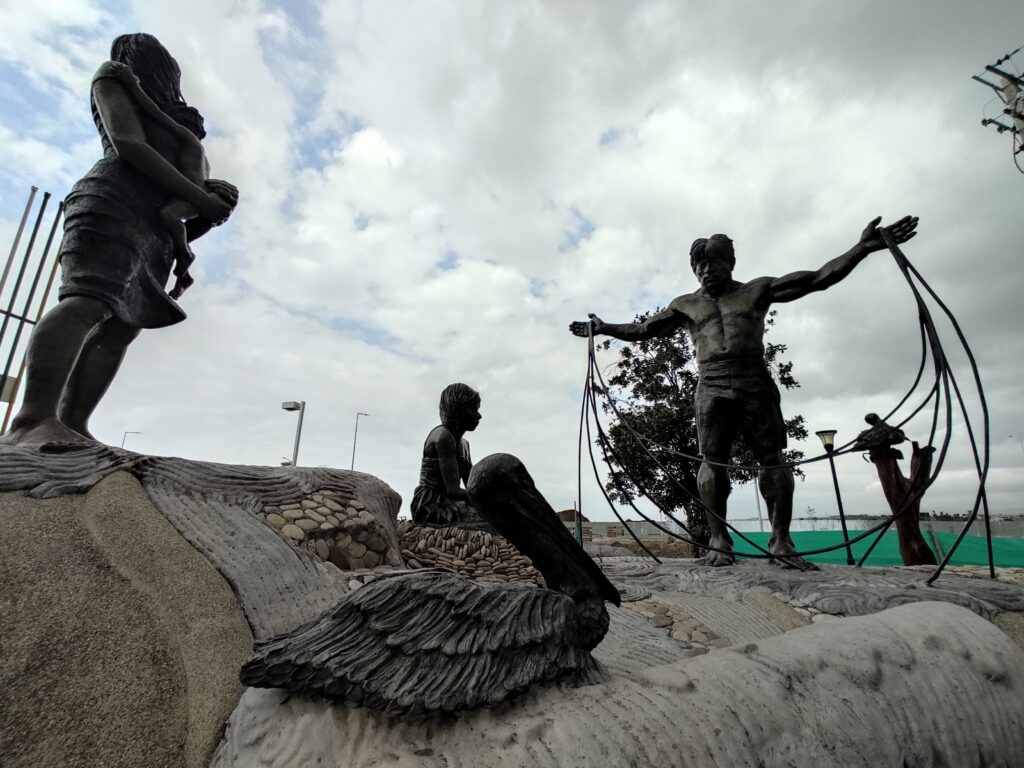
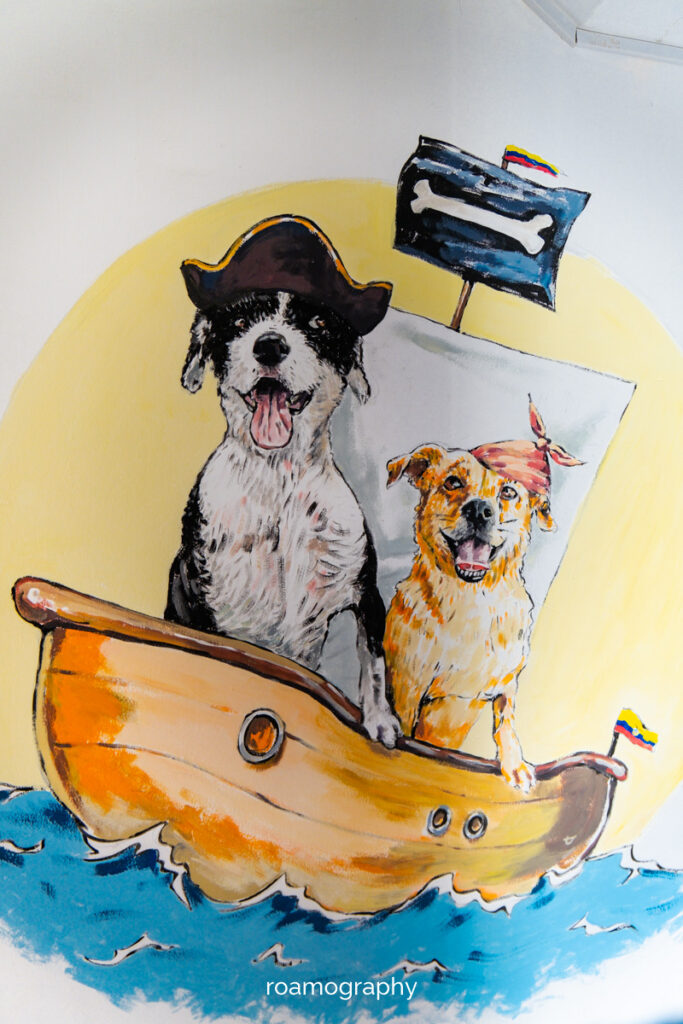
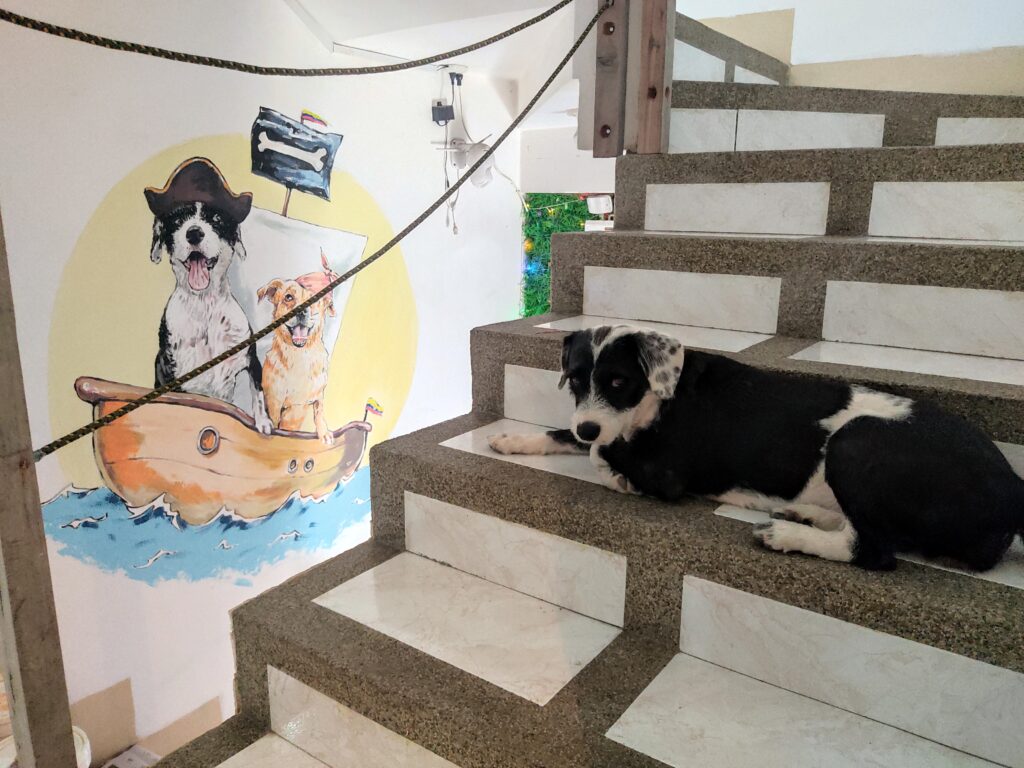
Manta (psiaki w hostelu)
Sunąc dalej wzdłuż wybrzeża docieramy do Manty, dużego miasta, które traktujemy bardzo zaopatrunkowo, nabywając tu m.in. ręcznie robione siatkowe hamaki, które przydadzą się na późniejszym etapie podróży. Są tu także plaże, są opcje surfingowe, buduje się właśnie wypasiona promenada, ale miasto jakoś nie urzeka nas swoją osobowością. Najmilszym wspomnieniem z Manty jest Hostel Venezia, w którym się przechowujemy, a po którym hasają dwa przesympatyczne psiaki. Namalowanie w klatce schodowej muralu, przedstawiającego rozbrykaną parę czworonogów załatwia nam temat noclegu:)
Z Manty robimy wypad do pobliskiego miasteczka – Montecristi.
We come here with one main goal: to find artists skilled in carving in a material called tagua, which is a vegan alternative to ivory. Tagua products are indeed plentiful here, but none of the vendors know who exactly creates them. Finally, after a long search, I manage to get in touch with Erwin, who lives in a nearby village and agrees to record a short video about his craft. At the end, I get a small tagua elephant as a gift:)
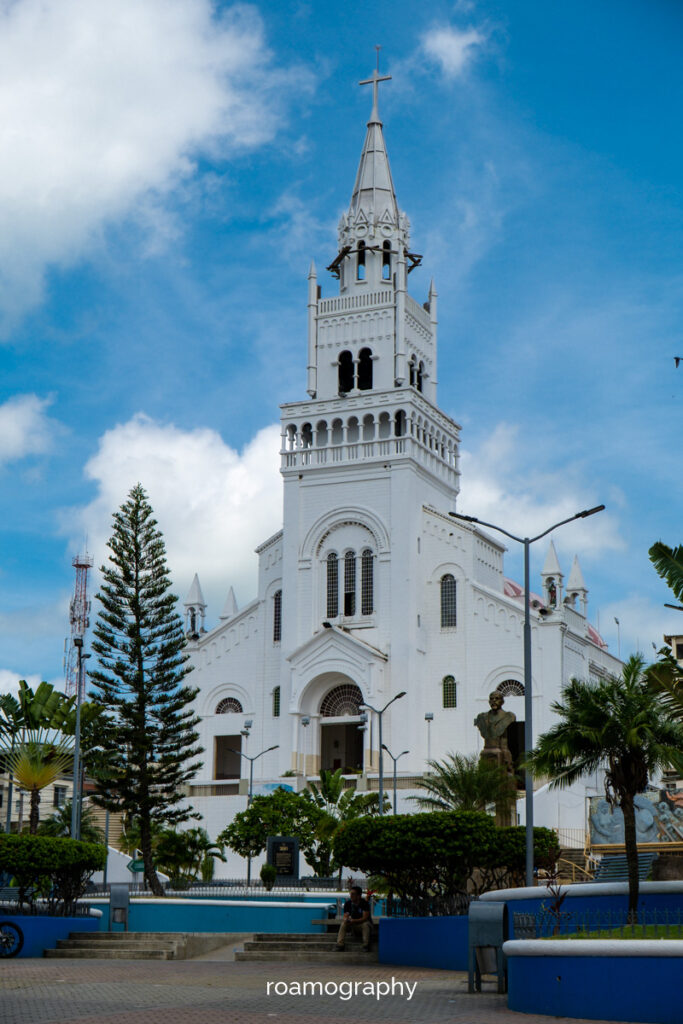
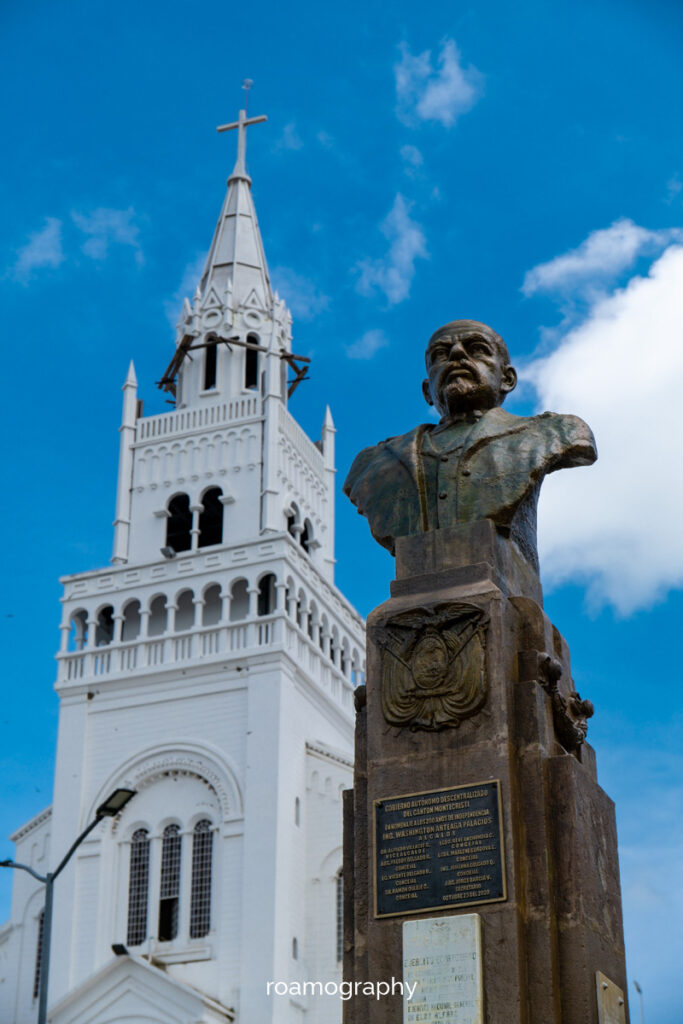
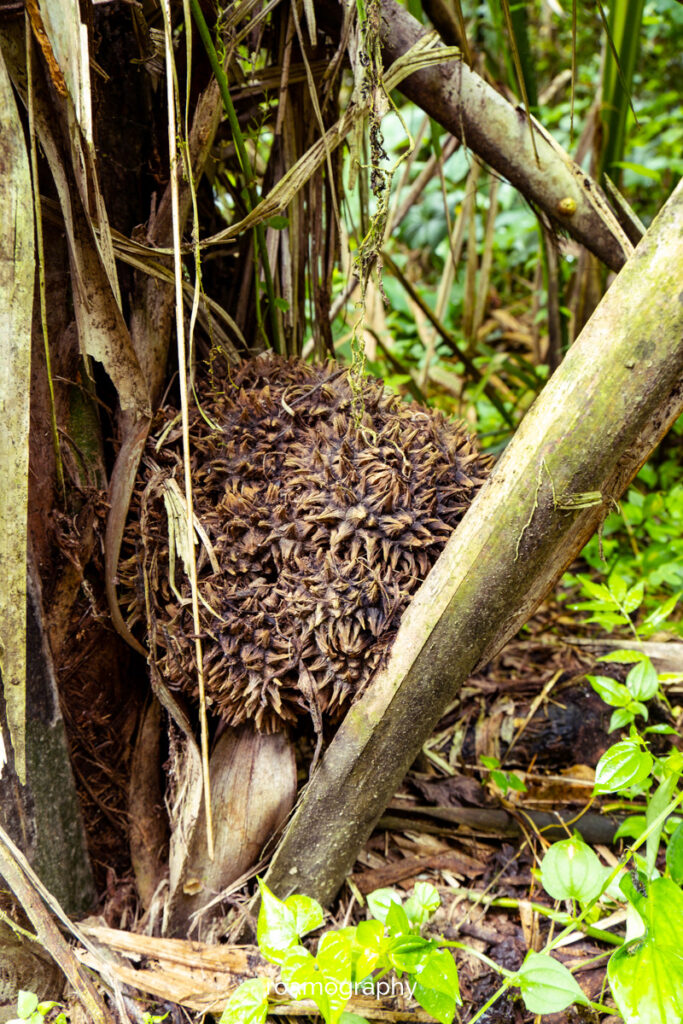


Montecristi
Przybywamy tu w jednym celu: rozpoznania tematu artystów rzeźbiących w materiale zwanym tagua, będącym wegańską alternatywą dla kości słoniowej. Produktów z taguy rzeczywiście tu sporo, ale nikt ze sprzedawców nie wie, kto dokładnie tworzy te rzeźby. W końcu, po długich poszukiwaniach udaje się skontaktować z Erwinem, który mieszka w pobliskiej wiosce i zgadza się na nagranie krótkiego materiału wideo o jego rzemiośle. Na koniec dostaję w prezencie małego taguowego słonika:)
We travel to the other end of Ecuador on a shaky bus, from Quito we head to the town of Puerto Francisco de Orellana, commonly known as El Coca. Here we will organise our own river transport towards Iquitos (spoiler: we won’t be able to catch the cheapest and slowest cargo barge because, firstly, it only runs once a month and, secondly, it is currently under repair and there is no telling when it will be fit for use). Before that, however, we stop by the headquarters of the Sumak Allpa organisation, where we will have a conversation that will alter our plans slightly. Before we go anywhere else, we will drop by the nearby Monkey Island, located on the Coca River.
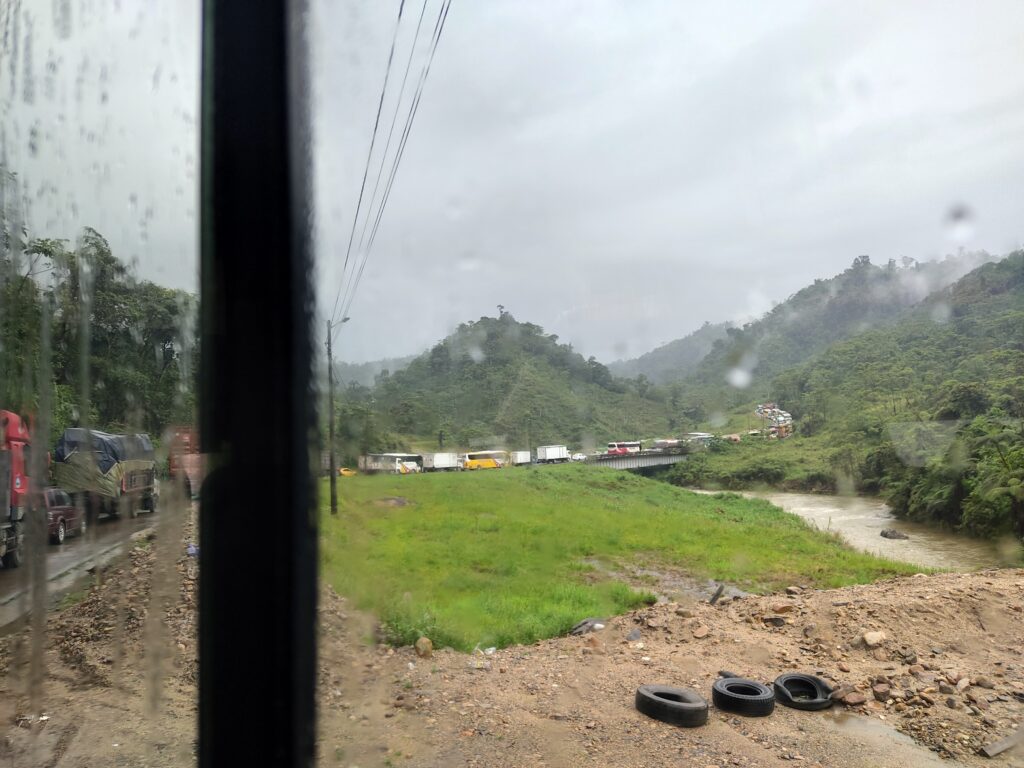
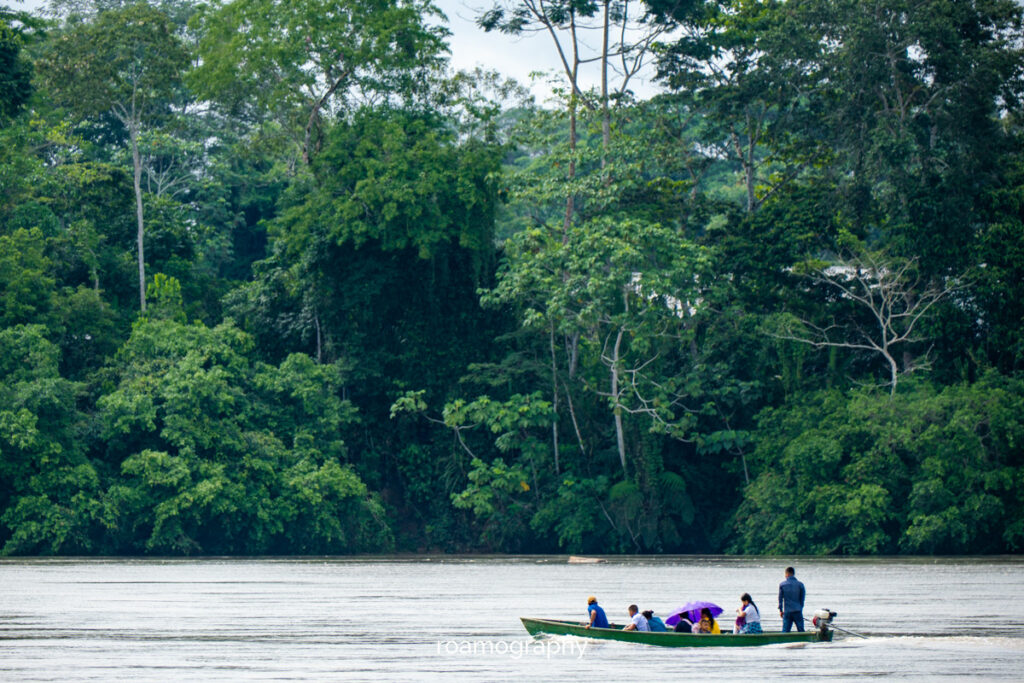
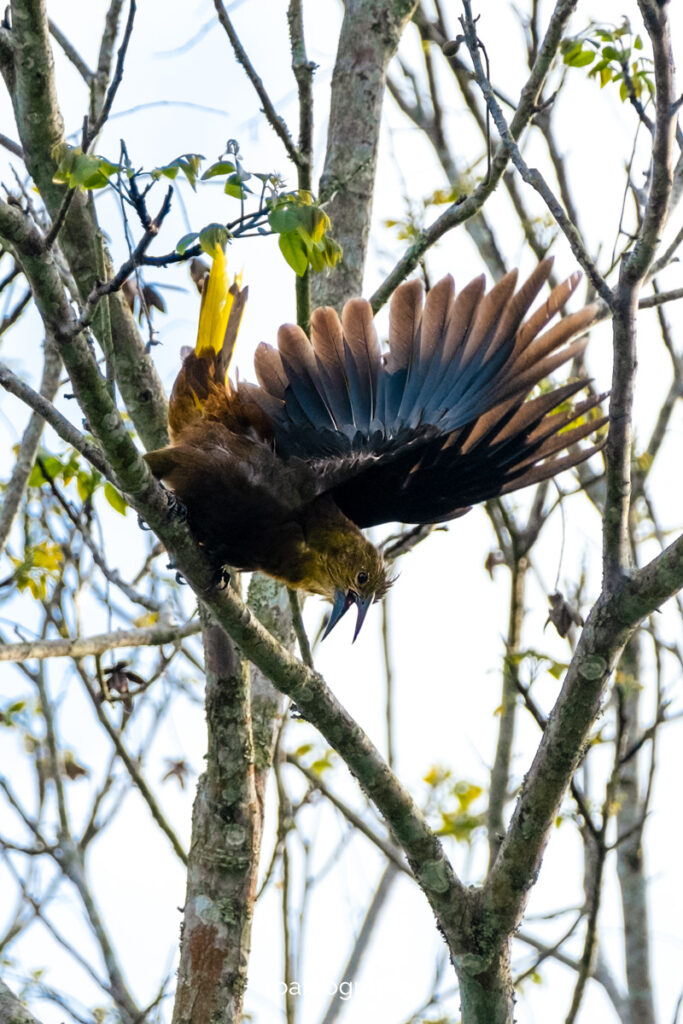
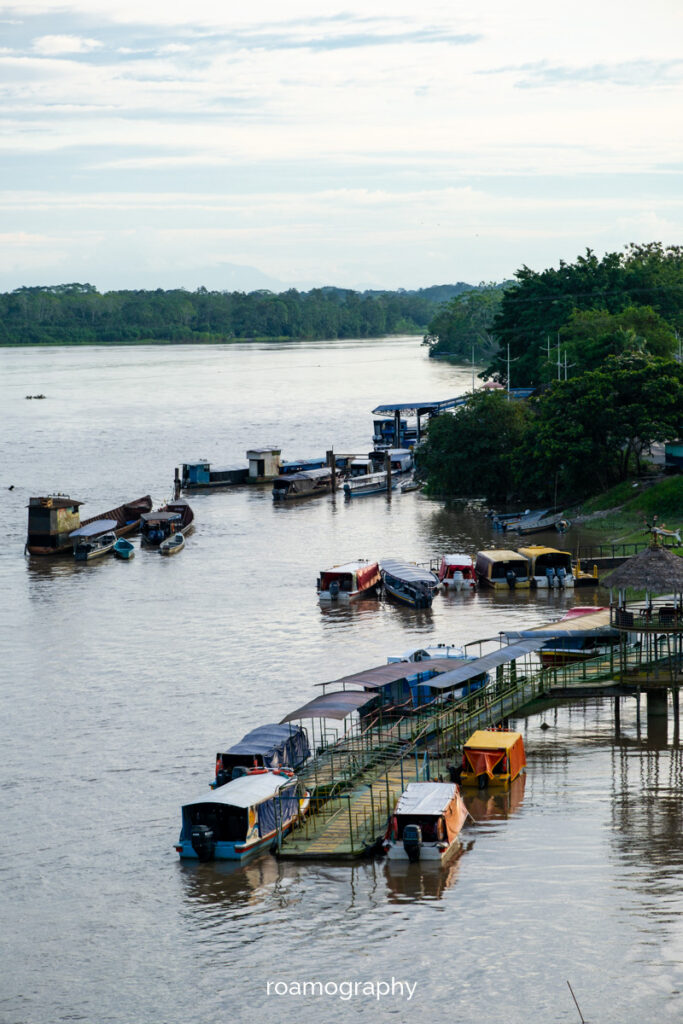
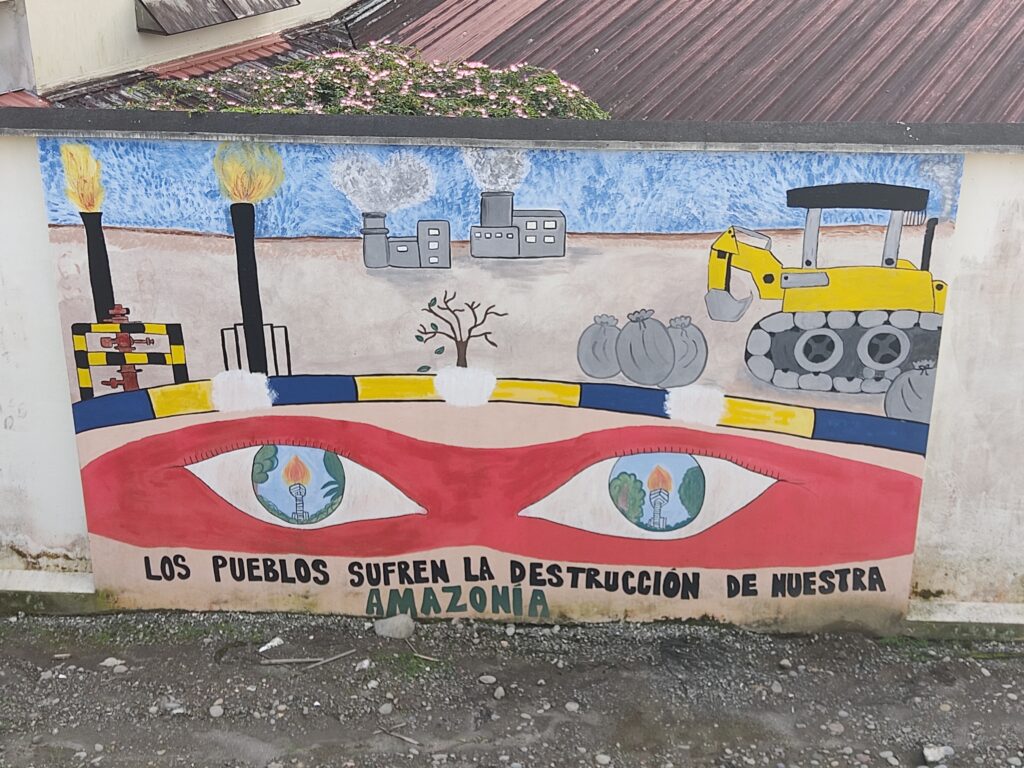

Coca
Telepiącym autobusem wyjeżdżającym z Quito przemieszczamy się na drugi kraniec Ekwadoru, do miejscowości Puerto Francisco de Orellana, zwanej potocznie El Coca. Tutaj zorganizujemy sobie transport rzeczny w kierunku Iquitos (spoiler: nie uda się załapać na najtańszą i najwolniejszą barkę towarową, bo, po pierwsze, kursuje tylko raz w miesiącu, a po drugie, jest obecnie w naprawie i nie wiadomo, kiedy będzie się nadawała do użytkowania). Zanim to jednak nastąpi, zachodzimy do siedziby organizacji Sumak Allpa, gdzie odbędziemy rozmowę, która spowoduje lekką zmianę naszych planów. Otóż zanim dokądkolwiek się wybierzemy, wpadniemy na pobliską Wyspę Małp, położoną na rzece Coca.
A magical week in the forest on an island inhabited by eight species of monkeys. Some fat, some hairy, some overly cute, some coming right up to the hut where we are staying (sharing it with interesting insects, big cockroaches in particular), others completely hidden in the dense jungle… We wade through the mud, poke our heads out looking for the inhabitants of the treetops, snap photos and paint the signs of the trails crossing the island. With regret, we leave this magical place, keeping our fingers crossed for the success of Sumak Allpa’s monkey projects.

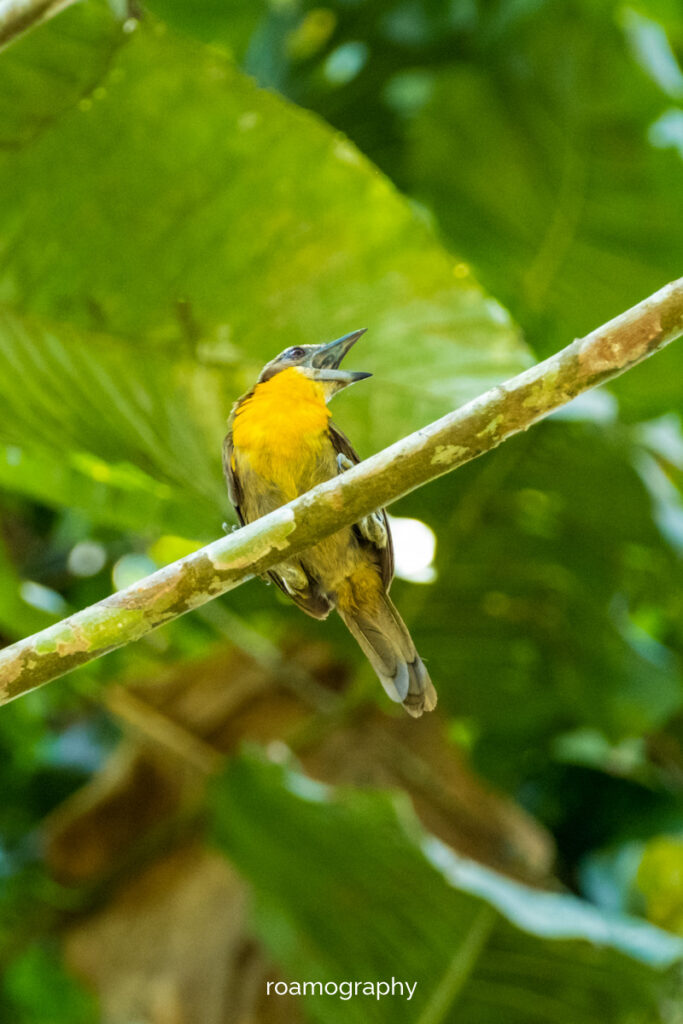
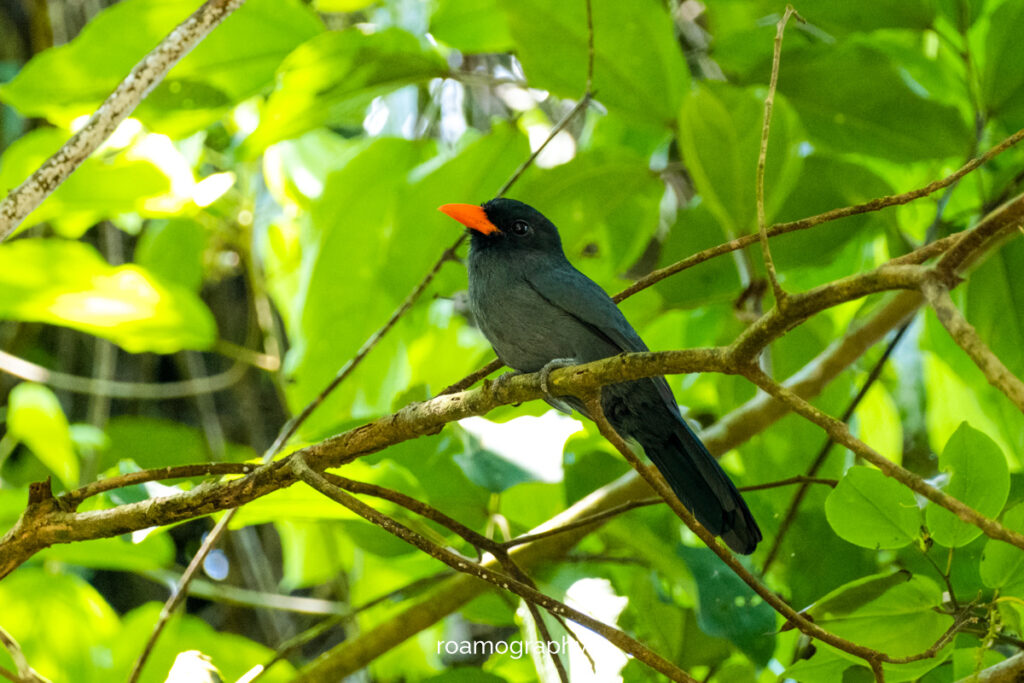
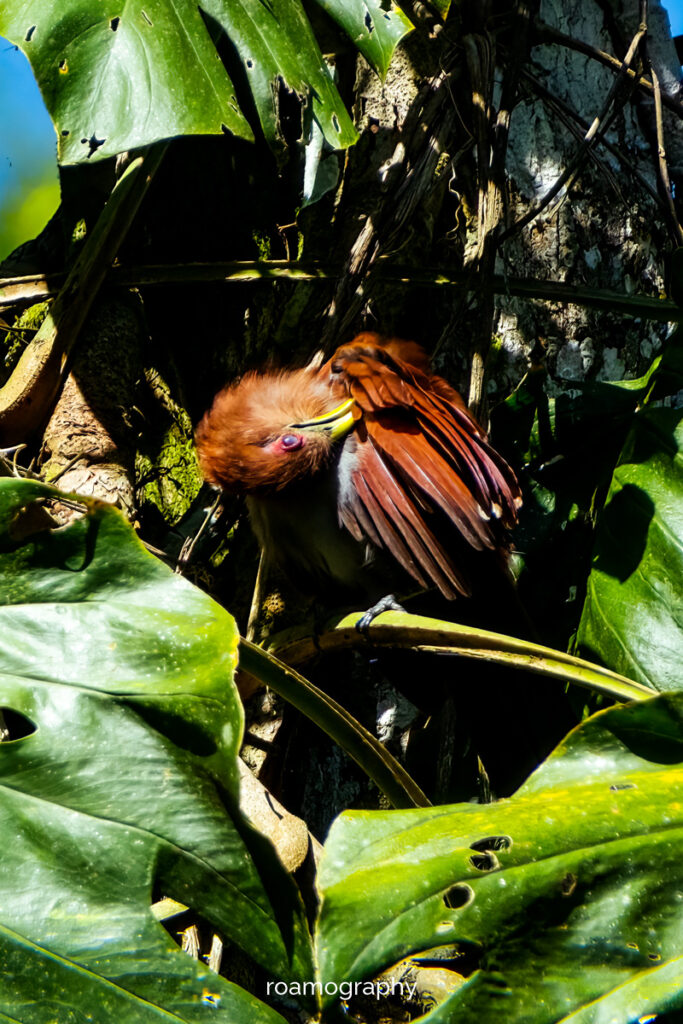
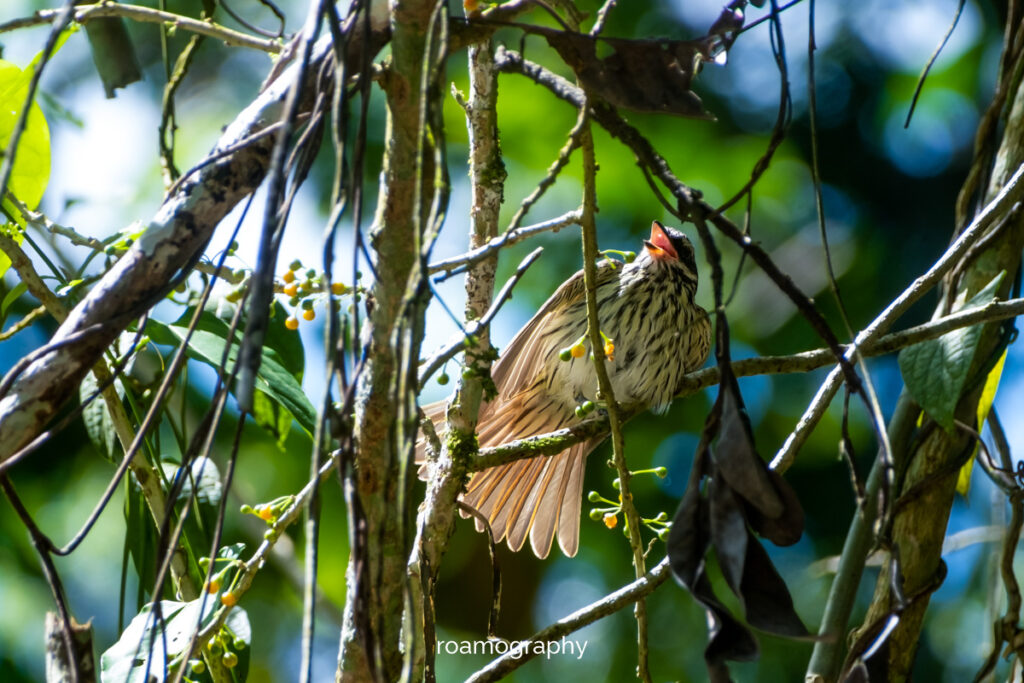
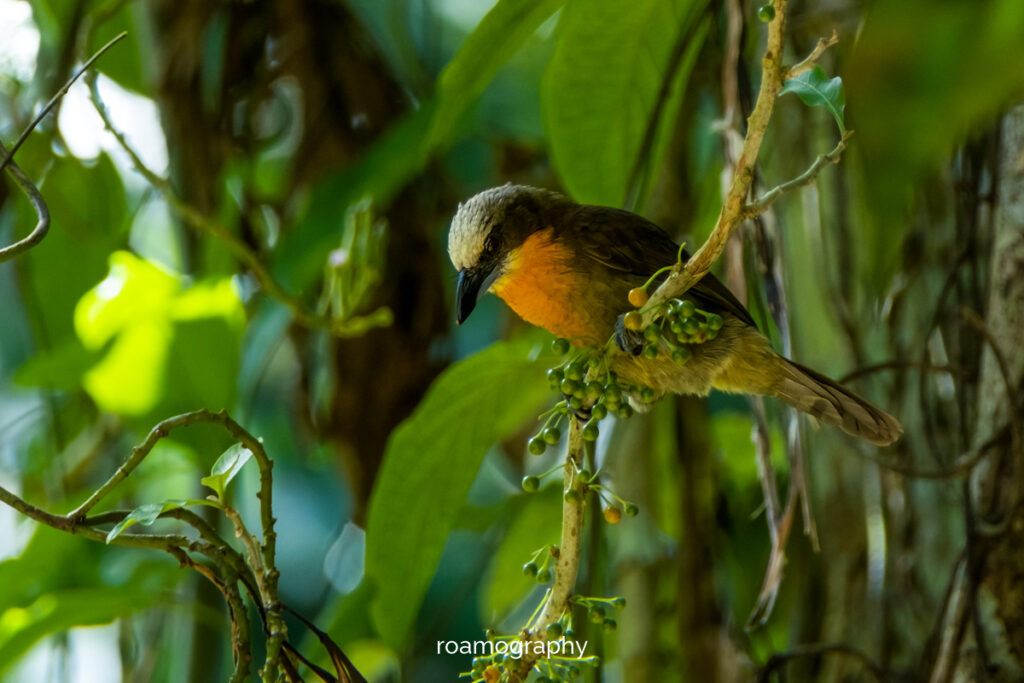
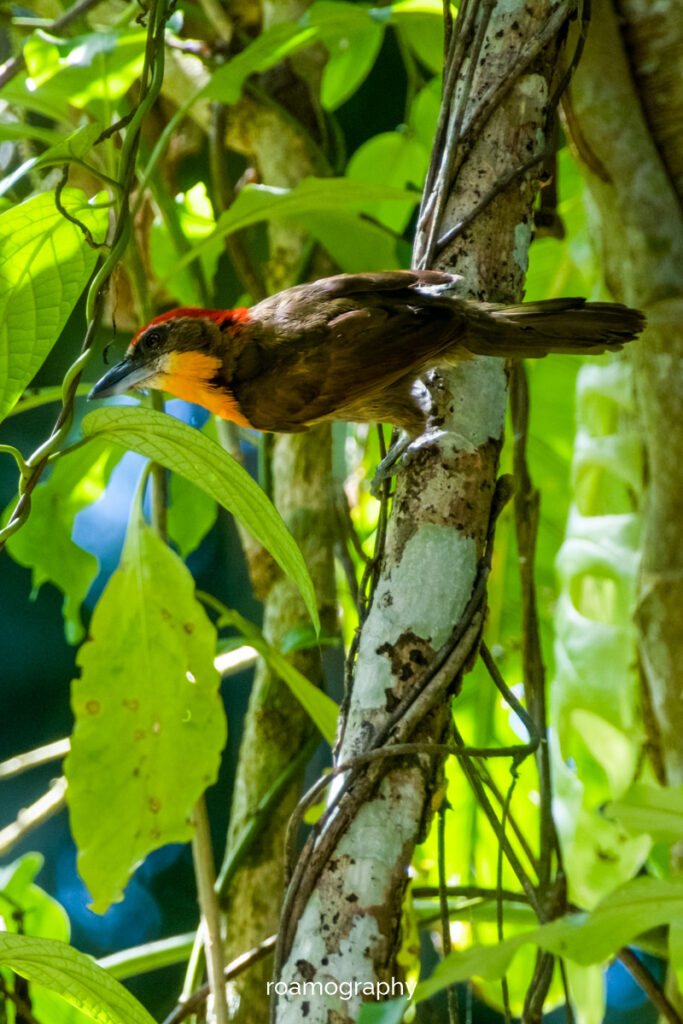
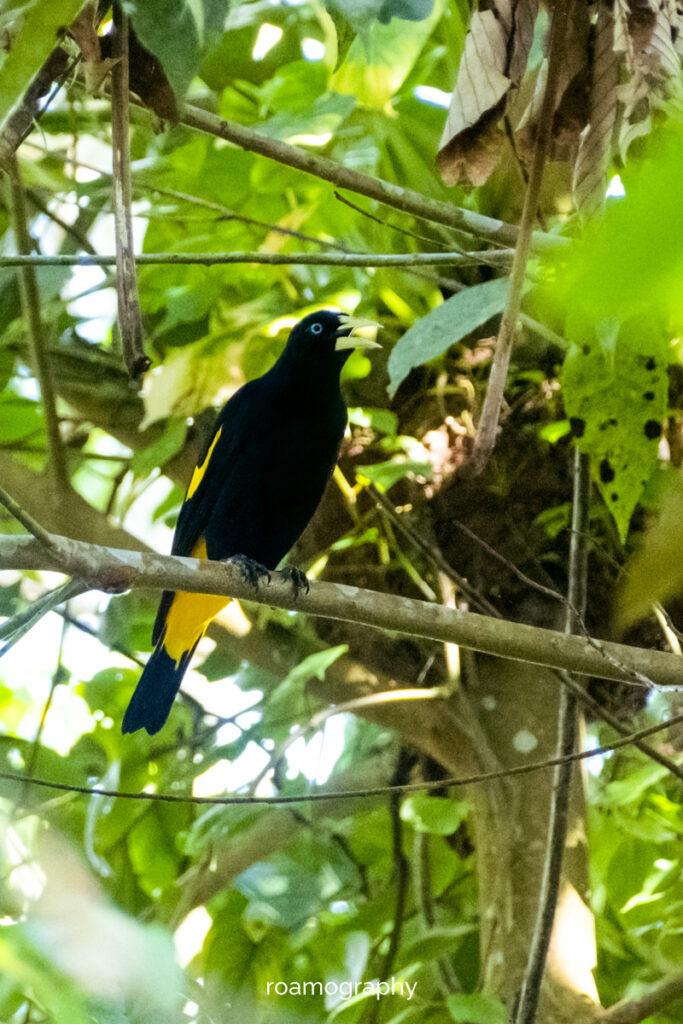
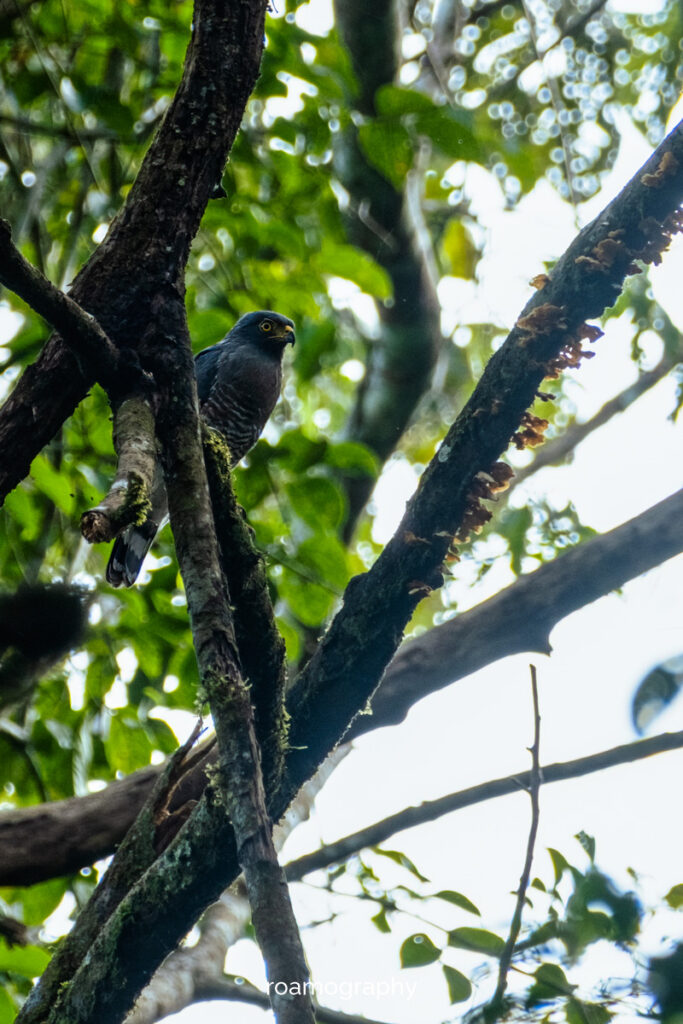
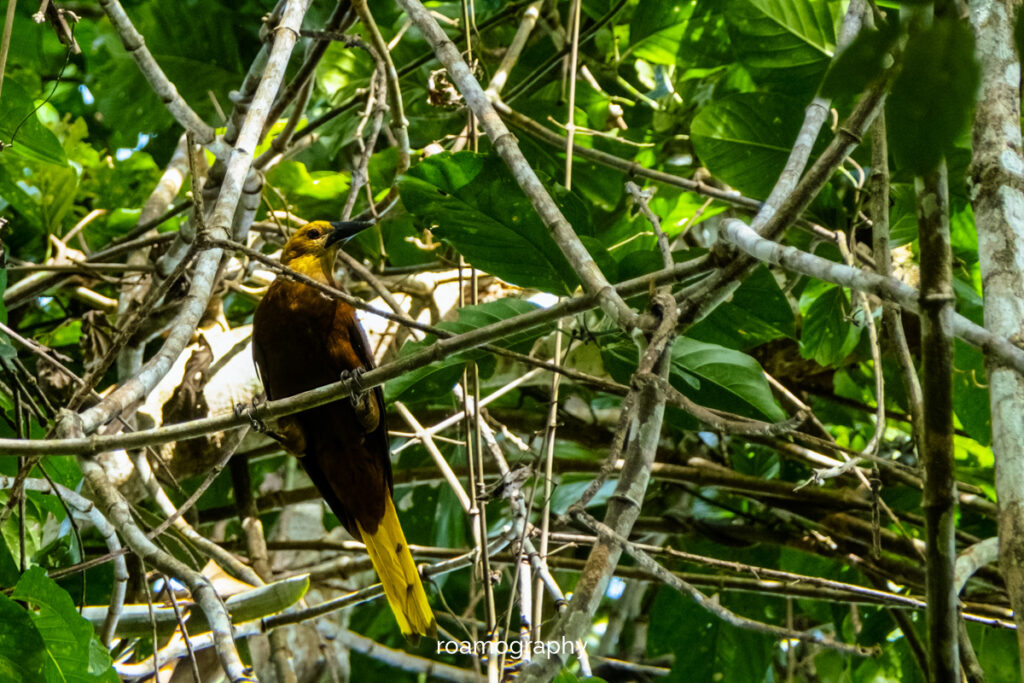
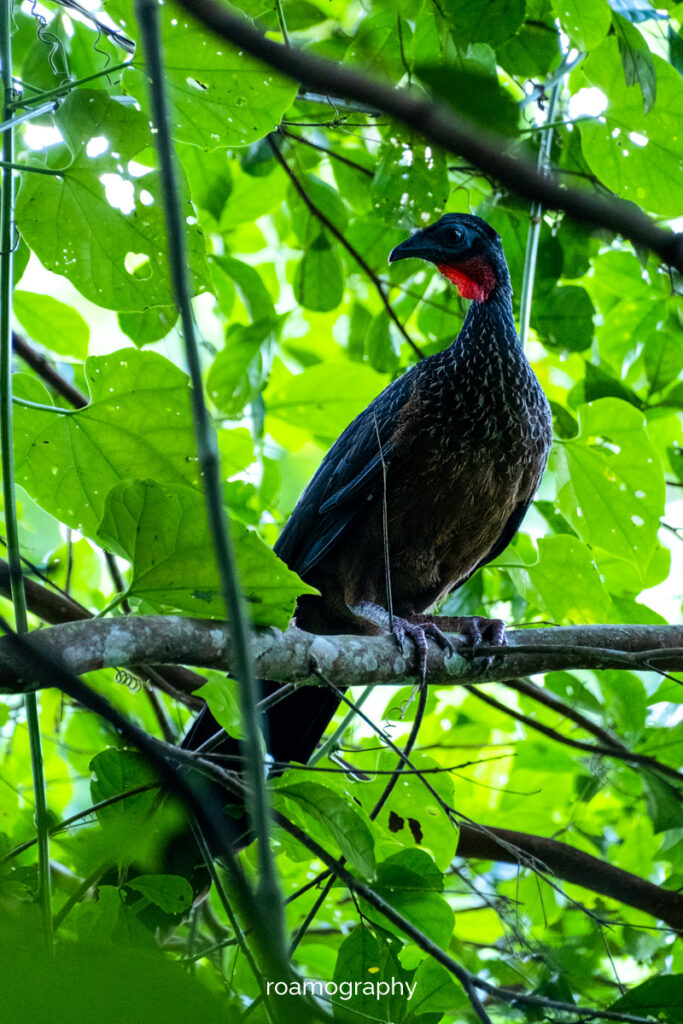

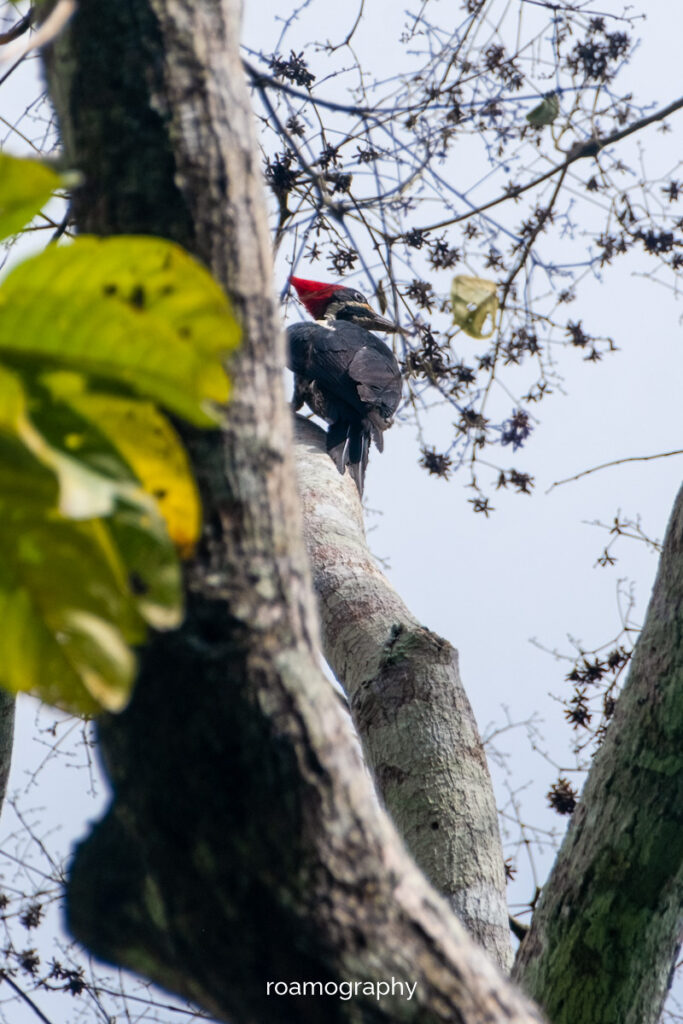
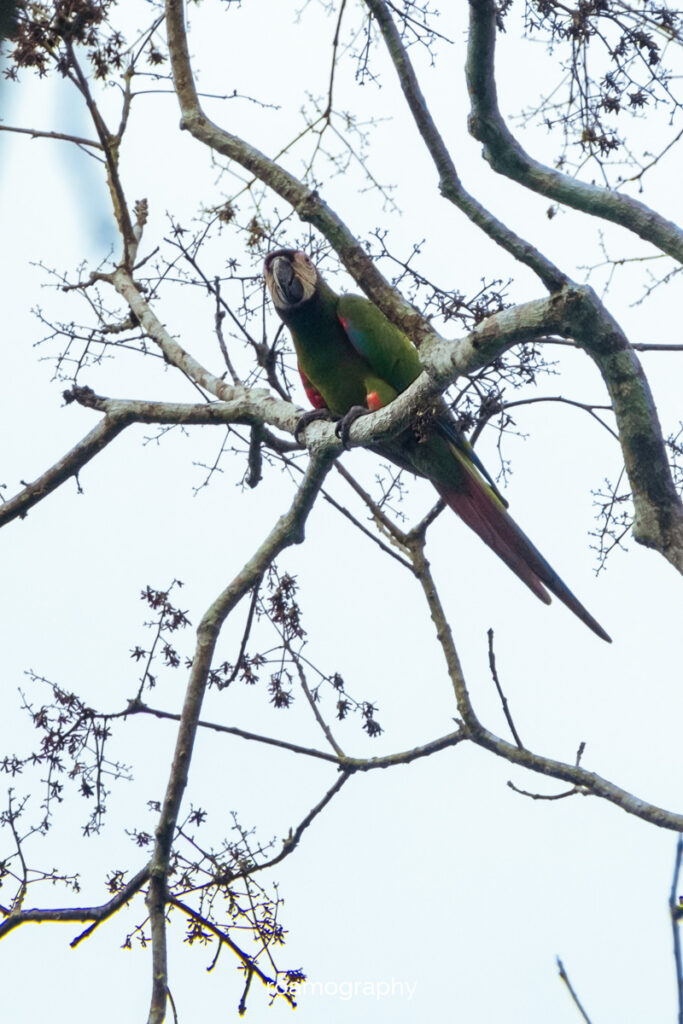
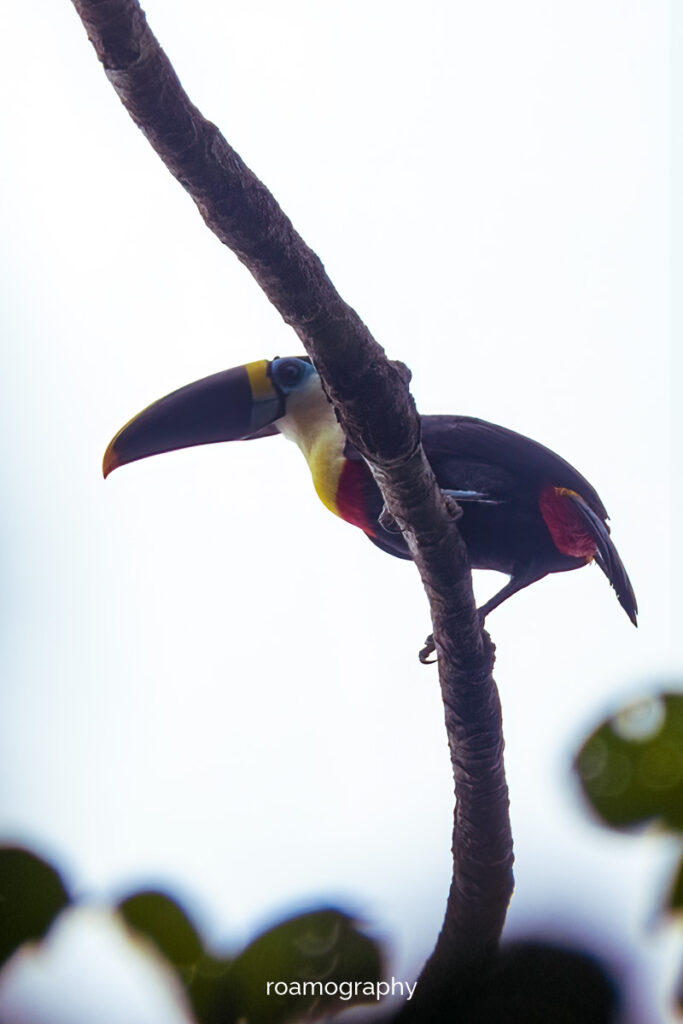
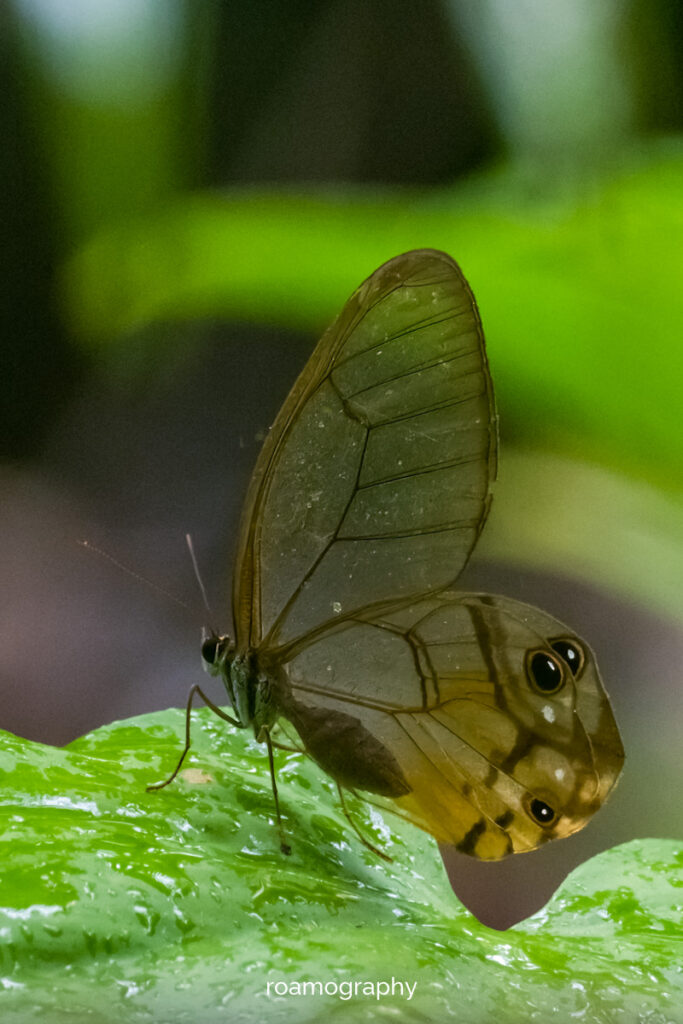
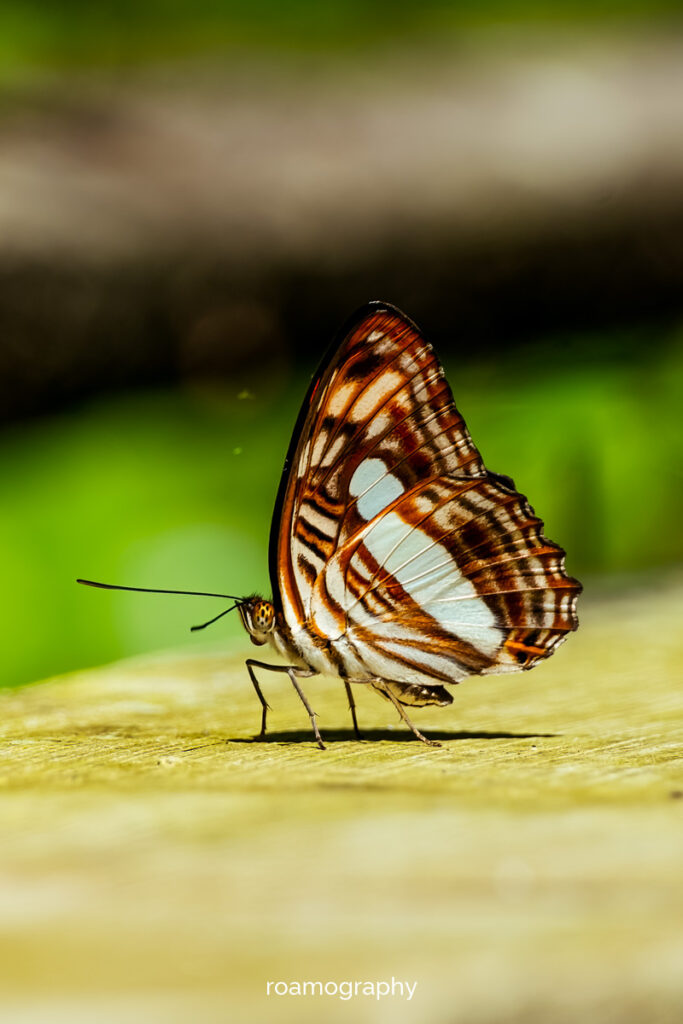
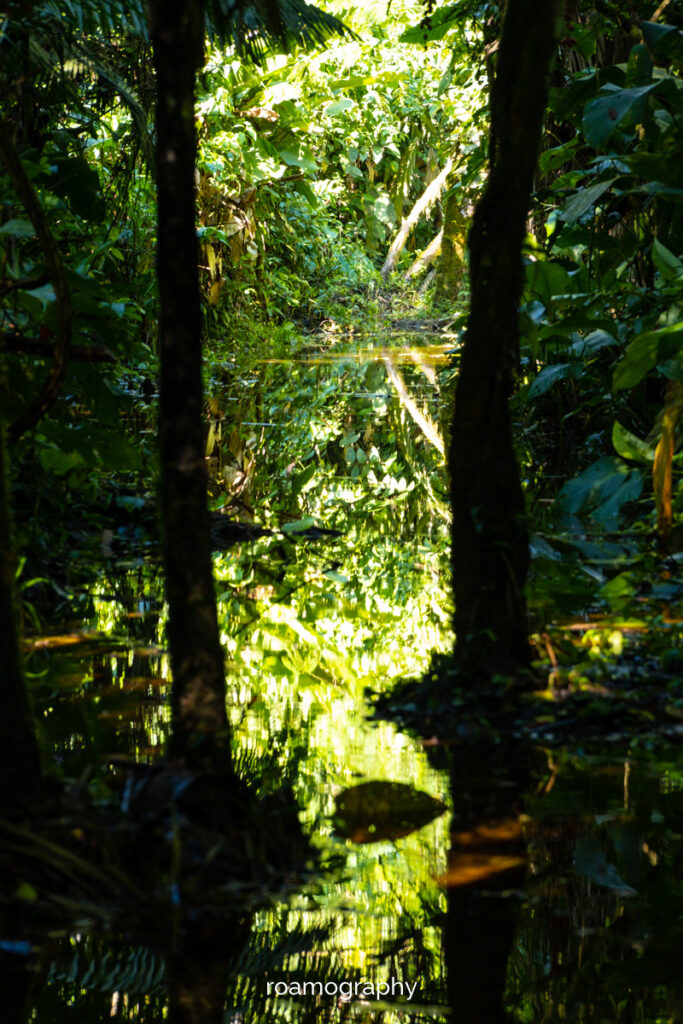
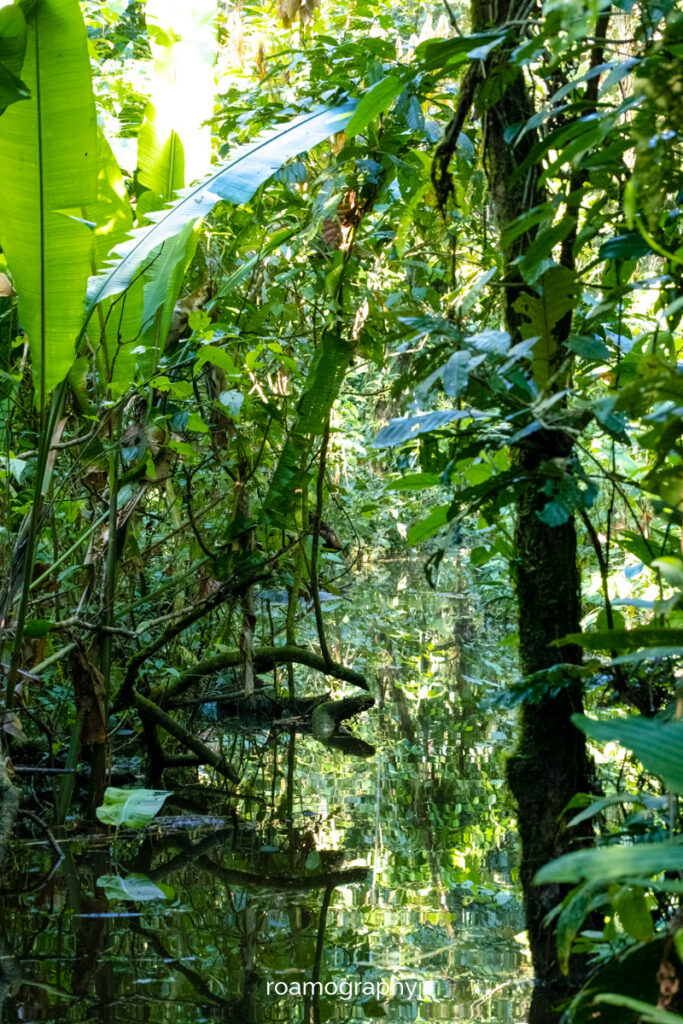

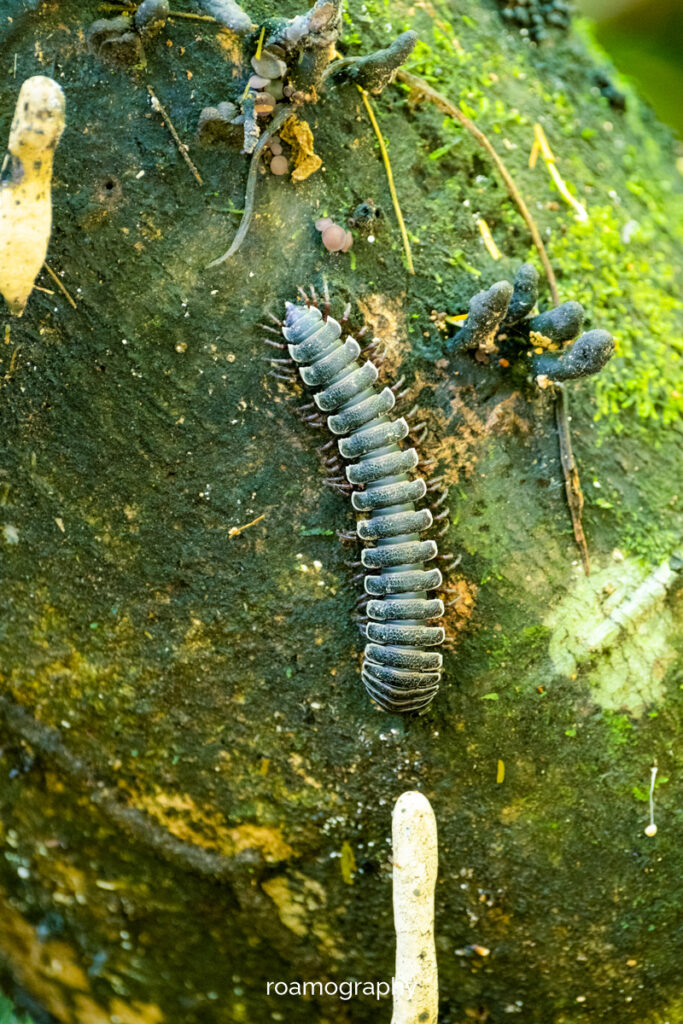
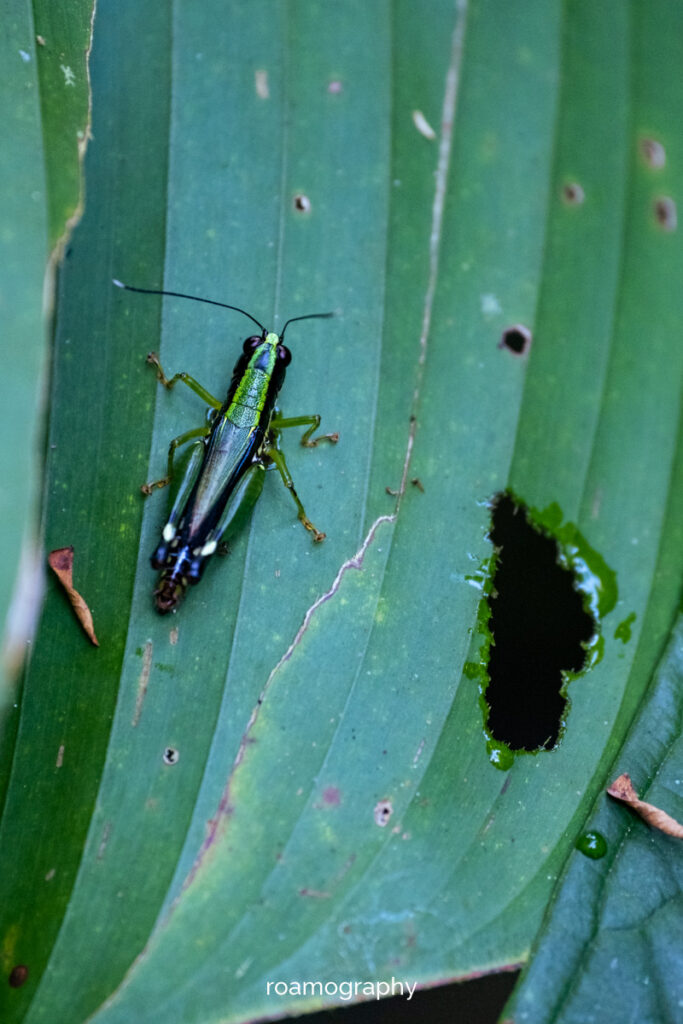
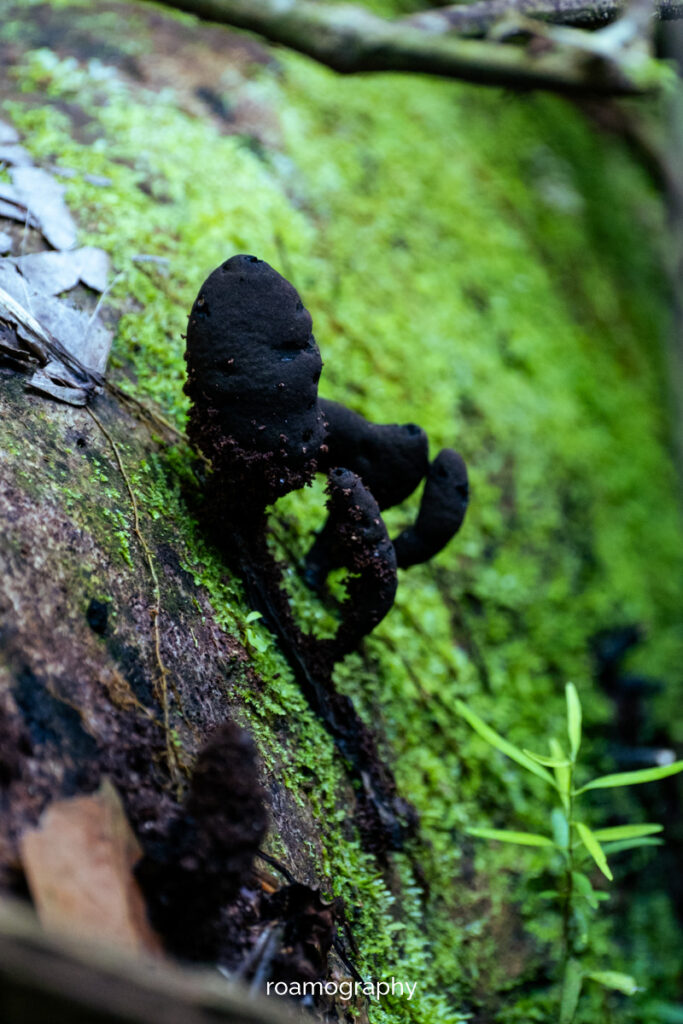
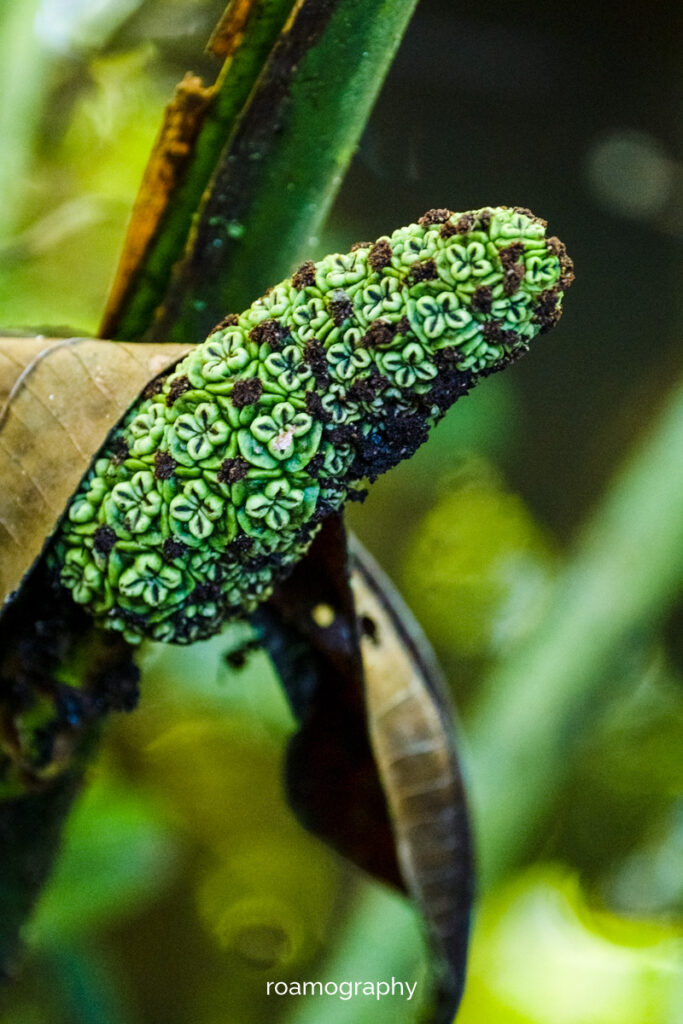
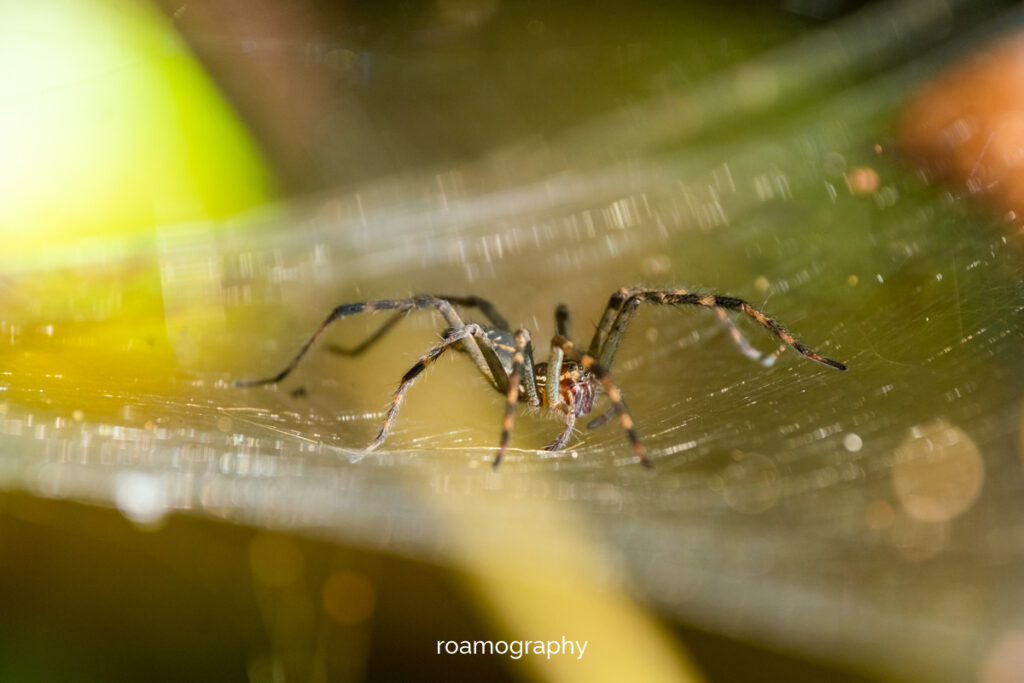
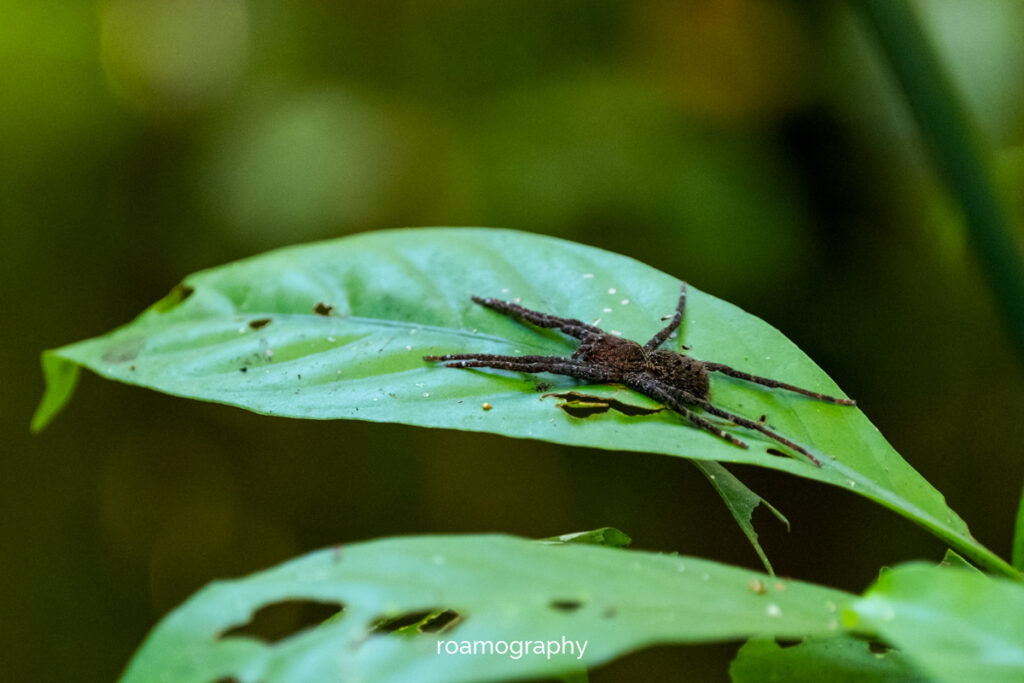
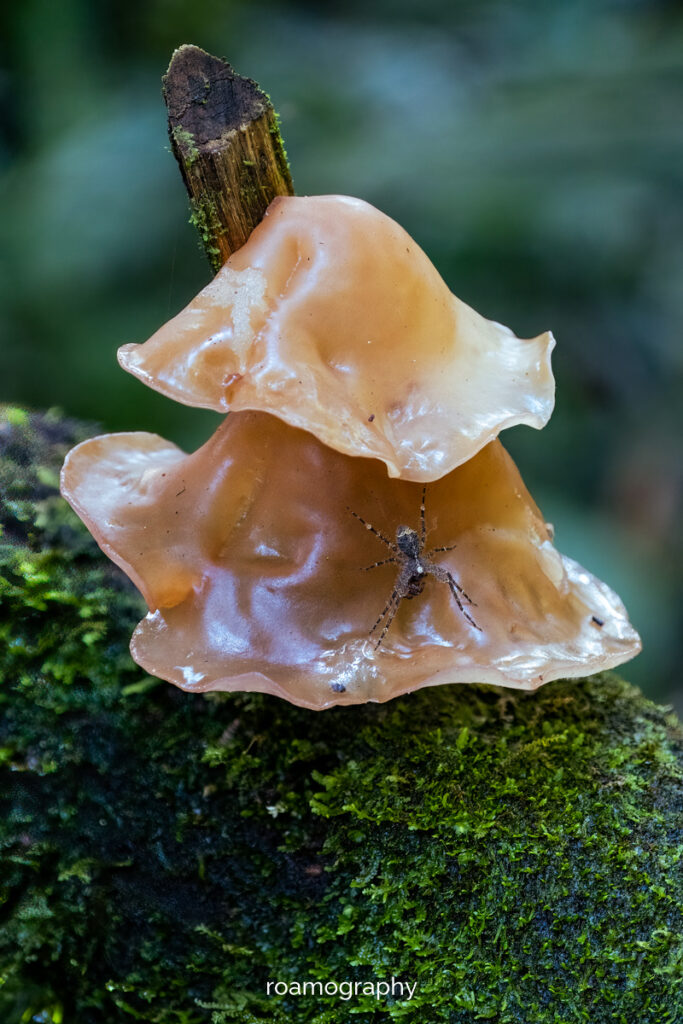
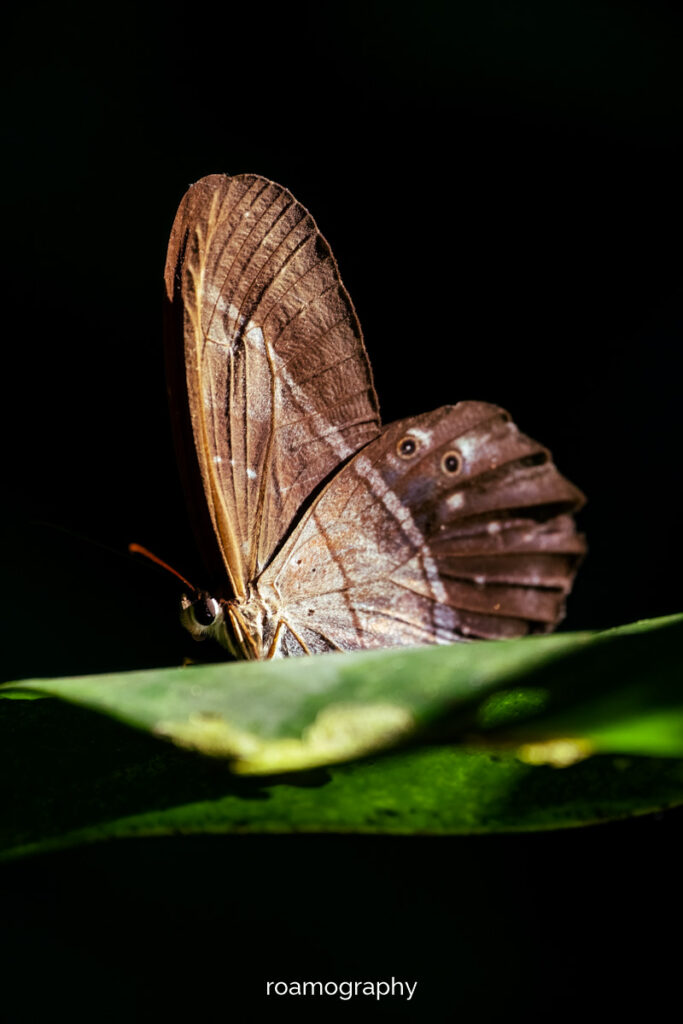
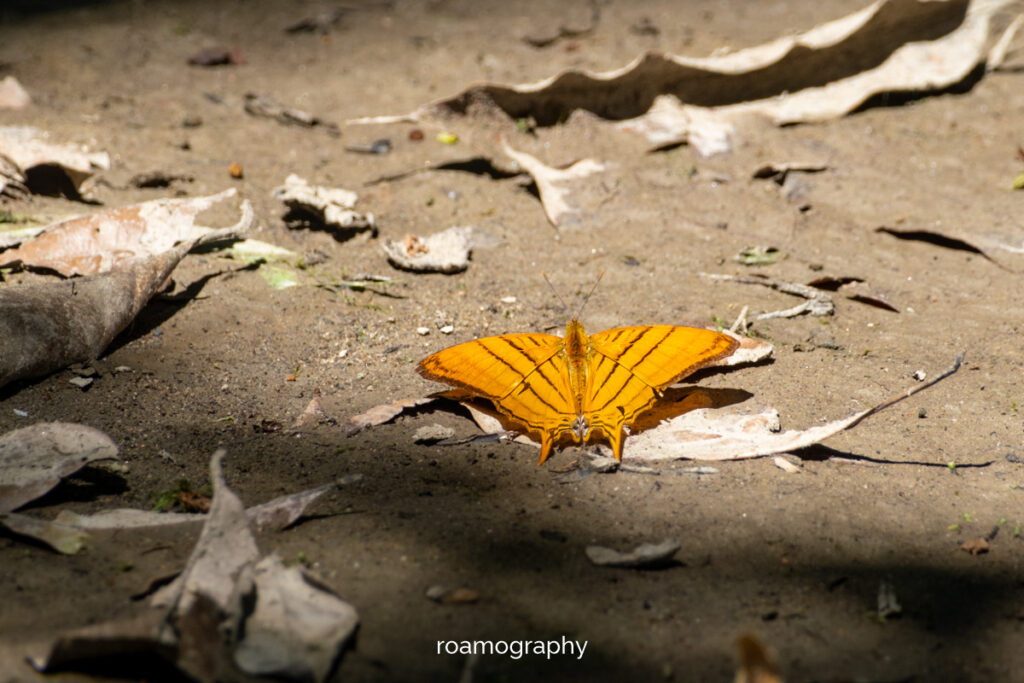
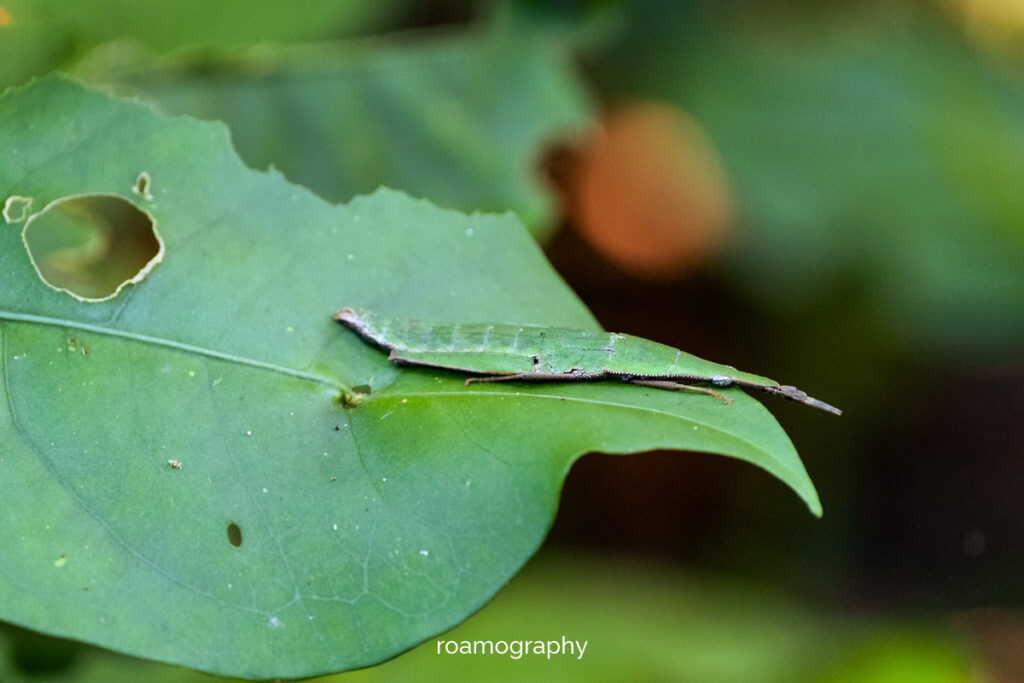
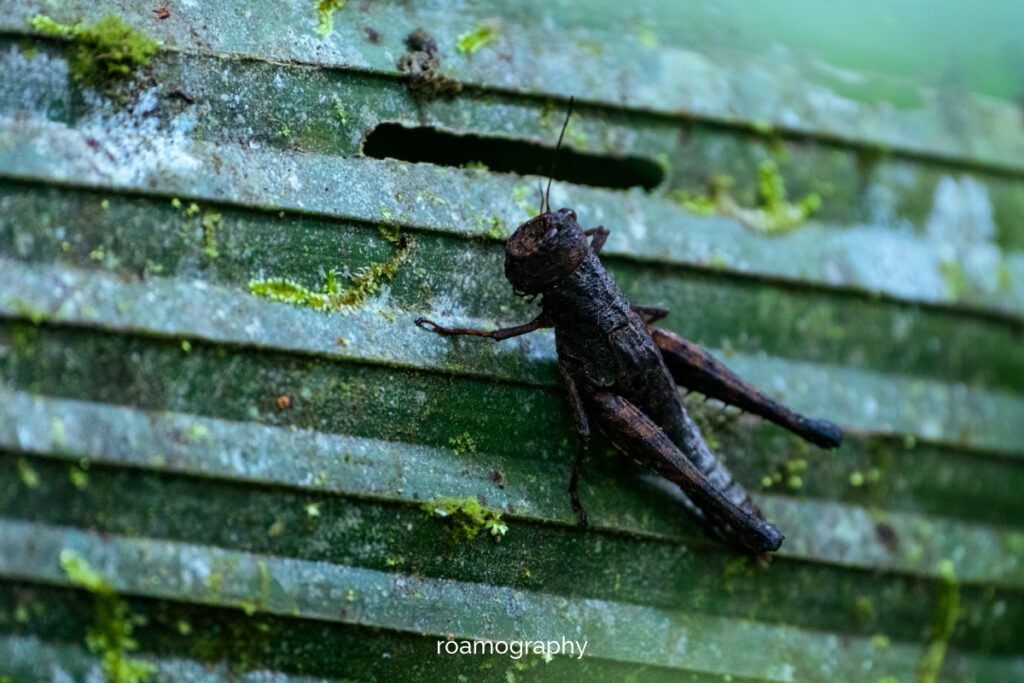
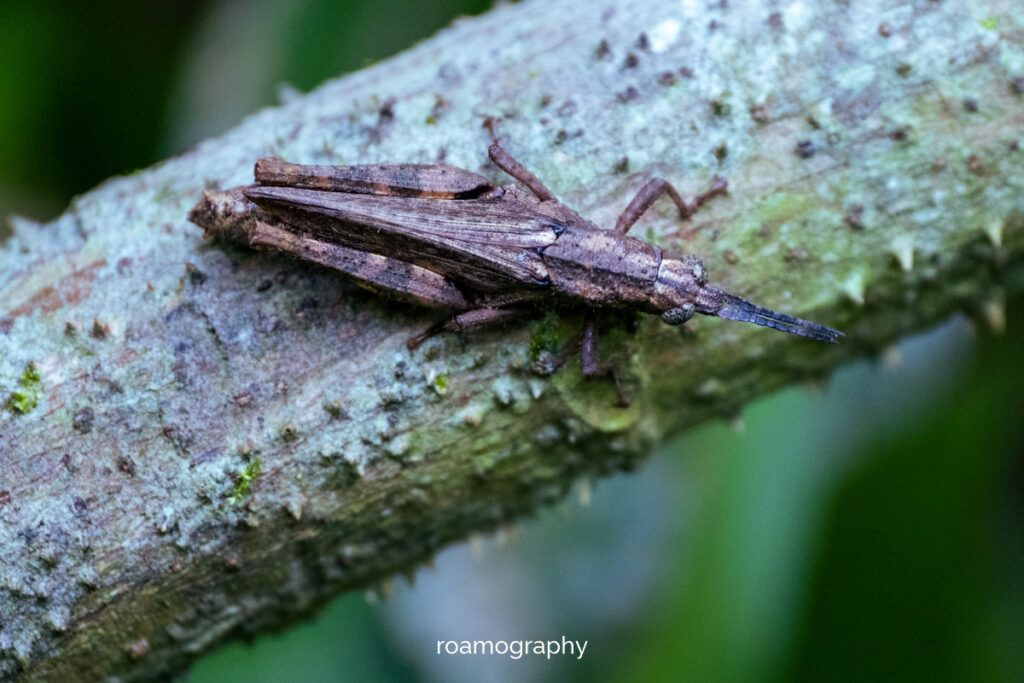
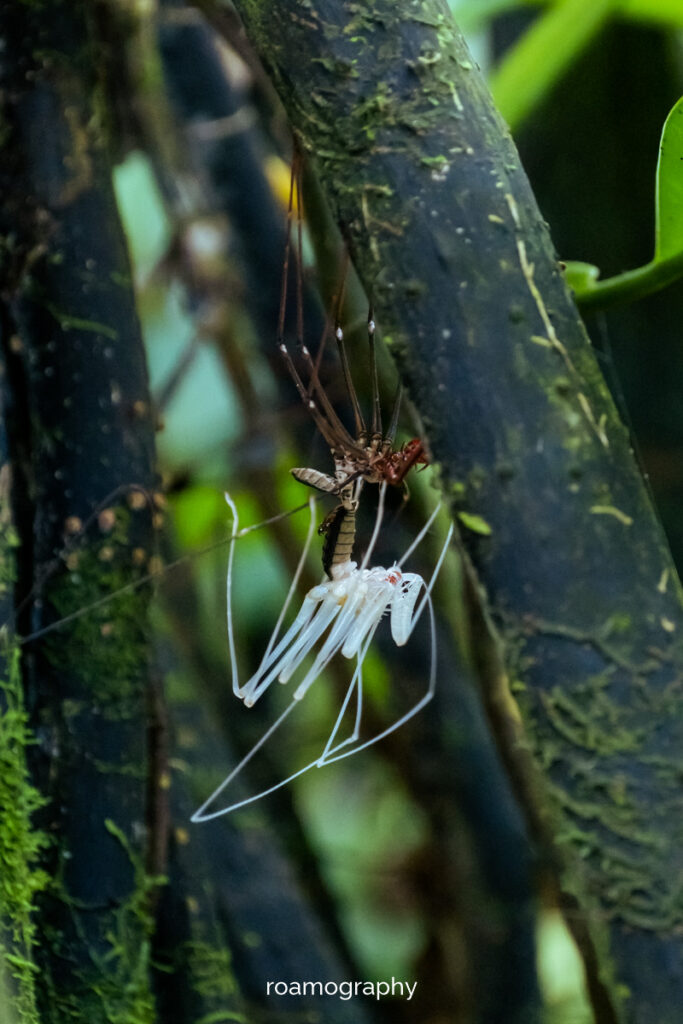
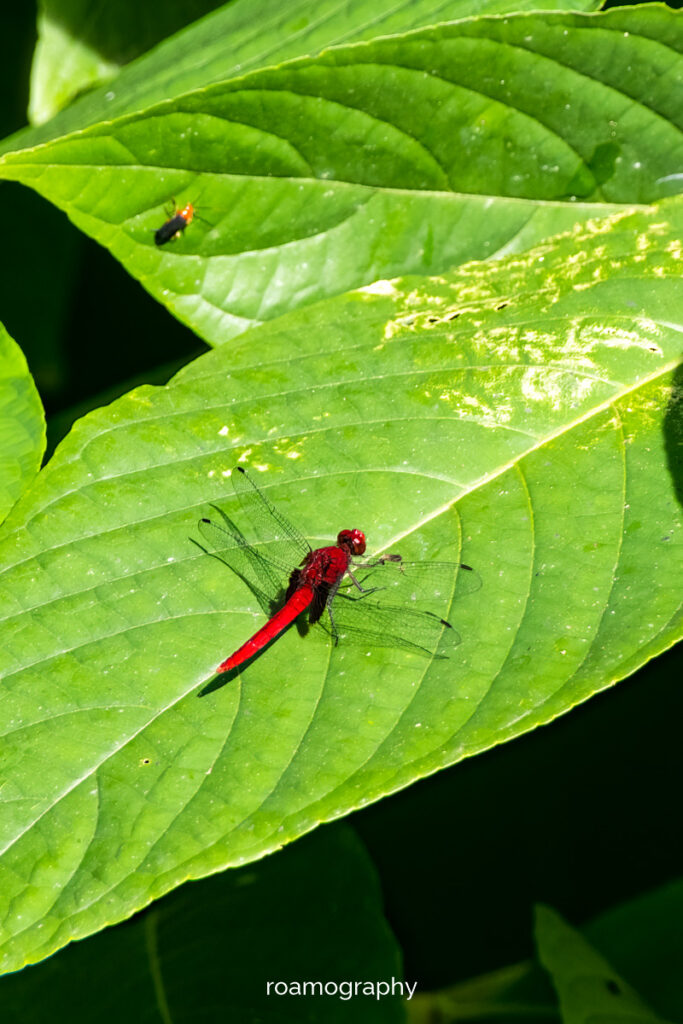
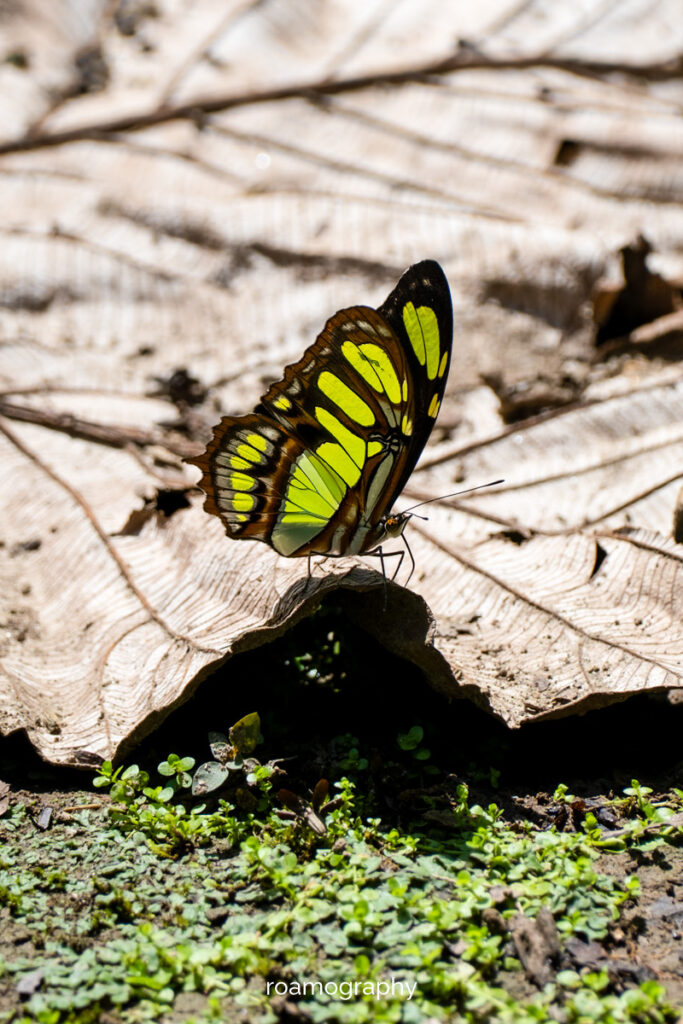
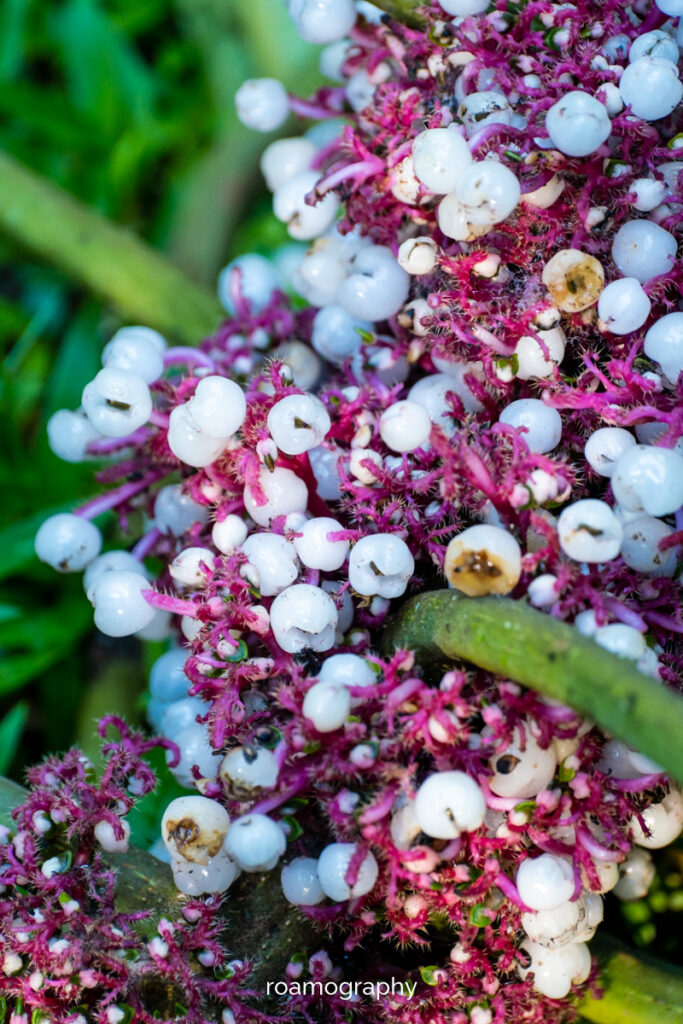
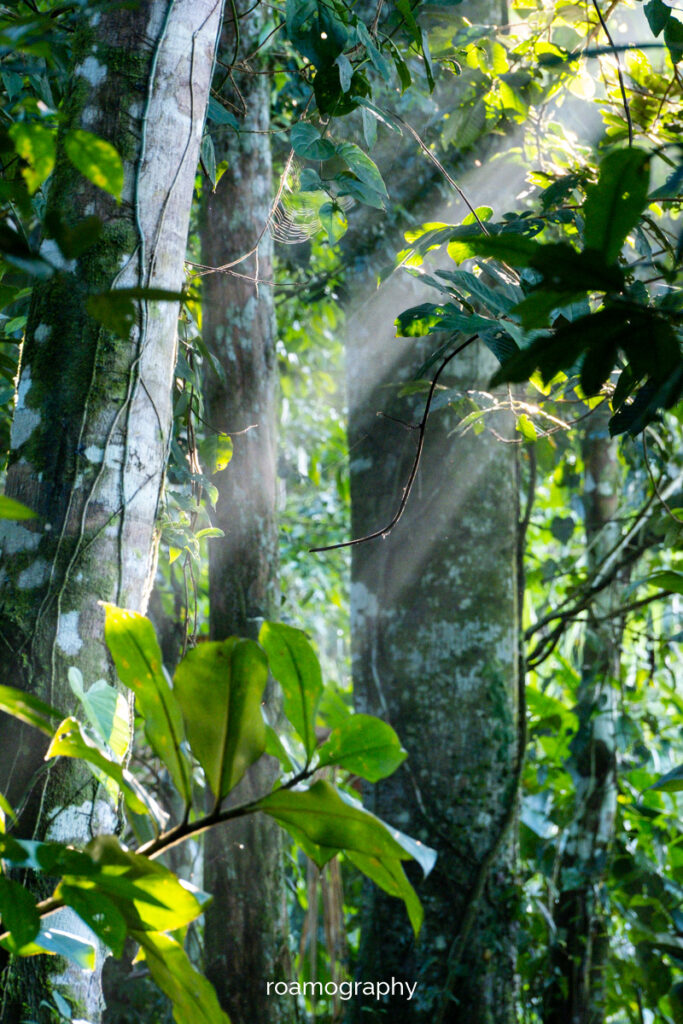
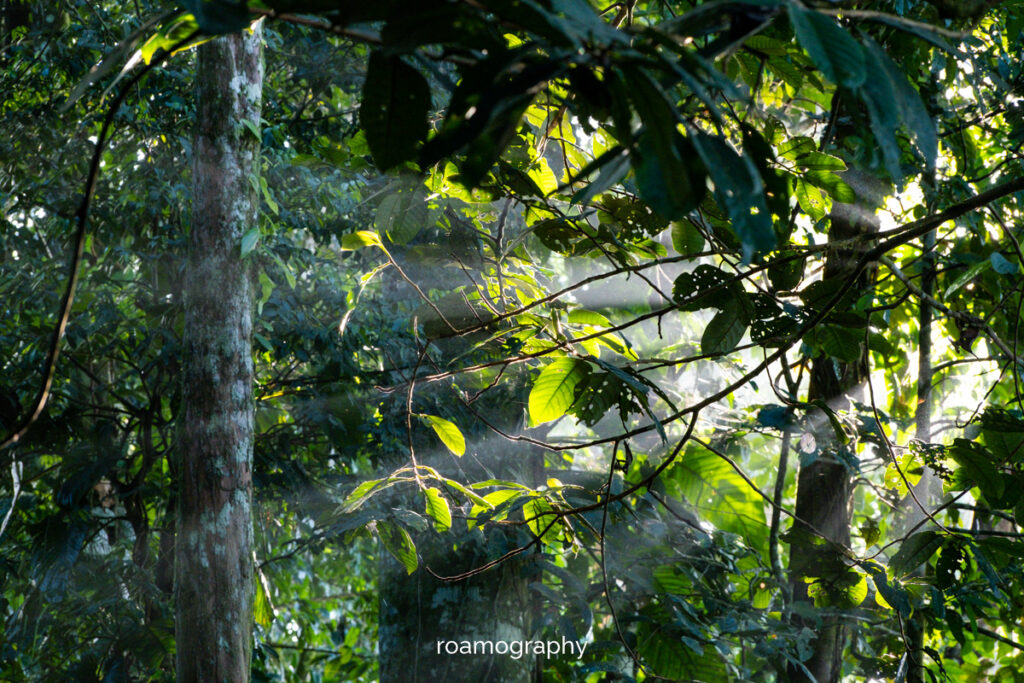

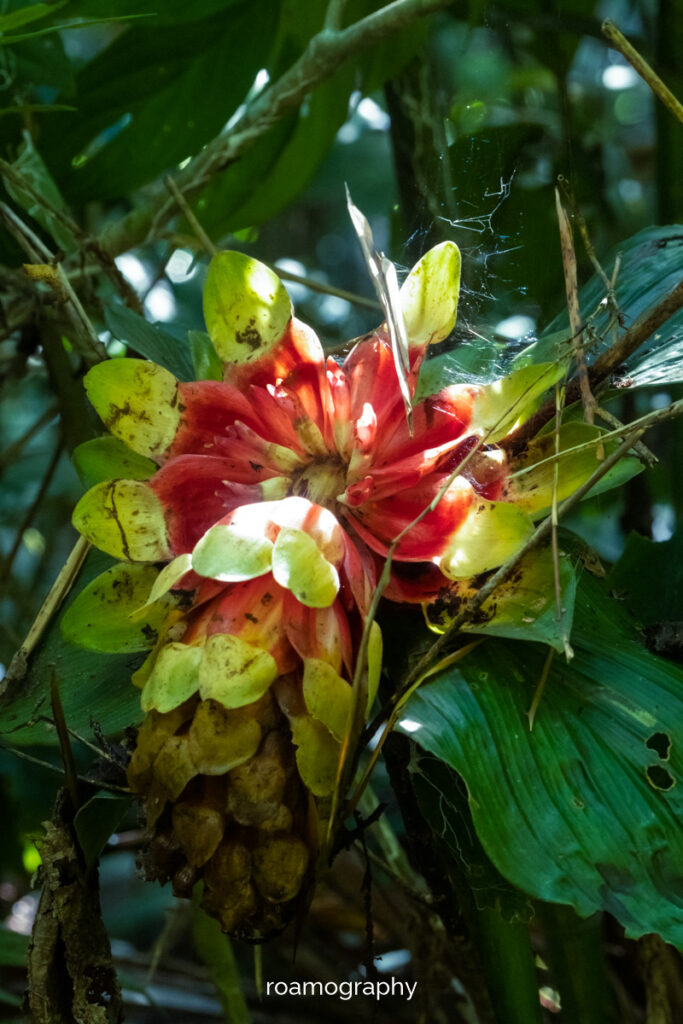
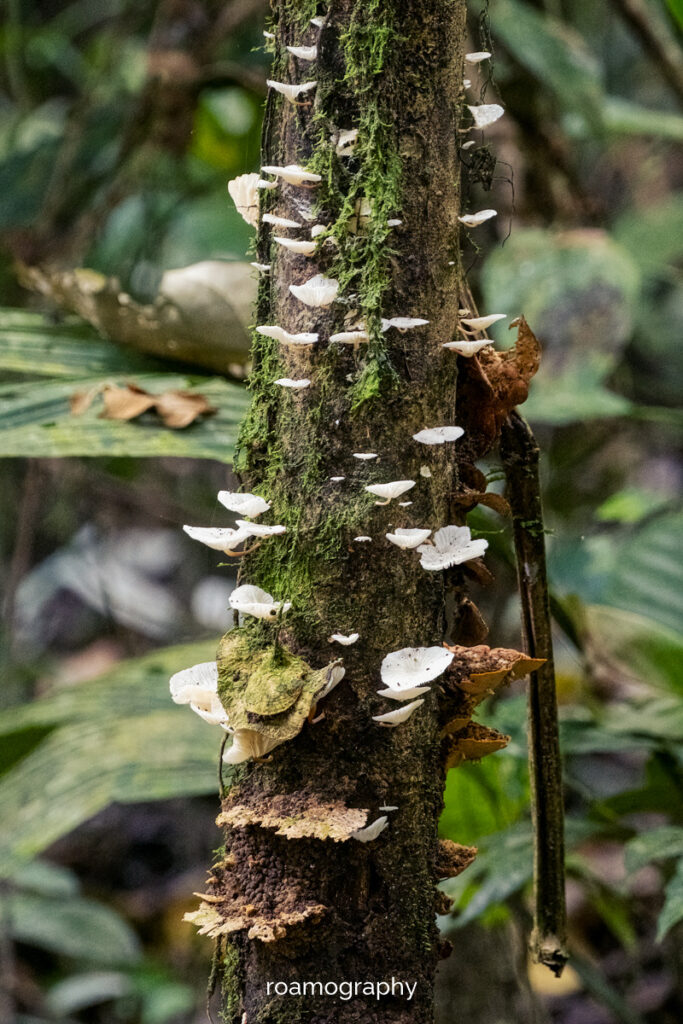
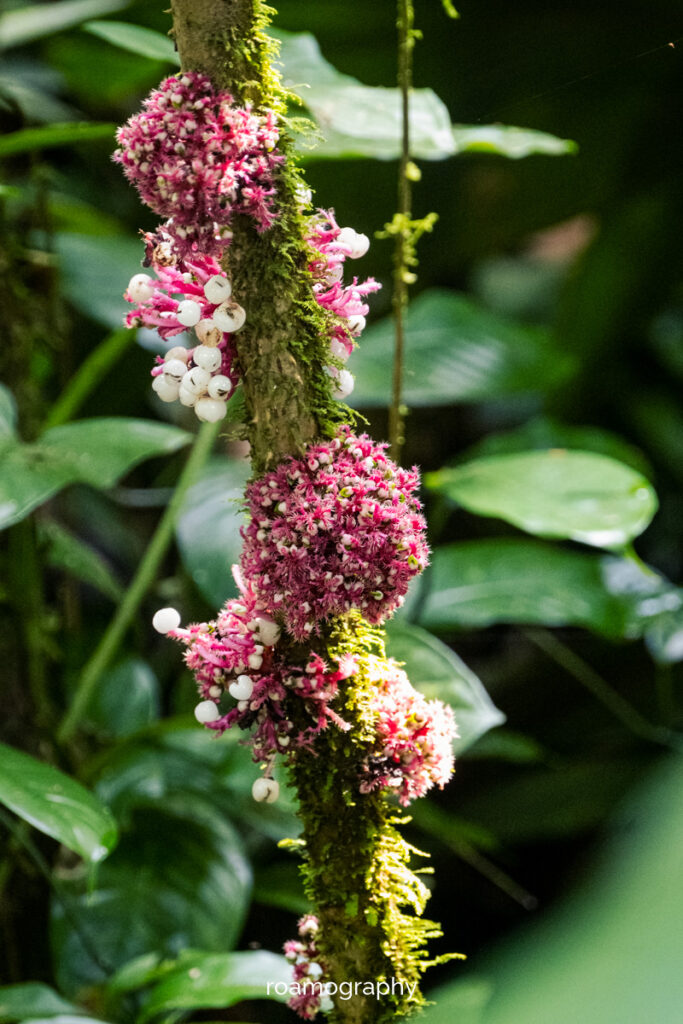
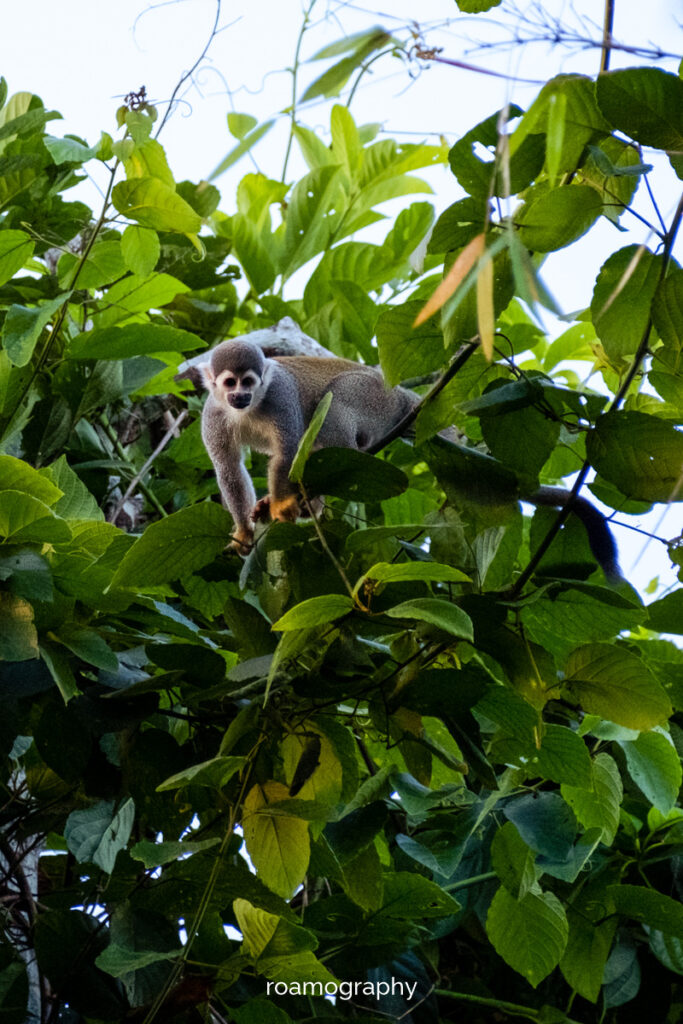
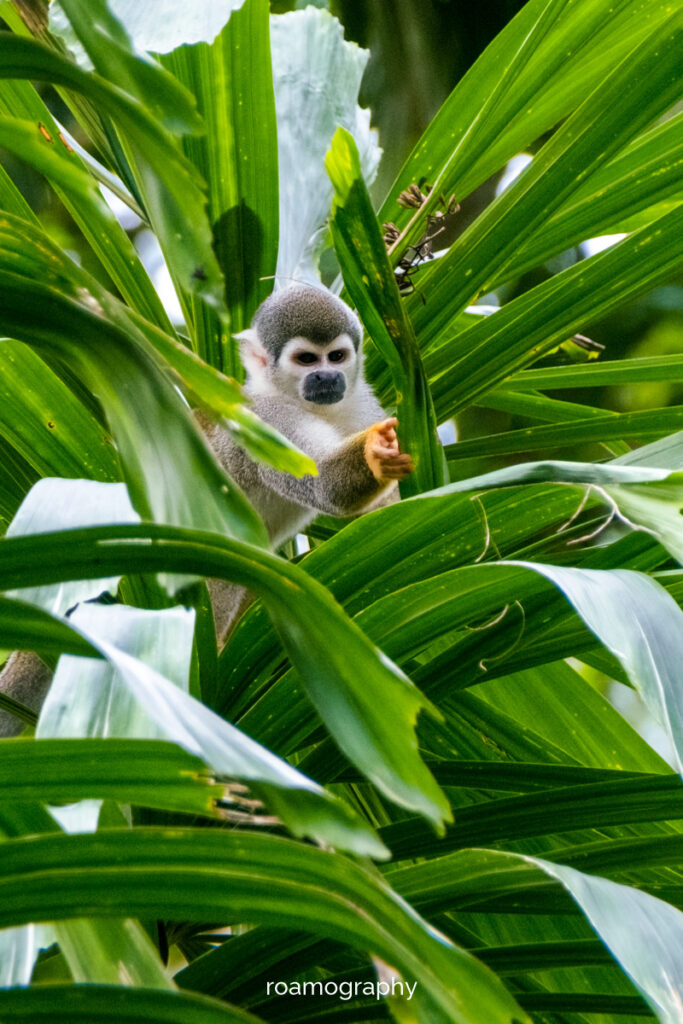
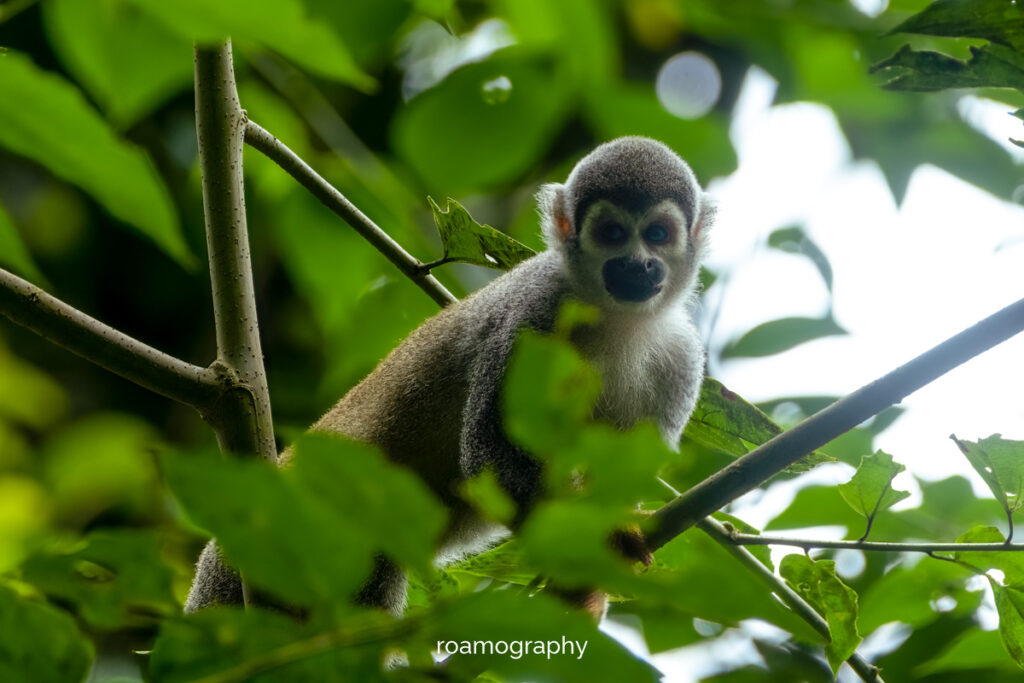
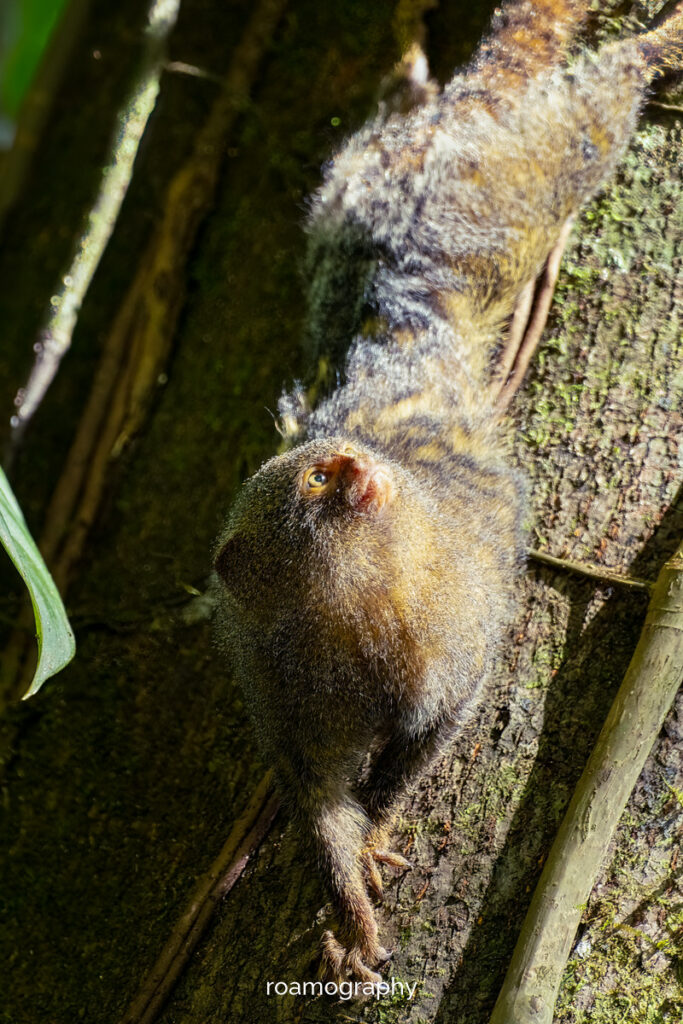
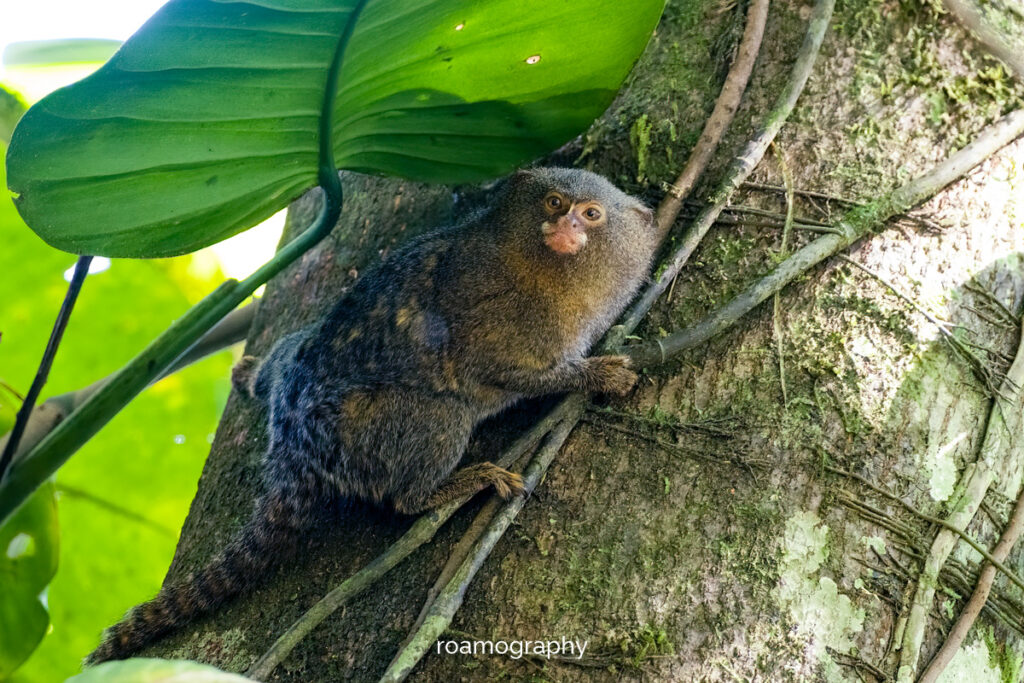

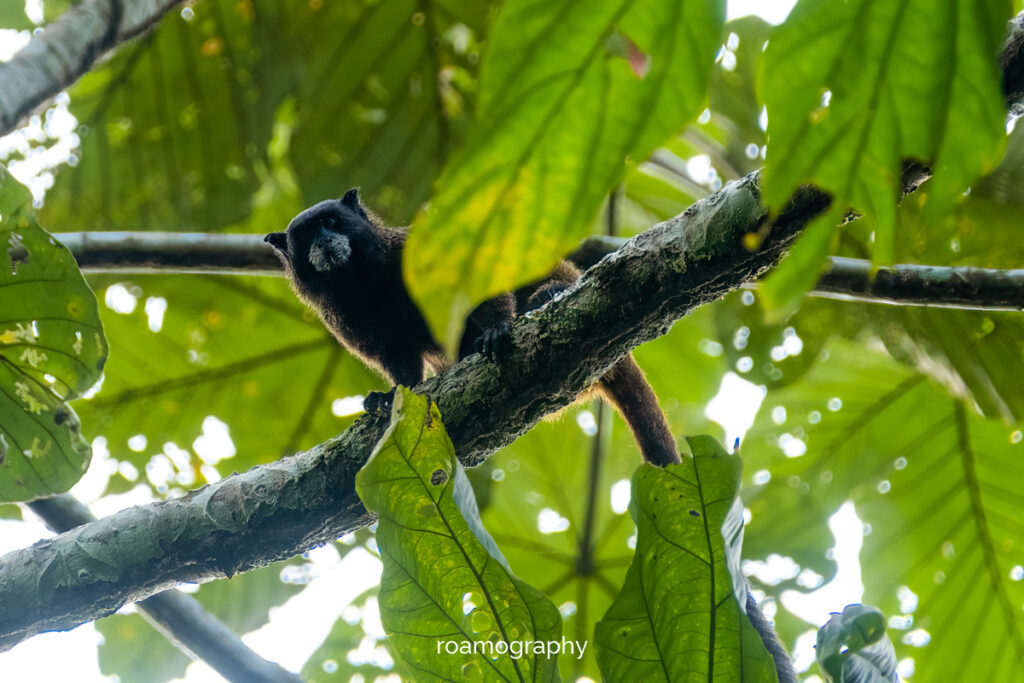
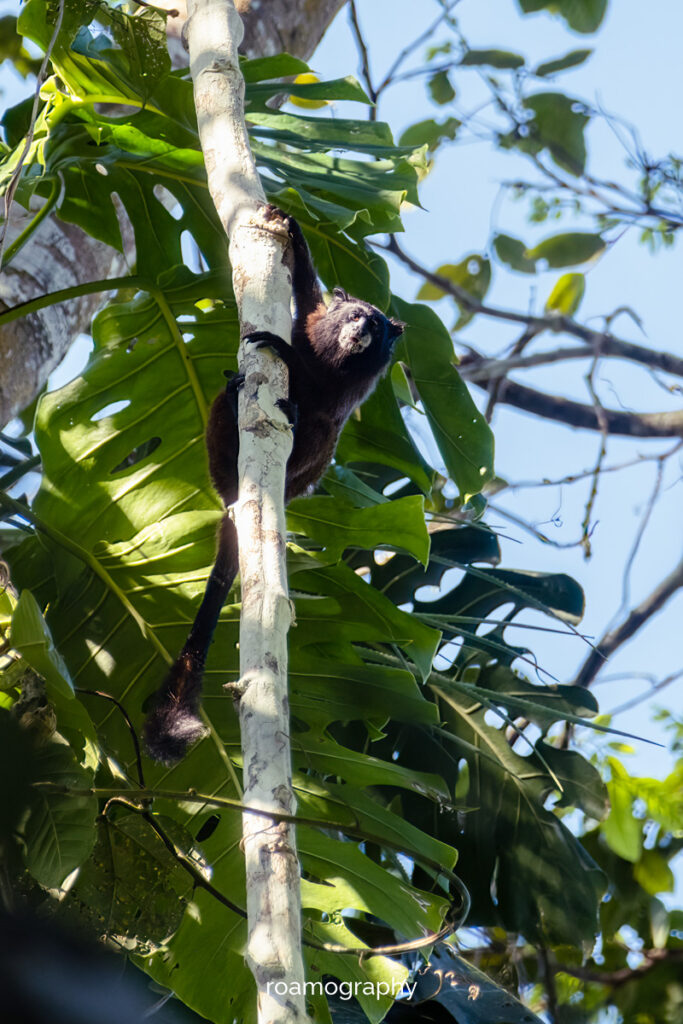
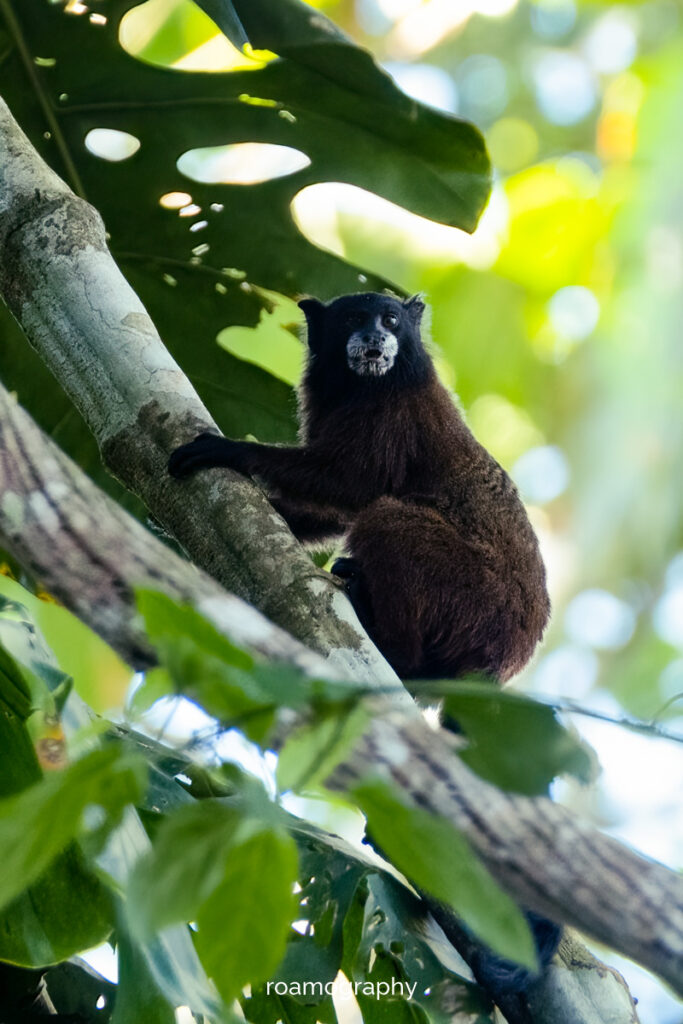
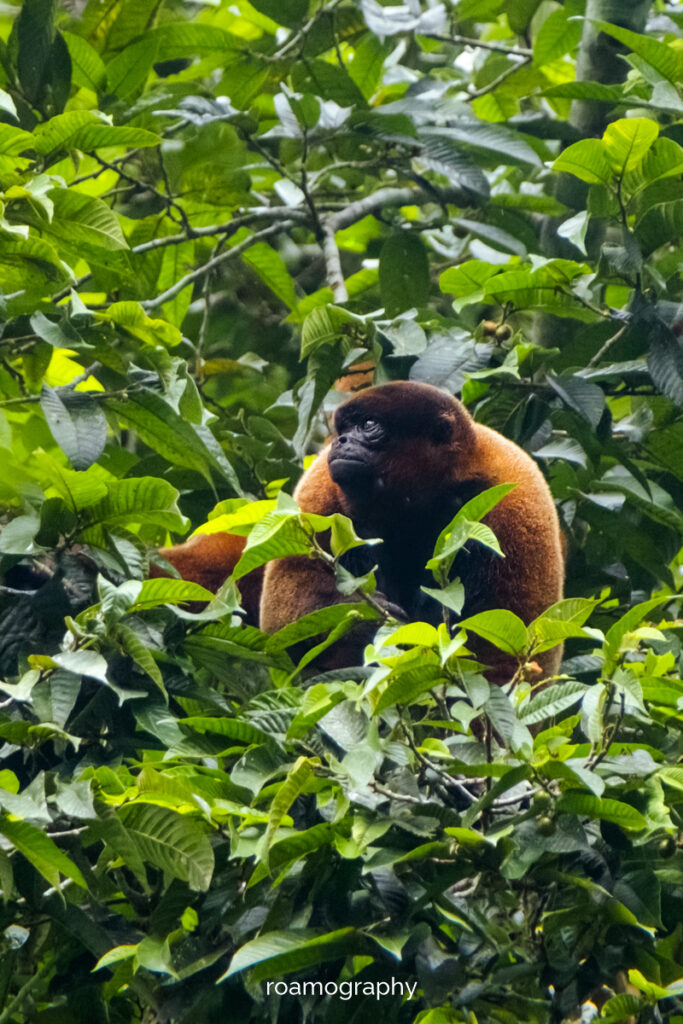

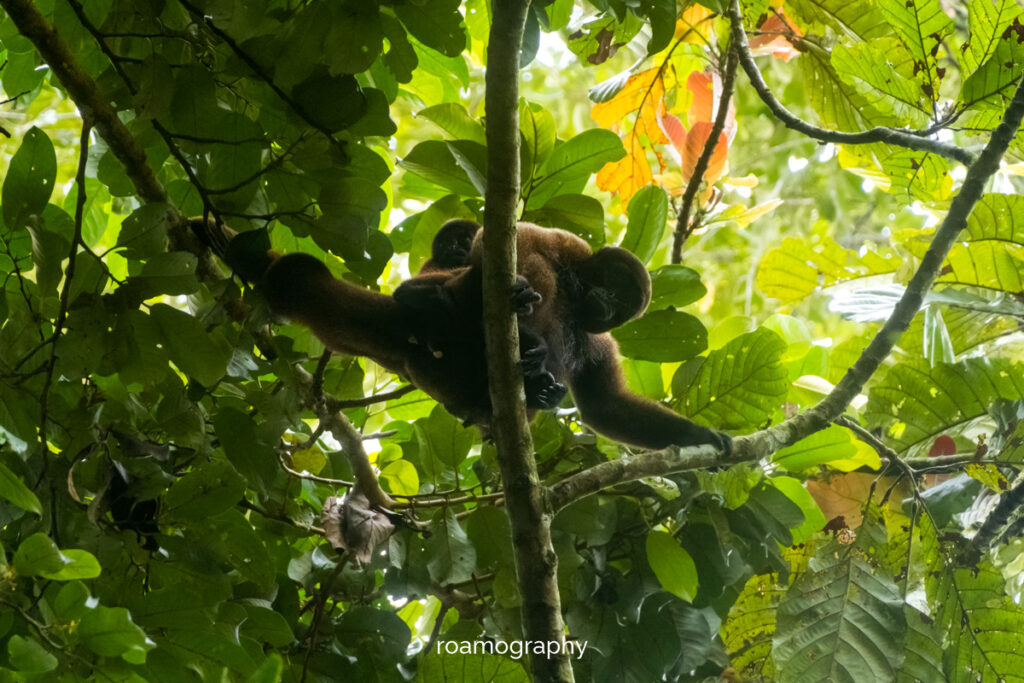
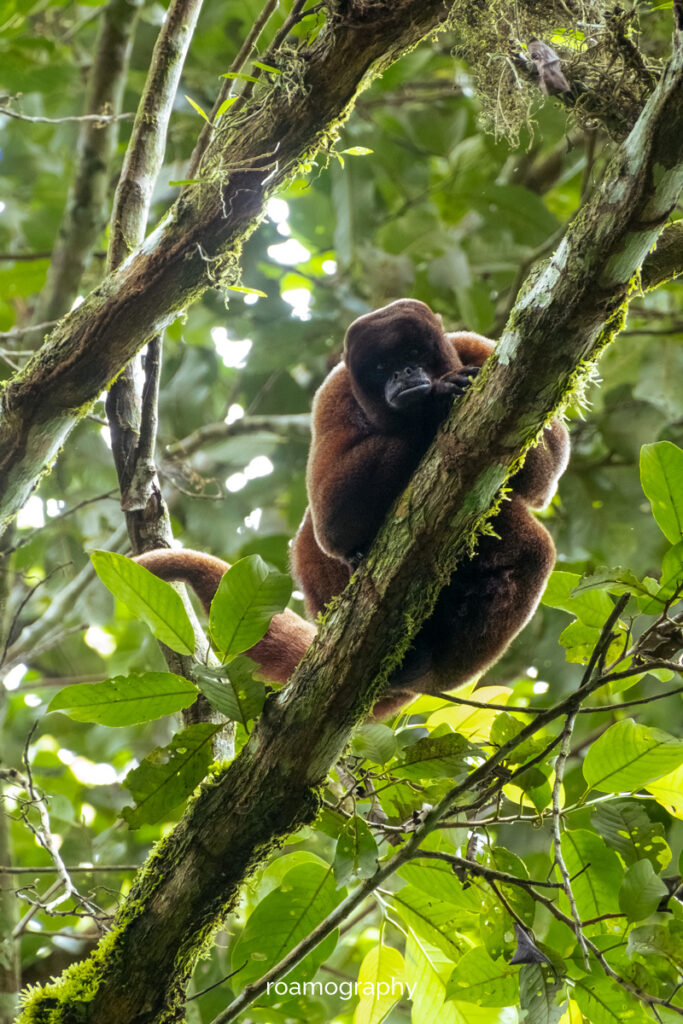
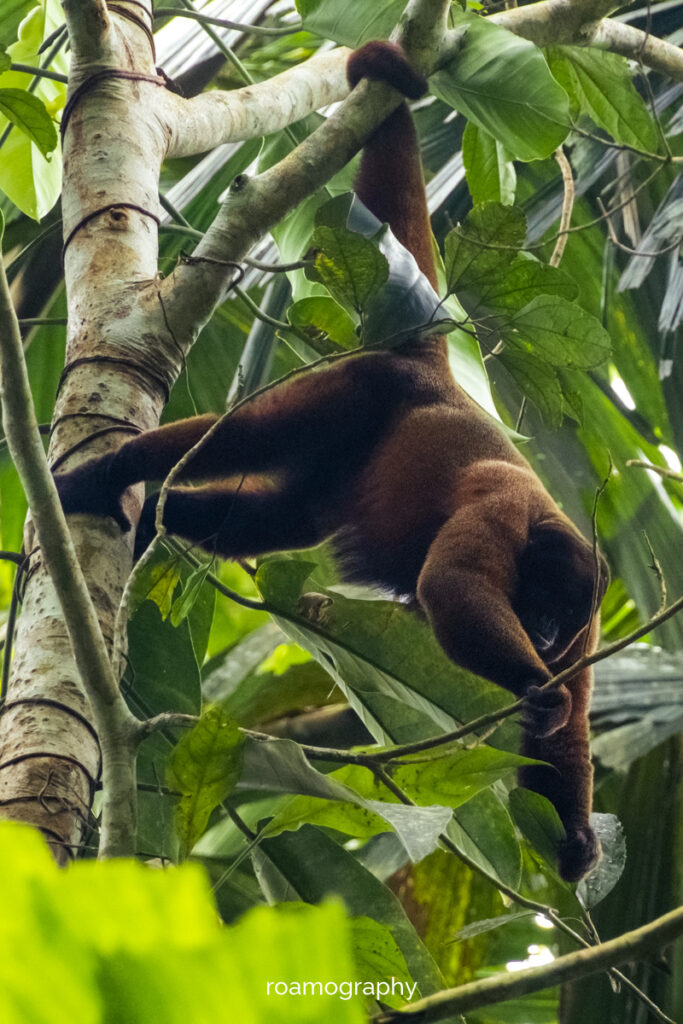
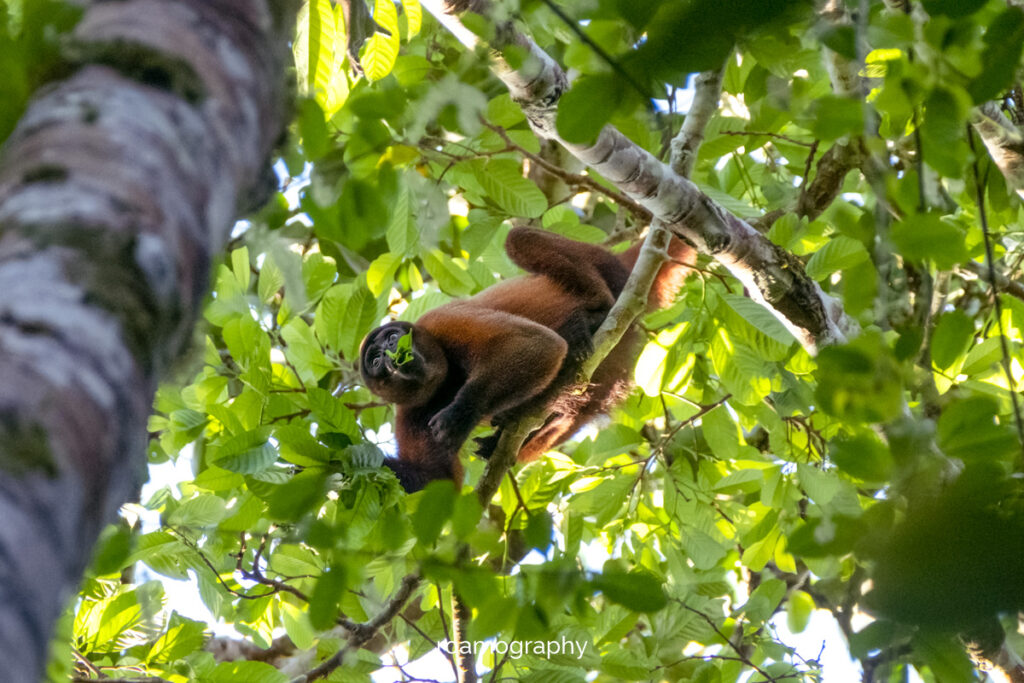
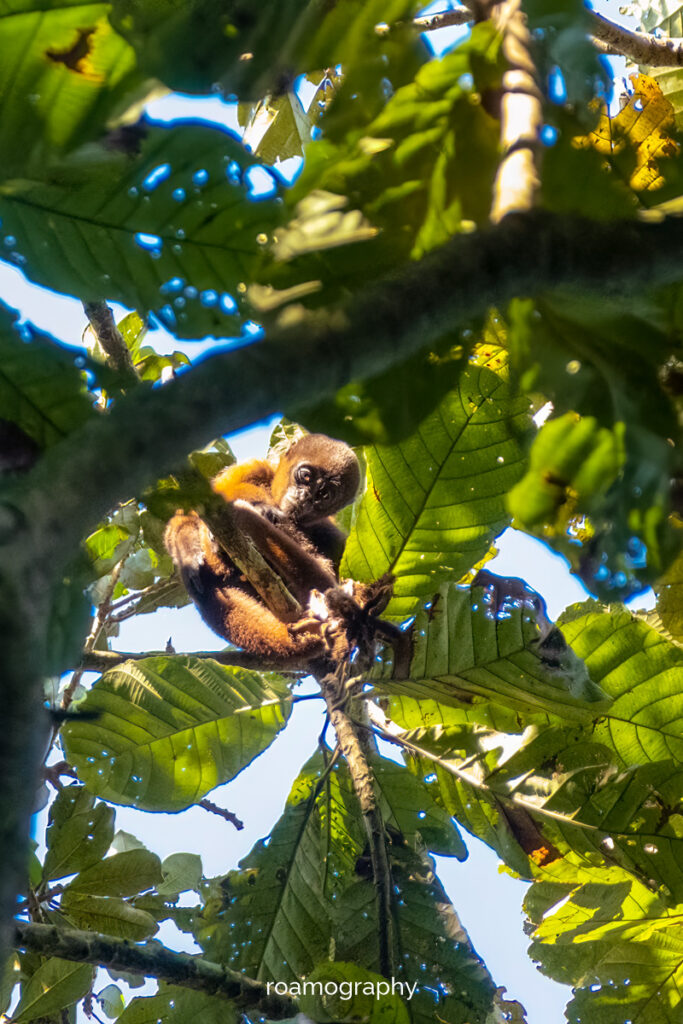
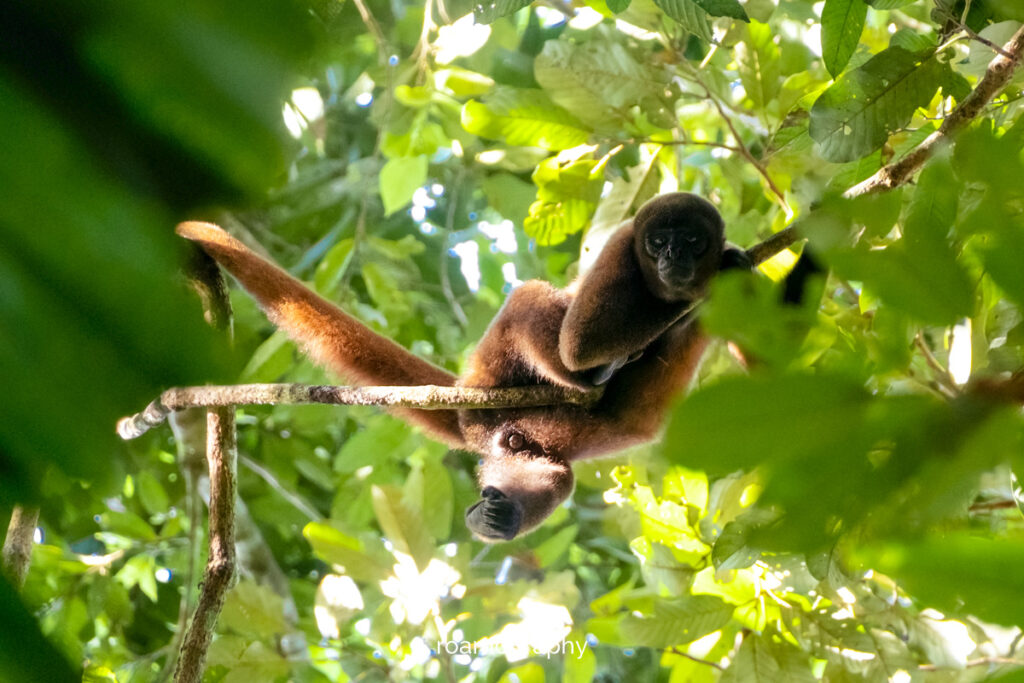
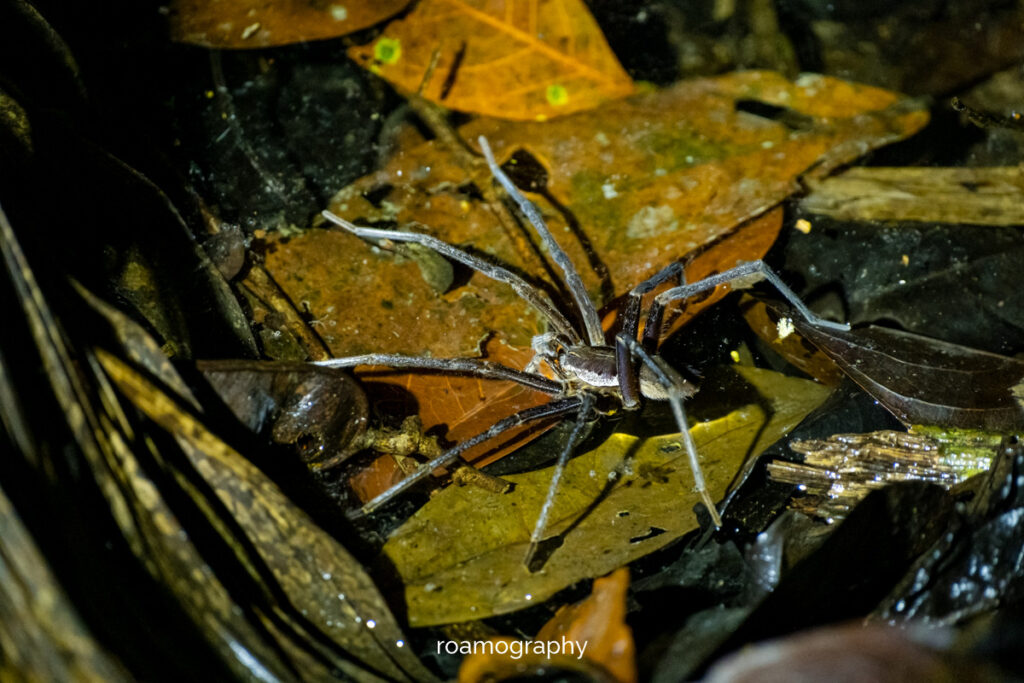
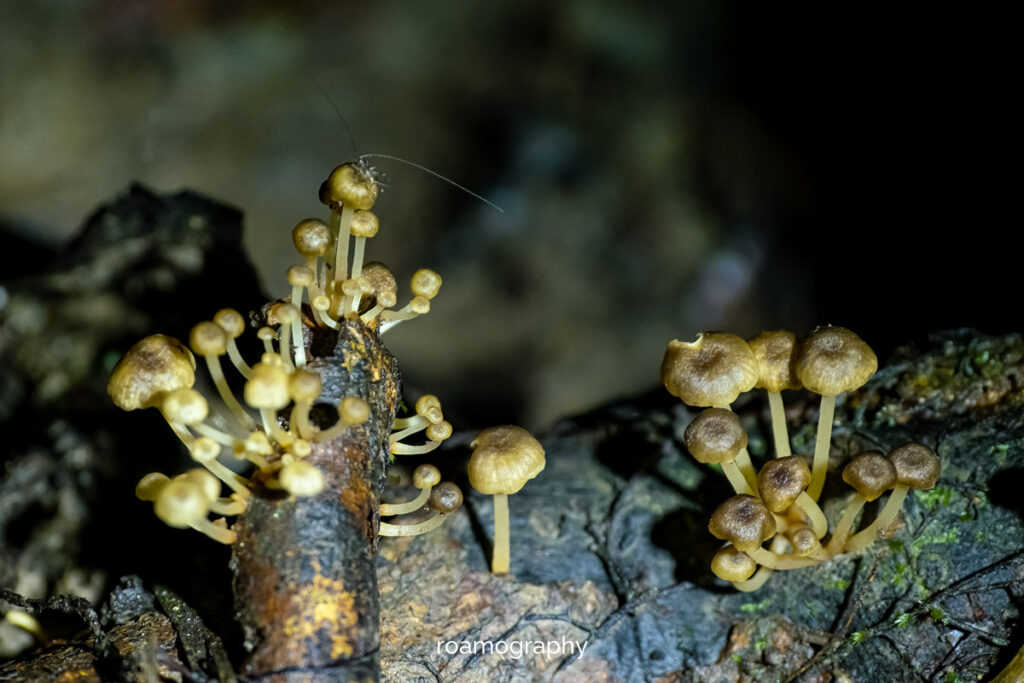
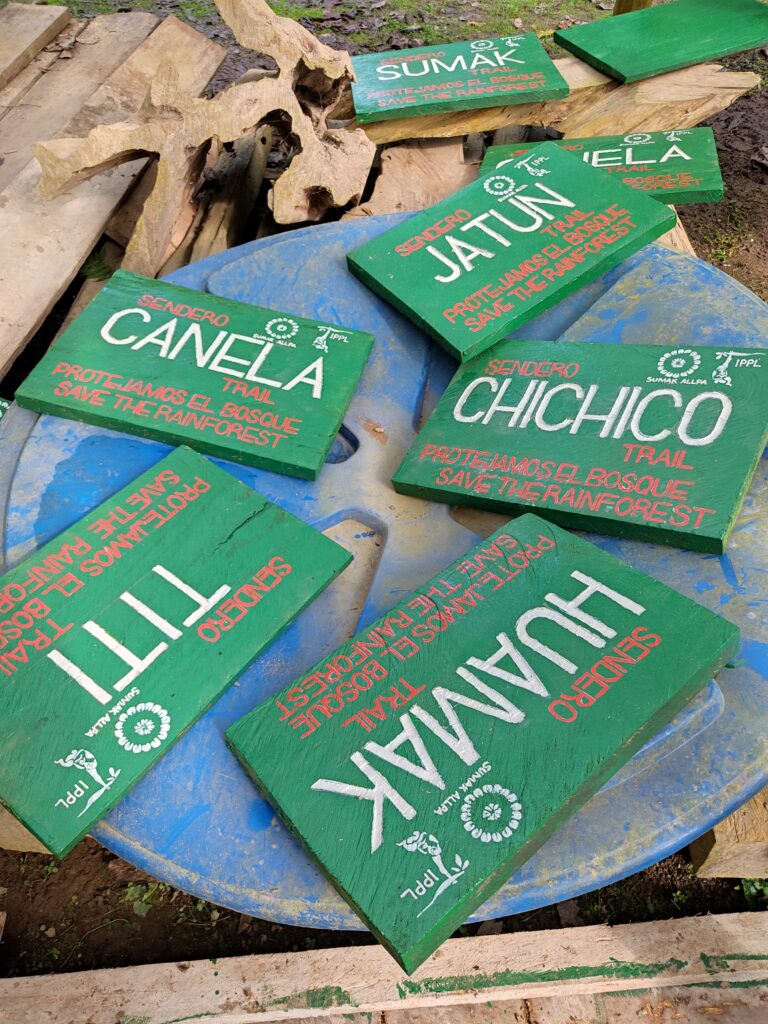
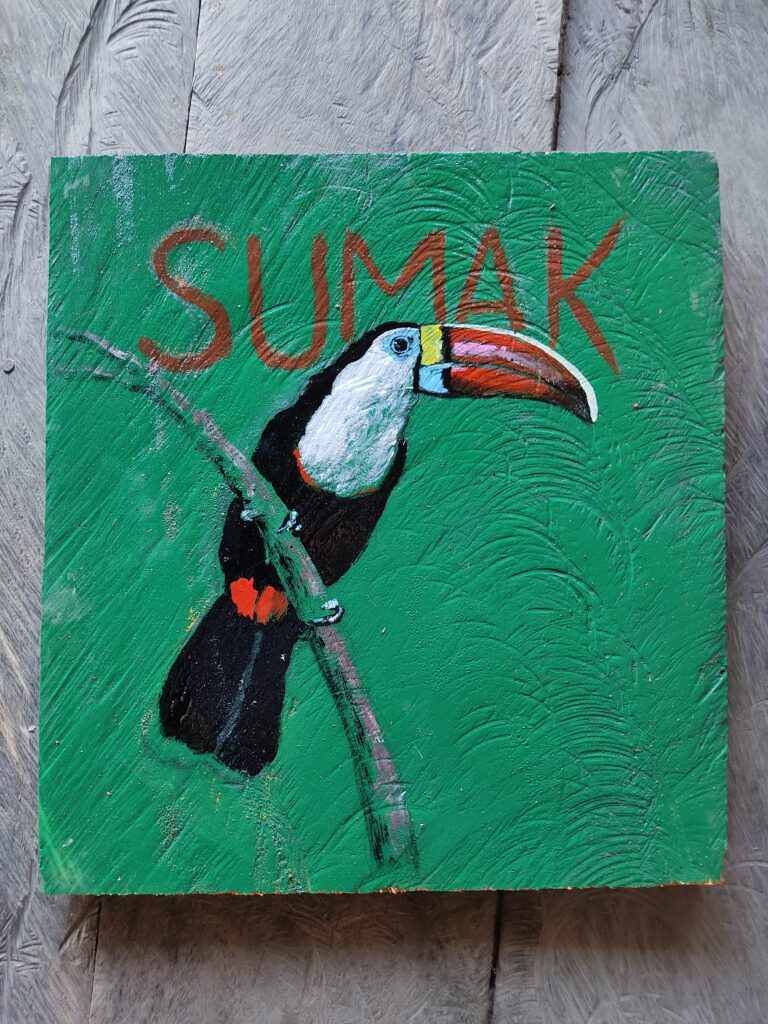
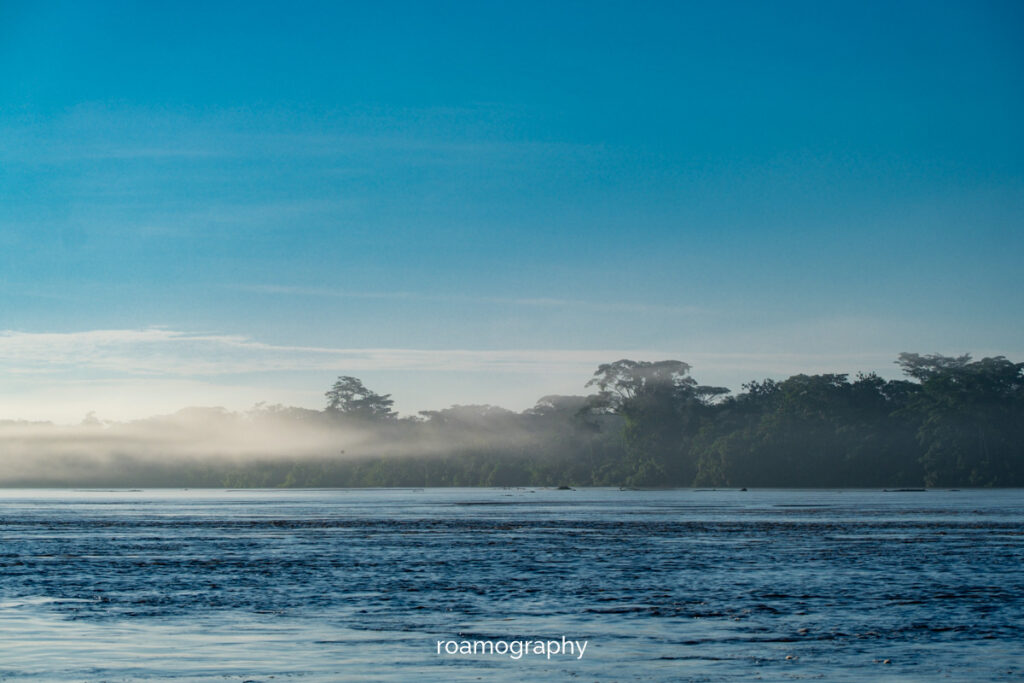
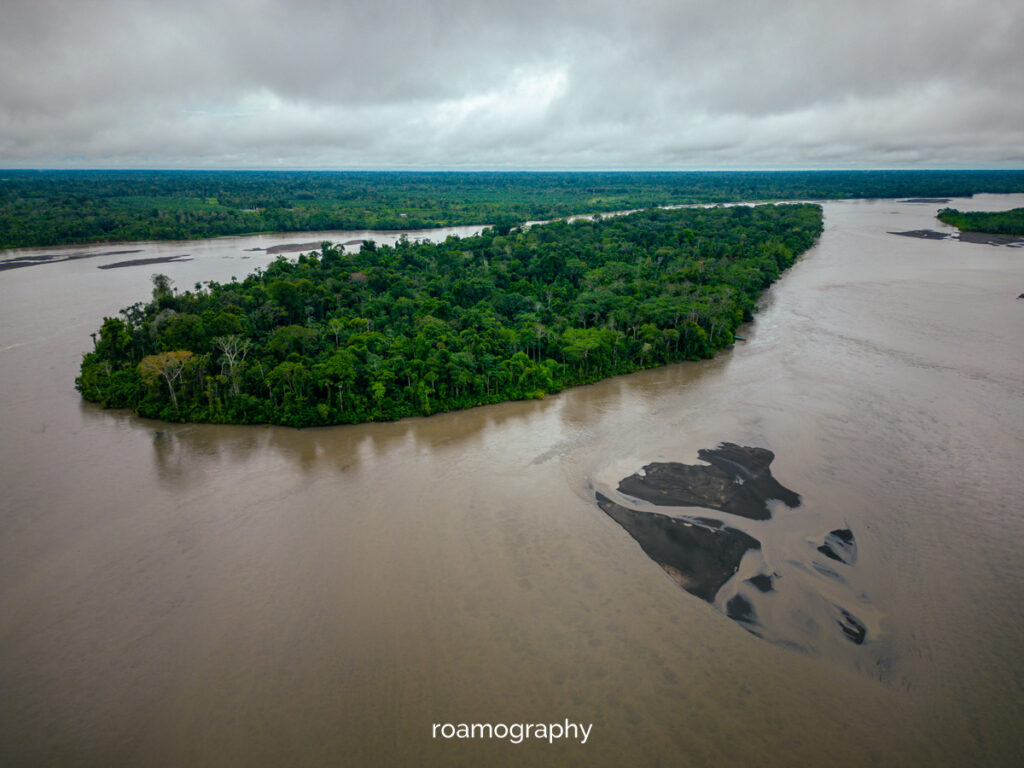
Wyspa Małp
Magiczny tydzień w lesie na wysepce zamieszkanej przez osiem gatunków małp. Jedne tycie, inne włochate, a inne jeszcze aż do przesady słodziuchne, niektóre podchodzące pod samą chatkę, w której mieszkamy (dzieląc ją z ciekawymi insektami, a zwłaszcza z wielkimi karaluchami), inne kompletnie schowane w gęstej dżungli… Brodzimy w błocie, zadzieramy głowy, wypatrując mieszkańców koron drzew, pstrykamy zdjęcia, malujemy też tablice z oznaczeniami szlaków, przecinających wyspę. Z żalem opuszczamy to magiczne miejsce, trzymając kciuki za powodzenie małpich projektów Sumak Allpa.
We jump onto a boat heading from El Coca to the border. On the way we pass a couple of tiny villages, picturesquely clinging to the shore. After a day’s journey, we land in the last village in Ecuador. The place is a small one, with a small but sufficient hostel and hotel base. Here, we stamp our passports, certifying our departure from Colombia. Every other rocafuertean offers to take us across the border by boat, and we manage to find a good bargain by engaging in in-front-of-the-store beery conversations; one of the ladies is planning to sail to the other side the next day and has already been paid for her return, so the price will be lower, especially as the cheerful Frenchmen we met on the previous boat are joining our team.
So we set out in our tiny wobbly boat, slightly overloaded and barely above the water level, and slowly head towards Peru…
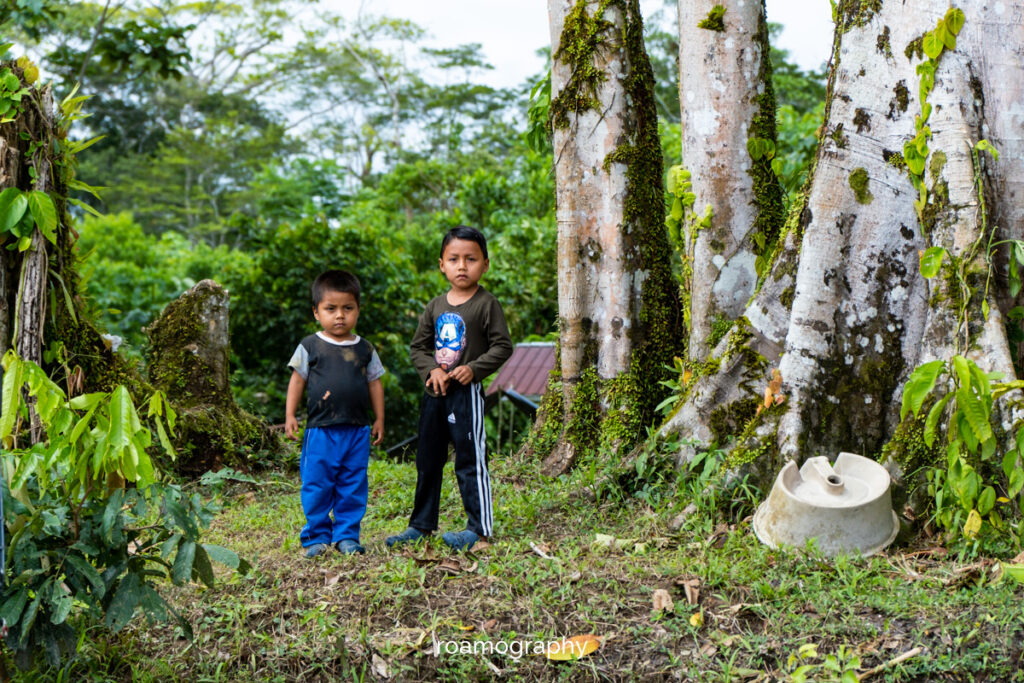
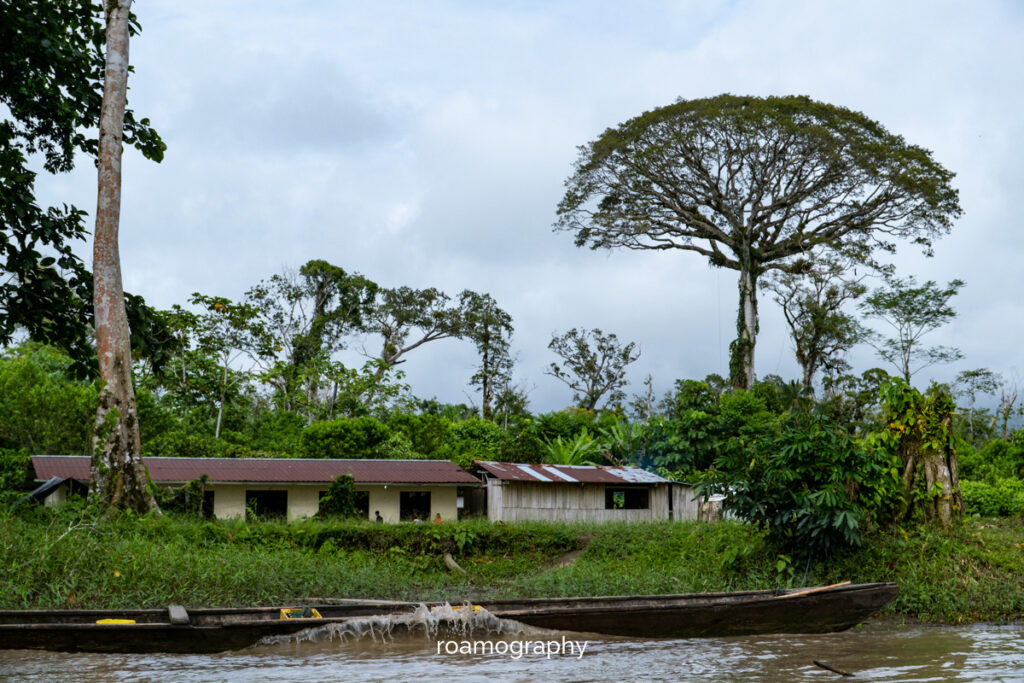
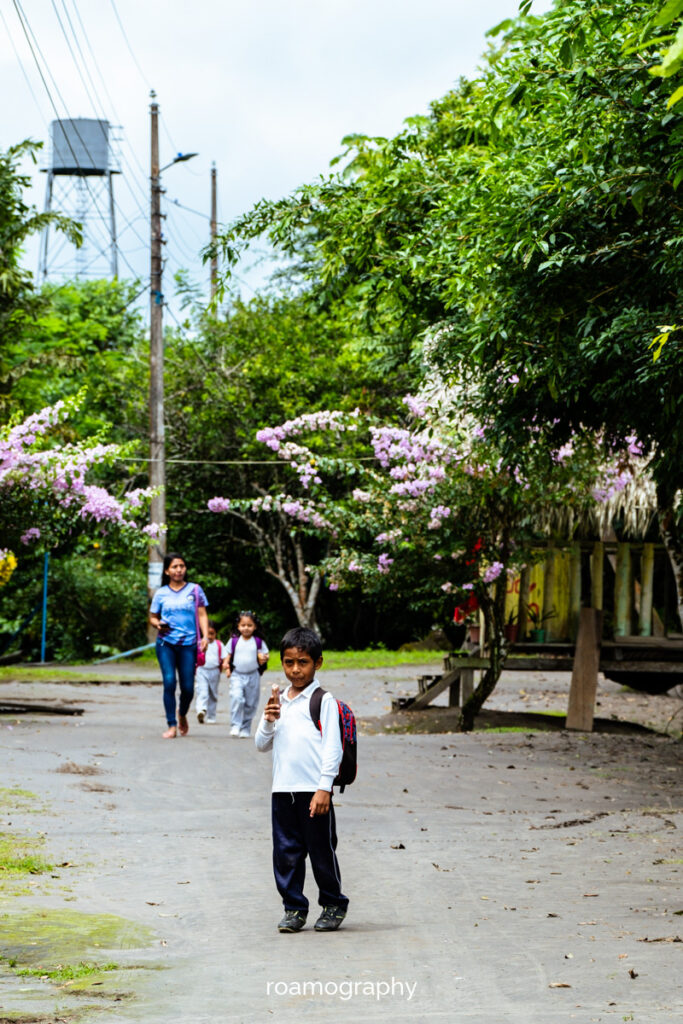
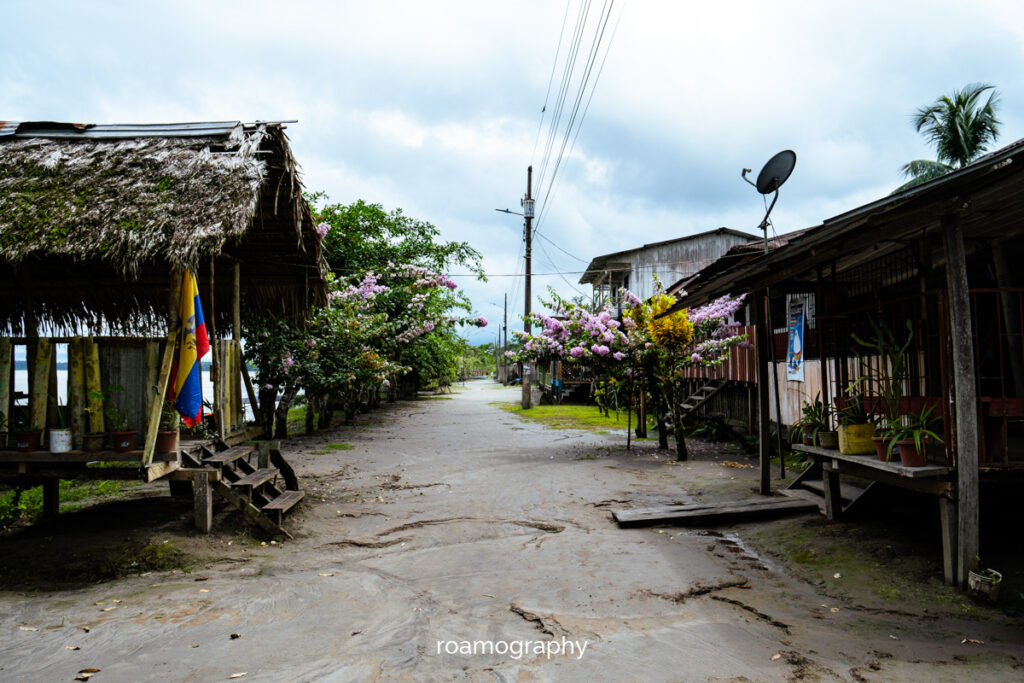
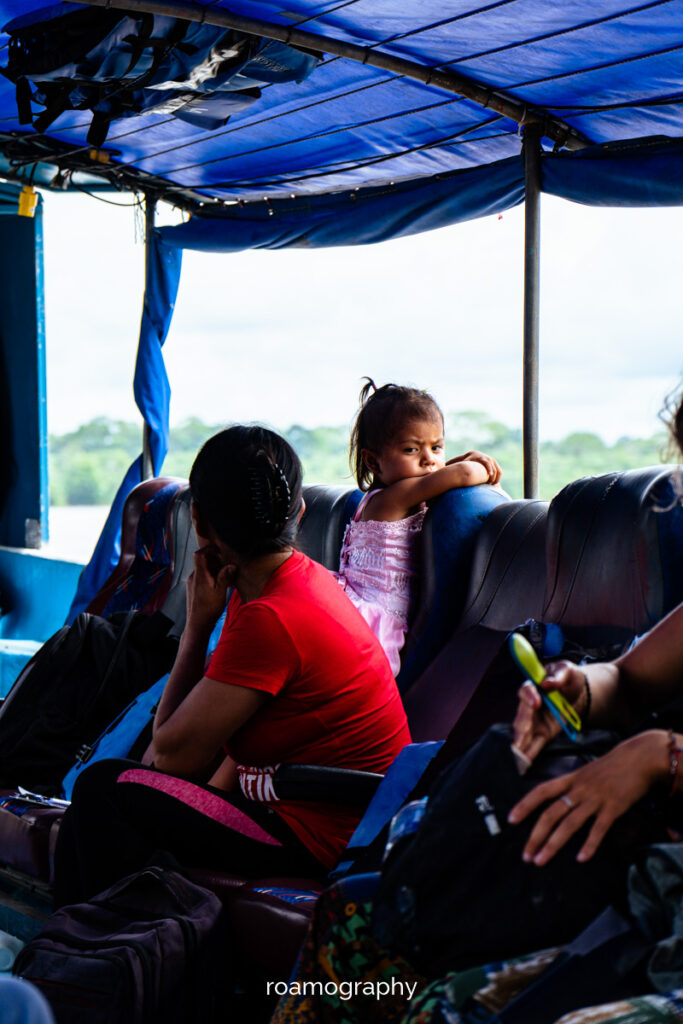
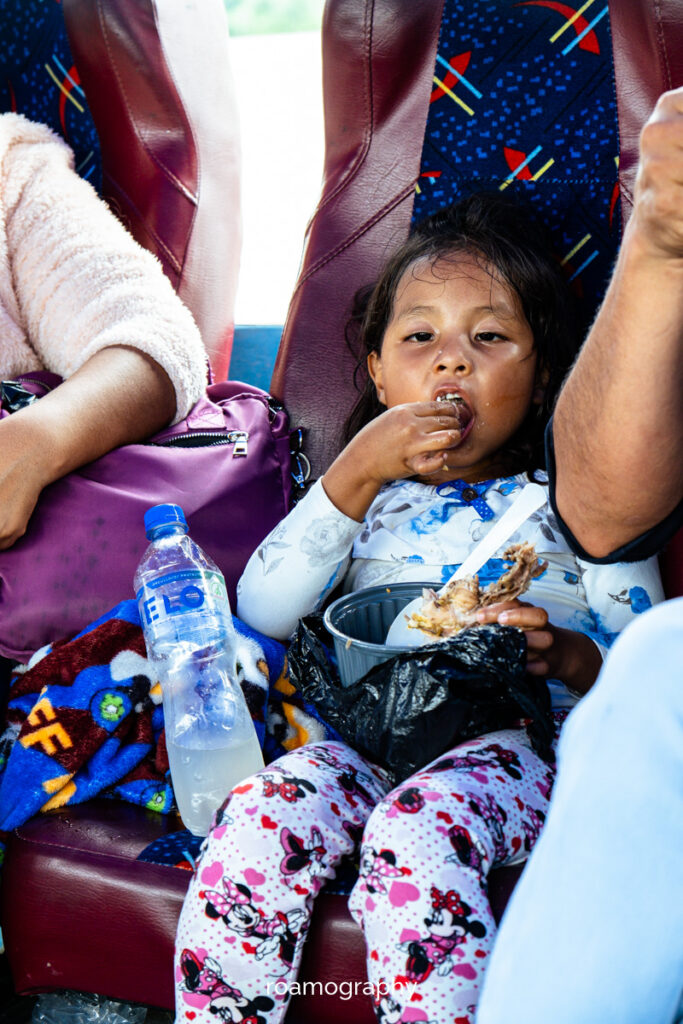
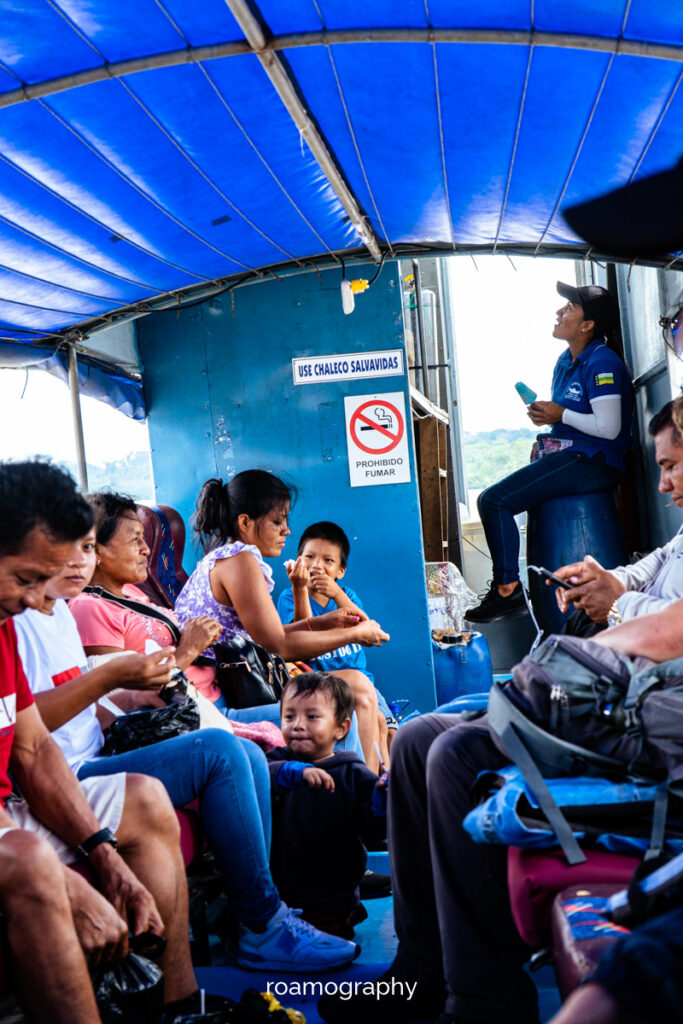
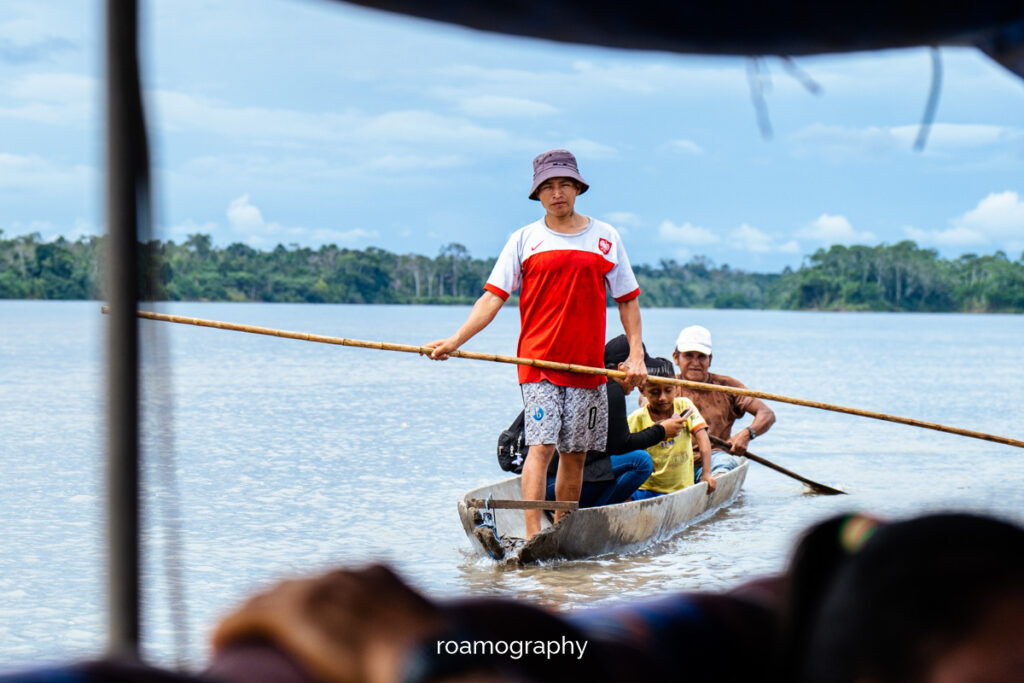
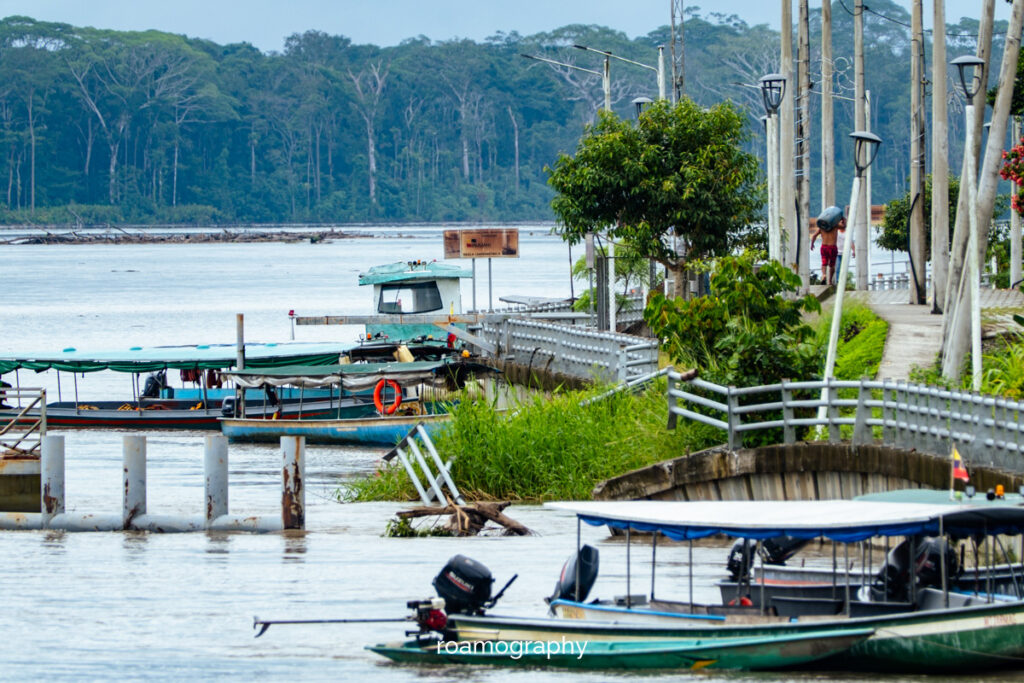
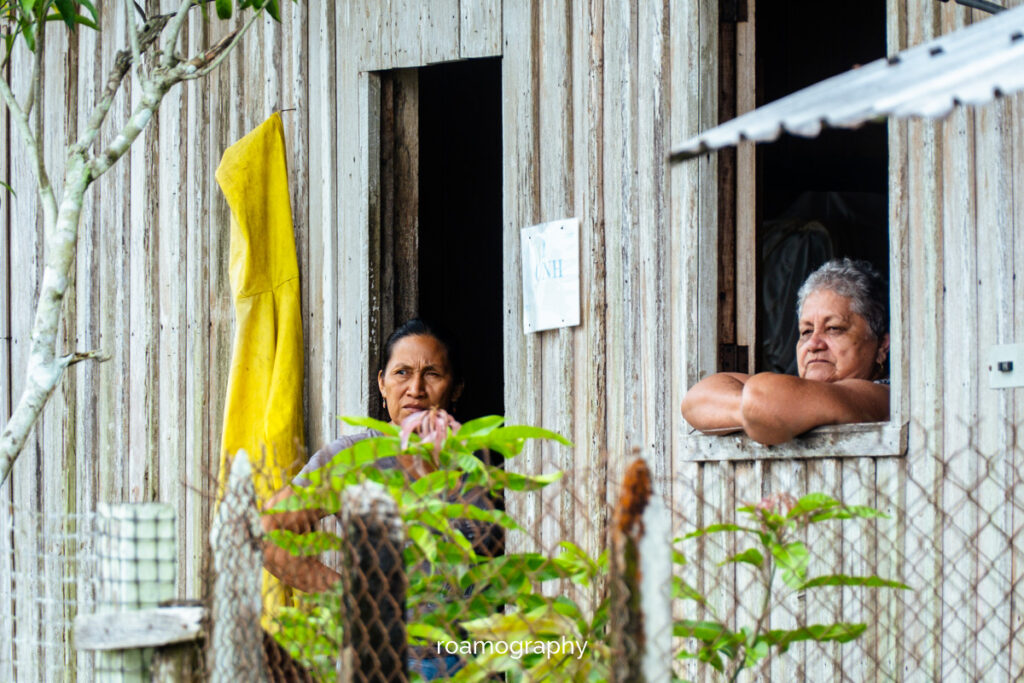
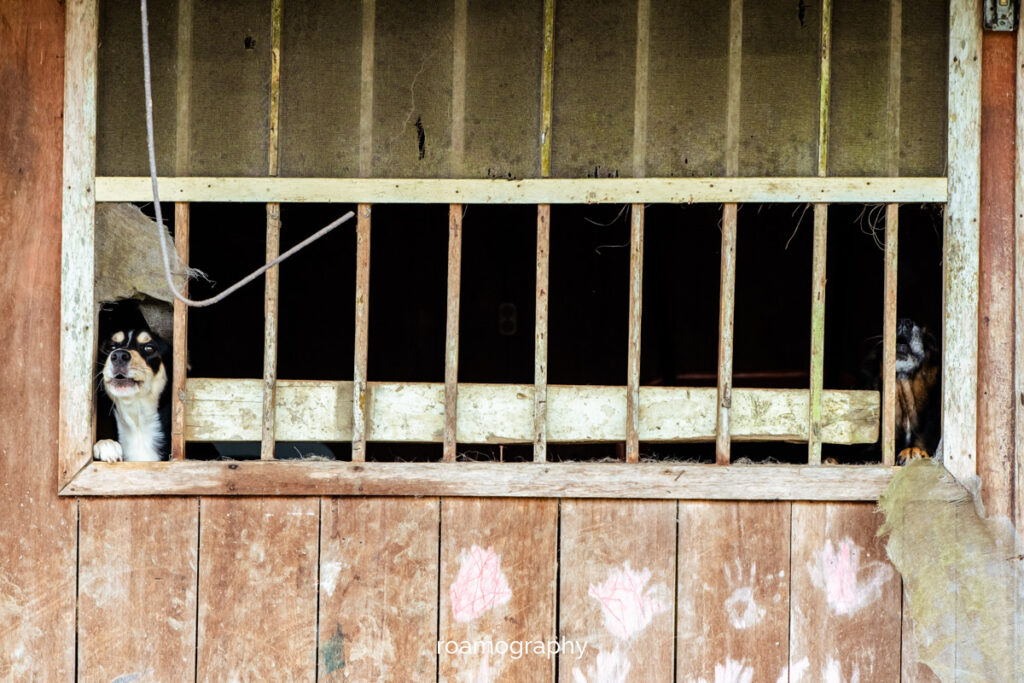
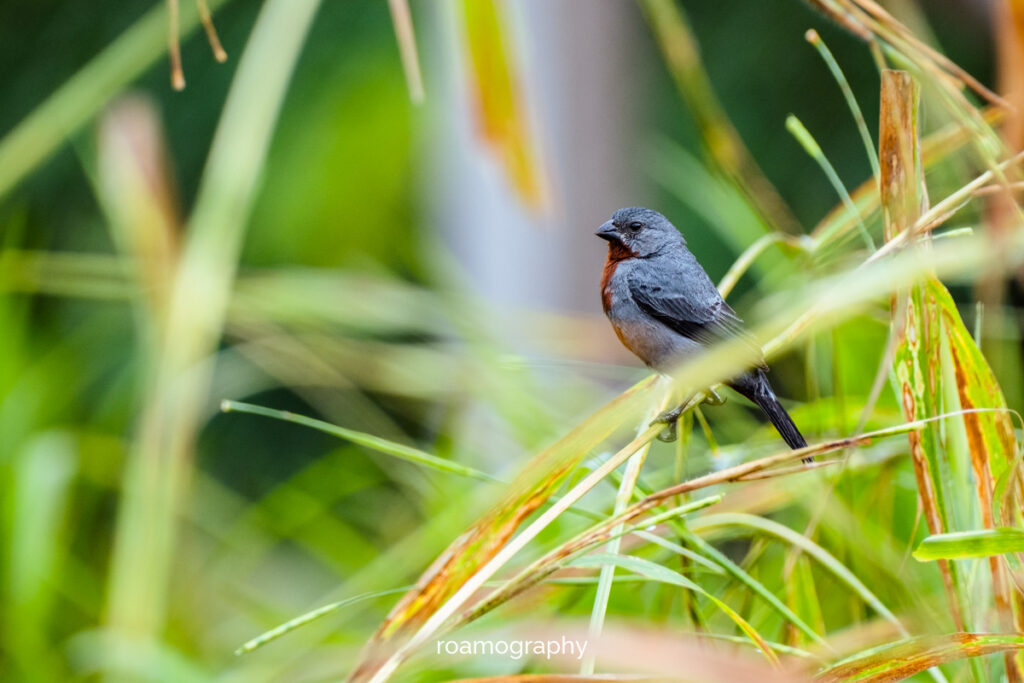
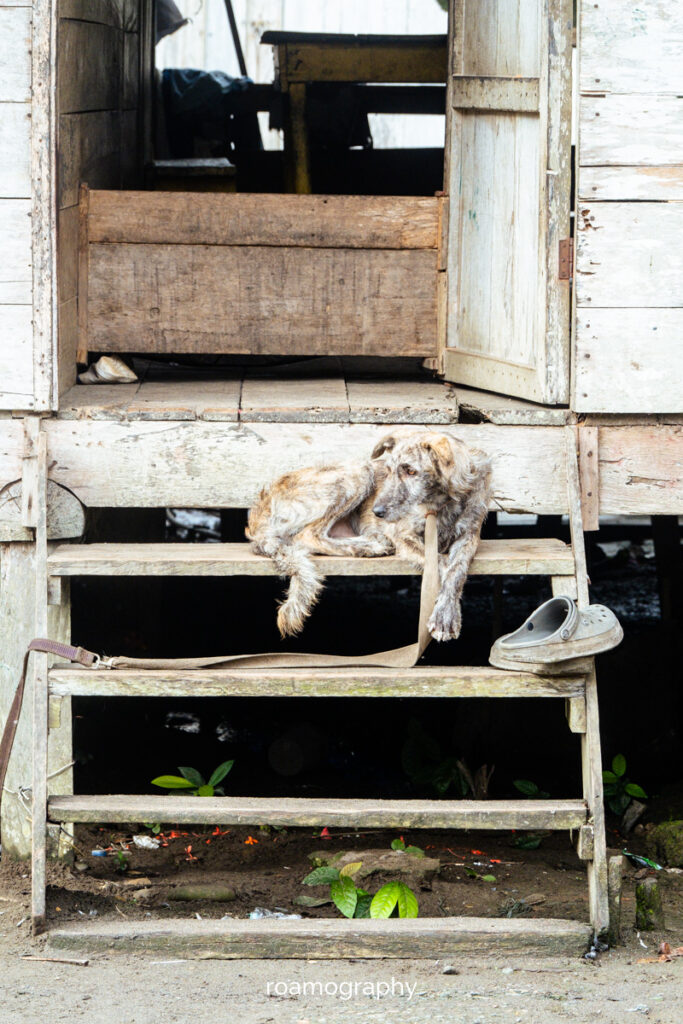
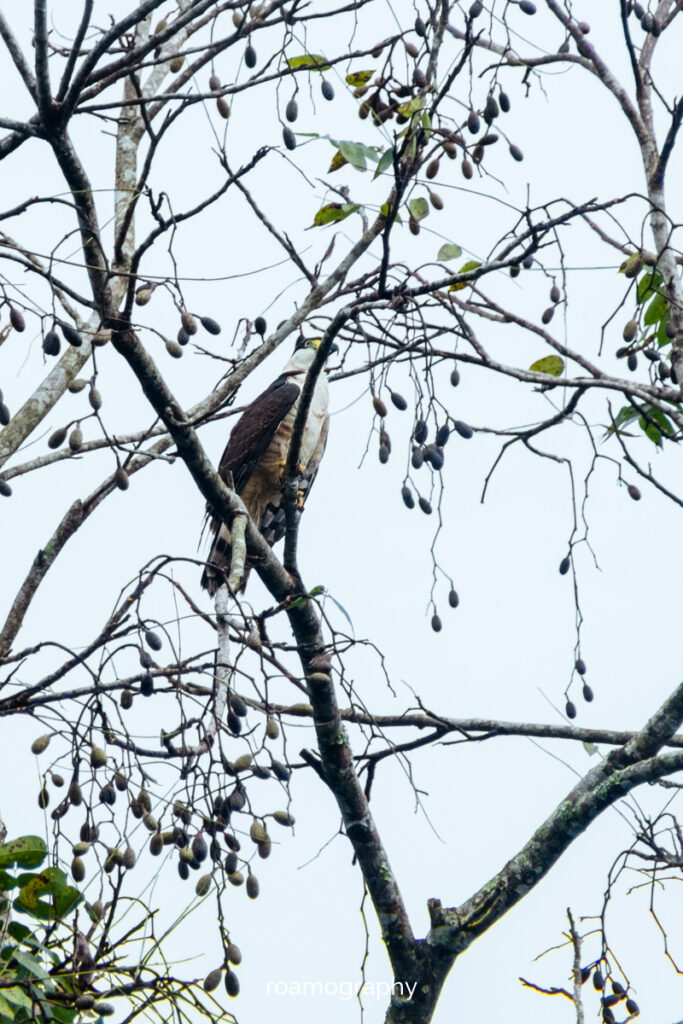
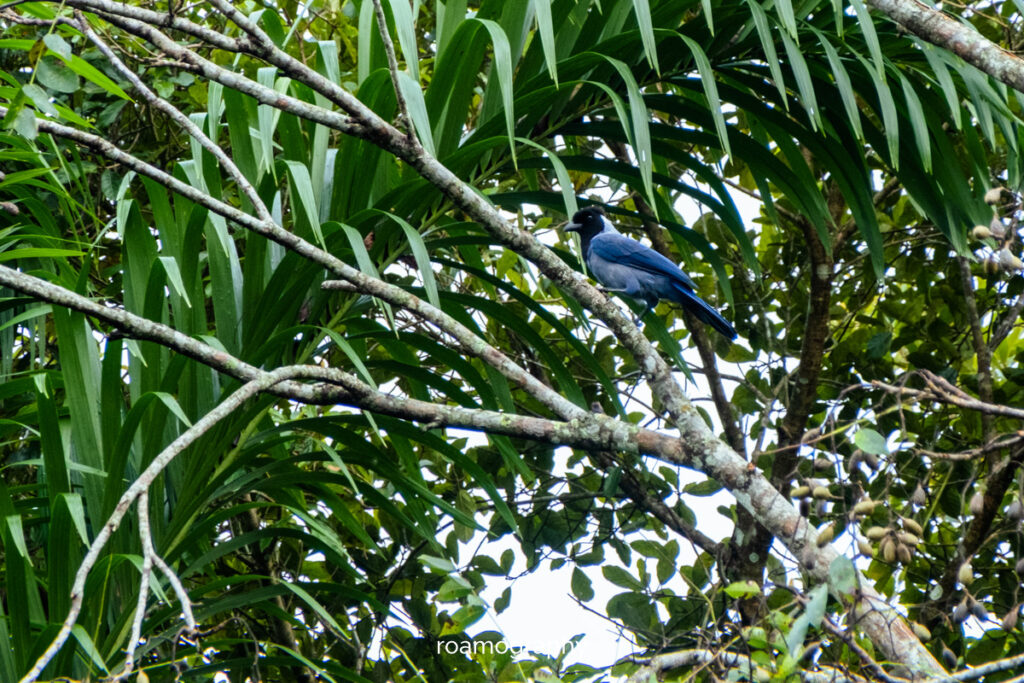
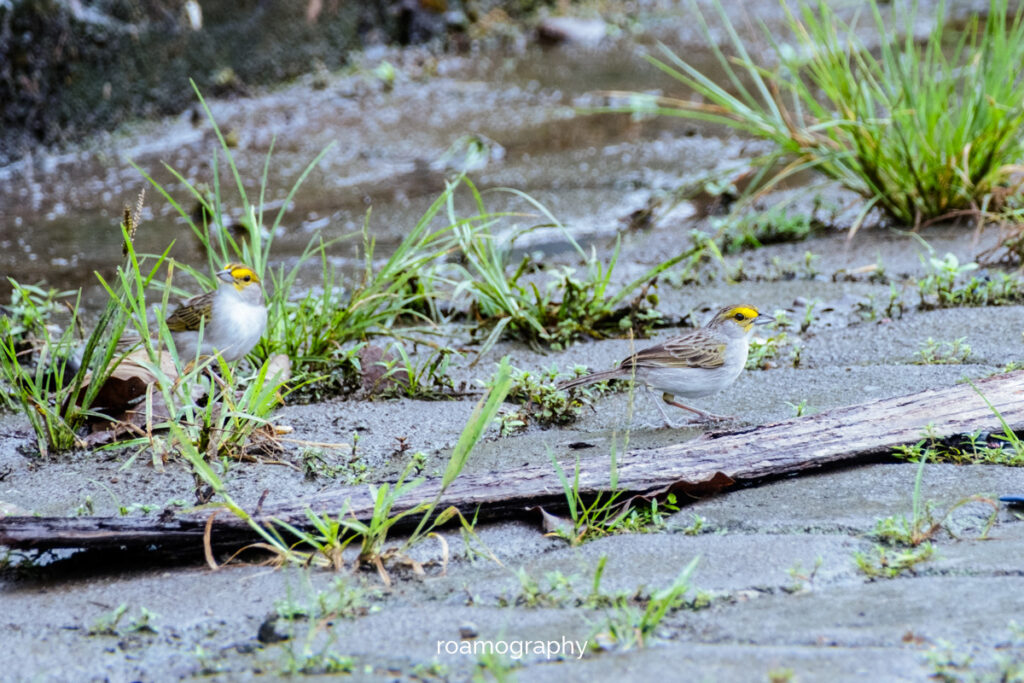
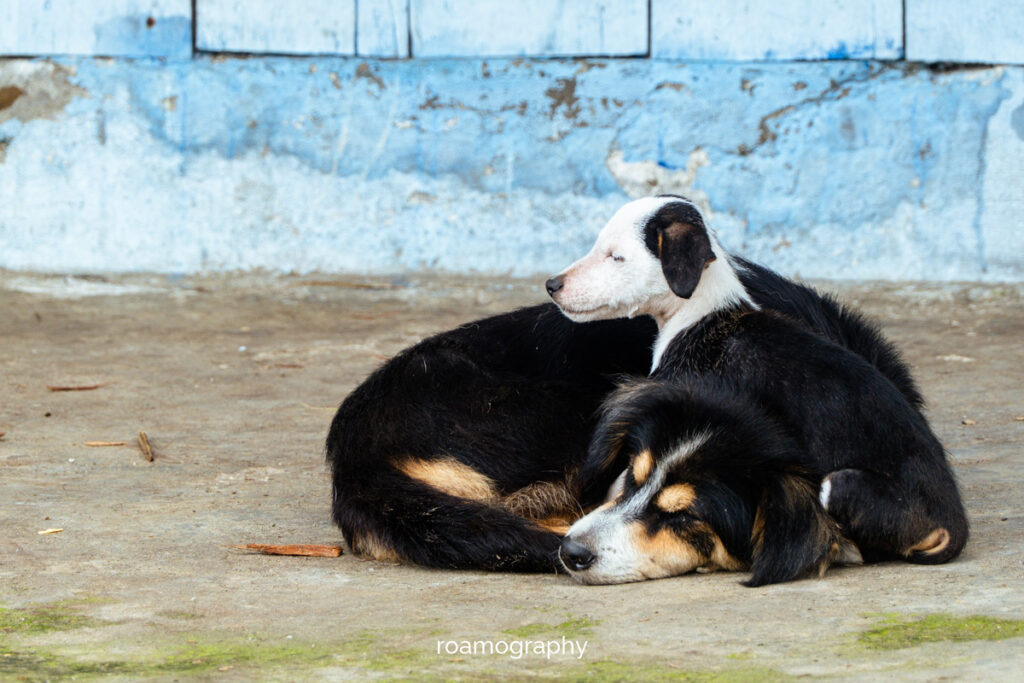
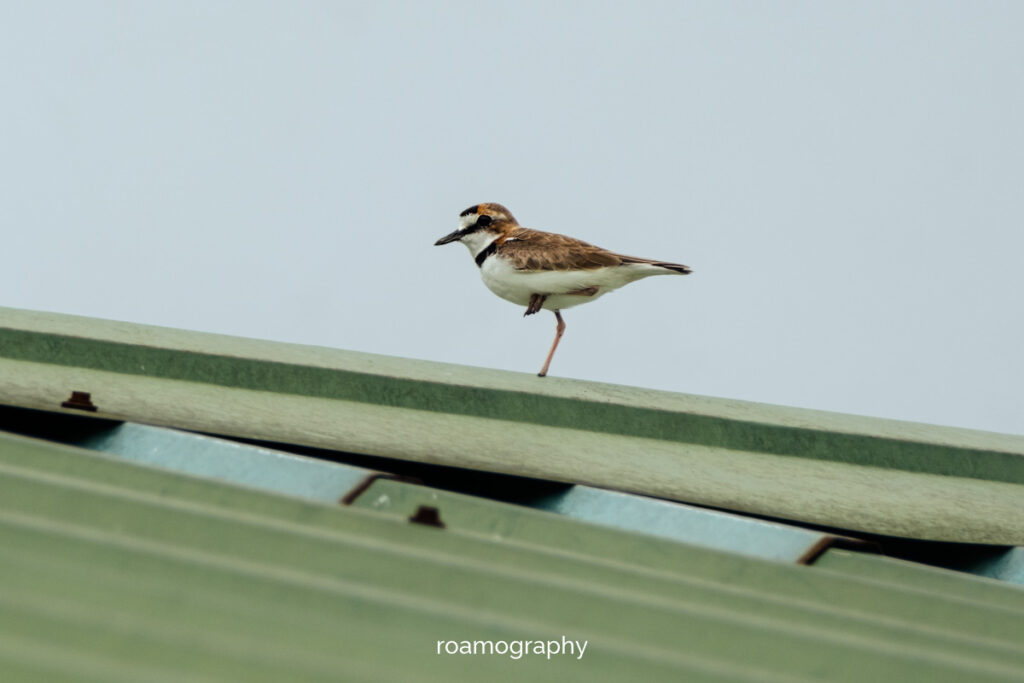

Nuevo Rocafuerte
Ładujemy się na łódź płynącą z El Coca do granicy. Po drodze mijamy parę mikrowiosek, malowniczo przyklejonych do nabrzeża. Po całodniowej podróży lądujemy w ostatniej miejscowości w Ekwadorze. Miejscówka to mała, z niewielką, acz wystarczającą bazą hostelowo-hotelową. Tutaj dokonujemy podstemplowania paszportu, oznaczającego wyjazd z Kolumbii. Co drugi rocafuertańczyk oferuje przewóz łodzią przez granicę, nam się udaje znaleźć dobrą okazję wdając się w podsklepowe rozmowy; jedna z pań planuje nazajutrz płynąć na drugą stronę i ma już opłacony transport powrotny, więc cena będzie niższa, zwłaszcza, że do naszej ekipy przyłączają się poznani na poprzedniej łodzi weseli Francuzi.
Wypływamy zatem naszą stękającą z obładowania, ledwie wystającą ponad poziom wody łódką i dostojnie zmierzamy ku Peru…

